- Destinations
- Travel Tips
- Travel With Us
- Paid Travel Internship
- TTIFridays (Community Events)
- SG Travel Insider (Telegram Grp)

- Switzerland

2-Month Budget Europe Itinerary: Backpack Around 10 Countries Under S$5K with the Eurail Pass
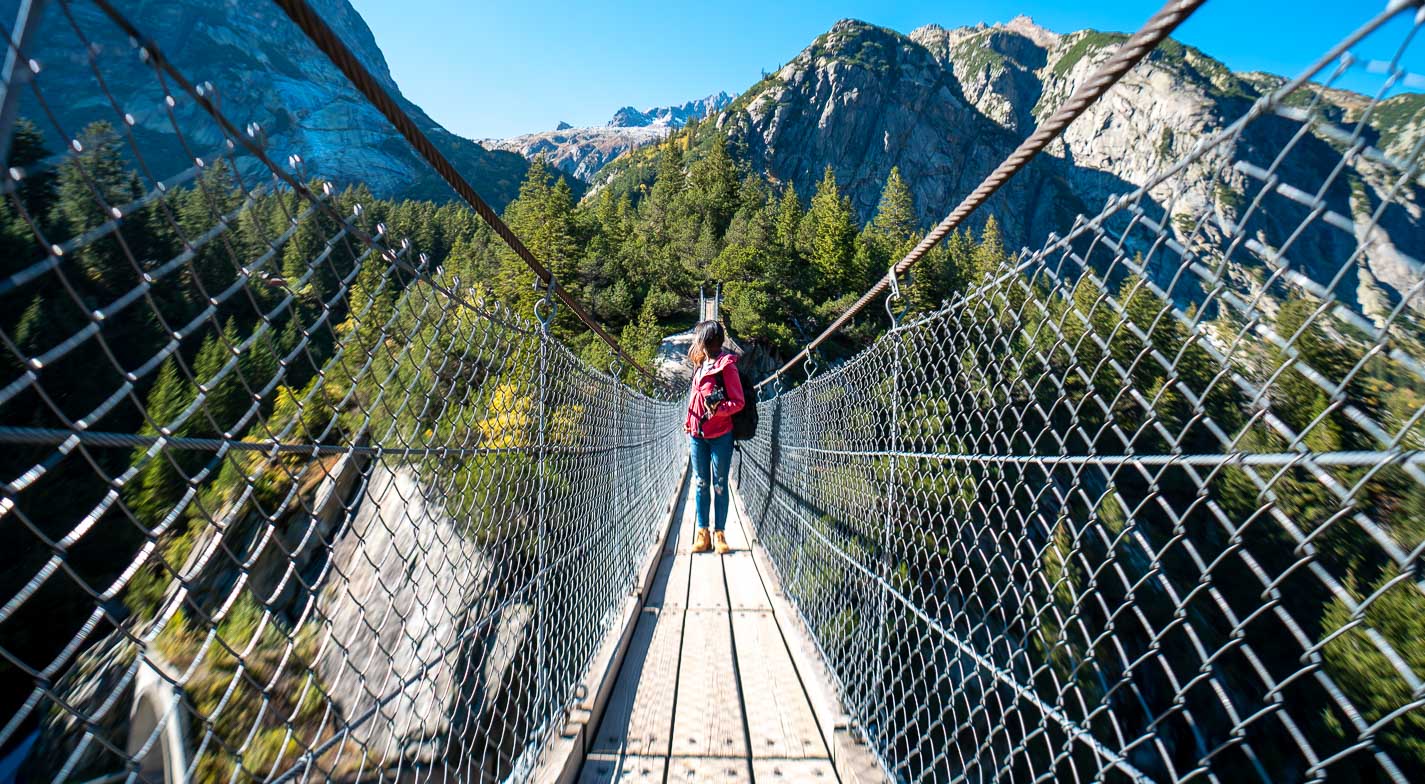
Get ready for the greatest two months of your life! From strolling through the posh streets in London and climbing the Swiss alps to gazing at the breathtaking ruins in Athens, this Europe itinerary travels to 10 countries, and all for under S$5k!
*Get 15% off your Eurail Pass when you pre-book it before 1 Aug 2022

Europe robbed my heart in ways no other place could. I was only there for a month under my 2016 university exchange programme, but I can never forget what I experienced. The smell of freshly-baked croissants in France, the breathtaking ruins in Greece, years of history in Prague’s narrow cobblestone streets — and that’s only scratching the surface.

I backpacked across 12 countries in 32 days, but I was burnt out by the end of the journey. My main regret was that I answered “where to go in Europe?” with “as many places as possible!” As a result, I didn’t get to know each country — it was just touch-and-go sightseeing for one day, then moving on to the next. Had I known better, I would have slowed down and taken my time in each place.
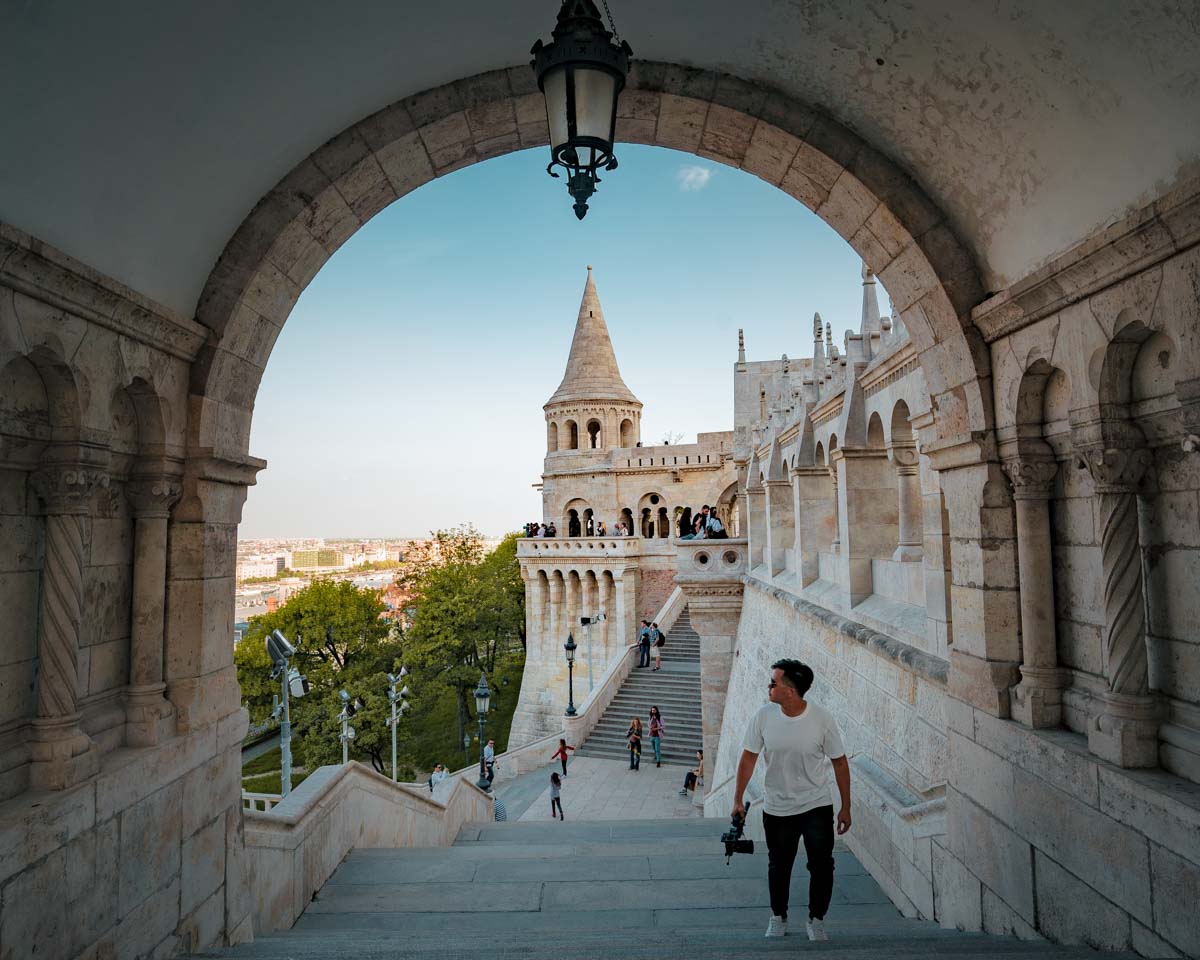
Now, it’s true that Europe is expensive. But, it’s also true that you don’t need to break the bank to travel there. After all, we’ve covered various parts of Europe on separate trips, all on a budget.
That said, we won’t deny that flights can be costly for a continent so far away. If we could, we’d make it worth our while and cover all these countries in one grand backpacking trip — like our very own “Europe graduation trip” of sorts. And if we did do the trip, our ideal Europe itinerary would explore 10 countries, and it’s possible to do so with a budget under S$5k!
Pre-trip Essentials
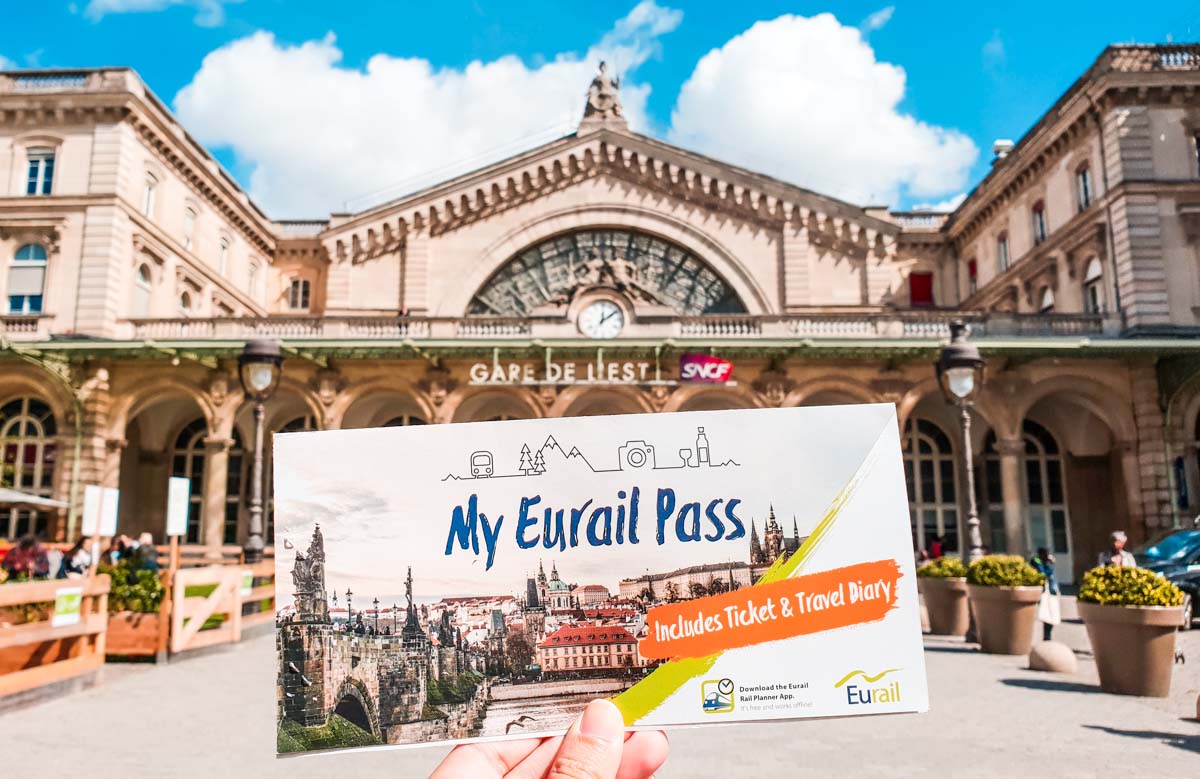
Rail Travel: For this itinerary, you’ll need the flexible 15-day Eurail Global Pass . Purchase your pass at least a week in advance, so that it’ll be delivered straight to your doorstep! If you’re unsure how to use it, check out our Eurail Pass guide for a fuss-free Europe journey.
Connectivity: Get a 60-day SIM card that can be used all over Europe. This card provides 12GB of data, and has free incoming calls too.
Flights: Start from London, and end at Athens. Flights are not included in this itinerary’s budget. However, you can always score cheap flights to Europe with Skyscanner , and by keeping a lookout for airline promotions and flash sales.
Budget Breakdown
Accommodation: S$1,477.76 Transport: S$1,541.19 (including Eurail Global Flexipass ) Food: S$1,388.83 Activities & Miscellaneous: S$507.20
Total: S$4,984.98
Read also: 18 Budget Tips to Travel Europe For a Month Under S$2,500
Check Flights to London
If you can’t see the widget above, check flights from Singapore to London here instead!
1) London, England (7 Days)
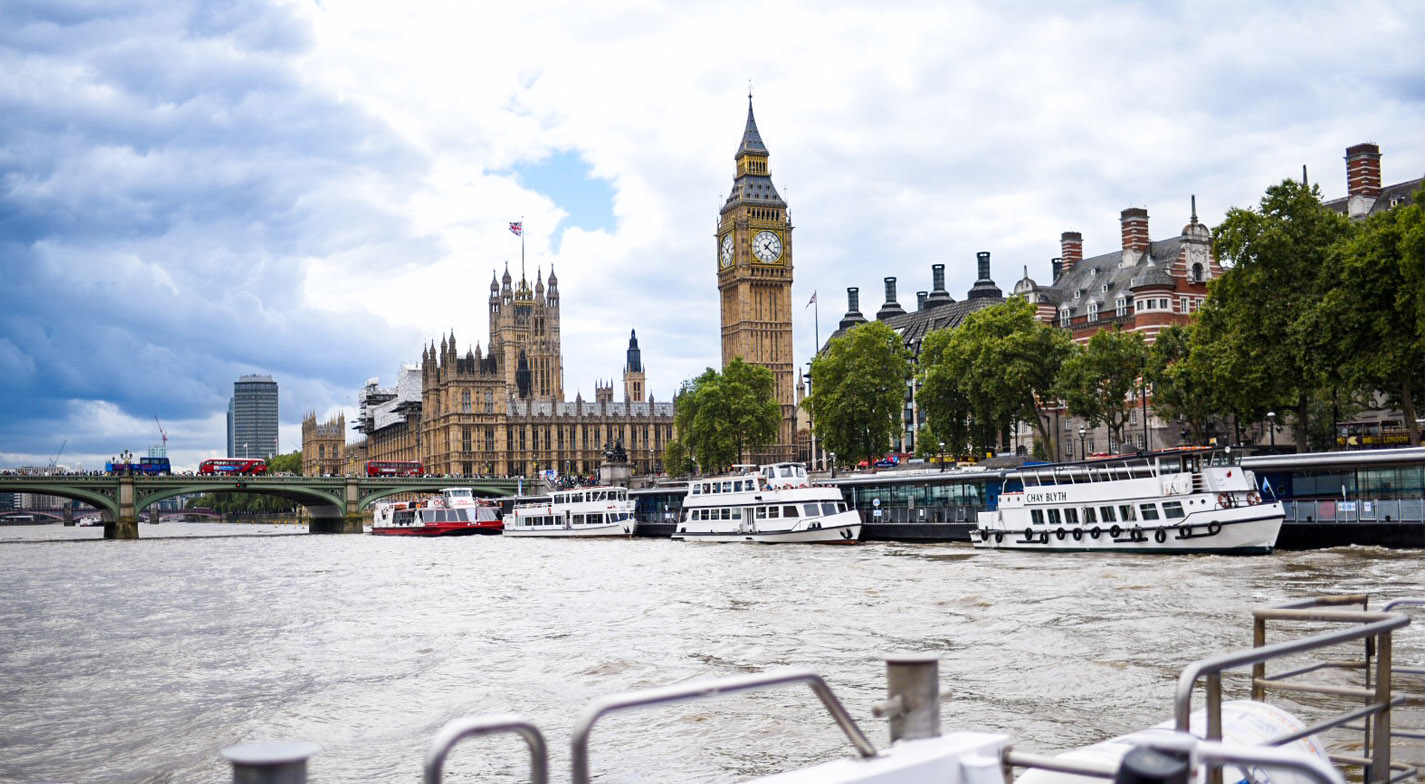
Kickstart your adventure in London! The city’s atmosphere is electrifying — you can easily spend a week exploring London’s numerous attractions. Think museums, markets, icons like the Big Ben and Buckingham Palace, and the quintessential Harry Potter Studios Tour .
Getting from London Heathrow Airport to the city: Take a coach transfer to Central London.
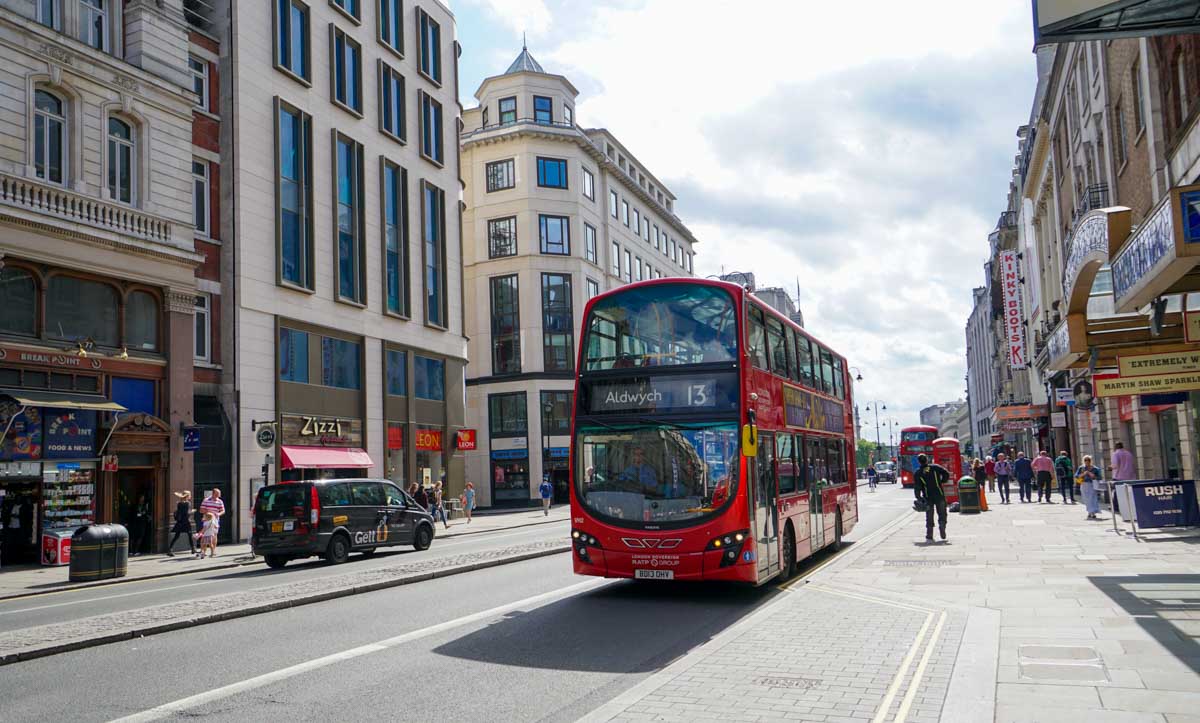
Keen to explore the rest of the UK? Check out our UK rail itinerary , which also covers Scotland and Wales.
Accommodation: SoHostel , ~S$34/bed in an 18-bed dorm room (includes free breakfast).
Getting around London: Walk, cycle , or take unlimited public transport with the London TravelCard .
Key Experiences: – Walk along River Thames and check out attractions like Big Ben, the London Eye, and the London Bridge – Go museum-hopping (some are free!) – Eat at local markets like Camden, Brick Lane and Borough Market. – Go on the Harry Potter Studios Tour (Heads-up Potterheads, check out our Harry Potter itinerary too!)
Food: ~£20/day, including cooking and eating out. Don’t miss must-eats like fish and chips, salt beef beigels, and Flat Iron ‘s famous steaks!
Read also: UK By Rail: 10D Scotland, Wales And London Itinerary Under S$1,400
Getting from London to Paris, France: Take the Eurostar from London St Pancras International Station to Paris Gare du Nord. Reservations are required.
2) Paris, France (3 Days)

Paris is the holy grail destination for anyone enthralled by French culture. It’s easy to fall in love with the beautiful architecture of the historic Notre-Dame, the modern Eiffel Tower, and the extravagant Palace of Versailles . For foodies, the palatable French cuisine will hook you right in.
Getting around Paris: Walk, or take unlimited public transport with the Paris TravelCard .

Accommodation: Le Village Montmartre , ~$49/bed in an 12-bed dorm room.
Key Experiences: – Visit French icons like the Notre-Dame Cathedral, Arc de Triomphe, and Eiffel Tower – Hunt for famous artworks like the Mona Lisa and Venus de Milo at the Louvre Museum ( free on Friday nights for anyone under 26) – Take a day trip to the Palace of Versailles (and try not to feel like a pauper there)
Food: ~€15/day, including cooking and eating out. Enjoy French classics like duck confit, freshly-baked breads and pastries, and macarons. Bon Appetit !
But France isn’t just about Paris — our France rail itinerary heads to other charming cities like Marseilles and Nice which are worth exploring too!
Getting from Paris to Interlaken, Switzerland: Take a TGV Lyria train from Paris Gare de Lyon to Basel SBB. Reservations are required for this train. Then, take a regional train from Basel SBB to Interlaken Ost.
3) Switzerland (6 Days)

In one word, we’d say Switzerland is “unreal”. The breathtaking mountainous scenery, crisp, fresh air, and mouthwatering cheese-pulls from bubbling pots of fondue — few countries come close to such perfection. This itinerary explores the natural beauties of Interlaken, Lucerne, and Zurich in six days.
Getting around Switzerland: Take public transport or walk. The scenery is wondrous wherever you go.
To see more of Switzerland’s majestic sights like the Matterhorn (a.k.a. “Toblerone chocolate” mountain), check out our Switzerland rail itinerary .

Accommodation: Hostel Interlaken , ~S$58.50/bed in a six-bed dorm room (includes free breakfast, and a free bus pass).
Key Experiences: – Ride the Gelmerbahn , Switzerland’s steepest open air Funicular. At the top, hike to the Handeck Bridge , and around Gelmer Lake – Hike up 1,322m to Interlaken’s local mountain, Harder Kulm – Trek to Iseltwald and awe at Seeburg château , a fairytale-esque castle on Lake Brienz
Food: ~CHF22/day, mostly groceries for cooking. Eating out in Switzerland is very expensive. But if you can splurge on one thing, go for a cheese fondue!
Travelling from Interlaken to Lucerne: Take a domestic train from Interlaken Ost to Bahnhof Luzern. Reservations are dependent on the train you take.

Accommodation: Bellpark Hostel , ~S$48/bed in a six-bed dorm room (includes free breakfast).
Key Experiences: – Walk around Lucerne Old Town , and visit historic attractions like the Kapellbrücke, Musegg Wall, and Löwendenkmal – Make your own Swiss Army Knife at the Victorinox Museum – Hike to the peak of Mount Pilatus , and go on a ride on the Fräkigaudi Toboggan (Switzerland’s longest Toboggan run)
Food: ~S$30/day, mostly groceries for cooking.
Travelling from Lucerne to Zurich: Take a domestic train from Bahnhof Luzern to Zürich Hauptbahnhof. Tour around the city’s sights, before continuing to Munich in Germany.

Key Experiences: – Explore Zurich Old Town and Lake Zurich – Try the famous Aelpli Milk, an alcoholic cocktail that looks deceptively like milk
Read also: 10-Day Switzerland Itinerary — 6 Cities Under S$2.3k with the Swiss Travel Pass
Travelling from Zurich to Munich, Germany: Take an Intercity train from Zürich Hauptbahnhof to München Hauptbahnhof. Reservations are required for this train.
Note: Trains from Zurich to Munich may not run every day, so check in advance whether they are available on the day you intend to travel.
4) Germany (7 Days)

Germany is home to years of important history we’ve studied in school, and a lively culture of enjoying food, drinks, and merry cheer (Oktoberfest, anyone?). That’s what makes this country so fascinating! Spending a week in Berlin and Munich, you’ll explore sombre historical sites and buildings , but also vivacious beer halls where everyone’s got a pint in hand.
Getting around Germany: Take public transport , or walk.
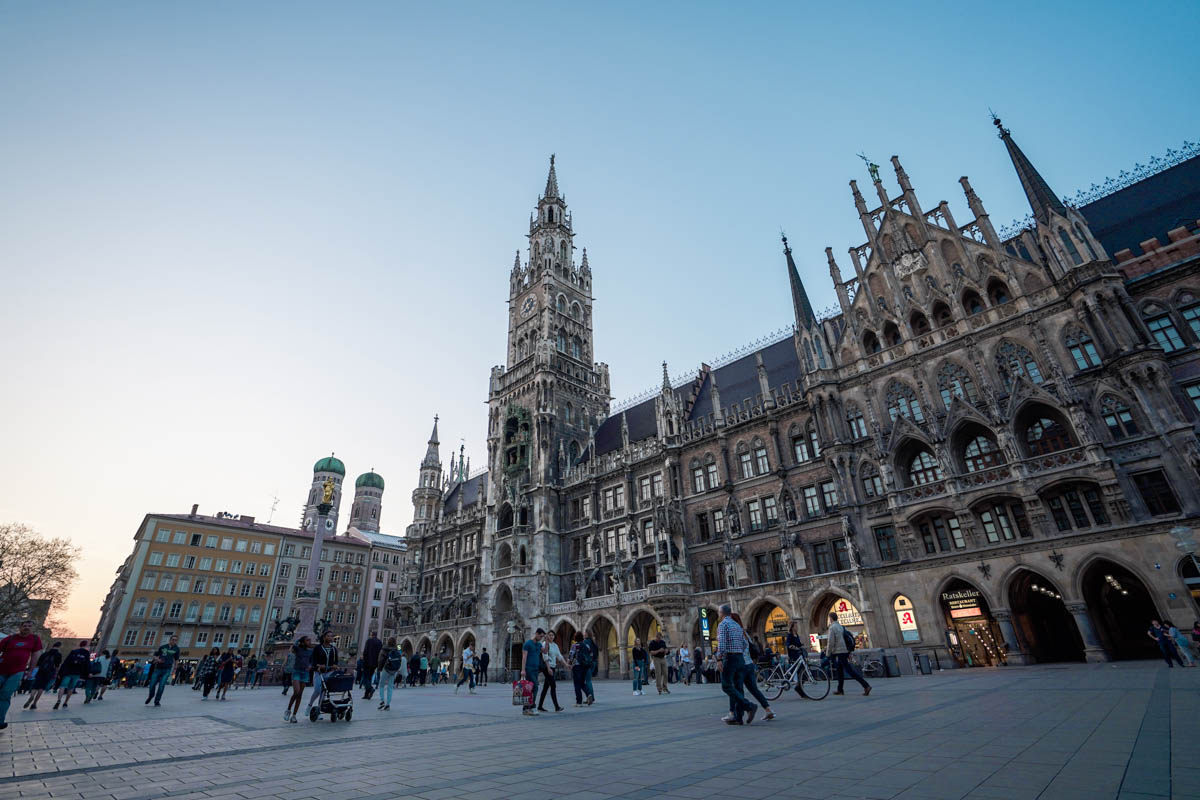
Accommodation: Jaeger’s Munich Hostel , ~S$43/bed in a 10-bed dorm room.
Key Experiences: – Catch street performers at the Marienplatz – Head to the Englischer Garten , and watch surfers in action at the Eisbach River – Kick back with drinks at Hofbräuhaus , a three-tier beer hall – Go on a day trip to Fussen, and explore Neuschwanstein Castle — the inspiration behind Disney’s Sleeping Beauty Castle
Food: ~€15/day, including cooking and eating out. Get your fill of German favourites like bratwursts and pork knuckles ( schweinshaxe ). Beer goes without saying. Cheers! 😉🍻
Travelling from Munich to Berlin: Take an ICE high-speed train from München Hauptbahnhof to Berlin Hauptbahnhof. Reservations are required for this train.

Accommodation: St Christopher’s Inn Berlin Mitte , ~S$33/bed in a 30-bed dorm room (includes free breakfast).
Key Experiences: – Take part in a walking tour around Berlin’s historical sites like the Reichstag Building, Brandenburg Gate, and Holocaust Memorial – Go on a Sachsenhausen Concentration Camp Memorial Tour – Admire the artworks at the East Side Gallery along the Berlin Wall – Shop at Mauerpark’s flea markets on Sundays
Food: ~€15/day, including cooking and eating out. Look out for cheap eats like döner kebabs, burgers, and other affordable munchies at market halls .
Read also: 5-Day Berlin Budget Guide under S$1.5k incl accommodation and flight from Singapore
Travelling from Berlin to Prague, Czech Republic: Take the EuroCity train from Berlin Hauptbahnhof to Praha Hlavní Nádraží Station. Reservations are optional.
5) Prague, Czech Republic (3 Days)
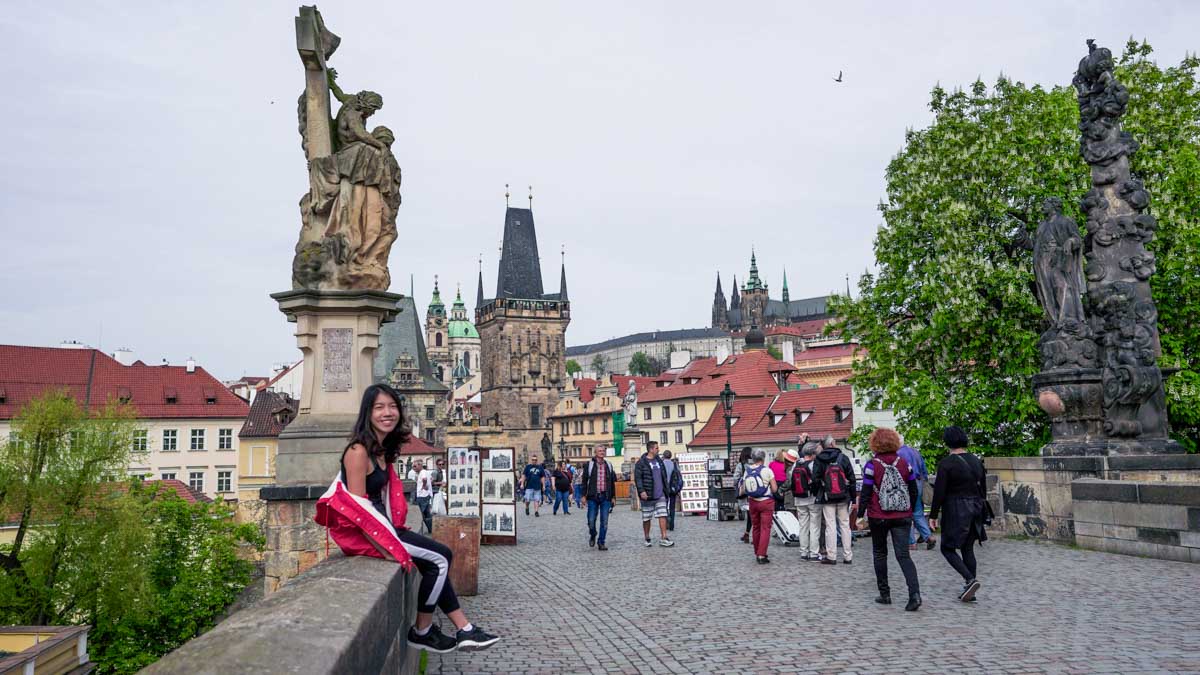
The capital city of the Czech Republic is just beautiful. Renaissance buildings and Gothic churches tower above as you wander through the maze-like, cobblestone streets of Prague Old Town . It’s a UNESCO World Heritage Site that gives off whimsical fairytale-vibe, but the best part is that the city is super wallet-friendly!
Getting around Prague: By walking, as all the attractions are near each other.
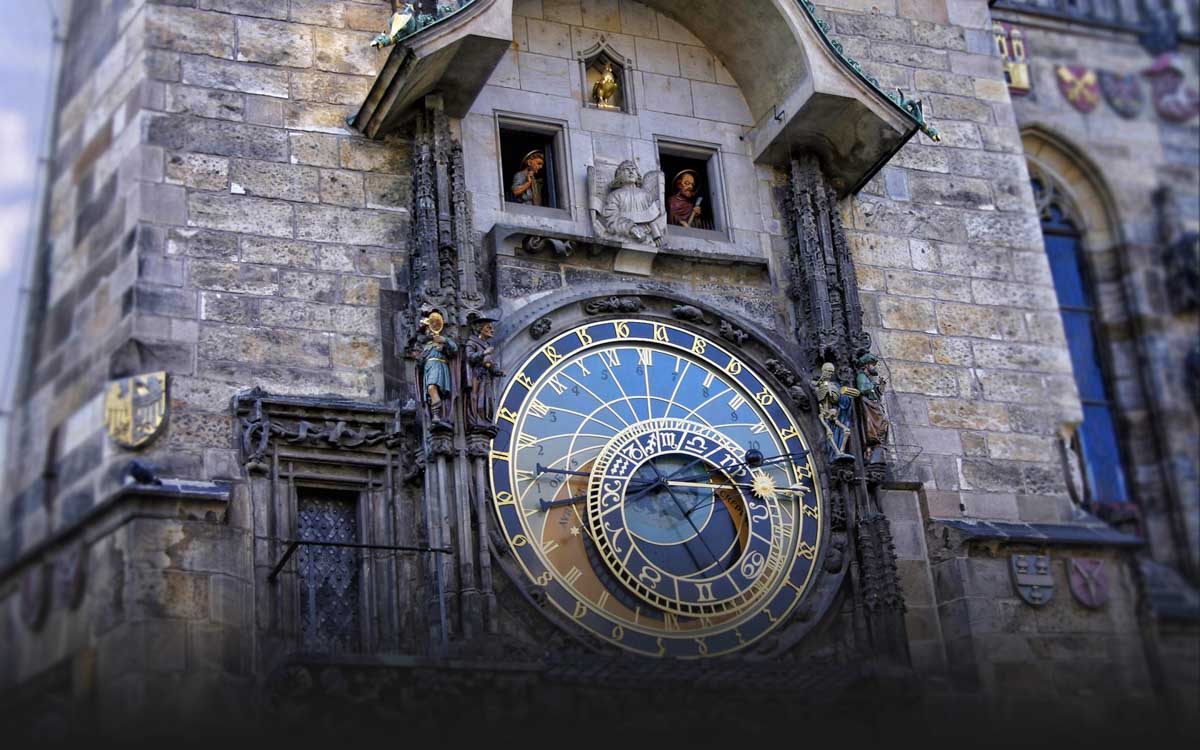
Accommodation: Hostel Rosemary , ~S$19/bed in a 12-bed dorm room.
Key Experiences: – Catch the hourly “puppet” show, performed by the Astronomical Clock at the Old Town Hall – Stroll down the Charles Bridge, and go people-watching – Visit the Prague Castle, the world’s largest castle complex – Have a beer at the Strahov Monastery Brewery
Food: ~€15/day, including cooking and eating out. Don’t miss Czech specialties like roasted duck, fried cheese ( smazeny syr ), and chimney cakes ( trdelnik ).
Travelling from Prague to Vienna, Austria: Take a regional train from Praha Hlavní Nádraží Station to Wien Hauptbahnhof.
Read also: 14-Day Europe Itinerary: 6 Countries under S$1.8k with the Eurail Pass
6) Vienna, Austria (3 Days)
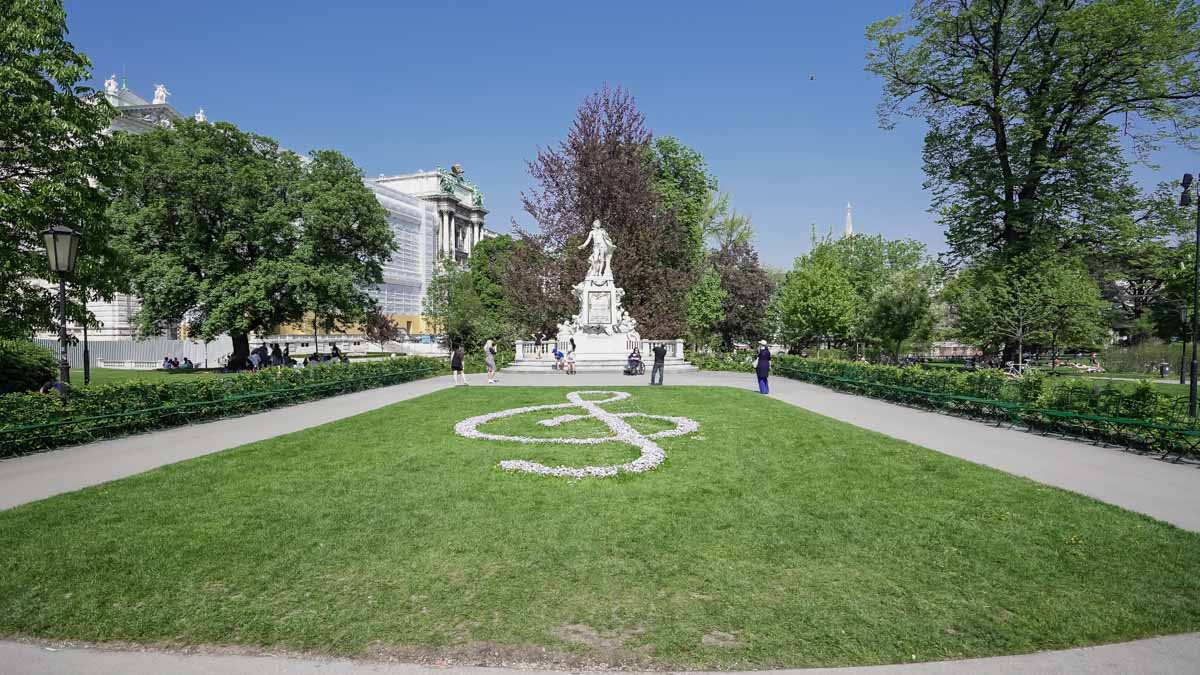
Vienna is hailed as the “City of Music” for good reason. It was the home of the legendary Beethoven and Mozart, but you don’t have to be a virtuoso yourself to enjoy Austria’s capital. The young-at-heart will also be thrilled by the much-raved-about Wurstelprater amusement park !
Getting around Vienna: Walk, or take public transport .

Accommodation: Best Location Hostel , ~$26/bed in a four-bed dorm room.
Key Experiences: – Grab brunch and groceries at the Karmelitermarkt – Visit Mozart’s statue in the Burggarten – See how Austrian royalty used to live like at the Schönbrunn Palace – Scream your lungs out at the Wurstelpratel Amusement
Food: ~€15/day, including cooking and eating out. Must-try eats include schnitzel and apple strudel, both Austrian originals.
Travelling from Vienna to Budapest, Hungary: Take a regional train from Wien Hauptbahnhof to Budapest Keleti Station.
7) Hungary (4 Days)
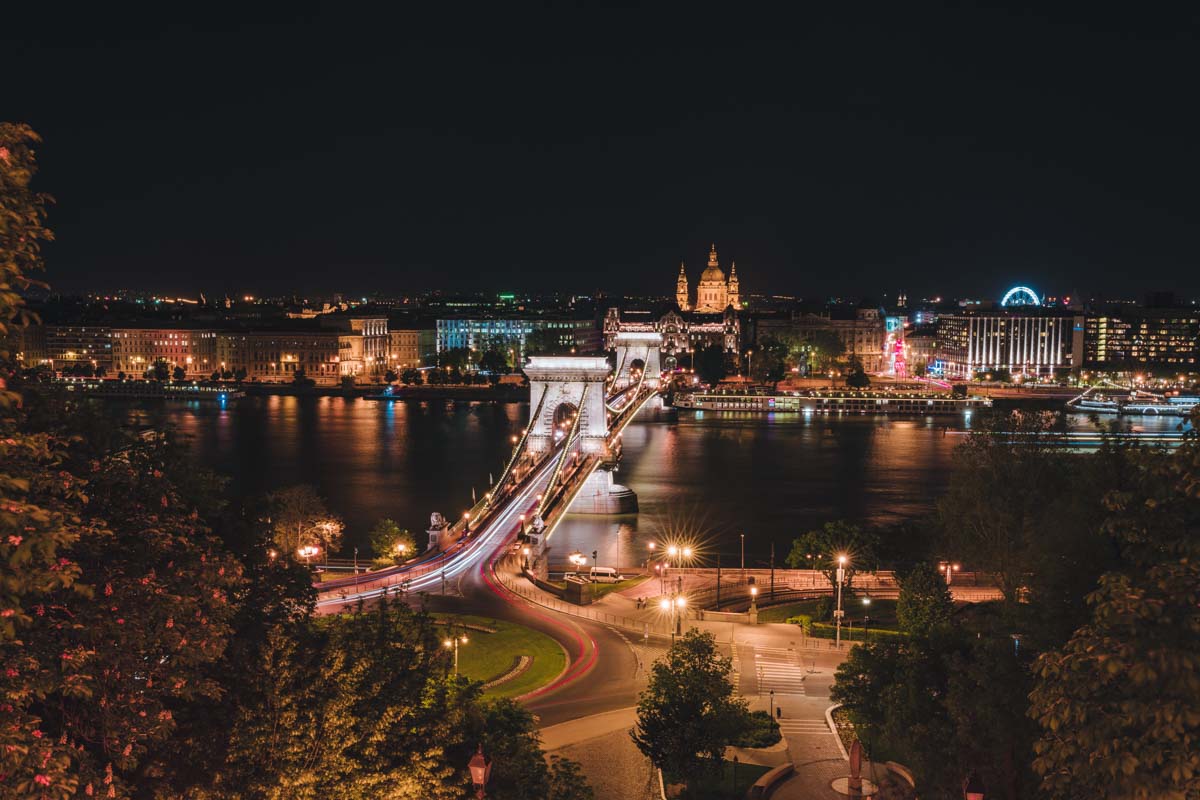
Budapest was my personal favourite. The Hungarian language is unique and mysterious, much like Budapest! Buda and Pest are polar opposites — Buda is where calmer daytime activities take place, while the nightlife rules in Pest. Either way, there are plenty of things to do to keep you entertained, like dipping in the Szechenyi thermal baths and enjoying live music events at Szimpla Kert , a famous ruin bar.
Getting around Hungary: Take public transport , or walk.
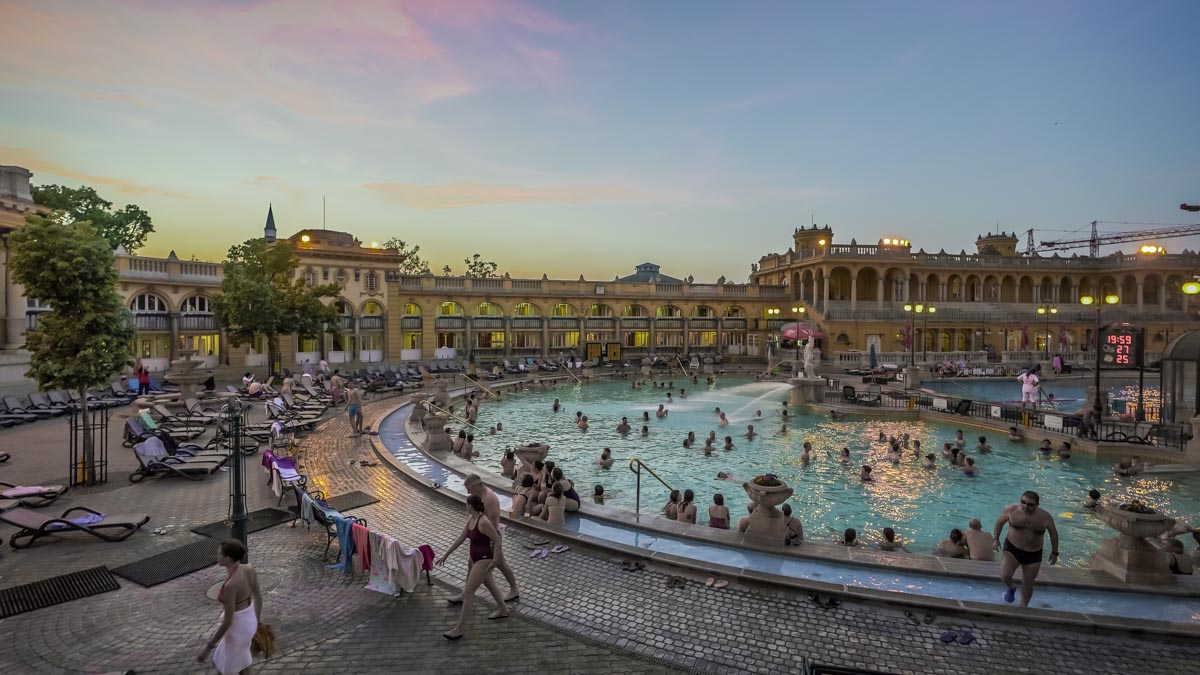
Accommodation: Airbnb , ~S$10/night for a private apartment with a kitchen and laundry facilities.
Key Experiences: – Stroll along the Danube Bank and see famous landmarks like the Shoes on the Danube Bank , the Hungarian Parliament, and the Buda Castle – Head up to Fisherman’s Bastion, an incredibly Insta-worthy photo spot – Soak in the Szechenyi thermal baths – Relax at Margitsziget (Margaret Island), a park in between Buda and Pest – Unwind with drinks at Szimpla Kert , and catch live music events
Food: ~€15/day, including cooking and eating out. Must-try Hungarian dishes include langos and goulash.
Travelling from Budapest to Ljubljana, Slovenia: Take a high-speed train from Budapest Deli Station to Ljubljana Station. Reservations are required.
Note: Trains from Budapest to Ljubljana may not run every day, so check in advance whether these trains are available on the day you intend to travel.
8) Slovenia (4 Days)
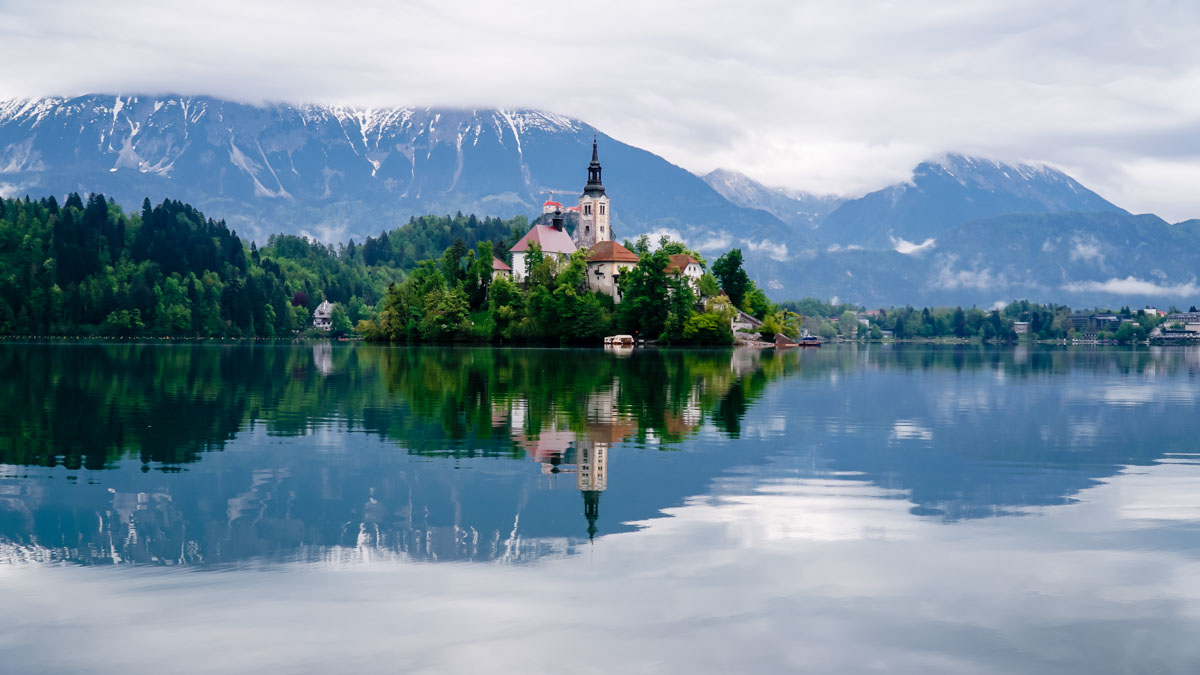
A hidden gem in Europe, Slovenia is a truly charming country. Ljubljana is packed with many bridges that line the river, as well as impressive greenery. The resort town of Bled is also a must-visit. Many travellers enjoy hiking up to Ojstrica Lookout Point to get a perfect shot of the picturesque Lake Bled below.
Getting around Slovenia: Walk, or cycle .
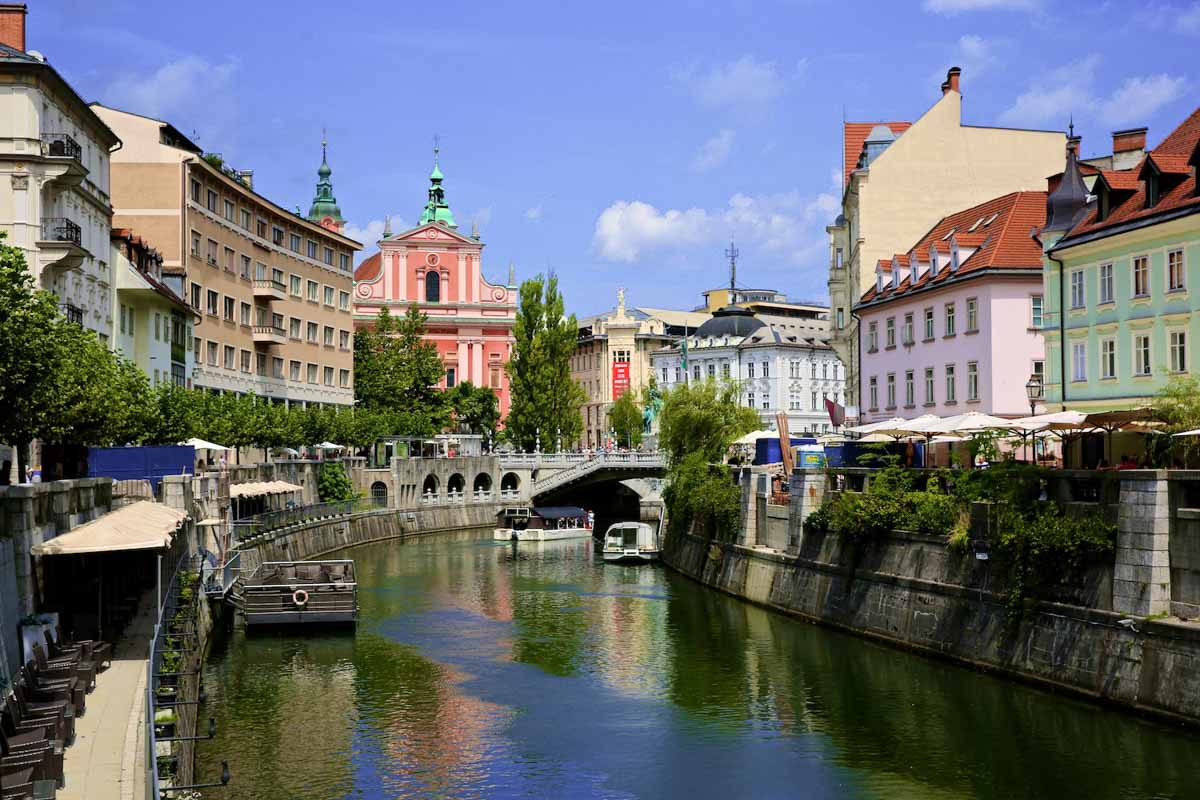
Accommodation: Hostel Most , ~S$26/bed in a mixed dorm room.
Key Experiences: – Cycle around the town, and check out the quirky Dragon Bridge – Chill out at Tivoli Park – Immerse yourself in the alternative culture at the Metelkova Art Centre , and catch live music performances at night – Shop for fresh produce and cheap eats at the Central Market – Go on a day trip to Bled
Food: ~€15/day, including cooking and eating out. For authentic Slovenian cuisine, have a meal at Druga Violina , an inexpensive gostilna -style restaurant.
Travelling from Ljubljana to Bled: Take a regional train from Ljubljana Station to Lesce Bled.
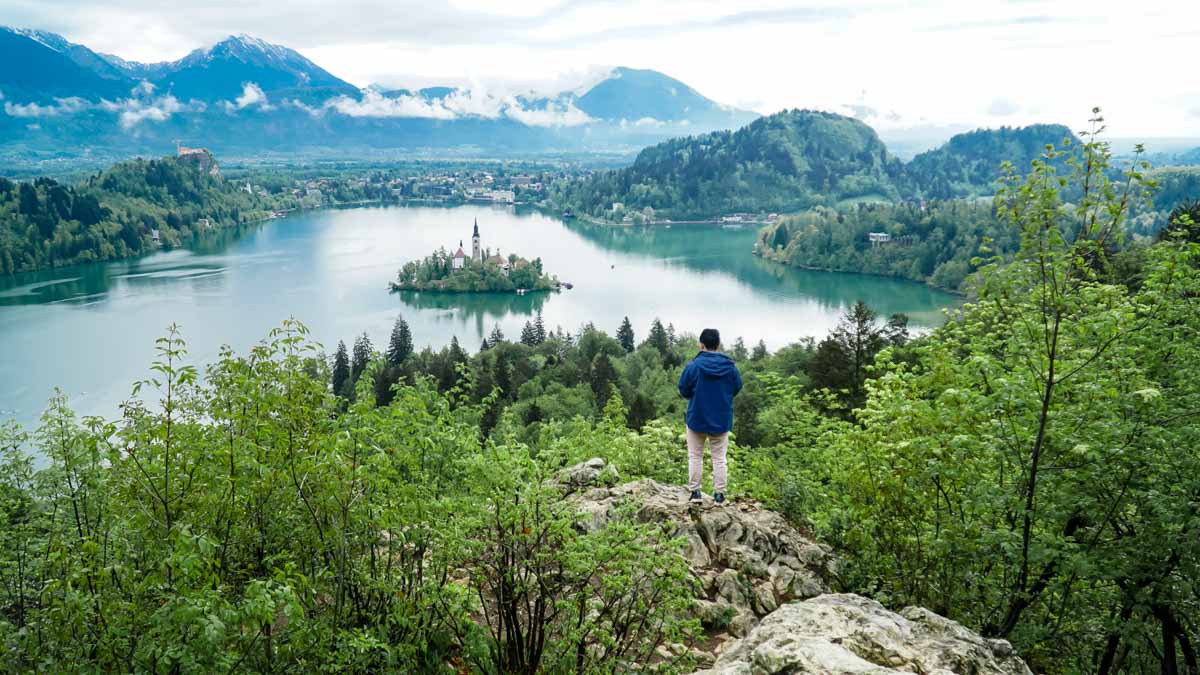
Key Experiences: – Hike up Ojstrica Lookout Point to get the best views of Lake Bled – Ride a Toboggan sled at Straža Bled (starts in April 2019)
Food: Don’t leave without trying the original Bled Cream Cake at Sava Hotel Bled !
Getting from Ljubljana to Venice, Italy: Take a bus from Ljubljana to Trieste Centrale Station in Italy. Afterwards, take a high-speed train to Venezia Mestre Station.
9) Italy (7 Days)
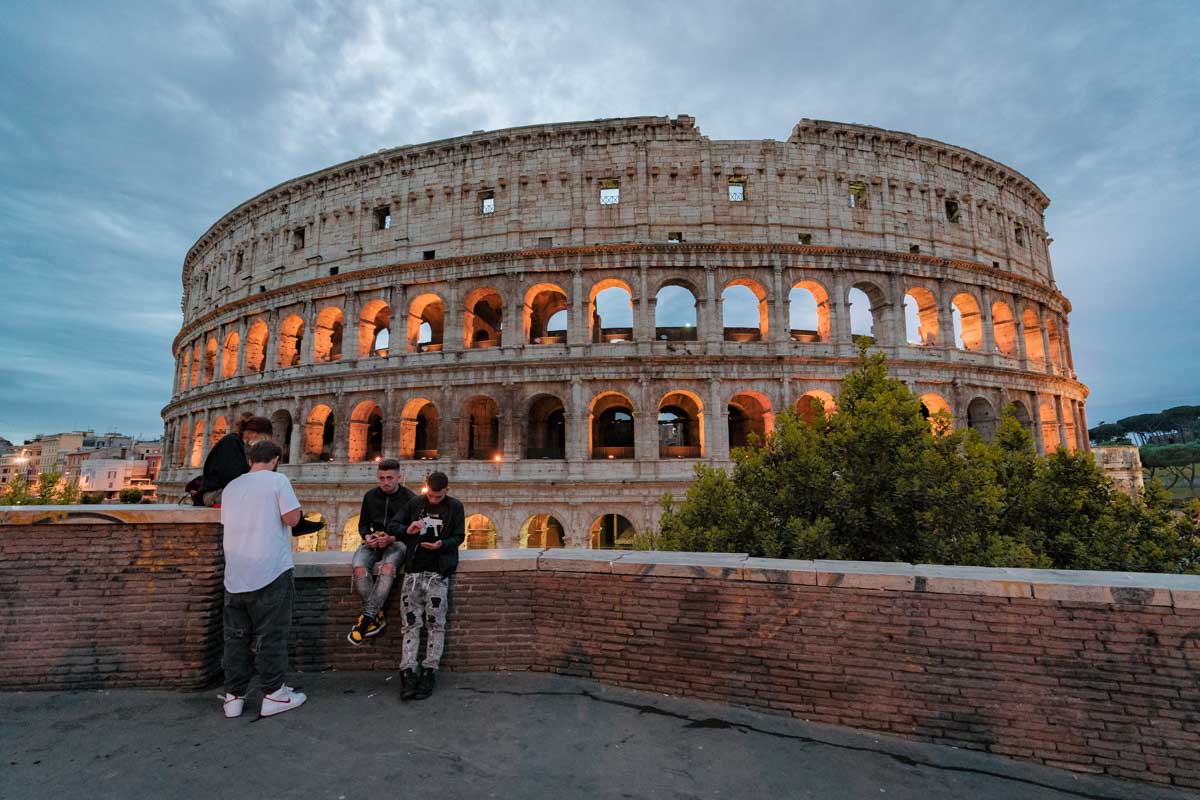
Mamma Mia! With iconic foods like pizza and pasta, jaw-dropping architecture like the Colosseum, and layers of interesting history, how can you skip Italy? This itinerary spends a week in Venice and Rome, exploring the maze of bridges and famous attractions like the Vatican City .
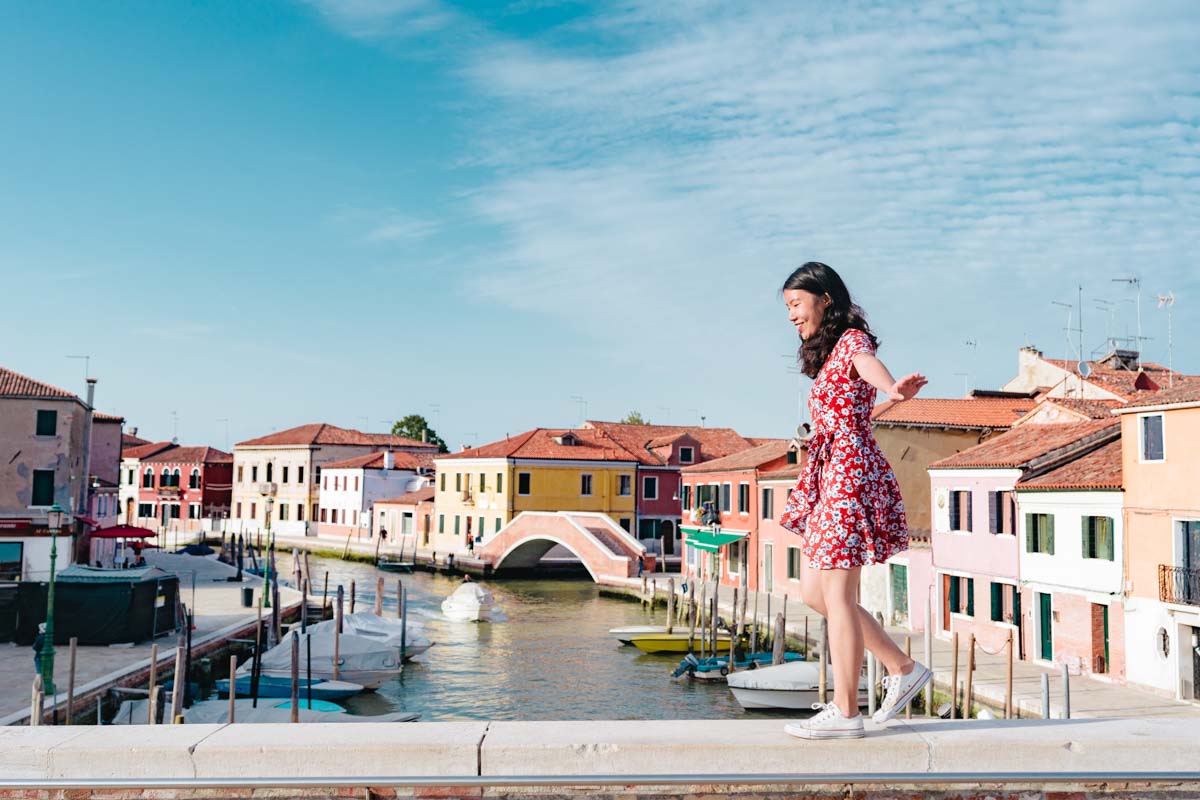
Accommodation: Camping Rialto Venezia , ~S$30/bed in a mini-chalet.
Getting around Venice: Purchase a travel card for unlimited water bus rides.
Key Experiences: – Get lost in Venice, cross its many bridges , and visit famous sites like St. Mark’s Square – Take a ferry to Murano (the glass islands) to see how glass is made – Stroll around the colourful island of Burano , and learn about lace-making
Food: ~€15/day, including cooking and eating out. Have your meals outside of Venice, as you can get higher quality dishes for cheaper.
Travelling from Venice to Rome: Take a high-speed train from Venezia Mestre Station to Roma Termini.
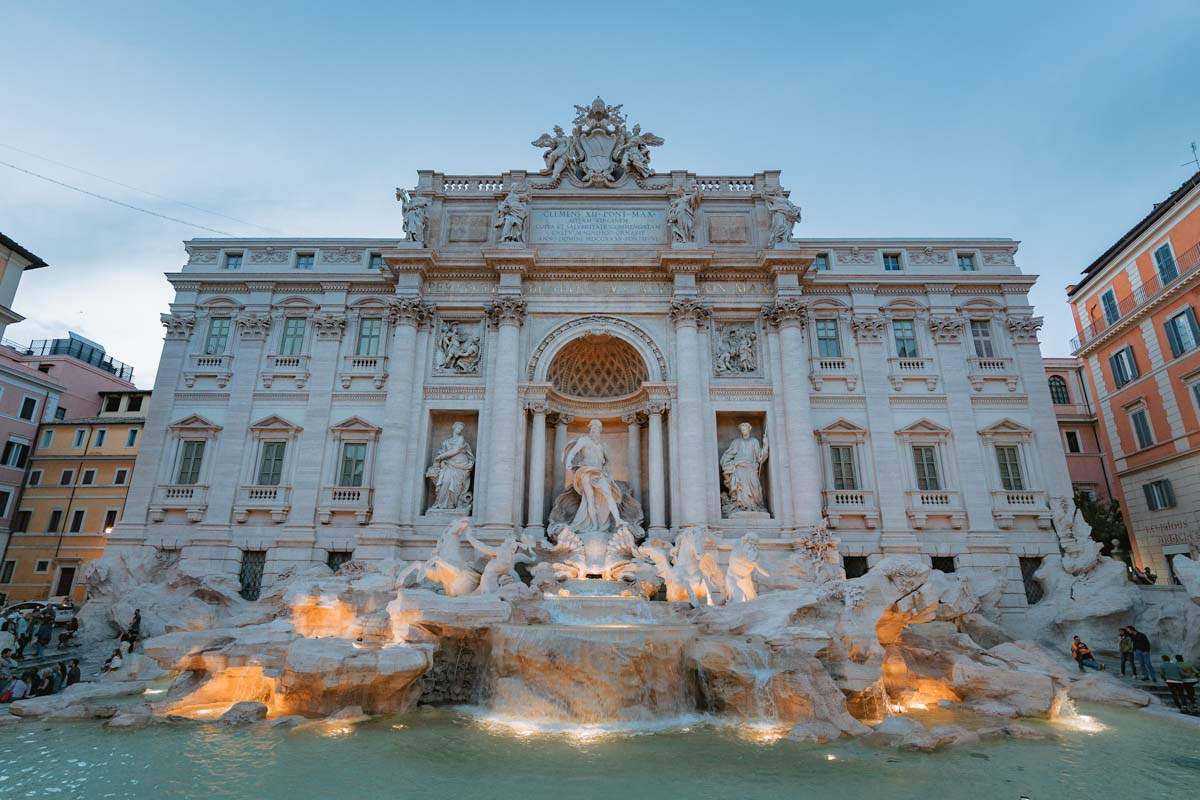
Accommodation: Funny Palace Hostel , ~S$31/bed in a 5-bed dorm room (includes free breakfast).
Getting around Rome: Walk, or take public transport .
Key Experiences: – Make a wish at the Trevi Fountain (like Lizzie McGuire!) – Roam around Rome, and check out attractions like the Spanish Steps and Altare della Patria – Learn more about the Roman gladiators at the Colosseum – Enter the Vatican City , where the Pope lives, and explore St. Peter’s Basilica
Food: ~€15/day, including cooking and eating out. Don’t forget to enjoy authentic Italian cuisine like pasta, pizzas and gelato!
Travelling from Rome to Athens, Greece: The fastest way to get from Italy to Greece is to take a direct flight from ~€40 . To get to Fiumincino Airport, take a one-way bus transfer from Rome Termini Station.
Alternatively, your Eurail pass allows you to take a ferry ride from Italy to Greece. The journey takes about 16.5 hours.
10) Greece (11 Days)

End your adventure in Greece, a curious country full of wonderment and intrigue. In this itinerary, you can explore Athens, Meteora and Santorini in 11 days. But believe us, with stunning scenery like ancient ruins , mountain monasteries , and turquoise waters, you’ll feel like you never want to leave.
To find out more about what each city offers, check out our Greece itinerary !

Accommodation: Pella Inn , ~S$25/bed in a 8-bed dorm room.
Getting around Athens: Walk, or take public transport .
Key Experiences: – Go on a free local tour with This is My Athens to discover more about the city – Satisfy your inner history buff and wander around Athens’ ancient ruins like the Acropolis , Ancient Agora , and Temple of Zeus – Hike up Lykavittos Hill to get panoramic views of Athens
Food: ~€15/day, including cooking and eating out. Don’t miss must-eats like Greek salad ( Horiatiki Salata ), moussaka, gyros, and Greek yogurt with honey and nuts.
Travelling from Athens to Meteora: Take a train from Athens Larissa Station to Kalambaka Station.
Note: Double check that there are no transport strikes during the time you plan to travel. Strikes happen frequently, but they are announced one to three days in advance. Check this site for updates.

Accommodation: Meteora Central Hostel , ~S$27/bed in a six-bed dorm room.
Getting around Meteora: The best way to explore the city is by renting your own scooter . E-bikes are available for those without licenses.
Key Experiences: – Go on a rock scrambling tour to the Great Saint, the tallest rock in Meteora – Go on a sunset tour (both organised by Visit Meteora )
Food: ~€15/day. You can get cheap eats in the city like gyros.
Travelling from Meteora to Santorini: Take a train from Kalambaka Station back to Athens Larissa Station. From there, take the Metro to Piraeus port. Afterwards, take an overnight ferry to Santorini.
Alternatively, you can stay one more night in Athens. Then, take an afternoon ferry to Santorini the next day.
*Note: Overnight ferries from Piraeus to Santorini only operates on Tuesdays and Fridays. Do double check beforehand on the days you’re sailing to Santorini.

Accommodation: Youth Hostel Anna , ~S$28/bed in a 10-bed dorm room.
Getting around Santorini: The best way to explore the island is by renting a car, ATV or scooter .
Key Experiences: – Hike from Fira to Oia – Propose Have a mini-photoshoot at the Three Bells of Fira , a popular spot for wedding shoots 💍 – Get your tan on at Akrotiri Red Beach , and the Perissa Black Sand Beach – Cliff jump at Ammoudi bay – Catch the legendary Santorini sunset at the Byzantine Castle ruins , or at Skaros Rock
Food: ~€15/day.
Travelling from Santorini to Athens: You can take an daytime ferry or overnight ferry back to Athens. Overnight ferries operate on Thursdays and Mondays.
Read also: Greece Budget Itinerary — S$1.5k incl. flights & accom — Athens, Santorini, Meteora
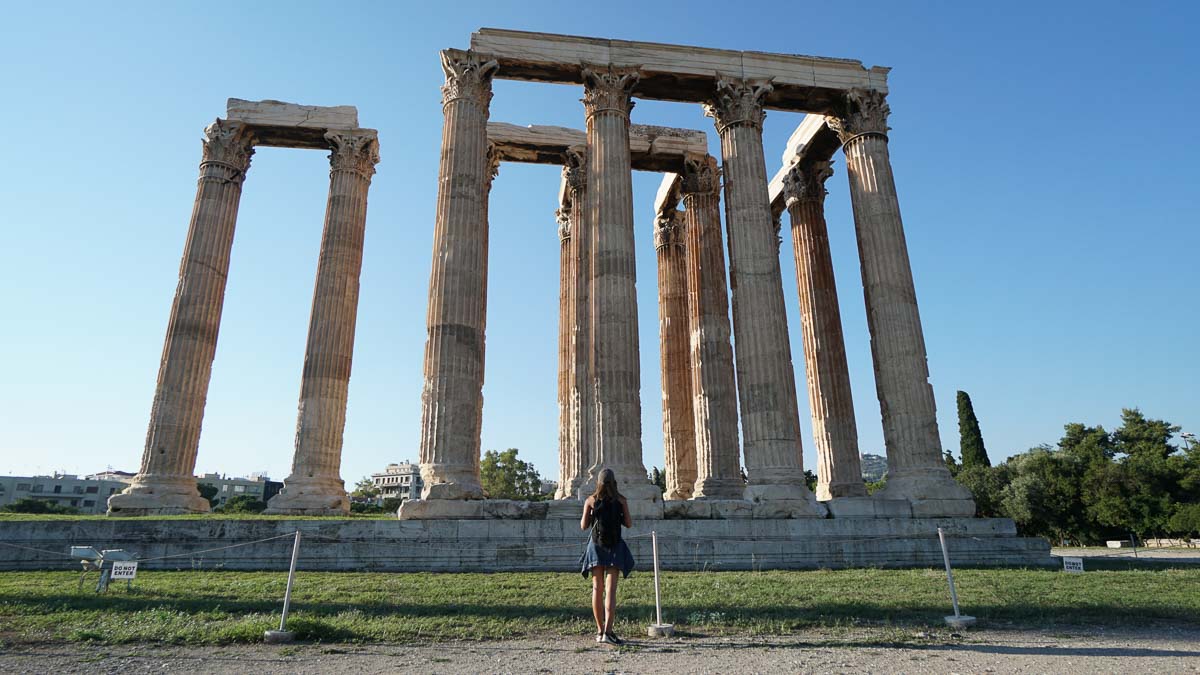
Getting from Athens to the International Airport: Take a bus from the city centre for your flight back home.
Getting Around Europe by Train
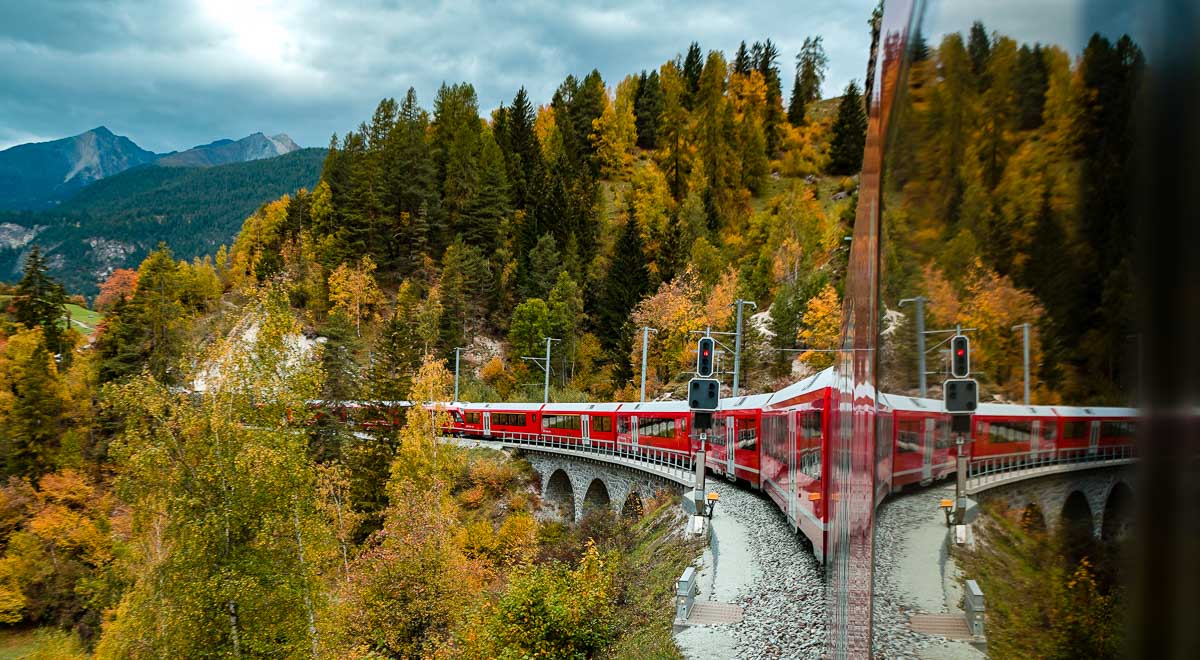
With an extensive railway network that connects all countries, taking the train is the best way to travel around Europe for budget backpackers. Compared to an MRT ride in Singapore, going across Europe by train is a far more scenic affair. You’ll find yourself passing by vastly different landscapes, like rolling hills and small towns.

What we love about the Eurail Global Pass is that it adds flexibility to all travel plans. Rather than purchase tickets for a set day and time, this pass gives users the convenience of choosing where and when to travel. It’s especially useful if you don’t have a confirmed itinerary, or when unexpected mishaps crop up!
With the 15 Days in 2 Months Eurail Global Pass , you only need to pay for reservation fees for trains that require it. Compared to buying non-flexible tickets months in advance, you’d also be saving about ~S$278 in this itinerary. This amount can easily score you a few more days in your favourite country. The only thing you need to do is make your reservations two weeks in advance, or once you arrive in Europe.

To save even more, you can take regional trains that don’t require reservations. Although the journey may be longer, take it as a time for you to catch up on some “me-time”. Otherwise, when else are you going to touch those books/Netflix shows you’ve been wanting to finish?
Your Eurail Pass will also be delivered straight to your doorstep when you book from Klook , provided you book at least one week before. The entire booking process is quick and hassle-free, and you can embark on your grand backpacking trip with a peace of mind.

Klook also offers a slew of products that will make your trip even more worthwhile, from interesting experiences like the Making of Harry Potter in London, to a tour to Sachsenhausen Concentration Camp in Berlin.
Like the Eurail Pass, getting around each city is also made easy with Klook. You can plan all your coach transfers in countries like Rome , and secure your travel cards in London and Paris that offer unlimited public transport before you hop on your flight.

In all, travelling in Europe on a budget doesn’t have to be a bank-breaking adventure. With enough planning, backpacking Europe under S$5k can become a reality. While you may need to rough it out a bit, the entire experience will be one that’ll last. You can also proudly say you’ve seen and experienced some of the best places in Europe — now it’s just time to earn the money back. 😜
Check Flights to Europe
If you can’t see the widget above, click here to check flights from Singapore to London !
Have you backpacked around Europe? Which is your favourite country? Tell us in the comments below!
This post was brought to you by Klook .
For more travel inspiration, follow us on Facebook , Instagram , and YouTube .
A post shared by The Travel Intern (@thetravelintern) on Aug 14, 2018 at 3:08am PDT
RELATED ARTICLES MORE FROM AUTHOR

5D Singapore Itinerary Under ~S$150 — Things to Eat, See, & Do in Singapore on a Budget

7D6N Winter Norway Itinerary — All-in Under S$1.6k Incl. Internal Flights

Madeira Travel Guide — What to Eat, See, Do in The Most Beautiful Place on Earth

5 Europe Itineraries to Check Off While You’re Young — Perfect for First-Time Solo Travellers

Nørrebro: Denmark’s Coolest District with an Unfortunate Bad Rep — Cultures Explained

7D Japan Itinerary For S$1.3k — A Tokyo and Mount Fuji Adventure
I have been using your website as a constant point of reference since the past two years and you guys give the best budget breakdown. Great job and thank you! I have stopped by to ask for an advise: I’m planning to travel to Greek-Spain-Germany during august. Any thoughts or would you guys suggest the best way around? I’m based in Singapore and will be flying out and in from here. Greece and Spain are my mandate.
Thanks in advance:)
Hi Pris, glad to be of help! 🙂
All 3 countries are pretty far apart! I would probably base them around flights costs. There are budget flights in and out of Berlin/Athens and budget flights between Germany and Spain.
You can consider flying in to Athens, explore Greece… take a ferry to Italy… explore Italy northwards till Germany… Do what ever you need there then take the train or fly to Spain depending on whether you want to check out France. Whether you fly back from Spain or Germany I would probably base it around the price of the tickets since time doesn’t seem to be too big a concern for you!
– Hendric
Hello, this is really an amazing two months people can enjoy and venture in Europe. Europe was always my dream to travel, still not fulfill that dream yet but I am sure it will be fulfilled soon. Thanks very much for all the information you provide and all the best with your next adventures.
What currency did you budget in? CAD, USD, Euros??? I am Canadian and trying to budget. should I budget in US dollars or Euros?
Hi Kayla, the currency reflected in our articles is Singapore dollars.
This budget-friendly Europe itinerary proves that exploring 10 countries in just two months is not only possible but also an incredible adventure that will leave you with unforgettable memories and the satisfaction of having accomplished an epic backpacking trip.
LEAVE A REPLY Cancel reply
Save my name, email, and website in this browser for the next time I comment.

Top 11 Hotels Near Tokyo Disney Resort — Quirky Themes, Dino...

32 New Deals and Attractions in Singapore this May 2024

Tulipmania is Back at Gardens by the Bay from 29 April...

11 Unique Things to Do in South Australia — Quirky Wineries,...

7 Boutique Hotels in Singapore For an “Out of the Country”...

- Terms Of Use
- Privacy Policy
- Skip to primary navigation
- Skip to main content
- Skip to primary sidebar

Destinations
Experiences.
- Photography
Plan Your Trip
Europe starts here.
It isn’t easy to put a 2 month Europe itinerary together—I say this as someone with almost 20 years of experience traveling on the continent!
The main reason? When you consider how massive Europe is—it’s as big as the continental US, but much denser and more culturally diverse—two months just isn’t very long. Certainly, it’s not enough to see “everywhere” in Europe, or even get close to doing so.
Over the next several paragraphs, I’ll inform and inspire your travels, whether you use your two months in Europe to get a high-level overview of European cities and countries, or dig deep into one or two regions. We’ve got a lot of ground to cover, however, so let’s get started.
Practical Matters
When to visit europe.
While I love visiting Europe during the hottest part of the summer, the reality is that this is also the most crowded and expensive time to explore the continent. Likewise, although there’s no denying the charm of the Alps during the winter, things get busier and costlier the closer you get to the ski slopes. For a European vacation with great weather and relatively few fellow tourists, visit during the “shoulder” months of April, May, September and/or October.
Where to stay in Europe
You should plan on staying in a variety of accommodations during your Europe 2 month itinerary. While certain miles-and-points travelers may decide to sleep entirely at big-name hotels and resorts, the preferable strategy is to tailor your stay to your destination. Boutique city hotels (Seville’s H10 Corregidor Hotel is a great example of this) make sense in cities like Lisbon, Berlin and Stockholm, while resorts and villas with terraces and pools are more worth the expense on Italy’s Amalfi Coast or in the Greek Islands.
How to get around in Europe
The good news? Europe has one of the most efficient railway systems in the world. While not as modern as China’s or as uniform (or fast) as Japan’s, trains in Europe will get you to where you need to go at a relatively low cost and with minimal stress. In most cases, I don’t feel that a Eurail Pass is worthwhile, for what it’s worth.
What I do always recommend, on the other hand, is looking at the Schengen Area map and then comparing the price of flights and trains. If a prospective flight is cheaper—and especially if it’s on a “real” airline—this is probably your best bet.
Money, costs and communication
While most of Europe uses the euro, this is not the case in every country, particularly ones on the eastern half of the continent. Additionally, most transactions in Europe have rapidly become cashless, further decreasing the complication of traveling across borders. With this being said, costs are relatively high: The minimum you can expect to spend to enjoy Europe is 100 USD per person, per day—if you want to travel in comfort, you’ll need to spend more than this.
Regardless of your 2 month Europe trip cost, communicating on the continent is relatively easy. This is true in both a literal and figurative sense. Most Europeans can speak quite a bit of English; WiFi is ubiquitous enough that even if you don’t purchase a SIM card, you’ll be able to connect in most places you wind up.
The good news? eSIM technology has now made its way to Europe. The better news? If you buy your Western Europe eSIM or Eastern Europe eSIM online today , you can be connected the moment you land!
Where to Go With 2 Months in Europe
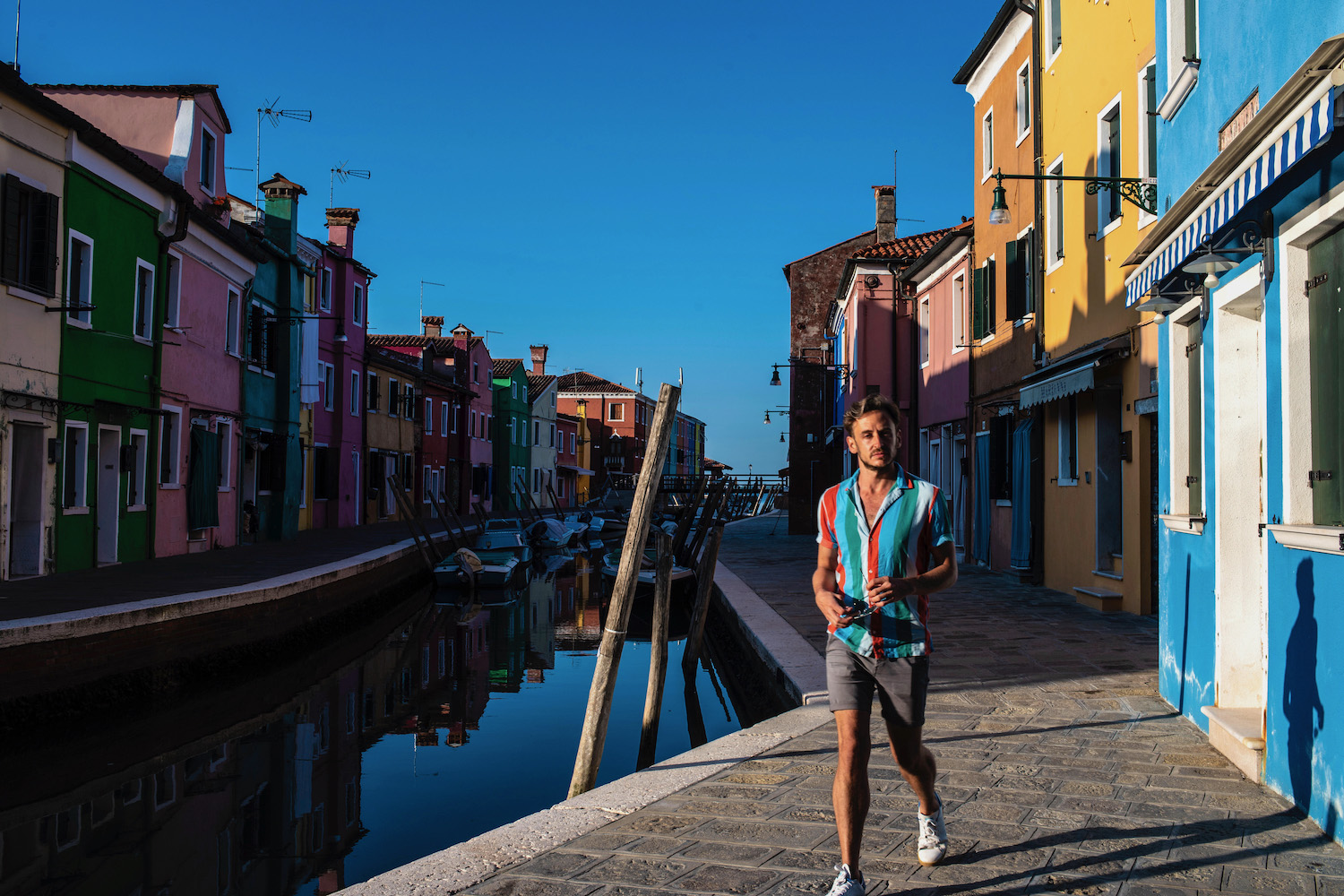
Those of you who’ve read my site for any length of time won’t be surprised that I prioritize Italy when I visit Europe. Plan to spend 2-3 weeks of your three months here. I usually like to zig-zag across the country, starting in Milan , before heading over to Venice and then traveling southward via Tuscany and Rome to Naples and the Puglia region—and, if you have time, Sicily and Sardinia .
Spain and Portugal
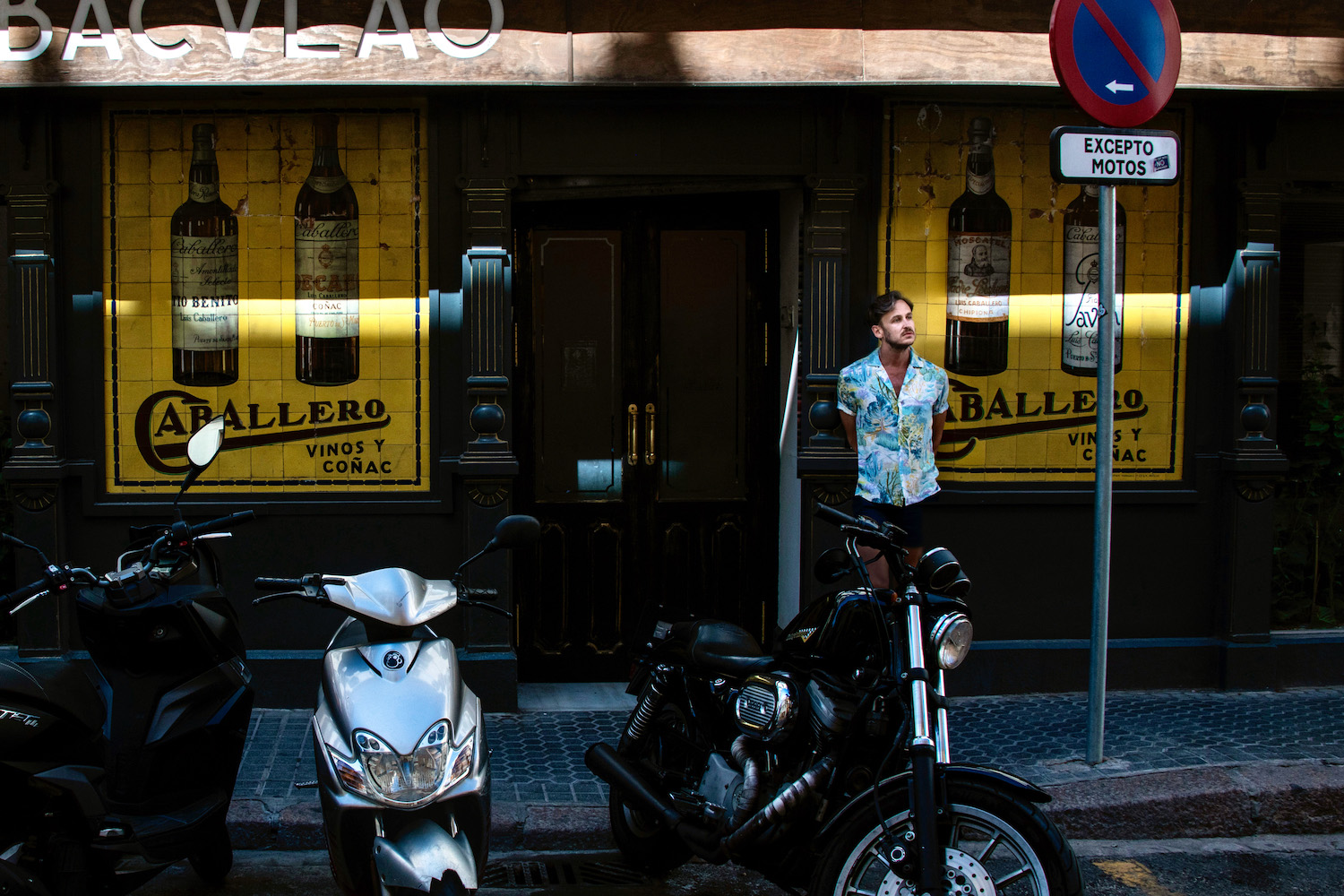
I like hot places, which is why the next stop on my 2 month Europe itinerary (though not necessarily chronologically) is the Iberian Peninsula. If you’re as warm-oriented as me, you’ll spend 2-3 weeks exploring Spain and Portugal , digging in not only to major cities like Madrid , Barcelona , Lisbon and Porto, but also destinations like the Algarve coast, the Basque Country and superlative secondary cities like Seville and Coimbra.
France and the Benelux countries
One of my favorite things about France is that it’s actually many destinations. While Nice and the French Riviera feel more like Italy or Spain, Paris can fit in (at least climactically) with cities in Belgium and the Netherlands like Amsterdam , Brussels , Antwerp and Utrecht. Regions like Brittany and Normandy almost seem like they belong in the British Isles; in Colmar and especially Strasbourg; you could practically be in Germany.

Switzerland, Austria and Germany
Speaking of Germany, while I can’t say how much of your 2 months in Europe cost will come from the (primarily) German-speaking countries of Germany, Austria and Switzerland , I will say that you will get what you pay for in these notoriously expensive places. Whether you explore Alp-adjacent cities like Salzburg, Munich and Zermatt , stick to Germany’s North Sea coast near Hamburg or frolic on the shores of Lake Geneva in western Switzerland, you’re sure to say “Ja!” to adventures in this cozy quarter of Europe.
Scandinavia
The Nordic countries of Finland, Sweden , Denmark, Norway and Iceland are the coldest and most expensive in Europe, but are also home to some of the continent’s most breathtaking scenery. Whether you road trip around Iceland in the middle of winter under the Northern Lights, hang out around the Arctic Circle in Norway or Sweden amid the “Midnight Sun” phenomenon or simply explore superlative capital cities like Stockholm and Copenhagen, you’ll definitely leave impressed.
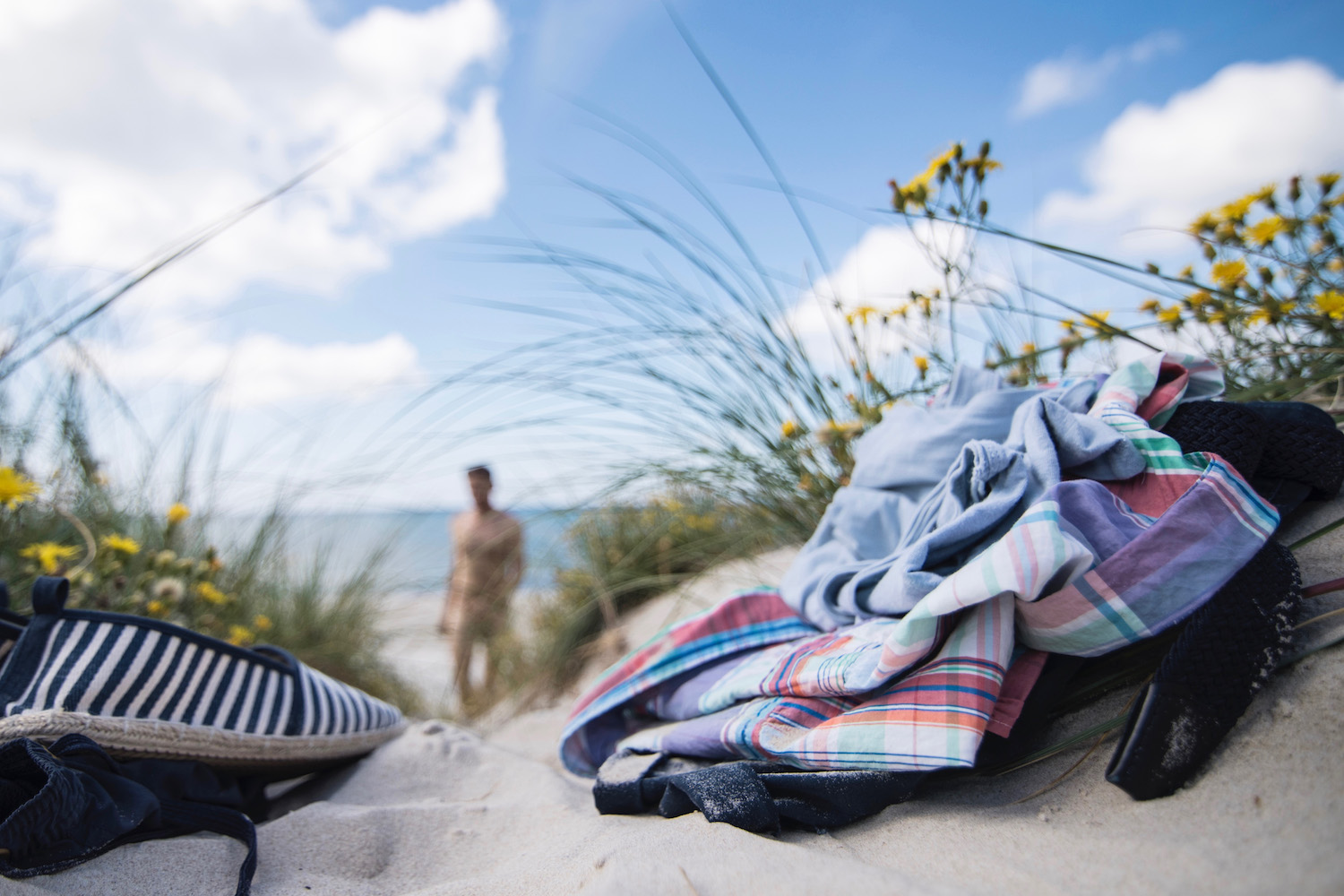
The Baltic States
I only made the mistake of referring to the Baltic States as “Eastern Europe” one time. “It’s Northern Europe,” the kind Latvian I said it to correcting me, a distinction that played itself out as I explored both her native Latvia , as well as the neighboring countries of Lithuania and Estonia . Indeed, the Baltics are something of a bridge between Scandinavia and the former Eastern bloc, with storybook cities surrounded by Soviet-style apartments, and a culture define as much by the Baltic Sea to the north as the dark empire that once loomed to the east.
Greece and the Balkans
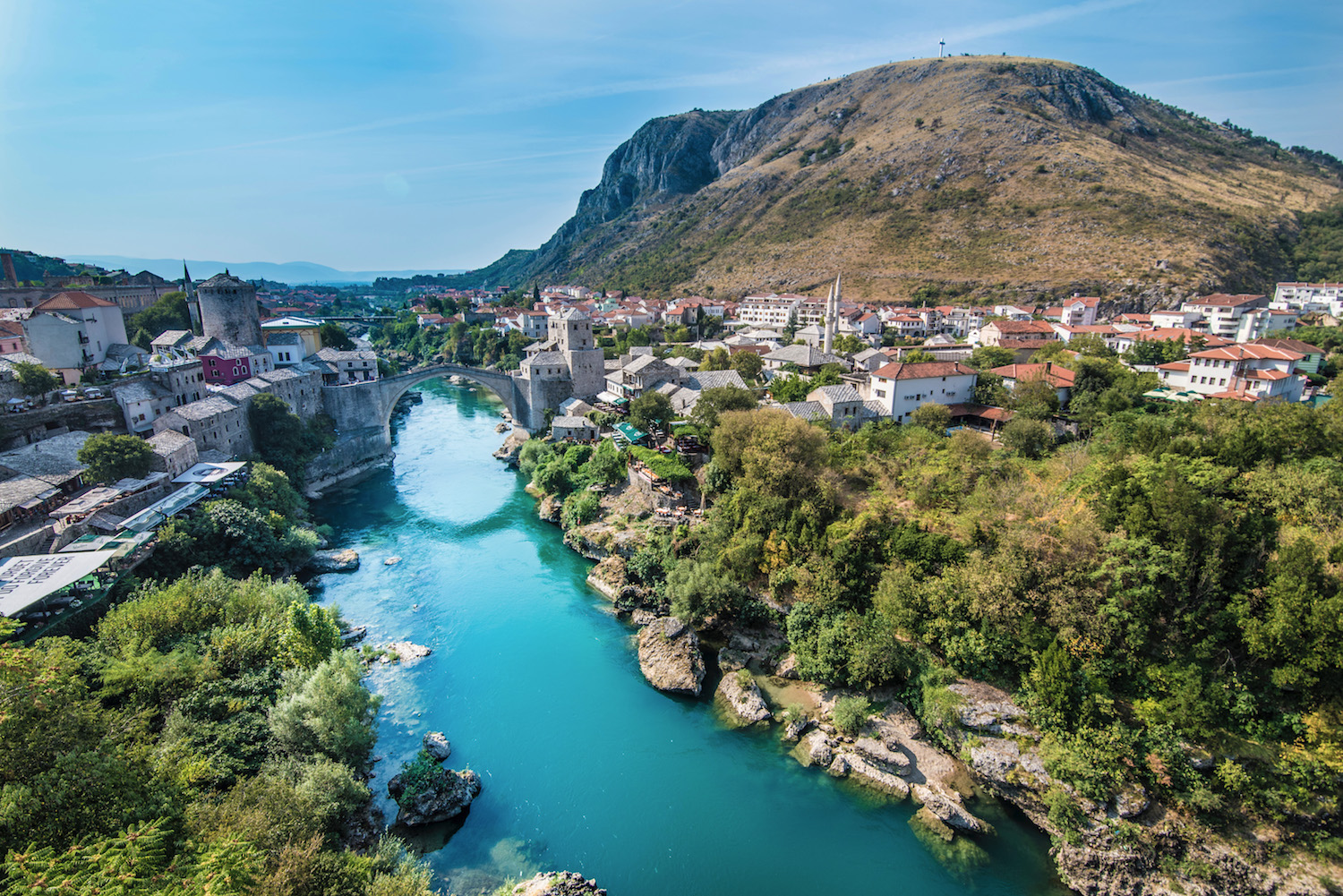
Another great place for sun on your 2 month Europe trip itinerary is Southeastern Europe: Greece and the Balkan countries (and Turkey , if you consider it part of Europe—I do). While I love Greek islands like Mykonos and Santorini, it’s no secret that beaches like Turkey’s Oludeniz and along Croatia’s Dalmatian Coast are less crowded. Likewise, you’ll see just as much history in Istanbul , Belgrade or Sarajevo as you will in Athens.
The British Isles

Brits probably won’t appreciate being lumped in with the Irish (and vice-versa), but hey: I don’t want to make my readers sit through 5,000 words. Indeed, my favorite parts of Ireland and the UK are the Celtic ones, whether I’m road tripping along Ireland’s Wild Atlantic Way , or taking side trips from Edinburgh and Glasgow , Scotland to places like the Isle of Skye and Loch Ness. England is amazing, of course, although I’m the first to admit I haven’t spent nearly enough time there during my “adult” travel life.
The Caucasus
As is the case with Turkey, The Caucasus even being part of Europe is up for debate. Still, assuming you have at least 6 weeks in Europe (and ideally longer), countries such as Georgia , Armenia and Azerbaijan are absolutely worth visiting. Personally, Georgia is my favorite of these, from cozy Tbilisi to the mountain town of Kazbegi and its stunning scenery. However, Armenia’s monasteries and the Caspian vibe of Baku , Azerbaijan are nothing to shake a stick at.

For the majority of travelers, Eastern Europe (with the exception of cities like Prague and Budapest) is separate from “Europe” (which is to say Western Europe) as a travel destination. This is especially the case for Russia , which even before Vladimir Putin’s invasion of Ukraine required a cumbersome visa to enter. Accordingly, I’d probably recommend considering this part of Europe separately from your core two months in Europe.
Is 2 Months in Europe Enough?
Over the past few years, travelers have emailed me about planning trips that range from a 6 week Europe itinerary all the way up to 3 months in Europe. And they’ve told me that this page (and previous iterations of it) have helped them put together itineraries for trips of virtually all lengths. While I’ve obviously optimized my advice for travelers who have about two months, a lot of the information you find here is evergreen.
On the other hand, if you want to comprehensively explore the continent, a 2 months in Europe itinerary is really the minimum amount of time you’ll need to devote. Europe is the size of the continental US, but is much more densely populated and features a much richer cultural tapestry as well. In fact, if you really want to see “all” of Europe, you’ll need closer to half a year here; two months simply affords you a compelling (but not complete) cross-section.
Other FAQ About Spending 2 Months in Europe
How much does it cost to travel europe for 2 months.
The minimum amount of money you can expect to spend during your 2 month Europe itinerary (not including) flights is 6,000 USD. This assumes that your food, accommodation and transport within the continent will cost no less than 100 USD per person, per day.
Do you need a visa to stay in Europe for 2 months?
If you have a US, UK, Australia or New Zealand passport, you don’t need a visa to stay in Europe if you plan to stay less than 90 days. However, there are a couple of important caveats. First, if you’ve already stayed more than 30 out of the previous 180 days, you won’t be able to stay the whole 60 days, as visa-free travel in Europe is only permitted for up to 90 out of every 180-day period. Secondly, starting in 2024, you will need to avail Europe’s nascent ETIAS travel authorization in order to enter the Schengen area.
What is the best month to see Europe?
Europe is a fantastic destination any time of year, though you should keep some things in mind. First, while the summer months of July and August are hot, sunny and lots of fun, they’re also the busiest and most expensive. This is especially the case in August, when virtually the entire country of France is on vacation. Secondly, while winter can be less crowded outside of ski destinations, it’s extremely cold, especially if you’re from a warmer country and aren’t used to it. If you want to balance nice weather with light crowds, “shoulder” months like April, May, September and October are a perfect time to visit Europe.
The Bottom Line
How’s your 2 month Europe itinerary looking? Although planning a Europe trip is a process, I hope you’ve made significant progress toward a plan you can execute. Some of you will spend your time touring European capitals, or popular regions such as Italy’s Tuscany , Portugal’s Algarve or the Swiss Alps. Others will take a more unique approach, be that hunkering down in or or two countries, or making a true marathon across the continent, from one end clear over to another. Want personalized help putting your trip together? I do hope you’ll consider hiring me as your Travel Coach!

Subscribe to email updates!
Words, images and design ©2009-2024 Robert Schrader, All rights reserved. Read Privacy Policy or view sitemap .
Finding Alexx
| Bucket list adventures around the globe
Europe , Bucket list travel , Homepage popular · January 12, 2023
The ultimate 2 month Europe itinerary
This 2 month Europe itinerary is the perfect route to spend two months in Europe by train. For each destination I’ve included train details on how to get there, train costs, seat reservation fees for rail pass holders, things to do, places to eat and where to stay.
Planning a two month Europe itinerary? I’ve taken my actual Europe rail itinerary from my recent Europe adventure, made it much cleaner and easier, and typed it up into a super detailed, easy-to-read 2 month Europe itinerary that you can easily replicate for your own trip.
From iconic European cities like Paris, London and Rome to the stunning Italian coast, fairytale cities like Bruges, some of the most scenic train journeys in the world and some world-class culinary gems thrown in for good measure, this 2 month Europe train itinerary will show you a diverse selection of the continent’s highlights.
You could copy and paste this entire itinerary and save yourself weeks of planning, or just use it as a starting point to see where some of the easiest train routes go and then tailor it to fit your timeframe, budget and travel preferences.
So without further ado, let’s dive into this epic Europe train itinerary and get started on planning your European adventure!

How to use this 2 month Europe itinerary
This two month Europe itinerary is based on my own exact two month Eurail trip, but it’s been fixed up to make much more sense and save time and money.
You can see my exact Eurail itinerary here , but I had to fit my plans around a conference in London, various hotel collaborations on set dates, Christmas markets and some train strikes, so I wouldn’t recommend copying my actual route. Instead you can use this two month itinerary to get ideas for places to visit and how to get between them.
If you’re lucky enough to have even longer in Europe, I also have a super comprehensive three month Europe itinerary that is pretty much all you need to plan your Europe route! It has a core itinerary with the major highlights and then a bunch of add on itineraries that you can easily slot in depending on your preferred travel pace, budget and interests,
Do I need a Eurail pass for this trip?
You should consider purchasing a Eurail Pass (or Interrail Pass if you’re an EU citizen) for this Europe train itinerary, because it could save you a tonne of money (and stress!).
If you know your exact travel dates you can check the train prices for each route (you can do this on a website like RailEurope.com or with the specific train company directly) to calculate if a Eurail Pass is worth it . If you’ve got your route fully confirmed 2-3 months before your trip then it might be better to buy all your tickets outright.
If you’re not sure of dates yet/want to keep things flexible then for this particularly itinerary a Eurail Pass is definitely recommended.

What’s the best Eurail Pass for this two month Europe itinerary?
I travelled Europe for two months with a ’15 travel days in 2 months’ Eurail Global Pass . If you go with this pass you’ll need to look at your route and try to figure out what 15 travel days will be most expensive, and use your Eurail travel days for these. There’s no point in using one of 15 travel days for a short €15 train journey between Tirano and Milan.
If you want to visit even more places, travel for another month, or just want the maximum flexibility then you could consider a consecutive Eurail Global Pass for two months or three months. These passes are much more expensive than the limited travel day passes, but they give you total freedom to wake up and catch a train wherever you want without worrying about calculating if a travel day is worth it.
Note: The Interrail Global Pass and Eurail Global Pass are basically the same, except for some specific requirements for leaving/entering your home country. When I say ‘Eurail Global Pass’ this can be interchanged with ‘Interrail Global Pass’ if you’re an EU citizen.
What are seat reservations?
When you travel with a Eurail or Interrail Pass, the pass covers your train ticket but for some trains you still need to pay for seat reservations. Many trains in Europe don’t require reservations, but for high speed trains, particularly busy routes, long-haul international trains and overnight trains you probably will need to pay for a reservation.
Seat reservation costs can vary drastically, ranging from €5 to €12 for the vast majority of reservation-required trains, but can be from €25 to €48 for high speed international trains like the Eurostar.
Seat reservations for most trains can be made on the Eurail website, they charge an fee of €2 per reservation which I have built into the price (e.g. when I say €12 reservation this is actually a €10 reservation with a €2 fee). If you can’t book them on the Eurail website (the Eurostar is an example), the Eurail website will send you through to the correct link or will tell you that you need to call the train company or visit a ticket office in person.
You can sometimes book reservations directly through local rail companies like DB (Germany) or OBB (Austria) and avoid the Eurail fee, but for ease of research I’ve taken the prices from the Eurail reservation search tool and therefore included that €2 fee in all the prices in this post.
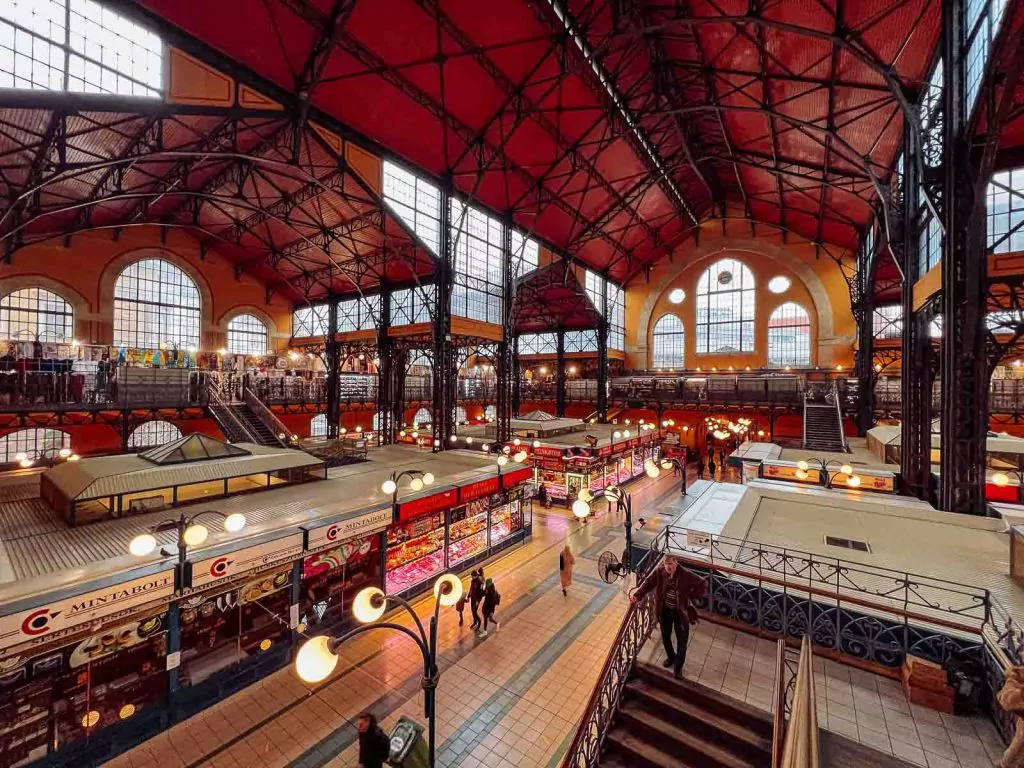
What does this two month Europe itinerary include?
This Europe train itinerary includes many of Europe’s iconic must-do cities, as well as some lesser-visited regions and towns, plus some options for easy day trips or stopovers.
There are many, many more places to see in Europe of course, but for this itinerary I’ve focused on creating a simple train route that’s easy to follow without too many complicated train journeys or drawn out travel days.
There are also a bunch of simple alternative routes at the bottom of the blog, including places you could skip and places you could add on depending on your interests and priorities.
Please note that my ‘how long to stay’ recommendation is an absolute minimum length of stay to see the top sights, but every city has much, much more to explore if you have the time.
Where should I start this Europe train itinerary?
You could start this trip anywhere, it’s pretty much a loop so it’d be possible to start in London, Paris, Barcelona, Rome or any other major airline hub city.

What if I have more time?
You’re in luck! I’ve just published an extremely comprehensive three month Europe itinerary that gives you a core itinerary, and then has a bunch of optional add ons and detours to tailor it for your preferences.
Two month Europe itinerary summary
Europe train itinerary map.
I’ve tried to colour code the destinations in rainbow colours so you can get an idea of the order you’d be travelling in.
Europe train itinerary summary
Again, the days listed here are recommended minimum length of stay. This itinerary is currently 49-61 days long based on the recommended minimum stays so you’ve got a bit of leeway to add on a day in a few extra spots, or to add a new stop altogether.
- London (4 days)
- Paris (4 days)
- Barcelona (3 days)
- Lyon (2 days)
- Zermatt (2-3 days)
- St Moritz (1-2 days)
- Tirano (1 day)
- Milan (2-3 days)
- Cinque Terre (1-2 days)
- Florence via Pisa (2-3 days)
- Rome (4 days)
- Bologna (1 day)
- Venice (3-4 days)
- The Dolomites (3-4 days)
- Salzburg/Innsbruck (2 days)
- Vienna (2-3 days)
- Bratislava (1 day)
- Budapest (2-3 days)
- Prague (2-3 days)
- Berlin (3 days)
- Amsterdam (3-4 days)
- Bruges (1-2 days)
The ultimate 2 month Europe itinerary by train
How to get to London
If you’re starting your two month Europe trip in London, you can fly into one of a number of airports.
Heathrow is the main long-haul airport for most full service major airlines, and to get from Heathrow to Central London it’s an easy Tube trip on the Piccadilly Line or the Elizabeth Line.
Gatwick is the second-busiest airport and is a common arrival point for budget airlines and also some short-haul Europe flights of full service airlines, and is connected to London city by train that runs consistently throughout the day.
There’s also London City Airport (used mostly for short-haul Europe flights from full service airlines), London Stansted (budget airlines like RyanAir and Easyjet) and London (also budget airlines).
How long to stay: As long as you can. Stay for four days at a minimum, but you could stay for weeks and still only see a fraction of what the city has to offer.
About London
London is one of those iconic cities that you probably already know loads about from TV shows and movies, but once you’re there in person you’ll see that there’s much more to the city than Big Ben, Platform 9 3/4 and William’s house from Notting Hill.
I lived in London for two years on a working holiday visa a few years ago and I count it as my second home, so believe me when I say that London is truly whatever you want it to be.
If you want to do the classic tourist route you can visit palaces, museums and skyscrapers by day, and finish the evening with a West End show.
If you prefer seeing a city by exploring their cuisine, London’s full of foodie experiences to keep you satisfied, from world-class markets (Borough is my fave) to Michelin-starred restaurants to budget-friendly cheap eats if you don’t mind getting off the beaten track.
And if you’re up for something a bit different, there are loads of unique things to do in London to surprise and delight you and your travel buddies. Spend a night hopping between funky cocktail bars and speakeasys, roam around some of the city’s expansive parks, get amongst some of the city’s incredible events or see the skyline from a jetboat tour along the Thames.

Things to do in London
- See the obvious attractions, like Big Ben, Buckingham Palace, the Natural History Museum, Trafalgar Square, the Tower of London, the London Eye and St Paul’s Cathedral. All attractions are easily reached by public transport but if you’d prefer a simple door-to-door bus then consider the hop-on hop-off bus , or look at the Go City London Pass which gives you discounted entry to major attractions as well as the hop-on hop-off bus.
- Eat your way around Borough Market, don’t miss divine apple crumble from Humble Crumble
- Shop for vintage goodies at Portobello Market, Old Spitalfields Market or Brick Lane Market
- See a show on the West End (I love & Juliet , Hamilton, the Book of Mormon, Wicked, and the Lion King )
- See a darker side of London with this highly-rated Jack the Ripper walking tour
- Taste the best food around London with a food tour! Try this cheese walking tour , this Secret London Food Tour or this East End food tour
- Take a day trip from London. You could spend a day at Warner Bros. Studios (a.k.a. Harry Potter world!), see a bunch of Downton Abbey filming locations , or tick off Stonehenge, Bath and Windsor in a single tour
- See the best view of the city from up the Shard, without having to pay for a ticket. You can simply book a table at Aqua or Hutong’s if you want a meal, or try popping up for just a drink or two in the middle of the day. Don’t miss the bathrooms, now that’s a true loo with a view!
- Another great view is up the Skygarden, it’s free entry but you need to book in advance. You can book tickets her e.
- Treat yourself to a fancy afternoon tea. Head to the Savoy for a quintessential London high tea experience, go to Sketch for the most Instagrammable high tea in town, or tick off a city tour and afternoon tea in one with Brigit’s Bakery Afternoon Tea bus tour .
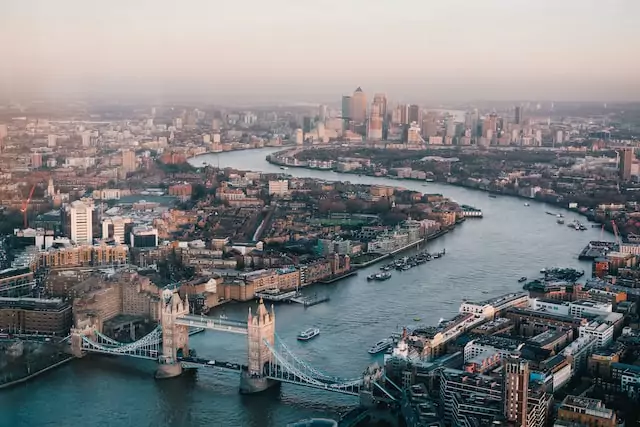
Where to stay in London
Budget | London’s not known for being an affordable city but there are some hostels that can keep your accommodation prices down. Check out Urbany Hostel , Wombat’s Hostel , Selina Camden or Hostel One are all good options, or Kip Hotel is great if all you want a private room but don’t need much space.
Mid-range | To get the best bang for your buck in London you’ll need to stay slightly out of the city, but public transport is super well connected so with these options you’ll find it easy to get to the major tourist sights. The Fox & Goose Hotel in Ealing, Spread Eagle in Wandsworth, Rose & Crown Hotel in Wimbledon and Half Moon in Southwark are all brilliantly-rated mid-range options, or the Z Hotels in Holborn , Trafalgar and The Strand are all well-rated too.
Luxury | There are loads of luxury hotels in London for a fancy stay, but some of the best-rated ones are Hotel 41 , Pan Pacific London , Claridge’s , Ham Yard and the Ritz .
Self-contained | My go-to for a self-contained stay in London is Room2 Chiswick Hometel , a gorgeous boutique aparthotel that offers funky studios with kitchenettes as well as access to a gym, laundry facilities and a café/cocktail bar with plenty of work-friendly spaces. They’re also the world’s first fully net zero hotel which is super cool!
A quick note about airport hotels
If you’ve left planning your Europe trip a bit late and aren’t able to find a seat on the Eurostar to Paris, you might need to fly instead. In London you’ll find that many of the cheaper flights depart before 9am, meaning you might need to leave your hotel at a horrendous hour to reach whichever airport you’re flying out of. To save the early morning stress I often opt for an airport hotel, choosing a cheap early morning fare with an airport hotel booking often ends up cheaper than flying out on an expensive midday flight anyway!
I love BLOC Gatwick if you’re flying from LGW, they have good value cosy rooms with comfy beds literally right next to the departure gate. And if you’re flying from Heathrow, my top pick is the newly-refurbished Hilton Heathrow Terminal 4 , which has super spacious rooms, a brilliant buffet breakfast and a short six-minute walk down a covered walkway to get to Terminal 4.
How to get from London to Paris: Take the Eurostar from London St Pancras to Paris Gare de Lyon, super quick and easy.
Train prices: If you book a few months in advance or during a sale you can find tickets from €45 one way, but there are only a select number of tickets available at that price before it rises. Last minute tickets or tickets for peak times can be as expensive as €150-€175.
Seat reservations with rail passes: A Eurail Pass is great for the Eurostar because you only pay for the seat reservation which is €32 for a Standard seat (with a 2nd class Eurail Pass) or €40 for a Standard Premier seat (with a 1st class Eurail Pass).
How long to stay: 4 days
Paris is one of Europe’s most hotly-debated tourist destinations, it seems as though you either absolutely love it or totally hate it! I’m in the ‘love’ camp, and I’ll always tack a quick Paris visit onto any European adventure.
I think the issue with Paris is that people have these dreamy, romantic expectations of the city after seeing it in movies and TV shows, and then the reality of hectic crowds, abrupt locals, smelly metro corridors and scammy tourist traps ruin these expectations leaving a bit of a sour taste in the their mouths. But, just like any main city, the best Paris has to offer is beyond the iconic tourist sights.
Paris boasts one of the world’s best café cultures, where pastries are freshly-baked, coffee is piping hot and people-watching is a daily event. And if sitting at a sidewalk table isn’t your thing, there are plenty of inner city parks to take your fresh croissant or baguette and cheese to for a DIY picnic.
Throw in a bunch of renowned museums and galleries, Instagrammable photo spots all over the city, easy day trips to palaces, castles and gardens, an alluring cabaret scene and stunning architecture everywhere you look, and you might just join me in the Paris fan club!

Things to do in Paris
- Practice your French! It’s true that the locals aren’t super friendly when you speak English to them and expect them to respond, but can you blame them? A little ‘bonjour’, ‘s’il vous plaît’, ‘parlez vous anglais?’ and ‘merci’ will go a long way. (That’s ‘hello’, ‘please’, ‘do you speak English?’ and ‘thank you’, by the way!)
- See a cabaret show, Paris is home to loads of incredible cabaret performances, ranging from risqué and raunchy through to quirky and even family-friendly. I recently saw Paradis Latin which blew me away, the dialogue and songs were part-French, part-English, the costumes were stunning and the atmosphere was so vibrant and fun.
- Grab a baguette and some cheese and have a picnic under the Eiffel Tower, in the Jardin des Tuileries or at Places des Vosges
- Visit the Galeries Lafayette department store to see the famous stained-glass dome
- Learn about some of the most famous artworks in the world at the city’s museums. There’s the Louvre , Musée Picasso , Musée d’Orsay , Musée Rodin and many, many more.
- Indulge in some sugary treats, like macarons from Pierre Hermé, the famous hot chocolate (more like chocolate soup!) from Angelina’s or a pain au chocolat from Du Pain et des Idées
- Try your hand at making your own French dessert with a macaron cooking class, there’s a good value 1.5 hour option at Galeries Lafayette , or a more intensive 2.5 hour option at a cooking school
- See a side to the city many don’t even know exists with a tour through the Catacombs , an underground network of tunnels that hold the remains of six million people after being moved from overflowing cemeteries in the 18th century
- Enjoy the panoramic view of the city from the steps of the Sacré-Cœur
- Wander through the narrow cobbled streets of the Latin Quarter, and stick around in the evening if you’re keen to experience the neighbourhood’s buzzing nightlife
- Explore the charming Marais district, my favourite part of Paris. Incredible design stores, trendy clothing shops and the city’s best Middle Eastern eatery, l’as du fallafel
- Take a day trip out of the city to the opulent Palace of Versailles , the castles of the Loire Valley , the gardens of Giverny or the rollercoasters of Disneyland Paris
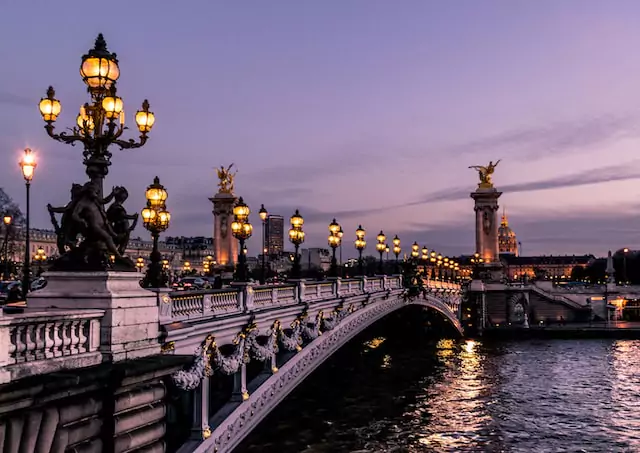
Where to stay in Paris
Budget | On my most recent trip I stayed at JO&JOE Paris Nation , which has a fridge and microwave as well as pod-style dorm rooms and private rooms, from my research it’s the best hostel in Paris that offers cooking facilities. I’ve also stayed at People Nation which has brilliant pod-style rooms right next to a metro station, but unfortunately doesn’t have a kitchen or even a fridge (not ideal for travellers on a budget as eating out in Paris isn’t exactly cheap). Generator Paris is another well-rated hostel but also doesn’t allow any outside food to be brought in, and budget-friendly Enjoy Hostel does have a kitchen but is lacking in other areas like comfort and space.
Mid-range | Hotel Paradis is my go-to for a mid-range boutique stay, they have simple but beautiful interiors, comfy beds and some top floor rooms can see the top half of the Eiffel Tower for cheeeeap. I also love Laz’ Hotel Spa for something a bit fancier without being crazy expensive, and some other decent options are Hôtel de Roubaix , B Montmartre and Babel Belleville .
Luxury | Treat yourself to a luxury stay in Paris at Manolita Paris , Maison Villeroy , La Réserve Paris Hotel & Spa , Bulgari Hotel Paris or Cheval Blanc Paris .
Self-contained | If you want somewhere with kitchen facilities then I adored my time at Edgar Suites Montmartre , they are an aparthotel just around the corner from the stairs to the Sacre Coeur. Spacious, stylish and ideally located! Other top-rated self-contained options are Goralska Résidences Hôtel , Les Jardins Du Luxembourg Hotel , CADET Residence or PEPPER & PAPER Apartments .
Bonus: Where to stay at Paris Disneyland
Budget | Eklo Hotels is an awesome option for Disneyland visitors on a budget, with rooms ranging from single to double to family to group dorm rooms. There’s also a fridge and microwave for guests to use, as well as a restaurant and bar serving up diner-style food and drinks.
Luxury | Hotel L’Elysée Val D’Europe is my top pick for a luxurious, comfortable stay near Disney. They’ve got huge rooms complete with giant beds, desks and bath tubs, and the hotel provides a free shuttle to and from Disney throughout the day.

How to get to Barcelona from Paris: There’s a direct train that runs twice a day (three times in summer) and takes 6h 31m.
Seat reservations for rail pass holders: The seat reservation for this high speed train is expensive, I paid €48 for a 1st class seat and the 2nd class reservation was €36.
Train prices: But the train ticket would’ve cost me €228 without a Eurail Pass when I booked a week before the trip (€188 for 2nd class) so the pass saved me loads of money. Looking at prices now for 2.5 months ahead of time the prices are between €119 and €144 for 2nd class, so this is an expensive route to buy outright.
How long to stay: 3 days
Barcelona is a fabulously vibrant city that offers beaches, nightlife, gastronomy, culture and history all within easy access to each other, which is ideal if you’re only here for a short visit.
By day you could catch some sun rays from a deckchair in the sand, marvel at Gaudi’s masterpieces or try some local delicacies from Mercado de La Boqueria. By night you could sip sangria while taste testing tapas (or trying some of the city’s best paella), enjoy some late night shopping down Las Ramblas or hit the cocktail bars or nightclubs.

Things to do in Barcelona
- Visit the still-incomplete jewel in Barcelona’s tourism crown, La Sagrada Familia, which is one of the city’s Gaudí masterpieces, currently in its 141st year since construction began in 1882. The basilica is certainly a showstopper even from afar, unlike any other church in the world, but you’ve got to go inside and see the stained-glass windows and unique ceiling design. Avoid long queues by booking your ticket and visit time in advance , or skip the line entirely with this guided tour and entry ticket combo .
- Another iconic Gaudí stamp on the city is Park Güell , an enchanting park sitting above Barcelona with incredible views, fairytale-esque gardens and a house where Gaudí himself lived with his family, which is now a museum dedicated to him
- And a third Gaudí tourist hot spot is Casa Batlló, a.k.a. the ‘House of Bones’ thanks to its skeletal look. You can enjoy the unique façade from the street for free, or you can buy an entry ticket to learn more about Gaudí and his creative process.
- Shop til you drop down La Rambla, a tree-lined pedestrian boulevard boasting flagship stores, quirky street performers and vibey cafes and restaurants
- While you’re wandering down La Rambla, don’t miss the entrance to the famous La Boqueria market, where you’ll find a wide range of food from fresh juices to sweet pastries to cured meats and ocean-to-market seafood
- Catch some sun, hit the surf and feel the sand between your toes along the city’s 4.5km coastline
- Experience Spanish culture through cuisine by having a daily tapas session. I loved Ciutat Comtal and some other top-rated eateries are Tapeo, Sensi Bistro and Cerveseria Catalana
- Walk through the beautiful Ciutadella Park

Where to stay in Barcelona
Budget | Yeah Barcelona , Hostel One Ramblas , Born Barcelona and Fabrizzios Terrace Hostel are all top-rated budget-friendly options
Mid-range | For something mid-range check out Forget Me Not , Musik Boutique Hotel , Occidental Barcelona 1929 and Hotel Jazz (which has a rooftop pool!)
Luxury | ME Barcelona , Hotel El Palace , Hotel Boutique Mirlo , Monument Hotel and The One Barcelona GL are some of the best-rated luxury hotels in Barcelona
Self-contained | If you want self-catering facilities, some good options are Deco Apartments , El Alma de las Ramblas , Eco Boutique Hotel and Suites Avenue
How to get to Lyon from Barcelona: A 5h 17m train journey with one change in Montpellier with mandatory reservations on both trains, €36/€50 for the first train (2nd class/1st class) and €12 for the second train (both classes the same price).
Train prices: This route typically costs between €70-€120 for a ticket so check the price for your travel dates to see if a Eurail Pass would be worth it. There’s also a direct coach from Barcelona to Lyon with FlixBus for €28.99 but this takes nine hours.
How long to stay: 2 days
A lesser-known city compared to many on this two month Europe itinerary, Lyon takes the culinary crown as France’s best foodie city. With 19 Michelin-starred restaurants, gastronomic events throughout the year, flagship restaurants from world-famous chefs and easy access to some of France’s best produce and meat, it’s an absolute must-visit for any food-minded traveller.

Things to do in Lyon
- My absolute top recommendation for Lyon (and for any foodie city) is to do a food tour, it’s hands down the best way to learn about the city’s culinary history and taste a bunch of local specialties while you’re at it. Some highly-rated ones are this 4 hour Vieux Lyon food tour , this Secret Food Tour and this Vegan Croix-Rousse food tour if you’re plant-based.
- Snag a table at a Michelin-starred restaurant. Restaurant Paul Bocuse is perhaps the most famous, named after Lyon-based gastronomic legend Paul Bocuse and boasting two Michelin stars. You can see all the Michelin-starred Lyon restaurants here , book in advance if you’re visiting on a weekend or during summer.
- Wander through the cobbled alleyways and ‘traboules’ (secret passageways) of Vieux Lyon, the city’s old quarters
- See the city efficiently (time-wise and energy-wise!) with a Pedicab tour , a Segway tour or an electric bike tour
- Take a walk through the indoor and outdoor gardens at Parc de la Tête d’Or
- Catch the funicular (or walk if you don’t mind breaking a sweat) up to Fourvière Hill to see the Basilica of Notre-Dame de Fourvière, the Théatre Gallo-Romain and incredible views of the city

Where to stay in Lyon
Budget | Centre Jean Bosco , Félix Dort , MEININGER Lyon and Hotel Elysée offer brilliant value for money
Mid-range | Hôtel de l’Abbaye , Hotel De Verdun 1882 , Hôtel Edmond W and Le Phénix Hôtel
Luxury | InterContinental Lyon , Villa Maïa , Boscolo Lyon Hotel & Spa or Hotel & Spa Le Pavillon if you’d like somewhere luxurious slightly out of the city
Self-contained | Le Cocon on Dine , Urban Cocoon Gite and MOHOM all offer kitchen facilities
Don’t stay at | I stayed at ResidHotel in a tiny studio apartment, but I wouldn’t recommend it. It was far too expensive for the size and quality of the place, and it was disgustingly dirty, with food remains stuck on ‘clean’ dishes, dust everywhere, sticky stuff on the kitchen bench and desk. Avoid!
How to get to Zermatt from Lyon: A few different options, but the easiest/cheapest is a three train journey that takes between 5h 36m and 6h 36m depending on the connections, with no seat reservations needed (which means it’s totally free if you use a Eurail pass). Most journeys will have a regional train from Lyon to Geneva (1h 57m), a switch in Geneva, then a train to either Visp (2h 13m) or to Brig (2h 1m), then a switch to your final train to Zermatt (1h 10m from Visp, 1h 22m from Brig).
Train prices: Prices seem to sit at around €80-100 for outright tickets even when booking a couple of months in advance
How long to stay: 2-3 days
Have you ever wondered what mountain you see on the Toberlone packet? It’s the Matterhorn, an iconic peak in the Swiss canton of Valais, and the charming ski town of Zermatt provides a front row ticket to it.
Zermatt is best-known as a winter hub for active adventurers who want to hit the slopes of world-class ski resorts, but it’s still well worth a visit in the warmer months too, with hikes, alpine train rides, paragliding, scenic flights and more on offer.

Things to do in Zermatt
- Ski or snowboard if you’re visiting during winter, then get amongst the epic apres-ski scene afterwards
- Take the Gornergrat Bahn mountain railway to the top of Gornergrat for the best view of the Matterhorn
- Do a walk when you’re up at Gornergrat. I got off at the top station and walked the 2km to Riffelsee Lake, a lake with an incredible reflection of the Matterhorn, before heading slightly up hill (short but very steep 5 min walk) to Rotenboden station to catch the train down.
- You could also continue 2.3km to the next station, Riffelberg, or skip the first walk, get off at Rotenboden and just do the second. During winter these trails are snowy so the first walk (Gornergrat to Rotenboden) is accessible to snow-shoers only, but the second walk (Rotenboden to Riffelberg) is accessible to both snow-shoers and normal winter hikers.
- Float amongst the peaks with a paragliding flight
- Take the world’s highest cable car, the Matterhorn Glacier Paradise to Europe’s highest mountain station at 3,883m above sea level, where you’ll be able to spot 38 mountain peaks in Switzerland, France and Italy
- Try some fondue, a quintessential Swiss alpine culinary experience. My hotel (the stunning Hotel ZERMAMA ) had in-room fondue sets where guests could order the ingredients from the restaurant and then DIY their own fondue dinner in the comfort of their room or from their balcony, So dreamy!

Where to stay in Zermatt
Budget | Zermatt Youth Hostel is the cheapest place in town and has great reviews, or ALPINA Budget Rooms , Hotel Alphubel and Le Petit Charme-Inn are also rated over 8/10 on booking.com
Mid-range | Chesa Valese , SchlossHotel Zermatt , Unique Hotel Post and Schallers Tannenhof offer great value for the mid-range budget
Luxury | I am obsessed with where I stayed and cannot recommend it highly enough, it’s called Hotel ZERMAMA and it’s one of the best places I’ve ever stayed for sure. It’s a 4* luxury design and lifestyle hotel with stunning interiors, lots of thoughtful extras (yoga mat, resistance bands, big faux-fur winter coat for cold nights on the balcony) and little details that take your stay to the next level. I stayed in a suite which was absolutely divine but they also offer single rooms for solo travellers which I love (no need to pay for extra space you don’t need), as well as a range of other rooms to suit different budgets.
Self-contained | Studio MIA , Alpenblick Superior and Piccolo Fiamma all have options with a kitchen/kitchenette
How to get to St Moritz from Zermatt: By catching one of the most scenic train journeys in Europe (and the world!), the Glacier Express, which is an 8 hour direct train with panoramic windows and some of the best views I’ve ever seen in my life. You can save 152CHF (2nd class) or 268CHF (1st class) on your Glacier Express journey using a Eurail, Interrail or Swiss Travel Pass, you can find out how in my Glacier Express travel guide .
Seat reservations: 39CHF during low season (mid-Dec to mid-May), 49CHF during high season (mid-May to mid-Oct)
You can also replicate the same journey by using regional trains which don’t require seat reservations, so they’re free with a rail pass or still relatively cheap compared to the Glacier Express if you’re buying outright. You’ll need to take five trains in total but all the changes are simple and at small stations: Zermatt to Visp, Visp to Andermatt, Andermatt to Disentis/Muster, Disentis/Muster to Reichenau-Tamins, and Reichenau-Tamins to St Moritz.
How long to stay: 1-2 days
St Moritz is the birthplace of winter tourism in Europe, with luxury hotels, fancy ski resorts and gourmet restaurants playing host to the rich and famous since 1864. It also serves as the stopover between the Glacier Express train and another Switzerland panoramic train, the Bernina Express.
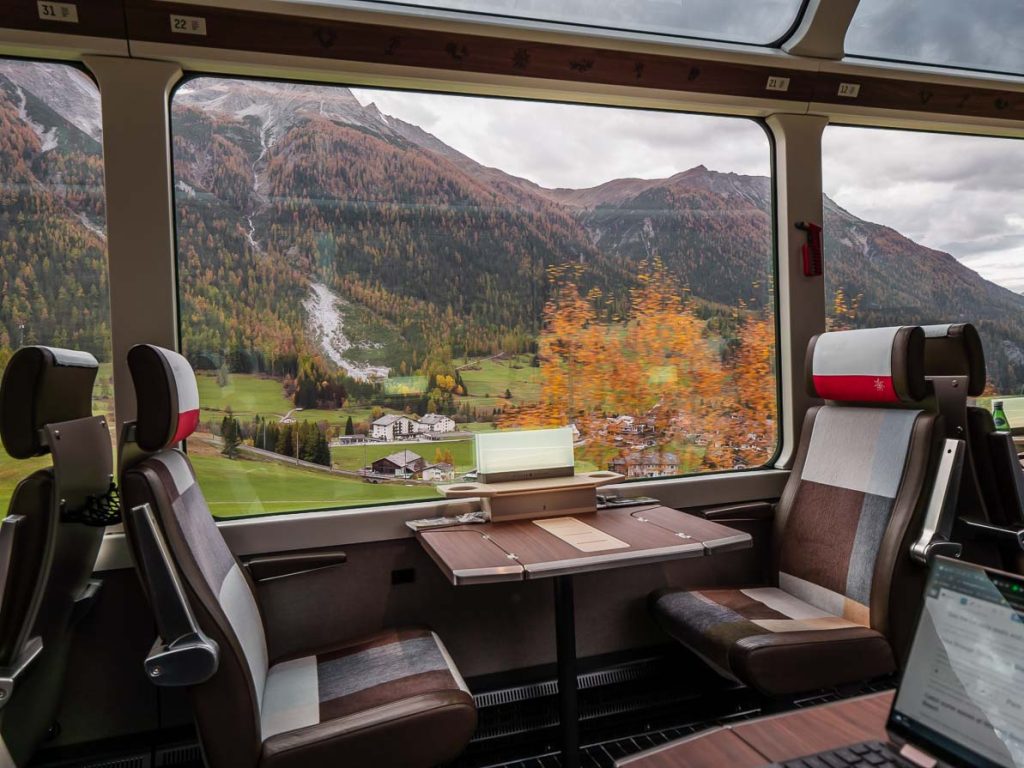
Things to do in St Moritz
- Walk around Lake St Moritz, an easy 4.4km walk past lakefront hotels and restaurants, through some short forest sections and with stunning views the whole way round
- Catch the funicular up to Corviglia (2486m) for hiking in summer and skiing in winter, or go slightly higher with the cable car up to Piz Nair at 3,057m
- There are plenty of other hikes on offer in and around the area, from easy family-friendly trails to more challenging alpine treks and even seasonal wildflower tracks
- Channel Cool Runnings and get your heart racing with a bobsled run down the Olympia Bob Run , the oldest run in the world. It’s not cheap, at 269CHF per person, but you’ll never forget the thrill of speeding down a natural ice track at up to 135km/h, feeling forces of 4G and coming to a halt after 75 seconds of adrenaline.

Where to stay in St Moritz
Unique | I spent two nights at one of the most unique accommodation spots in the world, a historic observatory with mountain views, a turning mechanism and a cog-wheel window for stargazing. The observatory is located at Randolin’s Berghotel and also gives you access to the hotel’s beautiful spa and wellness area. One for the bucket list for sure, a true once-in-a-lifetime experience!
Budget | St Moritz Youth Hostel or Hostel by Randolin’s are the cheapest accommodation options with decent reviews
Mid-range | Aside from the epic observatory, Randolin’s Berghotel also has mid-budget hotel rooms that offer a comfortable stay, great facilities and incredible views for an affordable price. You could also look at Hotel Piz , Chesa Languard or Boutique Hotel Cervus .
Luxury | Suvretta House is an iconic St Moritz luxury hotel, Kulm Hotel has incredible reviews, and Carlton Hotel is one of the Leading Hotels of the World
Optional stop: Tirano
How to get to Tirano from St Moritz: By catching the Bernina Express, another panoramic train with huge windows and insane views. A Eurail pass makes this one much more affordable too!
Seat reservations: From 20CHF to 26CHF depending on time of year
Train prices: 32CHF 2nd class or 56CHF 1st class, not including the seat reservation fee
How long to stay: Overnight
Tirano is a sleepy alpine village located in Northern Italy just across the Swiss border, and it’s the end point of the Bernina Express train.
I’ve noted it an an optional stop in this two month Europe itinerary because there isn’t a huge amount to do there as a tourist, however it’s a charming Italian town that’s much more calm and low key than the next few stops on this trip, so if you want a bit of a break then it’s a great spot to spend a night or two.
If you have extra time and you enjoy skiing in winter or cycling in summer then you might want to stay longer, it’s a great area for outdoor adventures!
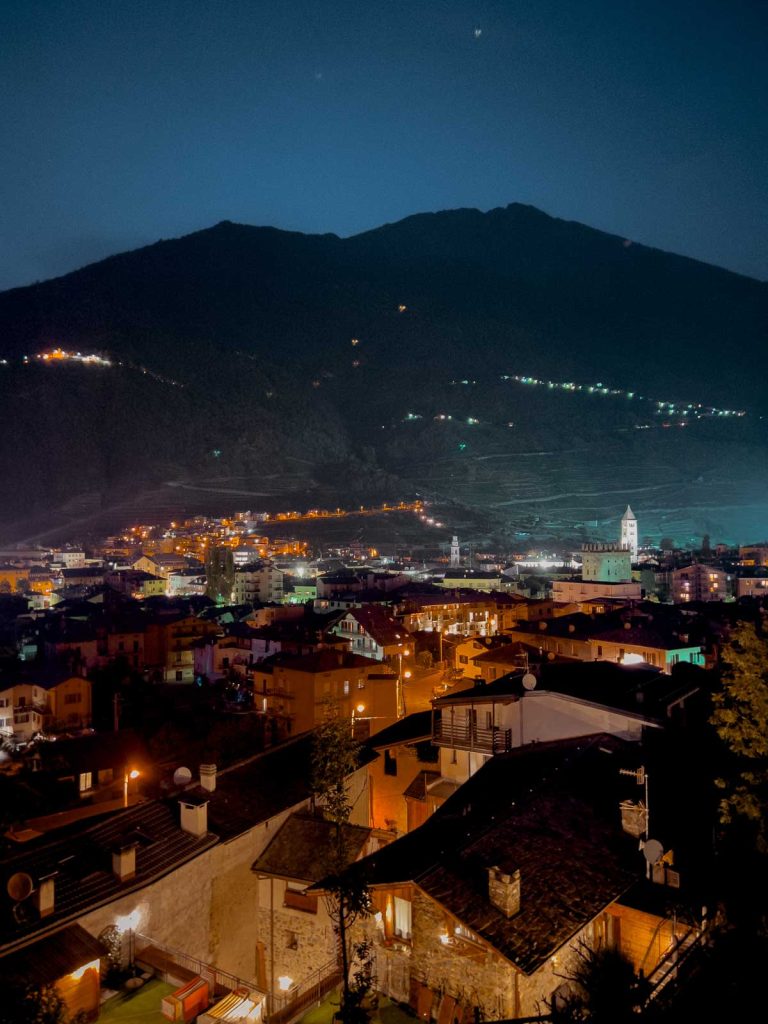
Things to do in Tirano
- See the Basilica of the Madonna di Tirano, a 16th century Renaissance-inspired church dedicated to Mary after she appeared to a local man asking for a shrine in 1504 (as local legend goes)
- Enjoy some Valtellinese cuisine, I loved Parravicini Restaurant but some other top-rated ones are Posteria Del Rosso and Merizzi
- For a classic pizza dinner, head to L’Hostaria Ristorante
- Try some local wines at the wineries on the hills surrounding Tirano
- Ski in winter or explore by e-bike in summer

Where to stay in Tirano
Budget | Hotel La Rotonda , Albergo Gusmeroli and B&B Antica Residenza Centro Storico are all cheap and well-rated
Mid-range | I stayed at Ostello del Castello , a great value guesthouse just a short walk from town and one of my favourite places I stayed in Europe. Basic but spacious and comfortable rooms, superb hospitality, and a rooftop terrace ideal for catching some rays while overlooking the town on a sunny day.
Self-contained | Casa Dolce Casa , Old Town Apartments and Holiday House Viola all have kitchen facilities
How to get to Milan from Tirano: An easy 2h 28m direct train
Train price: Tickets are just €12 so not worth using a travel day on a rail pass (but if you have an unlimited travel pass this train is included and doesn’t require seat reservations)
Milan isn’t as popular on the Italy tourist route as Florence, Rome and Venice, but if you can fit a couple of days in Milan into your Europe itinerary you will find plenty to see, do and eat. It also serves as an easy hub for rail travel, with connections to cities in Switzerland, Germany, France, Austria and more.

Things to do in Milan
- See the Duomo di Milano , one of the largest cathedrals in the world and the most iconic landmark of the city. Book a skip-the-line ticket to save time, you can choose a cathedral and rooftop ticket (optional audio guide add on) or you can get a cheaper ticket to the rooftop terraces only (no church) .
- Right next to the Duomo you’ll find Galleria Vittorio Emanuele II, a glass-covered arcade packed with luxury clothing stores. Go for sunrise to see it quiet, it fills up by around 9am and will be busy the entire day.
- Take a guided tour of the Teatro alla Scala and learn all about the theatre’s history and past performers
- Visit Santa Maria delle Grazie, a church that hosts da Vinci’s Last Supper. Tickets book up well in advance through the official website, so if you miss out then you’ll need to book a skip-the-line ticket with a guided tour .
- Architecture nerds won’t want to miss the Basilica of Sant’Ambrogio
- And football fans might want to visit the museum at San Siro Stadium, or better yet, do a guided tour
- Enjoy an evening of aperitivo in the vibrant Navigli district
- This one sounds strange but hear me out, you have to visit the Starbucks Reserve Roastery near the Duomo! It’s the fanciest Starbucks I’ve ever seen, complete with an authentic Italian menu, cocktails like espresso martinis and Aperol Spritz’, and for digital nomads it’s one of the only cafes in the city that offers unlimited free WiFi
For more things to do in Milan, check out my two day Milan itinerary

Where to stay in Milan
Budget | I stayed at Ostello Bello Grande , part of an Italian hostel chain with top-rated hostels in a bunch of major cities. The hostel is a one minute walk from Milano Centrale which is ideal for rail travellers, it has a beautiful rooftop with great views across the city, and there are loads of events to make friends.
Mid-range | Rosso Segnale Milano , Milano Dreams and B&B La Terrazza di Barbara are my top mid-range picks, all rated above 9.5/10 on booking.com
Luxury | INTOMilan Aparthotel is a brilliant option for affordable luxury, ODSweet Duomo Milano is a brand new ultra-Instagrammable hotel, or Hotel Indigo Milan is a classic
For a view of the Duomo | For the classic balcony/window shot of the beautiful cathedral, check out Duomo Cathedral View (aptly named!) or Unique Duomo Luxury Property
Cinque Terre
How to get to Cinque Terre from Milan: Direct train from Milan to La Spezia (3h 10m-3h 30m), then short trains to the villages.
Train price: The train to La Spezia is pretty cheap (€10-€25 depending on how far in advance you book), then you can take trains between the five villages with a €7.50 train card between March 24 and November 6. If you visit outside of these dates then that’s the off season and trains between the villages are free.
Seat reservations: Depends on the route, some don’t require reservations, some require €5 reservations and some require €12 reservations
The Cinque Terre was one of the first truly ‘Instagram-famous’ destinations when social media really started taking off, and the colourful seaside villages have been appearing on our feeds all through European summers ever since.
If you only have a day for the Cinque Terre then you’ll be able to see all the villages by using the train, but if you’d like to explore each village more in-depth, try some of the hikes between the villages or add on a boat trip along the coast then two or three days would be better.
Keep in mind that the Cinque Terre gets extremely busy from May through to September/October (July/August are slightly less busy because of the summer heat), and chances are you’ll be jostling for photo spots, waiting for restaurants and dealing with loads of people on the hiking trails. This isn’t to put you off visiting, it’s just to ensure you know what to expect so you aren’t disappointed!

Things to do in the Cinque Terre
- Visit each of the five villages: Riomaggiore, Manarola, Corniglia, Vernazza and Monterosso
- Take a dip at Monterosso al Mare, the only sandy beach in the Cinque Terre, and home to those famous orange and green striped umbrellas
- Explore the coast by foot with one of the many hikes between the villages. The Blue Trail is the most popular track, it used to connect all five villages but was damaged by a landslide in 2012 and the route is now limited to the Monterosso – Vernazza – Corniglia sections which are 7.6km long in total. The famous Via dell’Amore (the Path of Love) from Riomaggiore to Manarola is closed until at least May 2024.
- See the coast from the water, particularly amazing in the afternoon as the sun starts to set and the colourful houses seem even more vibrant than usual. You could do this 1.5 hour kayak tour, a 3 hour kayak + snorkel tour or a full day boat tour.
- Eat lunch at Nessun Dorma, the Cinque Terre’s most well-known restaurant with stunning views overlooking Manarola. The line is always long but you can skip it by downloading the Nessun Dorma app and saving your spot while making your way there.
- Try Pesto Genovese, one of Liguria’s best-known culinary specialties
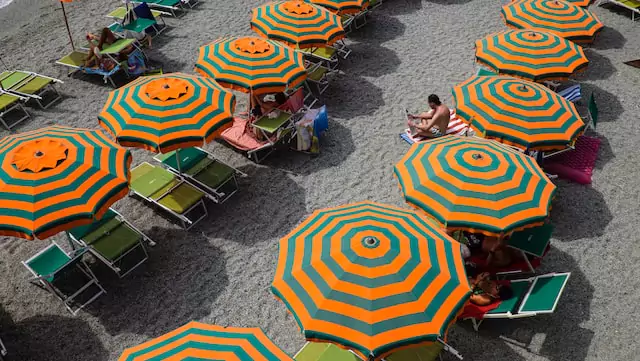
Where to stay in the Cinque Terre
Staying in the villages themselves can be quite pricey (understandably) but gives you better access to the area outside of peak day tripper hours, but for more affordable accommodation I’d recommend staying in La Spezia and then travelling to the villages during the day.
Budget | Ostello Tramonti , La Cesarina or Casa Macaia in La Spezia, or La Rosa dei Venti in Monterosso if you want to be amongst the villages
Mid-range | La Casa dei Treni Affittacamere in La Spezia, A cà da Alba Rooms in Monterosso or AMARE IL MARE Affittacamere in Corniglia
Luxury | Grand Hotel Portovenere or La Spezia by the FIrst
Day trips to Cinque Terre
If you don’t have time to spend a night in the Cinque Terre, you can join organised tours from both Milan and Florence .
Florence via Pisa
How to get to Florence from Cinque Terre: There are regional trains running constantly throughout the day to get from La Spezia to Florence, most of which have a short change in Pisa and the total travel time ranges from 1h 32m to 2h 36m.
Train prices: Tickets are cheap, typically between €14.40 and €18.80 so it wouldn’t be worth using a travel day on your rail pass.
It’s super easy to stop in Pisa to see the Leaning Tower on your way from the Cinque Terre to Florence, there’s luggage storage available at the station (most European stations have this option, usually €5-10 per large locker for a half day) so you can pay to store your suitcases and then walk 20 minutes from the station to the tower.
With Renaissance architecture to marvel at around every corner, fresco-filled churches to visit, and a seemingly endless list of sculptures, paintings and other masterpieces to admire, Florence has enough to satisfy even the most cultured travellers.
If the idea of gallery after gallery bores you then don’t stress, the city also boasts some of the country’s best restaurants, a fantastic shopping scene and easy access to the Tuscan countryside.

Things to do in Florence
- See the most iconic of all of Florence’s beautiful buildings, the Duomo Santa Maria del Fiore. Lines are always long but you can buy skip-the-line tickets with a guided tour , or this Duomo complex ticket includes access to climb the dome itself
- Say hello to perhaps the most famous statue in all of Europe, Michelangelo’s David, at the Accademia Gallery
- Visit the Uffizi Gallery , home to one of the most impressive collections of Renaissance artwork, including masterpieces from da Vinci, Botticelli, Michelangelo and Raphael, to name a few
- Try a sandwich from the original All’Antico Vinaio, the most-reviewed sandwich shop in the world with a 4.6/5 rating from more than 31,000 reviews. It’s worth the wait in line, I promise!
- See the city through Leonardo da Vinci’s eyes with a da Vinci-themed walking tour
- Window shop at the jewelry stores along the Ponte Vecchio
- Buy a genuine leather belt or bag from the artisan leather workshops in and around Piazza Santa Croce
- Visit the Basilica of the Santa Maria Novella and see art from Giotto, Masaccio, Filippo Brunelleschi and more
- Try your hand at making your own Italian dishes with a cooking class, I did this top-rated cooking class and central market tour on my last visit to Florence and now I’m obsessed with making pasta from scratch
- Watch the sunset from Piazzale Michelangelo or Basilica di San Miniato
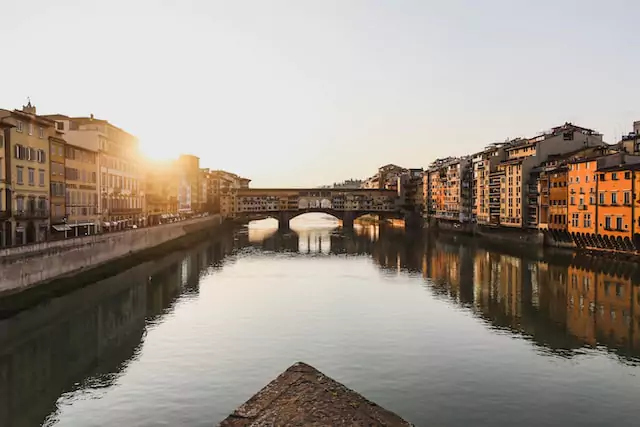
Where to stay in Florence
Budget | I stayed at YellowSquare Florence , a fantastic social hostel with brilliant facilities including a full kitchen, a rooftop bar with swimming pool, co-working areas and even a recording studio! I had a private room which had a desk (ideal as I was slammed with work) but the dorm rooms look super nice too.
Mid-range | For a mid-range budget consider Morandi alla Crocetta , 3110 ArtHotel , Room Mate Luca , Solo Experience Hotel and Residence Leopoldo
Luxury | For a fancy stay check out Villa Cora , Relais Santa Croce , Four Seasons Firenze or The Place Firenze
Self-contained | Some top-rated options with kitchens/kitchenettes are Urban Retreat , Oro Nero Florence , Geppi’s Apartment and Donati Luxury Tower Suites
How to get to Rome from Florence: High-speed direct trains take around 1h 30m
Train prices: These trains range from €14.90 to €50 depending on how far in advance you book
Seat reservations: High speed trains require seat reservations (€12). There are slower regional trains that don’t require reservations, these take around 3h 30m.
Ahhh Roma, the Eternal City that’s packed to the brim with rich culture, fascinating history, mouthwatering cuisine and a thriving nightlife and entertainment scene. Rome is one of those places where you’ll discover something new and interesting around every corner, so set aside a decent chunk of time to explore if you can.

Things to do in Rome
- Say ciao to the Pope with a visit to the Vatican, its museums, and the breathtaking Sistine Chapel. Once again, the lines will be long so a skip-the-line ticket is the best idea if you want to make the most of your time.
- See the Colosseum. Controversial opinion perhaps but I don’t think going inside the Colosseum is a must-do, I personally have only seen it from the outside on my three visits to Rome and I’m not enough of a history buff to be willing to brave the crowds. If you do want to go inside, get a skip-the-line ticket or book a guided tour to get the full experience.
- Marvel at the view from Altare della Patria. This is my all-time favourite ‘hidden gem’ of Rome and something that flies under the radar, it’s a rooftop terrace with the most incredible views across the city and its landmarks. You can catch the elevator to the terrace for only €7 (no need to book online through a travel agent or experience provider, these tickets are basically exactly the same but cost three or four times the price!), or if you’re on a tight budget you can access the terrace for free via stairs inside the monument.
- Eat and drink in the trendy Trastevere neighbourhood, which is full of cheap and cheerful trattorias, a bustling nightlife scene and funky shops. My go-to Trastevere meal is always Donkey Punch, a quirky rock’n’roll-themed sandwich bar with craft beers on offer too.
- Throw a coin into the Trevi Fountain for good luck
- Live out your Lizzie McGuire Movie dreams with a Vespa tour
- Find the Aventine Keyhole and see the perfectly-framed view of St Peter’s dome

Where to stay in Rome
Budget | YellowSquare Rome , the RomeHello and Ostello Bello Roma Colosseo are all top-rated budget options
Mid-range | The Point Suites , Relais Roma Vaticano, Hotel Balilla , Hotel Margherita and At Forty-One
Luxury | Maalot Roma , Umlita 36 , Fendi Private Suites , Baglioni Hotel Regina , Hotel Vilòn and the St Regis
Self-contained | Residenza Roma Imperiale , Trastavere 2.0 , My Bed Vatican Museum and Colosseo Accommodation Room Guest House
Optional: Bologna
How to get to Bologna from Rome: Bologna is an easy stop between Rome and Venice, it’s just over two hours from Rome (€12 seat reservation) and then it’s between 1h 20m and 2h 10m to get from Bologna to Venice (€12 seat reservation for the high speed train, no reservation needed for the slower regional trains). You can store your bags in secure lockers at Bologna train station while you’re exploring the city.
How long to stay: A day trip is sufficient
I’ve put Bologna as ‘optional’ because many first-time Europe travellers may not have even heard of it, but if you enjoy Italian food it is absolutely a must-do. Bologna is the gastronomic capital of Italy, which is saying something in a country that is renowned for its cuisine!
Bologna has many, many eateries serving up local specialties, from cured meats and cheeses to traditional pasta to creamy gelato. I’d looove to stay for a week and just try a new dish every meal, but if you are pressed for time then a day trip with a food tour is how I’d recommend seeing Bologna during this two month Europe itinerary.
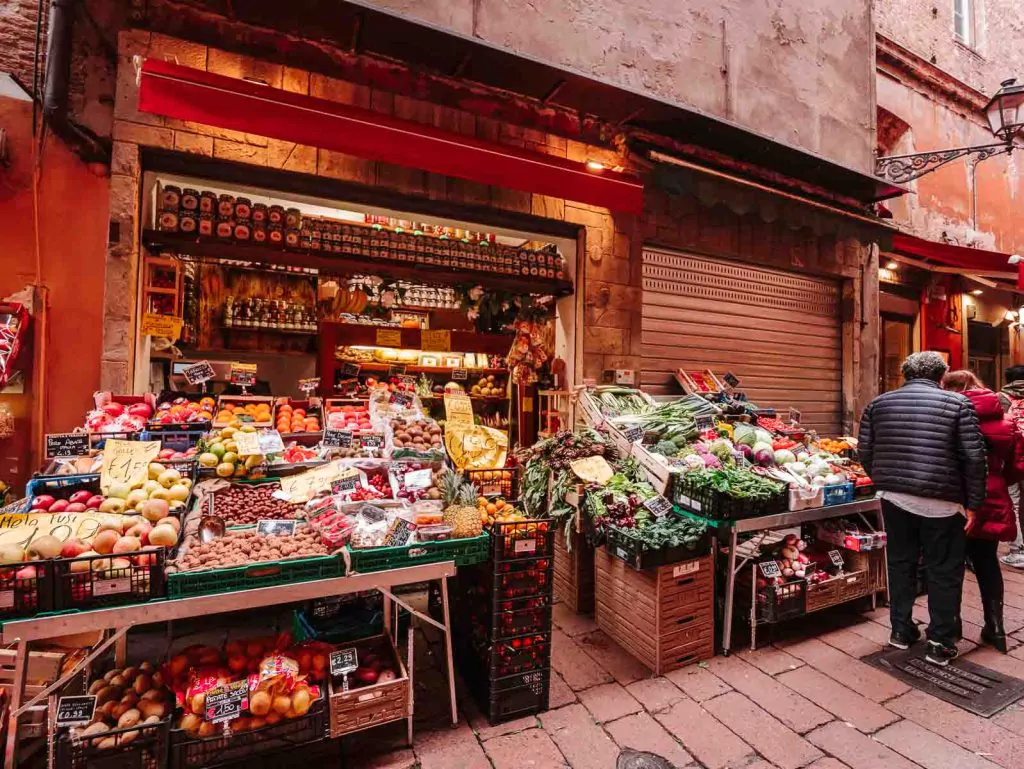
Things to do in Bologna
- A food tour is by far the best way to experience Bologna, especially if you’re limited to a day trip. I went on a food tour with Mattia from Delicious Bologna , his tours have a perfect 5/5 rating on Google from more than 220 reviews. The tour was one of the best food tours I’ve ever been on, it had the perfect mix of food, history and culture, each dish was divine, and I came away knowing so much more about Italian cuisine and produce which then helped me try new foods during the rest of my time in Italy. I genuinely can’t rave about this tour enough, it was a highlight of my two months in Europe.
- Stand under the leaning towers of Bologna, one of them even leans more than Pisa!
- If you’re visiting in summer, Bologna holds a cool summer festival that has free outdoor movies playing at Piazza Maggiore
- See the bizarre two-tone façade of the San Petronio church, which isn’t an unusual design but actually stands unfinished since 1479

How to get to Venice from Bologna: A short, cheap train ride, 1h 20m for high speed trains or around 2h for regional trains
How long to stay: 3-4 days
Venice is another love-hate destination, and it is perhaps the European city that has been most affected by overtourism in the past few decades. The floating city has no way to grow, so the ever-increasing number of tourists end up pushing locals out of their homes to make way more hotels and B&Bs, cruise passengers and day trippers try to cram the entire island into a six hour itinerary, and we all end up with massive lines, unhappy Venetians and frustrated travellers.
And while it may seem counterintuitive, one of the ways to combat overtourism is to stay longer in a destination. This means you aren’t under as much time pressure to see and do everything in a day, you can avoid peak times at the major tourist sights, and you can get a much more authentic experience enjoying slow walks and long meals compared to a hectic day trip.
I recommend at least three or four days in Venice to give yourself time to truly enjoy the city, keeping in mind that from 10am to 4pm you might want to avoid the major landmarks as they’ll be packed with fellow tourists.
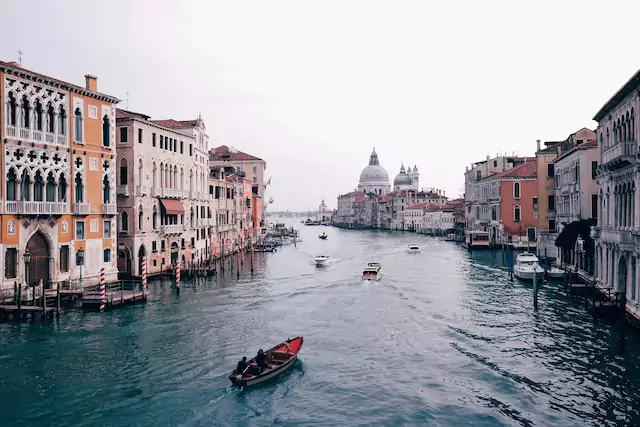
Things to do in Venice
- Take a gondola ride on the Grand Canal. Gondola rides have a standardised price of €80 during the day or €100 after 7pm for a 30 minute tour, and boats can fit up to six people. If you’re travelling solo and don’t want to splurge on a private gondola tour then you can book a shared gondola ride online for around €30 , or you could ask around at your hotel/hostel to see if there are any other solo travellers who might want to share the cost.
- Walk over the iconic Rialto Bridge
- See the magnificent paintings that adorn the walls and ceiling of Doge’s Palace , as well as the 12th/13th century gold mosaics inside St Mark’s Basilica
- Have a go at creating your own glass souvenir with a private lesson from a master artisan , this experience is only €60 which is incredibly cheap for such an authentic local experience
- Catch a vaporetto (water bus) to Burano, famous for its colourful houses, and Murano, famous for its glass workshops and galleries
- Experience the city’s gastronomy with this food tour which includes 15 food tastings!
- Visit Acqua Altadi Venezia, the floating bookshop for a cool photo spot

Where to stay in Venice
Budget | Unfortunately my go-to Venice hostel (Wombats Cenice Mestre) shut down due to Covid, but Generator Venice (7.9/10) and Ostello S. Fosca (8.4/10) are the top-rated hostels on booking.com, otherwise there’s cheap private rooms at Hotel dalla Mora , Locanda Silva and Hotel La Residenza
Mid-range | Check out Scalon del Doge , CàPatron , La Veneziana Boutique and Relais Venezia
Luxury | Hotel Metropole Venezia , Ca’di Dio , Palazzo Nani Venice and the absolutely incredible Gritti Palace for something super special
Self-contained | Cà Sant’Angelo , Hotel Rialto and Ai Patrizi di Venezia have options with kitchen facilities
The Dolomites
How to get to the Dolomites from Venice: An easy train journey with one change in Verona, the trip takes anywhere from 2h 45m to 3h 45m depending on the transfer time.
Seat reservations: Some journeys are with regional trains that don’t require reservations for rail pass holders, some have just the initial Venice to Verona train as requiring €12 reservations, some require reservations on both trains so €24 total.
The Dolomites are a mountain range in Northern Italy, and they’re home to some of the most picturesque landscapes you’ll find in the whole of Europe.
In the warmer months the Dolomites are a hub for hikers, bikers and climbers, with plenty of trails for adventurers of all ages and fitness levels. In winter the Dolomites Superski region boasts 15 ski resorts, more than 1200km of slopes and plenty of bars and restaurants to continue the fun after a day on the mountains.
In the Dolomites it’s easiest to explore by car as the public transport isn’t super well connected, and wait times can cut into your short stay. Car rental can be quite cheap, there were deals for €25 per day when I was there in October, but in peak season it would be best to book ahead if you can.
Keep in mind that non-European drivers need an international drivers license in Italy, your own country license won’t cut it. Rental companies might let you hire a car without one but if you’re involved in any accidents (not unlikely in Italy!) you won’t be covered by insurance without an international license, and if you’re pulled over for any reason then chances are you’ll get stung with a hefty fine.

Things to do in the Dolomites
- Go to Lago di Braies for sunrise, pure magic (though chances are you’ll be there with many photographers)
- Head to Lago di Carezza for picture-perfect reflections of the mountains, I’m sure this place is busy during peak season but I visited at sunset at the end of October and had the whole place to myself
- Spend a day at Alpe di Siusi, the largest alpine plateau in Europe. You can take the Mont Seuc cable car from Ortisei, then walk two hours to the other side and take the Seiser Alm cable car back to the the Valley Station, where you can catch a short bus back to Ortisei.
- Experience the unique South Tyrolean cuisine, which incorporates Italian, German and Austrian ingredients and cooking techniques
- Try some of the best pasta in the world at Pastalab in Bolzano, their menu changes daily with seasonal specialties and honestly my mouth is watering while typing this. Don’t miss it.
- Explore the hiking trails of Tre Cime di Lavaredo, some notable options are the Cadini di Misurina viewpoint and the Rifugio Auronzo loop
- Another must-do hike is the Seceda ridgeline, if you can hack a super early wake up then arriving here for sunrise will be well worth it
- If you’re up for a physical and mental challenge, consider a via ferrata, a climbing track that has iron rungs attached to the rock as well as a steel cable that climbers connect to with carabiners. My first via ferrata was the Wildwire waterfall climb in Wanaka, New Zealand and I absolutely loved it, so a Dolomites via ferrata is very high on my list for my next visit.

Where to stay in the Dolomites
There are so many different villages in the Dolomites and it would take hours to give you recommendations for different budgets for each village so I won’t do that.
Bolzano is the capital city of South Tyrol and is the gateway to the Dolomites, you can stay here and do day trips by bus or car, or you could arrive here by train and then catch local transport to one of the villages in the Dolomites, like Ortisei in Val Gardena, Colfosco or Corvara in Alta Badia, or Villabassa or Braies in Upper Puster Valley.
Where I stayed | I stayed at the LOOM Hotel in Bolzano which was super unique, it’s actually a living showroom for an interior design company who wanted to showcase what they could offer hotels around the world, and their rooms double as accommodation for travellers. Such an incredible idea for sustainable tourism and the rooms are truly something else!
Salzburg or Innsbruck
How to get from the Dolomites to Salzburg: Either a direct train or a journey with one or two stops, reservations dependent on the journey you choose
How long to stay: 2 days (accounting for a day trip at the one you aren’t staying in)
Though Salzburg’s main drawcard are its connections to music (as in ‘The Sound of’, as well as Mozart), it’s also well worth a visit to get into a more relaxed pace of tourism after the chaos of Italy. Explore the historic old town, get the best view from Festung Hohensalzburg, see the sheer opulence of grand palaces and search for the city’s most delicious schnitzel and strudel.
Innsbruck has a more modern vibe, not in the architecture but in the energy of the city, the gastronomy, and particularly in the apres-ski scene.
For your two month Europe itinerary you could choose one to stay the night in and one to stop at for a day trip on your way between the Dolomites and the next stop of Vienna.
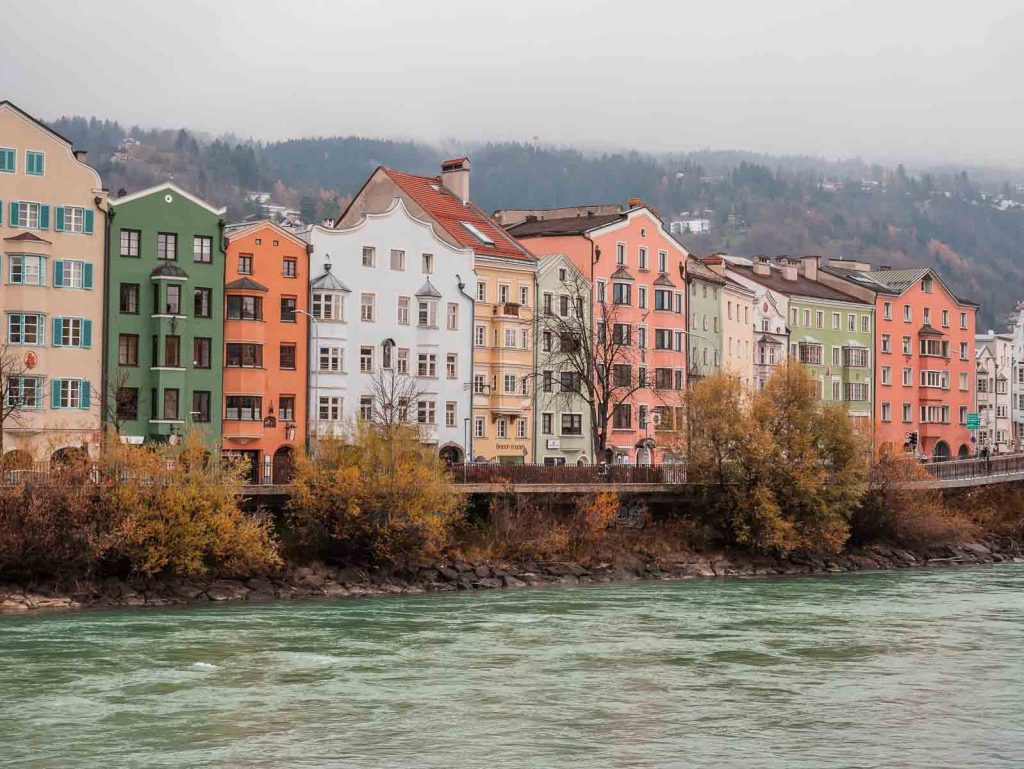
Things to do in Salzburg
- Book a Sound of Music tour to see the city from Maria’s eyes
- Catch the funicular up to Fortress Hohensalzburg for the best view of the city, then walk down the path to get back to the Old Town
- If you’re interested in medieval history, you can buy a ticket to the exhibits at the Fortress and learn more about the building’s past
- Walk through the magnificent halls and gardens of Schloss Mirabell, a 1606 palace, or see the fairytale-esque summer palace, Schloss Hellbrunn where you can find the iconic Sound of Music gazebo
- Enjoy the symphonies of Mozart with a variety of Mozart-related activities, from visiting Mozart’s birthplace (now a museum), to watching a Mozart concert at Mirabell Palace , to a Life of Mozart walking tour around the city
- Take a day trip to the Eagle’s Nest , Hitler’s vacation home in the Bavarian Alps, one of the few Third Reich buildings that remains in its original state today, complete with a marble fireplace gifted to Hitler by Mussolini. If dark tourism isn’t your thing, it’s worth going just for the sweeping views of the valley below.
- Watch the daily organ performance at the spectacular Salzburg Cathedral
Things to do in Innsbruck
- Stroll through the winding streets of the Altstadt (Old Town), where you can see vibrant facades, ornate doorways and classic Tyrolese architecture
- Climb up the City Tower if you’re visiting on a clear day, you can see right over the Old Town colourful buildings and out to the mountains that surround the city
- Spot the grandiose Golden Roof, a Gothic viewing box built in 1496 with gilded copper tiles giving it a metallic shine
- Catch the Hungerburgbahn funicular up to Nordkette, the closest mountain to Innsbruck that offers scenic viewpoints and restaurants
- Find the city’s best schnitzel, I rate Altstadt-Schmankerl as a top contender!

Where to stay in Salzburg
Budget | I stayed at MEININGER Salzburg , a hotel/hostel hybrid with dorm rooms, private rooms, guest kitchen, laundry facilities, hotel bar and bikes for rent. Slightly out of the city but right next to a bus stop, a great budget option. Other cheap options are YoHo Youth Hostel , Stadtalm Naturfreundehaus and The Keep Eco Rooms .
Mid-range | Gästehaus im Priesterseminar Salzburg , Hotel Max 70 , B&B Villa Verde and Boutiquehotel am Dom
Luxury | Hotel Bristol , Goldgasse , Hotel Goldener Hirsch and Hotel Sacher Salzburg
Self-contained | Villa Leopoldskron , Villa Maxglen , Mozart’s Garden Villa and Villa Salzburg
Where to stay in Innsbruck
Budget | Montagu Hostel , MEININGER Innsbruck Zentrum and Pension Stoi
Mid-range | Hotel Neue Post , Hotel Mondschein , Nala Individuellhotel and Faktorei
Luxury | Hotel Maximilian , the PENZ Hotel , aDLERS Hotel Innsbruck and Altstadthotel Weißes Kreuz
Self-contained | Kaiser Max Design Apartments , Apartment Mischa , Quartier 99 and Prada Elf Apartment
How to get to Vienna from Salzburg or Innsbruck: Direct train from Salzburg (2h 25m-2h 55m depending on the train) or direct train from Innsbruck (4h 20m-4h 50m) with an optional stop in Salzburg for a day trip.
Seat reservations: Seat reservations generally aren’t required in Austria but Austrian inter-city tickets are typically quite cheap so check the ticket price before using a Eurail travel day to make sure it’s worth it.
Vienna is brimming with culture, from extravagant coffee houses (with equally extravagant desserts), to countless museums and galleries, to architecture that is mostly Baroque but also spans the Gothic, Renaissance and Rococo styles.
Vienna is what you make of it, my favourite kind of city. Foodies can fill their time with food tours, sweet treats and traditional fare, travellers with an interest in history are spoilt for choice with heritage buildings and world-class museums dotted all over the city, and photographers will love the opportunities provided by Vienna’s unique architecture and fascinating interiors.

Things to do in Vienna
- See the city with a free walking tour, by far the best way to get your bearings
- Relax with a coffee and a sweet treat at one of the famous coffee houses, Café Central and Café Landtmann are two of the most famous ones, but there are many, many more to discover
- Take a 2.5 hour food tour through the bustling Naschmarkt to learn about Vienna’s culinary specialties, or try a longer four hour food tour through the city which includes a coffee house, the market, a bakery and a chocolate shop. Yum!
- Learn about one of the first famous solo female travellers, Empress Sisi. She was the Empress of Austria and Queen of Hungary but hated the rules and regulations that came with her royal titles, so she fled her responsibilities and travelled solo whenever she got the chance.
- Ride the rollercoasters at Prater themepark
- Visit the breathtaking State Hall at Austria’s National Library
- Try a käsekrainer from a würstelstand, one of the best cheap eats in the city
- Have a schnitzel dinner, you’ll find it on pretty much every restaurant menu but the best-rated ones in the city are Figlmüller, Gasthaus Kopp, Schnitzelwirt or Restaurant Pürstner
- Head up St Stephen’s Cathedral for sunset from the rooftop
I’ve got a detailed Vienna travel guide if you want more info on things to do in Vienna

Where to stay in Vienna
Budget | Vienna is home to one of the best hostels in Europe, JO&JOE Vienna . This place truly has everything you could wish for in a hostel; guest kitchens, onsite restaurant, laundry facilities, a rooftop with epic views, funky dorms with privacy blinds, spacious private rooms, loads of fun events, a big screen for movies and sports games, work-friendly spaces and more. Phew!
Mid-range | Boutiquehotel Das Tyrol , Rioca Vienna Posto 2 , Superbude Prater and ARTIST Boutique Hotel
Luxury | Rosewood Vienna , The Leo Grand , Hotel Sans Souci and Hotel Sacher
Self-contained | Karl und Anton Boutique Apartments , Oliver Apartments and URBM Rise
Day trip to Bratislava
How to get to Bratislava from Vienna: RegioJet and FlixBus have buses from as low as €4 which take between 40m and 1h 20m depending on the time of day, or if you’re totally set on train travel you can get a direct train from €10 which takes an hour
Slovakia’s capital city is an easy day trip option from Vienna, with a vibrant old town that you can explore with 5-6 hours on the ground. If you’ve got a day to spare during your time in Vienna then a Bratislava trip lets you see a new country and experience a city with fascinating history.

Things to do in Bratislava
- Take a short but steep walk up to Bratislava Castle for the best view in town
- See the Blue Church (actual name St Elizabeth’s Church), an Art Noveau church that looks like it’s straight out of The Smurfs. Its opening hours are random and changeable, currently it’s open from 6.30-7.30am Monday to Saturday, 7.30am-12pm Sunday (for services I presume), and 5.30-7pm seven days a week. It’s worth going inside if your timing is right, the interior is a mix of baby blue and yellow with intricate details if you look closely.
- Enjoy prices being a little cheaper than the other parts of Europe you’ve seen so far!
- Get a cheap lunch at Funki Punki Pancakes, my go-to eatery in Bratislava. They’ve got a brilliant menu of crepes (both sweet and savoury) with prices sitting between €2.20 and €3.50 each.
- Wander through the Old Town past bright buildings, medieval streets, quirky statues and trendy boutiques
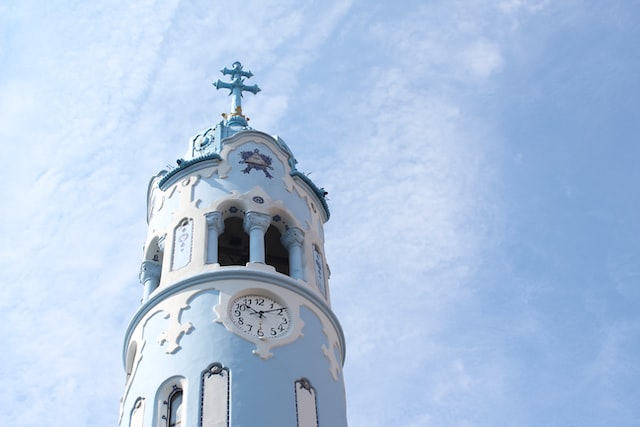
How to get to Budapest from Vienna: There are a few trains that run direct from Bratislava to Budapest but most of them go via Vienna anyway, so I’d recommend heading back to Vienna to pick up your luggage and going to Budapest from there.
Vienna to Budapest is an easy direct train that takes around 2h 41m, no rail pass reservations needed for most routes but tickets can be as cheap as €9 if you book in advance, check the price to buy outright before using a travel day on your rail pass.
Budapest is a fascinating city with a magnetic energy that attracts party-goers, history buffs, budget travellers and culture vultures alike, with things to fill the itineraries of every type of tourist.
You can see the major sights with two to three full days but if you have extra time and want to stay longer, you certainly won’t get bored.
One thing to note is that while Budapest has always been known as one of the best value destinations in Europe, Hungary is currently dealing with a cost of living crisis with inflation sitting at 22.5% in November according to WorldData , and the inflation rate for food in particular was 47.1% compared to the previous year. It was noticeably more expensive during my visit in December 2022 compared to my previous trip in 2019, so don’t be shocked if things don’t turn out to be as cheap as you initially expected.

Things to do in Budapest
- Watch the sunrise from Fisherman’s Bastion, where you’ll find the most incredible view of the city and the Danube
- While you’re up there, explore Buda Castle and the museums and galleries inside it
- See the city from the river with a Danube cruise
- Head to the Great Market Hall to buy some local meats, cheeses and produce
- Have a drink (or five) at Budapest’s iconic ruin bars
- Grab some street food from Karavan, a permanent food stall market near the ruin bars
- Relax and rejuvenate at the thermal baths , Széchenyi Baths and Gellért Baths are the most popular ones
- Learn about the city’s tumultuous past with a walking tour through the Jewish Quarter
- Visit my favourite bakery in the city, Aran, and try their famous cinnamon bun
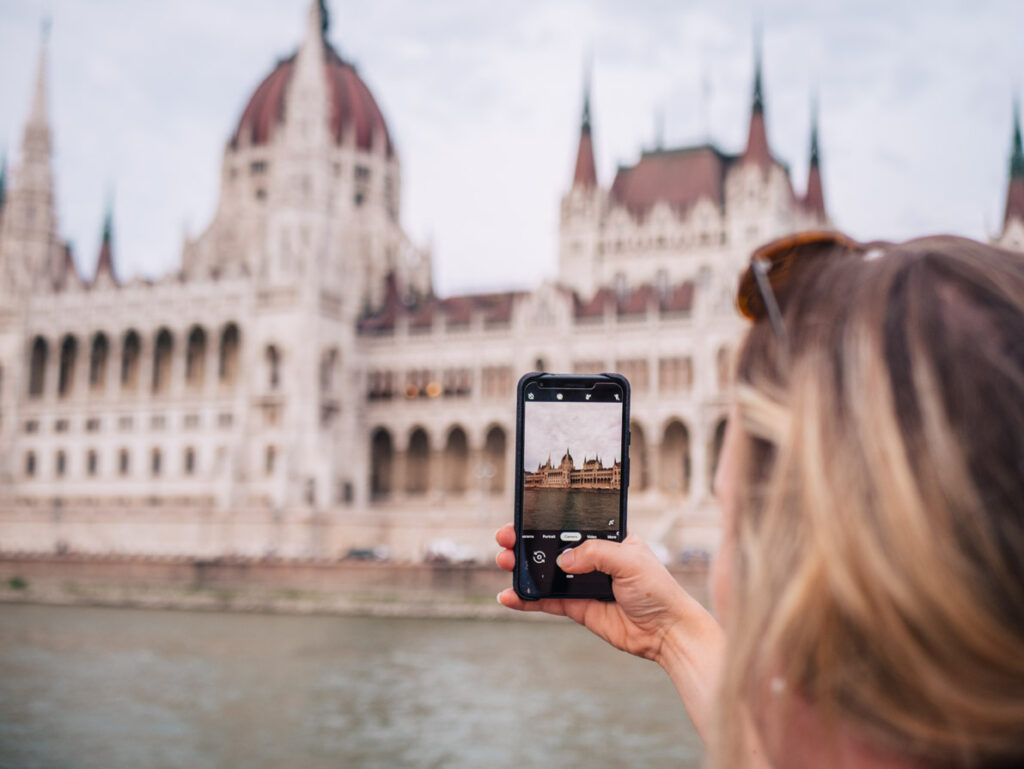
Where to stay in Budapest
Budget | I recently stayed at Flow Spaces which offers light and bright private rooms and dorm rooms, kitchen facilities and a dedicated workspace, the perfect option for digital nomads. I had a private room and loved it, I’d happily stay here for an extended period of time. I’ve also stayed at the quirky Das Nest Hostel which was ideal for a trip with friends, and other top-rated options are Hive Party Hostel and Hostel One .
Mid-range | Dob Twenty Rooms , LILIOM Apartment and OktoHome Suite are all great value apartment options, or for a mid-range hotel look at Global Suites Budapest or B&B Hotel Budapest City .
Luxury | For something sophisticated, consider staying at Alice Hotel , Hotel Memories Old Town or Hotel Moments Budapest .
Ultra luxury | If you’re celebrating something special in Budapest or just feel like treating yourself, you can’t go past the opulent Párisi Udvar Hotel Budapest or Matild Palace .
How to get to Prague from Budapest: Direct or one stop trains (stop in Vienna or Brno usually) that take between 7-8 hours.
Seat reservations: Some routes don’t require seat reservations, some require them at a cost of €6 so quite cheap.
Train prices: Outright tickets can cost as little as €18 for early or late trains when booking in advance, but could be as expensive as €110 for last minute bookings or popular times, so check prices before you decide to use a Eurail travel day.
Prague is another one of Europe’s top value cities with rich history, vibrant culture and striking architecture to offer.
While Prague didn’t totally evade bombings during WWII, it was significantly less affected than many other European cities so its historical monuments are mostly undamaged and sit in close proximity to one another, making it easy to explore on foot.
It’s also got an absolutely pumping nightlife scene, thanks to great beer, multi-storey nightclubs, and cheap flights from London making it a top choice for British lad stag dos.

Things to do in Prague
- Visit the Old Town Square, one of the most impressive in all of Europe. It dates back to the 12th century and is home to the Astronomical Clock, the Old Town Hall and the Church of Mother of God before Týn
- Stand below the Astronomical Clock on the hour between 9am and 9pm to see the procession of the 12 Apostles appear in the windows
- Climb the Old Town Hall tower to the observation deck to see Old Town Square from above
- Learn about the city’s political history with this top-rated communism and bunker tour
- Visit Prague Castle, one of the largest castle complexes in the world, occupying more than 70,000sqm. You could stroll through the Royal Garden, see the treasures inside St Vitus Cathedral, walk past colourful buildings down the charming Golden Lane and enjoy great views of the city before heading back to Old Town via Charles Bridge.
- Walking over Charles Bridge is a quintessential Prague experience in itself, the cobblestoned pedestrian bridge provides a great view of the castle on the hill as well as being able to see Baroque, Renaissance and Gothic architecture on the other side of the river
- Do a day tour to the Sedlec Ossuary , a.k.a. the Bone Church
- For something a little unique, walk down the river to reach the Dancing House, designed by Czech architect Vlado Milunić and the legendary Frank Gehry
- Try local brews with a historic pub tour
- Get amongst the buzzing nightlife with the legendary pub crawl

Where to stay in Prague
Budget | I stayed at Brix Hostel which was a social hotel, great for meeting people but not so great for digital nomads who need a quiet place to work. Other top-rated cheap accommodation options are Hostel Little Quarter , Sophie’s Hostel , Giotto Apartments , Hostel One Miru and Prague Dream Hostel .
Mid-range | Revelton Studios Prague , Hotel Residence Agnes , Hotel CUBE Prague , Allure Hotel Prague and Unitas Hotel
Luxury | The Julius , Four Seasons , The Grand Mark , Alchymist Grand Hotel and Hotel Republika
Self-contained | Mooo by the Castle , Hotel Diana and Malostranska Residence have options with kitchens/kitchenettes
How to get to Berlin from Prague: Direct trains run multiple times a day and take around 4h 15m
Seat reservations: No reservations required but you might want to book one (€8) during busy periods to ensure you get a seat
Train prices: They range drastically depending on the route, from €18.90 booking in advance to €90.60 for last minute tickets
Berlin is an essential destination for any Europe itinerary, it’s one of the best cities to learn about the atrocities that Europe suffered during WWII, the rise of communism in Eastern Europe and the subsequent reunification of Germany after many years of Berlin being split in two.
You’ve got the obvious landmarks, from museums to memorials to historical buildings that have been rebuilt and restored since bombs rained down on the city in WWII, but Berlin is also a unique melting pot of cultures, with a captivating arts and entertainment scene, superb culinary experiences and nightlife that rivals anywhere else in Europe.
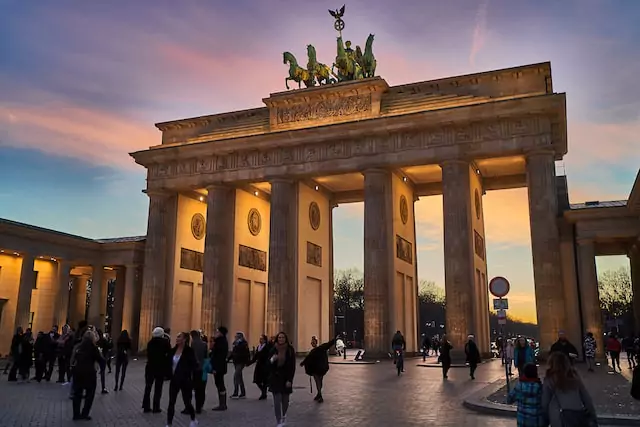
Things to do in Berlin
- Any visit to Berlin would be incomplete without a city tour of some kind, to understand Berlin’s history throughout the 20th century. Some top-rated ones are this small group Third Reich & Cold War walking tour , this 75 minute Trabi safari , and this Hidden Backyards walking tour .
- Iconic landmarks to see include Brandenburg Gate, the Reichstag Building, Checkpoint Charlie, the Holocaust Memorial, Berlin Cathedral and the Berlin Wall Memorial
- Stroll along the East Side Gallery, the longest surviving section of the Berlin Wall which is now an open-air gallery with politically-charged street art
- Take a hop-on hop-off bus around the city to tick off the big sights quickly and easily
- Head up to TV Tower for the best view of the city
- Visit the museums, there are plenty to choose from!
- Delve into Berlin’s gastronomic delights with a top-rated secret food tour
- Experience the legendary clubbing scene with a night out on the town

Where to stay in Berlin
Budget | Pfefferbett Hostel , BIG MAMA Berlin , Kiez Hostel , New Hostel and ArtHotel Connection (a hetero-friendly LGBT+ hotel)
Mid-range | Wil7 Boutique Hotel , Casa Camper , Hotel Indigo , Wilmina Hotel and Hotel Q!
Luxury | Hotel Zoo Berlin , Hotel Adlon Kempinski , Hotel Luc and Regent Berlin
Self-contained | The Weinert Suites , Gorki Apartments and Wilde Aparthotels
How to get to Amsterdam from Berlin: Direct trains available a few times a day taking around 6h 15m-6h 30m, or one stop options with a short transfer in Hannover taking a similar amount of time.
Seat reservations: Seat reservations aren’t required for rail pass holders but busy routes recommend reservations (€8) to guarantee a seat
Train prices: From €37.90 if you book in advance to €161 for some routes last minute
Amsterdam is easily one of Europe’s most picturesque cities, with narrow houses reflecting in the canals, markets overflowing with vibrant flowers, and stylish locals peddling around town making for brilliant street photography opportunities.
Like Venice, Amsterdam also suffers massively from overtourism and you’ll find that the city’s landmarks can get extremely busy, particularly during summer and on weekends. With three or four full days you’ll have time to see many of the major sights without needing to be rushed off your feet, but I’d recommend purchasing skip-the-line tickets where possible just to avoid queues that eat into your adventure time.
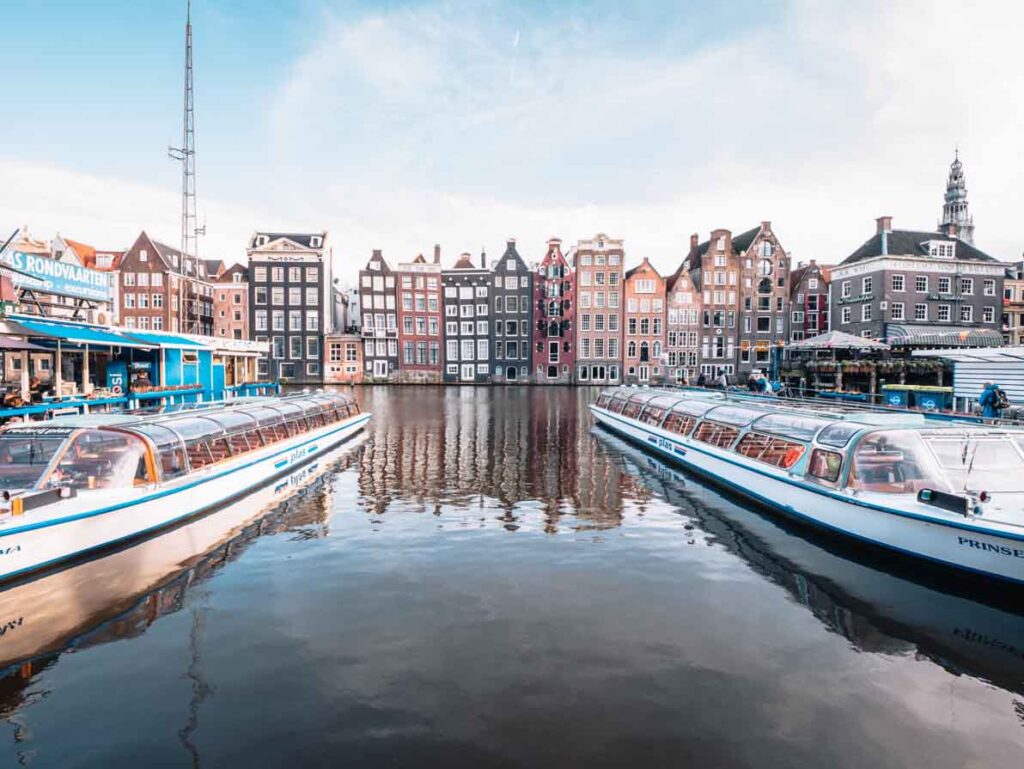
Things to do in Amsterdam
- Rent a bike and explore like a local, just be aware of all the rules so you don’t become a hazard
- Shop til you drop for vintage clothes, quirky souvenirs and stylish homewares. Amsterdam’s home and design stores in particular are beyond impressive and it hurts my soul to walk past them without being able to buy things. One day in the far future when I buy a house I’ll be coming straight to Amsterdam to stock up on knick-knacks to decorate my home.
- Hit the museums, some noteworthy ones are the Rijksmuseum for a deep dive into Dutch history and art, the Van Gogh Museum for Van Gogh masterpieces as well as works from his contemporaries, and the Moco Museum for more modern (read: Instagrammable) art
- If you’re a beer drinker, head to the Heineken Experience, an interactive self-guided tour through the beer behemoth’s former factory
- Visit Anne Frank’s house, now a biographical museum about Anne and her family
- Take a boat ride down the canal, there are plenty of cruise options ranging from budget-friendly tours to booze cruises to fancy dinner cruises
- Explore the Red Light District and get amongst Amsterdam’s infamous nightlife
- Experience Amsterdam’s growing brunch scene, I recommend Little Collins, Box Sociaal and the Lobby
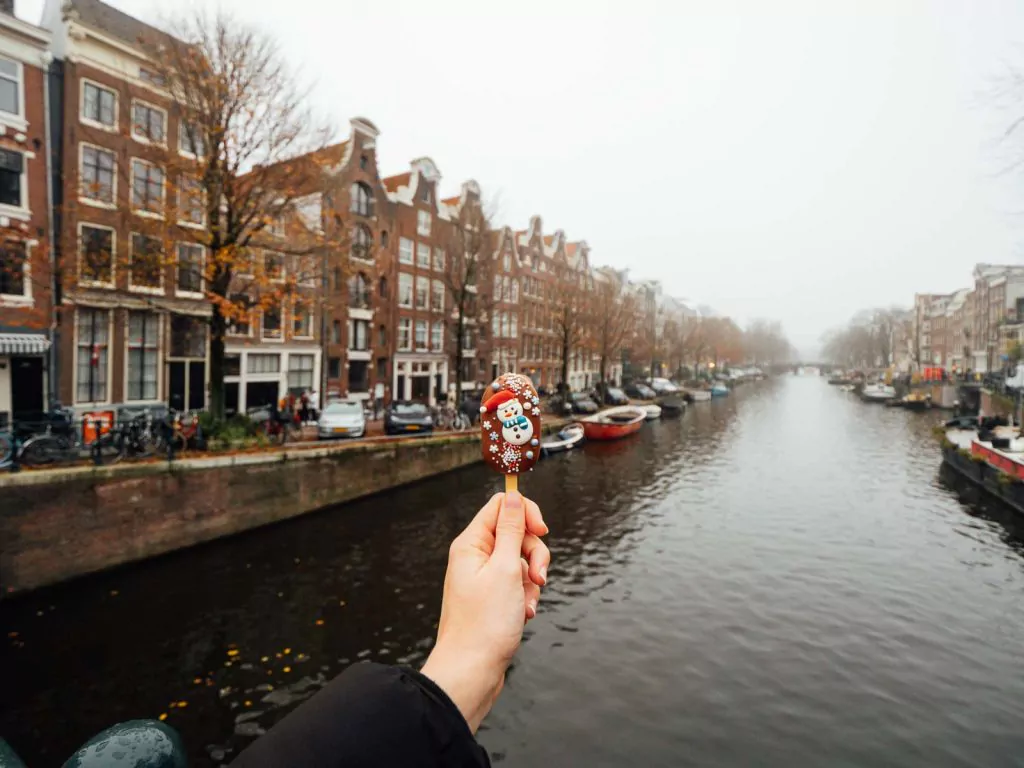
Where to stay in Amsterdam
Budget | On my most recent trip I stayed at MEININGER Amstel which was ideal, a hotel/hostel hybrid with comfy rooms, a full kitchen and a great location next to Amstel train station, ideal for rail travellers. Another great budget option is Hostelle , a ladies-only hostel which is perfect for first-time solo female travellers.
Mid-range | Outside Inn , Met Hotel , Villa Yburg ,and XO Hotels Couture
Luxury | Waldorf Astoria , Hotel TwentySeven , the Dylan , Conservatorium and De L’Europe
Self-contained | Treehouse Inn , Cityden BoLo , Social Hub and Hotel2Stay
How to get from Amsterdam to Bruges: A two-train journey with a change in Brussels (could stop for a day trip if you want)
Seat reservations: Seat reservations are usually required on the first train at a cost of €22, but there are some no-reservation options a few times a day that take closer to four hours
Train prices: From around €65 to €120 depending on when you book
The final stop in this epic 2 month Europe itinerary is Bruges, a fairytale town that’s photogenic from all angles.
It’s small and compact, easily explored by bike, by foot or by canal cruise, so it’s the ideal way to wrap up a very busy couple of months.
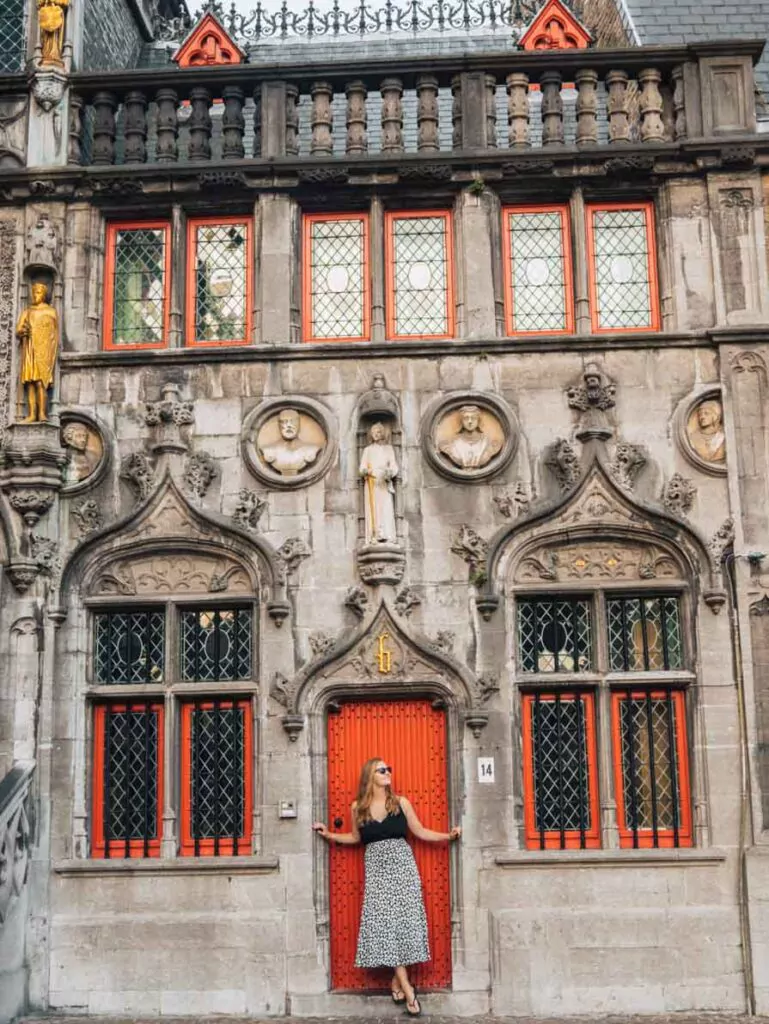
Things to do in Bruges
- Wake up early to enjoy the sleepy town as its quietest. Even cafes typically don’t open until 9am! Use this time to wander around and visit the best photo spots without the crowds.
- Walk more than 350 steps to the top of the Belfry to see the view
- Take a canal cruise
- Visit the Choco-Story Chocolate museum, do a chocolate walking tour or try your hand at making your own Belgian chocolate
- Visit the Basilica of the Holy Blood, a 12th century Romanesque church which houses a vial containing cloth stained by the actual blood of Christ (allegedly)
- Head to Sanseveria Bagelsalon, my favourite eatery in Bruges! They serve up amazing fully loaded bagels with fillings like peanut butter/banana/Speculoos, melted brie/bacon/walnuts/apple (my go-to) and raclette cheese/fried onions/gherkins
- Grab an outdoor table at one of the restaurants in the Market Square (Markt) to enjoy some moules frites with a view of the beautiful buildings that line the square

Where to stay in Bruges
Budget | There aren’t many well-rated hostels in Bruges but some good options are Snuffel Youth Hostel , Hostel Lybeer and St Christopher’s Bauhaus
Mid-range | B&B Valant , La Clé Brugge , Guesthouse Mirabel and Maison Amodio
Luxury | Dukes’ Palace , Relais & Châteaux Hotel Heritage and Dukes’ Arches
Self-contained | Maison Fred Luxury Suites , Old Bruges B&B , Aragon Apartments and Apartments Ridderspoor
Back to London
To get from Bruges to London you can catch the train to Brussels (1h) and then change to the Eurostar (around 2h).
I’d recommend spending a few hours in Brussels to see the main sights on the way, there’s plenty of luggage storage at Brussels station so you can explore without your suitcases.
Wander around the Grand Place, see the Royal Palace of Brussels, or visit one/some of the museums if you have time. And if you’re hungry, I’d highly, highly recommend heading to Tonton Garby near the Grand Place, an incredible sandwich shop with 4.8/5 on Google from more than 1600 reviews. There’s no menu, they’ll ask you questions about what flavours you like and they’ll make a bespoke sandwich perfectly suited to your tastes. Worth the wait!
If you’re flying into London rather than taking the train and you land late, consider spending a night at the airport to have a good night’s sleep and then start your London trip feeling fresh the next day. If you’re flying into Gatwick I highly recommend Bloc Hotel , they have brilliantly cosy rooms available just a minute’s walk from the arrivals section, or for Heathrow I love love love the Hilton Heathrow T4 , it has a covered walkway to Terminal 4 plus shuttles to other terminals, incredible eco-friendly design and a fantastic sustainability-focused restaurant.
Alternative cities/routes you could add or switch out
Add christmas markets if you’re travelling in november/december.
Europe’s Christmas markets start popping up from around mid-November, so if you’re braving the chilly weather and wanting to see some festive events then you’ll want to plan your itinerary around these. I’ll be putting together a Christmas market rail itinerary shortly, but in the meantime some additional places worth adding to your list are:
- Strasbourg and Colmar in France
- Dusseldorf and Cologne in western Germany
- Frankfurt in central(ish?) Germany
- Rothenburg ob der Tauber and Nuremberg in southern(ish?) Germany

Skip some of Italy
This itinerary has a lot of Italy because a) it’s probably my favourite country in Europe and b) it’s really well connected by train so easy to tick off a bunch of places without spending too long on transport.
If you’re not super keen to spend two weeks in Italy then you could limit the Italian portion of this trip to just Rome and Venice for example, and have more time for other destinations.
Skip Barcelona
Barcelona is a bit out of the way on this itinerary, with a long trip from Paris (6h 30m) and fairly trip to Lyon (5h 20m), both of which have expensive seat reservations if you’re travelling with a rail pass.
You could save yourself some travel time by skipping Barcelona and just going from Paris to Lyon direct, which is only two hours on a high speed train and reservations are only €12, so you’d save a significant chunk of money too,
Skip Switzerland to keep it cheap
Switzerland is definitely the most expensive country on this itinerary, so if you’re on a really tight budget then you could consider skipping it to have extra time in places like Prague, Budapest or add on Warsaw or Krakow in Poland instead.
If you’re travelling with a rail pass then I’d highly recommend doing at least the Bernina Express in Switzerland because you get a huge discount on the usual price. You could even just spend some time in Tirano and do the Bernina Express return trip, so you can see the scenery without needing to splurge on Switzerland accommodation.
Add on more of Germany plus Copenhagen
If you were reducing your time in other countries, there might be space for you to add on some other German cities like Munich and Hamburg, and Copenhagen is an easy 4h 45m direct journey from Hamburg. From Copenhagen you could easily do a quick trip across the Swedish border to Malmö, just 24 minutes by public transport.
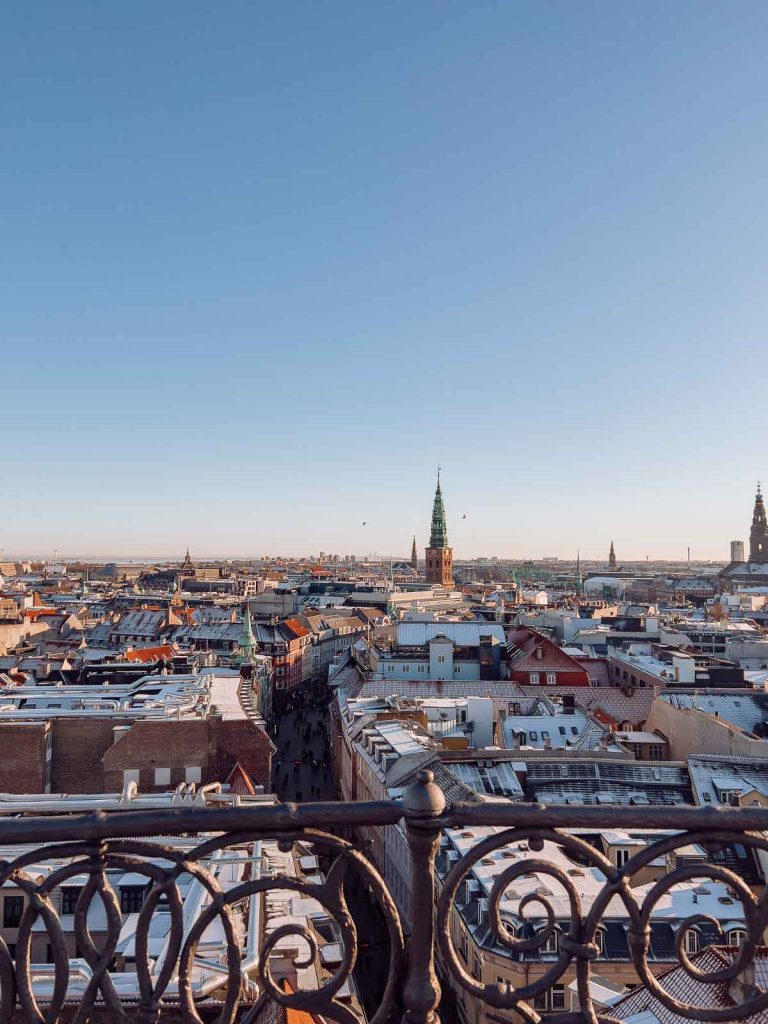
Add on some of Poland
A cheaper add on option (if you didn’t mind long travel days) would be Poland, you could visit both Krakow and Warsaw with direct train or bus routes running from Budapest, Vienna, Prague and Berlin.
Poland is super cheap so if you’re wanting the best bang for your buck this could be a great place to visit. And if you’ve got more time, you could replicate my two week Poland itinerary and slot that into your Europe trip between Prague and Berlin.
Add on more of Spain and Portugal
The reason I haven’t included much of Spain and Portugal is because if you’re using a rail pass, seat reservations must be made at the ticket offices in the country once you’re there, or with Deutsche Bahn (Germany’s railway company) at an office or over the phone. This type of admin is quite tricky for first time rail pass travellers so if you’re really keen to see this part of Europe, I’d recommend doing a lot of research on the Eurail community forum to make sure you know what you’re doing.
In Spain you could go from Barcelona to Valencia, Alicante, Granada, Seville and then Madrid, before scooting over to Portugal and heading down the coast from Porto to Lisbon to Faro.

Add on some islands
Did you know that Eurail passes also give you discounts on some ferries from Italy to Greece and through the Greek Islands? If you’re keen to enjoy paradise islands then you could travel by train to Bari in Italy, then catch the ferry to Corfu, Igoumenitsa or Patras and continue your Greece island hopping from there.
2 month Europe train itinerary FAQs
Should i train or fly in europe.
While Europe does have loads of low cost airlines with crazy cheap flights, flying comes with additional costs like transfers to the airport, wasted time in security lines and of course the impact on the environment, not to mention huge prices for add ons like a check in suitcase or seat selection.
Trains are much more straightforward, often leave from the central city or nearby, you get to enjoy the scenery, and it’s easier to stretch your legs if you’ve got a long journey.
If you need to get from one side of Europe to the other then consider flying, or if you need to get between small cities without great train connections then a flight might be easier, but for simple journeys between two major European city hubs then a train is by far the easier option.

Is a Eurail pass worth it?
It really depends. A Eurail Pass is worth it if the cost of the pass + seat reservations is less than the cost of the train tickets if you bought them outright.
I answer this question in much more detail in my Eurail budget breakdown but here’s a quick summary.
If you already have a good idea of your itinerary (or if you want to follow this one) then I’d recommend typing up all the journeys you want to take and searching them on Rail Europe to see what the price would be if you booked them outright. Then check on the Eurail website for the same journeys to find out the seat reservation cost, add this to the price of the pass you’d need, and you’ll figure out which one is better value.
If you’re spending time in Switzerland and want to take the Glacier Express , Bernina Express or any other scenic trains then the Eurail Pass is definitely worth it, you’ll save loads on these trains alone.
If you don’t know your itinerary yet (and you’re travelling soon), or if you want to keep flexible and be able to decide on your route only a few days in advance then a Eurail Pass is almost certainly worth it, it lets you avoid expensive last minute tickets.
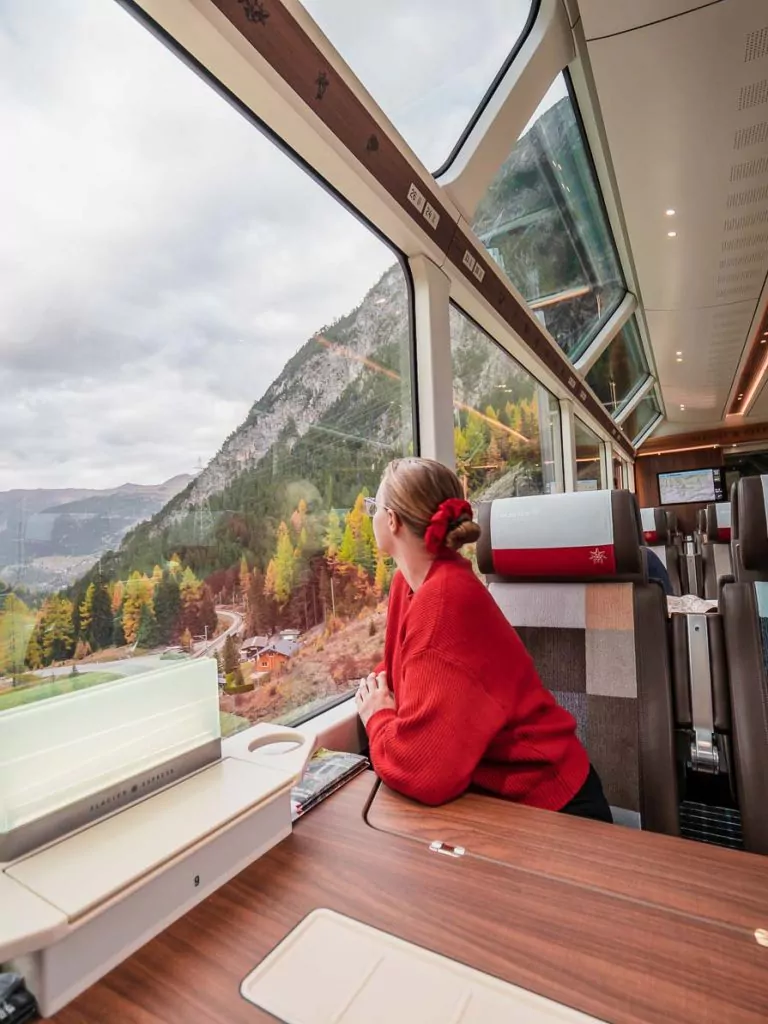
Is Europe safe for solo female travellers?
Specific safety tips will depend on the country but yes, overall Europe is absolutely safe for solo female travellers and I’ve never felt unsafe on all my solo travels in Europe.
Things to be aware of as a solo female traveller (or as any traveller!) are:
- Wear crossbody bags with your wallet in a zipped pocket
- Use a luggage cable to lock your suitcases to the luggage racks on trains
- Always have comprehensive travel insurance with both medical and luggage cover, I use Cover-More New Zealand travel insurance
- If you’re having a night out, always keep an eye on your drink and avoid getting too drunk as it can make you an easy target
- Stay in female-only dorms and night-train cabins
- Get a European SIM card that gives you data so you’re always able to access the internet, maps and transport/taxi apps

And that wraps up this huuuuge 2 month Europe itinerary! I hope this has helped you map out your own two month Europe itinerary, or at least has given you some useful destinations tips for your Europe train itinerary no matter how long you’ll be travelling.
If you have any questions or need any help with your Europe train itinerary then please let me know in the comments or flick me a message on Instagram.
MORE EUROPE TRAIN ITINERARIES:
- The perfect three month Europe itinerary without flying
- A Europe Christmas market itinerary by train
- How to spend 1, 2 or 3 weeks in Northern Italy & Switzerland
- How to spend 3 weeks in Scandinavia
- The perfect 10 day itinerary for Switzerland
- How to spend 2 weeks in Poland
MORE EUROPE TRAIN TRAVEL GUIDES:
- How to use a Eurail Pass
- Is a Eurail Pass worth it?
MORE EUROPE TRAVEL INSPIRATION:
- The most beautiful train rides in Europe
- 27 Europe holiday ideas to inspire you
- The ultimate Italy bucket list
- 33 beautiful places to visit in Switzerland
MY GO-TO TRAVEL PLANNING RESOURCES Flights ✈️ I use Skyscanner to find the best flights for my trip and then I’ll always book direct with the airline to protect myself from having to deal with dodgy third parties if anything goes wrong. Trains 🚂 If I’m travelling through Europe, I try to travel by train wherever possible! For an extended trip (2+ weeks) I’ll calculate if a Eurail Pass is worth it , or I’ll book point-to-point tickets through RailEurope or the local train operator. Accommodation 🛎️ I book almost all of my accommodation through booking.com , they have a user-friendly website + app and many of their options are free cancellation, easily cancelled with a simple click of a button. Activities 🗽 I use GetYourGuide , Klook and Viator to look for activities in the places I visit, or I just Google ‘things to do in [city]’! Travel cards 💳 I’m a Wise gal through and through, they’ve been my chosen travel card for more than five years now. You can easily top up your card from your bank account or through Apple Pay, convert your money to local currency, and spend money with minimal fees and the best exchange rates around. Travel insurance 🩺 I use Cover-More NZ travel insurance for my own trips, I have a comprehensive policy and I’ve only had good experiences with them. Cover-More also has an Australian company , but if you’re from elsewhere then two popular insurance options for global travellers are SafetyWing (cheaper policy, lower coverage) and World Nomads (more expensive but significantly better coverage). Luggage 💼 I travel with Samsonite Cosmolite suitcases , one 75cm check in bag and a 55cm carry on bag, and I absolutely adore them and will never travel with anything else! They are SUPER lightweight (2.8kg and 1.9kg respectively) so I have much more space for my actual stuff. Camera gear 📸 These days many of my photos and all of my videos are with my iPhone 15 Pro Max , my main camera is a Lumix G9 but I have a secondary camera (my old one) that’s a Lumix GX85 , I use a DJI Mini 3 Pro drone and a GoPro Hero 10 . I do all my writing and editing on my HP Spectre x360 , it’s super lightweight and perfect for travel.
You’ll Also Love

May 10, 2023 at 5:25 pm
Some of the accommodation is expensive how much money do u need for this frip
May 11, 2023 at 11:28 am
I’ve included budget accommodation in each of the cities for that reason, so you can pick and choose what accommodation and activities will fit into your budget.
If you’re happy staying in dorm rooms and cooking most of your own meals then in Western Europe you could probably budget €70-80 per day, Eastern Europe will be cheaper at €40-50 per day. If you want to stay in hotel rooms and enjoy a meal out once or twice a day then it really depends on which country/city as Switzerland is more expensive than Spain, and Paris is more expensive than Lyon for example, but as an average amount I’d say €100-130 per day for Western Europe or €70-80 for Eastern Europe. That’s if you’re sharing a hotel room with a partner or a friend, it would be a bit more if you’re travelling solo. Hope that helps!
August 5, 2023 at 6:55 pm
I found this very helpful and detailed—both important. I did have a question on how one might condense this into a two to three week trip. I think my job will not allow me to take more than three weeks maximum off for vacation. But, I’m very enticed to see as much as we can in such a short time frame. I almost considered just modifying your schedule and cutting locations that are not “essential”. Thanks for your thoughts/consideration.
August 9, 2023 at 9:08 pm
With three weeks you could do a smaller route, and it would be particularly helpful if you can fly into one place and out another so you aren’t wasting days getting back to your original destination. You could fly into London and then do Paris, Amsterdam, Berlin, Prague, Budapest and Vienna for example! It really depends on what you’re interested in and what destinations are your essential stops.
September 13, 2023 at 1:08 pm
How much stuff did you pack? Backpack? Suitcase?
September 14, 2023 at 2:33 am
I travel for 9-10 months of the year and have loads of camera gear so I use a suitcase 🙂
Leave a Reply Cancel reply
Your email address will not be published. Required fields are marked *
- SEE ALL BLOGS
- GET INSPIRED
- DESTINATIONS
- SOLO TRAVEL
- TRAVEL PLANNING
- BLOGGING RESOURCES
Join my email list
Subscribe to be the first to know about new blog posts, travel hacks, giveaways and more.
Finding Alexx is a participant in the Amazon Services LLC Associates Program, an affiliate advertising program designed to provide a means for sites to earn advertising fees by advertising and linking to Amazon.com.
- About Finding Alexx
- Work with me
- Privacy policy
Copyright © 2024 Finding Alexx
Nomadic Matt's Travel Site
Travel Better, Cheaper, Longer
Europe Travel Guide
Last Updated: April 18, 2024

From beautiful Paris to smoke-filled coffeeshops in Amsterdam, Oktoberfest to La Tomatina, Europe is a massive, diverse continent with an unlimited assortment of things to see and do. You won’t have any problem filling your time, whether you’re backpacking Europe for a few months on a budget or just spending a few weeks there on a well-earned vacation.
The continent boasts wonderful beaches, historical architecture, amazing wine, and tons of world-class festivals. Every country is incredibly different from the next too, providing limitless variety in what you do during your trip.
I first backpacked Europe in 2006 and was hooked immediately. I’ve been visiting every year since, have run tours around the continent, and even wrote a book on traveling in Europe . It’s a destination I love and never get tired of exploring.
This guide will give you an overview of Europe and the tips and tricks you need to start planning your trip. I’ve also written extensive travel guides to each country on the continent (linked below in this post) so you can get more in-depth information for your specific itinerary too!
Table of Contents
- Things to See and Do
- Typical Costs
- Suggested Budget
- Money-Saving Tips
- Where to Stay
- How to Get Around
- How to Stay Safe
- Best Places to Book Your Trip
- Related Blogs on Europe
Click Here for Country Guides
Top 5 things to see and do in europe.

1. Tour the Greek Islands
These islands are the mecca of summer beach fun and each is unique in its own great way. There’s Ios (beach party central with archeological ruins and awesome boat tours); Kos (ancient ruins and nature); Crete (Bronze Age ruins of Knossos, hiking, beaches, and wine), Santorini (iconic blue water, white buildings, and local wineries); Mykonos , (the upscale party island with beautiful beaches, villages, and sunsets), Naxos (best island in the Cyclades). Plus, Milos, Corfu, Lemnos, Zakynthos, and so many more! With hundreds of islands in the country, you can always find what you are looking for!
2. Ride the rails
Europe is famous for its international rail system. Rail passes like the Eurail Pass have been around forever and still make it very easy to get from country to country on a relatively small budget (and with lots of flexibility). Europe has some of the fastest trains in the world that travel up to an incredible 217 mph (350 kph). The whole continent is connected by trains and there’s a growing push for even more connections and long-distance, high-speed trains in order to reduce flying and help combat climate change. There’s nothing more quintessential than riding the trains in Europe and I encourage you to take as many trains as possible. It’s one of the best ways to see the continent.
3. Get lost in Paris
The “City of Lights” is everything people say it is. I fell in love with it the first time I stepped foot in Paris . The city is just magical. You have a ton of museums, cafes, jazz clubs, famous art, and beautiful architecture. I love just strolling around the streets of the Quartier Latin (Latin Quarter) or Montmartre neighborhood as it makes for a breathtaking day. Another one of my favorite things to do here is just sit in the Jardin des Champs-Élysées park and picnic like the Parisians. For something a bit different, check out the famous Catacombs and Paris Sewer Museum. With so much to offer in the way of culture, history, and gastronomy, it would take years to see everything here but you can still get a good feel of the city in a few days.
4. Go city hopping
There are so many amazing cities in Europe that we’d need a top 100 to list them all. Here are some of my personal favorites and must-see cities: London is rich in history, culture, and the famous Big Ben clock; Edinburgh is a vibrant medieval city with cozy pubs and a famous castle with a huge New Year’s Eve Party; Amsterdam has cozy coffee shops and canopied tree-covered canals; Berlin has a wild party scene, street art, and the Berlin Wall; Barcelona has tapas, beach, and unique Gaudi architecture; coastal Lisbon has colorful tiles, old tramcars, cobblestone streets and plenty of fresh seafood; Prague has a beautiful intact Old Town, incredible architecture and eclectic bars; Tallinn Estonia has beautiful medieval buildings with colorful roofs. Florence is a mecca for Italian Renaissance architecture, art history, and gelato; Stockholm mixes medieval architecture and modern art and design. Crisscross the continent, take in the culture, and enjoy all the historic cities!
5. Hit the Alps
Whether you go skiing in the winter or hiking in the summer, the Alps hold some of the most breathtaking views in all the world. You don’t even need to be an expert hiker because there are mountain trails for all levels and crystal-clear Alpine lakes. Check out the spectacular Eibsee trail loop in Bavaria at the foot of Die Zugspitze, Germany’s tallest mountain, for the clearest, multi-colored, sparkling lake you’ve ever seen. Or the Männlichen Kleine Scheidegg Panorama trail in Switzerland’s stunning green and snow-capped Alps. Or visit Italy’s Dolomites in South Tyrol for the scenic Seceda trail. The Alps have trails for every fitness level and in every season.
Other Things to See and Do in Europe
1. tour amsterdam.
I love Amsterdam so much that I lived here for a short period of time in 2006. Here cobblestone and brick streets weave around lovely canals as people ride their bikes to and fro. My favorite things to enjoy here are Amsterdam’s vibrant art and music scene and there are also a ton of interesting museums here like the Anne Frank House, FOAM, the history museum, and the hemp museum. Be sure you get out of the center into Jordaan and Oost with their wonderful outdoor cafes and fewer tourists. Also, a visit to Amsterdam wouldn’t be complete without a canal cruise to visit the many islands and there are many to choose from that include snacks and drinks, sunset cruises, live guided tours, and more.
2. Hang out in Barcelona
Barcelona is a city that goes 24 hours a day, 7 days a week. It truly could give NYC a run for the “city that never sleeps” title. Be prepared for late-night dinners and parties until dawn. Besides a great food and nightlife scene, there is a wonderful beach, tons of Gaudi architecture (including the fairytale-like Parc Güell, as well as the iconic Sagrada Familia , which has been under construction for over 100 years!), incredible food tours, one of the best history museums in the country, and lots of outdoor spaces. What I love about Barcelona is that when you’re ready to chill, you can wander around Parc de la Ciutadella and marvel at the majestic fountains, plant life, and buildings created from an ornate military fortress.
3. Visit Berlin
Hip and trendy Berlin is an energetic destination. It is one of Europe’s most affordable capital cities, with a vibrant music and art scene and a growing foodie movement. Be sure to spend some time learning about the city’s darker history via the many excellent museums, memorials, and landmarks. The East Side Gallery, a section of the Berlin Wall that’s now painted with murals, and the Memorial to the Murdered Jews of Europe are two especially powerful reminders of Germany’s past. For all periods of German history, don’t miss the Deutsches Historisches Museum (German Historical Museum) – it’s one of the best history museums in the world. Once you’ve had your fill of history, relax in Berlin’s many green spaces, from Tempelhof Field, the site of a former airfield and popular local hangout spot, to Tiergarten, a tree-covered former hunting ground for 17th-century aristocrats.
4. Drink beer at Oktoberfest
Oktoberfest is a must for anyone going to Germany at the end of September. While not a budget option since beers now cost 15 € a maß, I love the energy and friendly camaraderie this event inspires. For two weeks, millions of people from all over the world gather for lots of beer, excitement, music, and wild fun. Watching thousands of people sing together, raising quart-sized beer mugs for endless toasts, and enjoying the general party atmosphere makes you feel good about the world. (Or maybe that’s just the beer?) Just be sure to book your accommodation well in advance and be prepared to pay top prices for them. If you don’t have an outfit, don’t worry, there are plenty of shops even at the main train station where you can buy a Bavarian dirndl dress and men’s lederhosen.
5. Experience London
Get a taste of English culture in diverse London . The museums here are some of the best in the world (most are free) and include the Tate, the British Museum, the City Museum, the National Gallery, the Historical Museum. There’s no shortage of iconic sights here as well, with Big Ben, the House of Parliament, the London Eye, the Tower of London, Tower Bridge, and of course, Buckingham Palace. I love London’s diversity because of the countless international eateries with great food and wonderful pub culture, perfect for after a long day seeing the sights. Head to Brick Lane on the weekends for some amazing food and craft markets. I prefer Paris to London, but there is something sophisticated and fun about London. Just watch those pints — London is not a cheap destination!
6. Get outdoors in Scandinavia
My favorite region in Europe is Scandinavia. The quality of life here is high, the people are beautiful and friendly, and the cities are clean and historic. Cycling the cities, taking canal tours, hiking the vast forested areas, archipelago hopping, enjoying fika (a Swedish coffee break), and warming up in saunas are just a few of the popular activities that await you here. True, this area of Europe is not cheap, but there are plenty of ways to reduce your expenses. Don’t let the high prices scare you away. Highlights for me include Copenhagen , Stockholm , Gotland, Norway’s fjords, and Lapland in Finland .
7. Get enchanted in Prague
Prague has an amazing history and is one of the most beautiful and picturesque cities I’ve ever seen. Highlights include the 9th-century Prague Castle, the magnificent Charles Bridge (built in the 14th century and one of the oldest standing bridges in the world), the 10th-century old square with its iconic astronomical clock, and the winding Jewish Quarter. Even if you only have a few days there don’t miss the free walking tour which is one of my favorites in Europe and the best way to learn about the Old Town and the tragic history of the city that went from thriving Bohemian capital of art, music, and literature to part of the Iron Curtain after WWII. Some of my favorite gems here include the fantastic black light theater shows in 4D and the one-of-a-kind medieval dinner show in an old tavern complete with musicians and jugglers not to mention hearty food and drinks. During the weekends it heaves with people enjoying the bars, cheap beer, and delicious food so try to visit during the week (and in the spring or fall) to beat the crowds.
8. Relax on the French Riviera
Here, you can pretend to live the high life for a little bit. Have fun in the sun, relax on the beach, swim in azure blue water, hobnob with the rich and famous, and sail on (or gaze at) gigantic yachts. As for cities, Nice is nice with its palm-tree-lined promenade, old town, and many art museums. If you want to go see how the rich and famous live, spend an afternoon checking out Cannes to soak up some glamorous vibes on La Croisette where they hold the famous Cannes Film Festival. The kingdom of Monaco with its tiny streets, beautiful buildings, and world-famous casino is just a skip away too.
9. Enjoy the great outdoors in Interlaken
Located in the beautiful mountains of Switzerland, Interlaken is a gorgeous place to unwind with fantastic hiking, delicious hot chocolate, and plenty of outdoor sports. The area is full of natural attractions to explore, including the St. Beatus Caves (complete with a legendary dragon), the cascading 500-meter-high (1,640 feet) Giessbach Waterfalls, the Jungfraujoch mountain railway (which leads to the highest train station on the continent), and a plethora of lakes (hence the town’s name). It’s a good alternative to all the cities and museums. Interlaken is also a popular party destination for backpackers and other young travelers. By far, my favorite scenic and visually stunning trail was the Oberberghorn panoramic hike, where you can wander the green mountain ridge ogling the amazing views and the turquoise-blue Brienzersee.
10. Experience history in Rome
In this thriving historical city, you can’t walk two feet without stumbling over a ruin, making Rome a history buff’s dream. Its tiny streets are perfect for wandering as you explore the Colosseum, see the Forum and Palatine Hill, visit the Pantheon, spend time in Vatican City, admire the Spanish Steps, and toss coins into the famous Trevi Fountain. The skip-the-line tickets can definitely be worth it so you don’t waste time waiting outside attractions. Rome also has amazing food (it’s Italy, after all) and nightlife. Visit the Trastevere area for a taste of “local” Rome and chill bars. It’s my favorite area in the city because you feel like you’re in a small village in the middle of a big city.
11. Hike around the Cinque Terre
Cinque Terre is my favorite part of Italy. These five beautiful cliffside towns are perched near warm waters and beautiful olive and grape groves. There are wondrous and strenuous hikes in these hills; for a real challenge, take trail #8. Or just walk the coastline for something less difficult. Many activities here revolve around the coastline: kayaking, swimming, having a beach picnic or visiting the Technical Naval Museum. If you happen to be here in December or January, don’t miss the Nativity Manarola, the world’s biggest lighted nativity scene.
12. Tour Krakow
Krakow looks like it stepped out of a medieval postcard. It’s a hip, trendy, and youthful city that’s the center of education in Poland, meaning there are a lot of university students here. Most travelers come to party here (the vodka is cheap) but try to enjoy the city’s history and food besides just the bars. Walk the Royal Road through the Old Town to the 13th-century Wawel Castle, tour Schindler’s Factory (where Schindler saved over 1,200 Jews during World War II), and visit the sobering Auschwitz-Birkenau concentration camp. You can also take a fascinating day trip to the UNESCO World Heritage Wieliczka Salt Mine, a 13th-century mine with cavernous chambers, statues, chapels, chandeliers, and cathedrals all carved out of salt.
13. Visit the ruin bars in Budapest
The coolest nightlife in all of Europe is found in Budapest . Built in abandoned buildings, ruin bars feature funky art installations, repurposed furniture, and quirky decor. They are amazing, fun, and great places to meet locals, as people of all ages flock here. Open since 2001, Szimpla Kert is the original ruin bar and one of my favorites, along with Instant-Fogas Complex, which takes up an entire building and is actually many different bars in one. Don’t skip the ruin bars — they’re one of the most unique things about the city!
14. Explore Cornwall
The best part of England is outside London, yet unfortunately, not a lot of travelers leave London. Head west to the area of Cornwall for cheaper prices, welcoming locals, natural beauty, great hiking, rolling hills, plenty of medieval castles, and picturesque small towns. If you like biking, the Camel Trail from Bodmin to Padstow is worth the trip and you even pass by a local vineyard. It’s an easy way to spend a day (and it’s pretty flat so it’s not too hard to do.) Plus, I had the best fish and chips in Cornwall! Overall, it’s what you think of as “traditional England.”
15. Walk the Camino
El Camino de Santiago (The Way of Saint James) is an ancient pilgrimage route that stretches from France all the way across northern Spain. It is a 500 mile (800 km) trail that winds through incredible terrain, ending in Santiago de Compostela at the cathedral where St. James is supposedly buried. As a pilgrim, you get a “pilgrim’s passport” which allows you to stay in affordable pilgrim-only hostels, making this a surprisingly budget-friendly adventure. While it usually takes over a month to complete, you can just walk a section if you don’t have the time. To receive a “Compostela” (certificate of completion), you just need to walk the last 62 miles (100 km), which generally takes 4-5 days.
16. Throw tomatoes during La Tomatina
By far my favorite festival, the largest food fight in the world happens during the last Wednesday of August in Bunol, Spain. What started in 1945 as a local brawl has turned into a massive event drawing tens of thousands of people from all over the world. For about an hour, everyone throws tomatoes at each other, leaving streets ankle-deep in tomato juice. Afterward, everyone walks down to the river, cleans off, and then heads to the town square for sangria and music.
17. Find Dracula in Romania
Not a lot of people visit Romania but this underrated country in Eastern Europe has undiscovered yet picturesque medieval towns like Brasov (home to “Dracula’s castle”), Sighisoara, and Sibiu; gorgeous beaches on the Black Sea; and incredible hiking in the Fagaras Mountains — all at dirt-cheap prices. Other major sights include frescoed Byzantine monasteries, the steepled wooden churches of Transylvania, the hip university town Cluj-Napoca, the post-communist capital of Bucharest, and the Danube Delta, a huge nature reserve.
18. Drink whisky in Islay
Whisky has a long history on Islay , an island off Scotland’s west coast. It’s been made there since the 16th-century — first in backyards and then, starting in the 19th-century, in large distilleries. Over the years, whisky from the island came to be considered a specialty and was used to flavor a lot of other blends on the mainland. There are currently nine working distilleries on the island, all located along the island’s shores, with Laphroaig, Ardbeg, and Lagavulin being the most famous. Most distilleries here make single-malt Scotch, meaning that only one type of grain (barley) is used. My visit here was amazing and, even if you don’t like whisky, there are tons of good hikes and walks throughout this magnificent island.
19. Explore Iceland
Iceland is a magical country with majestic waterfalls, hidden hot springs around every corner, and sweeping vistas unlike anywhere else in the world. After my first visit, the country quickly became one of my favorite countries. With whale watching in the summer, the northern lights in the winter, and geothermal baths for soaking in year-round, there really is no bad time to visit! While Iceland’s main draw is the epic natural landscapes, it’s worth spending a couple of days in Reykjavik with its café culture, artsy feel, and brightly colored wooden row houses.
20. Sail the Croatian coast
With calm winds, short distances, a coastline littered with over 1,000 islands, and countless historical sites, Croatia is one of the world’s best sailing destinations. If you can, go during the shoulder season when you can find some great deals. Plan to stay at least a couple of days on one of the islands, with the most popular being Brac, Hvar, Krk, Cres, and Lošinj. However, don’t be afraid to get off the beaten path and explore some of the lesser-known islands such as Silba, Vis, and Lastovo. If you want to splash out and spend a week partying on a yacht, check out The Yacht Week, which hosts week-long parties, complete with DJs, from May-September. You can book a full boat to share with friends or just a cabin if you’re traveling solo. Prices start at 5,250 HRK per person and go up to 9,300 HRK.
21. Explore the Balkans
While the Balkans have become more popular with backpackers in recent years, it’s still largely overlooked by most budget travelers, despite being an extremely budget-friendly region. The Balkan peninsula is home to great (and again, overlooked) wine, beautiful medieval towns like Kotor and Mostar, stunning mountainous landscapes, beautiful pebble beaches, coffee culture, fresh, hearty yet inexpensive food, and museums covering the area’s history, including the most recent turbulent events of the early 1990s. I especially loved my time in Albania . Don’t miss the beautiful beaches in Ksamil, nicknamed the “Maldives of Europe’ as well as the mountain village of Gjirokastër, which was occupied by Romans, Byzantines, and Ottomans. The Balkans have so much to offer for every budget and every country has its unique cultural flavor.
22. Take a wine tour in the Loire Valley
Located in central France, the picturesque Loire Valley is a UNESCO World Heritage site and stretches 280 kilometers (174 miles) along the Loire River. One of the major wine-producing regions of France, the area is home to some of the best wines in the world, with over 1,000 vineyards open to the public. Even those who don’t drink wine will enjoy the beautiful small towns, great food, and the region’s over 300 impressive chateaux. I loved the medieval Chenonceau Castle and Chateau Villandry and the small villages like Saint-Florent-le-Vieil. Spring and Autumn are my favorite times to visit because you can go biking and do outdoor activities when it’s not too hot and there are fewer people. It’s an area not to be missed.
23. See Fado in Portugal
Fado is an important musical tradition in Portugal , originating in Lisbon and stretching back some 200 years. The word “fado” likely stems from the Latin word for fate, and it’s very haunting, poetic, and emotional music. Most of the songs follow themes of loss and mourning, and the music was popular with the working class (especially sailors). Performances normally take place in restaurants during dinner. In Lisbon, head to Clube de Fado, Tasca do Chico, Parreirinha de Alfama, or Senhor Vinho.
24. Tour green Slovenia
Slovenia is one of Europe’s least-visited destinations, which is mind-blowing to me because it’s an amazing place to visit. Slovenia offers all the beauty of Western Europe but at a fraction of the cost and with a fraction of the crowds. Perfect for outdoor adventure lovers, Slovenia offers rugged mountains, untouched landscapes, fantastic ski resorts, plentiful wine, sprawling cave systems, incredible food, and postcard-perfect lakes, such as the famous Lake Bled with its castle on an island. I loved Piran, Slovenia’s often overlooked coastal Venetian-style harbor town that was actually founded 3000 years ago. Stroll around its beautiful windy cobble-stoned streets, beautiful plazas, and take advantage of the many affordable restaurants right on the water. Make sure to also spend a few days in the country’s capital, Ljubljana, known as one of the continent’s greenest and most livable cities. Take a river cruise to see the city and enjoy the friendliness of the locals.
For more information on specific countries in Europe, check out the guides below:
- Albania Travel Guide
- Austria Travel Guide
- Belgium Travel Guide
- Belarus Travel Guide
- Bosnia & Herzegovina Travel Guide
- Bulgaria Travel Guide
- Czechia Travel Guide
- Croatia Travel Guide
- Denmark Travel Guide
- England Travel Guide
- Estonia Travel Guide
- Finland Travel Guide
- France Travel Guide
- Germany Travel Guide
- Greece Travel Guide
- Hungary Travel Guide
- Iceland Travel Guide
- Ireland Travel Guide
- Italy Travel Guide
- Latvia Travel Guide
- Lithuania Travel Guide
- Malta Travel Guide
- Moldova Travel Guide
- Montenegro Travel Guide
- Netherlands Travel Guide
- Norway Travel Guide
- Portugal Travel Guide
- Poland Travel Guide
- Romania Travel Guide
- Scotland Travel Guide
- Slovakia Travel Guide
- Slovenia Travel Guide
- Spain Travel Guide
- Sweden Travel Guide
- Switzerland Travel Guide
- Ukraine Travel Guide
Europe Travel Costs

Accommodation – Accommodation prices vary greatly by region. In Western Europe, hostel dorm rooms cost between 25-45 EUR per night, depending on the room’s size and the popularity of the hostel. I stayed in a 6-bed dorm in Berlin for 20 EUR, while the same one would have cost me around 45 EUR in Paris. A room in Paris costs on the higher end and a room in cheaper Athens costs on the lower end.
In Eastern Europe, hostel dorm rooms cost between 10-15 EUR per night depending on the size of the dorm room and the popularity of the hostel. The further east you go, the cheaper it gets. Expect to pay around 30-60 EUR per night for a private room that sleeps two.
In Scandinavia, hostel dorm beds cost around 25-45 EUR, while private rooms are 65-80 EUR. Budget hotels start around 85 EUR.
Most accommodations offer free linens, free Wi-Fi, and a lot offer free breakfast, but it’s important to check specific websites for exact amenities.
Campsites cost between 10-15 EUR per night for a basic plot for two without electricity.
Food – Food traditions in Europe run deep, stretching back centuries to become integral parts of each country’s culture. From baguettes in France to tapas in Spain, from hearty Eastern European stews and goulash to the fresh vegetables and olive oils of the Mediterranean, European cuisine varies as much as the countries themselves. Food prices differ greatly across the continent, so check individual country guides for specifics.
But no matter where you are, even in the more expensive countries, finding places to eat within your budget is easier than you might think. Throughout Western Europe, you can find small shops, street food stalls, or food trucks where you can get sandwiches, gyros, kebabs, slices of pizza, or sausages for between 3-7 EUR. These shops are most often found in train stations, bus stations, and main pedestrian areas, and offer cheap food alternatives that can have you eating on 12-17 EUR per day. Fast food (think McDonald’s) costs around 7-10 EUR for a combo meal.
Turkish, Middle Eastern, and Vietnamese eateries abound in Germany, while Indian food is incredible and everywhere in the United Kingdom. Meals at these restaurants usually cost between 8-12 EUR.
Restaurant meals in casual, traditional eateries generally cost around 13-25 EUR for a main dish and drink. Food is much cheaper in the east than in the west, and in the west, northern regions like Scandinavia and the UK are more expensive than southern countries like Spain, Portugal, and Italy.
In Eastern Europe, even if you are eating out for all your meals, you can still get by on a food budget of as little as 15 EUR per day.
For drinks, a pint of beer is 2-5 EUR, a glass of wine is 2-7 EUR, a cappuccino is 2-5 EUR, and cocktails range from 6-14 EUR.
If you eat out, do so at lunch and get the prix-fixe menu (two-course or three-course set menu). Restaurants offer this set menu during lunch, and with prices between 10-20 EUR, it’s a way better deal than the regular dinner menu. You can also get affordable lunches at outdoor markets. So many European cities have huge fresh food markets throughout town.
You can cook your own food for around 45-65 EUR per week. This gets you basic staples like rice, pasta, seasonal produce, bread, and some meat. You can save money by shopping at discount supermarkets like Profi, Lidl, Aldi, and Penny Market.
If you want to save big money on meals, head to one of the markets, pick up some cheese, wine, bread, meats, or anything else, and go to the park for a picnic. (Or grab a sandwich for later!) You’ll find the locals doing the same thing, and it’s one of the cheaper ways to get a true taste of local food.
Backpacking Europe Suggested Budgets
Prices for travel in Europe vary greatly depending on how far north, east, south, or west you travel. If you stick to the budget accommodations, food, and tours listed here and use all my tips on saving money, you need about 65-110 EUR per day in Western Europe, 40-50 EUR in Eastern Europe, and about 85-130 EUR in Scandinavia.
Those numbers reflect a traveler who stays in hostels, cooks some meals and eats out cheaply, enjoys a few drinks, and sticks to free and cheap activities like hiking, walking tours, and enjoying nature. This is your typical backpacker budget. You aren’t going to have a fancy time, but you aren’t going to want for anything either.
However, by getting tourist cards and rail passes, avoiding flights, occasionally Couchsurfing or camping, cooking all your meals, and not drinking, you can travel a lot cheaper. On this budget, you could do Western Europe on 35-45 EUR per day, Eastern Europe on 20-25 EUR, and Scandinavia on 50-65 EUR. That would require you to take a train or a bus or hitchhike everywhere, skip most museums, and limit how often you go out.
Generally, the suggested daily budget for Europe is 80-120 EUR. You can use the chart below to get an idea of how much you need to budget daily. Keep in mind these are daily averages – some days you’ll spend more, some days you’ll spend less (you might spend less every day). We just want to give you a general idea of how to make your budget. Prices are in EUR.
Europe Travel Guide: Money-Saving Tips
Individual country guides have more specific information on how to save money in them but here are some general tips on cutting your costs while you explore Europe:
- Picnic – This continent has a lot of little shops where you can buy pre-made sandwiches or ingredients to make your own. Many supermarkets have delis as well where you can get food to go. Buy some food, eat outside, and watch the city and its people go by. It’s a much more enjoyable and cheaper way to eat.
- Eat local and cheap – Not into picnicking? Eat at local sandwich shops, pizza parlors, Maoz, Wok to Walks, and outdoor street vendors. Avoiding restaurants and eating at a lot of the local “grab n’ go” places gives you a taste of the local cuisine at a much cheaper price. If you’re really on a budget, use your creative cooking skills to prepare meals at the hostel as well.
- Stay with a local – Hostels can add up really quickly. If you don’t have any friends with whom you can stay, consider using Couchsurfing , which connects you with locals who let you stay with them for free. Plus, they tend to also have meetups to meet other locals and travelers. It’s a great way to save on accommodation and meet a local who can share their insider tips and advice.
- Camp in a garden – A very good camping service specific to Europe is Campspace , which allows you to pitch a tent in someone’s backyard for free or for a small fee (around 10-20 EUR). All of the garden owners have profiles that tell you what services and facilities they offer. Also, many countries allow wild camping (like Sweden), which can save you a fortune if you have a tent.
- Take the bus – Budget bus companies like Flixbus can take you across the continent for cheap. I personally feel it’s best for day travel as sitting up for an overnight bus isn’t really ideal for sleeping. It isn’t glamorous, but with tickets starting at 5 EUR, you really can’t complain!
- Get a Rail Pass – Eurail Passes have saved me hundreds of dollars. If you are traveling far distances and through many countries, they are a great deal.
- Take the free city tours – One of the great things about Europe is that you can find free walking tours in all the major cities. They can be a great way to see the city attractions, take in some history, and learn your bearings without spending any money. Just make sure to tip your guide at the end!
- Plan accordingly – Plan your trip around Europe so you avoid doubling back. Transportation is a big expense so proper planning can save you a lot of money (and time). Go in a straight line or a loop. Booking your accommodation ahead helps you save as well since cheap, good places unsurprisingly get reserved first. One thing I’ve learned is that waiting until the last minute means you get stuck with expensive places or cheap places no one wants.
- Fly cheap – If you know where you are going and a train won’t do, try to book flights early. You can often get round trip fares for as little as 5 EUR from many of the European discount airlines like Ryanair or Wizz. Many capital cities have smaller airports farther from the city with ‘inconvenient’ times but cheaper fares. Keep in mind you might need to factor in an early morning Uber or taxi if the busses aren’t running and you have an early flight!
- Drink less – Those 5 EUR beers add up. Hit happy hours or pick and choose when you party. Hostel bars are a good place to get cheap drinks or buy your alcohol at the supermarket. Plus, in Europe, it’s legal to drink outside in parks, plazas, by the lakes or rivers. You’ll find you can save a lot of money by not going to bars and clubs. Partying your way across the continent will destroy your bank balance in no time.
- Get a city tourist card – Many local tourism offices sell a tourism card for all their attractions, tours, and restaurants. This card gives you free entry and substantial discounts on all the attractions and tours in a city, free local public transportation (a huge plus), and discounts at a few restaurants and shopping malls. They save a ton of money. If you plan on doing a lot of sightseeing, get one of these cards.
- Rideshare – If you’re flexible in your schedule, use the ridesharing service BlaBlaCar to catch rides with locals between cities (or countries) by paying a small fee. It’s like Airbnb but for rides. I used this service in Switzerland and, not only did I save a lot of money, but I got to meet interesting people and learn about local culture and life. Drivers are verified and it’s perfectly safe, though sometimes rides cancel at the last minute (which is why you need to be flexible). Check their ratings first and try to use rides where the person has done many trips.
- Bring a water bottle – The tap water is safe to drink in most of Europe, so bring a reusable water bottle to save money and reduce your plastic use. LifeStraw is my go-to brand as their bottles have built-in filters to ensure your water is always clean and safe.
- Get a HostelPass – HostelPass is a discount membership for hostels in Europe. Members get 10-20% off select hostels around Europe, as well as perks like free breakfast or free drinks. There are discounts on tours and activities too. It’s a great way to save money if you’re bouncing around Europe as they have hostels in 18 countries around the continent.
Where to Stay in Europe
Europe has a ton of budget accommodation options. The individual country and city guides have tons of recommendations but here’s a short list of some of my favorite budget hostels and hotels around Europe:
- The Flying Pig (Amsterdam, The Netherlands)
- Hotel 54 (Barcelona, Spain)
- Generator Hostel (Copenhagen, Denmark)
- Harcourt Hotel (Dublin, Ireland)
- Castle Rock (Edinburgh, Scotland)
- Ios Palm Pansion (Ios, Greece)
- Greg and Tom’s Party Hostel (Krakow, Poland)
- Largo da Sé Guest House (Lisbon, Portugal)
- Sophie’s Hostel (Prague, Czech Republic)
- The Yellow (Rome, Italy)
- City Backpackers (Stockholm, Sweden)
How to Get Around Europe

Public transportation – Transportation around most European cities is by tram, subway, or bus. Prices are typically around 2 EUR for a one-way ticket in Western Europe and closer to 1 EUR in Eastern Europe. Most large cities also have day passes available that offer unlimited public transportation. These passes are usually 5-12 EUR per day.
In large cities with international airports, there is usually a bus or train available that ferries travelers from the downtown core to the airport. Expect to pay around 5-15 EUR to get to/from the airport.
Bus – Buses are not quite as comfortable as Europe’s trains, although certain lines do have great amenities (like roomy seats and Wi-Fi). While buses are not the most efficient way to travel around the continent, they’re certainly dependable, reliable, and cheap. You can find last-minute rides for as little as 5 EUR. A route from Berlin to Munich is about 25 EUR, while Paris to Bordeaux can be as low as 10 EUR. Longer routes, like Amsterdam to Copenhagen, start at around 47 EUR.
Each country has its own national bus service, but some lines also take you long distances internationally. Megabus and Flixbus (which now owns Eurolines) are the most popular companies.
Train – Train travel is a great way to see Europe. Intercity train prices vary wildly from country to country, depending on whether you take the slow train or a high-speed train and how far in advance you book. For example, a high-speed train from Berlin to Munich costs around 38-60 EUR, Bordeaux to Paris is about 50-85 EUR, and Madrid to Barcelona ranges from 45-85 EUR. Non-high-speed trains and other intercity lines are a lot cheaper, generally costing about 40-50% of the price of high-speed trains. Eastern Europe inter-country trains usually cost between 45-100 EUR when the ticket is booked last minute. Short train rides of 2-3 hours within countries cost about 27 EUR.
To find routes and prices for trains around Europe, use Trainline .
You may also want to consider getting a Eurail Pass , which allows travelers to explore Europe by providing a set number of stops in a specific time period. These passes are continent-wide, country-specific, or regional. It can potentially save you hundreds of dollars.
Ridesharing/Car sharing – If your schedule is flexible, use a ridesharing service and catch rides with locals between cities (or countries). Drivers are verified and it’s perfectly safe. BlaBlaCar is the most popular.
If you’d rather rent a car yourself and find passengers to share a ride with, use Discover Cars to find the best car rental prices.
Flying – Budget airlines are so prolific that competition helps keep fares low. You can often find tickets where the fare is just 5 EUR round-trip! Companies like EasyJet, Ryanair, Wizz, and Vueling offer mind-blowingly cheap flights throughout Europe. Book at least a month early to scoop up great deals.
Make sure that the airport they fly into isn’t too far out of your way (transportation from the secondary airport sometimes negates the savings from using the budget airline itself).
Keep in mind that you’ll have to pay to check your baggage on these cheap flights. It costs about 25-39 EUR for one checked bag. If you wait to pay for your luggage at the gate, you end up paying almost double. Travel carry-on only to avoid this added cost.
Hitchhiking – Hitchhiking in Europe is very safe, but it’s not for everyone. Hitching is quite common around the continent and I’ve met a number of travelers who have done it (I, myself, traveled this way in Bulgaria and Iceland). Some countries are very supportive (Romania, Iceland, Germany) while others may be a bit more time-consuming (Italy, Spain). HitchWiki is the best website for hitchhiking info.
Here are my suggested articles for how to get around Europe:
- 7 Cheap Ways to Travel Across Europe
- Are Eurail Passes a Giant Scam or Do They Save You Money?
- The Ultimate Guide to Finding Cheap Flights
When to Go to Europe
There’s no wrong time to visit Europe. Peak season is summer, when Europe gets crowded and August is the time most European families are at the beach so everything becomes more crowded and expensive. But the overall atmosphere and weather are great during this time, so it’s still worth visiting during peak season (just book your accommodation in advance — especially in August). Keep in mind it’s much hotter in summer so if you like AC, be sure to check that your hostel or hotel has it before you book. You can expect the most crowds in Western Europe. For this reason, I feel summer is a great time to visit the Balkans and the Baltics because many people head to the beaches in Spain, France, Italy, Croatia, and Greece.
Shoulder season is spring and fall (April-May and September-October). It’s still warm during this time but there aren’t as many crowds and prices are cheaper. This is my favorite time to visit hotspot places like Spain, Croatia and Greece, where it’s still hot enough to swim in the sea but you have way more room on the beach. It’s also a good time to go hiking in the Alps in Germany, northern Italy, Slovenia and Switzerland because it’s cooler during the day so you’re much less sweaty on the mountain without shade. The weather is good, the crowds are smaller, and the prices lower.
Winter is from November to February but in much of Central Europe, it’s wet and cold until March or April. It gets cold, even as far south as it gets (like Greece). On the other hand, the Christmas season has Christmas markets and festivals galore! Even if it’s cold, this is a cultural tradition you can’t miss and why I love Europe in December. There is hot mulled wine, sweets, and plenty of hot snacks, which vary by country. One of my favorites is Prague because the Old Town Square is lit up with a gigantic tree with aromas of crispy cinnamon pastries and mulled wine. Berlin takes their Christmas markets very seriously, so there are around 80 different markets with special themes.
Winter is fantastic in Europe for skiing and snowboarding but it doesn’t have to break the bank if you plan carefully. While Switzerland and France are probably the most famous, they are also expensive, but there are plenty of budget winter options.
How to Stay Safe in Europe
Europe is very safe for backpacking and solo traveling, even if you’re traveling solo, and even as a solo female traveler. Violent crimes against tourists are very rare. In fact, some of the safest countries in the world are in Europe. (I wrote a whole article about how Europe is safe to visit right now .)
That said, there are scams and petty crimes you should watch out for, especially around popular tourist landmarks. The most important thing to be aware of is pickpockets in crowds and on public transportation. Zip your bags and don’t put your mobile phone in a jacket pocket where someone could quickly take it. This should be obvious but don’t flash your money to let everyone know you have a huge wad of cash.
When choosing a hostel, look for ones with lockers. It’s always a good idea to carry around a padlock or combination lock. Most hostels are safe and travelers respect each other and I’ve rarely seen things happen to people’s valuables. Nevertheless, I always think that prevention is better.
As anywhere, the standard precautions apply (never leave your drink unattended at the bar, never walk home alone intoxicated, etc.). When at the bar, always keep an eye on your drink. Avoid walking home alone at night if you’re intoxicated.
For female travelers in particular, it’s always a good idea to have a bit of extra money on you just in case you need to take an Uber or taxi back by yourself so you don’t take unnecessary risks to save money. If you’re using apps to date people while traveling, please use common sense and meet in public places. Since I’m not a female traveler, please check out the numerous female bloggers who have first hand knowledge of this.
If you’re worried about scams, you can read about common travel scams to avoid here.
If you rent a vehicle, don’t leave any valuables in it overnight. Break-ins are rare, but it’s always better to be safe than sorry. Be aware that the UK drives on the left and that most rental cars in Europe will have manual transmissions unless you request otherwise.
When hiking, always bring water, sunscreen, and bandaids or foot plasters. There is nothing worse than being halfway up the mountain with a blister and nothing you can do about it!
Likewise, when at the coast, don’t forget not only to wear sunscreen! I can’t tell you how many times I’ve seen people get burnt to a crisp the first day. Be sure to check the weather before you depart and dress accordingly.
If you do experience an emergency, dial 112 for assistance.
Always trust your gut instinct. Make copies of your personal documents, including your passport and ID. Forward your itinerary to loved ones so they know where you are.
The most important piece of advice I can offer is to purchase good travel insurance. Travel insurance will protect you against illness, injury, theft, and cancellations. It’s comprehensive protection in case anything goes wrong. I never go on a trip without it as I’ve had to use it many times in the past. You can use the widget below to find the policy right for you:
Europe Travel Guide: The Best Booking Resources
These are my favorite companies to use when I travel. They consistently have the best deals, offer world-class customer service and great value, and overall, are better than their competitors. They are the companies I use the most and are always the starting point in my search for travel deals.
- Skyscanner – Skyscanner is my favorite flight search engine. They search small websites and budget airlines that larger search sites tend to miss. They are hands down the number one place to start.
- Hostelworld – This is the best hostel accommodation site out there with the largest inventory, best search interface, and widest availability.
- Booking.com – The best all around booking site that constantly provides the cheapest and lowest rates. They have the widest selection of budget accommodation. In all my tests, they’ve always had the cheapest rates out of all the booking websites.
- HostelPass – This new card gives you up to 20% off hostels throughout Europe. It’s a great way to save money. They’re constantly adding new hostels too. I’ve always wanted something like this and glad it finallt exists.
- Get Your Guide – Get Your Guide is a huge online marketplace for tours and excursions. They have tons of tour options available in cities all around the world, including everything from cooking classes, walking tours, street art lessons, and more!
- The Man in Seat 61 – This website is the ultimate guide to train travel anywhere in the world. They have the most comprehensive information on routes, times, prices, and train conditions. If you are planning a long train journey or some epic train trip, consult this site.
- Rome2Rio – This website allows you to see how to get from point A to point B the best and cheapest way possible. It will give you all the bus, train, plane, or boat routes that can get you there as well as how much they cost.
- FlixBus – Flixbus has routes between 20 European countries with prices starting as low 5 EUR! Their buses include WiFi, electrical outlets, a free checked bag.
- SafetyWing – Safety Wing offers convenient and affordable plans tailored to digital nomads and long-term travelers. They have cheap monthly plans, great customer service, and an easy-to-use claims process that makes it perfect for those on the road.
- LifeStraw – My go-to company for reusable water bottles with built-in filters so you can ensure your drinking water is always clean and safe.
- Unbound Merino – They make lightweight, durable, easy-to-clean travel clothing.
- Top Travel Credit Cards – Points are the best way to cut down travel expenses. Here’s my favorite point earning credit cards so you can get free travel!
GO DEEPER: Nomadic Matt’s In-Depth Budget Guide to Europe!

While I have a lot of free tips on Europe, I also wrote an entire book that goes into great detail on everything you need to plan a trip here on a budget! You’ll get suggested itineraries, budgets, even more ways to save money, my favorite restaurants, prices, practical information (i.e. phone numbers, websites, prices, safety advice, etc etc), and cultural tips.
I’ll give the insider view of Europe that I got from years of traveling and living here! The downloadable guide can be used on your Kindle, iPad, phone, or computer so you can have it with you when you go. Click here to learn more about my book on Europe!
Europe Travel Guide: Related Articles
Want more tips for your trip? Check out all the articles I’ve written on Europe travel and continue planning your trip:

The 6 Best Hotels in Copenhagen

The 6 Best Hotels in Florence

The 7 Best Hotels in Madrid

The 6 Best Hotels in Vienna

The Best Walking Tours in Barcelona

How to Be a Digital Nomad in Europe
Get my best stuff sent straight to you, pin it on pinterest.
- Where To Stay
- Transportation
- Booking Resources
- Related Blogs

Over 20 Bucket List Itineraries for 2 Months in Europe
Europe is a wonderful continent to explore and offers a wide variety of experiences. From beautiful mountain views, to amazing historical architecture, picture-perfect beaches and a variety of unique cultures Europe has something for everyone. So what if you have a little extra time to explore – where should you go? Enjoy our snap shot for places to visit when you have 2 months to explore.
This article is big, need to save it and come back later? If so … pin one of these:

2 Months through Central Europe

Germany, Belgium and Luxembourg – 2 month itinerary
Germany, Belgium and Luxembourg make for an exciting two month itinerary. With its vibrant cities, stunning countryside, fascinating history and diverse culture, this trio of countries is the perfect destination for anyone looking to explore Europe.
Start your trip in Bavaria in Germany for a few weeks by exploring the country’s many highlights. Spend 2-3 days in Munich exploring the old town gems like Marienplatz, Residenz, Odeonsplatz, and the City Hall.
Then enjoy a Romantic road, check off Neuschwanstein Castle, and Fussen.
After a few days there, stop in Nuremberg and visit its historic landmarks and churches. Continue on to Frankfurt for some shopping and explore the city’s world-famous Rhine River walkway. When you’re finished taking in the sights and sounds of Germany, hop over to Belgium for a few days.
There are lots of places to visit in Belgium , and you can keep Brussels as a base to explore more of the country and beyond. Spend a few days exploring Brussels and its highlights like the Grand Palace, Comic Street and the Atomium.
Visit the picturesque canals of Bruges and be sure to sample some Belgium’s famous chocolates while you’re there! Add stops in charming cities like Antwerp, Ghent and Waterloo for a well rounded experience in Belgium.
You can also cycle through the Ardennes Forest if you like an adventure add-on to your trip! Next, make your way to Luxembourg. You can visit the Vianden Castle, one of Europe’s best-preserved mediaeval castles.
Make sure to wander the cobblestoned streets of Luxembourg City and check out some of its unique monuments such as the Casemates.
End your two month adventure with an unforgettable visit to the Moselle Valley in eastern Luxembourg. Take in the breathtaking views of vineyard covered hills and sample some of the best German wines in this beautiful region before returning home.
By Stephanie from Bey Of Travel
Fitz5 additional notes: I would consider adding a week in Cologne (and visit or stay at Pantasia Land ) with side stops to Hiedelberg and Strasbourg or finish the trip in Strasbourg. Trier and Koblenz are other German cities worth a stop. Hiedelberg, Stasbourg, Trier, & Koblenz can all make wonderful day trips from a longer stay in Frankfort.
An additional extension may be made by adding Amsterdam (or Utrecht). You can also start your trip in either Zurich Switzerland or Vienna Austria. The majority of these routes are well served by trains but you may want an occasional car rental to explore outside the cities.
Summary of 2 Months through Central Europe
Munich -> Frankfurt -> Cologne -> Brussels -> Bruges -> Luxemburg 1-2 weeks each stop or
or Munich (2 weeks for day trips) -> Frankfurt (2 weeks for day trips) -> Cologne (3 days) -> Brussels (1 week) -> Bruges (1 week) -> Luxemburg (3 days) -> Strasbourg (3 days)
or Munich (1 weeks for day trips) -> Frankfurt (2 weeks for day trips) -> Cologne (3 days) -> Brussels (1 week) -> Bruges (1 week) -> Luxemburg (3 days) -> Strasbourg (3 days)
or Vienna or Zurich (1 week) -> Munich (5 days) -> Frankfort (3 days) -> Cologne (3 days) -> Amsterdam (or Utrecht) (1 week) -> Bruges (4 days) -> Brussels (3 days) -> Luxembourg (3 days) -> Strasbourg (3 days)
You could also start in Vienna and Fly out of Zurich.
Fitz5 Central Europe Itinerary
We took a similar tour to visit some of our higher wish list cities in Europe Fall of 2023.
Our Itinerary was
Oslo (4 days) -> Flam (3 days) -> Oslo (1 day) -> Paris (1 week) -> Bruges (3 days) -> Utrecht (1 week) -> Berlin (3 days)
Our Original Itinerary was
Berlin (2 days) -> Prague, via train (5 days) -> Vienna via train (5 days) -> Zurich (5 days) -> Paris (1 week) -> Bruges (5 days) -> Utrecht (1 week) -> Berlin (3 days)

Europe by Bus
One of the best budget-friendly ways to explore western Europe is by using its extensive coach service. FlixBus operates in Germany, Switzerland and France, connecting cities like Hamburg and Berlin to Munich and Nuremberg, then spanning across to Basel and Zurich in Switzerland, and voyaging into a number of other French cities like Strasbourg and Paris.
Begin your two-month itinerary right in the north of Germany (you could even pop into Denmark if you’d like!). The city of Hamburg has lots of urban attractions, including catching a concert at Elbphilharmonie Hamburg and learning about local history at the Museum for Hamburg History.
Take a bus (3 hours) to Berlin, Germany’s buzzing capital. While Berlin comes alive in the summer, it’s also ideal as a winter city break – there’s always something going on here! Highlights include its many museums (the DDR Museum is a particular favorite), seeing the Berliner Dom and strolling through the Tiergarten. It’s a buzzing, pulsating city and there’s always a lot going on!
Take a bus further south, stopping in cities along the way before reaching Munich, the capital of Bavaria. While this city’s most popular during Oktoberfest, it’s beautiful around the year, with Marienplatz being at its centre.
Cross over into Switzerland, visiting major cities like Bern and Zurich. You could even do some side trips to beautiful destinations like Interlaken or the vast mountain of Matterhorn!
In France, check out the Medieval city of Strasbourg – famous for its Christmas market but wonderful in the summer months too. It’s only 3 hours on Flixbus from Basel in Switzerland. Then, head to La Belle Paris, France’s capital and one of the most romantic cities in the world. From here, you can take a bus down to the Spanish border, seeing cities like Bordeaux or Toulouse, or spend some time seeing the D-Day beaches and ancient sites of Normandy in Northern France.
By Claire from Europe in Winter
Fitz5 additional notes: This is a well rounded trip that could be extended at the end with some visits along the French Riviera or by starting in Copenhagen. You could also start in Belgium and add Amsterdam (or Utrecht) – but I’m not able to say if the additions would be serviced by the same bus.
2 Months in Europe via Flixbus Summary
Hamburg -> Berlin -> Munich -> Zurich -> Bern -> Strasbourg -> Paris -> Normandy -> Bordeaux -> Toulouse
Germany & Poland
A captivating two-month journey through the historic cities and enchanting landscapes of Germany and Poland can be amazing, done by utilizing both car and rail transportation. You’ll have the flexibility to explore each destination at your leisure while taking in the breathtaking scenery along the way.
Begin your adventure in Cologne, Germany, where the iconic Cologne Cathedral dominates the city skyline. After exploring the city’s rich history, board a train to Wiesbaden, a charming spa town in the Rhine River Valley. Take your time to stroll through the elegant streets, and be sure to visit the opulent Kurhaus and the impressive Biebrich Palace, where green open space is abundant next to the Rhine River
From Wiesbaden, rent a car and drive along the scenic Rhine River Valley, stopping to admire the picturesque towns, vineyards, and historic castles that dot the landscape. Continue south to Munich, the vibrant capital of Bavaria, where you can experience traditional German charm, visit the Nymphenburg Palace, and enjoy a stein of beer at the Hofbräuhaus.
Next, head north to Nuremberg, delving into the city’s medieval history at the Kaiserburg Castle and exploring the Old Town.
Afterward, make your way to Berlin, Germany’s bustling capital city. Immerse yourself in history at the Brandenburg Gate, the Berlin Wall Memorial, and Checkpoint Charlie, then indulge in the city’s vibrant arts scene by visiting the East Side Gallery or attending a performance at the Berlin Philharmonic.
Cross the border into Poland and begin exploring in Wrocław, a city known for its picturesque market square and charming gnomes scattered throughout the town. From Wrocław, continue to Kraków, a city steeped in history and culture. Visit the Royal Wawel Castle, explore the Jewish Quarter of Kazimierz, and head to the Auschwitz-Birkenau concentration camp .
Next, you can go south to Zakopane, a beautiful mountain resort nestled in the Tatra Mountains. There you can enjoy hiking, skiing, or simply taking in the breathtaking views. Then, make your way north to Warsaw, Poland’s capital city and explore the restored Old Town, learn about the city’s turbulent history at the Warsaw Uprising Museum, and relax in the Łazienki Park.
Continue northeast to Białystok, where you can visit the Bialowieza National Park nearby. Finally, end your journey in the coastal cities of Gdańsk, Sopot, and Gdynia. Marvel at Gdańsk’s colorful architecture, relax on Sopot’s sandy beaches, and visit the famous Gdańsk Shipyard, which played a significant role in the fall of communism in Poland.
This two-month itinerary offers a unique blend of history, culture, and natural beauty, creating an unforgettable European adventure through Germany and Poland.
From Travels in Poland
Fitz5 Additions: This trip could also be done by starting in Zurich ->Munich -> Nuremburg -> Wiesbaden -> Cologne then Berlin or if you’re flight lands in Paris … -> Brussels -> Cologne or take the overnight train from Paris to Zurich to start.
Germany and Poland 2 month Itinerary Summary
Cologne -> Wiesbaden -> Munich -> Nuremburg -> Berlin -> Wroclaw -> Zakopane -> Bialystok -> Gdansk

Exploring Brittany in France
A camping trip in Brittany, France, is an ideal way to explore this beautiful region, with its picturesque countryside, stunning coastline, and rich cultural heritage.
It is best to get around France by car to still have the flexibility to stop and go whenever you feel like it. However, France also has decent train and long-distance bus connections, allowing you to explore the main parts of Brittany by public transport.
Week 1-2: Start your journey in Rennes, the capital of Brittany, and explore its historic old town, lively markets, and vibrant cultural scene. From here, head to the north coast and spend a few days in the charming seaside town of Saint-Malo. Stroll along the historic forts, visit the local aquarium, and indulge in some delicious seafood and other local specialties from Brittany .
Week 3-4: Next, travel to the Pink Granite Coast, a scenic stretch of coastline known for its unique rock formations. Stay in one of the campsites near Perros-Guirec and take a boat trip to see the stunning cliffs and islands of the nearby Sept-Îles. Boat trips may only be possible during the summer as the sea can get quite rough in this part of France.
Week 5-6: From there, drive south to the Gulf of Morbihan, a beautiful inland sea dotted with islands and surrounded by lush green countryside. Base yourself in the town of Vannes and take day trips to explore the islands of Île-aux-Moines and Île d’Arz.
Week 7-8: For the final leg of your trip, head to the southern coast and explore the rugged cliffs and sandy beaches of Quiberon Peninsula. Stay in a campsite near the town of Quiberon and take a day trip to the nearby Belle-Île-en-Mer, a beautiful island with stunning beaches and scenic coastal trails.
Victoria from Guide your Travel
Brittany Itinerary for 2 months
Rennes -> Saint-Malo -> Perros-Guirec -> Vannes -> Quiberon
2 Month Itineraries for the UK & Ireland

60 Days in the UK and Ireland
Travelling through the four countries which make up the United Kingdom and the island of Ireland provides for a great mix of cosmopolitan cities, pretty villages, countryside and historic castles and sites. Even if you have two months you will have to pick and choose where to go.
London is a great place to start and end your trip since it has good flight connections to all over the world. You can easily spend a week in London and it is a good base for daytrips to Oxford and Stonehenge.
From London decide whether you want to travel by train to the Roman city of York and the University town of Durham. Or for a more rural experience visit the Peak District and Lake District. Both areas can be visited by bus but it is better to have a car.
Continuing north across to Scotland make Edinburgh your first stop. After spending a couple of days exploring the castles and museums, get the train to Glasgow. To explore the highlands and Scottish islands having a car is the most convenient but it is also possible to do it by bus – it just takes a bit more planning. One of the places with a very remote feel which is also fairly easy to get to through a combination of train and ferry is the Isle of Vatersay and Barra.
Back on the mainland make your way to Cairnryan, south of Glasgow, for the ferry to Northern Ireland. Visit the Titantic shipyard in Belfast before travelling to Derry by bus for a better understanding of the troubled recent history of this part of the UK.
The next stop is Dublin with its bars and the Guinness brewery tour. Either use it as a base for daytrips to the Cliffs of Moher and Ring of Kerry or travel further south to Cork before getting the ferry across to Wales. Stop by the beaches in Pembrokeshire and Gower by bus before travelling back to London from Swansea by train. If you haven’t used your full 2 months yet stop by Bath and the pretty villages in the Cotswold on the way.
Contribution and photo by Scotland Less Explored
2 Months in the UK & Ireland Itinerary
London -> York -> Edinburgh -> Glasgow -> Cairnryan -> Belfast -> Derry -> Cliffs of Moher -> Ring of Kerry -> Dublin
Alternative Itineraries for the UK (England, Scotland) and Ireland
There are many ways to spend an amazing 2 months in the UK. We’ve taken 2 extended trips to the area the first we spent 3 weeks in Killorglin Ireland near Killarney with 3 weeks in the Ancient East near Hook Head Peninsula and The Copper Coast.
Our second trip was focused on exploring Scotland and looked like this:
London -> Carlisle overnight -> Castle South of Glasgow (5 nights) -> Stirling Area (3 nights) -> Highlands (3 weeks) -> Skye (3 nights) -> South Uist (1 week) -> Fort William (overnight) -> Carlisle (overnight) -> Canal Boat (5 days) -> Oxford (3 days) -> London (3 days)
Other 2 month Itineraries for England, Scotland, Northern Ireland, Ireland and Wales
Here are some other ideas for 60 day Itineraries for the UK including England, Scotland & Ireland. This below itinerary has a lot packed into a small amount of time. I’ve listed the minimum amount of time I would stay at each spot. I’ve also crammed it with several unique experiences. However, it’s really a lot for one trip so you may want to drop several of these recommendations.
Ireland arrive in Dublin (3 days) -> Waterford (4 days) explore the Copper Coast, Kilkenny, New Ross and Hook Head -> Kinsale (2 days) -> Killarney (5 days) explore the Ring of Kerry and Dingle Peninsula -> Galway (1 night) ->
Northern Ireland : Derry (2 nights) -> Giants Causeway -> Belfast (3 days) ->
Scotland: Ferry to Cairnryan -> add in a cool castle stay here (3 days) -> Glasgow -> flight to Barra Island on the Outer Hebrides (2 days) this unique plane lands on a beach … or take a ferry from Oban -> Bus & Ferries to Stornoway (2 days) … this may be pretty tricky and need some extra research or plan for an additional overnight along the way -> Ullapool (1 night) -> Skye (3 nights) -> Inverness (2 nights) Loch Ness & Cullodem Moor …. I would take a longer break somewhere in this area just to rest and take in some of Scotland’s beautiful scenery (or maybe take the ferry from North Uist to Skye for a shorter route skipping to Ft. William) -> Aviemore (2 days) -> Fort William (3 days) day trips to Glencoe, Neptune’s Staircase, Ben Nevis and Glenfinnan Viaduct-> Edinburgh (3 days) day trips to see the Falkirk Wheel and Kelpies ->
England: Train to London or drive with a stop in York -> In England consider visits to Oxford, Cotswolds, taking a canal boat, or visiting the coast.
2 Month Itineraries for Northern Europe
Traveling to Northern Europe and Scandinavia is a journey that promises breathtaking landscapes, captivating cultures, and an unforgettable experience. The region is comprised of six countries – Iceland, Norway, Denmark, Finland, Sweden, and Estonia – each with its unique charm and allure. A 2 month trip would allow you to spend 10 days in each country. Or make some shorter breaks and others longer. Northern Europe is generally well supplied by trains and despite the difficult terrain, most cities are generally easy to navigate but other areas can be very remote.
This Itinerary starts in Estonia. Estonia, with its medieval architecture, cobbled streets, and charming cafes, is a hidden gem waiting to be discovered. The capital city of Tallinn is a UNESCO World Heritage Site and is home to some of the best-preserved medieval architecture in Europe.
From Estonia, take the ferry to Helsinki. Helsinki is a modern city set against a stunning backdrop of the sea and green parks. The city’s architecture is a mix of Art Nouveau, Neoclassical, and modern styles. It’s easy to get around on foot, taking in the city’s vibrant culture, museums, and markets. Getting outside of the city you will find why Finland is considered the land of a thousand lakes, with an abundance of pristine wilderness and wildlife.
From Helsinki take a flight to Lapland. Lapland is a large geographical area including Sweden, Norway and Finland and is located on the cusp of the Artic Circle. Lapland is known for Christmas Activities, Artic Landscapes, Northern Lights and Midnight Sun. This is the area where you may sleep in an ice hotel or rent an igloo with views of the Northern Lights. Go dogsledding or meet reindeer. Flights depart from Helsinki. Another option is to take the an overnight train from Helsinki (the Santa Clause Express) or a train from Stockholm. Or take the train up and take the next flight to Copenhagen for the next stops.
Copenhagen Denmark, is the epitome of Scandinavian chic, with its clean and minimalist design and architecture. The capital city of Copenhagen is a must-see destination with its colorful buildings, bustling waterfront, and world-class museums. Denmark is also know for Hygge which is basically a word for coziness that leads to the feeling of being content. Copenhagen is a wonderful choice for an extended stop and makes a fabulous choice for a place to rest. We spent a month in Copenhagen in 2017 and it’s one of our favorite cities. From Copenhagen, take a train to Sweden.
Sweden is a country of contrasts, with modern cities, idyllic countryside, and a rich cultural heritage. The capital city of Stockholm is known for its scenic beauty, vibrant nightlife, and world-renowned museums. Next stop – Norway.
Traveling to Norway promises an awe-inspiring experience with its dramatic fjords, towering mountains, dramatic coastlines and cascading waterfalls. Oslo is our first stop in Norway. Oslo is a very walkable city with many wonderful museums. After a few days in Oslo take the train to Flam for 2-3 days then Bergan. This train is considered by many to be the most scenic in the word. If you have more time to explore, consider a trip North to Tromso for a good chance to see the Northern lights – it will be a flight or a very long train ride. From Bergan take a flight to Iceland (likely with a layover in Oslo or Copenhagen).
In Iceland you’ll find a land of contrasts, from glaciers and volcanic landscapes to hot springs and geysers. Iceland is an outdoor enthusiast paradise. Consider taking a few days to make a loop around the island or just stay near Reykjavik to relax in the hot springs.
Northern Europe and Scandinavia are a traveler’s dream, offering a blend of stunning natural beauty, vibrant culture, and unique experiences. Each of the six countries has something special to offer, making it a region that deserves to be explored and appreciated.
Contributed by Fitz 5 on the Go
Northern Europe and Scandinavia 2 month Itinerary
Tallinn (5 days) -> Helsinki (5 days) -> Overnight Train to Lapland (4 days) -> Flight to Copenhagen (2 weeks) -> Train to Stockholm (5 days) -> Train to Oslo (5 days) -> Train to Flam (3 days) -> Train to Bergen (4 days) -> Flight to Iceland (10 days).
Map below does not exactly fit the itinerary due to flights

2 Months in Scandinavia and the Arctic Circle
Adventure travelers can spend two months in Europe exploring the northernmost regions of Europe above the Arctic Circle. This itinerary is perfect for those who love to hike, explore the outdoors, and generally take it slow as they move from one location to another. You’ll have time to really soak in the culture and natural beauty, without the hustle and bustle of large cities or overwhelming metropolises.
Start your journey in Finland, where you can cheaply fly into Rovaniemi. Then, make your way to Sweden, where you can explore the areas of Kiruna and Abisko. Next, head to Norway, where you can experience the far-north municipalities of Narvik and Tromso. To end your trip, take a flight to Svalbard, the world’s northernmost settlement that is continually inhabited.
This trip will require some slow travel, using various forms of transport. Some of these cities and areas are connected by trains, which are easy to use and convenient when available. Other times, you’ll probably need to take a series or busses or even fly to get between destinations. Try to be as flexible and patient as possible when traveling between these countries, and don’t be afraid to spend a night in a border town if it makes sense for your itinerary.
Be sure to spend at least part of a week in Abisko, Sweden, located in Lapland. You can stay at the government-run STF Abisko Turiststation , a hostel and hotel near Lake Torneträsk. From the Turiststation, you can watch the northern lights during the winter and enjoy plenty of cross country skiing and snowshoeing. During the summer months, the area is perfect for hiking and backpacking.
When you get into Norway, spend at least a few days exploring Tromso, the unofficial capital of the Arctic Circle. From there, spend a few days on the beautiful island of Senja, where the water is covered in “frozen smoke” during the winter.
Contributed by Amber from Amber Everywhere
2 Month Itineraries for the Mediterranean

2 Months in Portugal
Portugal is a unique little country to spend a couple of months getting to know in-depth. From the sunkissed Algarve coast to the charming cities of Lisbon, Porto, and Braga in the north. Start in Faro in central Algarve, explore the eastern cities of Tavira and Olhao which are lesser visited together with the beautiful Ria Formosa Natural Park. Take a boat tour to explore the barrier islands that protect this fragile bird habitat and go for a dip in the ocean from one of the golden beaches.
Continue toward the west, stop by Albufeira where you can try water sports like parasailing, kayaking, and snorkeling. Next, head to Benagil Cave and Carvoeiro where you find some of the most unique rock formations on the coast at Algar Seco. Other stops worth taking are Vilamoura, Portimao, and Alvor. On the far west, spend a few days in Lagos where you can walk from beach to beach, kayak, or go scuba diving. Some of the best boat tours in Lagos take you to the mesmerizing Ponta da Piedade and Sagres. Driving north towards Lisbon, stop by Évora to see the bone chapel and the Roman Ruins. Spend a few days in Lisbon before exploring the coast on the way to Porto. Must-see places include Cascais, Sintra’s fairytale castles, Ericeira, Nazaré for its big wave surf competition in the winter, and Aveiro for its canals. Porto deserves at least a week to see all the highlights and take in the energetic vibe with talented buskers on every corner. You can then drive through the Douro Valley a couple of days to taste the delightful wines before going up to one of the prettiest cities in Portugal, Braga.
Contributed by Linn Haglund of Amused by Algarve

2 Months in Andalusia Spain
Andalusia Spain is an amazing area to spend some time to explore. There are beautiful coastal towns, white washed villages, lovely food and a relaxed way of life. We spend 6 weeks in the Andalusia area in 2017 and share some of our tips here as well as fabulous options for Itineraries when visiting Andalusia Spain.
A basic 2 month Itinerary for Andalusia Spain may include:
Start in Lisbon (3 days) -> Lagos Portugal (5 days) -> Seville (5 days) -> Cordoba ( 5 days) -> Grenada (5 days) -> Ronda or another lovely white walled city like Olvera (5 days) -> Estepona or choose a city on the Costa de Sol (5 days) -> Gibraltar (2 days) -> Day trip to Morocco or stay overnight -> Cadiz (3 days)

90 Days in the French Riviera and Northern Italy
Craving a relaxing yet unforgettable travel experience through the South of France and into Northern Italy? This 2-month itinerary allows you to visit bustling cities, such as Toulouse and Milan, as well as picturesque coastal towns, like Cannes and Nice, while taking advantage of France and Italy’s convenient internal transportation network!
To start things off, begin your adventure in Toulouse. This city is commonly referred to as “the pink city” due to the pinkish hue of the bricks that many of the buildings are made out of. After spending some time here, ride the train to Montpellier and enjoy the city’s beautiful architecture, winding streets, and energetic atmosphere.
From Montpellier, ride the train for a couple of hours to Marseille, the second most populous city in France. This city is filled with medieval architecture and offers plenty of delicious food! Afterward, it’s a 2.5-hour train ride to Cannes, which is most well-known for hosting the Cannes International Film Festival and home to some of France’s most beautiful beaches.
Next, take a short train ride to the chic coastal town of Nice. Here, you’ll be able to explore the Old Town with its quaint cafes or relax at one of its many beaches. From Nice, you can either do a quick excursion to Monaco or opt to immerse yourself in the land of the rich and famous for a few days!
After that, ride the train to Turin, which has an abundance of churches, theaters, and gardens to keep you entertained for weeks! Finally, cap off your two-month trip in Milan. The city offers a great selection of art galleries, endless high-end shopping opportunities, and of course, a chance to see the iconic Duomo in all its glory!
So, if looking for the ultimate experience, consider traveling through the south of France and Northern Italy region.
Contributed by Kristin of Global Travel Escapades

2 Months in Italy
Italy is an excellent place to visit any time of year, and navigating your way from the North to the South in a car is by far the best way to see the authentic Italian countryside. The only warning is that some major cities, such as Rome, only allow you to drive or park in the city with a permit. No need to worry; this won’t interrupt your trip because most hotels have a shuttle service to run to and from the city centre.
Start in Milan, where you will take a week to see the major sites before heading to the Lake Como region. You can stay the week in Como or treat yourself to pensione or air bnb’s in one of the little towns up the coast towards Menaggio. After your time in this part of Italy, you will drive to Verona, where you will the week exploring one of the most romantic cities in Italy (from here you can explore the Dolomites).
Next, you are off to Venice, where you will park your car at the carpark, catch a ferry to your accommodation, and spend a week walking around the most magical part of Northern Italy before getting in the car and moving onto Florence for the week.
Your next week will be spent in Rome before heading to Naples and the Amalfi coast before heading to Southern Italy. Finally, your last two weeks will be driving through Calabria (staying one night or two in this regent is highly recommended) and onto Taormina, Sicily, where you can sit back and relax and enjoy the last of your European vacation.
Paula from Truly Expat

Other Options for 2 Months in Italy
Italy is a country that is filled with wonder, beauty, and culture. It is a place that offers something for everyone and every interest. If you are planning a trip to Italy, then this 2-month itinerary will help you to explore the highlights of this country. From the romantic canals of Venice to the stunning views of Lake Como, there are so many places to visit and things to do in Italy that you will be spoiled for choice.
You can follow this 2-month itinerary by train or by car if flexibility is important.
Starting from Venice, you can explore the city’s beautiful architecture and marvel at the intricate canal network that makes it unique. Rialto, Doge’s Palace and St. Mark’s Basilica, but also mask painting and learning how to row a gondola are some of the best things to do in Venice with kids .
From there, head to Milan, the fashion capital of Italy, where you can indulge in some serious shopping and explore the city’s many museums and art galleries. Lake Como and Lake Garda are both breathtakingly beautiful, with clear blue waters and stunning views.
Florence, the birthplace of the Renaissance, is a city that is filled with art, culture, and history. The city is home to some of the most important and iconic works of art in the world, including Michelangelo’s David. Cinque Terre, a string of five picturesque fishing villages along the Italian Riviera, is a must-visit destination for anyone who loves nature and hiking.
Rome, the Eternal City, is a city that needs no introduction. From the Colosseum to the Vatican, there are so many iconic landmarks and attractions to see in Rome that you could spend weeks here and still not see everything. Pompeii, the ancient Roman city that was destroyed by the eruption of Mount Vesuvius in AD 79, is a fascinating archaeological site that gives us a glimpse into life in ancient Rome.
The Amalfi Coast is a stunning stretch of coastline that is famous for its picturesque towns, beautiful beaches, and turquoise waters. Enjoy a limoncello in Amalfi and swim in Positano when exploring the Amalfi coast.
Matera, a city in southern Italy, is known for its ancient cave dwellings that were inhabited by humans for thousands of years. Puglia, a region in southern Italy, is known for its stunning coastline, beautiful countryside, and delicious food.
Finally, you can visit San Marino, a tiny independent state that is located within Italy. This beautiful country is known for its stunning views, medieval architecture, and rich history. After exploring San Marino, you can make your way back to Venice, where you can end your trip with a gondola ride through the canals.
Thanks to World Wild Schooling

Road trip from Barcelona to Alicante by car
A road trip from Barcelona to Alicante is an excellent way to explore the beautiful Spanish Mediterranean coast. While the train reaches many cities and towns along the way, this itinerary is best done by car.
Start in Barcelona as it is a city with a rich cultural heritage and a bustling atmosphere. Visit the famous Park Güell and Sagrada Familia, as well as other world-renowned sights, legacy of architect Antoni Gaudí.
Don’t bother about Barcelona’s urban beaches though, as they are man-made and far less interesting than all the beaches and coves you’ll have the opportunity to explore as you travel south.
Several places you should include in your itinerary are Tarragona, a city known for its Roman amphitheater and impressive aqueduct; Peñiscola, one of the most charming towns in Spain and a Games of Thrones filming location; and Alcossebre, a completely off the tourist map that has a wonderful camping popular with the locals.
Castellon de la Plana should also be part of your itinerary. This is one of most underrated provincial capitals in Spain, but it actually came a long way in recent year and you should not miss it. Up next, check out Sagunto, a historic city with a beautiful castle and an ancient Roman theater.
Valencia is the second largest city on this itinerary and you should definitely spend a few days here. There are so many things to do in Valencia regardless of the season, but the one attraction you cannot not miss is the City of Arts and Sciences, a stunning complex of modern buildings designed by Santiago Calatrava.
From Valencia, head to Denia, a coastal town with a rich history and beautiful beaches. Then visit Calpe to admire its iconic rock formation and stunning coastline.
Finally, arrive in Alicante, a city known for its impressive castle, beautiful beaches, and lively nightlife.
By Valencia Revealed

2 Months in Eastern Europe
60 days from prague to budapest.
If you want a mix of backpacker-friendly destinations with some splurges along the way, consider a two month trip from Prague down to Budapest, with lots of fun stops along the way.
Spend a week and a half in Prague, known for its fairytale Old Town. The city is also famed for its thriving nightlife scene and its affordability—beer is usually considerably cheaper than water! Carve out time for day trips outside of the city, like to Sedlec Ossuary or Cesky Krumlov.
Jump on a bus to Nuremberg, Germany, which will take a little over three hours from Prague. The town is famous for its Nuremberg Castle and museums, many of which document the terrifying rise and fall of the Nazi party. For something a bit lighter, the town is famous for its magical Christmas markets if you’re visiting in December. Four days is the perfect amount of time to spend here.
Next up—head south to Munich via a one hour train. Plan to spend a week here, taking in the city’s old town, its famous bierhalls, and museums. It’s also an excellent launch pad for shorter day trips around Bavaria, like Neuschwanstein Castle or the chilling former concentration camp of Dachau. Of course, if you’re visiting in September, stop at Oktoberfest!
Take a two and a half hour bus ride to Salzburg, your home for the next five days. Here, you can learn about its most famous resident, Mozart, and even go on a Sound of Music tour. Make sure to take a daytrip to the charming city of Hallstatt in the Austrian Alps. There’s so many things to do in Hallstatt , from paddling out on the beautiful Lake Hallstatt to exploring its charming Old Town.
A three hour train ride will take you to Vienna, where you’ll stay for the next week and a half. Vienna is largely considered to be the culture capital of Europe and between its plentiful museums and incredible performing arts scene, there’s plenty to keep you busy.
End your trip by heading to Budapest, via a three hour bus ride. While the stops in Austria and Germany will be more on the pricey side, Budapest is incredibly affordable, with an amazing food and drink scene and so much history. Spend the rest of your time here, exploring its museums, enjoying its many thermal baths, and admiring the incredible architecture.
Contribution from Uprooted Traveler
Slovakia, Hungary and Austria
A road trip through Slovakia, Hungary, and Austria is a unique and varied experience. Start in Bratislava, Slovakia’s capital city. Most people visit Bratislava in one day but you should give the underrated city at least a few days. Continue across the border to Vienna and spend a few days in the city exploring all the opulent palaces and beautiful architecture. From there, drive to Hallstatt to spend a few days and hike in the area before crossing the border to Hungary where you will be exploring the north of the country. Budapest deserves at least a week to get a good grasp of the enchanting old streets, visit a few of the thermal baths, and see the tourist attractions, while smaller places like Zsentendre, can easily be explored in a day. Among the highlights in northern Hungary, you find places like Eger with its spectacular thermal baths, and Miskolc, famed for its Cave thermal bath, but also a great base for exploring the Bükk Mountains with its caves, waterfalls, lakes, and hiking routes. In the summer and fall, you can take Lillaüred tourist train through the incredible landscape. Cross the border to Kosice in Slovakia, also a city that deserves a few days, as does Presov. Drive to the High Tatras National Park where you easily can spend a couple of weeks hiking and exploring the incredible nature. Poprad or Velky Slavkov are great places to base yourself, but you need to drive to get to hiking routes and natural attractions. Among the most beautiful hikes, you find the hike to the Green Lake, Zelene Pleso. Finally, back towards Bratislava to round off your road trip. Nice stops on the way are Liptovsky Mikulas which sits by a picturesque lake, Zilina, Trencin, Nitra, and Trnava.
Contributed by Linn Haglund of Brainy Backpackers
2 Months to Explore Romania, Hungary, Austria and the Czech Republic
Exploring Romania, Hungary, Austria and the Czech Republic over two months is a great idea. You will travel at a slow pace discovering the best the countryside of these countries has to offer.
This trip will start in Bucharest, which you will explore for a few days. Moving north, through the Prahova Valley, you will explore the famous Romanian Castles in Transylvania: Bran and Peles. Here you will also have the chance to take the cable car up the mountains and do a little bit of hiking on the Bucegi plateau. Next, you will travel through the medieval cities of Brasov, Sibiu, and Deva, heading towards the border with Hungary. You will stop in Szeged, to enjoy the beautiful city and the thermal waters, before heading to Budapest where you will spend the next few days.
From Budapest, you will travel towards Austria, stopping in Vienna. Next, you will head over to Salzburg, travelling on the Romantic Road of Austria and stopping in Hallstatt and St Gilgen. From here you will drive briefly through Germany, passing through the beautiful Regensburg, before heading into the Czech Republic, to Karlovy Vary and Marianske Lazne. You will spend a good few days here, in the spa towns of the Czech Republic, relaxing.
Then, you will drive to Prague, which you will explore for another few days. The end of these two months through Central Europe will take you to Olomouc, one of the most beautiful, underrated city in the Czech Republic. This trip will end with one day in Brno , a fascinating city close to the border with Austria.
This is a great itinerary for a road trip around these countries, which will allow you to have the freedom to stop in smaller places as well as capitals. This is also a very scenic road trip, especially the Romanian Carpathian Mountains, the Austrian Alps, and the forest landscape of Bohemia.
Contribution from The World in my Pocket
2 Month Itinerary for the Balkans

2 months in Europe—Slovenia and Northwest Croatia
A road trip through Slovenia and northwest Croatia offers a journey through magnificent natural beauty. It’s easy to spend a week in every area mentioned.
Slovenia is often called the greenest country in the world and appeals to any traveler who seeks splendid scenery. The old towns and beaches of the Istria area in neighboring Croatia are also a wonderful addition to your road trip.
The trip starts by flying into Ljubljana, the charming capital of Slovenia. Spend a few days here strolling over the many bridges, visiting the Ljubljana Castle on the hill and dining on authentic Slovenian food.
Next, drive to Lake Bled with its stunning church on an island in the middle of the lake. Take a tour of the lake on the traditional pletna boats with a stop to visit the island. Make sure to try the Lake Bled cream cake.
Lake Bohinj is the next stop. The aqua blue of the lake contrasted against the steep cliffs can be best seen on a ride up the Vogel Gondola. Kayaks, standup paddleboards, and canoes can be rented to explore the lake. A trip on the electric panoramic boats that take passengers across the lake is bit more sedentary but no less beautiful.
Triglav National Park is the only national park in Slovenia. The jagged mountain peaks are perfect for hiking or sightseeing in the Julian Aps.
The Soca River valley is Slovenia’s outdoor adventure capital. Go whitewater kayaking or rafting on the river featured in the Narnia movie.
Road trip to the Logar Valley for tranquility and bucolic views of nature. Drive the Solčava Panoramic Road for unparallel views of the valleys carved in the Kamnik-Savinja Alps.
Finish your automobile trip by exploring the hilltop settlements and beaches of the Istrian Peninsula in Croatia. Motovun, a walled town perched atop a hill, is known for truffles and locally produced wines. And the sunsets on the Adriatic Sea in towns such as Rovinj can’t be beat.
Article and Photo Contribution from Karen at Outdoor Adventure Sampler

Croatia may be a small country, but its diversity and richness of attractions will surprise you. You’ll need more time than you might expect to fully experience all that this gorgeous part of Europe has to offer, which is why two months is the ideal amount of time to explore Southern Dalmatia.
Begin your journey in Split, home to the largest ferry port in Croatia. Split is a great place to start, as it offers easy access to many of the islands in the area. You can hop on a ferry or one of the many Split boat tours to visit the nearby islands of Hvar, Brac, and Solta. Each of the islands is serviced by local buses making it easy to travel between the main towns.
Once you’ve had your fill of island hopping, continue southwards by bus towards Dubrovnik. On the way, you’ll have plenty of opportunities to stop and visit some of the towns and villages that make up this scenic region. Omis is a popular spot for outdoor adventurers, as it offers plenty of ziplining and white water rafting activities. The Makarska Riviera, a gorgeous area where the mountains meet the sea, is also a must-visit. Here you’ll have the chance to swim in some of the clearest waters on the Dalmatian coast.
When you finally arrive in Dubrovnik, you’ll find that this walled city has plenty of attractions to explore. The Old Town is easy to navigate by foot, or take advantage of the great public transportation system and get around by taking the local bus. Water taxis are also plentiful during high season, offering a fun way to reach other locations along Dubrovnik’s Riviera.
Spend enough time exploring and you may even find yourself taking a bus to nearby Montenegro for an unforgettable day trip. With two months in southern Dalmatia, you’re sure to create lasting memories and have plenty of time to soak up the beauty of this stunning region.
Photo and Article Thanks to Inspired by Croatia
2 months travelling Montenegro, Albania and North Macedonia
A road trip through Montenegro, Albania, and North Macedonia is an excellent way to explore the stunning natural beauty, rich cultural heritage, and delicious cuisine of these Balkan countries.
- Fly to Podgorica
Depending on when you land in Podgorica, you could stay overnight or start driving to the Bay of Kotor immediately. Take your time driving there, stopping at Lovcen National Park on the way to the charming town of Kotor. Spend a day exploring the old town, with its medieval architecture, narrow streets, and stunning views of the bay.
- Drive to Durmitor National Park
Drive inland to Durmitor National Park, where you can hike through scenic mountain landscapes, visit glacial lakes, and explore the picturesque villages in the area. The park also offers opportunities for rafting, kayaking, and skiing, depending on the season.
- Drive to Shkoder
Shkoder is a historically rich city in northern Albania, known for its Venetian and Ottoman-era architecture, museums, and proximity to Lake Shkoder, the largest lake in the Balkans. There are lots of great hostels in Shkoder to choose from because it’s a gateway for hikers going to the Albanian Alps. Plus the beach is still only 30 minutes away.
- Drive to Berat
Drive south to Berat, the “city of a thousand windows”. It’s a beautiful UNESCO World Heritage site known for its well-preserved Ottoman-era architecture. Explore the winding streets of the old town, and make sure to visit the castle and one of the wineries.
- Drive to Himara
Himara is a charming coastal town located on the Albanian Riviera, a region known for its picturesque beaches and crystal-clear waters. Himara has stunning mountain views and great seafood to enjoy.
North Macedonia
- Drive to Lake Ohrid
Cross the border and head to Lake Ohrid, a UNESCO World Heritage site known for its crystal-clear waters and stunning mountain views. Spend time hiking, swimming or taking boat trips.
- Drive to Bitola and Pelister National Park, North Macedonia
Drive south to the city of Bitola, where you can explore the historic old town and visit the archaeological museum. For some nature, you can go to Pelister National Park, where you can hike through lush forests and visit glacial lakes.
By Maria from NorthernAlbania.com

2 months in the Eastern Mediterranean
Albania & greek islands.
Embark on a thrilling European adventure by combining the off-beaten track destinations in Albania with the famous Cycladic Islands in Greece. The result? An exciting and diverse travel itinerary that will leave you spellbound.
Start your trip in the capital of Albania – Tirana, which boasts an international airport with many available connections. Spend one day in Tirana, strolling through the city’s parks and squares. Delve into the rich history of the country by paying a visit to the National Historical Museum housed in the expansive Skanderbeg Square.
From Tirana, depending on your budget, you can either rent a car or travel by local bus. The adventure continues as you make your way to Berat, a city boasting its captivating Byzantine heritage and a stunning castle perched atop a hill, offering spectacular views of the surrounding areas. Another charming Byzantine city you should visit is a three-hour drive away from Berat – a UNESCO-recognised town of Gjirokaster. Spend here 2-3 days exploring its vibrant old town, hiking and gorging on delicious local cuisine.
Next, head to the underrated Albanian Riviera, known for its crystal clear water of the Ionian Sea, delightfully picturesque beaches and mouthwatering fresh seafood. Take some time to appreciate the captivating towns of Ksamil, Dhermi, Himare and Sarande – all offering their own unique charm and wonders.
From Serande, catch a 30-minute ferry ride to the Greek island of Corfu, boasting stunning beaches and a steeped in history, town of Corfu. Next, hop on a flight to the iconic island of Santorini with a quick stopover in Athens. Enjoy the island’s most epic views by staying on the caldera side; meander through the white-washed alleys and take a boat trip to the active volcano.
After Santorini, hop on a ferry and visit other beautiful Cycladic islands. Stay in Naxos for the pristine beaches, Paros for its charming towns and visit Milos for its colourful fishing villages and diverse landscape, including moon-like Sarakiniko beach.
Finish your island hopping in Mykonos – an island renowned for its party vibes and iconic windmills. From Mykonos, catch a quick ferry ride back to Athens, where you can continue your Europe trip or take a flight back home.
By Mal of Raw Mal Roams

Turkey (Istanbul) – Bulgaria – Romania itinerary
This two-month itinerary covers some of the most beautiful and historical cities in Eastern Europe by train. Beginning in the mega-city of Istanbul in Turkey and then exploring Bulgaria and Romania, it’s perfect for those who enjoy slow travel.
Istanbul, the starting point for this trip, is huge and you should expect to spend between 3-5 days here – any less and you could end up feeling rushed. Take a couple of days to explore the many historic sites of Sultanahmet and the trendy cafes and restaurants of Galata before jumping on a ferry to the hip Asian side of the city or further afield to the gorgeous Princes’ Islands.
From Istanbul, take the direct train to Edirne, a city close to the Bulgarian border. Explore the covered bazaars, famous mosques, synagogues and churches here. If your trip coincides with the end of June/early July, don’t miss the Kırkpınar oil wrestling festival.
The Istanbul-Sofia Express leaves from Edirne in the early hours of the morning (you have to buy your tickets at Istanbul Sirkeci station before you leave Istanbul). This overnight sleeper train will take you to Plovdiv, Bulgaria’s cultural capital, where you can explore the picturesque old town, many ornate churches, stunning Roman amphitheatre and the buzzing Kapana district.
A short train ride away is Sofia, with its cathedrals, museums and churches. If you want more relaxation, hop on a train to Burgas on the Black Sea coast and enjoy some time by the beach.
Then head back to Sofia to catch the train to Bucharest – you’ll need to buy your ticket at Sofia station. The journey is very picturesque – make sure to have your camera out when you cross the Danube River!
Bucharest is chock full of cafes, old cobbled streets and tons of beautiful Orthodox churches. Take a tour of the massive communist-era Palace of the Parliament, explore the old town and indulge in some papanaşi before taking the train to Brasov.
The gateway to Transylvania, Brasov is famous for Bran Castle (aka Dracula’s Castle), its medieval old town and squares filled with colourful buildings and ancient castles. Continue the medieval vibes by jumping on a train to Sighisoara, one of the last remaining still inhabited medieval fortress towns in the world.
Sibiu, another culturally rich city famous for its incredible food, houses with ‘eyes’ and stunning Orthodox monasteries is just 2.5 hours by train from Sighisoara and well worth a few days.
Finally head back to Sighisoara for the train to Cluj-Napoca, Romania’s second-largest city. With its young student population, buzzing nightlife and amazing architecture, it’s the perfect place to end your trip.
Mog and Dog Travels

Related Posts
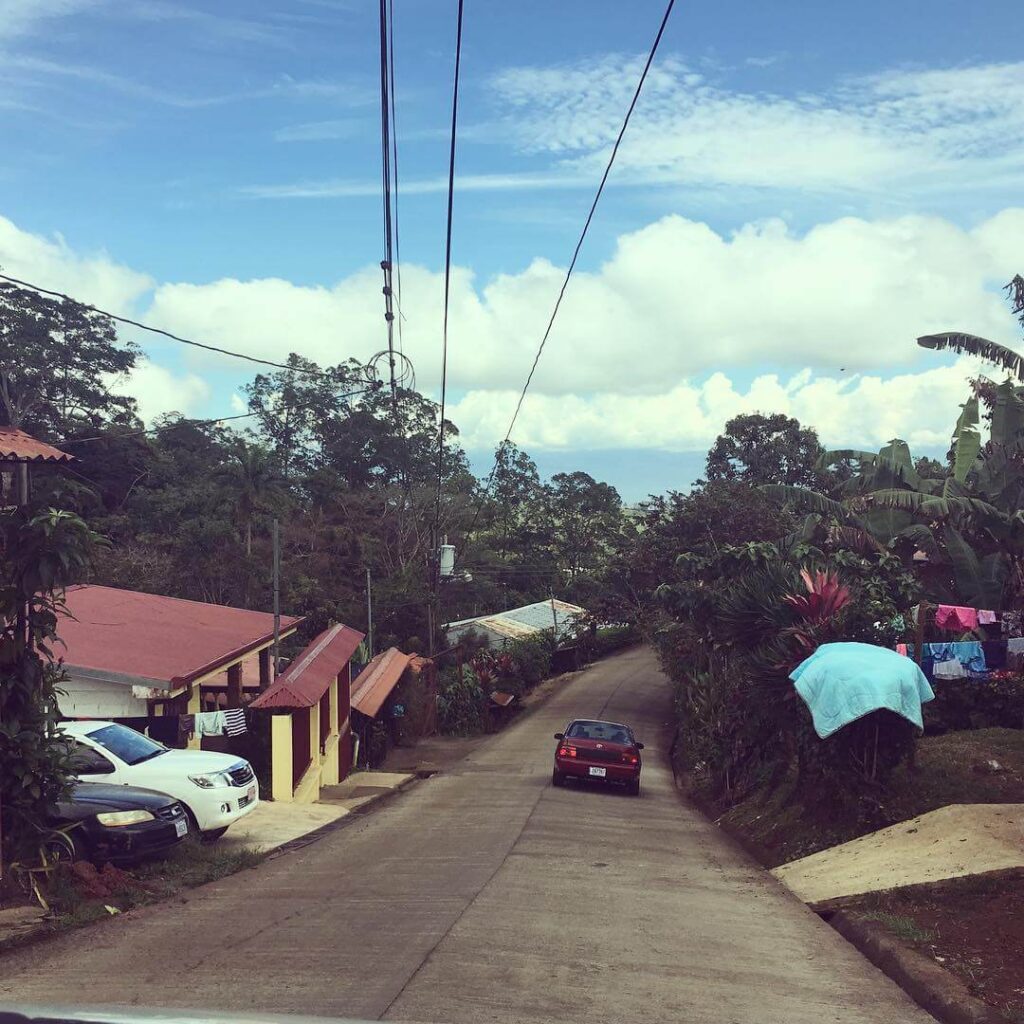
Learning to Drive in Costa Rica

In to the Mountains – 3 Valleys Family tour from Marrakesh Morocco to the Atlas Mountains
The Gallivanting Spoon
A Custom Travel Planning Service
The Ultimate 2-Month Europe Backpacking Trip

This post contains affiliate links. If you use these links to buy something I may earn a commission at no additional cost to you. Thank You and Happy Gallivanting!
Table of Contents
2-Month Europe Backpacking Itinerary & Tips
Europe is one of the most popular travel destinations in the world. It is made up of 44 countries, all connected with a system of trains making it one of the easiest places to travel. Whether you are backpacking through Europe on a budget or no budget at all, you will get to see the same stunning landmarks. We spent two months backpacking through Europe in the Fall of 2021. Planning a trip like this does take some time, but that’s where this guide comes in. This guide will give you tips on backpacking, what cities to visit, what to pack, transportation, and more!
Europe Trip Highlights
- Wandering the Charming Streets of Prague, Czechia
- Scirocco Restaurant Collaboration in Naxos
- Blue Caves Boat Tour in Zakynthos, Greece
- Eating Endless Authentic Cheap Greek Gyros
- Seeing Venice, Italy for the First Time
- Staying at a 5-Star Luxury Hotel in Florence
- Hiking the Amalfi Coast
- Relaxing by the beach in the Surf Town of Ericeira, Portugal
- Touring Barcelona for just One Day
Europe Backpacking Route
Backpacking Tips:
- Time of Year: I recommend visiting Europe in the Spring or Fall to avoid the crowds and cold weather.
- Main Forms of Transportation : Europe offers great transportation services that allows you to travel on a budget. We took advantage of the metro and public transportation services in each city. Planes, buses, and trains are a great way to travel long distances.
- Be Flexible: If you are a Type A Planner like me you will most likely have your entire trip planned out, before leaving. Not everything always goes to plan! If you are visiting Europe for an extended time, I recommend having a rough layout of where you want to visit and for how long. Some places you may love and want to extend your stay!
- Always have Extra Water and Snacks : You never know when hunger might strike, so pack some extra snacks and water. Protein bars are my go to. Many cities throughout Europe have FREE drinking water spouts, bring your reusable water bottle to fill up.
- Accomodation : We stayed in a variety of accomodations. Hostels are very budget friendly and a great place to meet people. Depending on how many people you travel with, Airbnb can be a great option with a full kitchen and extra living space. If you have the extra money, don’t be afraid to splurge on one luxury stay even if it is for just one night!
- International Drivers Liscense: Get your international driver’s license before heading to Europe. Rental shops will ask for it and if you are renting a scooter you may want to look into getting your motorcycle license as well.
- Currency: I highly recommend exchanging USD for a couple hundred Euros with your bank before crossing the pond. Europe is very credit card freindly but it is always a good idea to carry the local currency.
Europe Packing Guide
- Carry On Backpack
- Tripped Travel Gear Day Pack
- Walking Shoes
- Travel Sized Curling Iron/Straightener
- Compressable Packing Cubes
- Noise Cancelling Airpods
- Reusable Water Bottle
- Think! High Protein Bars
- USB Portable Charger
- Outlet Adapter
- Power Converter
Subscribe for my Full Packing List Free Download
Email address:
Paris, France
24-hours, 1 night.
Paris, France is one of my favorite European cities to visit. This charming city takes my breath away each and every time. Paris does a great job of making you feel like you are immersed in their culture with the numerous landmarks, stunning buildings, and delicious French cuisine. Paris was the beginning of our two-month Europe backpacking trip, and I couldn’t have been more excited.
Why only 24-hours?
We were not planning on visiting Paris at all during our two-month Europe trip because we had both spent some time in the city prior. We found cheap flights from New York to Paris that we could not pass up. Our plan was to head straight to Prague when we crossed the pound but there were not many flights to Prague until the next day. We thought we would make the best of our one night in Paris.
How Long to Spend in Paris : 5 Full Days
Must-Try Foods : French Dinner at Brasserie Dubillot , Warm Flakey Croissants, French Macarons, and Duck Confit

Prague, Czech Republic
3 days, 2 nights.
Prague is the capital of the Czech Republic and home to colorful baroque-styled buildings, the Vltava River, and the stunning Charles Bridge. Prague is very traditional with its rich and hearty cuisine. At most restaurants, you will find goulash, Svíčková (braised beef) with dumplings, Grilované klobásy (grilled sausages), and the sweet treat Trdelnik. This was our first time visiting Prague and I quickly fell in love with this romantic city, I cannot wait to return!
How Long to Spend in Prague : 4 Full Days
Must-Try Foods : Trdelnik, Tapas at Fortel , Staropramen Beer, and Svíčková (braised beef with dumplings)

Vienna, Austria
4 days, 3 nights.
Vienna is the capital of Austria and home to some of the most gorgeous buildings. You may also hear the city be called “Wien” this is the local’s way of saying Vienna. Being just south of Germany, the prominent language spoken here is German. Many people will speak English, making it easy to navigate and explore the city. There are numerous things to see in this historic and expensive city. If you are traveling on a budget but still want to get the full Vienna experience then this is the guide for you!
How Long to Spend in Vienna : 2 Full Days
Must-Try Foods : Goulash, Manner Wafers, Sachertorte, Viennese Coffee, Apple Strudel, Wiener Schnitzel

Budapest, Hungary
4 days , 3 nights.
Budapest is separated into two cities by the large winding Danube River. On the east side of the river is Pest which is known for a lively experience for tourists with bustling cafes and modern shops. Buda lies directly opposite of Pest and is home to the Buda Castle and Castle Hills. You may notice things are a little bit quieter and more relaxed here. I highly recommend visiting both sides, as they are just one mile apart with the famous Chain Bridge connecting the two.
How Long to Spend in Budapest : 4 Full Days
Must-Try Foods : Goulash, Drinks at the Ruins Bars, and Töltött káposzta (Stuffed Cabbage)

Zakynthos, Greece
6 days , 5 nights.
Zakynthos is a large northern Greek island known for its stunning Navagio beach and bright blue waters. This is a hidden gem that you may have not heard of but I highly encourage a visit! Zante (what the Greeks call it for short) is an exotic island with a natural landscape of olive trees, beaches, large cliffs, and rolling hills. We stayed in Zakynthos, Greece for one week and absolutely loved our time. If you love adventure as much as us I highly encourage a visit to this stunning Greek island.
How Long to Spend in Zakynthos : 4 Full Days
Must-Try Foods : Greek Salads, Portokalopita (Orange Cake), Lamb, and Olives

Athens, Greece
3 days , 2 nights.
Acropolis means the city at the top, Athens is home to one of the best Acropolis sites that still stands today. Millions of people visit Athens Acropolis each year, making it one of the top attractions in this large city. The Parthenon is the main building atop the Acropolis with over 60 marble columns built at a small angle. The symmetry and attention to detail is an incredible work of art that dates back to 447 BC. The Athens Acropolis is one place you should visit once in your lifetime!
How Long to Spend in Athens : 1 Full Day
Must-Try Foods : Gyros, Mousakka, Greek Dips with Homemade Bread, and Dolma

Naxos, Greece
4 days , 4 nights.
Naxos, Greece is one Greek island you need to add to your bucket list. This stunning island is home to white-sand beaches, the Temple of Apollo, and charming white stone narrow streets. The port city and capital of Naxos is Chora, Chora is a small touristy town where the ferry meets the island dropping off visitors from around the world. Keeping with the traditional Greek cuisine Naxos has some amazing restaurants, including one of my favorites in all of Europe!
How Long to Spend in Naxos : 3 Full Days
Must-Try Foods : Gyros, Saganaki, Orzo (Greek Pasta), and Naxos Cheese

Santorini, Greece
Santorini is one of the most visited and well-known Greek Islands. Its pristine white-painted buildings, blue domes, and cliff views have been posted all over the internet making this one of the top Greek islands to visit. I first thought Santorini was going to be a bit overrated and overly touristy but it ended up being one of my favorite Greek islands!
*Crete is also a stunning island I highly suggest visiting. It is great for solo travel and adventure.
How Long to Spend in Santorini : 4 Full Days
Must-Try Foods : Gyros, Saganaki, Greek Wine, and Spanakopita (spinach pie)

Venice, Italy
Venice is by far my most favorite city in Italy, with its winding canals, charming streets, and gothic palaces. This unique destination is also called “The Floating City” because it is made up of over 100 small islands. San Marco is the most popular island in Venice with historic landmarks, restaurants, and shops. This charming city will surely feel like a dream with delicious Venetian food and romantic gondola rides through the Grand Canal.
How Long to Spend in Venice : 3 Full Days
Must-Try Foods : Cicchetti, Aperol Spritz, Pasta E Fagioli, A full Italian Dining Experience, and Baccalà (local fish)

Florence, Italy
Florence is the capital of Italy’s Tuscany region and home to many museums and art galleries. Fiorenza is the birthplace of the Renaissance, the piano, and the famous frozen Italian dessert, the gelato. The famous red tin roofs and large Duomo have been photographed for years and have become a large tourist attraction with over 16 million visitors each year. This is one charming city that you will fall in love with!
How Long to Spend in Florence : 2 Full Days
Must-Try Foods : Gelato, Famous Italian Sandwiches from All’antico Vinaio, Florentine Steak Dinner, and a 5-Star Dinner at Mimesi Restaurant

Rome, Italy
We spent four days in Rome exploring all of the major landmarks. The Rome Collesuem was a highlight with the wealth of history and large presence it has. Besides eating the best Pasta Carbonaro of my life we also delved into some delicious Neopolitan and Roman food. Visit the charming Ristorante da Barbara for some classic Neopolitan and Roman dishes.
How Long to Spend in Rome : 4 Full Days
Must-Try Foods : Pizza, Pasta Carbonara, Cannolis, and Tiramisu

Positano, Italy
Positano is an Italian village located on the Amalfi Coast of Italy. This colorful city has become one large tourist destination with fancy restaurants and charming hotels overlooking the blue waters of the Tyrrhenian Sea. The city is built on a steep cliffside with winding narrow streets and lots of stairs. Positano is not the cheapest place to visit in Italy but with my top 10 budget-friendly things to do, you can enjoy all that Positano has to offer without breaking the bank.
How Long to Spend in Positano : 3 Full Days
Must-Try Foods : Pizza, Gelato, Anything Lemon, and Italian Charcuterie

Lisbon, Portugal
Lisbon (Lisboa) is Portugal’s capital and one of my favorite cities to visit in Europe. This large city is home to some of the best food with multiple Michelin Star restaurants, authentic pastel de natas, and the famous Time Out Market. Its rolling hills and yellow trams remind me of San Francisco, USA. The colorful tiled buildings and orange-painted city views will take your breath away! Lisbon is a wonderful place to visit with many things to do, famous landmarks, and great food.
How Long to Spend in Lisbon : 5 Full Days
Must-Try Foods : Pastel de Natas, Anything at Time Out Market, Salted Cod, Port Wine, and Ginja

Ericeira, Portugal
10 days , 9 nights.
Ericeira is a small surf town on the west coast of Portugal. This stunning place was added to the World Surf Reserve in 2011 making this a surfer’s paradise. Whether you surf or not you will find plenty to do here. The charming downtown offers fun shops and delicious restaurants. My favorite part was the warm ocean views and watching the waves crash in. Ericeira was a great place to regroup and relax after a lot of travel and sightseeing.
Tip: Book a long stay in a relaxing and low-cost area to take a moment and relax after traveling every 3-4 days!
How Long to Spend in Ericeira : 2-14 Days
Must-Try Foods : Seafood, Smoothie Bowls, and Pastel de Natas

Barcelona, Spain
1 day , 2 night s.
Barcelona is one of my favorite cities in Europe. The ease of living, stunning architecture, sandy beaches, and amazing food won me over after our quick visit. Antoni Gaudí paints this bustling city with architectural works of art. The grandest of them all is the La Sagrada Familia, it will take your breath away. I cannot wait to be back in Barcelona to explore more of this wonderful city!
How Long to Spend in Barcelona : 4 Full Days
Must-Try Foods : Croquetas, Seafood Paella, Patatas Bravas, and Jamon Iberico

Valencia, Spain
Valencia is Spain’s third-largest city. It is one of the country’s most beautiful places with charming warm colors, unique buildings, and large food markets. It is home to the first Paella, an authentic rice dish. The most famous attraction is the City of Arts and Sciences. Valencia is not a very popular city to visit but it will welcome you with delicious comfort food and fun activities.
How Long to Spend in Valencia : 3 Full Days
Must-Try Foods : Paella, Healthy Lunch at Salad Planet, and Fideuà Paella’s (seafood-and-noodles)

Madrid, Spain
3 days , 3 nights.
Madrid is the capital of Spain and is filled with a variety of things to do. It is home to the Royal Palace of Madrid which is the largest functioning palace in Europe. Madrid reminds me of a European New York City with a multitude of food types, large parks, and famous boulevards. The welcoming people, delicious foods, and easy transportation make this one of the top places to visit in Spain.
How Long to Spend in Madrid 3 Full Days
Must-Try Foods : Spanish Hot Chocolate with Churros, Sushi at Sakale, and Huevos Estrellados (fried eggs and potatoes)

Recommended Articles
Your #1 budapest travel guide.

The Ultimate Guide to Backpacking Southeast Asia 2022

The Ultimate Guide to a Rio Lagartos Boat Tour – Yucatan, Mexico

- Skip to primary navigation
- Skip to main content
- Skip to primary sidebar

A Europe Itinerary for 2 months in Europe: Your perfect itinerary for Europe
January 10, 2020 by Karen Turner 35 Comments
On my first trip to Europe, I made a lot of mistakes as I was trying to see many capital cities as possible in the shortest possible time. Halfway through my Europe trip, I was exhausted and I felt like I had barely seen any nature or small cities.
I’ve been very fortunate to have taken multiple European backpacking trips and I’ve been living in Europe for nearly three years now. I hope that I can help a bit with helping you create your perfect European itinerary that mixes capital cities with cultural centers and stunning nature to show you the best of Europe in two months! You’ll find a downloadable excel to help you plan your own European trip at the end!
- 0.0.1 What to know about this European itinerary
- 0.1 Start your Europe trip with three days in Berlin
- 0.2 Three days in Prague
- 0.3 Two days in Vienna
- 0.4 One day in Bratislava
- 0.5 Optional: Three days in Budapest
- 0.6 Optional stop: Two days in Villach, Austria to enjoy the Austrian Alps
- 0.7 More into smaller cities? Consider stopping off in Salzburg and Hallstatt instead of Villach
- 0.8 Two days in Venice
- 0.9 One day in Bologna
- 0.10 Three days in Florence
- 0.11 Day trip from Florence: One day in Tuscany
- 0.12 Four days in Rome
- 0.13 Two days in Torino (Turin), including red wine tastings or hiking
- 0.14 Two days in Provence (via Avignon)
- 0.15 Two days in Barcelona
- 0.16 Three days in Madrid
- 0.17 Two days in Seville
- 0.18 One day in Lagos
- 0.19 Three days in Lisbon
- 0.20 Two days in Porto
- 0.21 Four days in Paris
- 0.22 Day trip from Paris to Versailles
- 0.23 Two days in Brussels
- 0.24 One day in Bruges
- 0.25 Two days in Antwerp
- 0.26 Three days in Amsterdam
- 0.27 One day in Utrecht
- 0.28 One day in Cologne
- 0.29 Two days in Rhine Valley
- 0.30 End of your Europe Trip: One day in Berlin
- 0.31 Download your European Itinerary Excel
- 1 What did you think of this Europe itinerary?
What to know about this European itinerary
I’ve crafted this Europe itinerary to make the best use of a Eurail pass. I don’t work for Eurail, so I’ve crafted this itinerary to help you minimize costs on trains. The Eurail pass is not necessarily the best deal if you’re traveling for two months and spending more time within a country. It’s usually cheaper to buy tickets using from that country’s train system.
I crafted this itinerary to take advantage of the 10-15 days within two months Eurail pass. You’ll need to pay a bit out of pocket for some of the other train trips, but trust me on this, if you book the shorter trips yourself, you’ll end up saving a lot of money compared to the two month eurorail pass! I’ve noted where to utilize your Eurail pass for maximal cost benefit.
- Optional: Budapest
- Optional: Villach/Triglav
- Optional: Turin + Mountains
- Optional: Utrecht
- Rhine Valley

I’ve created a free downloadable European itinerary planning spreadsheet to help you plan your European itinerary, keep track of expenses, and see what you still need to book. You’ll find the link to this at the bottom!
Start your Europe trip with three days in Berlin

Why? Berlin is one of the cheapest cities to fly into in Europe. I ended up finding an amazing flight deal to Berlin multiple times! It’s cheaper to use Berlin as a base.
I recommend three days in Berlin . Besides being Germany’s capital, Berlin is rich in culture and has fantastic museums.
- Visit the Holocaust Memorial, which is free to visit.
- Take a free tour of German Parliament (Reichstag).
- Visit Museum Island to visit the Pergamon Museum and to see the Ishtar Gate, which was moved from Iraq.
- Wander around the trendy Kreuzberg to admire its markets and street art.
- Try your luck at Berlin’s infamous clubs (Berghain).
- Admire the stunning Brandenburger Tor.
You’ll find a number of affordable hostels and hotels in Berlin. I stayed at Wombat’s City Hostel in Berlin, a modern hostel that feels more like a hotel with a rooftop bar. Perfect for breaking the ice on a nice summer’s night!
Check hostel and hotel prices in Berlin now!
From Berlin, take the train to Prague. It’s worth using your Eurail pass for this journey. The journey will take about 4 and a half hours and you’ll find trains nearly every hour! This is a popular European train journey, so reserve ahead.
Three days in Prague

Prague is one of the most beautiful cities in Europe without question. For those on a budget, Prague is one of the best destinations in Europe as beer is cheaper than water, the almost every street is out of a postcard, and it’s possible to stay at a nice hotel for a fraction of the cost elsewhere.
- Tour Prague Castle, one of Europe’s most stunning castles.
- Take a photo at the John Lennon wall.
- Sip on beer with any of your meals. (It’s cheaper than water!)
- Admire the Astrological clock.
- Admire the Charles Bridge. (Best seen at sunrise without people!)
No matter the budget, you’ll find great hotel and hostel options in Prague. On my previous trip, I stayed at a chic design hotel for a fraction of the cost of a hotel elsewhere. A friend of mine stayed at Hostel One Miru and loved it!
Check hostel and hotel prices in Prague now!
The train journey from Prague to Vienna will take approximately four hours. I recommend using your Eurail pass for this trip and reserving your seat ahead.
Two days in Vienna

For culture and history, Vienna is the perfect stop on your European itinerary! You’ll find some of the most stunning museums in Europe, including the Habsburg residence and the Belvedere Palac e. Click for my tips for seeing Austria on a budget !
Even walking around Vienna’s historic center, which is immaculate and as pretty as a picture, is one of the most relaxing things to do for free. As a bibliophile, I was immediately drawn to the Austrian National Library, which is the library that I always dreamed of having.
- Admire the stunning Austrian National Library, which will make you feel like you’re in a fairy tale.
- Climb the St. Stephen’s Cathedral views.
- Tour the museums of the former Habsburg residence.
- Visit the Belvedere Palace to view Klimt’s masterpiece The Kiss.
I was recently in Vienna and stayed at Wombat City Hostel . My room was clean, modern, and quiet. I also enjoyed the lively bar downstairs, which made it easy to meet fellow travelers while traveling solo. For those looking for a cozy boutique hotel, consider booking Hotel Altstadt Vienna for free cake and friendly owners in a uniquely luxurious environment.
Check hostel and hotel prices in Vienna now!
It’s only one hour on the train or bus to Bratislava, so you can visit Bratislava on a day trip from Vienna or bring your bag in order to save a little money on your accommodation. Don’t use your Eurail pass here. It’s cheaper not to!
One day in Bratislava

If you’re looking for a taste of Eastern Europe and a way to get your budget ready for Paris, head to Bratislava! Bratislava is Slovakia’s capital. It’s picturesque, affordable, and full of charm. It’s only about an hour from Vienna to Bratislava (save your Eurail pass!), making it an easy trip although budget savvy travelers should take advantage of the affordable hostels in Bratislava that are half the price of hostels in Vienna.
- Admire the beautiful art nouveau Blue Church.
- Take in epic views from Bratislava Castle.
- Admire the beautiful historic city center.
Click for a complete guide to Bratislava written by a local, Karin!
From Bratislava, it’s around 3 hours by bus (Flixbus) or train to Budapest. If you’re looking to cut costs, consider taking a Flixbus between Bratislava and Budapest, otherwise, use your Eurail pass.
If you’re considering skipping ahead to leave Budapest and the Austrian Alps to give yourself five days elsewhere, you can take a long overnight train ride to Venice, Italy and/or take a budget flight from Vienna to Venice (if you prefer).
Optional: Three days in Budapest

Many European itineraries leave Budapest off because it’s a bit out of the way and I understand that if you end up editing this city stop out of your itinerary to head straight to Italy after Vienna, however, I hope that I can inspire you to visit Hungary’s spectacular capital.
Why leave Budapest on your itinerary? Unlike other European capitals, Budapest feels laid-back and lacks the crazy crowds that you’ll find in Berlin, Paris, and Prague.
This laid back feeling combined with Budapest’s electric atmosphere (with lots of innovation), affordable prices, and dazzling architecture make it easily a city that you’ll want to visit (and probably live in). I ended up coming here on my second European trip and I wish that I had included it in my original European itinerary!
You can find some beautiful accommodation in historic hotels around Budapest. My friends and I ended up splitting a cozy apartment in a beautiful historic building . Those looking for the ultimate luxury experience will be blown away by views at the Aria Hotel .
Check accommodation prices in Budapest now!
You can take a night train or a Flixbus from Budapest to Villach, which will take about eight hours. Alternatively, if you want to skip ahead to Venice (the next stop on the itinerary!), you might be able to find a good budget flight to Venice from Budapest and/or take a night train towards Venice. Use your Eurail pass if you decide to take the train.
Optional stop: Two days in Villach, Austria to enjoy the Austrian Alps

You’re probably wondering where is Villach and why!? Bear with me, but I’ve tried to break up this itinerary to minimize your overnight train journeys and to show you some of the most beautiful places in Europe. After a week (ish) of partying in major cities, the mountain air will feel incredible.
Villach Austria is located right on the Austrian-Slovenian border and it’s only thirty minutes from Triglav National Park in Slovenia. This stunning national park has incredible hiking and beautiful views of the mountains. I’d recommend 1-2 days here in case the weather isn’t in your favor. If you’re not into hiking, pass go and skip ahead to use these two days elsewhere although you’ll end up spending more time on a train.
Check hotels and hostels in Villach now!
From Villach, it’s a four-hour train right to Venice although it’s also possible to take a Flixbus if you’re looking to save your Eurail pass for later.
More into smaller cities? Consider stopping off in Salzburg and Hallstatt instead of Villach

Who can resist the charm of Salzburg ? Sound of Music lovers will enjoy it although it’s definitely possible to combine seeing Hallstatt with Salzburg if you have two days.
Salzburg has a very cozy city center that is perfect for wandering on foot. On my last trip to Salzburg, we stepped into an Austrian beer garden, admired views (shown above!) from the hills, and browsed the various dirndl shops. I definitely recommend stopping in one of the historic coffee houses for an Austrian coffee! Click to read my tips for Salzburg!
Two days in Venice

Who can resist Venice? Venice is where I had my first date with my husband ( really !) and it holds a special place in my heart. That said, it is very touristy and expensive. I recommend limiting your time in Venice to 1-2 days.
It might surprise some of you, but I get agoraphobia (crowd phobia) and Venice was very hard on me as many of the locations were so crowded that I felt that I was a sardine in a can. Venice is still worth visiting, but too many tourists crowding this sinking city is an issue as it’s priced out many residents.
Venice is still a delight to walk around although it’s so easy to get lost in the main city. Those looking for the ultimate luxury experience can stay in former palaces to explore old-world luxury.
Alternatively, budget travelers will find hostels in the historic center and affordable hotels on the outskirts of Venice in Mestre (only a bus ride away!)
Check prices for accommodation in Venice now!
From Venice to Bologna, you can take the high-speed train, which takes 1.5-2 hours. (There’s also slower trains.) It’s your choice if you want to use your Eurail pass, but I found the Italian trains affordable to book in advance without my Eurail pass.
One day in Bologna

Bologna is the foodie capital of Italy. Although most travelers skip ahead to Rome or Florence, you’re missing out on amazing, well-priced eats in this central Italian city that even Italians rave about. Bologna has the oldest university in Italy and despite the significant history in Bologna, it’s a young city at its heart due to the many students.
I loved climbing the medieval towers to take in the city, exploring the Roman ruins underneath the public library (I know!?), and eating the incredible food that Bologna has to offer.
You’ll find many well-priced hotels within the historic center, including hotels in historic buildings . For those on a budget, you’ll find many hostels as well as cheap hotel rooms walking distance from the city.
Check prices at hotels and hostels in Bologna now!
The train journey from Bologna from Florence will take just thirty minutes, so save your Eurail pass for a long train ride where it’s worth it.
Three days in Florence

Florence is truly one of Italy’s gems. As an art and history lover, I spent three idyllic days roaming the picturesque streets of Florence, admiring the Duomo every single time that I passed it, entering every church that I passed as many held museum-quality frescos, and wandering around Florence’s art museums.
Most notably, I said hello to David at the Accademia Gallery, admired Italy’s most stunning frescos at the Uffizi (with getting up early), and ate all the gelato. It’s hard not to be charmed by Florence.
While visiting the many museums in Florence, you’ll want to budget accordingly. I was able to save money by staying at a cozy hostel near the city center and walking everywhere. Those seeking a bit more luxury, you’ll find former palazzos-turned-hotels that won’t break the bank .
Check hotel and hostels prices in Florence now!
Day trip from Florence: One day in Tuscany

Anyone who loves Italy needs to get a taste of the Tuscan countryside. It’s very easy to take a day tour from Florence to Tuscany. I ended up taking a day trip out to the Tuscan countryside to sample Chianti wine, visit Tuscany’s most beautiful towns, and explore Siena.
I ended up making some fantastic friends on the tour and that day remains one of my favorite moments of my European backpacking trip.
The train from Florence to Rome takes about 1.5 hours although it’s also possible to take a cheaper bus, which will take about double the time (3 hours).
Four days in Rome

Can you visit Italy without visiting Rome? History and food lovers will be entranced by the history of Rome. I initially considered staying longer in Rome, but it wasn’t my favorite Italian city beyond the attractions due to the crowds in summer. Still, I tossed a coin in the Trevi Fountain and imagined myself in La Dolce Vita (with a gelato in hand) .
If you visit Rome, you must visit the Vatican to admire the Sistine Chapel and I recommend pre-booking your Vatican tickets as the lines can be sizable. (Note: Women must dress appropriately to get inside the Vatican.
I recommend wearing a long skirt and bringing a scarf to cover your shoulders with.) The lines at the Colosseum can also be very long in peak season, so pre-book your Colosseum tickets if possible. The Roman Forum is truly impressive and I spent a while geeking out about history.
Rome is quite large, so I encourage you to pay attention to the location when booking your hotel in Rome. I stayed at Yellow Hostel after transferring from another one. That said, I’d recommend avoiding the Termini area if possible although most hostels are in this area. Instead, stay in Trastevere , one of Rome’s most charming neighborhoods instead.
Check hotel and hostel prices in Rome now!
The train from Rome to Torino (Turin) is a bit longer (4 hours) and I’d recommend using your Eurail pass if you end up taking the high-speed train. I ended up missing my train and ended up finding out how much it cost last minute without the Eurail pass….
Two days in Torino (Turin), including red wine tastings or hiking

After the crowds in Florence and Rome, I wanted you to experience a stunning Italian city before you left Italy–and a day of quiet in nature.
Turin is the birthplace of Nutella and a beautiful city right on the way to France. I recommend stopping in Turin to taste some of the best chocolates in Italy and enjoy some wine from the world-famous Piedmont wine region at its source before leaving Italy.
- Click on how to take a day trip out to the Piedmont wine region.
- Click for tips on what to do in Turin.
Turin is at the foothills of the Alps, so if you’re itching for some more hiking, I recommend taking a day to enjoy the mountains, which are visible in the distance from Turin. As Turin is lesser-known, you’ll find affordable hotels in beautiful historic buildings as well as affordable hostels .
From Turin, take an overnight train or bus towards France! I personally struggled to sleep on the bunk that I reserved (for a bit extra) due to the train’s rocking motion, so I’m not sure it’s worth it to splurge on a bunk if you struggle to sleep on trains.
I recommend taking a bus as it may be direct as the train may not be direct (with a transfer in Lyon) depending on your destination in France. The journey should between about four to six hours. (It will be less time if you choose to go to Nice, which has a direct train connection with Turin.)
Two days in Provence (via Avignon)

Have you dreamed of fairytale hilltop villages and fields of lavender!? If you’ll be visiting Provence in spring and summer, you’re in luck. Even if you visit in winter, as my parents did, you’ll find stunning stone villages dating back to medieval times.
Getting around Provence without a car is doable although I’d recommend staying in Avignon , a beautiful city with a rich history. Click for advice for more information on the best things to do in Provence.
Avignon was historically where the Roman Catholic Church had its base and you can view the incredibly massive Papal Palace during one of your days in Provence. As Avignon is not a big backpacking destination, I recommend booking your accommodation in Avignon as early as possible as it’s a popular summer destination.
- Take a day trip to see the beautiful villages of Provence.
- Frolic in the lavender fields of Provence.
- Learn about the history of the Roman Catholic Church.
From Provence (Avignon), you can catch the TGV high-speed train to Barcelona. The journey will take about five hours and I recommend reserving your seat ahead as this train is popular (and expensive). Your Eurail pass is worth using here.
Two days in Barcelona

Who can resist the interesting architecture, tapas, and fantastic nightlife of Barcelona? I ended up switching this European itinerary to give you two days in Barcelona and three days in Madrid as I was so exhausted by this point in my trip that I wasn’t in a mood to party. (I’ve tried to build in down-time into this itinerary for this exact reason!) However, people looking to experience the nightlife of Barcelona will want to switch the days to give themselves more time in Barcelona.
I ended up really loving Gaudi’s fascinating architecture, so much so that I headed up to Park Guell and visited Casa Milà. Of course, you must visit the Sagrada Familia although the line is so long that I recommend prebooking tickets in order to skip the line. Otherwise, I enjoyed walking around the charming Gothic quarter to take in the medieval part of Barcelona.
As someone with friends from Barcelona, I strongly encourage you to not use Airbnb in Barcelona. Its impact has been very tough on residents who have been priced out of their own city as landlords evict people in order to put up tourists.
I stayed at Hostel One Ramblas , which I loved due to the fun atmosphere and friendly staff. You’ll find cozy boutique hotels on a budget as well as reasonable 4* hotels with some of the best views in Barcelona .
Check prices for hostels and hotels in Barcelona now!
To get from Barcelona to Madrid, you can take the high-speed train, which only takes 2.5 hours! I ended up using my Eurail pass for this journey as it was pricey otherwise.
Three days in Madrid

Madrid is one of my favorite European capitals and I can’t believe that I had almost crossed it off my list as everyone told me that it was boring. Between lounging in the Parque del Buen Retiro, admiring Bosch’s masterpieces at El Prado, and eating tapas, you’ll find something for everyone. Although Barcelona often is praised for its nightlife, Madrid has its own nightlife within the rock and roll bars in Malasaña.
Click for tips on visiting Madrid on a budget!
You’ll find a number of affordable accommodations in Madrid. The Hat is a great option for those on a budget. They also have one of the best views in Madrid. You’ll also find affordable rooms at a 4*-5* hotel if you book ahead.
Check hostel and hotel prices in Madrid now!
To get from Madrid to Seville, you can take the high-speed train, which will take about 2.5 hours. Once again, I used my Eurail pass, but this is a choice.
Two days in Seville

Seville is so nice to visit AFTER Barcelona and Madrid. I finally felt like I could relax once I was in Seville. The slow pace and stunning architecture made it a nice place to decompress.
The Alcázar is a palace dating back to Moorish times that will transport you instantly to another world. Even if you’re entranced by the tessellations within the patterned tiles/wood, you can imagine yourself on the Game of Thrones set.
Similarly, you can visit Plaza de España, one of the filming locations for Star Wars. Architecture lovers will love the modern Parasol while dance lovers will be fascinated by flamenco, which can still be seen at a number of local bars.
For a fraction of the price elsewhere, you can stay in hostels with insane perks like free dinners (like at the hostel that I stayed at). Alternatively, you can stay in boutique hotels in beautiful historic buildings .
Check hostel and hotel prices in Seville now!
Take the bus to Lagos from Sevill e . This is easy to book once you’re in Seville. There’s no train connection between Lagos and Seville.
One day in Lagos

Although Lagos was a bit too much of a party destination for me, most people that I know loved Lagos. The main thing to do in Lagos is to lay on the beaches, which you’ll find hidden among the rugged rock formations.
At night, everyone goes out to dance the whole night away at cool outdoor clubs. One day and one crazy night in Lagos were enough for me.
In summer, Lagos’ accommodation fills up, so be sure to book your accommodation early. Check the reputation of your hostel beforehand as I ended up staying at a party hostel by mistake, which was something that I didn’t enjoy. Check prices for hostels and hotels in Lagos now!
To get from Lagos to Lisbon, I took the bus as the train ride was actually longer and more expensive than the train. The journey will take about 3-4 hours.
Three days in Lisbon

For years, people have been saying that Lisbon is a hidden gem of Europe and I have to agree. People are increasingly discovering Portugal’s capital, which is full of charm.
Beyond getting lost in Lisbon’s beautiful streets, lined in colorful tiles, you’ll find castles dating back to Moorish times, lively nightlife, and fantastic museums telling the history of Portugal. Click for tips for visiting Lisbon!
Lisbon is notably affordable though tourism is starting to drive prices up. On my recent stopover with TAP Portugal, I ended up staying at Nest House , a boutique hostel located in the cozy Alameda neighborhood, which is a bit far away from the loudness of Barrio Alto.
As with Barcelona, I recommend staying at hotels rather than an Airbnb as Airbnb is starting to cause housing prices to skyrocket. You’ll find some beautiful boutique hotels in Lisbon !
Check prices for hostels and hotels in Lisbon now!
It couldn’t be easier to get from Lisbon to Porto. The train takes only 2.5 hours although you can also take the bus if you choose to save money on this journey.
Two days in Porto

Lisbon’s big sister has all the charm and half the crowds. Porto is full of historic buildings, some dating back to medieval times, beautiful bookstores, and fantastic wine.
Most people don’t realize that J.K. Rowling lived in Porto and it’s said that the Livraria Lello bookstore inspired her vision of Hogwarts. Lovers of food and alcohol will enjoy tasting port wine in the cellars along the river. Of course, a trip to Portugal is not complete with pastries although you’re sure to burn them off on the steep hills.
While in Porto, I stayed at Yes! Porto Hostel , a boutique hostel with amazingly friendly staff and a lovely rooftop overlooking the city. You’ll find numerous boutique hotels with innovative features. I recommend looking into Torel Avantgarde , a stunning design hotel with an edge.
Check prices for hostels and hotels in Porto now!
Porto has one of the best budget airports in Europe. Although you could, in theory, take a train from Porto to Paris, it will probably be cheaper to fly with one of the budget airlines from Porto to Paris. I paid about twenty euros for my budget flight. (I see a flight for 23 euros for this week with Transavia!)
I recommend flying into Orly rather than Charles de Gaulle as CDG is quite far away from Paris and Orly is far closer. The flight will take two hours and it’s quite easy to take the train to the Porto airport from the city.
Four days in Paris

Who can resist Paris? The French capital is a classic stop on every European itinerary and I’d recommend ensuring that you have four days in Paris as any less will force you to make hard decisions about what to do in Paris.
Beyond seeing the Eiffel Tower, touring the Louvre, strolling around Montmartre , taking in Paris’ covered passages , exploring Le Marais, eating all the crepes/macarons, and strolling along the Seine, you’ll find that four days is a great amount for a trip.
Hotels in Paris can get quite expensive, even for a basic room. I recommend booking in advance as possible, especially if traveling during spring or summer. Check hotels and hostels in Paris now!
Click for my perfect itinerary for four days in Paris
Day trip from Paris to Versailles

Versailles requires a whole day to itself. The former royal palace is over 721,182 square feet and you truly will understand why generations of tourists and French citizens alike say that you must visit Versailles.
I have to agree and I wish that I had included it in my first European trip. (I skipped it as I thought it was overrated.) After exploring its gardens and Marie Antoinette’s estate, I think that Versailles must be included on your European itinerary.
Click for tips on taking a day trip from Versailles from Paris!
To get from Paris to Brussels, you’ll have a couple of options. I’ve taken the Thalys, which only takes 1.5 hours although you can also take a slower and cheaper train that will take three hours. I recommend using your Eurail pass if you take the Thalys. Similarly, you can also take one of the budget bus journeys for as little as ten euros!
Two days in Brussels

Belgium’s capital is great for a taste of Belgium’s blend of cultures. People in Brussels tend to speak both French and Flemish, so you’ll see a mix of both styles of architecture in Brussels. You can click for my weekend guide to Brussels.
Beyond architecture, Brussels is one of the best destinations to visit in Europe as the Belgians have truly perfected the art of chocolate making. I went on a chocolate tour in Brussels and it was truly an great experience. The beer (the next day) is great.
Brussels can get quite expensive during peak summer. While doing my visa for France, my husband and I ended up visiting Brussels several times. We especially enjoyed Van Gogh Hostel for its atmosphere and central location. The previous time, we stayed in the charming Ixelles neighborhood in a charming boutique hotel .
Check hotels and hostels in Brussels.
To get from Brussels to Bruges, you just need to take the train. which costs less than fifteen euros! The journey is only one hour, so it’s quite easy to visit Bruges on your own.
One day in Bruges

Bruges (Brugge in Flemish) is straight out of a postcard. This charming Belgian city is perfect for a day trip from Brussels although I’d recommend staying the night to be able to stroll along the romantic canals of Bruges. Beyond charming architecture, Bruges is home to De Halve Maan brewery, which is a great stop for learning about Belgian beer. (I’ll be adding a lot about Bruges soon!)
Check hotels and hostels in Bruges.
To get from Bruges to Antwerp, you can take a bus or train, which will take about 1.5 hours. Save your Eurail pass as the Belgian trains are quite cheap.
Two days in Antwerp

I fell in love with Antwerpen (Antwerp) from my first trip to this charming Belgian city. Although many people skip Antwerp, its charm is fully there and you won’t find the insane crowds as you see within Bruges.
The Grote Markt cannot be missed although visiting the Plantin-Moretus Museum is a must for literature lovers. On my last trip, I enjoyed Antwerp’s cozy and quirky beer cafes.
Click to read more about what to do in Antwerp i n my one day guide.
To get from Antwerp to Amsterdam, you can take the train, which will take about an hour with the Thalys. It’s also possible to take the bus (Flixbus), which I’ve taken several times. The bus is cheaper, but it takes three hours.
Three days in Amsterdam

I’ve lived in Amsterdam for over two years and I can’t recommend less than three days in Amsterdam during your Europe trip. Amsterdam is a beautiful city, but it takes some time to enjoy its charms.
Beyond taking a canal cruise and exploring Amsterdam by bike (if you dare!), take some time to discover Amsterdam’s secret spots , including historic courtyards . Skip the tourist trap museums and spend your time outside of the Center to experience Amsterdam at its best (and cutest). (You can read an Instagram guide to Amsterdam here.)
Click for your perfect itinerary for Amsterdam.
In spring and summer, Amsterdam accommodation becomes expensive, so be sure to book your Amsterdam accommodation ASAP. If you’re trying to figure out where to stay in Amsterdam, click for my neighborhood guide to where to stay in Amsterdam to help you decide where is best for you!
From Amsterdam to Utrecht, it will only take you forty minutes on the Dutch trains. I recommend saving your Eurail pass if you’re unsure whether to use it.
One day in Utrecht

Utrecht is one of my favorite cities in the Netherlands. It’s also on the way down to Germany, so consider spending a day and a night in Utrecht to see what the Netherlands outside of Amsterdam. Utrecht is a stunning city with lower prices, two-story canals, and an inner-city dating back to medieval times. You’ll fall in love with Utrecht instantly, I promise.
Click for your itinerary for one day in Utrecht
Utrecht is considerably cheaper than Amsterdam, so use this as your chance to save money on your accommodation. Utrecht has a number of stylish hostels although I absolutely loved staying at Hotel Dom , a boutique hotel with incredible views.
Check prices for hotels and hostels in Utrecht now!
To get from Utrecht to Cologne, you can take the train or the bus. The journey should take about three hours with lots of picturesque Dutch countryside views.
One day in Cologne

Cologne is a charming German city with a Gothic cathedral that you’ll want to see. I especially recommend visiting Cologne in time for Carnival and to browse the Cologne Christmas market. Beyond these events, Cologne has some adorable neighborhoods and a beautiful riverwalk. (More about the riverwalk very soon…)
Check prices for hotels and hostels in Cologne now!
Two days in Rhine Valley

One last hurrah before you leave Europe! Head to Rhine Valley for some of the most beautiful castles in Germany and wine. Although you might associate Rhine Valley with river cruisers, you’ll find hostels within castles in Rhine Valley.
Take this last chance to enjoy European culture, architecture, wine as its best. For those interested in sports, Rhine Valley has some fantastic hiking and biking.
Click for what to do in Rhine Valley.
End of your Europe Trip: One day in Berlin
Didn’t get into Berghain? You got one last night in Europe to live it up. 😉
Download your European Itinerary Excel
I’ve created a free downloadable European itinerary planning spreadsheet to help you plan your European itinerary, keep track of expenses, and see what you still need to book.
I found the hardest part about planning my first European trip was figuring out what I had already booked–and what I hadn’t beyond the flight. I hope this excel helps you.
What did you think of this Europe itinerary?

About Karen Turner
New Yorker–born and raised. Currently living in the Hague, the Netherlands after stints in Paris and Amsterdam. Lover of travel, adventure, nature, city, dresses, and cats.
Reader Interactions
May 5, 2018 at 9:26 am
Wow! This is quite the post! I like how you picked big and small cities. Also, I’ve been so some of these places and would agree with you the amount of time to see each place. This is quite the task to put such a comprehensive itinerary – thank you for sharing!
May 5, 2018 at 9:43 am
Wow this itinerary covers amazing places! Definitely includes some places I still need to check off my list haha
May 5, 2018 at 11:03 am
what an epic post! Completely agree about Prague – I could have spent so many days photographing it! So many great suggestions, cannot wait to get exploring more of Europe – particularly Amsterdam, so lucky you lived there for two years, it’s been on my bucket list for so long!
June 11, 2018 at 10:46 am
Your 2 month itinerary is amazing and has helped me with my planning immensely!! We also wanted to include Poland Turkey Greece England and Switzerland as we have almost 3 months in Europe from NZ. We would really appreciate it if you could please help us include these countries in the itinerary you have done as I am struggling to economically route these extra countries into the existing itinerary- thanks Jan NZ
June 11, 2018 at 10:55 am
I’d see if you can add Turkey + Greece + Poland to a leg near the end where you work down from Poland through Eastern Europe then the Balkans down to Greece/Turkey. I think that might be a cool month.
I cut Switzerland out as it’s quite expensive to travel in. The UK is cool, but also expensive. It would be easy to add the UK to your travels in Paris or Amsterdam although you might find cheap flights there from other cities with Easyjet.
Hope that helps and you have a great trip!
June 11, 2018 at 11:43 am
Thanks for that Karen,so maybe start in Poland then go to Berlin from there carrying on through the route itinerary you have for the 2 months but deviating from Italy to Greece and from there to Turkey before going back to Italy to Continue the rest of the itinerary to France Spain etc??
July 4, 2018 at 9:27 am
Hi, I am looking at traveling in December/January by rail with our two kids aged 14 and 11. Will you still recommend your above route? I was looking at spending Christmas in Moscow , wanting to see a few xmas markets along the way.
July 4, 2018 at 10:25 am
If you think that your kids can handle the faster pace, maybe. Moscow isn’t close. Look up Cologne on my website for the christmas markets.
July 8, 2018 at 2:06 am
Thanks for the awesome blog post. I was wondering how you’re living in Europe currently. I have been fortunate enough to visit Europe a few times now and am currently trying to figure out how to move there. So far, I’m thinking grad school in Germany.
July 8, 2018 at 9:14 am
There’s an article about how to work abroad on my blog that discusses it. Grad school is a great way to move abroad. 🙂
August 5, 2018 at 4:58 am
Love your post! I was just curious if you could give an idea of about how much this would cost going the same route you took. I was also curious what month you think would be best to start? Thanks!
August 5, 2018 at 5:02 am
Hi Donna, I’d recommend around $6-8k USD, but more can’t hurt. It really depends how you travel as I minimized museums and I think that I could do it way cheaper today given that I’d take more buses/budget planes instead of doing Eurorail. It was still an amazing trip. Summer is the most expensive time to visit Europe, so if you can visit in September or March, it might be nice as you’ll get cheaper prices. (April is expensive for the Netherlands, but worthwhile for seeing the tulips.)
Best, Karen
September 25, 2018 at 6:57 am
thank you for your amazing blog. I am planning our trip in Dec, Jan this year. Slow planners. We are heading to England. We start as a family of 4 and meet up with a son in germany at the end of Dec. The essentials of our trip starting around 3rd Dec is to start in London for a few nights, visit friends in Sussex for a few days. My son would love to see a Manchester City football game while in the UK and my actress daughter of course wants to see some theatre. I am thinking we will get to Germany around the 13th December and tour around Germany ending up at a friends house near Nuremburg for approx two weeks where we can do day trips. In that time we would like to see prague. I have booked 3 days from the 30th in Vienna where we will spend new Years. We also want to see Saltzburg, Hallstatt, and I would like to see Switzerland or a day or two (I know its expensive so just a short visit) as we make our way to Vienna where i have booked accommodation and concert on new years day, Milan maybe and then to Paris. As we would like the kids to ski/snow board we have had suggested Zell am See, Filzsmoos, Innsbruck, and others have said skiing in france or even slovakia. We love small village attmosphere. We will have until approx January 26th before returning to Australia. My head is spinning and I don’t want to be exhausted as you mentioned in your post after our first visit.
We are wondering whether with that many people – 5 if it is worth hiring a mini van as a friend suggested. My concern are the icy roads and my husband not really being able to enjoy himself with me navigating. Any suggestions of highlights along the way would be awesome. My children are daughter 28, son 18 and son 16 and love history, adventure and soccer and theatre. Thank you for your spread sheet I will certainly be using it.
September 25, 2018 at 9:58 am
I think that a minivan will be considerably cheaper than the trains. I’m not sure what to say given that you’re not comfortable driving. Flixbus and other options might be worth looking into. Your itinerary is quite heavy on major cities, so buses might be worthwhile.
Milan isn’t really on the way, but after Vienna, it might be worthwhile to head south towards Slovenia and Italy until you make your way back to France. I’d recommend taking it slower during this time as you’ll find lots of great skiing in Northern Italy and in the mountains of Slovenia. 🙂
If you are looking for some beautiful towns in Austria, check my recent blog posts.
You can see the main attractions of Hallstatt and Salzburg in about two days. I have a guide about both on my website. You might like St. Gilgen, which I also wrote about, which has a well-known Christmas market, and a lovely small town atmosphere.
I’d recommend going east to Slovakia. Lots of cute towns as well as great skiing at a fraction of what it costs in Austria. You might be really surprised by Eastern Europe in a good way. I’ve heard the skiing in France is great too. The Dolomites in Italy are also very famous for skiing and full of beautiful towns.
Best of luck with the itinerary. I recommend ensuring that you account for travel days as well as try to give yourself a rest here/there. 🙂
April 1, 2019 at 6:13 am
Thanks for sharing your itinerary and travel tips Karen. I am planning a trip to Europe beginning in Sept.2019 and had no idea where to start. I love the Excel spreadsheet. I want to travel to Greece and Turkey so may cut out some of the cities. Travelling from Canada so just looking into flights now and finding travel buddies. If it’s just me then so be it 🙂 I did NZ solo 4 years ago without much planning and it worked out fine. I think Europe is much busier though.
April 1, 2019 at 8:58 am
Hi Sherry, I”m so glad to hear that! Be sure to see a bit of the Balkans. I’ve written about Albania, Kosovo, and Serbia here. I love the Balkans and definitely see if you can maybe give yourself a few weeks (to help your budget) within the Balkans. As you’re going in September, it will be a bit less crazy than in peak season, however you still will want to book hostels in popular cities (like Amsterdam). Enjoy the trip and the planning. 😉
May 2, 2019 at 9:08 am
Hello! May I know how much you spent into total for your 2 months trip? 🙂
May 2, 2019 at 11:49 am
About 100 euros a day if I recall. That was with staying at hostels.
May 7, 2019 at 6:12 am
What do you mean by this? – “….if you book the shorter trips yourself, you’ll end up saving a lot of money compared to the two month eurorail pass! ” Is buying point-to-point tickets cheaper than getting a 2 months eurail pass?
May 7, 2019 at 6:47 am
Btw, your itinerary helped me tremendously as I plan my itinerary for my 3 months Europe trip from June to August! I am torn between getting a 15days in 2months Eurail pass or taking buses all the way but I am worried that the bus timing might not be ideal and I would end up wasting too much time on the bus. It’s a risk I don’t know if I should take lol.
I will be visiting these places for my trip – Venice, Rome, Florence, Nice, Avignon, Barcelona, Madrid, Lisbon(flying to paris), Paris, Brussels, Rotterdam, Amsterdam, Bremen, Berlin, Prague, Vienna + Bratislava, Budapest, Zagreb, Ljubljana, Salzburg, Munich, Lucerne, Interlaken, Venice
I will greatly appreciate any advises from you! Thanks!
May 7, 2019 at 1:01 pm
Hi Alexis, Thanks for your lovely comment! I think you’ll be surprised how affordable Flixbus and Ouibus are in Europe. You can *always* buy train tickets for the longer legs (where you’d be going overnight with the Thalys or another train!) as well as buy train tickets within one country. Many countries have quite affordable trains as long as you buy your tickets in advance through the official website. I did this recently within Austria and I was pleasantly surprised how reasonable the trains were. Hope that helps. I’d recommend just writing down the price for maybe 5-10 of these longer trips by train without the Eurorail pass to compare the costs and I think you’ll find that you will save big with taking buses shorter distances. I personally dislike overnight buses myself. 🙂 Hope that helps. -Karen
May 8, 2019 at 4:09 pm
Thank you for your prompt reply! I agree, some buses are reaaaally dirt cheap as compared to the trains! Can I also check with you – does the eurail pass covers all or certain train lines? Do I have to make reservations for all the trains? Are the reservation price expensive?
July 17, 2019 at 4:53 pm
I am so pleased that i found your blog! I am going off travelling with my husband in 1 month and we are starting in europe for 2 months. Its been hard to try and string something together and like you say, i was worried that visiting all of these cities would burn us out! Thank you for sharing 🙂
July 21, 2019 at 5:10 pm
So glad to hear that April! I hope you have a great trip. Don’t go too crazy with the planning as it really can burn you out!
August 26, 2019 at 9:34 pm
Just a quick tip to update the post because I just checked airberlin and it seems like it’s out of business. Great post otherwise
September 23, 2019 at 5:41 pm
Thank you so much for sharing, this is really useful for me to plan my grad trip! Can’t wait to visit all these places. saving up for it right now!
December 2, 2019 at 6:53 pm
Would like advise about how/where to cut your two month itinerary down from two months to one month. We are looking at flying in and out of Paris (cheapest flight $447) Family of 5 kids 18, 15, 13. June 26 to July 30 2020 Any thoughts?
December 9, 2019 at 3:23 pm
Hi Liberty, that is a good price from the US. Once you’re in Paris, you can book train tickets in advance for a good price (Amsterdam or London!), take budget airlines (KLM also has a city hopper flight option), or also try out Flixbus for getting between European cities that are not far apart. I’d pick one region or a few cities to focus on with taking a few day or weekend trips to see each country outside of the major cities. I’m not sure what part of Europe interests you the most, but this will be peak season. Starting to plan now is good–and be sure to book hotels early.
December 4, 2019 at 11:41 am
Hi i was just wondering what you would estimate the approximate price would be altogether
December 9, 2019 at 3:27 pm
It depends on you and how you travel. I spent about $6k including everything staying on the budget-side of things, but this was also a couple of years ago.
March 16, 2020 at 11:45 am
Thanks a lot for your travel blog. I just got back from europe and had to cut my trip short due to corona virus. I started in London and had to change Rome. Since my next place was Amsterdam, I chose to go to The Hague your hometown. The places you recommended were awesome. Delft, Cafe Vers and Binnenhof were my favorites. You are lucky to live in such a great place. After The Hague I did get to go to Amsterdam and on to Brussels. But Bruseels was basically shut down, do I left yesterday as I dont want to get locked down in a foreign country. Thanks for the blog. Netherlands was an awesome place. I will sure your other blogs when i finally do make it to paris and other areas. My 8 week dream trip was only 2 weeks, but i feel fortuante to be able to see London, The Netherlands, and a half day in Brussels.
April 13, 2020 at 6:47 pm
So glad to hear that Brett! Glad that your trip was nice despite being cut short and hope we can all travel again soon 🙂
July 24, 2020 at 5:53 am
I also loved Antwerp when I visited last year. The Plantin-Moretus was outstanding! Since I’ve been to many of the cities you listed in Western Europe (so glad to see Avignon made the list, and Lagos was unbelievable!), I plan on using your suggestions for the more central locations for my next big trip. Thanks for your post!
April 25, 2022 at 8:02 pm
Wow, such an amazing post. I love the way you broke everything down. I’m also hoping to back paddle through Europe this summer. I only have one month and not two. I know for sure Paris, Italy and Spain are my main counties that I want to visit. Can you please give me an intinary with just a min time frame.
May 5, 2022 at 2:13 pm
If you do budget flights, much more is possible, but I’d focus on major cities if that’s your focus 🙂
Leave a Reply Cancel reply
Your email address will not be published. Required fields are marked *
- The Netherlands
- New York State
- Other European destinations
- Work With Me
- Disclosure and Privacy Policy
- Jeju SEO Tool: Free SEO Writing Tool
You can unsubscribe anytime. For more details, review our Privacy Policy.
You have successfully joined our subscriber list.
TreasureHunter USA Inc. 251 Little Falls Drive Wilmington, Delaware 19808 +1 (915) 4632387 EIN 88-2174128
www.wanderlustingk.com is a participant in the Amazon Services LLC Associates Program, an affiliate advertising program designed to provide a means for sites to earn advertising fees by advertising and linking to amazon.com. As an Amazon Associate, we earn from qualifying purchases. We also participate in other affiliate programs
www.wanderlustingk.com all rights reserved © 2023 | Privacy Policy | Cookie Policy |

Two Months in Europe Itinerary
Welcome to our two months in Europe Itinerary! Europe is absolutely awash with beautiful cities and full of activities so it’s no wonder the region is one of the most popular destinations for backpackers. No matter what you enjoy doing, Europe has an array of climates to satisfy your desires; from skiing in the Alps or relaxing on a beach overlooking the Mediterranean Sea, the possibilities are endless!
Our Two Months in Europe Itinerary provides you with the best route around Europe so you can see as much of Europe in the shortest possible time. We’ll also recommend how long to stay; what to do; where to stay; and the average cost per day for each destination.
If you are travelling around Europe, here are some other guides you might find useful!
- The 23 Best Hostels in Europe
- The Top Party Destinations in Europe
- Tips for Travelling Europe on a Budget
Do I need a visa for my Two Month Europe Itinerary?
Now, this entirely depends on your nationality. For example, if you’re a UK National, despite Brexit, you can still travel to the EU/Schengen Area for up to 90 days WITHOUT needing to apply for a visa. In addition, Canadian or American nationals can also travel visa-free for up to 90 days.
To clarify whether you need to apply for a visa before entering the EU/Schengen Area, we’d advise checking your respective country’s foreign department and the European Commission’s Migration and Home Affairs policy on Visas.

What to pack for Two Months in Europe?
Some people may recommend taking a wheeled suitcase for two months in Europe and we completely understand why. However, if you are trying to keep this trip as budget-friendly as possible (like we did) you may well find yourself walking through old towns and up a lot of hills. Europe is notorious for its cute cobbled alleys, which while beautiful are not ideal for wheeled suitcases.
We would recommend taking a 40L backpack such as this Osprey one . If you find yourself having to take a flight here and there, you’ll appreciate not having to spend extra on checked-in baggage – which can double your flight price in Europe. If you are not planning on taking many flights, this larger Osprey backpack is the one we use for all our travels and it has a perfectly sized zip-off backpack for day trips.
European weather can be very unpredictable and throughout this two-month trip, it is likely you will experience varying degrees of temperatures and climates, and this can be minimised depending on the time you visit. We started with bright sunshine and ended with lots of snow; because of this, layers are your best friend. A comfy pair of shoes is an absolute must as you will be walking a lot; we brought two pairs each and felt this was the right amount considering baggage space. Europeans tend to also dress very smart-casual which is a huge generalisation but if you do not want to stand out as a tourist, neutral colours and smart-casual are the way to go. It’s also very helpful to be comfortable in whatever you wear.
A tote bag has been a great addition to our packing list and we now won’t go anywhere without one; it’s super handy as a day bag and will barely take up any room in your backpack. We’d also highly recommend an under-the-clothes money belt as, unfortunately, pickpocketing is rife in big European cities.
Accessories
As luck would have it, we’ve already set out everything you need to purchase before travelling around Europe. Make sure to check out our Ultimate Amazon Shopping List ; Top Gadgets you NEED for Travelling ; and 21 Must-Have Apps for Travelling !!
In addition, as your two months in Europe will be pretty hectic, we wouldn’t recommend bringing a laptop. Whilst technology will go a long way to helping you relax after a long day of exploring, most of this can be enjoyed through your phone.
However, if you’re planning a worldwide tour or wishing to work abroad afterwards then you should definitely consider taking your laptop. You can change your mind and have your laptop shipped out to you but this is obviously expensive.
How to get around Europe
Flying is a very viable option for exploring Europe. Flights between European countries do tend to be more affordable than in other locations in the world but it’s still quite more expensive than other options. If you are planning on flying around Europe, be sure to only take hand luggage as putting your luggage in the hold can often double the price of your ticket!
We’d recommend using Skyscanner or Expedia to get all the best deals.
We mostly got around using buses during our two months in Europe. Buses are usually the cheapest option but they do tend to take longer than trains. Therefore, if you aren’t tight on time, we’d definitely recommend looking into using buses on your travels.
We’ve found that Flixbus was a very reliable and popular company for getting around Europe. However, make sure to check out Omio who will provide you with all the best options!
Trains are probably the most common way for backpackers to get around Europe as many people travel via Interrail or Eurorail route.
One of the reasons why is that they’re affordable, quicker and tend to take you directly to the centre of the city you wish to visit. They’re also very affordable
Check out these interrail tips for first-timers to decide if this is the best option for you!
Renting a car
While renting a car is a less popular option for getting around Europe, if you have a larger budget, it can be a great way to explore the region. Pretty much the whole of Europe is driveable and there are some stunning road trips through the countryside.
As you can imagine, renting a car has numerous benefits; you’ll get to experience each country at your own pace and not rely on the (sometimes) inferior local transport to get around.
How much would Two Months in Europe cost?
We’ll be completely honest here, Europe was our first destination and we hadn’t had a holiday for over two years so it is safe to say that we weren’t frugal with our money at the beginning; as shown by the amount of sangria and olives we consumed. As a result, we spent nearly £10k between us in two and a half months.
However, if you’re eating cheaply and staying in hostels, you could easily spend two months in Europe for less than £4k (per person). That being said, make sure you still enjoy yourself and don’t be weighed down by the cost of everything; money can be earnt back but opportunities can’t.
Where to start?
As we’re from the UK, London was naturally our starting point as it has great air and land links with the rest of Europe. No matter where you’re from in Europe, it will be far easier starting from your nearest biggest city like Munich or Milan. Alternatively, if you’re coming from the United States or Canada, we’d recommend flying to a major city in Western Europe; any city that has good connections and is well-priced. This could include London, Amsterdam, Paris, Madrid or Barcelona. From these locations, you can follow this recommended route or do it backwards.
Do bear in mind that your route will also depend on your plans after your two months in Europe I.e. which airport is the best/cheapest to fly out from to go home or my next destination.
However, for our two months in Europe itinerary, we’d recommend starting off in London due to Heathrow’s great connections worldwide.
Starting Point: London, England

Our two months in Europe itinerary starts in London. London is one of the best tourist destinations in the world with vast amounts to do and see in each part of the city. Frustratingly, however, London is quite expensive for backpackers so whilst you could easily spend a week here, it will blow a massive hole in your budget that isn’t really worth it. Moreover, people spend years living in London and they’ll still not have seen everything London has to offer; it’s just that big of a place. As a result, we’d recommend spending three or four nights here and focusing on the bits you REALLY want to see.
If you’re a foodie, then London is the absolute place to be. We love the fact there are so many independent cafes and restaurants offering quality food from a variety of different cuisines. Moreover, getting around London is incredibly easy; the London Underground or Tube is arguably the best in the world when taking into account cost and coverage.
Even though we like to think we know our stuff about London, we found these London Travel Plans guide super informative and really handy. It gives you tonnes of tips on how to get around and where to visit so its definitely a must-read if you’re planning to visit.
How long to stay: 3-4 nights
Getting around: Tube or walking
Currency: GBP, £
Where to stay: Generator London
Must Do’s: Camden Market, London Eye, Big Ben, London Walking Tour
Average cost per day: £60-£80
Stop 2: Madrid, Spain

How to get there?
Travelling from London to Madrid is incredibly easy; flights operate from London Heathrow and Gatwick airports multiple times a day and normally fly into Madrid’s Adolfo Suárez airport. Flights start at around €50 and many deals include checked-in baggage which makes them very affordable!
Madrid is a city that many backpackers miss out on but it was one of our favourite stops throughout the whole of Europe. In comparison to Barcelona, we found Madrid a lot less touristy and enjoyed the fact that you could get to all the attractions on foot.
We also particularly enjoyed and embraced the Spanish culture of eating tapas as the sun sets every evening. Whilst eating later in the day (no earlier than 9pm) took some getting used to, we fell in love with sangria and olives in Madrid; you absolutely must try!
How to get there: Fly from London €50
How long to stay: 3-4 nights
Getting around: Walking or Metro
Currency: Euro, €
Where to stay: The Hat Hostel
Must do’s: Museum des Illusions , Parque de El Retiro, Plaza Mayor, Mercados (Food Markets)
Average cost per day: €50-€70
Why don’t you check out our Madrid Travel Guide for more information about visiting Madrid?
Stop 3: Barcelona, Spain

As you can imagine, Spain’s two biggest and most populous cities are very well connected. You can choose to travel by plane, bus or train; however, we’d recommend taking the latter as it’s affordable and can provide better comfort than the other two options.
Whilst we met tons of backpackers in Barcelona , it is a VERY popular holiday destination as it is home to a lot of Europe’s most iconic landmarks , so if you want to put yourself in a position to meet other people then definitely make sure to stay in a busy hostel.
The metro is by far the best way to get around given the frequency of stations and how big Barcelona is; trust me, it can take some time on foot. This city has so much to offer we would recommend staying for at least 4 days in Barcelona .
How to get there: Train from Madrid €30
How long to stay: 5 nights
Getting around: Metro
Where to stay: Yeah! Hostel €20
Must do’s: Sagrada Familia , Park Guell , Free walking tour, Beach day
Average cost per day: €50-€85
Thinking about visiting? Make sure to check out our Barcelona Travel Guide for more information!
Stop 4: Nice, France

Travelling to Nice from Barcelona is only really accessible by bus or flying, given that there are no direct train links. As the journey takes 9.5 hours, you can either choose to write off one day or take a night bus.
The City
We’ll be honest, we actually visited Marseille but didn’t find it backpacker-friendly at all. Having made the mistake for you, we’d definitely recommend visiting Nice instead and this recommendation is based on our own research. Nice is a beautiful city located on the French Riviera which is definitely worth stopping off at.
There are far more activities to do in Nice and we’ve heard the food is also particularly amazing , whilst the metro makes every part of the city accessible. Just be aware, as with any southern French city, the prices of anything will be quite expensive.
How to get there: Night Bus from Barcelona €25
How long to stay: 2 nights
Where to stay: Villa Saint Exupery Beach €18
Must do’s: Promenade des Anglais, Cours Saleya Market, Beaches
Average cost per day: €70-€80
Stop 5: Genoa, Italy

How to get there?
Given the locations of both Nice and Genoa, on the Ligurian Sea, it is incredibly easy (and surprisingly affordable) to travel between the two. We’d recommend travelling by bus as it is only €8 per person.
We found Genoa to be a great introduction to Italy and was a lovely place to visit. Whilst Genoa is dominated by its port, the city has ample things to do. We particularly enjoyed the views over the city from Spianata di Castelletto, you can easily enjoy two days exploring Genoa . In addition, it is a great location to visit the beautiful fishing village of Portofino where you can act like a celebrity enjoying the beautiful al fresco dining.
How to get there: Bus from Nice €8
How long to stay: 3 nights
Getting around: Walking
Where to stay: Ostello Bello Genoa €21
Must do’s: Spianata di Castelletto, Museo di Palazzo Reale , Day trip to Portofino
Average cost per day: €60-€65
Stop 6: Florence, Italy

Italy, and the major cities, in particular, are incredibly well connected so travelling by train or bus is very easy. This includes Florence so we opted to take the bus due to it being marginally cheaper than a train at €7pp; however, either method is feasible.
Florence was easily one of our favourite destinations in the whole of Europe so if you’re going to Italy, you MUST visit! The city itself has an amazing atmosphere with beautiful streets and cafes on every corner to sit and people-watch. Its location means it’s a great spot to take some day trips from Florence , which is why we think that 3-4 days is the perfect amount of time to spend at this stop.
We unfortunately only spent 1 full day here so didn’t fully appreciate everything Florence had to offer; we wished we stayed for two or even three more days. It is also a very walkable city so there is no need to spend any money on other modes of transport; unless you want to try your hand at an e-scooter.
How to get there: Bus from Genoa €6
Where to stay: PLUS Florence €25
Must do’s: Piazzale Michelangelo Viewpoint , Magnum Factory, Mercato Centrale, Michelangelo’s David
Average cost per day: €60-€80
Stop 7: Rome, Italy

Again, as Rome is the country’s capital it made getting to and from incredibly easy. Due to the price and convenience, we decided to take a direct train from Florence which was £24 each.
Whilst Rome was admittedly not our favourite destination, mainly due to its poor inner-city transport links, it is obviously a must-visit. However, it is still a city you need to tick off your list as the Colosseum is something you have to see! We spent 3 days here but you could easily see most of the main highlights of Rome in 1 day !
We particularly enjoyed staying at Yellow Square Hostel as it was a great chance to meet like-minded people in the Yellow Square bar opposite. They have happy hour each night and those staying at the hostel get an even further discount.
How to get there: Train from Florence for €16
Getting around: Walking and metro
Where to stay: Yellow Square Rome €35
Must do’s: Colosseum , Trevi Fountain, Vatican City
Average cost per day: €75-€90
Stop 8: Venice, Italy

For logistical and budgetary reasons, we stayed on the mainland at Anda Hostel and we were very glad we did so; it is cheap and easy to take the train onto the island every day. In addition, it is right next to the train and bus station which means you can choose either method of getting here from Rome.
Venice is absolutely as nice as advertised and the canals are stunningly beautiful. Whilst Venice has so much to see and do , it is most enjoyable just getting lost in the maze of walkways; some you won’t even think lead to anywhere. Doing this will allow you to find out the true Venice and some great handmade local food.
We’d also highly recommend taking a day to visit the neighbouring islands of Murano and Burano which are also part of the Venetian region; the latter’s brightly coloured houses are beautiful.
How to get there: Train From Rome €44
How long to stay: 3 nights
Getting around: Walking and taxi boats
Where to stay: Anda Venice €32
Must do’s: Murano & Burano day trip, St Mark’s Basilica, Doge’s Palace , St Mark’s Square, Gondola Ride
Average cost per day: €80-€100
Stop 9: Zagreb, Croatia

Venice’s bus and train station are right next to each other so it’s all about what method of transport you’d prefer. We ended up taking the bus from Venice, which cost £21 pp, as we didn’t mind the slightly longer journey for the cheaper price.
Zagreb was another one of our favourite cities and the whole place really surprised us. We absolutely loved the atmosphere, where it was slightly cold (puffer jacket weather) but every still sat outside drinking. In addition, everything was super walkable and the food was amazing. It also has a great range of activities to do; if you like views or walks then the viewpoint and Art Park are beautiful whilst Ivana Tkalcica is a street full of bars and great eateries. Hopefully, you’ll agree that Zagreb is definitely worth a visit ! Ideally, you would want to spend a few days here but you can easily spend just one day in Zagreb .
How to get there: Bus from Venice €20
Currency: Croatian kuna, HRK
Where to stay: Chillout Hostel €23
Must do’s: Museum of Broken Relationships , Viewpoint, Art Park
Average cost per day: €55-€60
Stop 10: Vienna, Austria

Again, as all of Europe’s main cities are really well connected, you can either choose the bus or train depending on where you’re staying. Vienna’s International Busterminal (VIB) is a huge train station with well-connected metro links all over the city. We ended up getting a bus to Vienna from Zagreb because it was the cheapest but the train is just as easy.
Admittedly, Vienna wasn’t our favourite city as the weather wasn’t our friend and it was quite expensive. As a result, we wouldn’t recommend staying that long here. Having said that, we particularly enjoyed the Royal Palace and the Hop-on, Hop-off bus which allowed us to see most of the city. The food was also particularly amazing so if you do visit, there is an extensive list you must try!!
If like us you make a stop in Vienna over the festive period, be sure to check out some of the city’s beautiful Christmas markets !
How to get there: Bus from Zagreb €17
How long to stay: 2-3 nights
Getting around: Walking and Metro
Where to stay: Wombats Hostel €26
Must do’s: Palace, Walking tour , Prater Wien, Big Bus tour
Stop 11: Budapest, Hungary

You can either choose the bus or train from Vienna as it’s simple, easy and direct. We ended up commuting by bus but had real trouble finding a taxi once we got to the Nepliget Train Station as there was no taxi rank nearby and we didn’t have the Bolt app downloaded. As such, we’d recommend getting a train to Budapest as it’ll be easy to get into the city centre.
What a place. By far our favourite place in the whole of Europe. It has everything one could want from a holiday destination, apart from a beach. You can visit the beautiful Buda Castle that overlooks the city and the relaxing Széchenyi Thermal Baths.
However, by far the most enjoyable aspect of Budapest was that it is one of the best party destinations in Europe which is epitomised by the Szimpla Kert or Ruin Bars, as they’re commonly referred to. Here you can relax, drink and chat into the early hours whilst being surrounded by a unique setting; it has a great atmosphere and is our favourite place to visit in Budapest.
To top it off, the city is easily walkable and a fairly cheap city to visit and explore. Ultimately, Budapest has it all and if you’re going to visit in place on the list, it has to be here.
How to get there: Train from Vienna €15
How long to stay: 5 nights
Getting around: Walking and Tram
Currency: Hungarian Forint, HUF
Where to stay: Hostel One €19 or The Hive €12
Must do’s: Buda Castle , Fisherman’s Bastion, Ruins Bars, Széchenyi Thermal Baths , Boat Party
Average cost per day: €25-€40
Stop 12: Krakow, Poland

We ended up taking the bus as it was again cheaper and we couldn’t find a direct train to Krakow from Budapest at the time. Coming from Budapest also gives you the top room to fly; whilst more expensive it’s ideal for those who wish to keep their travelling time down.
Krakow is arguably the best city in the whole of Europe for backpackers. This is because it has great nightlife, it’s very cheap to socialise and there is a great deal of sightseeing to do (Old Town in particular). The only more expensive part we found was the accommodation; however, we found Greg & Tom’s Beer hostel which is just a five-minute walk to Old Town and was perfect. Your stay includes free breakfast and dinner and it was surprisingly really good although you must get out and try local food because it’s amazing also!
How to get there: Fly from Budapest or Bus €28
How long to stay: 4 nights
Currency: złoty, zł
Where to stay: Greg and Toms Hostel €18
Must do’s: Old Town Square, Jewish District, Bar crawl, Auschwitz and Birkenau , Free walking tour
Stop 13: Prague, Czech Republic

We ended up getting the train to Prague as it then allowed us to get the metro to our accommodation. The transport system in Prague was really really good; you had the choice of the metro but we loved walking and taking the trams.
Another one of our favourite cities as it had such a good atmosphere and the whole city was beautiful! To make it even better, we visited in autumn so the air was crisp but not too cold. As a result, we thoroughly enjoyed sitting in the Old Town Square with a beer, gluhwein or hot chocolate to watch the world go by. The city is also home to some incredible restaurants and bars, so you won’t struggle to fill your evenings here!
How to get there: Train from Krakow €9
How long to stay: 4 nights
Currency: Czech koruna or crown, CZK
Where to stay: Hostel One Old Town €19
Must-do’s: Lennon Wall, Prague Castle , Charles Bridge, Old Town Square, Pub crawl, Walking tour
Average cost per day: €30-€50
Stop 14: Berlin, Germany

Germany has arguably the best train network in the whole of Europe. There are three huge train stations the size of Waterloo, all within a couple of miles of each other. As the city is so vast, you’ll be able to hop onto the metro or any tram from a variety of locations as walking can be time-consuming.
Being the capital of Germany and with its history, Berlin is a must-visit for anyone backpacking Europe. We loved visiting everything Berlin has to offer and particularly enjoyed (as much as you can) the Topography of Terror and sampling some Currywurst. As Berlin is a recent modern city (i.e. rebuilt after the war), everything is quite spread out which means a massive reliance on its impressive transport system. As such, it costs time and money to get to different parts of the city BUT Berlin is still well worth a visit, especially for its infamous nightlife!
How to get there: Train from Prague €20
Where to stay: St Christopher’s Alexanderplatz €17
Must do’s: Berlin Wall , Topography of Terror , Brandenburg Gate, Walking tour
Average cost per day: €45-€60
Stop 15: Hamburg, Germany

We chose to take the bus from Berlin (£10pp) as the pickup and drop off location was right outside our accommodation and it was cheaper. But again, the train is equally as viable and arguably comfier.
Whilst there isn’t as much to do compared to Berlin, we found it to be a great contrast and loved the atmosphere. The food in Germany is absolutely incredible and we definitely managed to eat our body weight in currywurst during our visit! We were unlucky during our stay as it pretty much rained the whole time we were there. Having said that we still had a great time, so if you’ve got a spare few days then definitely don’t skip out on Hamburg as it is very underrated!
How to get there: Bus from Berlin €7
Getting around: Walking
Where to stay: Generator Hamburg €28
Must do’s: Speicherstadt, Harbour cruise , Miniatur Wunderland, Treasure hunt
Stop 16: Copenhagen, Denmark

Surprisingly, getting a bus from Hamburg to Copenhagen is much cheaper and quicker than getting a train. In addition, your route will likely take you across the Femer Baelt which is a beautiful ferry crossing.
Whilst not necessarily your typical backpacking location, a trip to Copenhagen is definitely unique; in a good way! Admittedly whilst it is one of the most expensive cities on our European travels, it was also a lot of fun. If you don’t fancy becoming a true Dane and decide to cycle everywhere, the metro is also very good and worth getting a zone pass for your stay. There are so many things to do in Copenhagen , but some of our highlights were Tivoli Gardens and Copenhagen Zoo!
We only spent three days in Copenhagen, but if you do want to stay a bit longer there are some amazing day trips that are worth checking out!
How to get there: Bus from Hamburg €20
Getting around: Walking, metro and bicycle
Currency: Euro, €
Where to stay: CityHub €89 or Copenhagen Downtown Hostel €25
Must do’s: Proud Mary Pub, Copenhagen Zoo , Freetown, Bike tour , Tivoli Garden
Average cost per day: €70-€120
Stop 17: Malmo, Sweden

Due to its close proximity, getting to Malmö from Copenhagen via train is incredibly easy and cheap. We met loads of people who live in Malmö but work in Copenhagen in order to save money on accommodation; Scandinavia really is that expensive!
If you’re in Copenhagen, you’d be silly not to take a quick trip to Malmö for a day or two. As with a lot of Scandinavia, it rains a lot and it was no exception during our visit. Nonetheless, Malmö is utterly beautiful and a great city to walk around; we particularly enjoyed the cold, crisp air (when it wasn’t raining).
How to get there: Train from Copenhagen €13
Currency: Swedish krona, SEK
Where to stay: Hotel n Hostel Malmo City €35
Must do’s: Technology and Maritime Museum , Turning Torso, Kungsparken, Cycle tour , Pildamnsparken.
Average cost per day: €55-€70
Stop 18: Amsterdam, Netherlands

Surprisingly, getting to Amsterdam from Malmö is quite simple. You’ll firstly need to get to Copenhagen via train (which is very easy) before walking to the nearby bus station for a night bus to the Netherlands. This was our first night bus on our trip and we were incredibly surprised to find the bus was full to the brim so be prepared for very little sleep!
Amsterdam ended up going into lockdown just before we were about to visit so we, unfortunately, didn’t get the chance to explore the beautiful city – we will one day! Nonetheless, it is obviously a hotbed for Europeans to visit for all the obvious reasons so why not try it for yourself?
How to get there: Night bus from Copenhagen €37
How long to stay: 3 days in Amsterdam is the perfect amount of time to explore the city!
Where to stay: Flying Pig Downtown €30
Must do’s: IJ-Hallen flea market, Anne Frank House , Heineken Experience , Van Gogh Museum
Average cost per day: €65-€80
Stop 19: Brussels, Belgium

With Brussels being the epicentre of European politics, it is incredibly easy to get to. Visiting from Amsterdam is no exception with both the bus (€10pp) and train (€20pp) going direct to Brussels.
Despite being warned by many people that there wasn’t much to do in Brussels , we surprisingly found the city really enjoyable. The Grand Place is a beautiful square, especially at night, and we were lucky enough to visit in December so we were able to explore all the festive Christmas markets the city offered.
If you fancy visiting more of Belgium, Brussels is a great location for day trips to Ghent , Antwerp and Bruges!
We also visited Pairi Daiza Zoo and this is easily the best zoo we’ve visited ever; the animals had so much space to roam which was great to see.
How to get there: Bus from Amsterdam €10
Getting around: Walking and trains
Where to stay: MEININGER Bruxelles City Center €32
Must-do’s: Pairi Daiza Zoo , Grand Palace, Atomium, Walking tour ,
Average cost per day: €50-€90
We definitely recommend checking out Carolin’s Day Trip to Brussels Itinerary as it has everything you need to know about visiting Brussels.
Stop 21: Lille, France

Whilst taking the bus is an option, we found Brussels’ great transport links meant we could get a direct train to Lille; simple, easy and just €9pp.
Lille is definitely one of northern France’s hidden gems and whilst we only really stayed here to kill a few days before Paris, we were very glad we did. The city is really walkable and the canal de la Moyenne-Deul is beautiful to walk around. We also loved the fact that the main square was always bustling and there was so much to see. Being the foodies we are, we loved the sweet and savoury crepes at Crêperie Beaurepaire; truly amazing!
How to get there: Bus from Brussels €4 or train €9.
Where to stay: CALM Appartments and Hostel €24
Must do’s: Grand Place, Old Lille, Parc Zoologique, Sightseeing tour .
Final Destination: Paris, France

In a similar fashion to the rest of Europe, transport links to Paris are very good. As such, you can choose to take the train or bus from Lille and arrive within a good time.
Due to a series of unfortunate events, we had to skip out on sightseeing during our trip to Paris, but luckily we have been before. Paris is one of the most famous cities in Europe, home to some of the continent’s most iconic landmarks and best museums .
Brimming with history, art, food and fashion, Paris is on everyone’s bucket list and you can easily spend 3 to 4 days in Paris . However, it is not the most backpacker-friendly location budget-wise so be sure to pick your activities wisely and try to do a free walking tour to see a lot of the sights.
How to get there: Bus from Lille €12
Where to stay: Jo&Joe Paris €40
Must do’s: Eiffel Tower , Louvre Museum, Montparnasse Tower, Walking tour
Average cost per day: €65-€95
Where next?
Paris is a great final destination because of its great links with the rest of the world. You have the ability to fly out of Paris’ Charles de Gaulle airport which has great connections with Africa, North America and Asia. Alternatively, you can get the Eurostar train back to London, as Heathrow’s international links are arguably a little better, or to finish your journey; what’s next is completely up to you!!!
Ultimately, your trip around Europe totally depends on where you want to visit and when. However, in order to keep costs to a minimum, it would be wise to travel as shorter distances as possible between cities. In addition, you could easily adapt this itinerary to include places like Munich, Split or Dubrovnik , or even cut out Scandinavia if your budget doesn’t stretch that far.
If you are heading to Europe during the festive season, do check out our places in Europe to spend New Year’s Eve post!
There you have it; our Two Months Backpacking Europe, outlining all the best places to visit; how much it costs and where to stay. No matter wherever you visit, you’re going to absolutely love Europe as there are so many places to visit and so many things to see and do. You’re also bound to meet tonnes of people that you’ll continue to be friends with; that, for us, is the best part about travelling.
Travelled to Europe before? Let us know any of your top tips in the comments!

Check out some of our other Europe content!
- The Ultimate Madrid Bucket List – 26 Things to do in Madrid
- 25 Unmissable Experiences To Add To Your Italy Bucket List!
- 28 Unmissable Experiences to add to your Spain Bucket List
- Is Zagreb Worth Visiting?
- Unusual Museums in Europe: A Journey Through the Bizarre and the Curious
Related Posts:

Similar Posts

The 8 Best Restaurants in Boquete, Panama

Top Party Destinations in Europe

The Dos and Donts of Visiting Thailand!

Where to Eat in Ubud

What is Thailand famous for?

The Perfect Month Itinerary for Cambodia
43 comments.
What a great itinerary! I would love to spend 2 months wandering around in Europe!
Thank you so much Marianne, so glad you liked our post!
Loved this article. I agree 100% on staying in London 4 days. London is such a big city that it would be impossible to see everything during one vacation! I have been living in London since 2013 and I still haven’t seen everything!
So pleased you loved this article Valentina. We love London as well and totally understand not seeing everything!
Spending two months traveling around Europe is such a dream! I’ve been to most of these cities, but not all of them yet. This is great inspo for planning a trip around Europe and exploring a bunch of amazing places.
It really was an amazing experience; we’d recommend it to anyone! Thank you for your kind words Kate.
Sooooo, this is basically my DREAM. I would love to spend 2 months (or even more, why limit myself you know?!) traveling around Europe. Totally agree with the luggage recommendation – I feel I would get quite tired of wheeling around a larger suitcase quite quickly. Better to stick to a backpack.
Totally agree Alaina!! Trust me, it really is tiring, especially on cobbled streets; backpacks are the way forward!
My husband and I spent almost a month in Europe, and we had such a great time! My only regret was not staying longer! Haha. This is such a great itinerary. Croatia and Germany are two spots on your itinerary that really caught my eye because I’m dying to visit there! Thanks for sharing.
So glad you enjoyed your trip Brittany! You really should visit; we’re gutted we missed out on Split and other sunny places in Croatia.
How I wish I could go to Europe right now for 2 months! You have hit a lot of places I have been, and you are absolutely right – they MUST be on this list. You also had some I haven’t been to. Thanks for getting them on my radar for a future trip! Excellent details!
So glad you agree Erin! Our pleasure; don’t hesitate to get in contact if you have any questions!
Sounds like you had a blast and so many amazing places! So much information as well for planning a trip!
It was such an amazing time thanks Emma, so glad we visited. Thank you.
What a fabulous breakdown of your Europe itinerary. There was so much helpful information! I’m envious of your two month adventure. It looks and sounds like amazing experiences.
It really was an amazing experience Michele; so glad the information was helpful!
Two months in Europe? Yes, please! Love this itinerary. I’veen to 10 of these lovely cities…and actually spending three weeks in England in September. So will also check out your London posts.
You’ll absolutely love London; if you want any further tips then don’t hesitate to get in contact!
We love this itinerary! It’s packed with things to do but not overloaded so you feel burnt out by the middle of the trip.
So pleased you liked our guide, thank you for your kind words.
I’d love to spend two months in Europe! This looks like a great pick of cities. Thanks for the tips about which ones might be more expensive and that you would probably spend less time in if you’re wanting to be more budget friendly.
It was so worth it Anushka and totally agree! Our pleasure, so glad we’ve be able to help.
We are happy that as Canadians we don’t need a visa for a 2 month visit. But we still need to watch the 90 day Schengen rules. On our current long trip to Europe we did indeed have to pack for a wide range of weather. And still probably packed too much! You sure have some great stops on your itinerary. I hope you have a great trip.
We were in exactly the same boat Linda.. too much stuff and too many climates! Thank you, we hope you do too!
Wow! You guys are loving the dream!! I loved all of these places 😁
Ahah we’re very lucky! So glad you enjoyed them Belle!
This is a great itinerary! I hope I get to travel it one day!
Thank you Yvonne; you definitely should!
Wow, I’m totally envious. I would love to spend two months in Europe! It’s on the horizon though, Normally I avoid large cities but I can see how transport between the bigger cities in Europe would be a cinch!
Europe definitely lived up to expectations! Totally agree Angie.
This is a great itinerary very inspiring! Although I know very well London, France and Italy I’ve never been in Sweeden and I’d love to visit Hamburg. They look so charming! Thank you for sharing this!
So pleased you enjoyed our guide Anita! Thank you for your kind words; you should definitely visit Sweden if you get the chance!
I probably wouldn’t want to backpack through Europe, but spending two months in all of these destinations would be pretty awesome.
It was honestly amazing; so glad we did it and it’s definitely worth it!
Love this itinerary! It’s awesome you saw so much in just 2 months. I’m saving for a future trip!
You’re very kind Nikki, thank you. Looking back it was definitely crammed a lot of places in a couple of months but we loved it!
This is exactly my dream Europe trip with so many beautiful destinations to visit and useful tips to make it a seamless journey. Definitely saving this post now!
Thank you so much Fiona Mai. We’re so pleased you enjoyed our post!
- Pingback: How to spend Two Days in Prague - Prague Travel Guide - Alex and Leah on Tour
- Pingback: Top 15 places in Europe to spend New Years - Alex and Leah on Tour
How much more to add do you think on all the prices you have given on every place (buses, trains, fly, accomodation etc). I have plan to go to Europe for 2 monts in October 2023. With the weather in October and November, is it good idea that we start from the nothern part first? As we are coming from Australia. Thanks!
Hi Nia, thanks so much for getting in touch. We’ve dropped you an email, would love to help you out!
Two months in Europe is in my bucket list for 2024. I really like your itinerary. However, I have been to several of these cities. I have a list of cities I would like to visit, I’m just not sure how to organise them. I would appreciate any suggestions?
Leave a Reply Cancel reply
Your email address will not be published. Required fields are marked *
Save my name, email, and website in this browser for the next time I comment.
- EN - English
- PT - Portuguese
- ES - Spanish
- How it works
- Become a Host
- Download the app
Top Destinations
- United States
- United Kingdom
What type of experience are you looking for?
- Non-Profit School
- Permaculture project
- Eco Village
- Holistic Center
- Guest House
- How Worldpackers works

Learn from the most experienced travelers of the community
Traveling with worldpackers, planning and budgeting for travel, make a living while traveling as a lifestyle, travel with worldpackers.
- Using Worldpackers
- Work exchange
- Social impact
Plan your trip
- Women traveling
- Budget travel
- Solo travel
- Language learning
- Travel tips
- Get inspired
- Digital nomads
- Travel jobs
- Personal development
- Responsible travel
- Connect with nature
Top destinations
- South America
- Central America
- North America
- More destinations
- WP Life WP Life
- Exclusive discounts Discounts
- Europe travel tips
How to travel Europe on a backpacker's budget
Dreaming of a Europe trip? Here's my top tips for navigating the incredible continent of Europe, all while on a backpacker budget!
Gabrielle Budget Travel With Gabby
Sep 22, 2023

Europe can be an intimidating area of the world for travelers to tackle .
With so many different countries jammed side by side, each with its own distinct language, culture, and way of life, it's hard to know the best way to travel through this fascinating continent .
The truth is, there is no "best" way to travel through Europe . Every country has its own set of unique traits, and every single one is worth visiting .
You can spend months and months in just one country, fully immersing in the culture and exploring different areas. You can embark on a grand tour, whizzing through tons of different nations while absorbing a little bit of each culture.

No matter how you choose to travel in Europe, it is always possible to do so on a budget . Young, eager travelers with limited funds can easily navigate this maze of countries without draining their bank accounts.
In order to keep your spending while abroad in Europe under control, follow a few steps before your trip as well as on the road .
Here are my top tips on how to save money when traveling to Europe and enjoy an epic European adventure while on a backpacker budget .
Also, don't miss out these tips on the cheapest way to get to Europe (and travel around) .
How to travel Europe on a budget
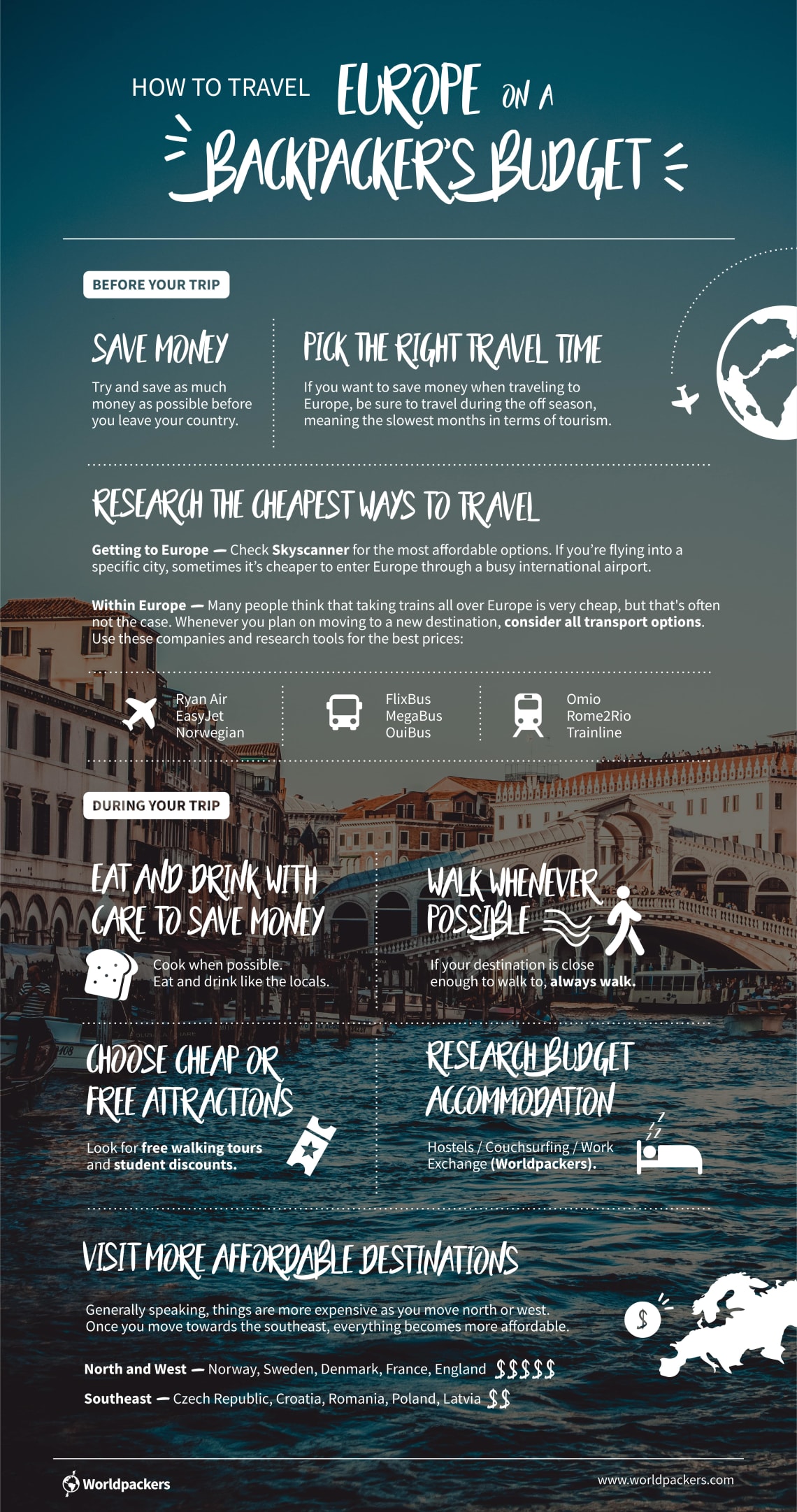
Before your trip
1. save, save, save.
If you are planning a trip through Europe , try and save as much money as possible before you leave your country.
Having a solid savings account will make you feel more comfortable while traveling, especially if you don't plan on working abroad. Always plan to have enough spending money, and maybe some extra emergency money in case something goes wrong.
Whether you need to work some extra shifts or cut down on spending at home, you'll be happy you made these financial choices once you make it overseas.

2. Pick the right travel time
Once you've saved enough money and begin sorting out the logistics of your travel to Europe , consider when is the best time to go. There’s a few factors that influence when you should visit Europe .
For budget travelers, cost is probably the most important factor. If you want to save money when traveling to Europe, be sure to travel during the off season, meaning the slowest months in terms of tourism.
The summer months are usually the busiest times in Europe because of the favorable weather, so flights will be very expensive during June, July, and August. The cheapest flights to Europe will be in December, January and February , as these winter months are colder and less desirable to tourists.
If you want a pleasant mix of affordable flights and decent weather , travel during the "shoulder season", meaning spring or autumn, the months caught in-between peak season and off season.
Obviously, traveling during the winter is not as comfortable as traveling during the summer. So it just depends which factor is more important to you. If you really want to save money, buy a winter coat and brave the cold. With a positive attitude, Europe is still gorgeous during off season, so don't let the weather prevent you from going .
Many countries become almost magical in the wintertime anyways. Think of skiing in the Alps, visiting Christmas markets in Germany, Austria, or Denmark, dog-sledding in Scandinavia, or visiting snowy villages in Transylvania. There is truly never a bad time to travel Europe, so research the flights that fit your budget best and make the most of your time .
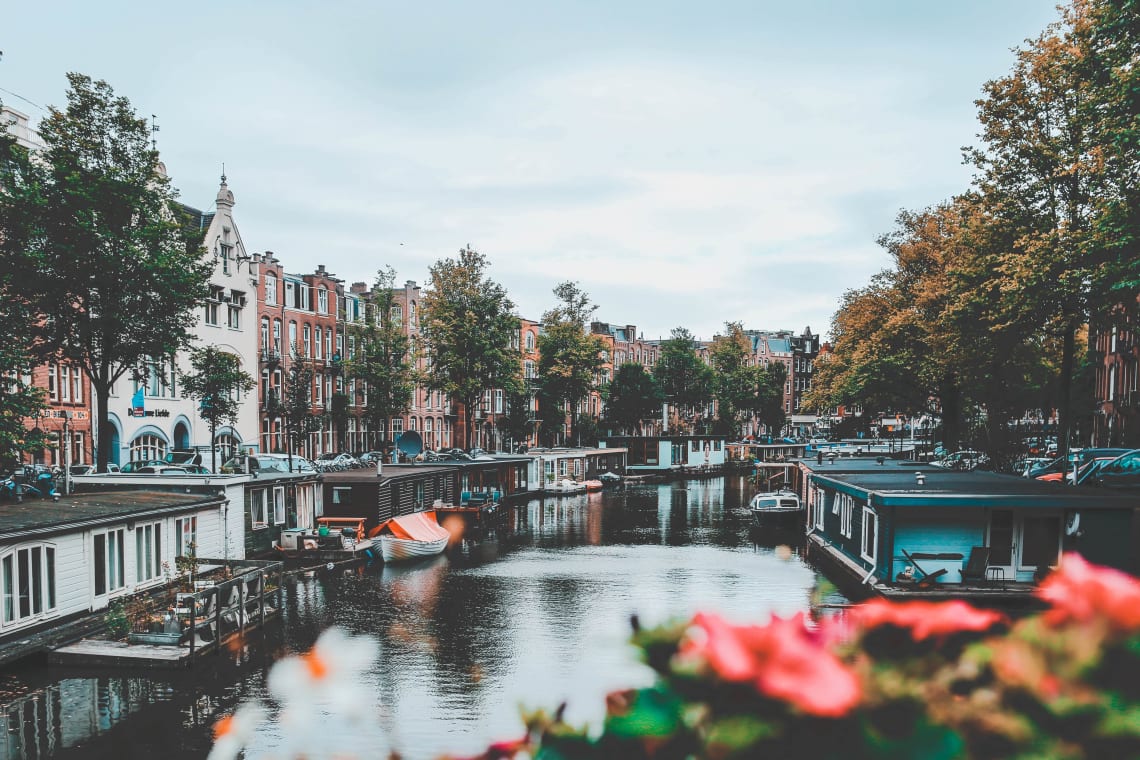
3. Research The Cheapest Ways To Travel Around Europe
Getting To Europe
With a little bit of web-surfing and research, you can easily find incredibly cheap flights to Europe .
Check Skyscanner for the most affordable options . With this website, you can select your departure airport, then select "cheapest month", as well as set the destination airport to "anywhere." This allows you to browse which dates and which airports will be the best for your budget .
If you're flying into a specific city, sometimes it's cheaper to enter Europe through a busy international airport , like London or Paris, and then take a connecting flight to your destination.
Just be flexible and open-minded when planning flights . With a bit of creativity, you'd be surprised at how cheap you can fly into Europe.
Within Europe
Once you buy your flights to Europe, start thinking about how you want to travel from country to country once you arrive .
You don't necessarily need to plan all your transportation ahead of time, but it helps to do a bit of research beforehand if you plan on visiting lots of different countries.
Many people think that taking trains all over Europe is very cheap, but that's often not the case. Whenever you plan on moving to a new destination, consider all transport options .
Sometimes it's even cheaper to fly between countries than it is to take a train .
Europe is packed with cheap, budget airlines, like RyanAir , EasyJet , and Norwegian . Budget airlines often charge lots of money for baggage, however, since their flight prices are so low. So these airlines are best if you are only traveling with a carry-on .
But sometimes, you can find flights for under $10 USD , which is truly amazing.
Traveling by bus is another cheap option for traveling Europe .
FlixBus , MegaBus , and OuiBus are three reliable and affordable bus companies that travel to various destinations. For example, you can take MegaBus from London to Amsterdam or Brussels for only $20 USD, and OuiBus from London to Paris for a similar price.
The only downside of bus travel is that it takes longer than a train or plane. But if you have the time to spare, bus travel is often one of the cheapest options .
Train travel is incredibly popular in Europe, though its affordability differs from country to country .
In the UK and western Europe, trains tend to be much more expensive than buses. But in eastern and southern Europe, trains can actually be very cheap.
You just need to research the train prices for each individual country, and websites like Omio (formerly GoEuro) and Rome2Rio are great for this. These sites compare train, bus, and flight prices between two destinations, so you can pick which option is the cheapest .
Another great resource is Trainline , Europe's leading train and coach app. Trainline works with 207 rail and coach companies and offers services to thousands of destinations in and across 45 countries in Europe. Trainline's aim is to bring together all rail, coach and other travel services into one experience so people can get the best prices and smart, real time travel info on the go.
Just be sure to consider all your travel options before hopping around Europe, and your wallet will thank you.

During your trip
1. eat and drink with care to save money on food in europe.
Cook When Possible
Buying food and drinks is one of the biggest expenses while traveling. In Europe, with so many world-famous cuisines and wines and beers right at your fingertips, you must indulge in it all .
But you can do so carefully to avoid draining your funds too quickly. Start by shopping at the local food market, which almost every city in Europe has . Here you can find fresh produce for cooking and unique local goods, usually for decent prices. Try and cook more often than eating out, as you'll save so much money on food.
Eat like the locals
If you do dine out, stay away from the overpriced, touristy restaurants where the food is more generic. For higher quality, more traditional dishes than are most likely more affordable, so seek out authentic local restaurants .
These places will usually be hidden away, far from crowded tourist attractions and without a flashy sign out front. Ask locals where their favorite restaurant is, and you will certainly find a hidden gem for dinner .
Drink like the locals
A similar logic applies when drinking.
Try to buy alcohol at the liquor store, rather than buying individual drinks at a bar. You'll save tons of money, and you can still find local drink choices at the store. If you decide to splurge on drinks on a night out, drink what the locals drink . In Italy, Spain, and France, choose the local wine . In Germany, Czech Republic, or Belgium, try the favorite local beer .
Try Brennevin in Iceland, Vodka in Poland, Port in Portugal, Rakija in Croatia and Serbia. Just do as the locals do! The traditional alcohols are not only an insight to the culture, they are usually cheaper since there is a higher demand for them.
2. Walk whenever possible
If your destination is close enough to walk to, always walk . You get good exercise, you have more time to soak in the details of the world around you, and you don't need to spend any money.
Exploring a foreign city on foot is magical , though if you do need to pay for travel, try and take public transport rather than a taxi. Riding the local bus or tram is always cheaper than a taxi , and you can still interact with locals while you travel.
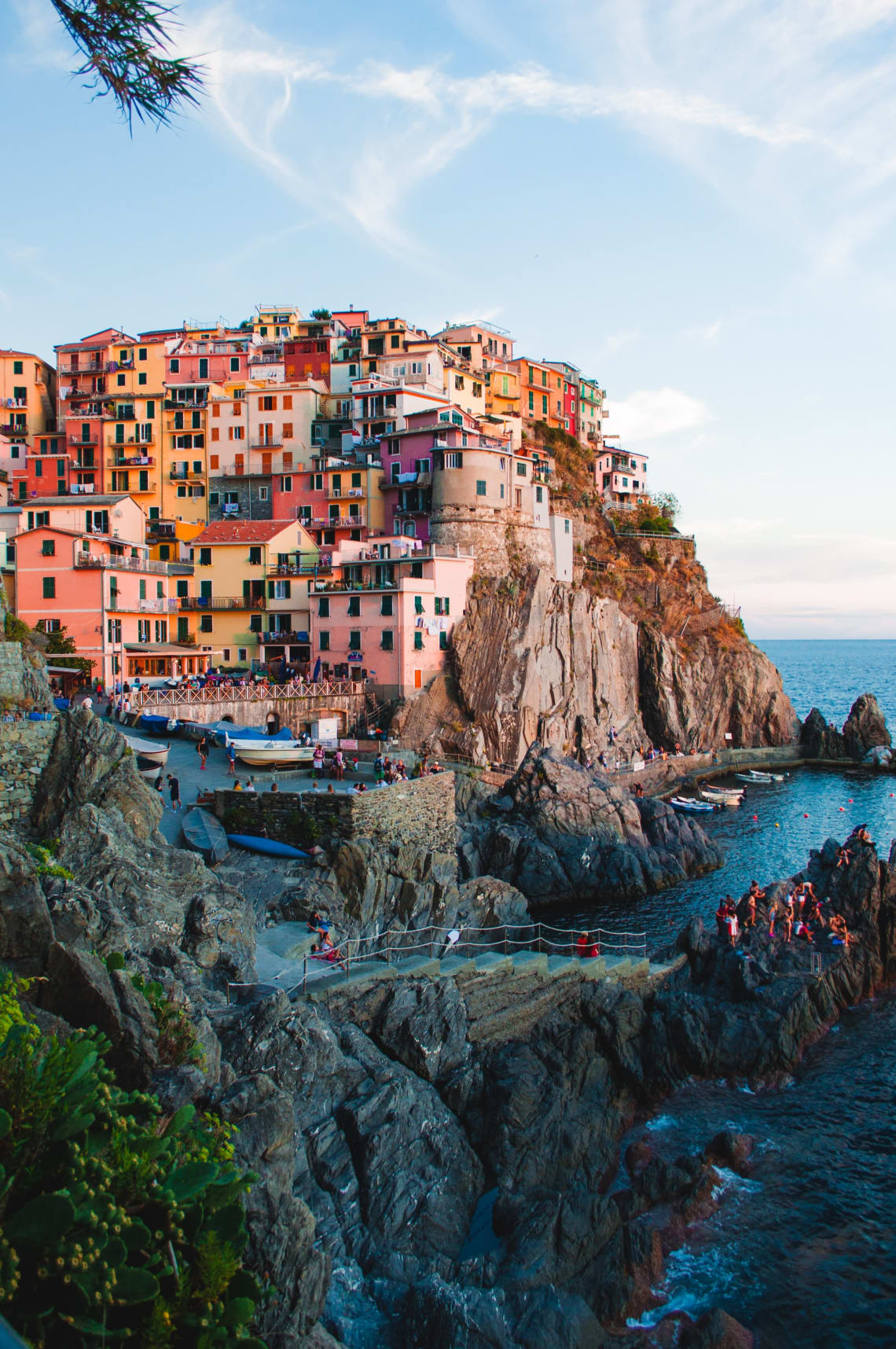
3. Choose cheap or free attractions
Touristy cities are full of attractions that cost money, sometimes too much money. Don't feel like you have to participate in every activity your guidebook recommends.
If an attraction genuinely sparks interest in you, definitely do it and know your money will be worth it. But don't pay to enter a museum or a gallery just because you feel like you should.
Always look up "Free Things To Do In..." to get some ideas on what to do for little money in a foreign country . Many cities have beautiful parks that are free to roam and picnic in. Many cities also offer free walking tours , and you should definitely take advantage of these. Check out Curiously Erin to learn more about the best free walking tours in Europe .
Locals usually run them, and you can learn just as much about the history and lifestyle of a city as you would in a museum. Also, if you have a student ID card, always carry it with you . Lots of attractions have student discounts , so you don't want to miss out on that.
Certain cities have their own cheap deals that benefit the wallets of travelers.
For example, every public museum is free in London , which is great considering London is an overall expensive city. So you can save plenty of money while learning about the history, art, and culture of London.
Also in lots of Italian cities, many famous attractions are free on the first Sunday of every month . This means you can visit the Colosseum and Roman Forum in Rome, or the Uffizi Gallery or Michaelangelo’s David in Florence, completely for free.
You just have to do a bit of research on the cities you are visiting and you may find some surprisingly cheap things to do while traveling Europe .
And of course, there are so many natural attractions that are totally free, like the best beaches in Europe and the best European destinations for nature lovers .
4. Research budget accommodation
Another one of the biggest expenses while traveling is accommodation.
As tempting as it can be to stay in a luxury hotel, staying in a hostel is much more cost-efficient. Europe is packed with budget hostels that cater towards backpackers . You can find hostel dorm rooms for around $15 — $30 USD a night, and in cheaper cities in Eastern Europe hostels can cost under $10 a night.
Check HostelWorld and read the reviews for every hostel so you can see what other backpackers think of the place. Hostels are often centrally located, and they usually have comfy common areas where you can socialize with other travelers.
Couchsurfing
You can also try Couchsurfing to save even more money on accommodation . This online platform allows locals to offer their couches or spare beds to travelers for free. Again, always read reviews before agreeing to stay somewhere, and never stay somewhere that you don't feel comfortable.
Work Exchange
Another great way to save money on a place to sleep is to work in exchange for free accommodation with Worldpackers .
Many hostels, farms, and small local businesses will employ travelers to work for a few weeks, and in return they offer a free bed and sometimes free meals as well. A work exchange is a great way to immerse yourself in local culture , explore the area and build relationships with locals while saving money.
You can always browse Worldpackers hosts to find places that offer these types of work exchanges, and trust me, the Worldpackers opportunities in Europe are outstanding.
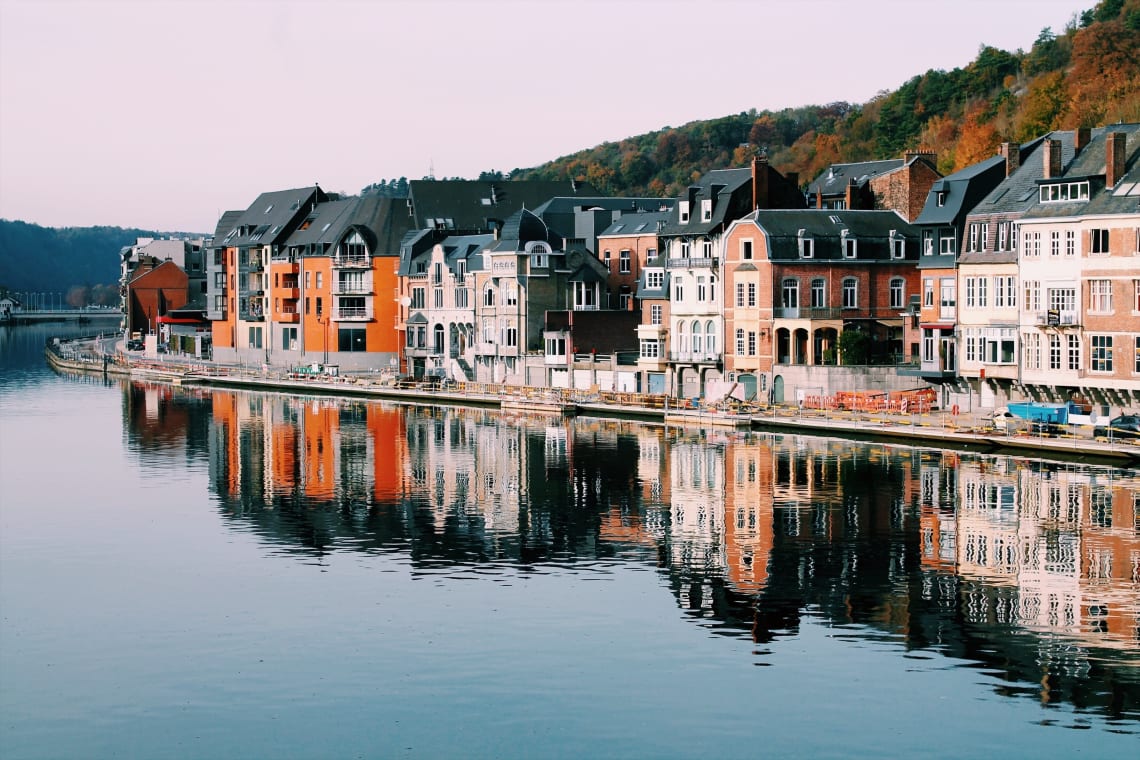
5. Visit more affordable European destinations
The cost of living in Europe varies in every direction, so be sure to research your destinations to ensure they fit your budget .
Generally speaking, things are more expensive as you move north or west. Scandinavia is notoriously expensive for food, accommodation, and attractions, as are cities like London and Paris. However, Portugal is cheaper than most of its western neighbors, and of course you can find budget options in some of these more expensive places .
But once you move towards the southeast, everything becomes more affordable. A beer in the Czech Republic can cost about $1 USD. A hostel in Croatia can cost $6 USD a night, and a full meal in Romania can cost about $5 USD. If you want to explore on the cheap, south-eastern Europe is definitely the most affordable area to be in .
The beautiful thing about Europe is that the destinations are seemingly endless . Within every area of the continent is a cluster of countries with unique landscapes and cultures . Within every country lies many cities and villages just waiting to be explored.
Some places in Europe get more attention than others, but don't let this stop you from venturing to the lesser-known countries and cities.
Of course the popular cities, like Barcelona, Paris , Prague, Athens, Budapest, Lisbon, Madrid, and Venice are stunning and are definitely worth visiting. But there are plenty of other cities that offer similar experiences and charm, with less tourists. And the farther away from the touristy spots you go, the more affordable everything becomes .
Try visiting Warsaw, Poland for a quaint Old Town full of history. Visit Riga, Latvia for amazing architecture and Sofia, Bulgaria for hearty food and friendly locals, and explore the mountains of Albania - one of Europe's hidden gems . Venture away from the cities to the hidden small towns of Portugal, Spain, and Italy to find authentic local traditions.
Europe is quite literally, packed to the brim with gorgeous places and amazing experiences waiting to happen.
Always travel with an open mind, and don’t let money interfere with any of your travel goals .
By following these tips, being prepared, and traveling intelligently, any country in Europe can be budget-friendly .
This article might interest you:
- How to backback Europe: all you need to know
Join the community!
Create a free Worldpackers account to discover volunteer experiences perfect for you and get access to exclusive travel discounts!
Gabrielle Boucher
Budget Travel With Gabby
Hello! I am a 25 year old from the USA with a knack for traveling on a budget. I fell in love with traveling while studying in Europe, and that love grew even more when I started volunteering abroad in South America. Since then, I've worked odd jobs and volunteered all over the globe while cultivating passions for hiking, wildlife photography, food, wine, animals, permaculture, and more!
Be part of the Worldpackers Community
Already have an account, are you a host, leave your comment here.
Write here your questions and greetings to the author
The best way to experience seamless travel through breathtaking landscapes is Gothenburg to Oslo train route. https://untuckworld.com/gothenburg-to-oslo-train/
More about this topic

Top places and tips to travel alone in Europe
33 travel apps that will save you time and money in Europe
The 19 cheapest European cities to visit
How do Worldpackers trips work?
As a member, you can contact as many hosts and travel safely as many times as you want.
Choose your plan to travel with Worldpackers as many times as you like.
Complete your profile, watch the video lessons in the Academy, and earn certificates to stand out to hosts.
Apply to as many positions as you like, and get in contact with our verified hosts.
If a host thinks you’re a good fit for their position, they’ll pre-approve you.
Get your documents and tickets ready for your volunteer trip.
Confirm your trip to enjoy all of the safety of Worldpackers.
Have a transformative experience and make a positive impact on the world.
If anything doesn’t go as planned with a host, count on the WP Safeguard and our highly responsive support team!
After volunteering, you and your host exchange reviews.
With positive reviews, you’ll stand out to hosts and get even more benefits.
- Search Please fill out this field.
- Manage Your Subscription
- Give a Gift Subscription
- Newsletters
- Sweepstakes
- Budget Travel
13 Affordable Places to Visit in Europe — From Country Escapes to Stunning Cities
You can visit Europe on a budget — here's how.
Elizabeth Rhodes is a special projects editor at Travel + Leisure , covering everything from luxury hotels to theme parks to must-pack travel products. Originally from South Carolina, Elizabeth moved to New York City from London, where she started her career as a travel blogger and writer.
:max_bytes(150000):strip_icc():format(webp)/elizabeth-rhodes-25083778bc654f69b30ce8417affc82c.jpg)
If you have big dreams of jetting off to Europe, but worry that your bank account isn't quite ready, don't worry. For every expensive city, there are dozens of charming — and surprisingly affordable — places that offer all the European charm for a fraction of the price. Ljubljana, Porto, Budapest, even Berlin — these cities have all the rich culture, stunning architecture, and delicious food that you'd find in pricey European capitals, but they're perfect for budget travelers.
You can even travel to some of Europe's best (and famously expensive) destinations without breaking the bank — you just have to know how to save money without sacrificing on experiences. Travelers can often score deals on flights from the United States to major cities like Paris or London, and upon arriving, transportation within Europe can be much more affordable (hello, budget airlines). Those large cities also offer a wide range of accommodations, so you can certainly find something in your budget. You can even save money on food by hitting the local markets. After all, a bottle of wine, fresh bread, and cheese from a Parisian market make for an unforgettable meal when picnicking under the Eiffel Tower.
And you might be surprised by how many museums, churches, and other attractions are free or inexpensive to visit, too. Be sure to keep an eye out for free entry days (often one day a month) or tourist cards that offer entry to multiple attractions for one flat fee. (Do the math ahead of time by calculating the cost of every included attraction that you want to visit to make sure it's really worth the money.)
Trimming your budget doesn't mean sacrificing the quality of your trip. Sometimes, the less you spend, the more you can immerse yourself in the local culture. Staying in a thatched Irish farmhouse, perusing old masters in Rome, or snacking your way through Spanish specialties aren't just tricks of the frugal traveler — they're the stuff dream vacations are made of.
Here are some of the top destinations for an affordable European vacation (and tips for saving money once you arrive).
Bavaria, Germany
For a storybook-worthy vacation in Europe, head straight to Bavaria. Book a room at Burg Colmberg , a 14th-century castle rising from a rocky crag above a tiny village. It offers an eclectic collection of rooms tucked throughout a warren of crooked hallways, hidden staircases, and cozy sitting nooks. Be sure to visit the postcard-perfect Neuschwanstein Castle , resplendently perched atop a mountain, and take the time to tour Hohenschwangau, the castle in which "Mad King" Ludwig II actually lived. The latter is a more modest pile of battlements on a smaller nub of a hill in the valley below. What it lacks in the carefully crafted pomp and circumstance of Neuschwanstein — which Ludwig II never lived to see completed — it more than makes up for in homeyness and history.
Puglia, Italy
Michela Sieman/Travel + Leisure
The iconic architecture of Puglia — the "heel" of Italy's boot — is the prehistoric trullo, a cylindrical whitewashed house with a cone-shaped roof of stacked gray stones. There's no greater concentration of trulli than in the UNESCO-protected town of Alberobello, where whole neighborhoods are made of the structures, and the local entrepreneur behind Trullidea has fixed up dozens of the abandoned ones and rents them to visitors. Cool in the baking summers and with cozy indoor heating for wintertime, a rental trullo lets you live like a local for less than the cost of a tourist-class hotel in town. Want to sample what the Amalfi Coast was like before the hotshots and high prices moved in? Puglia's forested Gargano Peninsula is popular with sun-loving Italians, but is otherwise refreshingly off the tourist map.
Budapest, Hungary
Alisha McDarris/Travel + Leisure
The capital of Hungary, Budapest offers all the charm of more popular European destinations for a fraction of the price. The Hungarian Parliament Building and Fisherman's Bastion are just a couple of the picture-perfect attractions you'll spot in the city, and you'll find lots of affordable accommodations, meals, and nightlife, too. Even the city's famous thermal baths — some of which are over a century old and feature beautiful architecture — can be affordable to visit.
Andalusia, Spain
Rory Fuller/Travel + Leisure
Take a break from sizzling on the crowded Costa del Sol beaches for a self-guided driving tour along the route of the Pueblos Blancos. This string of clifftop, whitewashed villages stretches from the Moorish town of Arcos de la Frontera through the Sierra de Grazalema to Ronda, a maze of medieval streets perched above a 500-foot gorge. Opt for a stay in nearby Seville — the capital of Andalusia — to take in the beautiful architecture, watch some flamenco dancing, and indulge in classic tapas.
Berlin, Germany
Berlin has Cold War mystique, contemporary architecture, and booming gallery and restaurant scenes. With its cosmopolitan, East-meets-West edginess, it's no wonder the city has become a cultural capital of central Europe. It's a destination that continues to attract creative types and in-the-know travelers. Begin your trip to Berlin in the fashionable Mitte (or "middle") district, as it's convenient to major sites such as the Reichstag and Potsdamer Platz.
Bath and the Cotswolds, England
The charming villages of the Cotswolds look like they're straight out of a fairy tale — Chipping Campden, Stow-on-the-Wold, and Bourton-on-the-Water are among the prettiest. There are inns and pubs sprinkled throughout the little towns, but we'd suggest staying in Bath, a quaint city dating back to the Roman era, for its variety of accommodations. While there, check out the Royal Crescent, Pulteney Bridge, Bath Abbey, and of course, the historic Roman baths. Best of all, Bath is under two hours from London by train, making it an easy weekend trip from the city.
Istanbul, Turkey
Istanbul's major state-run museums may charge hefty admissions, but the Great Palace Mosaic Museum, just behind the Blue Mosque adjacent to the Arasta Bazaar, costs only 60 Turkish lira (that's about $4). These delightful mosaic scenes of hunts, myths, animal battles, and everyday life in antiquity — boys riding a camel, a man milking his goat — once covered the floor of a large courtyard of the Palatium Magnum, the Great Palace built between the time of Constantine the Great himself and Justinian I (fourth to early sixth centuries). You can even cruise between the continents for an affordable price when taking the ferry.

Ljubljana, Slovenia
Take a tour of the architectural masterworks of prodigious local talent Jože Plecnik, who took the Secessionist Art Nouveau style he learned in Vienna back home (via Prague) to remake his native city along his own, idiosyncratic lines. Like Gaudí in Barcelona, Plecnik designed his buildings right down to the smallest fittings, like the Pegasus door handles on the entrance to the National and University Library. Plecnik designed a bit of everything around town, from the central market to the two flanking spans of Ljubljana's iconic Triple Bridge to the café-lined embankments of the Ljubljanica River. The city also has a number of incredible, affordable restaurants, and you can take a public bus (for a small fee) to nearby Lake Bled for a day trip.
The Dalmatian Coast, Croatia
Skip the overexposed island of Hvar for the walled medieval village on the Adriatic island of Korcula, purported home to Marco Polo. Korcula is more of a day-trip destination, and that means the tourist crowds thin considerably by sundown, leaving those who remain to relax in the cafés and stroll the narrow alleys. While every old city in Europe has an Old City historic district, Split has the only downtown actually carved from the carcass of an ancient Roman palace. When the emperor Diocletian left his throne in A.D. 305, he built a lavish palace on the Croatian coast to live out his days as head of the empire's eastern half. In the 1,700 years since, the ruins of his enormous structure have been colonized by the locals, the buildings turned into medieval town houses, and the emperor's tomb transformed into the cathedral.
Paris, France
Want to experience fabulous French cuisine on a budget? Opt for a midday splurge — many cafés and restaurants offer less expensive menus at lunch. And a picnic is always a good idea in Paris. Stop by a market to peruse the (typically) extensive options for cheese and wine, or pick up a simple yet delicious crepe from a stand. If you plan to visit the City of Light's top museums and attractions, you might want to invest in a Paris Museum Pass . For one fee (priced depending on the number of days you purchase), you can gain admission to top tourist spots like the Arc de Triomphe, Sainte-Chapelle, Panthéon, Louvre, Musée Rodin, and more, and you get to skip the ticket line. Talk about a win-win.
County Clare, Ireland
Irjaliina Paavonpera/Travel + Leisure
Avoid the tour bus-clogged Ring of Kerry for its neighbor to the north, County Clare, home to the dramatic Cliffs of Moher rising more than 700 feet from the crashing Atlantic waves; the weirdly eroded limestone landscape of the Burren, where prehistoric slab tombs perch on the rocky flatlands like miniature houses of cards; and Doolin, a blink-and-you'll-miss-it village that has become a popular destination for traditional Celtic music. Local pubs are the perfect evening stop for hearty (and usually affordable) Irish fare and — if you're lucky — live music.
Rome, Italy
Daniel Gorostieta/Travel + Leisure
Rome has more than 900 churches, all of them free, displaying great works of art and architecture by the likes of Raphael, Bernini, Caravaggio, Bramante, and Pinturicchio. And that's just the short list of artists contained in one church — the little-visited Santa Maria del Popolo. Other iconic landmarks, like the Trevi Fountain, Spanish Steps, and Rome's famous piazzas are all free to visit, too, and some museums offer free entry days, so check their websites for details.
Porto, Portugal
Paula Galindo Valle/Travel + Leisure
Portugal's northern city of Porto is among Travel + Leisure readers' favorite European cities, and once you visit, you'll see why. In Porto, visitors can admire the Art Deco architecture, sip port wine, and explore the walkable city on foot without going over budget. Plus, a day trip to the Douro Valley, a picturesque vineyard region along the Douro River, is worth the trek.
Related Articles

Accommodations
As you can imagine, your Europe trip cost will vary greatly depending on your style and where you visit. I recommend budgeting $150 a night for your hotel, which works out to $2,100 for 13 nights. From hostels to luxury hotels, Europe gives you many options to easily find accommodations that fit your budget.
If you’re backpacking through Europe, hostels will probably be your choice of accommodation. If you decide to go that route, the average price is $15 – $20 a night. Alternatively, there are a lot of great boutique hostels out there that cost more but offer a better experience since they’re competing with hotels and Airbnb.
Recommendations: YHA London Central (London), Barnacles hostel (Dublin), The Flying Pig Uptown (Amsterdam), Goodmorning Hostel (Lisbon)
Mid-range hotels
For those who think $150 is expensive, I would argue that it’s on the cheaper end. The reality is that hotels are expensive these days, so getting one for $150 a night is a pretty good deal. Remember, this is just an estimate. In some European countries, some hotels will cost you more while others will cost you less. You can also follow my guide on how to save money on hotels .
Recommendations: Alhambra Hotel (London), Stauntons on the Green (Dublin), Hotel Nicolaas Witsen (Amsterdam), Hotel Excelsior (Lisbon)
Luxury hotels
There will likely be luxury hotel options regardless of what city you’re visiting. If you like the experience or don’t mind spending the extra money, you may want to budget another $200 – $300 a night. Your Europe trip cost will skyrocket if you’re going for luxury stays.
Recommendations : The Langham (London), Clontarf Castle (Dublin), Amsterdam Marriott Hotel (Amsterdam), Iberostar Lisboa (Lisbon)
Depending on the city, I sometimes prefer to use Airbnb. I’ve been able to find private apartments in good locations for about $100 a night. If you’re travelling with kids or family, Airbnb can be a great deal since you should easily be able to find a space that fits your entire party. I do admit that Airbnb has become more expensive over the years, but it’s still a good hotel alternative.
If you have the right credit card, you can save a fair amount of money on hotels. Americans should strongly consider the Marriott Bonvoy Brilliant American Express Card since you can earn up to 95,000 Marriott Bonvoy points and $300 back at U.S. restaurants as a welcome bonus . Canadians should consider the Marriott Bonvoy American Express , which gives you up to 75,000 Marriott Bonvoy points. That’s enough points for a few free nights at some hotels, which could easily have a value of over $500.
Local transportation
Since I assume you’re doing thee cities during this trip, you’ll need to factor in flights and/or trains to each destination. I’m also assuming you’re booking a multi-destination ticket, so you don’t need to backtrack. Realistically speaking, budgeting $400 for location transportation may be a bit high, but remember, you must also pay for trips to/from the airport, day trips, and any other public transportation you use.
Generally speaking, getting a Eurail pass won’t be worth it if you’re in Europe for just two weeks and visiting three cities/countries. If you’re going to neighbouring countries or taking day trips, buying tickets as needed is fine. That said, buying your train tickets well in advance (even before you depart) is usually worth it, as you’ll get better prices and a confirmed seat.

Attractions
This is where things can get tricky. Attractions aren’t expensive, but if you keep going into them, you will naturally spend more. First off, always do the free things in every city. That means checking to see if any museums or art galleries have no entrance fee. Note that even museums with an admission charge (including big, famous museums like the Louvre Museum in Paris) usually have a free day, so you must see if the timing works out.
Parks are always free, and quite often, simply walking around neighbourhoods is the best way to see a new city, and that doesn’t cost you anything. In Europe, there are also many free walking tours – well, you need to pay a tip – but that’s a cheap way to learn about the city.
Finally, check to see if museum passes will help you save money. Many cities offer something such as free entry into a bunch of attractions for a fixed price for a set period of time, e.g. 24, 48, or 96 hours. You would need to do the math to see if the cost of the attractions you’re interested in makes up for the cost of the pass.
If you plan to pay for some attractions or do day trips into the countryside to see some of the local landscapes, check to see if Klook sells tickets. Buying your tickets in advance usually means you can get a small discount and skip the lines when you arrive.
Food and drink
The food and drink budget will vary by person, but a rough estimate for a meal, including drinks is as follows:
- Breakfast – $5
- Lunch – $10
- Dinner – $30
That works out to $45 per person per day, which some people think is too much, while others think it’s too low. If you like to drink alcohol, you’ll need to budget more. What I personally try to do is balance eating street/fast food with restaurants. I also go to grocery stores to get breakfast and snacks, which saves me a lot of money. Cutting back on eating out will help you see Europe on a budget.
Every city and country you visit will have some local delicacies which I highly recommend you try. To this day, I’m still mad at myself for not having tapas in Spain because I thought it was too expensive. I’m not suggesting you blow your budget on food, but it’s okay to splurge occasionally. Even then it doesn’t need to be fancy. A baguette and cheese in Paris is pretty cheap but also delicious.
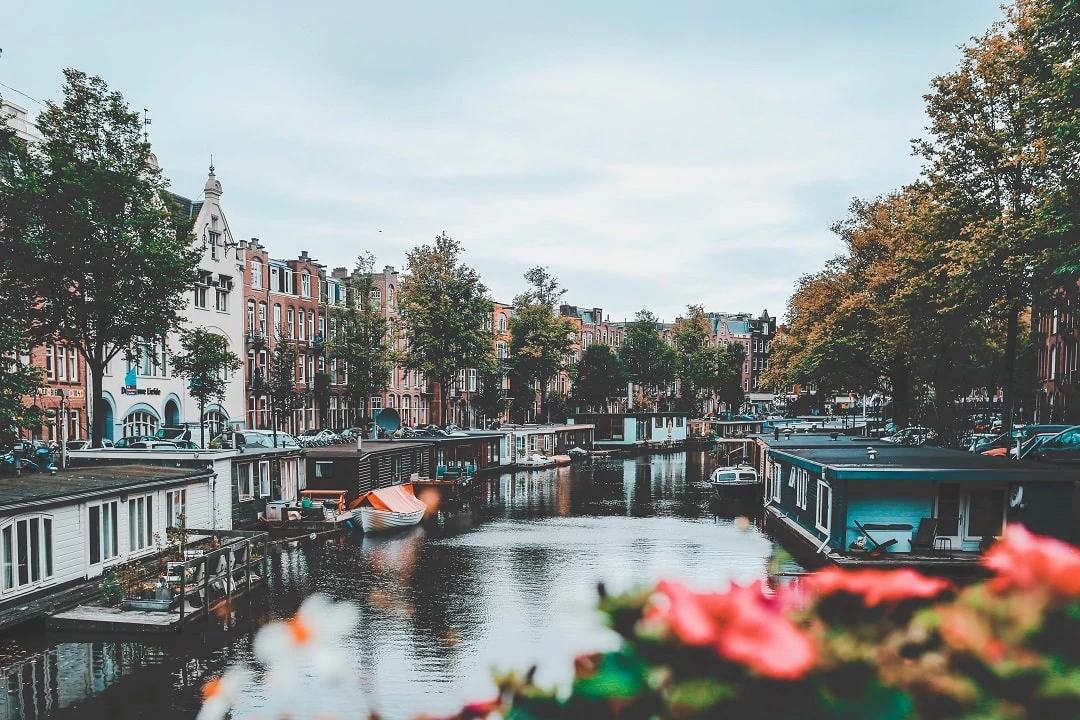
Random spending
Many people forget to include shopping when planning their vacation budget. It’s silly to think that you’ll spend nothing on random things; you’ll buy gifts for people, right? Plus, you’ll want to pick up plenty of souvenirs for yourself, regardless of how tacky they appear. There’s nothing wrong with buying gifts for yourself or friends; you just want to make sure you budget for it.
As you can imagine, some cities have better shopping experiences than others, so you must consider where you’re going and budget accordingly. For example, you may be headed to Italy and intend to buy a leather purse. There’s nothing wrong with that. Just make sure you’ve set aside some money for that purchase.
As a general rule, you should set aside $200 or 200 Euros for those random expenses that come up. Heck, even spending some extra money on sightseeing can be worth it.
Cost to go to Europe
So how much does it cost to go to Europe for two weeks? You know the answer – it depends! But, a good estimate is about $4,280. One time I spent just $2,300 because I focused on doing it for as cheap as possible. Another time I spent closer to $8,000 (for two people) when visiting just three cities. The cost of a Europe trip depends on you, but it’s not hard to stretch your travel budget.
For more European inspiration, check out my guides to Scotland , Italy , Croatia , Austria , Malta , Greece , and Amsterdam on a budget .
Frequently asked questions
Is it possible to see europe on a budget.
Absolutely! But it will take some planning. The biggest thing to remember is what countries or cities you visit. Places like London, England, Paris, France, Copenhagen, Denmark, and Florence or Milan in Italy will cost a lot more than places like Romania, Poland, Bosnia, Slovenia, and even Croatia. There are also several other ways to help cut costs and see Europe on a budget, even in the pricier destinations. Take a look at my Europe on a budget article for more tips and advice on how to see and do more for less.
Is it safe to backpack Europe?
Generally speaking, yes. This is somewhat of a blanket statement as Europe is a huge place and different countries and even cities will have some not-so-savoury places that are best avoided. But that’s the same everywhere. Some cities are very backpacker-friendly, such as Berlin, Zagreb, Luxembourg, and Munich.
You should be fine if you travel smart, follow basic safety protocols, and trust your gut. At the end of the day, use common sense. Don’t go to a bar with strangers and get black-out drunk. That’s not a good idea anywhere.
If you are uncomfortable or unsure about doing it yourself, you can always book a package tour or even a cruise. However, these will dramatically increase your costs and don’t allow for as much flexibility.
Are rail passes worth it?
It depends. Rail passes, such as the Eurail Pass , can be great because they take out a lot of planning and leg work and make it easy, but you pay for that convenience. Oftentimes there are more affordable transit options that are just as comfortable. Many countries have slower local trains that you can take advantage of. In some places, like Ireland, the bus system is better connected (and cheaper) than trains, etc.
If you are trying to figure out how much does it cost to go to Europe because you are on a tighter budget, it’s worth taking the time to do a bit of planning and do it on your own. If money isn’t an issue and you are more concerned about convenience, then a rail pass might be worth it for your Europe tour.
What are some fun things to do in Europe?
Europe is a popular destination for North Americans because it’s so different from here in many ways. The history and architecture are incredible; it’s wild to think some buildings are centuries older than Canada. Food is another huge perk to travel in Europe. It’s so varied across the continent, and while we have plenty of food options from different cultures in Canada and the USA, it’s always better from the source.
You may also be interested in visiting Europe for specific events. Perhaps St. Patrick’s Day in Ireland, or Carnival in Venice, or the Christmas markets of Germany. Don’t worry about finding things to do in Europe, and there’s plenty.
What are the best places to visit in Europe?
This depends on your interests. Are you interested in history? Maybe cities like Berlin and Vienna will be the most interesting for you. Love art? Perhaps Paris is the best option. More into beaches and nature? Try Croatia. Some people have dreamt about the canals in Venice and the Leaning Tower of Pisa, so they make Italy their priority.
What are the five most important tourist attractions in Europe?
It depends on your likes and interests. What is interesting to me might not be interesting to you. That being said, the most popular tourist attractions in Europe include:
- The Eiffel Tower in Paris
- The Colosseum in Rome
- Neuschwanstein Castle in Germany
- The Acropolis in Athens
- Stonehenge, England
- Aurora Borealis in Iceland
What are some unusual things to do in Europe?
Europe has plenty of weird and wonderful things to do that you wouldn’t necessarily find in North America. A few recommendations include the following:
- Visiting Sedlec Ossuary just outside of Prague (It’s made of human bones)
- Eat haggis in Scotland
- Attend a Krampus Run in Austria (Krampus is essentially a Christmas demon that kidnaps and tortures children. Like an anti-Santa)
When is the best time to go to Europe?
This can depend on your goals and the destination itself, but generally speaking, the shoulder seasons (September/October and April/May) are great. It’s not too crowded, the weather is pleasant, and you can avoid peak season costs.
How long can I stay in Europe?
While many backpackers love to do European tours, you need to be mindful of the amount of time you are allowed to spend not just in a specific country but in an area. Many European countries are part of the Schengen Zone, and Canadians and Americans can only spend a total of 90 days within a 180-day period in these places. Examples of Schengen zone countries include Austria, Netherlands, Spain, Poland, Italy, Iceland, and more.

About Barry Choi
Barry Choi is a Toronto-based personal finance and travel expert who frequently makes media appearances. His blog Money We Have is one of Canada’s most trusted sources when it comes to money and travel. You can find him on Twitter: @barrychoi
128 Comments
Great post. Our vacation plans for this year is to go to Denmark and Sweden. I heard that Scandinavia is really expensive. I found airline tickets for $1,600 for 2 people. Still looking for accommodations at Airbnb. My plan is not to go over our budget of $5k for our 11 day trip.

I’ve actually heard Scandinavia is expensive so let me know what the real costs are after. The good thing is, flights to Scandinavia have never been cheaper. You can get cheap flights if you fly via Iceland and I’ve also seen cheap airfare on Noreweigian.
Hi Barry! I’m planning an all girls trip (around 6 girls) to Europe from Pakistan. Which countries/cities would you recommend? Also we all have a budget of $2500 per person. Do you think it would cost less on accommodation as the cost would split? And would love if you can give some tips?
So I recommend talking to your girlfriends and asking what cities/countries they’re most interested in first. From there, you can try to figure out logistics. Your flights will be the biggest expenses. If you fly into one city and out of another, you won’t need to backtrack. E.g. fly into Paris and out of London.
As for accommodations, since there are 6 of you, you could look for a hostel that has rooms for 6 – 8 with a private room. If you buy out every bed in the room, you’ll have the entire place to yourself. That will likely be cheaper than getting 2-3 hotel rooms each night. You could also look for an Airbnb that accommodates 6, but that might be tough.
$2,500 a person is doable (depending on the destinations) and how long you go for, but I always recommend budgeting extra. This sounds like a really fun trip for you and your friends, the last thing you want is to be watching your budget the entire time you’re there.
Hi I’m from south Africa and I’m looking to travel to barcelona for 2 weeks.
I’m a student so I’m looking for as cheap as possible but I dont want to miss out on anything.
I have a friend living in barcelona so accommodation is already paid for which is a big expense luckily.
We are looking to travel to Greece and Amsterdam during this time.
Was wondering if I take 2000 euros if that would be enough for the two weeks.
Kind regards Jonathan
Hi Jonathan, if you’re staying at hostels or inexpensive accommodations when you’re in Greece and Amsterdam, that should be enough. I’m assuming your flight isn’t part of that 2000 Euro budget.
Nice post but the airfare costs seem to have gone up from your estimates.
Lowest price to Germany from Toronto was $1000 and that was a deal where you are estimating $850 CDN. Plus $200 travel insurance.
Hey Heather,
Yes flight prices have gone up this summer. I expect them to drop during the fall, but I haven’t researched it thoroughly yet.
Thanks, Barry! You always have the best budget/travel advice 🙂
[…] is one of few places that actually has a decent choice of accommodations that won’t burst your travel budget. Hostels are always a favourite among solo travellers, and there are plenty to be found around the […]
I know this is a little old of a thread. I was able to backpack europe with a friend, and only staying in Airbnb. 980$ is what was spent on lodging. We were gone for 4 weeks. The total trip was $5,000 which included souvenirs, trains, rental cars, ferries to the Greek Islands and 4 flights. Two were one way tickets from JFK to Paris, then London to JFK. One of the flights was also $400 from Croatia to Greece. Some of the trains and ferries were accidentally booked first class (which after doing so, I recommend).
Thanks for sharing. Europe can definitely be cheaper if you want it to be. My prices were rough estimates with hotels in mind instead of Airbnb. I love how travellers can see Europe on any budget and as you mentioned, they may still get the luxury experience unintentionally.
Thanks for putting this site togehter. Im planning for a trip to Budapest and Athens, 1 week each, the first 2 weeks of October. Is it still tourist season at this time? Some say prices only drop mid way or end of October. Can you confirm or deny this?
October tends to be slower for Budapest, but depending on where you go in Greece, parts may still be busy since it’s now cruising season in Europe
Thanks for the rapid response, I’m planning on Athens since I’m greatly interested in the historic sites. Not going to any islands like Crete, Rhodes etc. Also out of interest a question if you don’t mind: do you think the recent economy stabilisation (although it probably won’t last long) will change the price of visiting Greece?
Generally speaking, October is the lower season, but since Athens is so popular, it’s not like you’ll see NO tourists, it’ll still be busy. As for their economic situation, I don’t there will be much change as their economy has been tanking for years without prices at hotels or restaurants falling.
I am planning a Euro trip from Canada. I am intending to visit Croatia, Amsterdam and France if possible London. My budget for me and my wife is 7000 USD.
Any advise is much appreciated. Such as where to start and end must visit places and best time to go.
With that budget, you should have no problems seeing those countries. London, Amsterdam, and Paris are quick train rides away from each other. Although Amsterdam and London can be a bit pricier, during the fall, you shouldn’t have many issues finding a reasonably priced hotel. Paris can be inexpensive if you choose a hotel outside of the main areas, just find a place near the metro.
Adding Croatia gets a bit tricky since it’s not really close to the other countries. THat being said, you can find discount air carriers from London, Amsterdam, or Paris to get there. Most people who visit Croatia see more than just one city which is why you need to decide how much of the country you want to see when planning your trip.
Hello! I’m planning out a ways (gives me something to look forward to) for Europe in spring, 2021. We’ll start at a friend’s relative’s in the Black Forest, then on to Paris by train, then Italy by train. Goals are Rome, Florence and Venice. I’m very excited, as I’ve never been to Europe. With staying free the first few nights in Germany, and then four of us sharing AirBnbs, I’m thinking (depending on airfair) that we might be able to do this for around $2,500 each. That’s the goal. I love the idea of looking for special food everywhere we go. In Puerto Rico, we ate the fried plantains, and I enjoyed those. Not sure what tapas is, but hope you get to go back and eat it!
That sounds like a reasonable budget since you have some of your accommodations covered. As for tapas, it’s basically small plates meant for sharing. I actually went back to Barcelona earlier this year and splurged on tapas this time around. It was worth it!
Good for you. Thanks for the tips. Anne
Hi there, I’ll be visiting Europe for 9 days in Feb-Mar flying directly from Newark to Rome, from there to Paris and end the trip in Madrid. On airfare I spent USD 500, in lodging thru AirBnb and hotels a total of 225. I was wondering how much money should I expect to spend on attractions and food? Note: the amount mention above is per person and we are going to be 6 people in total. Note 2: thank you for reminding me to have a category of random expenses!
How much you spend on food is really up to you. Generally speaking in Rome you can get takeaway pizza, sandwiches, or pasta for 5 – 7 Euros per person. Sit down places will probably cost you 10 – 15 Euros per person. I rented an apartment when I was in Rome last and saved a bunch by stocking up on water, drinks, and alcohol from the grocery store. That being said, food in Rome is EXCELLENT so you could easily end up spending more if you want to try more things. I ate gelato twice a day because it was so good there. I wasn’t even hungry, I just wanted it! I STRONGLY advise checking yelp or tripadvisor before dining at any restaurant as the quality can vary quite a bit. Be sure to ask your host for recommendations.
The costs in Paris will likely be similar to Rome, probably a little cheaper (wine is cheaper than water). I haven’t been to Madrid so I can’t comment there, but I would suggest splurging on tapas one day.
Random expenses ALWAYS come up which is why I always budget a little more.
Planning a 10-11 day vacation for family of three( two adults one 7year old) in July 2019 to London, Amsterdam and Paris planning for a 7000 budget. Does this seem reasonable? Round trip from lax to Heathrow are about 2400 planning on doing Airbnb and we are not shoppers. Most likely spend on food, drinks and attractions. First time big vacation so exited!!!!!! Any feedback would be appreciated
That sounds more than reasonable assuming you’re not staying at hotels that cost you $1,000 per night =D. In Paris, it’s easy to find cheaper accommodations. London hotels can be pricey, but there area areas that are more reasonable. Amsterdam tends to be expensive in general unless you stay in Amsterdam SOuth and the take the train into the main areas. That being said, with your budget, you can likely find hotels in good locations.
We are going to Budapest, Kiev, Chisinau, and a couple stops in western Europe (Paris and somewhere else) in June, 2019, for about 23 days. International tickets aside, and with free lodging in Kiev, do you think $50 per person per day is reasonable? Two adults and one 17 ye old are our ages. We are not backpacking and we feel too old to sleep on someone’s couch for three weeks. Thanks for your input.
Does that $50 a day include accommodations? If not, that’s probably way low for an estimate. Food alone will cost you $50 if not more per day. You also need to factor in local transportation, attractions, and any souvenirs you may buy.
Thank you for this article. I am planning an European vacation for next year during the summer, Our trip can be any time between the months of July and August, there will be three of us, myself and my two daughters, 18 and 12. My budget is about 20,000 USD, I´m going to try to make it as long as I can stretch it, maybe 3 weeks, could it be stretched to 4?. I am not sure where exactly to go, I am thinking England, Paris, Italy for now, but that might change depending on where we can fly in and out of the cheapest. I guess my questions are, given that summer is the most expensive time to travel, which cities would you recommend traveling into and out of? I´m in the east coast. Also, I have read about hostels and I’m aprehensive about using them with my daughters, what is your take on them? Another concern of mine is traveling with my daughters, with me being a woman, are there any cities I should stay clear off because of crime? Any help, guidance is greatly appreciated! Thank you!
Hi! Im playing on going on a 16 day eastern european trip to several countries with a budget of around $2500-2700. I plan to save a lot by going to grocery stores and using airbnb. However, I will be going in the wintertime when the world junior ice hockey championship is so the tickets of a couple games might cost $50-100. Is this a reasonable budget for 1 person?
It can be done, but your flights and accommodations will eat up a lot of your costs. It also depends on how many countries you plan on going to. If you’re going to do Airbnb, try renting a private room as opposed to a private apartment since they’re cheaper.
Is it reasonable to expect to find a ticket to Greece or Italy for the $650 estimated price if we book now for July? I haven’t flown much so not sure, but looking at prices from US on Google seem to be more in the $1000-1500 range. Do I just not no where to go for a reasonable deal on a ticket? Any help is appreciated.
July is the summer so prices tend to be higher. For whatever reason, it’s usually a bit more expensive to fly into Greece as opposed to other destinations within Europe. It might be cheaper to fly into a major hub such as London or Amsterdam and then catching a discount carrier from there.
Note, sorry, I just realized I commented on the wrong place before. I apologize.
That budget is pretty healthy so I think you’ll do alright. Here are some things to consider. Have you talked to your daughters about where they want to go? It may be worth letting each daughter choose one destination or country ad then you pick one. That will give you three spots to build your itinerary around. I do believe you could stretch our your itinerary to 4 weeks as long as you don’t go all out on everything. That being said, even at $250 USD per night for hotels, you’d only spend $7,000 for 28 nights.
Figure out your destinations first and then you can work out flights. Getting to Europe will be more expensive in the summer, but getting around once you’re there is realtively inexpensive due to discount carriers.
Hostels can be okay to save money, but again, your budget is quote high so you’d be better off getting a hotel. ALternatively, Airbnb can be a great option for 3 people. That being said, some hostels have private rooms that sleep 4 and have their own bathroom so they might be worth considering. I just think it would be better to use Airbnb.
As for crime. I don’t think it’s fair to say one city is more dangerous than the other. You should obviously do some research about local scams and find out if certain areas are less safe than others, but use common sense when you travel e.g. don’t show off valuables, don’t walk down dark streets alone.
Thank you for your quick response! I will definitely ask my daughters to pick a city/country they want to visit, and then go from there. I´ll also be reading more of your posts to help me along, and will be asking you questions as well,
Hi, I am trying to plan a 15 day trip (not counting 3 days for travel to and from the United States). We want to spend 3 days in Amsterdam, take a night sleeper train to Munich on night 3. Spend maybe a half day exploring Munich before heading to Italy for 5-6 days. From Italy we want to travel to France for 2 days. From France we will travel to Spain for the last few days and fly home from there. Its myself, my husband and our teenage children. I will probably only have between $10,000-$11,000 for our trip, our flights would not be coming out of that. Normally when we travel, we do bananas and oranges for breakfast to save money but we’ve only traveled in the US so I’m not sure how that would work. Is a trip like this doable on that budget?
It’s probably doable on that budget, but I think you’re packing in too much. You have 15 days and you want to go to the following:
Amsterdam Munich Italy (where I assume you’ll go to more than one place) France Spain
You’ll essentially be on the road every 3 days which is crazy busy. Based on your itinerary, Munich seems like the easiest destination to drop. I’d also even consider dropping Spain so you can spend more time in Italy and France.
There are plenty of grocery stores in Europe so you can eat for cheap for breakfast if you like.
Hi Berry, thank you for your reply. Originally my plan was Amsterdam, Italy and Spain but the sleeper train from Amsterdam to Germany makes since so we can sleep while traveling so we aren’t really losing time there and my husband wants to see France over Spain and its closer to Italy so I guess Spain is out. Yes in Italy we want to do Venice and Rome.
ALthough you would save on accommodations and technically travel, you’re still adding another destination. Right now you’re looking at:
Amsterdam Munich Rome Venice France
This is all in two weeks. Are you going to skip Florence? How much of France are you planning on doing?
Hello Barry!
My husband and I are planning a trip to Europe this summer around July for two weeks. We’re budgeting about $4000 (or a bit over depending) each person and want to visit at least 4 cities while we are there. Our top picks are London, Amsterdam, Paris, and somewhere in Italy! Is it doable with our budget? And will we have enough time in each city? We’re flying out from LA and wondering where we should start first. I think a lot of people fly out to UK and start there. Would that be the best course? And flights look most expensive in July and August. Will we be able to plan something in June or is that too soon?? (It’s almost April already) sorry I just bombarded you with so many questions. Any help is appreciated!! We’re super excited and want to make sure we get the best scenario for our trip!
I second this question from Gloria please!
We have 14-15 days and right now thinking spain, italy, france. Leaning towards warmer time of year where we can maybe go to a couple beaches. However we are open to weather in 60s or above. How soon in advance should we be booking this trip? Any suggestions would be greatly appreciated!
Yikes, I don’t know how I missed Gloria’s question last year.
With 14-15 days, I personally would stick to three locations at max with maybe a few day trips on the site. You could easily spend 14-15 days in each of the three countries you’ve listed. I personally recommend going with what your top priorities are. If you want beaches, Spain and France are probably your best bets. Maybe start in PAris, head to southern France and then make your way to Barcelona where you can fly home? I would save Italy for another trip where you do that country on its own.
Hello! My boyfriend and I are leaving May 9th and returning on June 5th (27 days). We are going to London (staying with family), Brussels, Bruges, Munich, Vienna, Salzburg, Interlaken, Milan, Barcelona & Madrid. We booked all of our hostels & aribnbs, bought the eurail pass and paid for our flights. How much should we bring with us for food, attractions, etc for those 27 days?
It really depends on how many attractions you want to see and if you’re foodies or not. Many attractions (especially in London are free), but you could also spend 10 – 20 Euros per museum which adds up quickly. Be sure to do your research to see what’s free and pick one attraction in each city that you’re willing to pay for. Food can be cheap if you visit the grocery store your entire trip and make sandwiches, but that gets boring fast. Between the two of you, you could spend $20 – $100 a day depending on what you like to eat. That being said, many hostels offer free or cheap breakfast so you won’t need to buy every meal.
I think we planned on doing a grocery store breakfast, street food for lunch, and a sit-down/casual meal for dinner. Naturally, we are trying to stick to free attractions. We both enjoy doing things on our own but definitely will at some point pay to get in.
I think we were each planning to bring $3,000 for 27 days ($6,000 total). This would be for food, miscellaneous transportation & attractions. Do you think this is enough? We don’t plan on living lavishly but also not living like “bums” 🙂
I truly appreciate your reply. I have been reading your articles and you are fantastic. Thank you for your advice!
Hey Audrey,
I think that’s a great budget and you’re being smart about your meals. One piece of advice, don’t save just for the sake of saving while there. Enjoy this month with your boyfriend. I personally would rather save money at home where I skip coffee/snack breaks and pack more lunches. You should be able to enjoy as much gelato as you want in Italy guilt free.
Don’t forget to factor in spending on things such as local transportation and souvenirs. You won’t spend a ton on that stuff, but it’s something many people forget to account for.
Hi, i’m planing to travel to Europe next year around Easter time with my teenage son for 2 weeks, our plans are to visit Barcelona, Madrid (soccer game) Paris and Italy, i estimated $6000 for our budget , planning on using Airbnb and trains and lot of walk , which it could be the more economic order to visit those countries?
Hi Alexandra,
Booking an award flight for 4 persons is challenging.
Hawaii being a popular vacation destination, finding award seats can be difficult. I would suggest to set up price alerts for Hawaii flights as this is a very competitive route. It’s often a better value to pay for the flight than using miles.
As for Asia, the biggest challenge is to find the transpacific flights. But if you book well in advance and are flexible on your dates you can find 4 award seats in business class on Air Canada to several destinations in Asia. You can also often find availability on Air China if you don’t mind a layover in China. United could also be a solution for some routes via one of their major hubs like Chicago, Houston, Washington or San Francisco. Finally, you can be lucky and find flights on EVA directly to Taiwan as they fly to Toronto, Vancouver and several US cities.
Once in Asia, you will have more options since there are more Star Alliance airlines to choose from including Asiana, Singapore Airlines, Air Nippon and Thai Airways. Finding availability is also easier since there are more flights and some airlines like Singapore Airline releases more business class award seats for short hauls than they release for long international flights.
Note that since Aeroplan search engine has limited capacity for long and complicated itineraries, you will have to search for each leg one by one as one-ways to see if there is availability.
In conclusion, it is possible to make such a trip for 4 people in business class, but it will require a fair amount of preparation and luck!
It depends on where you’re flying from and what direct routes you have available. Paris, Rome, and Barcelona are all major hubs so it might not be that difficult to figure out a route. You also need to factor in if there’s a certain date you need to be in Madrid for the soccer game.
Hi there! I came across this post while trying to research info about traveling to Europe. My 2 friends and I are trying to plan a trip to France, UK, and possibly Austria within 8-10 days in mid-December. We’re trying to figure out about how much the trip might cost for each of us if we are able to stay with people we know at these destinations. We threw around the number $2000-2500 USD, but I was wondering if you even thought this would be possible (esp so close to the holidays)? We are planning on taking in the sites as much as we can, and want to experience the culture of each of these places, yet we want to do it on a tight budget! Would love to know your thoughts and any advice you might have.
It’s possible, but your flight alone would eat up a fair amount of your budget. You also need to factor in the train and flights when you’re in Europe. Food can be cheap, but it can add up unless you’re just eating fast food or getting groceries. Many attractions are free, but there will be ones you want to pay for.
I think it would be tight, not impossible, but I’d personally budget a little more.
Thank you for a quick response! We’ll see what we can do – hopefully the trip will all work out!
I think it’s doable but just note that you’re choosing 4 expensive destinations. In Paris and Italy, you can likely find reasonable accommodations but London and Amsterdam are a bit on the more expensive side.
For two weeks, I think 4 cities is the maximum you can do. If you need to drop one, drop Italy as that country deserves a trip on its own. London, Paris, and Amsterdam are all within train distance which will make your life easier. Where you start and begin depends on what direct routes you have available to you and prices. Once you’re on the ground, it’s easy to get around. Heck a flight from London to Amsterdam might only cost you $110 USD one-way.
June is a great time to go, those cities don’t require too much planning.
Thank you so much Barry! We are so excited! 🙂
I will be in England, France & Scotland for 2 weeks in June. Thankfully, I will be staying with a friend. I’m not into buying tons of souvenirs, and I don’t expect we’ll be eating out much. Planning to go to lots of free museums & walks in London. We will take train into London & Paris. I’ve been reading every bit of advice I can. Thank you for your helpful articles!
Hi Barry, Im planning to go Europe trip 2 weeks.What 3 -4 cities can you suggest.Mostly do sightseeing, eat from grocery stores, staying at budget Airbnb or hostels, Do free stuff as possible.How much should be the cost.Including air fare.i will be going with my husband as our wedding anniversary. Thanks
My article gives you a good estimate of costs with some recommended cities. If you’re trying to do things cheap, you should look at eastern Europe. You also need to consider what flights you have available to you e.g. is it cheaper for you to fly direct to say Paris or Rome? There are so many variables in play that I can’t just give you a blanket statement or estimate.
Hi Barry Thanks for getting back to me. We plan to start from Paris then 1 day in Prague then Rome Italy to finish.I want to visit Amsterdam but this city is a bit pricey.I hope 2 weeks is enough to cover major attractions, try food and wander around.
Paris, Prague, and Rome aren’t close together but you can get to each one by taking discount carriers. You should probably restrict your itinerary to 4 cities at max or 3 with day trips. Every city can be affordable if you stay outside of the major tourist areas and use public transit.
Helpful site! But you don’t say where you are based out of, when you mention airfare costs. Info please! And thanks.
Hey Catherine,
I’m based out of Canada, but with flight prices, I tend to give an average from North America.
Where in North America? Big difference between east and west coast!
The east coast.
Hi Barry, So glad I stumbled upon this article, very useful info and helpful advice. Thank you! I am planning a trip to Europe perhaps end 2020 for my family of 6 (3 adults, 2 teenagers & a 11yo) for 2 weeks or max 3 from Malaysia/Singapore. 1st trip. Staying with friends in Manchester, hope to take a trip to London. Also visit friends in Geneva. What other cities would you recommend? possible for a budget of usd15k? Mainly Airbnb, groceries, some eating outs, buying food stuff home, minimal souvenirs, mainly doing free stuff if possible. Thanks Barry.
If you’re staying in Manchester and you plan on going to Geneva too, I would just look for another stop in between the two via a discount carrier. Paris and Amsterdam are likely cities that fit your route.
I think your budget is pretty reasonable. It’s the flights that will cost you the most.
We are currently living in Dubai. We (with my boyfriend) are planning to do a Europe Tour. Which country would you recommend most? Planning for a 3-4 week vacation. Would love to see Paris,Rome, Amsterdam, London, Norway,and Prague. What do you think? Any recommendations for perfect destination for us? And propose budget for both of us?
If you have 3-4 weeks, you can do quite a lot, but I would recommend to sticking to a route that’s logical and limits the amount of time you’re on sitting on trains. Right now you’ve listed all the major cities but Norway is sort of out of the way. If you’re going to Rome, you should probably check out Florence too.
I would recommend choosing 3-4 MUST SEE destinations first and then building your itinerary from there. I can’t recommend you the perfect destination as I don’t know what type of traveller you are or the type of person you are.
Thanks Barry, appreciate your input.
Me and my husband are planning to visit to Amsterdam, paris and swiss by the end of August 2019 from India. we have no clue how to plan a budget travel as we never been there in europe. please give your input to plan our budget travel. thanks in advance 🙂
Just start researching everything. Look up the cost of flights from India first then start looking at hotels or Airbnb in the destinations you want to go to. AMsterdam and Paris are a quick train ride away from each other, but if you want to go to Switzerland, you may need to fly. Switzerland can be quite expensive.
I am glad I stumbled across your website. I have not travelled much at all and never internationally, but I want to take my daughter, who just graduated from high school to France and possibly Germany in the next couple of months.Can you recommend what cities or areas we should see, definitely Paris, but I wasn’t sure if I should consider other areas? I was planning on probably 8-10 days in Europe. We love history and museums and music (my daughter is a cellist and singer). Also, since it’s just the 2 of us and we don’t have any international travel experience, do you think it would be better for us to stay at hotels or Airbnb?
Thank you for all your great suggestions!
Hi Stefanie,
If this is your first time travelling to Europe, you should ask your daughter what city she wants to see most and build around that. 8-10 days will give you enough time to see two cities with maybe one day trip. If she’s a cellist and singer, perhaps Vienna will appeal to her? Hotels or AIrbnb likely wouldn’t make a difference. Just go with what fits your budget.
Im planning a 2 and a half month, Western Europe trip in summer of ’21 and was wondering, if I am backpacking through France, Germany, Belgium, Netherlands, Czechia, Austria, Italy and Switzerland could I reasonably get by with 10,000? Airfare and a eurorail pass to get around wouldn’t be included. Just wanted to know if I am out of my mind or if thats a reasonable price if Im spending 100 a day, on hostels and food and then would have around 2.5 for a little bit of wiggle room. Just wanted someone who has done this before to get their opinion on it please!
If you’re slow travelling and staying in hostels, that amount will likely be more than enough. Some countries will cost more than others but everything should balance in the end.
This was great and gave me better idea’s on a visit to Europe, thank you very much. I’m a 68 year young woman and thinking about going to see my friend in Portsmouth. I don’t have a clue on budget. I’ve never been to Europe so I thought on a budget of $2000. I could possibly do this for 7 to 10 days staying with my friend of course. I’d like to see a couple of places, Rome and Paris.
That budget is tight and likely wouldn’t leave you much wiggle room. Even though you’ll stay with your friend in Portsmouth, you’ll need to get there first which may eat a lot of your budget depending on where you’re flying from. You’ll then need to factor in flights and hotels in Rome and Paris. There’s also food and attractions to consider.
Hi! I’m looking to plan a trip with a friend from LAX to Switzerland. I found round trip tickets to Zurich for $550 and definitely want to go to Grindelwald (we’re both hikers and Harry’s potter fans). It looks like accommodation in Grindelwald can work out to about $100 per day, so $50 per person. Is that a reasonable budget for Zurich as well? We’re not looking at hotels but Airbnb and hostels. We plan to eat maybe 1 meal a day at a restaurant and definitely breakfast at the hostel or Airbnb. Does a budget of about $1,000 per person for one week sounds reasonable to you? I was surprised while pricing it out that accommodation, travel etc. basically double the cost of the trip. Any recommendations for Switzerland (specifically near the Zurich and Grindelwald areas)?
The above $1,000 is for 6-7 days.
If you’re able to keep your accommodation costs down it’s doable, but note that Switzerland, in general, is expensive. You’ll also need to budget for food, transportation and attractions which can add up quickly.
Really a great article. I need your suggestion on my itenary and budget. I am from India and planning a first time trip to Europe covering 14 countries stating from Turkey to Greece (10 days), Italy(10 days), Paris (only) 5 days, Swizterland(4days), Luxembourg 3days, Belgium 4 days, Netherlands 4 days, Austria 7 days, Budapest 3 days, Prague 3 days, Denmark 3 days, Sweden 3 days, Norway 5 days and finally 10 days in Iceland. A total of 75 days in Schengen Area. and 5 days in Turkey. Me and my wife and our 1yr old son will be doing this trip and I plan to start in March 2020. My budget is 13000 Euros. I am planning on getting a EU global pass most of my europe travel will be in trains apart from a few places like India to Paris, Iceland to India and Athens to Venice, etc and staying at airbnb everywhere I go. I also want to do food cheap apart from eating/tasting local delicacies once per city, Only going to free attractions or buying citypasses.
Is this doable? what are your suggestions and comments?
Hi Shankar,
Thanks for reaching out. I think your budget is reasonable, but I think you’re being a bit ambitious with your itinerary. You could likely do it if it was just your wife and you, but with a 1 year old, it’ll be torture.
Train travel sounds easy with a 1 year old, but your son will be on your lap the entire time. Every time he gets adjusted to a new spot (don’t forget about jetlag), you’ll be on the move again.
When I traveller with my wife and 9 month old, we originally planned to do Copenhagen, Stockholm, Amsterdam and Brussels in about 21 days. We realized that we didn’t want to be on the move so much so we ended up doing Rome for 7 days and Amsterdam for 14 days. This made travelling and the experience much easier.
If I were you, I would personally cut back on locations quite a bit.
Thank you Barry. Will do and what locations should I remove If I reduce it to say 45 days If I start in March 2020. What would be my must see locations around March/May timeline.
Really appreciate the quick turn around and please help me with your suggestion
I think you and wife should just choose the locations you want to see most and work from there. I personally quite enjoyed Turkey and it’s not that expensive compared to some other cities. Italy is a bit more expensive but I loved it. March is still a bit cold in England and Scandanavia so maybe start from the east and make your way west?
With 45 days, you’ll still have LOTS of time. It’ll also allow you to enjoy cities more. I mentioned I did 15 days in Amsterdam, that’s considered long since the city doesn’t have much to see, but we enjoyed just going for walks and living like locals.
I’m going to Scotland and Ireland for 10 days in early September. Right now the budget is at $3870 per person. We booked a guided tour which includes all of our accomodations, bus transportation, tours and 19 meals. Plane tickets were $645 per person round trip from North America. Does that seem expensive? My significant other thinks that $387 a day is expensive for Europe. Some meals are not included based on the nature of the tour so we will be on our own.
It definitely seems on the higher side compared to if you booked things on your own, but it’s not an apples to apples comparison. As you mentioned, just about everything is included in your tour including a guide which is why prices are likely higher.
You could do Ireland and Scotland on your own for cheaper, but then you need to figure out all the logistics on your own.
We(4 members) are planning for Europe trip next year. Can i know best time to travel and what is the avg budget during that season. Do also have any travel tips and places to visit for sure. My trip will be 2 weeks period.
Hello I am planning for a family vacation to europe: paris, london, rome, for 4 adults, 2 kids, and 1 infant with budget of $10k which include ticket, hotel, for 10 days on january. Any thought. Do u think that is enough budget.. Is it doable for three places to go. Thanks
How and where can I get best deal for airline tickets
That budget is going to be tough as you’ll need 6 flights and probably two hotel rooms in each location. With just 10 days, doing 3 different locations is likely too much. I would personally stick to two or just one country. As for the best deal for airline websites, I like using Google Flights or KAYAK.
Hi, first thank you for your site and information! I’m planning a solo trip to Europe but not sure how much I should save. I’m flying from NYC and as of today the tickets to my top 3 destinations (Italy, Spain, Greece) are only $350 or less RT. I’ll only be going to only one of the countries and will only have 6-7 days to work with. I’d like to stay in a 3-4 star hotel. What are your thoughts on budget? Should I consider multiple destinations? I honestly don’t want to go over $2k-$3k but I want to pull the plug since the tickets are so cheap.
I know this is vague :/. Thank you so much for your help!
I am planning a trip to Germany – 4 nights, Austria 2 nights and Slovenia – 4 nights. With hotels, flights and innercity transfer its about $2200. I expect my total trip to cost around 3,400 after food, souvenirs, day trips etc Is that good for a solo travel or can i cut it down a bit?
I think that budget is fine. You’ve budgeted a lot for food, souvenirs and day trips, but I don’t think you’ll spend that much.
Hi! Do you have any suggestions for traveling with a wheelchair? We are planning a trip to Europe this summer, July, for 5 people including my son (mobile but in a wheelchair for any distance) and my 82 year old father. Do you have any suggestions? We have a little over two weeks and the only must do is Paris (and Disney). We don’t have a set budget yet but probably about 10,000 not including flights from US.
Unfortunately, as I’ve never travelled with a wheelchair, I can’t really comment. All I can really say is that many cities have quick a few stone roads e.g. Rome and Amsterdam where it may be slightly difficult with a wheelchair.
Hi Barry What is the most cheapest month to travel France? I’ll travel 20 days to France, specifically Le Havre, and the planned date to trip is October 2020.
I find October and April to be the cheapest but since you’re going to be in a smaller town, prices don’t tend to go down that much.
Hello Bary ,
so i’m from Egypt anyways yet I’m planning for an European round tour for around 15 days as max. ( Greece, Italy , Spain , France, Germany , Netherlands , Amsterdam ) with a plan of 2 days per city , The thing is this is my first solo trip abroad and also this is my first ever trip abroad and i am a bit scared from where to go and so on and also i don’t know how much money i should keep on me and how much should i expect to pay like on airplanes and hostels or even coach serving , i am also aware that this trip would be perfect if i made it on September or October so if you could help that would be awesome and highly appreciated , Thank you so much .
I’m Actually a bit torn between what i just mention and South Korea round tour as it’s my dream country anyways ! ♥
I just flew through Egypt. DO NOT try to do 6 countries in 15 days. Think about what you just said. 2 days per city and you’re not factoring in transit times. Each country also has multiple cities. You will NOT enjoy it. I recommend 4 cities at max in 15 days even that’s rushing things. 3 is safer with day trips when you can.
Hostels and airfare will be paid in advance. You can easily find out costs before you depart. Daily costs on food and attractions are up to you. Credit cards are widely accepted and you can just withdraw cash as you need it from ATMs.
If South Korea is your dream destination, I would personally go there first. If you want to do a tour, just look for a good tour operator. G Adventures is one of the best.
https://www.gadventures.com/destinations/asia/south-korea/
Hi Barry! I will be going to Europe for 12 days in March. (London, Paris, Switzerland and Italy). I have already paid for flights, hotels, transportation and breakfast. It was all a total of about $3,800. Now I have to focus on saving up for lunches, dinners, and little miscellaneous things (gondola rides, the louvre tickets, souvenirs, etc.) and that’s pretty much it. I have $5,000 saved up. Do you think that’s enough or should I save up more?
If all your flights, hotels, transportation and breakfast is covered, $5,000 is more than enough unless you like to eat and shop A LOT.
me and my friend are planning to follow an artist on tour through Europe and see him around ten times in maybe 2 months, how much would we have to save up for this trip? we’re both from the Netherlands which means we don’t need plane tickets to fly over from another continent.
i calculated it might be around €5000 euros each including food, hotels, concert tickets, random spendings and train/plane tickets.
also, would you advice going by train or by car?
I think your estimate is decent, but it shouldn’t be hard to get an accurate estimate since you know where the artist is playing. Just look at the tour dates and start figuring out when it makes sense to train and fly.
This is best budget and good information for travelling Europe. I want to travel Europe then I find best Europe Tour Packages from USA.
Hi Barry ! I am planning for 6 nights trip to europe for 2 of us in mid Feb 2021 flying from Canada
Want to visit Paris, London, Rome, Santorini and also Iceland(if possible) Will appreciate your advice for budget including transportation (trains or car rentals) and accommodations for 6 nights in different cities.
It is impossible to do 5 destinations in 6 nights. If you only have 6 nights, I would choose two destinations at max. A better idea would be to choose 1 spot and then do day trips. Once you narrow down your choices, I can help you out.
Hi barry, priceless article and info you have here. im planning a trip starting with st. petersburg and entering the eu at helsinki. i want to do stockholm, malmo, copenhagen with a side trip to ystad somewhere and then iceland. We are a family of 2 adults, a 14 yr old and an 8 yr old. We will be staying in airbnbs. We are ok with budget food options, take away food, fast food and such. how much should we budget for a month, excluding airfare and accomodation? Thanks.
I haven’t been to those areas, but from what I hear, Scandanavia is much more expensive compared to western Europe.
That said, if you’re not factoring in flights and accommodations, your food costs will likely be similar, or maybe to your monthly grocery / eating out budget at home. I assume you’ll cook some meals, but enjoy yourself at the same time.
Local transportation also needs to be factored in, but it shouldn’t be crazy expensive.
I appreciate these messages, questions and answers. We plan to go to Europe next year, considering the status of the CoronaVirus. We live in Texas. We know that travel from the East coast is much more convenient and less expensive. Would you suggest flying from Texas? Or would you travel in some other way to the East coast? I assume the flight or a train or car would take us to the East coast from which we would fly to England.
Can you also give us a guestimate of the cost of traveling to England from Texas?
Thank you. S. Briggs
All you need to do is just check the flight prices from where you live to London. That way you have an accurate estimate of flights. Once you do the search you can see if it’s cheaper to fly direct or via a connection.
All the other estimates in my article would still apply.
Hi Barry, thank you very much for all this information! I’m planning on doing and Europe trip next year for two weeks (preferably on the cheapest months I can find ex: September November I think?)
So how much do you think I would need if I only plan on doing Italy (Rome and/or Venice if possible) and part of Switzerland in two weeks since it’s close and I would love to do the train trip to Switzerland, it’s only for One person and I can adjust to anything.
Would you say $2500 is enough? Or how much would you say is a safer bet? Don’t wasn’t to be having second thoughts about having enough money for the whole trip while being there but I can definitely accommodate my expenses, would be my first trip to Europe specially 2 countries in 2 week but would love to know more from someone with much more experience! Thanks in advance.
Italy can be done on a budget, but Switzerland is one of the most expensive countries in Europe. I’m not sure where you’re coming from, but your airfare could eat up a fair amount of your budget. I personally recommend budgeting more and not trying to do Europe super cheap. I made that mistake the first time and I regretted it.
You can save money by staying at hostels or in cheaper parts of the city. You could also do Airbnb. Saving money on food is easy if you go to grocery stores. But, why go all the way to Italy and not try the local cuisine?
Here are some guides on Italy and Switzerland.
https://www.moneywehave.com/how-much-does-it-cost-to-go-to-italy/ https://www.moneywehave.com/how-much-does-it-cost-to-go-to-switzerland/
Thanks for your comments, I was just thinking if it would be possible to do a quick trip for Switzerland but spend most of the two weeks in Italy, I was more interested in the train trip to switz and watching some natural landscape anywhere in the country than actually visiting through the whole country, not sure if that would still be out of budget, but I’m thinking about what other train trips I can think of near Italy that go into the budget, do you have any recommendations if Switzerland if way out of budget even for a very quick trip? (Not sure about France since I’m not sure it would be as interesting) But I’ll have to keep an eye out for other train alternatives, thanks again!
Italy is big enough that you could spend two weeks, but if you’re looking to just cross the border since you’re nearby, it’s not a terrible idea. I would just prioritize what you want to see first.
I personally would only do Switzerland if you’re flying in or out of it. E.g. fly into Zurich, make your way down to Italy, fly out of Rome.
I loved reading this article and the comments. For the last 6 years we have been traveling internationally as a family of five. We were unable to travel in 2020 due to Covid. We have been to 15 countries so far (six of them twice). We tend to go to 2-4 cities/ countries each trip. We stay in AirBNB’s, eat out 1-2 times per day nothing too fancy and we eat fruit for breakfast. I splurge on guides and museums. I like to book through AirBNB Experiences. We usually travel 15-17 days. I usually spend $12,000 total for five people. This year we are traveling 26 days through Egypt- Spain- Turkey and we are spending $18,000 which feels very expensive to me. Our travels have meant the world to me as we have gotten to share so many amazing experiences with our children, however it’s not friendly on the wallet. If you have any suggestions of how I can do things cheaper please let me know. We take public transport, use miles for our tickets most of the time (not this coming trip) and eat breakfast at the AirBNB. I can’t give up the guides, day trips, and museums. I love history and want my family to have an appreciation for the history of other cultures and the guides truly bring everything to life and make everything so much more interesting (my children tend to listen to them intently). We did not have guides on our first trip through Japan and we missed out on so much. Interestingly enough I found out on our second trip to Japan how reasonable guides are in Japan compared to other countries. Please let me know how you think we are coming in on our budget.
I wish someone would write an article on traveling through Turkey and The Czech Republic because they are so affordable and interesting. I have truly enjoyed every country that we have been to. Thank you again for writing such a great article.
Hey Lizzie,
When you’re travelling as a family of 5, it’s hard to cut back on costs. I think you’ve already established your priorities and you’re spending accordingly.
The thing I would suggest (and you may already be doing this), is to try to save money when you’re not travelling. Any funds you save can be put towards your travel budget.
I personally try not to eat out much when I’m home. When I’m travelling, I have no problem splurging.
Also, you’re right about Turkey, it’s one of the cheaper places I’ve been. Egypt was cheap too relatively speaking. Jordan is a another destination that’s budget friendly. I enjoyed Jordan more than I did Egypt.
I am wanting to go to Jordan! We went to Israel and loved it. I feel like if we weren’t going to Egypt and Turkey this year we would be spending a lot more than 18k for our 26 day adventure. My children’s favorite country is Turkey. They loved all of the stray cats. I would love to see someone write an article on traveling on the cheap’s most yucky experiences 🙂 When we went to Turkey five years ago I rented an AirBNB that was VERY inexpensive ($60 a night for five people) there were slugs coming up through the wet bathroom drain….my husband dealt with that. The funny thing is my children loved that AirBNB more than any other and want to return to it because of the stray cats that snuck in through the open windows (we were on the third floor) in the middle of the night. They loved waking up with cats cuddling them hahaha. I hope that you write more articles I enjoyed reading this one very much 🙂
Ha, Airbnb is still great for families, but it’s getting pretty expensive in some destinations. I remember booking an Airbnb in Manhattan for $90 USD a night before Airbnb was a household name. Now it would be triple that price, plus cleaning fees.
As for other articles, I actually have a ton on different countries and cities – https://www.moneywehave.com/?s=how+much
Fabulous!! I am excited to read these articles 🙂 My husband doesn’t like AirBNB as much as I do. I like that all of our children can have their own beds and that we are all in the same apartment. I have splurged on maybe two AirBNB’s that had amazing views (France and Santorini) I am a sucker for a good view. I feel like one thing that has been really important to us enjoying our trips is staying within walking distance to the attractions, restaurants, and shopping areas. My children love to window shop, or “lick the windows” as they say in France. In Santorini we stayed out in the middle of nowhere. My family felt like they missed staying out late (9-10pm) walking around and people watching after dinner. I am going to have a great time reading your articles!! Thanks again 🙂
Hi. Planning to do trip in June. It’s a honeymoon trip and we are planning to cover Amsterdam, Switzerland, & Berlin. We are travelling for the first time. Can you please tell how much it will cost to us? We will be taking bus or train, plus hostels. Our trip is of 11 days. And we are coming from India. Please share your feedback of cost plus what places should be visit
These articles should give you a rough idea of costs. Note that 11 days for 3 cities for your honeymoon is A LOT. You’d be rushing many things and may not enjoy yourself.
https://www.moneywehave.com/how-much-does-it-cost-to-go-to-amsterdam/ https://www.moneywehave.com/how-much-does-it-cost-to-go-to-switzerland/ https://www.moneywehave.com/how-much-does-it-cost-to-go-to-germany/
Hi, We. are planning a trip next year November 2023, for 12 days, there’s 6 of us. Is Euro trail a good idea to hit just main capital in 10 days? From Paris, France, Amsterdam, Netherland, Berlin, Germany? Our budget would be $3000 each not including airfare.
Hey Ellene,
3 cities in 12 days is doable. I think a budget of $3,000 each is pretty good.
Hi Barry. Great information. Summer of 2024 I would like to take my family of four (Wife, myself and two kids). We would like to visit a few countries in Europe including England, France, Germany, Austria, and Italy. We would like to go for three weeks to a month.
We live in Vancouver. What city should we fly in to and what city should we fly out of? We really have no idea about traveling in Europe. Thanks for any insight.
So first I’d consider the age of your kids and determine how much they can handle. Three to four weeks is a lot of time in Europe so you could easily see quite a few places. That said, I would probably stick to 3-4 destinations and then do some day trips.
Try to figure out which is the top place you want to go to and make that your priority. You’ll then base your decisions around that. Alternatively, you could try to find the cheapest flights to Europe first and then determine where you want to go from there.
Generally, the earlier you book, the better chance you have at finding flights for a reasonable price. Google flights is a good way to quickly see the cheapest way for you to get to Europe.
We are planning a trip to Strasbourg for a wedding in August. We have our accommodations for 3 nights at the venue but we have contacted a travel agent to plan a 10 day trip. We will fly to Munich from Green Bay, WI. USA. Spend 3 nights. One day hopping on and off site seeing on own. One full day on the Romantic road trip. Then by train we go to Strasbourg and we have our hotel for 3 nights. She did book an optional wine tasting? We want to spend one day going to tourist sites and the other 2 with the wedding festivities. We are still trying to find out if there is a way to get around Strasbourg similar to the hop on and off like Munich. Our hotel is about .8 of a mile from some tram? The last leg of our trip takes us to Innsbruck via train thru Switzerland. Here we spend 3 nights and have 2 gondola excursions one goes up to the 007 Element. We wanted something where we get see the Alps not so much the Bond experience. We then go back to Munich for the night and fly home. Our cost is coming in around 5000.00 per person. Does this seem about average or high?
Considering where you’re flying to and from, plus everything else included, that sounds like a pretty reasonable cost.
Leave a Comment Cancel Reply
Get a FREE copy of Travel Hacking for Lazy People
Subscribe now to get your FREE eBook and learn how to travel in luxury for less
The cost of traveling Europe: real budget numbers from 9+ years of travel

What is the real cost of traveling Europe?
How do you afford to do it full-time?
How much do I need to save if I want to travel in Europe for a year (or two years or a month or six months)?
As someone who has been traveling full time for nearly nine years, most of that time in Europe, these are probably the questions I get most often about my lifestyle.
Money, unsurprisingly, is the biggest obstacle people think they’ll face on the road. Because if vacations are so pricey, wouldn’t full-time travel be even more so?
(Psst. Here’s a full breakdown of why it’s not .)
This is why for the last 10+ years, while I’ve been traveling full-time, I’ve kept track of my budgets all over the world. Because the truth is that full-time travel can be expensive (just like staying put can be expensive), but it doesn’t have to be . And the only way I know to prove it is to share my own real budgets.
Today, I’m back to share more budget updates with you. More insights into how I travel full-time and what it costs to live and travel in Europe.
First, though, let’s talk about travel styles…

What full-time travel looks like for me
First, it’s important to say that there’s no right or wrong way to travel full time . There’s no standard. Every person I know who does it does it differently .
I have friends who circle back to their favorite places every single year. I have friends who are always chasing new adventures. I’ve met digital nomads who live out of hostels and move every few days and nomads who spend a year or more in one place.
So, before I dive into how I travel, I’ll caveat it by saying that my way is not the way . There are people who travel on a much lower budget than mine and people who travel on a higher budget than mine. There are people who travel faster and people who travel slower. This budget breakdown is based on my experiences and my experiences alone.
Okay, so what are my experiences ?

For the first few years, I traveled solo with my dog . For five years, I traveled as part of a couple (though my budgets here on the blog reflect my half of shared expenses + 100% of my personal expenses). And now I’m back to solo-girl-with-dog-takes-on-the-world. ( Here’s a comparison of costs solo vs. traveling with someone else .)
I mostly travel around Europe, though I’ve also done a bit of North and South America in the past few years (and before I hit the road full-time, I visited every continent except Antarctica).
I prefer to stay in one place for at least a month (and sometimes two or three) and I tend to rent comfortable apartments in local neighborhoods. If I’m staying in a hotel or hostel, it’s usually only for a weekend trip or a travel day.
I’m a foodie through and through, so I devote a large portion of my budget to good, fresh, usually organic food and I eat out pretty regularly, especially if I’m in a place known for its cuisine.
I work part-time (on writing books , content strategy and copywriting ). This means big chunks of my week are devoted to work, so someone retired or vacationing is likely to spend quite a bit more than I do.
And in my spare time, I love to cycle, hike, read, explore, and eat, most of which is cheap or free and keeps entertainment budgets on the low side. I rarely do museums or indoor attractions.

The cost of traveling Europe: monthly expense breakdown
Before we get into individual budgets around the world, here’s a breakdown of my general monthly expenses and how I approach them:
Housing : This was my biggest expense in the US, and it’s my biggest expense now. From 2012 to 2015, when I was traveling solo, I spent about $1,000 per month. In 2015 to 2021, my partner and I split the rent, so we could afford a nicer space and usually keep our individual spending on the lower side. I shot for under $800 per person per month and we often came in under $600 each. Now, solo again and with accommodation prices having risen over the years, I’m upping my housing budget to $1,500. I’ll still try to come in under when I can, but that’s my new ceiling.
So, what’s the secret to affordable accommodations while traveling in Europe? Traveling slow. Monthly rental costs are significantly lower than nightly or weekly rentals. On sites like Flatio and Airbnb, monthly discounts run anywhere from 20% – 70% .
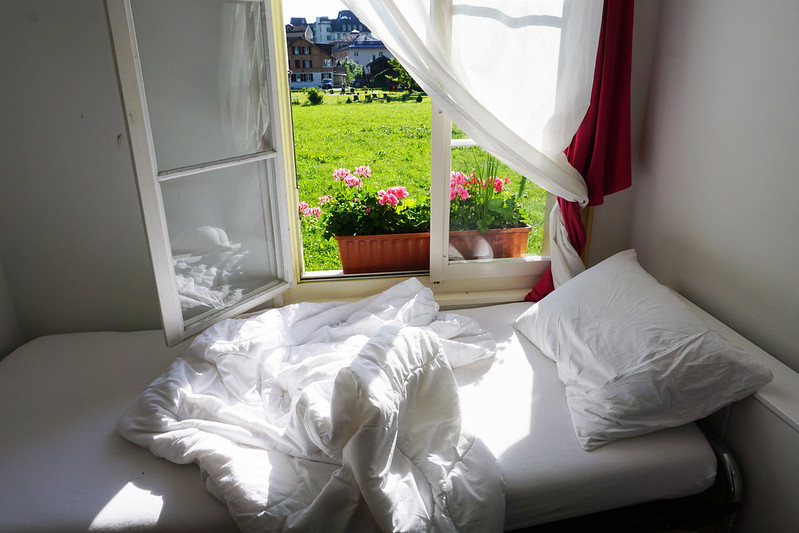
Food: Perhaps unsurprisingly, this foodie’s second highest expense is meals. I track my spending on groceries separately from my spending on eating out. I don’t put a budget ceiling on groceries because eating fresh, high-quality food is really important to me and I’d rather spend a bit more on groceries (and a bit less on other things) than take shortcuts with my health or joy.
In the states, I shopped at organic grocery stores and tried to buy healthier options, which were often a bit pricier. In Europe, I shop at fresh markets, local butchers, and tiny bakeries most of the time and stay away from imports that might have questionable chemicals or ingredients.
I always strive to only buy what I need and to buy it in the best quality, most local form I can. I mostly cook at home instead of eating out and when I do eat out I go for quality over quantity.
Recent grocery budgets have run about $393 ( Zagreb, Croatia ), $614 ( Thun, Switzerland ), $653 ( Bad Ischl, Austria ), and $429 ( Tartu, Estonia ). Eating out budgets in those same locations were around $257 (Zagreb), $0 (Thun), $41 (Bad Ischl), and $88 (Tartu). This means totals for those three places landed at $650 (Zagreb), $614 (Thun), $694 (Bad Ischl), and $517 (Tartu). As you can see, food spending varies, but not enormously. If you read my older budgets, you’ll also notice that the average has gone up over time (which makes sense, because inflation).

Transportation: Since I tend to stay longer in one place, transportation costs generally run pretty reasonable (e.g. far less than I spent when I owned a car). Every month or two, I buy a long-distance train ticket or two, and maybe once or twice a year I take a flight (though I try to fly as little as possible both because I hate flying and I try to be conscious of my environmental footprint).
In between big train journeys, I choose to walk whenever possible (which, in Europe, is nearly always) and only take buses and metros when the weather is walking-prohibitive, if the walk would be more than an hour long, if I’m carrying something heavy, or if I’m in a particularly busy city and the walk would be crowded or stressful.
These days, I spend anywhere from about $25 (Prague unlimited monthly transit pass) on a month where I’m staying put to $300ish (trains from Rennes, France, to Prague, Czech Republic) on a month when I’m moving from one base to another.
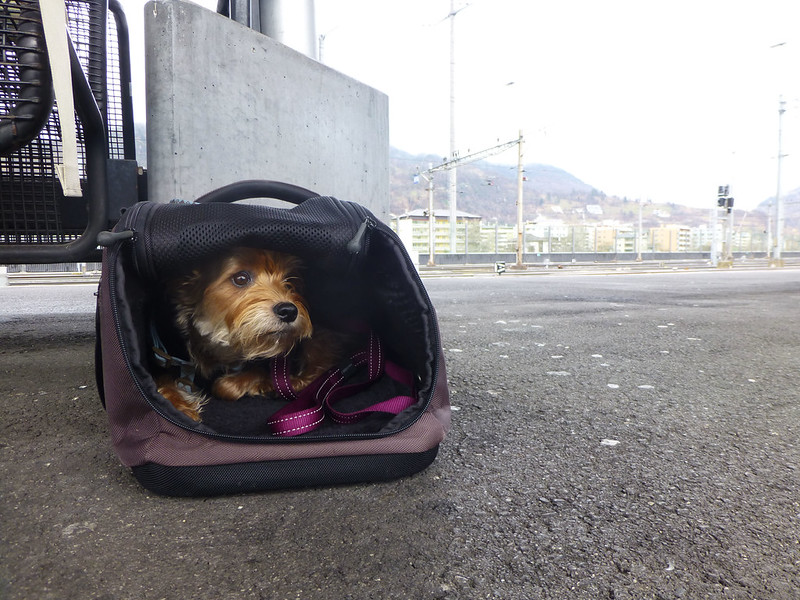
Luna the traveling pooch’s food and care: This varies a little from country to country, but rarely exceeds $200 per month. Luna eats a homemade diet primarily consisting of rabbit, fish, quinoa, and veggies (the diet was created with a veterinary nutritionist and if you decide to do the same, I highly recommend hiring one through your vet), and I’m not very strict about separating her food budget from mine, so expect that some of the grocery budget is actually going to Luna.
As with human health care, I’ve found vet care to be significantly more affordable in Europe (compared to the US). In Latvia, four injections, a blood test, two weeks of pancreatic enzyme pills, a vet consult, and an exam cost just over $100. In Dubrovnik, Croatia, in a similar vet emergency, the bill for the sedation, IV fluids, blood work, x-ray, exam, anti-nausea shot, and 100 days worth of pancreas pills was about $150. In the US, the cost would have been at least tripled in each of those cases. A single blood test in Colorado cost us upwards of $200 last time we were there.
Entertainment/fun money: When I’m traveling, most of my activities are free or cheap, so this line item is always pretty small compared to the others.
Supplies: These tend to run less abroad as well, in part because I am careful about what I buy, since I carry everything on my back, and, in part because I’m less bored and thus feel less of a need to shop. The ironic and wonderful thing about this is that the things I buy are often higher quality and more expensive, yet I generally spend less overall than I did in the states.

Health insurance and healthcare : Since I’m currently based in Portugal, I’m relying on the local health system. While traveling more extensively, I previously paid $268 per month for GeoBlue insurance that covered me anywhere in the world except the US. Before that, I tried travel insurance through World Nomads, which I found wildly frustrating (despite marketing themselves to travelers, they require you to jump through a LOT of paperwork hoops that require access to printers, scanners, and copy machines) and IMG Global, who ignored my emails and took months upon months to even acknowledge my claims after I was hospitalized on Malta. I would not recommend either company.
For anyone who’s used a healthcare system abroad, it’ll come as no surprise that pretty much everywhere in cheaper than the US. Pre-Obamacare, I paid $150 for three months of birth control pills in the US. A three-month supply (and a doctor visit to get the prescription) in Germany cost me under $100. In Switzerland, that number dropped to around $50. And in Vietnam, the same pills (same ingredients, different brand name) were $10 and available over the counter.
In all, I try to keep monthly spending under $2,500 (not including my business spending). And even with this as my budget ceiling, I often come in under. A few months ago, I did the math on the 30+ real Europe travel budgets linked below (scroll down for links) and the monthly average came in at $1,637 .
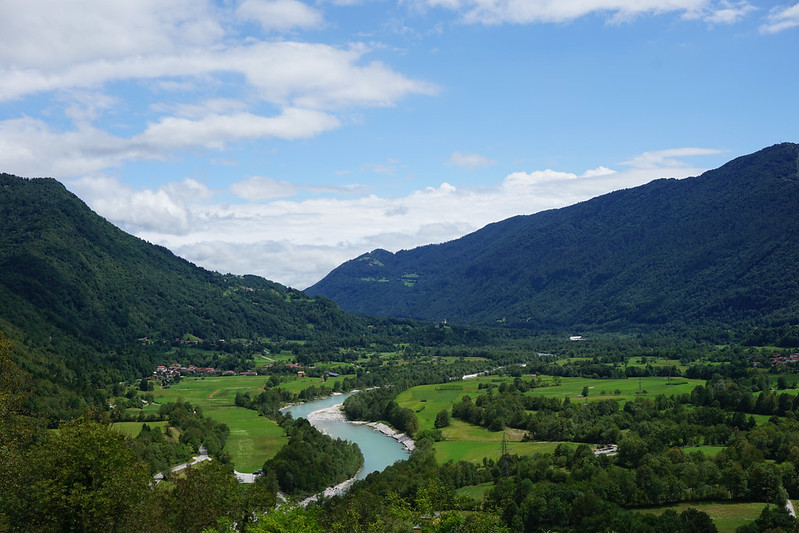
For those who’d like a more detailed look at my monthly budgets around the world, here they all are categorized by price range (click on the links for in-depth details on the budgets):
My real monthly budgets
From cheapest to most expensive monthly budget. Click on each location for a more detailed breakdown.
Non-European locations are marked with an *. My favorite places appear in bold. Cost is in parentheses. And I’ve indicated the year the budget is from (obviously account for some inflation when using budgets from 10 years ago) and whether the budget was solo travel or traveling with a partner/friend (partnered travel typically means lower housing costs).
Under $1350 per month:
Konjic, Bosnia and Herzegovina / one month ($1157) 2017 / partnered
Labin, Croatia / one month ($1175) 2021 / solo
Tartu, Estonia / one month ($1213) 2020 / partnered
Tulum, Mexico / one month ($1232)* 2018 / partnered
Kotor, Montenegro / one month ($1253) 2019 / partnered
Mostar, Bosnia and Herzegovina / one month ($1296) 2017 / partnered
Sayulita, Mexico / one month ($1301)* 2013 / solo
Riga, Latvia / one month ($1313) 2019 / partnered
Split, Croatia / one month ($1317 & $1241) 2019 & 2013 / partnered & solo
Zagreb, Croatia / one month ($1337) 2018 / solo
Playa del Carmen, Mexico / one month ($1350)* 2013 / solo

Under $1,500 per month:
Taormina, Italy / one month ($1364) 2017 / partnered
Porto, Portugal / one month ($1366) 2022 / solo, living full-time here
Kranjska Gora, Slovenia / one month ($1385) 2017 / partnered
Toledo, Spain / one month ($1388) 2015 / solo
Kobarid, Slovenia / one month ($1422) 2015 / solo
Brasov, Romania / one month ($1433) 2018 / partnered
Dubrovnik, Croatia / one month ($1443) 2017 / partnered
Tallinn, Estonia / one month ($1460) 2019 / partnered

Under $1,700 per month:
Interlaken, Switzerland / one month ($1558) 2019 / partnered
Ljubljana, Slovenia / two weeks ($808) 2015 / solo
Bad Ischl, Austria / one month ($1618) 2020 / partnered
Rennes, France / one month ($1648) 2018 / partnered
Nerja, Spain / one month ($1689) 2015 / solo
Edinburgh, Scotland / one month ($1697) 2012 / solo

Under $1,800 per month:
Ljubljana, Slovenia / second stay, one month ($1735) 2017 / partnered
Grenoble, France / one month ($1739) 2018 / partnered
Prague, Czechia / one month ($1752) 2018 / partnered

Under $2,000 per month:
Perugia, Italy / one month ($1882) 2013 / solo
Flagstaff, Arizona / one month ($1893)* 2016 / solo
Rome, Italy / one month ($1911) 2017 / partnered
Chamonix, France / two weeks ($962) 2015 / solo
Vancouver, Canada / one month ($1988)* 2016 / partnered
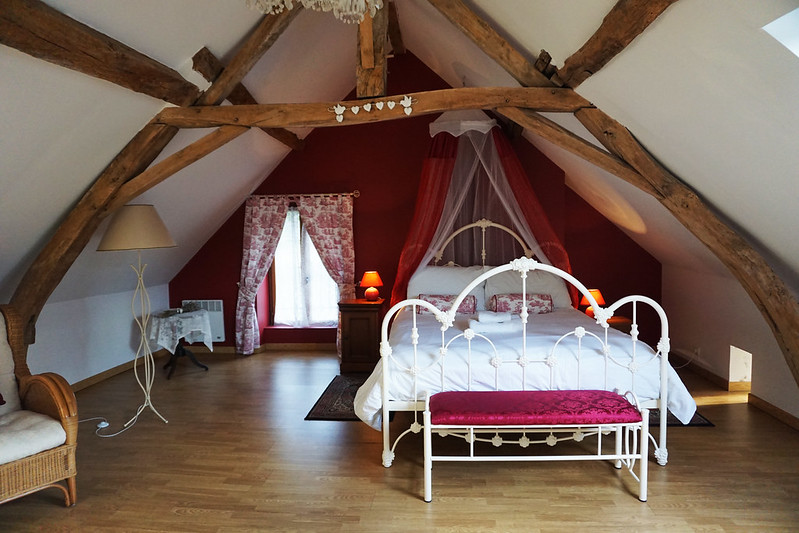
Over $2,000 per month:
Lauterbrunnen, Switzerland / three monthly budgets compared (varies) 2015 (and before) / solo
Amsterdam, Netherlands / two weeks ($1008) 2015 / partnered
Biarritz, France / one month ($2029) 2014 / solo
Innsbruck, Austria / one week ($511) 2018 / solo
Paris, France / one month ($2118) 2013 / solo
Thun, Switzerland / one month ($2124) 2021 / partnered
New York, New York, USA / one month ($2297)* 2018 / partnered
Zagreb, Croatia / one month splurge! ($2320) 2021 / solo
Opatija, Croatia / one month splurge! ($2897) 2021 / solo(ish)
Cycling across France / one month ($3091) 2015 / solo

My budgets for shorter trips
Now, what about short trips? Weekends, overnights, week-long vacations? I’ve got some real budgets on those too, though they’re fewer and farther between for me. Here are they, from cheapest to most expensive per-day:
Vrbovsko, Croatia / 3 days ($87 / $29 per day) 2021 / solo
Plitvice Lakes National Park, Croatia / 3 days ($184 / $62 per day) 2021 / solo
Denver to LA road trip / 2 days ($207 / $103 per day)* 2012 / solo
Tbilisi, Georgia / 10 days ($1050 / $105 per day)* 2019 / partnered
Colmar, France / 5 days ($539 / $108 per day) 2019 / partnered
Paris, France / 5 days ($663 / $133 per day) 2019 / partnered
Emilia Romagna, Italy / 5 days ($776 / $155 per day) 2014 / solo

Business costs
It’s worth noting that you won’t see any business costs in the above budgets. My business expenses vary greatly based on what I’m working on, how much active marketing/sales I’m doing, and what kind of side projects (blogs, self-published books, etc.) I’m taking on.
The few consistent things I pay for business-wise include:
Subscriptions for Microsoft Word, Adobe Photoshop, cloud storage, and a media subscription or two.
I now own a cell phone (turns out living full-time in Portugal requires one), but I also need a US number, so I use TextNow on my iPad for US calls/client calls. The basic number is free (because they serve up ads), but I pay a small fee in order to get a few extra benefits.
Business insurance , which runs me about $50 per month, and a yearly fee (about $100) for my registered agent to handle my LLC renewal and receive any business mail for me.
Once a year or once every few years, I also have expenses for web hosting and domain renewal for the website. This usually costs me less than $100 per year.

Taxes: Finally, a note on the most unavoidable of all expenses – taxes. In general (though not in every case), you are expected to pay taxes in the place you reside. If you live in the US, you pay in the US. If you live in Switzerland, you pay in Switzerland.
If you’re from the US, you’ll always have to file US taxes even if you’re a resident abroad, but you may be eligible for the FEIE , which is basically there to prevent you from paying double taxes. (Rather than get into it further here, I’ll suggest you book a consult with a US tax accountant. Many do free first consults and they will know so much more than I do about all the ins and outs of your particular situation.)
NOTE: If you’re paying in the states and self-employed, taxes are due quarterly, not yearly. This means when I’m paying in the States, I sit down every quarter and calculate the taxes I owe and send the government a check. At the end of the year, I hire a tax whiz (which generally runs me another $350 – $500) to help me make sure everything has been paid and filed properly.
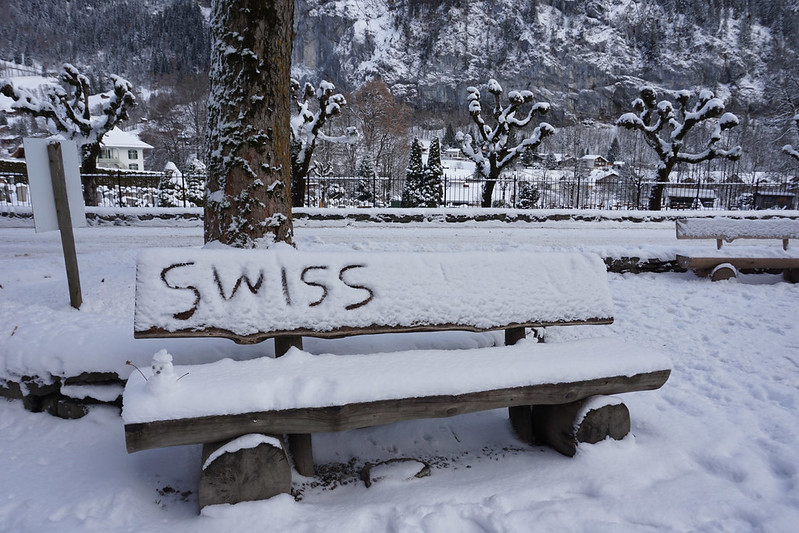
Air travel expenses (& other big one-time costs)
There are a few things I don’t budget for monthly (or include in my monthly budget posts) because they are yearly or quarterly expenses and may vary greatly from month to month. One of these things is plane tickets .
I’m not a traveler who flies a lot, preferring to explore one continent thoroughly at a time and take trains where possible both because it’s simply a more pleasant way to travel, because it’s more environmentally responsible, and because the older I get the worse my motion-sickness gets, so flying has stopped being even a little bit fun.
So, since I’m not buying them monthly or even bi-monthly, I usually don’t track plane ticket costs monthly and instead factor them into my budget on a quarterly or yearly basis.
In 2021, I took four flights (one-way Switzerland to Croatia, one-way Croatia to Portugal, then round-trip Portugal – Croatia to collect my visa). In 2022, I only took one (one-way from Paris to Porto – I took trains in the other direction).
Replacing technology (my laptop or tablet), big one-time medical expenses, and other large one-time purchases (like my folding bike) are also something I look at quarterly or annually rather than monthly.

Saving money while traveling full-time
Finally, for me, part of feeling comfortable starting my business and then, a year or so later, leaving to travel full-time was having a decent financial buffer in the bank. I was advised while starting my business to have at least six months worth of expenses in the bank just in case. Being a bit neurotic about money, I waited until I had 10 months and enough clients that I was already almost breaking even.
Similarly, when I started traveling, even though I would be working normally and hopefully earning normally, part of feeling comfortable was the knowledge that I had a buffer. If all my clients ditched me in month one, I could live for a year without income (assuming I lived relatively frugally).

Everyone operates differently on this. When my aunt started her business, she quickly went into debt. Yet she was wildly successful over time. I’ve also heard stories of those who moved to a cheap part of Asia to start their business, which meant the limited funds they had could last them much longer while they got things off the ground. I know one man who told me it’s going to take $150,000 to start his business. Another woman told me a success story that started with just 3,000 euros in the bank. An old roommate told me she’s been traveling and working for years with just a few hundred euros to her name.
My income is variable , but I also try to set aside a decent percentage each month for the future –both to tackle unexpected expenses or emergencies, to be prepared for my yearly tax bills, and, of course, to create more security for myself in case I ever cannot or no longer want to work.

Any expenses you tend to have during travel that I haven’t mentioned? Any questions about travel expenses and budgeting? Toss them in the comments.
Share this post!
You may also like
Cost of living in zagreb: one digital nomad’s real budget, how i make money while traveling the world full-time, how much does it cost to bike across france, how much my digital nomad lifestyle costs: real budget numbers from 6+ years on..., how much does it cost to spend a month splurging in zagreb, croatia (2021..., the cost of living in estonia: my real spending for a month in tallinn, leave a comment cancel reply.
Save my name, email, and website in this browser for the next time I comment.
17 comments
This is so cool. Thank you for this.
I’m living in a tiny house on a farm right now, but after my kid graduates high school I – or perhaps both of us – have considered living like this for a while. I’m building up my author/editor business, and it certainly would be nice to get around. I get really restless staying in one spot too long.
Glad you enjoyed it! And good luck!
Idnloke to know more about working abroad
If you are looking for info on my freelance career, here’s the skinny: https://gigigriffis.com/how-i-make-money-while-traveling-the-world-full-time-behind-the-scenes-with-a-location-independent-writer/
If you are looking for info on jobs abroad, I’m sorry to say I don’t have much info on that.
I’m not brave enough to try this with my husband and two kids, but I loved reading about how you do it! Kudos!!
Thanks for sharing your experience! This gives us an idea of how to budget for travel in Europe.
I am really enjoying following your adventures. I am waiting for a Portuguese residency permit and will be dipping my toe in the nomadic water soon. One question I am grappling with – what do you do for health insurance when you are back in the US?
For short trips, I get a temporary travel insurance plan (something like World Nomads even though their paperwork hassles are epic). But I think many European health plans also cover emergencies outside Europe, so might be worth looking into whether your Portuguese insurance will cover you once you’re resident there (I know in Switzerland the insurance we looked at covers US travel).
Amazing post!! Thanks for the detailed breakdowns. So happy to have found your site – it’s SO helpful and informative for slow travelers.
Great post! Thanks for sharing these insights with everyone. I wonder if you might answer a tax question. If one were to travel 1-3 months in each country, does that mean you need to file taxes in each of those countries plus the US?? I get if one were in the same country for over 6mo then that country would probably be considered the country of residence for tax filing purposes but what about when hoping county to county, never staying in any one country longer than 3mo??
Thanks in advance for any insights on my tax question!
Most countries don’t consider you a tax resident until you’ve been there more than 180 days in a year. Most tax accountants will do a free consult if you would like a professional perspective on your specific situation, though!
i’m a new dog owner (about 9 months) and also planning for a 6-month travel sabbatical in about 1.5 years. i’m still debating whether i should take my yoshi with me (he’s a 13 lb chiwienie). I’ve never flown with him before, and I’m wondering if you have any tips and tricks to help ease him into the process? you’re an inspiration!
Thanks! If you haven’t already, I’d read the Luna the traveling pooch section of the blog. https://gigigriffis.com/category/luna/ . There’s tons of stuff in there. The short answer is lots of treats and comfort toys inside the carrier (with the carrier open) in your house to get him used to and feeling safe in the carrier.
Thank you a million times over!
Thanks, Gigi. I needed this. It gives me courage as a single 55 yo American dude. I need some challenge in my life…something to conquer…something that will keep me on my toes. I’ve always suffered from bouts of wanderlust and I’m just plain DONE with corporate health/academic full time work. I did a back-of-the-envelope calculation on my expenses and came out around 2,200/mo traveling mostly in European Union with time in Serbia, Montenegro, B/H, SE Asia, Georgia and Turkey to mitigate the Schengen rules. Any reason you spent so little time in the Balkans? Is it a solo-female traveler thing? Sadly Russia appears off the list. I have spent a fair amount of time there before.
I have savings and a professional license (planning to do consulting over zoom). I plan to work part time (10-12 hours/wk) while honing film photography, reading for pleasure, learning about local history, and making friends. My budget is a bit lighter for accommodations (I don’t mind living in an Airbnb room) and heavier on LOCAL travel. I want to hike and spend time shooting landscapes in the areas I choose. This is a giant question mark in my mind. How to get to these places without a vehicle? I’m a bit reticent about using a scooter and don’t want to spend a fortune on taxi. I’m thinking there might be local bus service that gets me close in many places? Any insights here would be appreciated.
Your style is very much how I view my own journey. Stay in one place 1-2 months to maximize accommodation expenditures, minimize European touristy museums (been there done that—going to 1-2 local gems is my thought), mostly eat at home, and take rail day trips once a month with a night-over. Kudos for avoiding the BIG European cities. That is exactly my plan. I don’ think you could force me to spend time in Paris for more than 3 days, mirroring my aversion to New York, Chicago and LA. Lol.
Once again, thank you for the inspiration! Hit me up on email if you like. If you have any tips on making local friends in the places you traveled, I’m all ears. Stay safe and pleasant travels!
Hey! Glad it’s helpful and good luck!
To your questions:
1) I actually spent quite a lot of time in Croatia (in fact, got a visa for a year after living in Estonia 1.5 years during the whole covid fiasco). The Balkans outside Croatia are a touch trickier because of infrastructure (which goes to your second question, I suppose). There’s less train/bus access, so they are trickier to get to and trickier to get around without a car (and I detest driving). Croatia definitely has better infrastructure than some other spots, though I did enjoy my jaunt into Bosnia and Montenegro.
The other reason is the dog. They tend to be the less dog-friendly options in Europe. I felt fine as a woman traveling solo, but the dog complicates places like Bosnia (which I did spend some time in, despite this) and Albania.
2) The Schengen countries (for the most part, with a few exceptions) have great public transit, so I relied on that. For hiking/wilderness areas, I find that there is transit but it sometimes runs less frequently, so I just had to plan well and sometimes find myself a base very close to the wilderness areas to stay for at least a few days (I did this, for instance, for Bohemian Switzerland in Czechia). Other places (Switzerland, France) often have trails very integrated into every location and/or transit to even the remotest spots.
The places that are a bit more tricky tend to be places on the edges of Europe (the center is very well connected). So I had to get more creative in places like Portugal, Spain, and Estonia, which have somewhat less extensive public transit and more car culture. (Even so, I have never rented a car in any of those places and have relied on everything from infrequent buses to my bicycle to taxis or rideshares.)
Great! Thank you for the insights! I poked around your blog and found solid information on making friends. Funny, having a meal at home with a handful of people is definitely my style. :) I enjoyed many of the images on your blog. Particularly one from Italy with the path going along that turquoise river. Sublime! Excellent information on the hiking trails in different countries and your tip on staying close to trail systems for a handful of days. Lastly, your travels helped me to discover the inclusion of Portugal to the digital nomad parade! That’s particularly exciting to me as my younger brother and fam are planning a permanent move to Portugal (getting tired of Seattle/US health care/foods). Looks like potentially a more lengthy process? What an amazing time to see the world and work from anywhere! New DM visas are also popping up in SE Asia. Cheers!
This website uses cookies to improve your experience. Opt-out here if you wish! Accept Read more
Share on Mastodon
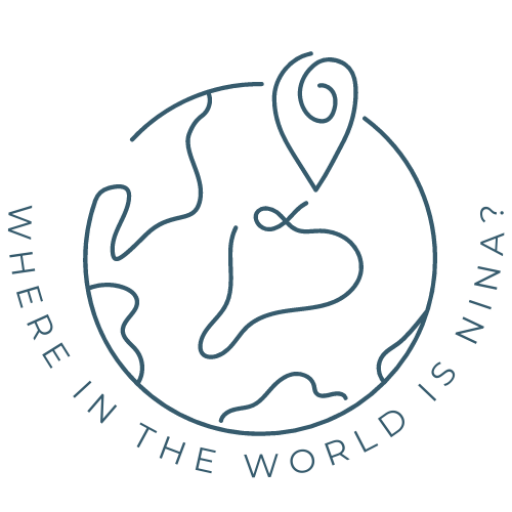
How to Travel Europe for Cheap! How Far a $2k Budget Can Get You
Pin this post for later!
The following article on how to travel Europe for cheap is authored by Gigi Griffis
When I tell people I’ve been traveling full-time for 7ish years, mostly in Europe, I get a lot of shocked looks.
Isn’t that expensive? People ask.
After all, their one-week passionate jaunt across Europe by train cost them a pretty penny that one time…so doesn’t it follow that Europe’s always a pricey destination?
But with almost seven years over here—two of those years living in Switzerland, the priciest of the pricy—my answer is no. No, Europe isn’t always a luxury-priced destination.
No, you don’t have to be rich to be a digital nomad who spends most of her time in France. And no, Europe on a budget isn’t an impossible concept.
I know because my budget isn’t a huge one. My goal as I travel across the continent is to spend $2,000 per month or less. And I’m proud to say that I often come in way less, like $1,200 or $1,500.
Here’s how…
Don’t lose this! Click to pin it now.
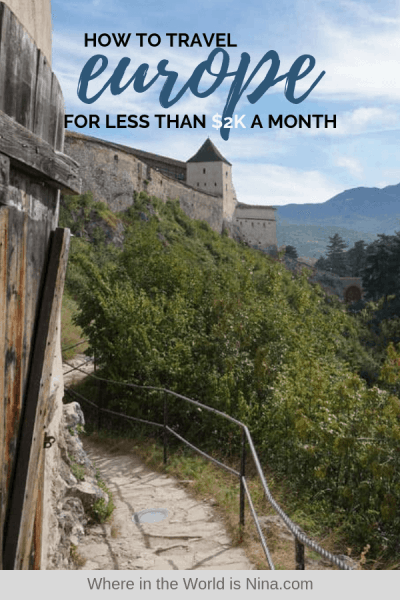
Table of Contents
1. The Savings of Traveling Slow Around Europe
2. keeping transit costs low across europe, 3. accommodations on the cheap in europe, 4. health on the road, 5. solo vs. with a partner, europe on a budget: eastern europe for under $2k/month, europe on a budget: western europe for under $2k/month, how to travel europe for cheap, even with a dog, europe’s shoulder seasons, so you want to visit europe on a budget…, 37 wicked experiences in europe that you need to do once in your life, europe's most epic viewpoints that'll make you buy a plane ticket, the ultimate europe packing list, what not to bring & the best bags to use, five underrated destinations in europe, northern spain itinerary: coastal cities and wineries (7 days in spain), how to travel europe for cheap (under $2k a month).
There are so many ways to cut down costs but here are the five main ways to travel Europe on a budget with some additional knowledge on the “two sides” of Europe and how I even manage my low budget with a dog in tow.
The first thing to know about how to travel Europe cheaply is this: the slower you go, the cheaper it is.
Spend two days in a place, and that $500 plane ticket is budgeted across just two days ($250 per day). Spend two weeks and the transit cost per day drops drastically (about $36 per day). Spend two months, and it drops hard and fast yet again (about $8 per day).
The slower you travel, the farther those one-time big-ticket items like transit fall.
And they’re not the only way slow travel saves you big. Most guesthouses, hostels, and apartment rentals have nightly, weekly, and monthly rates. The latter two are discounted, with bigger and bigger discounts available the longer you stay.
Longer Stays= Lower Costs
For example, I’m currently in Split, Croatia , for two months soaking up the sunshine, exploring islands, and getting some high-quality, affordable dental care stuff taken care of (more on that later).
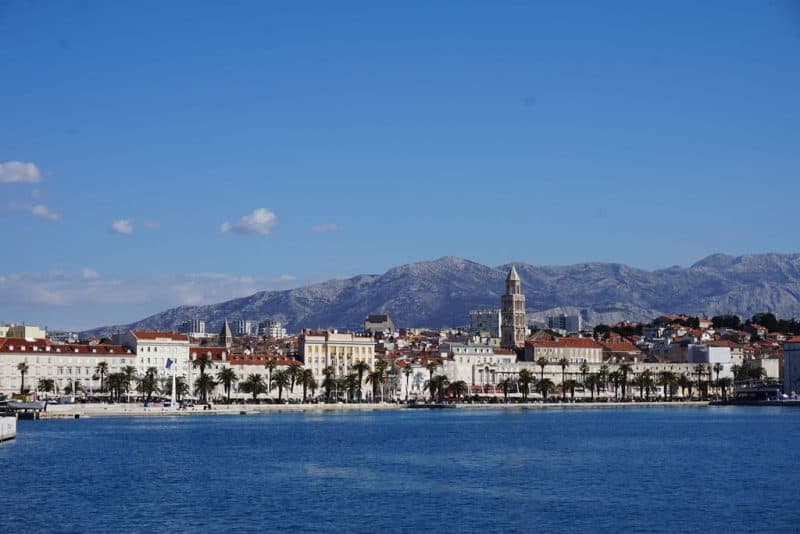
My partner and I have rented a sunny one-bedroom apartment via Airbnb. Our total monthly cost for the place is about $1100 per month, including fees (less than $600 per person). This same apartment lists for $58 per night if you book weekly and $68 per night if you book for nightly. By contrast, we’re paying about $37 per night.
That’s not to mention that slow travel means your must-sees are spread out over a longer period, which saves you money yet again. If, for example, you’re off to Paris and you must see the Louvre and the Eiffel Tower and Frenchie Bar a Vins (my favorite restaurant; yes, it should be on your list).
If you do all those things in a single day, you’re racking up quite the bill for a one-day stay. If, however, you’re spreading them over a week with lots of cheap or free activities in between (like picnic lunches in Paris’ cool parks or afternoons spent wandering in interesting neighborhoods like Le Marais), your total activities costs get spread out just like your transportation costs.
Does this always mean you have to travel slow to do Europe on a budget? No. But it does mean that it’s one pretty surefire way to keep costs down.
Now, whether I’m slow-traveling or fast-traveling, transit costs are always a factor in keeping to my under-$2,000 budget. There are a few ways I keep these as low as I can.
The first is that I walk and cycle everywhere .
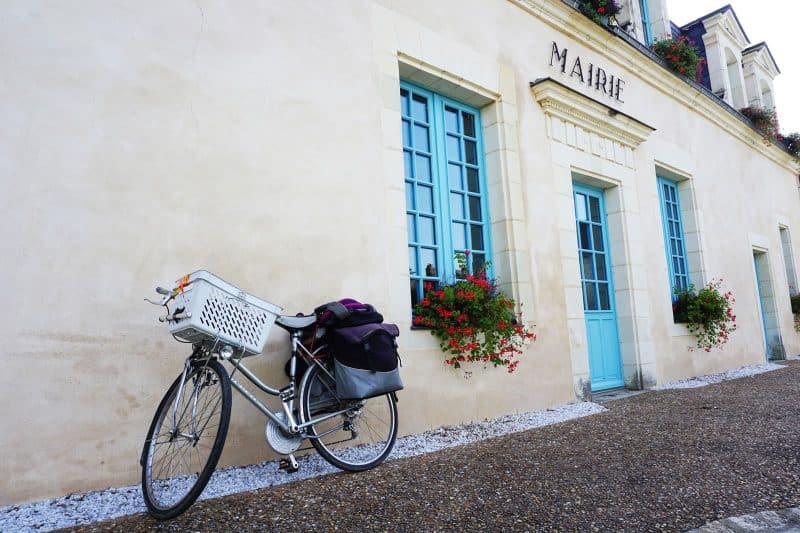
If something is less than an hour’s walking distance, I’m going on foot. Not only because it saves me a buck or two on bus fares, but also because I feel fitter and healthier, and I see more of the places I’m visiting.
Giving myself extra time and strolling across town means finding little bakeries, shops, gardens, and alleyways I would never have otherwise found. It means cool photo opportunities and yummy snacks and a feeling that I am really getting to know the place I’m in.
If walking or cycling isn’t viable, try some of these other transportation options.
Trains Around Europe
Now, trains are a better option when walking is impractical/too far/not a good plan, especially when you’re loaded down with your bags, so I have a couple of tricks up my sleeve for keeping those costs low.
First, I check multiple ways, and a great site for this is Omio , where you can search flights, trains, and buses for great deals. Another killer site is Eurail — how does Eurail pass work ? In short, it offers a lot of flexibility and can sometimes be cheaper than buying single tickets all over the place.
I check things like what if I left a day early or a day late? Would the transportation savings be more significant than what I’d lose in accommodation costs?

Second, I check multiple routes from and to varying destinations. And if I’m staying longer in one place, are there any train or tram discount cards I can take advantage of?
During our summer in Prague, my partner and I both bought monthly tram passes. All it took was ten rides per month before they paid for themselves, and with a lot of things outside my walking distance sphere, it saved me about 50% of what I would have spent.
When I lived in Switzerland, I bought a half-fare travel pass . The pass costs about $175 and lasts a whole year, getting you nearly 50% off on most train rides in the country. For a few-week stay, it’s probably not financially worth it. But for a few months or a whole year? Those are big savings.
Flights Across Europe
Everything above also applies to flights. I check different airports, different days, and different routes. When my partner needed to get from Switzerland to Romania, flights were hundreds cheaper out of nearby Italy, even once we’d factored in train tickets.
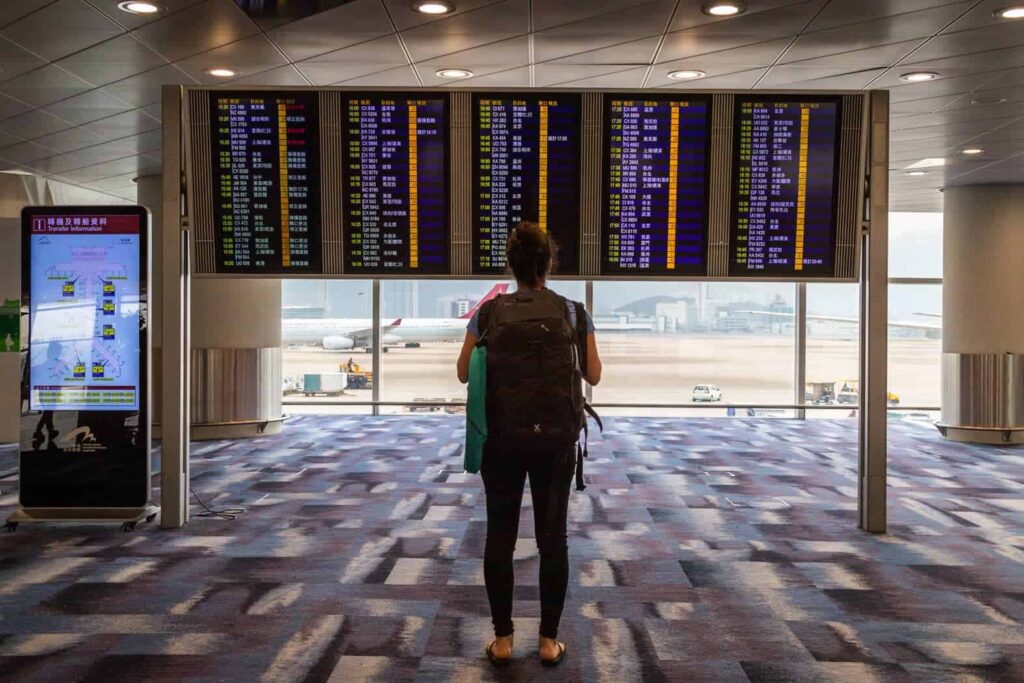
You can check Omio, but Skyscanner is a great flight search option as they have the option to search ‘everywhere’ so you can find the cheapest place to fly to, from your place of origin. They include all the budget airlines in Europe, including Ryanair , a go-to for quick country hopping in Europe on the cheap.
Buses in Europe
Along with Omio , you have a few other options for bus transportation which include Flixbus and BlaBla Car . Buses will obviously take a bit longer to get where you want to go, so they’re a good alternative if you don’t have any pressing plans and want to sleep off that hangover after Oktoberfest.
With one-way and roundtrip offerings, you can plan your trip with their route map and travel to 35 countries with over 3,000 destination points. And if you’re able to work remotely from your laptop, you won’t lose a full day on the bus because they have free Wi-Fi, plugs, and bathrooms on board!
Buses allow you to see a lot of beautiful scenery you wouldn’t otherwise get to witness via plane. Your carbon footprint will also be considerably lower as FlixBus utilizes solar and wind power energy to operate their trains and buses. You can fully offset your trip with a small fee when you purchase your ticket.
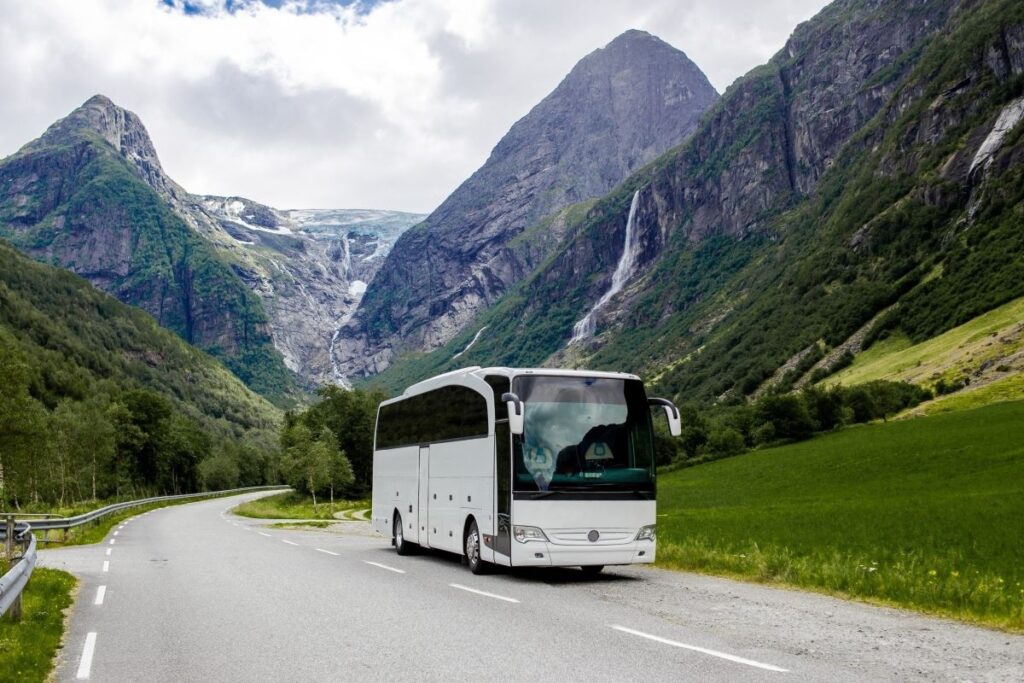
You can find deals as low at 5 euros on-way, and the earlier you book, the lower the price tag! You can also cancel or change your ticket right up to 15 minutes before departing for the cost of 1 euro.
Then we have BlaBla Car which is both a bus and carpool service. Available in 22 countries (including Turkey, India, Mexico, and Brazil), you’ll have no problem finding cheap bus routes here.
The downside of these buses is that they don’t offer Wi-Fi. First-world problems, sure, but a very real issue for 13+ hour-long journeys if you don’t have unlimited data.
Carpooling Around Europe
Carpooling with BlaBla Car is safe because they do ID checks, and there is a review/profile system in place so you can vet out any weirdos. But the biggest perk of this type of transportation is that if you’re a non-planner, most people post their carpooling offer 1-3 days before they head off.
Just pitch in for gas, and you’ll be on your way! While carpooling also doesn’t come with Wi-Fi, it’s unlikely you’ll spend a long journey in complete silence with other travelers in such close proximity.
Car Rentals in Europe
While this is not likely to be the cheapest way to travel Europe, it does offer you more flexibility and freedom to leave locations when you want, pull over to take in the views, and jam out to your own music on full blast.
But heed my warning: rental cars come with a mound of hidden costs that negate the cheap advertised price: if you’re under a certain age, if you’ve only had your license a certain amount of time, if you only want to book one way, if you want to add GPS, if you want to cross country lines… ALL an additional cost.
My biggest advice is to search on a price comparison style website like Expedia , but always make sure to click into the rental and do a thorough overview of those sneaky hidden costs. A lot of times, they’ll hit you with a large up-front bond, as well.
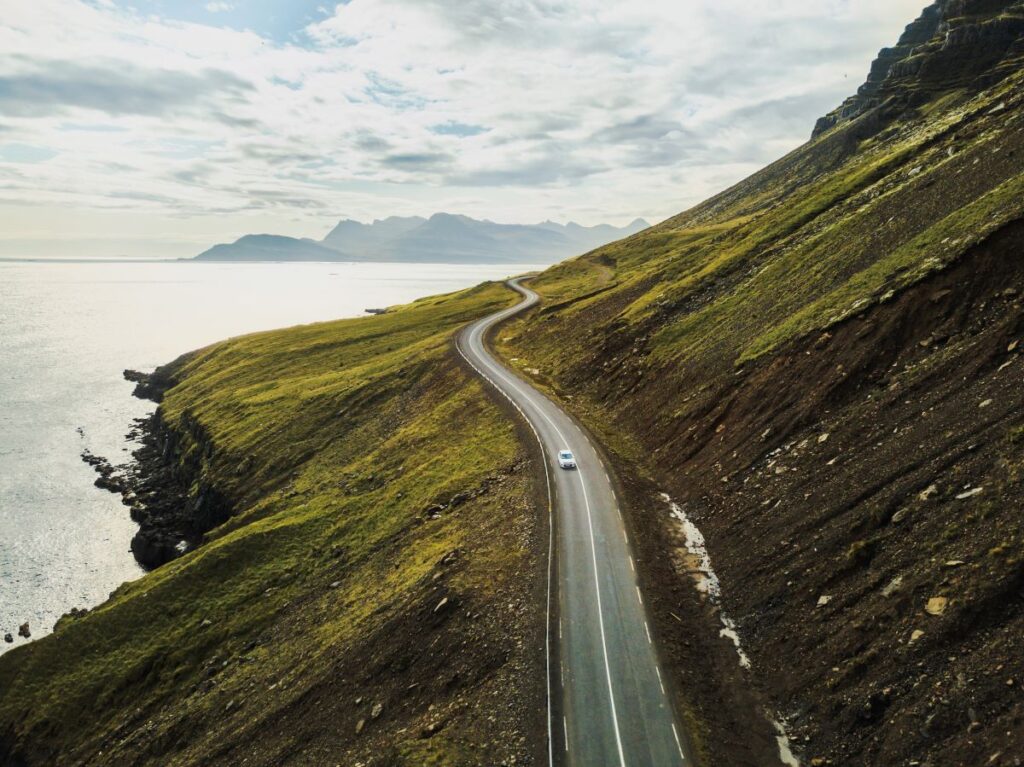
Another recommendation is to search for campervan companies that need people to drive their vans back to their original locations (from those who just take one-way journeys). These sometimes also come with a bond and cost per mile/km, but there are some that have unlimited mileage included.
Movacar is a good example of this where the cost to rent can be 1 euro, and you have anywhere between 24 hours to 1 week to get the van from point A to point B. Definitely an unconventional rental solution.
Transit costs might seem like a big-ticket item, but the biggest factor in my budgets across Europe has been accommodations.
On months when I am staying longer and settled comfortably into an apartment, I spend significantly less than on months when I travel quickly and stay in hotels, B&Bs, or nightly apartment rentals.
If you’re traveling quickly and enjoy company, options like Couchsurfing or Warmshowers (for cyclists), where you can crash someone’s couch for the night and make a new friend, are great.

If you’re traveling slow, apartments/rooms in apartments are almost always the cheapest options (with guesthouses with shared kitchens occasionally coming in a little cheaper).
But if you’re looking to give back to the communities you travel to, we suggest something a bit more unconventional. Some of the greatest experiences you might ever have while traveling will come in the form of work exchanges, where you provide your time and skills for free room and board.
Worldpackers
One of the best businesses to go through is Worldpackers , a global platform that has an app through which you can create a profile and search through hundreds of volunteer opportunities with various filters, like whether you’re traveling solo vs. with friends, if you want meals included, what types of work, etc.
They have annual subscription options for solo and couple/friend travelers ranging from $49-$119 USD. Ever wanted to teach English in Poland? How about learning how to make wine in Italy? Or maybe you want to help with social media and videography for a hostel in Amsterdam? Do it all!
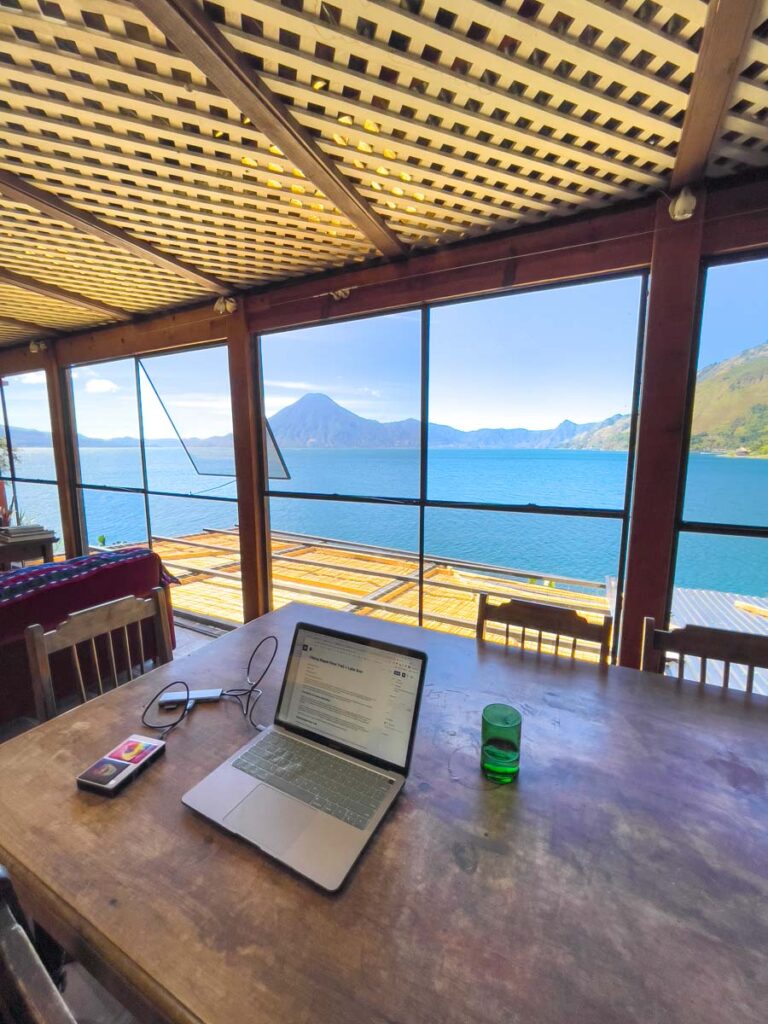
Accommodations can range from a tent or van to hostel rooms or a private guest house, so be sure to look through the profile of the host, check out their previous reviews, apply, have a quick interview, and potentially be packing your bags to incredible destinations, living rent free!
Trusted Housesitters
Another smart way to save on accommodations is by house and pet sitting. Trusted Housesitters is the most widely used and known global platform where people who need someone to look after their homes or pets create a profile and offer a free stay in exchange for your service.
Because their headquarters are based in the UK, Europe has the most house-sitting options compared to anywhere else in the world. Stays can be as short as 1 night and as long as a year or more (though 3-6 months sits are more realistic for those just escaping European winters).
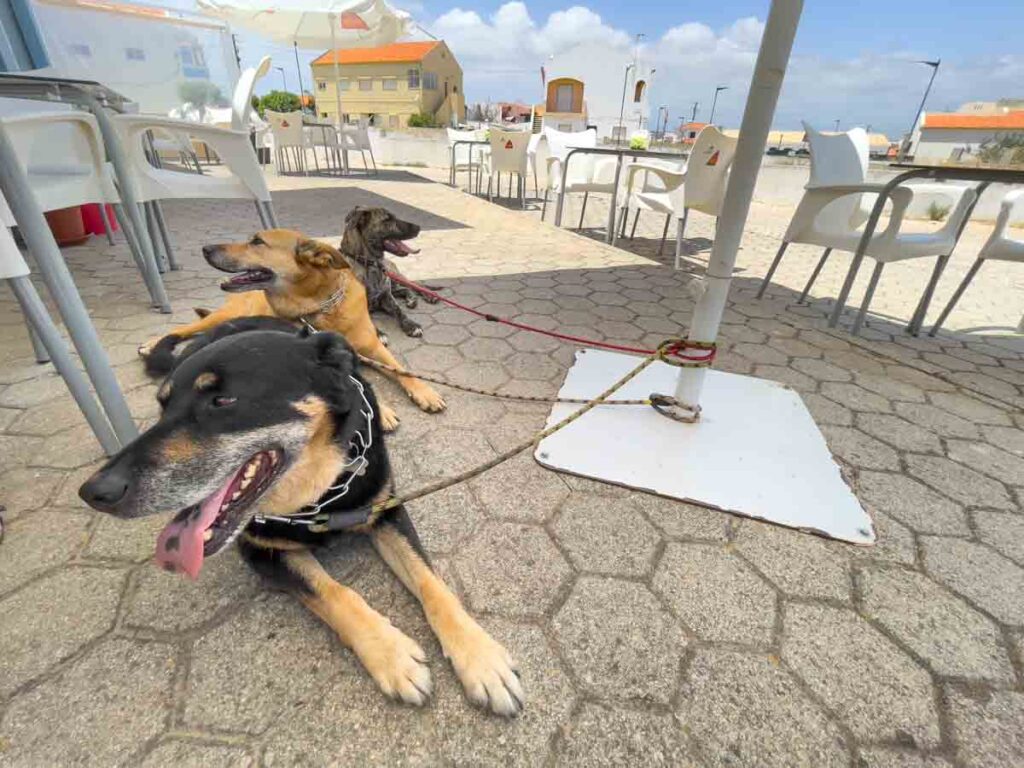
This can be an incredibly cost-effective way to see local life in towns you might not have otherwise adventured to. It’s an annual subscription service, but for $120-$155 USD, it pays for itself in one night at a sit considering the cost of traditional hotels run around that much.
Oh yea… not to mention you get to look after ridiculously cute animals! People do this as a lifestyle, full-time and travel the entire world this way, so if that’s you’re dream and goal, start here.
My only warning is that house sitting can be viewed by customs agents as a form of monetary exchange (though there’s no actual money involved). You didn’t hear it from me, but I’d suggest saying you’re staying with friends, not living rent-free somewhere looking after animals.
Looking for ways to travel for practically free? If you love the idea of Couchsurfing, you’d love these ideas for working in exchange for room and board!
If you’re from the US, there’s more good news ahead: Part of the reason traveling Europe full-time for nearly seven years has been so affordable for me is that healthcare costs are so much more reasonable here.
My insurance (through GeoBlue) costs $165 per month and covers me everywhere in the world except the US. But even the times that I’ve had to pay out-of-pocket on the road, the costs have been stunningly low.
When I was hospitalized in Malta twice in one week, my bill, including a ride in an ambulance, a bag of hydration fluids, multiple doctor consults, and hours in a hospital bed, cost about $150.
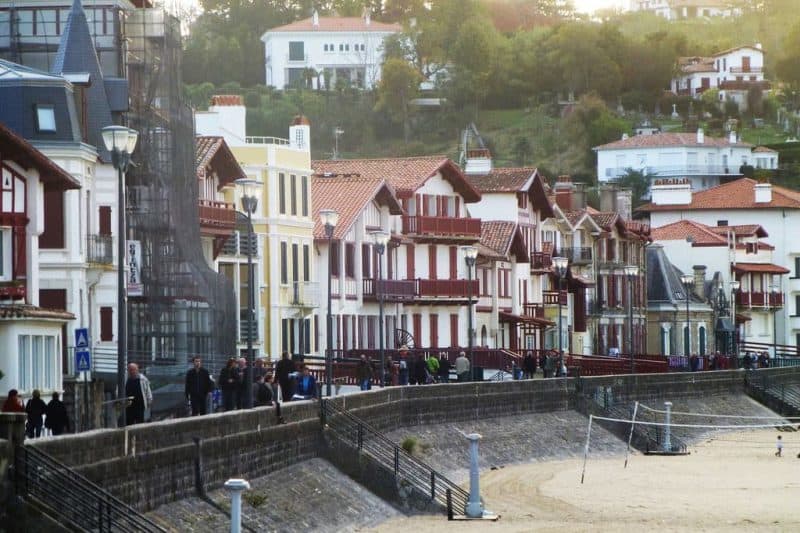
My dental x-rays here in Croatia cost about $30, and I’m having a filling replaced tomorrow for $60.
Even in Switzerland, the most expensive country for healthcare in Europe, my birth control pills were approximately 1/5 of what they cost me in the US pre-Obamacare.
Editor note: I totally agree! I’ve had medical needs taken care of abroad for a fraction of the price. I even got laser eye surgery done in South Korea .
For the first three years of my full-time travel journey, I was doing Europe on a budget solo. Then I met my partner and the last three+ years have been a joint venture.
My budget hasn’t changed, but my lifestyle has. I could pretty easily travel Europe for $2,000 or less while I was on my own, but I had more roommate situations and rented more studio apartments.
I couldn’t be quite as picky about my apartment choices, either, because $1,000 a month is a relatively low budget for some of the cities I was traveling in (like Paris or Amsterdam).
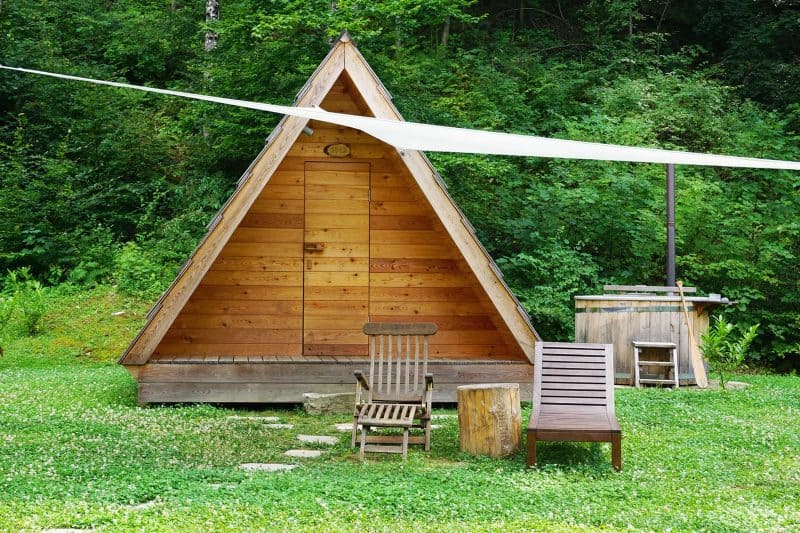
I made it work, but there were trade-offs in the accommodations department.
Now, with each of us chipping in half the rent, we can afford to look at apartments that are a little more expensive and have a little more space, light, and location flexibility.
Our typical rental these days averages between $1,200 and $1,600, which means $600 to $800 each—a significant saving on an individual level and a step up in quality on the joint level.
(This is also a pretty good argument for traveling with a friend or partner. Your other costs will stay relatively stable, but accommodation costs get chopped right in half.)
The cheapest way to travel Europe, as you might have guessed, is to stick to the east. Traveling to cheaper European countries just makes sense to keep yourself on a budget!
Countries like Romania, Bulgaria, and even Croatia are still developing, which means more annoying infrastructure snafus (for instance, no one in Bosnia and Herzegovina seems to know whether dogs are allowed on buses or not) but also significant cost savings.
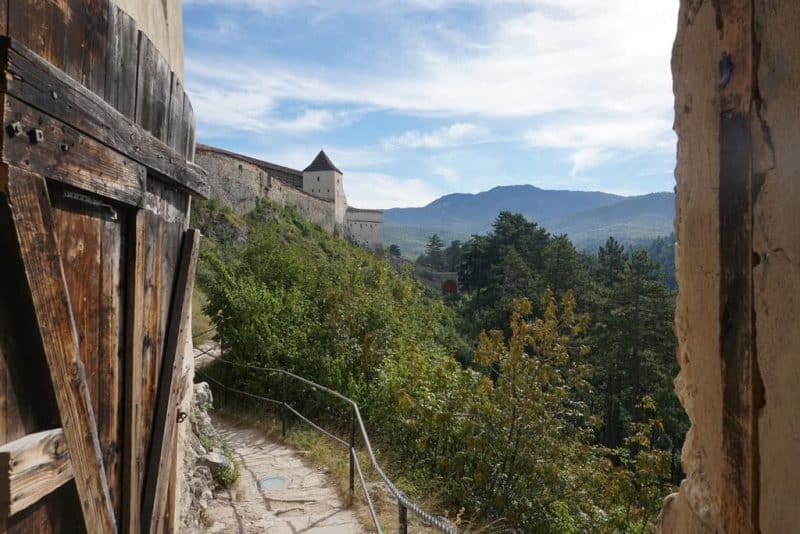
Where a month in the most expensive cities in western Europe (e.g. Amsterdam or London ) will likely run you over $2k even if you’re pulling out all your budget tricks, a month in Mostar, Bosnia, and Herzegovina, in a lovely two-bedroom apartment on the edge of old town cost me less than $1,300.
My personal cheapest month in Europe was in Konjic, Bosnia, and Herzegovina, where I spent $1,157 for a month. And my most expensive stay in the east? A month in popular Dubrovnik for the not-actually-that-pricey cost of $1,443.
If you think of doing Europe on a budget, chances are you’re thinking of the East. But the truth is that it’s also very possible to stay within budget in Western Europe.
My cheapest month in a Western European country (in Taormina, Sicily, Italy, for $1,364) was actually cheaper than my most expensive month in an Eastern country (across the Adriatic in Dubrovnik, Croatia, for $1,443).
In both cases, I had apartments with beautiful views, took myself out to eat reasonably often, and lived more or less the same lifestyle.

Now, that said, western Europe does tend to run more expensive than the East. Expect to live a little more of a budget lifestyle if you’re traveling under $2k in places like Germany and Austria and a lot more of a budget lifestyle if you’re traveling in places like Amsterdam or Switzerland.
The most affordable countries in Western Europe, in my experience, are Slovenia, Spain, Italy, and Belgium.
A solo month in Toledo, Spain, in a sunny, quiet apartment in the city center cost me just $1,388. In Kobarid, Slovenia (a nature lover’s paradise), I spent $1,422. And a month in Italy’s Umbrian hill country (again, solo and footing my entire apartment bill myself) was $1,882.
I haven’t been yet, but I’ve also heard that Greece and Portugal are very reasonably priced European destinations.
Which Countries Might Cost You the Most in Europe?
By contrast, my most expensive months in Western Europe have been in Switzerland (no surprise there), the UK, the Netherlands, and France. And of the countries on that list, the only two where I felt my budget significantly hindered my quality of life were the UK and Amsterdam.

I haven’t been, but I’ve heard the Scandinavian countries are even less likely to make any Europe-on-a-budget lists. So probably don’t extrapolate these budgets onto your Norway – Sweden trip.
The good news is that even in expensive destinations, my spending hasn’t gotten as crazy as you’d think. My most costly month in Europe was a vacation spent cycling across France on the Eurovelo 6 from the Swiss border to the Atlantic Ocean.
I spent $3,091, mostly because even though I wasn’t incurring any transportation costs (except the couple bills for bike fixes along the way), I was staying in budget hotels most nights—and as I said above, those nightly costs add up fast.
Unsurprisingly, I also went over budget in Paris ($2,118), glitzy Biarritz, France ($2,029), and Amsterdam ($1,008 for two weeks). But, as you can see, each of those budget overages was actually relatively small.
If I’d skipped a couple of meals out in Biarritz or rented a room instead of a solo studio in Paris, I could have probably come in under budget.
And if you’re curious about these budget numbers, you can find a full list of all my monthly budgets with detailed breakdowns of my spending here .
Did I mention that these seven years of traveling Europe on a budget have been done with my pint-sized pooch in tow?
Her name is Luna, and she’s an almost-10-year-old Schnauzer-Yorkie mix with therapy training (which I highly recommend if you want a super well-behaved travel companion). And, of course, traveling with her is a factor in my budget.
But here’s the good news for American travelers: European vet care is almost always cheaper than the US equivalent.

When Luna had pancreatitis in Croatia, her full vet bills for multiple tests, x-rays, blood tests, sedation, and pills came in about $150. By contrast, just a blood test (to check on her pancreas later) in Colorado was upwards of $200.
The other big cost to consider if traveling with a small dog is your jam is transportation fees. Most airlines that allow small dogs charge $50 to $100 for an in-cabin dog on flights within Europe. International flights go up from there. The good news is that most trains charge a small fee or even no fee if the dog is in a carrier. So if you’re traveling by train, those costs are rarer and more manageable.
When to Travel to Europe
We all have fantasies about backpacking through Europe during the summer months (or is that just me?). But hear me out: if traveling Europe on the cheap is your goal, you might want to change your expectations around a summer excursion.
Of course, Europe is incredibly beautiful during the peak season, which is essentially from June to August. Walking the Seine River in Paris on a warm summer night, drinking wine overlooking a vineyard in Italy, or taking epic dress photos in Mykonos all make up the perfect European summer vision.

But I’m sure I don’t have to tell you that everyone under the sun (and their dog) are trying to get those perfect shots and experience summer just like you. Thus creating an influx of tourists that take away from the authenticity of a location and experience.
If that doesn’t bother you too much, then something else to consider is the price hikes. From flights and hotels to tours and dining, summer is the time to make money off tourists, and you’ll often be paying three times as much as you would in the shoulder season or winter months.
So when is the best time to travel?
If you want cheaper prices, fewer tourists, and the ability to take public transport without suffocating from humidity or frigidly cold temperatures, I suggest traveling to Europe August-October or March-May (basically before and after summer).
Definitely try to wait until at least mid-August to travel, as a majority of Europe takes their annual vacation at this time, and EVERYTHING shuts down (especially in France).

The winter months are sometimes harsh, but if you’re vibing a cozier getaway, not wanting to see any of the main attractions or attend famous summer festivals, then by all means, Europe is a winter wonderland with plenty of snow-based activities. These will also be the cheapest months to travel (except holidays).
After about seven years of traveling mostly on this continent, my top tips are these:
- Travel slow and take advantage of the cost savings (and relaxation) that comes with exploring one city or region in a more profound way.
- When booking transportation, look at multiple dates and multiple routes to find the one that best fits both your budget and travel style.
- Book apartments when you can, both for the cost savings of the apartment itself and for the cost savings of having a kitchen and preparing your meals.
- Travel with a friend or partner if you can, but don’t fret if you can’t. With solo travel, you might have to book an Airbnb room instead of a full apartment, but you can still travel within a budget.
- For the absolute cheapest way to travel Europe, stick with the countries in the east. But don’t discount Italy or Spain as high-value, low-budget places to visit, especially outside the main tourist areas.
So do you think you can manage to travel Europe on a budget? Let us know your thoughts in the comments!
>>> Bio
Gigi Griffis is a world-traveling entrepreneur and writer with a special love for all things European food and adventure. She’s been traveling full-time in Europe since 2012 with her pint-sized pooch and oversized appetite.
You can find her at Gigi Griffis | Facebook | Twitter
More Europe Travel Tips

Busy? Click the picture to Pin this for later
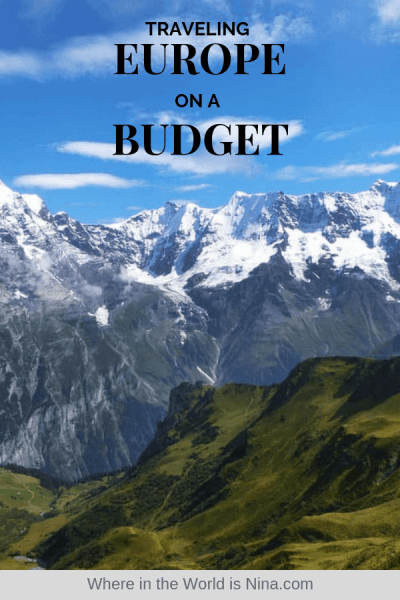
TAKE THE SHORTCUT
Want to know how to live abroad without being rich.
Get my shortcut! It's THE ONLY guide you'll need on how to sustain a life abroad—NO BS!

Nina Ragusa is an adventurer, messy bun master, breakfast fan, and full-time travel blogger. She's been abroad since 2011 and blogging on Where in the World is Nina? for nearly as long. Nina helps people like you move around the world while making money. She loves talking about how to work abroad and online to travel longer! Read more about Nina
Leave a Reply Cancel reply
Your email address will not be published. Required fields are marked *

- January 19, 2022
Budget for a trip to Europe: How much do i need?

Table of Contents
That Europe is one of the most sought after destinations for tourism travel everyone already knows, we even have a list of 5 most visited countries in Europe and their incredible sights that certainly corroborates this conclusion! However, planning this trip can be a difficult task, since there are so many things to think, research and organize that can leave you lost, even more with the high costs that are a big problem for your plans, right? That’s exactly why we are here! We can help you with the basics or, if you prefer, you can start by taking a look at how to plan a trip to Europe during the pandemic and then come back here to create your budget for a trip .
So, have you gone and come back? Or did you prefer to stick around here? Well, roll your mouse over and find out all you need to know about how to make a cheap trip to Europe !
ON THE POINT: Writing down expenses
To plan a trip you should go through a basic itinerary of where you want to go, how many days you intend to stay, which places to visit and make reservations . This will all be part of your budget. As we are here to help you we recommend that you take into account two very important things: the external conditions and the standard expenses .
External conditions
When we talk about external conditions, we talk about a tip that can change everything! This is because each one of them greatly influences your pocket when it comes to buying and booking. They are:
- The country : some countries are cheaper than others and the difference can be quite significant, as you can check in Little Money: 3 countries to visit in Europe with little money ,
- The period : times with less tourist movement is called low season, and this term, like its name, is synonymous with low prices, ranging from tickets to accommodation and attractions.
- The European currency quote : the value of each currency is constantly changing and it is important to be aware of its current value to catch its best times.
Standard spending
The standard expenses are the essential costs of the trip – or at least the basics of a complete and still economical trip – that you should write down considering the above conditions and the time you intend to stay abroad:
- Return air tickets;
- Travel insurance;
- Accommodation;
- Tourist attractions.
Now that your expenses are organised, open your browser, take out your pencil, paper and calculator and get to work!
WHAT TO DO TO SAVE MONEY?

Before starting the calculations, it is best to follow a few steps thinking about the external conditions of your trip, so you will have an overview of the expenses, besides finding the cheapest prices for when you calculate the rest of your budget for a trip.
Step one: plan everything in advance!
- When it comes to planning, even more so when you want low prices, you have to be willing to be flexible with dates and times , plus the earlier you book the better it is!
- So the first step for your planning and subsequently your budget is to choose dates well ahead, such as booking tickets 2 to 6 months in advance .
Step two: look for a cheap city!
- The cities located in Eastern Europe are a bargain! With a list that includes Budapest , Krakow , Istanbul , Prague and Sofia and prices of up to 40 euros per day .
- Others between Greece, Italy, Spain and Portugal have a cheap average spend, between 50 and 60 euros per day .
- And there are still some very popular tourist destinations such as Berlin , in Germany, London , in England, Paris, in France, and Rome , in Italy, as well as Amsterdam , Barcelona , Brussels and Lisbon , with average prices ranging from 60 to 70 euros per day .
Step three : choose the best time!
- The period of your trip matters a lot, after all you can catch the low season at the right times, besides, of course, less suffocating with queues and crowds.
- In most places it occurs in the winter period as seen in some countries mentioned in 5 incredible places to visit in the European winter , starting in late autumn . From November to March are the months with the lowest prices .
- Spring is also a good time. In general, the landscapes in the season of dry leaves and flowers in bloom are beautiful and unite natural beauty with good prices.
Step four: keep an eye on the European currency!
- The value of the European currency changes constantly and even small amounts make a big difference when it comes to paying.
- Many hostels and locations only accept European currency.
- Therefore, you have 2 options: one is to convert it when calculating the expenses, always keeping in mind a margin of error; and the second and more practical option is to exchange the currency of your country for the Euro, so you reduce the difficulties of your trip.
- As the currency can overvalue or depreciate depending on the weather, it is good to exchange in advance.
- Also bear in mind that although the Euro is the official European currency, some regions make use of other currencies such as England with the Pound Sterling and the Swedish Krona and Czech Koruna , respectively of Sweden and the Czech Republic.
Step five: search for reliable sources and websites!
- Once you find it, you can search and book (in advance) your tickets and accommodation.
Lean more at How Much Does it Cost to go to Europe?
PRE-TRIP EXPENSES
After following the recommended steps, start to really calculate each of the standard expenses, starting with those that must be done in advance, because then it is less of a worry and it is enough to save for when the day of the trip comes.
As the item that should be purchased the furthest in advance, tickets should be your priority, and remember:
- As the goal is cheap tickets, we will follow the previous tips aiming at the low season period;
Flights booked in December with a date in March of the following year, that is 3 months, 4 days of stay in the city, being the time that interchanges the outward and return trip, and for 1 adult in economy travel, stay around
- Flight with (1) connection NY – Lisbon: from 181,22 euros;
- Direct flight NY – London: from €257.73;
- Direct flight NY – Paris: from 250.83 euros
- Direct flight NY – Rome: from 316.04 euros
* These cities were just some examples, the values may change depending on the place of embarkation and disembarkation.
Ps: don’t forget to look for flexible airlines! So, if necessary you can change the date of your trip without problems or having to pay extra for it.
Travel insurance
I’ m sure you’re already tired of hearing about travel insurance when it comes to Europe, right? But that just goes to show how essential it is. And if you’re lost about it, we recommend you check out how to travel safely to Europe during the pandemic in 2023 to learn how important it is. But to put you in context, this obligation is a guarantee that, in case you have an accident or something similar happens, you will be able to pay for the medical-hospital expenses.
So what do you need to know about them for your budget for a trip?
- Which countries require travel insurance . Not all of them, but many countries do, including the member countries of the Schengen Treaty (if you haven’t seen the first article mentioned, take the opportunity to check it out now, there is a list of all of them);
- What insurance covers . Of the main services offered from travel insurance, medical-hospital and pharmaceutical costs are top of the list, however insurance still covers other issues such as:
- Flight cancellation due to medical emergency or otherwise;
- Tracking and compensation in case of lost luggage;
- Compensation for disability or accidental death, as well as funeral assistance;
- Legal costs and bail bonds;
- The best plan for you . Depending on the length of your trip or what collateral you find most essential, you can choose an insurance plan that covers what you want, for the most affordable price. You can do this using simulators.
- The price of insurance is from 2,35 euros per day;
- From 13,80 euros per day without luggage insurance;
- And a more complete plan around 20 euros per day.
Ah, keep an eye on the European Travel Visa! Soon the Schengen Visa Waiver will come into effect, which will have a fee for the service, but its cost-benefit is also great, as it will be valid for 3 years. You can see more in United States and Europe: will you need a visa in 2023 ?
Accommodation
As well as the time of year, the country and the location of the accommodation you choose will also influence the price of the accommodation you choose, whether it is a simpler or more elegant hostel, budget hotels or flats for rent, always keeping the focus on the low price.
Best hostel options
- Lisbon (daily rate – 1 person): from 12,49 to 78,47 euros;
- London (daily rate – 1 person): from 12.24 to 70.39 euros;
- Paris (daily rate – 1 person): from 21,81 to 39,08 euros;
- Rome (daily rate – 1 person): from 12.56 to 53.52 euros.
Best options for flats
- Lisbon (daily rate – 1 person): around 53.83 to 152.86 euros;
- London (daily rate – 1 person): from around 47.87 to 166.67;
- Paris (daily rate – 1 person): from 45.36 to 137.64 euros;
- Rome (daily rate 1 person): from about 55,40 to 180,80 euros;
Best hotel options
- Lisbon (daily rate – 1 person): from 12 euros;
- London (daily rate – 1 person): from 18,05 euros;
- Paris (daily rate – 1 person): from 24.48 euros;
- Rome (daily rate – 1 person): from 33,27 euros.
Expenses during the trip
Now that you have seen the expenses before the trip, you need to know how much you will spend during the trip, which on average is around 50 euros per day for one person. Let’s break this down?
Sightseeing and tourist attractions
When talking about saving money, you have to be aware that it requires a lot of searching. Attractions are no different. They can vary a lot, from attractions that cost nothing or have very low prices , as is the case of Serra da Estrela, in the Portuguese winter period, or can be quite high, depending on its fame and how much is demanded.
However, on average the cat cost with attractions is 20 euros per day for a person, enough to visit the main sights. Even because, with the incredible landscapes
that there are, walking a little bit through the streets enjoying the view, is one of the best experiences and doesn’t cost anything! Of course you don’t have to miss out on an attraction you like because of the price, just make sure you control how many you go to so you don’t lose your hand on the budget and a lot of money in your pocket.
Transport when travelling is essential, especially if you don’t want to get lost in unknown lands. And it is even possible to go from city to city only with train rides , so it is a very interesting expense, don’t you agree? But you have to think well about the cost-benefit before spending. So, decide if you want to stay in one city only or travel between several.
- If you choose to stay in only one city, bus or train rides are very cheap, ranging from 1 to 3 euros . You can also buy 24 to 72 hour passes.
- From Lisbon to Madrid: 16 euros;
- From Madrid to Rome: 26 euros;
- From Rome to Paris: 23 euros;
- From Paris to London: 38 euros.
If you are interested, read more about how to travel by train in Europe: the best itineraries!
The cost of food to be cheap just depends on you! There are many famous restaurants in Europe, but the price can be discouraging. However, you can still choose a good option, get to know the cuisine and culture you want without having to spend too much!
- The first tip is: book hotels or hostels with breakfast included ! Even if it doesn’t, opt for the cheapest, so you can spend between 3 and 5 euros .
- The same tip goes for lunch; if possible, eat at the hotel . Or just leave lunch as your “out of town” meal. A simple meal will cost you around 12,56 euros .
- For dinner, you can eat at the hotel, which is much cheaper, or you can try the fast food at those times, which are always cheaper, and can be as low as 5 euros !
- Another cheap option is the “ Tourist Menu “, going for 9 euros .
- And then there are the markets, with excellent prices and a great alternative for buying meals.
- On average, opting for good quality and still economical, your meal will be around 20 to 25 euros per day.
SUMING IT ALL UP: How much does a cheap trip to Europe cost altogether?
After writing down all the expenses before and after the trip, choosing the best periods and following the tips for an economical trip, and taking the average of tickets and hotel accommodation for 4 days, the expense that a person would have to visit Europe for four days is 500 euros . Very economical, isn’t it? With this you can even spend a little more, since it is impossible to do a tour like this and not buy anything or take souvenirs home – which by the way are an expense of about 30 euros a day! And now, do you know everything to plan a budget for a trip and start your journey?
If not, we have a complete budget for a trip: Holidays in Portugal: how much money do I need?
If so, how about doing some more extensive planning and a 10-day trip to Europe?
Want to keep up with our blog?
Get our most valuable tips right inside your inbox, once per month!
- budget for a trip , Europe , travel cheap , travel cheaply , Travel in 2022
Related Posts

Madeira Expedition: Sunrise at Pico Ruivo and Camping in Encumeada
I woke up early, around 6:30 am, my goal there was to capture the best

Madeira Expedition: Lunch at Pico do Areeiro and camp on Pico Ruivo
I woke up there in Pico Alto, it was cold, it was 8 am, I

Madeira Camping Expedition: Funchal to Pico Alto
This is the article number 1 of this series I left work on a Friday

Exploring Lauterbrunnen: A Day in the Swiss Paradise
This was a special Saturday. It was a cloudy morning, rainy weather in Switzerland, and

Swiss Hiking Adventure: Lucerne to Mount Pilatus
That day I had arranged with my cousin to go to a lake near Estavayer-le-lac.
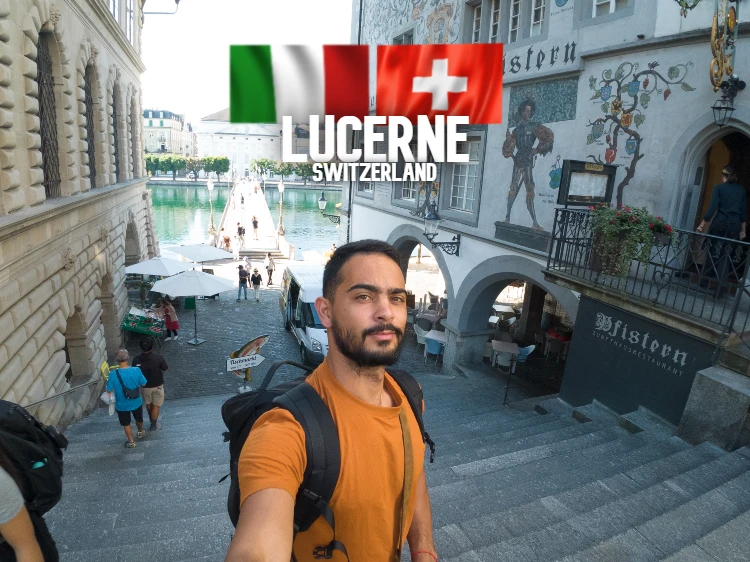
Venice to Lucerne: Exploring Swiss Beauty and Italian Flair
We got up early in Venice to catch the flixbus to Milan. We went from
LATEST ARTICLES
© all rights reserved. 2021.

You are here
How much money do i need to travel europe.
For some people, setting a budget is just one more exciting thing to do when planning their European holiday. Mainly because it gives them an opportunity to dream about the castles and banquets they’ll be spending their euros on.
Then there are others who dread the whole ordeal – probably the same people who haven’t visited the dentist in a year.
Knowing things is hard. And who’s got time for calculations?*
Allow me to introduce you to the amazing Holiday Budget robot planner 3000! (Well, it’s not really called that). Planning a budget is hard, it’s not like you just know the cost of a bratwurst and a 1L jug of beer in Munich off the top of your head is it? That’s impressive if you do, but our Holiday Budget Planner actually does know that kind of stuff. Try it out below!
*Ain’t nobody got time for that.
Try our fancy new budget calculator (above) now!
How to plan a trip to Europe with a budget
First up, you need to figure out what you need to budget for.
To work out your rough costs, you’ll need to know:
- Where you’re going – for flight costs.
- How long you’ll be away – for nightly accommodation costs.
- How you want to get around – for transport costs.
It also helps to budget with those you’ll be travelling with, so you can work out what costs are solely yours and what you can share. It’s also a good way to set out what type of holiday you want to have. If you’re a budget traveller who wants to hostel-hop your way through Europe, your budget will be very different to the traveller that wants 5-star, all-inclusive, buffet breakfast, city-view, luxury hotels.
I_DemiQuinn_Mykonos-770x578_90kb.jpg
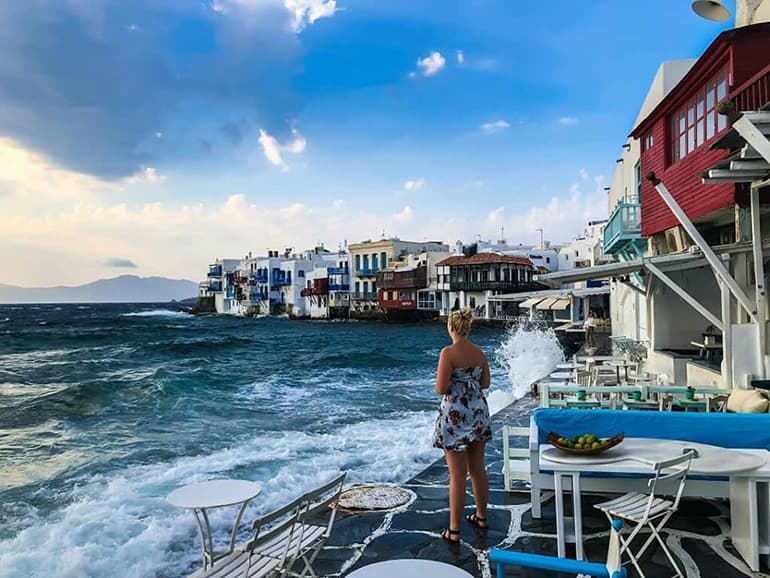
How much does a Europe trip cost?
Let’s take a look at a few examples of different kinds of holidays you could have in Europe, and address some of those big-ticket costs that need to be budgeted for.
The lovey-dovey couple
This romantic pair is travelling through London for 2 weeks during its beautiful, warm summer. Between them, they’ll need just under $10,000 AUD for flights, accommodation and daily transport.
The solo backpacker
This lucky vagabond is travelling Solo (not even Chewbacca is invited). They’re hitting up France , Spain , Italy and Greece for a whole month of adventure. Depending on how frugal they decide to be, they’ll need about $4,000AUD for flights, accommodation and public transport. Don’t forget to budget your meals and adventures though!
The fun family
This wonderful family of 2 adults and 2 kids (under age 11) is going on a cruise to visit Barcelona during the school holidays – lucky kids… The parents will need to save around $13,000AUD worth of pennies to afford the flights, cruise and accommodation for this trip.
Note that these are your core expenses. Other costs from travel insurance, daily expenses like food and drinks, sightseeing, activities and all those shopping trips aren’t taken into account.
Costs of travelling Europe per day
We’ve looked at the big stuff, now let’s get into the intricate expenses.
First of all, a good holiday budget will keep in mind where you can tighten up on expenses – and where you can splurge! Having this type of flexible holiday budget is essential because you never know when an opportunity might come up that you don’t want to miss out on.
For a middle-of-the-road holiday (neither budget nor luxury living) we recommend from:
AU$100 to AU$150 per person, per day.
This will cover sightseeing, food and drinks, shopping and other nitty-gritties. But of course, there are heaps of ways to cut down on this cost – or add to it – to create your preferred budget.
Travel Money Oz Infographics_14_Blog.jpg
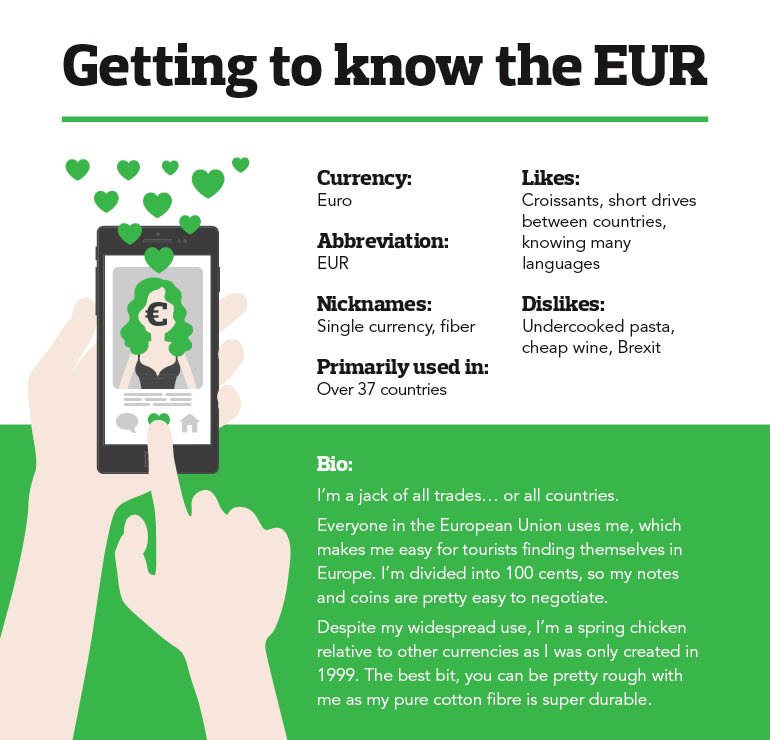
Consider your bookings
It helps knowing exactly what’s included in what you’ve booked. Does your hotel include breakfast in the per night cost? If it does, then that’s one less thing you need to budget for. Or does your accommodation have kitchen facilities? That gives you a cheap’n’easy, DIY meal option.
You can also look for other ways to save. Can you purchase a public transport pass, rather than buying single tickets (as usually, this will offer some savings)? Or can you purchase a sightseeing pass that includes entry costs and public transport? If you can, why not go for it and save.
Final words on budgeting
Well, that was probably a lot to take in, so let’s finish up with some easy-peasy dot points.
- It can help to have a pre-agreed cost for things (pre-agreed with yourself, or your travel companions if you’re splitting costs). This avoids arguments, stress and overspending.
- Put time and research into your ‘per day’ budget and include the things you really want to do. Once you know the costs, you have a goal to save for.
- It pays to book things in advance, but sometimes you might be able to find a cheaper price when you are in the country
- Don’t forget to factor in your pre-travel costs (e.g. travel insurance, immunisations and visas).
- Budget for cheap eats some days so you can gorge other days. From enjoying a glass of champagne at the top of the Eiffel Tower to devouring food at Germany’s food stalls.
- Don’t forget those sneaky costs (e.g. transfers, tours and tipping).
If you still need help with setting a holiday budget, our travel money experts have a handy budgeting tool available in any of our 165 stores across Australia and New Zealand.
*Flight costs based on search from www.flightcentre.com.au and are indicative costs only, based on prices available on 10 August 2018. ^Accommodation costs are based on an average per night price for budget , moderate or luxury hotels, as indicated in the table. ~Cruise cost is based on search from www.ncl.com for a 7 night Western Mediterranean cruise onboard Norwegian Epic, departing Barcelona in May 2019, and is an indicative cost only, based on prices available on 10 August 2018. **Rail Pass cost is based on search from http://www.eurail.com and is an indicative cost only. COST COMPARISON TABLE: All costs are based on estimated approximate costs from major metropolitan cities in each country. “From” costs indicate costs that start from the indicated price and may be higher than shown. Average prices indicate a typical estimated cost you would pay for the indicated item. Prices may vary from time to time, and in different cities and towns within each country. Cities included are: London, United Kingdom; Rome, Italy; Paris, France; Berlin, Germany; Barcelona, Spain; Athens, Greece; Budapest, Hungary; Prague, Czech Republic; Amsterdam, The Netherlands. This blog is provided for information only and does not take into consideration your objectives, financial situation or needs. You should consider whether the information and suggestions contained in any blog entry are appropriate for you, having regard to your own objectives, financial situation and needs. While we take reasonable care in providing the blog, we give no warranties or representations that it is complete or accurate, or is appropriate for you. We are not liable for any loss caused, whether due to negligence or otherwise, arising from use of, or reliance on, the information and/or suggestions contained in this blog.
AUD News: Global growth concerns continue to put a cap on Aussie dollars performance
Travel hacks: halloween hotspots around the world, more like this.

I'm Just A Girl
Affordable Luxury Travel
The Ultimate 2 Month Europe Interrail Itinerary & Route
This post about the ultimate 2 month Europe Interrail itinerary contains affiliate links and mentions of collaborative work with Interrail .

Are you planning to spend 2 months in Europe? Not sure where to start when it comes to creating the perfect interrail itinerary in Europe? This post is for you!
I’ve been lucky enough to experience numerous interrailing trips throughout Europe now, with our most recent trip taking us on a 2 month Europe interrailing adventure through countries such as Belgium, Germany, Italy, Switzerland, Denmark, Sweden and more!
My ultimate 2-month Europe interrail itinerary includes everything you need to know about planning the perfect trip to Europe! From spending time in popular cities such as Amsterdam , Berlin , Milan and Rome , to adventures in lesser frequented cities such as Cologne, Zürich and Ghent , I’ve compiled everything I know about interrailing in Europe into one huge itinerary and guide!
If you’re planning to spend two months in Europe, check out my ultimate Europe interrail itinerary, route and guide below!
✈️ COME TRAVEL WITH ME IN 2023/2024 ✈️
If you’ve been wanting to experience a bucket list trip, now is your chance to do it as I’m looking to host my very own group travel trips! 🤯
If you’re interested in joining, or just learning more about these trips, PLEASE fill this survey out to help me choose the destination, the dates, the activities and the cost! It only takes 2 minutes and it shows me where you might want to travel to! 👀
EUROPE TRAVEL ESSENTIALS Interrail Pass / Eurail Pass Flights: Kiwi.com Accommodation: Booking.com / Hostelworld Transport: Flixbus / Trainline Activities/tours: Get Your Guide / Viator Travel insurance: SafetyWing Reviews: TripAdvisor My backpacking essentials: Amazon
What is the Interrail Pass?
The Interrail Pass is an all-encompassing train ticket that allows you to travel on almost all available trains across Europe. With the Interrail Pass, you can choose from over 30,000 destinations in 33 European countries, with a choice of numerous different passes to suit your budget, trip length and itinerary.
How much does the Interrail Pass cost?
There are 10 different Interrail/Eurail Passes to choose from, including:
- 4 days within 1 month – £171 | £227
- 5 days within 1 month – £196 | £260
- 7 days within 1 month – £232 | £310
- 10 days within 2 months – £278 | £370
- 15 days within 2 months – £342 | £456
- 15 days (consecutive) – £307 | £409
- 22 days (consecutive) – £359 | £479
- 1 month (consecutive) – £465 | £620
- 2 months (consecutive) – £506 | £676
- 3 months (consecutive) – £626 | £833
Please note that the above prices are based on second-class Interrail Global Pass tickets. A youth ticket is for people aged 12-27, and an adult ticket is for people aged 28-60. The first price is for youths and the second price is for adult tickets.
Read more: The Ultimate 1 Month Europe Interrail Itinerary & Route
Read more: Interrail Budget For 6 Weeks – How Much Does Interrailing Cost?
Do I need a Eurail or an Interrail Pass?
A Eurail Pass is for non-European citizens and residents (such as the USA, Asia and Australia), whereas the Interrail Pass is for citizens and residents of Europe (including the UK – even after Brexit).
Both passes are exactly the same (and the same price) but you need a different pass depending on where you’re from in the world.
How to use an Interrail Pass

The best (and easiest) way to use your Interrail/Eurail Pass is by downloading the Rail Planner app. You can then add your Pass to the app using the details that would have been emailed to you when you purchased it. Check out the step-by-step guide below on how to use the Interrail Pass.
- Simply add your last name and Pass number to the app using the details on your confirmation email.
- Connect a new trip to the “My Pass” section of the Rail Planner App. You can name the trip anything you like; we named our most recent 2-month Europe interrail itinerary “Winterrailing” as we were travelling across Europe in the winter months!
- Before your trip starts, you’ll need to fill in relevant information such as your name and passport details.
- You can then choose a start date for your trip. If your trip is due to commence in the future, you can skip this part until you’re ready to travel, or you can add your intended start date when you decide on it.
- Once your trip begins, you can use the “planner” section of the Rail Planner app and add your journeys. You can do this one at a time if you’re not sure of the exact route you’ll be taking or you can choose the trains you want to take in advance and press “save journey”.
Read more: Interrail Planning Tips For Beginners – How To Plan An Interrail Trip
What are seat reservations?

While most of the trains in Europe are included in the Interrail Pass, there are some trains (such as overnight trains and high-speed trains) that require a seat reservation as they are often very busy, so a seat reservation guarantees that you can travel on a particular train. Seat reservations aren’t included in the Interrail Pass, so you will have to purchase these separately.
The cost of seat reservations depends on numerous factors, including the type of train, the type of seat (1st or 2nd class), the railway company and the country you’re travelling in/to. Some companies also charge a booking fee of €2 per seat reservation.
Countries such as Austria, Belgium, Germany, the Netherlands and Switzerland usually have the most train journeys without seat reservations, whereas countries such as France, Italy, Spain and Sweden usually require seat reservations on many of the journeys.
Read more: Is The Interrail Pass Worth It? An Honest Interrail Review
2 months in Europe itinerary map – interrail route

The map above shows the driving times for a 2-month Europe itinerary, so it’s not entirely accurate!
This route could also be adapted for a 1-month or a 3-month interrailing itinerary if you decide to purchase a shorter or longer length Interrail Pass.
You could also do the itinerary in reverse if you wanted to fly into Oslo and conclude the itinerary in Amsterdam (or London , by getting the Eurostar back to the UK from Amsterdam).
Read more: How Much Does Backpacking Europe Cost?
2 month Europe interrail itinerary summary
- Amsterdam (3 days)
- Bruges (2 days)
Ghent (3 days – with a day trip to Antwerp)
Brussels (2 days), cologne (3 days – with a day trip to düsseldorf).
- Zürich (3 days – with a day trip to Bern )
- Milan (3 days – with a day trip to Lake Como )
- Rome (4 days)
Venice (3 days – with a day trip to Burano/Murano)
- Munich (3 days)
Vienna (4 days – with a day trip to Bratislava)
- Prague (3 days)
Berlin (3 days)
Copenhagen (3 days).
- Stockholm (3 days)
- Oslo (3 days)
Many people also like to incorporate cities such as Barcelona , Paris , Madrid , Valencia , Kraków , Warsaw and more into their interrail routes, but for the purpose of this 2-month itinerary, I’ve stuck to the cities that we visited on our most recent interrail journeys.
The Ultimate 2 Month Europe Interrail Itinerary

Below, you’ll find my ultimate 2 month Europe interrail itinerary which includes the perfect route, which countries/cities to visit, how long you should spend in each place, the best day trips from each city, how to get to each place, how long it takes to travel by train to each city in Europe, the best things to do in each place and much more!
Please note that the savings below are based on my personal experience of using the Interrail Pass, prices are subject to change throughout the year.
Read more: Interrail Packing List Essentials – What To Pack For An Interrail Trip
Amsterdam (Days 1 – 4)

This 2 month Europe interrail itinerary begins in the beautiful city of Amsterdam . Known for its eclectic nightlife, intriguing culture, plentiful museums and an abundance of canals and bridges, Amsterdam is the perfect place to begin your 2 months in Europe.
Three or four days is the perfect amount of time to spend in Amsterdam. You could probably see most of the sights and attractions in just two days, but as Amsterdam is such an incredibly popular destination, many of the best sights and landmarks get super busy, so give yourself enough time to explore the wonderful city by spending a good few days there.
If you have time, you can even take a couple of day trips out of the city as well!
How to get to Amsterdam : You can fly into Amsterdam from most major airports in Europe (and beyond!). Alternatively, you can take the Eurostar from London (if you’re travelling from the UK) which is included in the price of your Interrail Pass, but you will need to purchase a seat reservation to board the train (prices start at €34). The Eurostar from London to Amsterdam takes less than four hours.
How much does the train cost without the Interrail Global Pass (15 days within 2 months): If you decide to get the train (Eurostar) to Amsterdam from London, prices start from around £51, but they can often cost upwards of £200 if you buy them last minute.
Best things to do in Amsterdam on a 2 month Europe interrail itinerary
- Visit the Rijksmuseum
- Stroll through one of Amsterdam’s most famous neighbourhoods, the Red Light District
- Check out the Heineken Experience
- Rent a bike and cycle around Amsterdam’s many canals and bridges
- Pay a visit to the Van Gogh Museum
- Visit the Anne Frank House & Museum to learn about the tragedies of the famed diarist
- Take a day trip to Keukenhof to see the beautiful gardens
Where to stay in Amsterdam
When we first stayed at City Hotel Amsterdam , it was one of the cheapest places to stay in the city, even though it’s less than a mile from the main attractions in the centre. While it’s a little pricier now, I would still recommend staying here during your 2 month Europe interrail itinerary as it has super comfortable rooms, great staff and it’s located so close to all the best sights in Amsterdam!
Read more: 3 Days In Amsterdam Itinerary – How To Spend 3 Days In Amsterdam
Bruges (Days 4 – 6) – 2 month Europe interrail itinerary

Bruges is a place that I’d had on my travel bucket list for many years, so I was super excited when we decide to visit on our most recent interrail trip.
It’s a relatively small city that can easily be explored in just one day, but there are so many beautiful sights and awesome places to eat, that I’d recommend spending two days there to ensure that you can see everything.
How to get from Amsterdam to Bruges : The train from Amsterdam Centraal to Bruges takes approximately four hours, with at least one or two changes (usually in Antwerp, Brussels or Ghent). Seat reservations are required for most journeys (prices start at €24).
How much does the train cost without the Interrail Global Pass (15 days within 2 months): This train can cost as much as €64.80 (2nd class) and €102.40 (1st class) if booked 2 days in advance or as little as €30 (2nd class) and €46 (1st class) if booked 2 months in advance. Therefore, it’s probably worth using your Interrail Pass to travel from Amsterdam to Bruges.
Best things to do in Bruges on a 2 month Europe interrail itinerary
- Visit the Frietmuseum
- Admire the stunning architecture in Market Square (Grote Markt)
- Indulge in an abundance of chocolate at the Choco-Story Chocolate Museum
- Visit the fascinating Basilica of the Holy Blood
- Take a romantic canal cruise to see the city from the water
- Eat at the House of Waffles
Where to stay in Bruges
Snuffel Youth Hostel is a great budget choice in the heart of Bruges that offers both dormitories and private rooms. Alternatively, I’d recommend Dukes’ Palace Brugge if you’re looking for something a little more luxurious, while still being located in the heart of the city.
Read more: How To See Bruges In One Day – The Perfect Day Trip Itinerary

Ghent is another Belgian destination I really wanted to visit and while I think I preferred Bruges to Ghent, I’m still so glad that we visited it because it’s so gorgeous.
There’s plenty of stunning architecture, wonderful market squares and so many great places to indulge in waffles, stews, fries, chocolate and more!
Two days give you enough time to see everything in Ghent, leaving you with the third day to take a day trip to Antwerp.
Antwerp is another great destination in Belgium that can easily be visited from Ghent and it’s less than an hour on the train. There isn’t quite as much to do in Antwerp as in the other Belgian cities featured in this itinerary, but I still think it’s worth the day trip.
Known for being the hub of the world’s diamond trade, its spectacular central train station and the beautiful Grote Markt square, Antwerp shouldn’t be missed while travelling through Europe.
How to get from Bruges to Ghent : The direct train from Bruges to Gent-Sint-Pieters (Ghent) takes approximately 25 minutes. No seat reservations are required.
How much does the train cost without the Interrail Global Pass (15 days within 2 months): This train costs €9.50 (2nd class) and €13.40 (1st class) no matter whether you book two hours before or two months before. Therefore, it’s probably not worth using your Interrail Pass to travel from Bruges to Ghent as the train tickets are so cheap.
Best things to do in Ghent on a 2 month Europe interrailing trip
- Pay a visit to Gravensteen Castle
- Climb to the top of the Belfry for stunning views of the city
- Take a guided tour of the city on a medieval boat trip
- Stroll around Korenmarkt and Vrijdagmarkt and enjoy the architecture
- Check out Saint Bavo’s Cathedral (Sint-Baafs Cathedral)
Where to stay in Ghent
If you’re looking for budget accommodation in Ghent, look no further than KaBa Hostel . Offering private rooms, as well as dormitory options, KaBa Hostel is less than half a mile from the city centre of Ghent. If you prefer something a bit more sophisticated, I’d recommend checking out B&B Achilles .
Read more: One Day In Ghent Itinerary – Is Ghent Worth Visiting?

Brussels was one of my favourite cities that we visited on our 2-week Europe interrailing trip in August 2022 and it’s definitely somewhere that I recommend visiting. While it might not be quite as charming as the likes of Bruges or Ghent, Brussels is home to some truly beautiful feats of architecture, plenty of chocolate-making workshops and intriguing museums.
You can see most of what Brussels has to offer in just two full days and as it’s located so close to Ghent, Bruges and Antwerp, it’s super easy to get to and from while you’re travelling across Belgium and beyond.
How to get from Ghent to Brussels : The direct train from Gent-Sint-Pieters (Ghent) to Bruxelles-Midi (Brussels) takes approximately 30 minutes. No seat reservations are required.
How much does the train cost without the Interrail Global Pass (15 days within 2 months): This train costs €12.20 (2nd class) and €18.60 (1st class) no matter whether you book two hours before or two months before. Therefore, it’s probably not worth using your Interrail Pass to travel from Ghent to Brussels as the train tickets are so cheap.
Best things to do in Brussels on a 2 month Europe interrailing trip
- Take a Belgian Chocolate Workshop
- Admire the magnificent Town Hall
- Visit the Atomium
- Wander through Parc du Cinquantenaire
- Spend a few hours at the Autoworld Museum
- Go window shopping at Galeries Royales Saint Hubert
Where to stay in Brussels
While it might not be the most glamourous place to stay on a 2 month Europe interrailing trip, our stay at Bedford Hotel & Congress Centre was so good. We had a huge, comfy bed, a very sizeable room and a bathroom complete with a giant bathtub (a very warm welcome after travelling across Europe by train!).
Read more: The Best 2 Days In Brussels Itinerary

The next stop on this epic two-month Europe interrail itinerary takes you to Germany, specifically to the 2000-year-old city of Cologne.
Cologne is a great place to base yourself for a few days as its convenient location in West Germany means that it’s not too far from other popular cities such as Düsseldorf, Duisburg, Essen and Dortmund.
Home to the breathtaking Cologne Cathedral, the incredibly cool and quirky Hohenzollern Bridge (known for the thousands of “love locks” that decorate the bridge), as well as plenty of museums and gardens, Cologne is a great city to add to your Europe interrailing itinerary.
I’d also recommend taking a day trip to Düsseldorf from Cologne as it’s less than half an hour on the train and while there’s plenty to see and do in Cologne, you probably don’t need three full days.
There isn’t a tonne of things to do in Düsseldorf so you can easily see everything within a couple of hours on a day trip from Cologne.
How to get from Brussels to Cologne : The direct train from Bruxelles-Midi (Brussels) to Cologne takes approximately 1 hour and 50 minutes. Please note that some trains require seat reservations of €29, but there are many direct routes available that don’t require reservations.
How much does the train cost without the Interrail Global Pass (15 days within 2 months): This train costs €72 (2nd class) and €82 (1st class) if booked 2 days in advance and as little as €31.90 (2nd class) and €47.90 (1st class) if booked 2 months in advance. Therefore, it might be worth using your Interrail Pass to travel from Brussels to Cologne.
Best things to do in Cologne on a 2 month Europe interrail itinerary
- Check out the beautiful Cologne Cathedral
- Go on a Brewery Tour and taste the local beer, Kölsch
- Spend a few hours at the Museum Ludwig
- Take a cruise down the Rhine River
- Go to the top of the Cologne Triangle Observation Deck
Where to stay in Cologne
Stadthotel am Römerturm is an excellent choice of accommodation in Cologne as it offers huge beds, and a daily breakfast buffet and it’s situated less than a 10-minute walk from the main train station (perfect for this 2-month Europe interrailing itinerary!).
Zürich (3 days – with a day trip to Bern)

After spending a few days in Cologne, take the train to the fourth European country on this itinerary; Switzerland.
Switzerland is a place that I wanted to visit for so long and after visiting numerous cities and ski resorts in the beautiful, mountainous country, I can safely say that it’s one of my favourite countries in the world.
Zürich is a great place to add to your 2 month Europe trip as it’s such a gorgeous city with plenty of things to see and do. I’d highly recommend visiting the Lindt Home of Chocolate Museum from Zürich as it’s literally a chocolate lover’s dream and the views of the Old Town from Lindenhof Hill cannot be missed!
It’s also possible to take a day trip to Switzerland’s capital city, Bern , from Zürich as it can take as little as an hour on the train (included in your Interrail/Eurail Pass!).
Bern is a very small capital city and can be explored in just one day from Zürich. Be sure to check out the Parliament Building (Bundeshaus) and Bundesplatz, the Zytglogge (Clock Tower) and the infamous bear pit next to the Aare River/Bridge to see one of the city’s oldest traditions!
Read more: 10 Best Things To Do In Bern In One Day – Perfect Bern Day Trip
How to get from Cologne to Zürich : The train from Cologne to Zürich Main Station takes between five and six hours, depending on the time of day. Most journeys have 1-3 changes, usually in Basel, Mannheim and Stuttgart. No seat reservations are required.
How much does the train cost without the Interrail Global Pass (15 days within 2 months): This train costs as much as €168.50 (2nd class) and €260.70 (1st class) if booked 2 days in advance or as little as €39.90 (2nd class) and €55.90 (1st class) if booked 2 months in advance. Therefore, it’s probably worth using your Interrail Pass for the journey from Cologne to Zürich.
Best things to do in Zürich on a 2 month Europe interrailing itinerary
- Head to the top of Lindenhof Hill for impressive views of the city
- Indulge in as much chocolate as possible at the Lindt Home of Chocolate Museum
- Wander through the Altstadt (Old Town)
- Go on a cruise on Lake Zürich
- See the beautiful Grossmunster Church , Fraumunster Church and St Peter’s Church
Where to stay in Zürich
When we first arrived at Gasthaus 210 in Zürich, I was very apprehensive as the accommodation is located directly above a 24-hour convenience store. However, our room was actually very lovely and the shower in the bathroom was perhaps one of the best we experienced during our entire 2 months in Europe!
Milan (3 days – with a day trip to Lake Como)

While many people favour the likes of Rome and Venice over Milan , I’m a firm believer that the Italian city deserves a place on this 2-month Europe itinerary as it’s super easy to visit on an interrail trip.
Milan is home to the world-famous Duomo, Da Vinci’s Last Supper, Galleria Vittorio Emanuele II and its close proximity to the wonderful Lake Como region makes it a great addition to any European interrail itinerary.
Of course, as with many of Europe’s best and biggest cities, Milan can be extremely crowded and overwhelming, but I think it’s worth battling the crowds to see the city’s top sights as it’s such a fun and energetic place!
I’ve allocated three days in Milan so you can spend two days in the main city centre and one day on a trip to Lake Como . Many people would argue that you need to spend much longer in Lake Como, but you can easily see the Golden Triangle – Bellagio, Menaggio and Varenna – in just one day!
How to get from Zürich to Milan : The train from Zürich Main Station to Milano Centrale takes between three and five hours, depending on the time of day. There are some direct routes that only take 3 hours and 15 minutes. Seat reservations are required for most journeys (prices start at €13).
How much does the train cost without the Interrail Global Pass (15 days within 2 months): This train costs as much as €96.31 (2nd class) and €157.56 (1st class) if booked 2 days in advance or as little as €40 (2nd class) and €71 (1st class) if booked 2 months in advance. Therefore, it’s probably worth using your Interrail Pass for the journey from Zürich to Milan.
Best things to do in Milan on a 2 month Europe interrailing itinerary
- Admire the spectacular Duomo di Milano and check out the views from the rooftop terraces
- Go window shopping at Galleria Vittorio Emanuele II
- Head inside The Church of Santa Maria delle Grazie and see Da Vinci’s infamous Last Supper
- Stroll through Parco Sempione and check out Castello Sforzesco
- Take a day trip to Lake Como to see the Golden Triangle
- Enjoy the designer stores in the Quadrilatero d’Oro (Fashion District)
- Embark on a guided tour of the San Siro Stadium
Where to stay in Milan
We stayed in this lovely Airbnb in Milan for three nights as part of our interrail trip through Europe and I would definitely recommend checking out Airbnb for places to stay in Milan, especially if you prefer somewhere with a kitchen. Alternatively, Booking.com has thousands of hotels, hostels and apartments all over the city.
Read more: 2 Days In Milan – The Ultimate Weekend Itinerary
Rome (4 days) – 2 month Europe interrail itinerary

Rome is a city that’s on most people’s European bucket lists and rightly so, it’s an absolutely dreamy place! Home to the world-renowned Colosseum, the Trevi Fountain, the Pantheon and of course, Vatican City and the Sistine Chapel, you could easily spend weeks in Rome and still not scratch the surface of what it has to offer!
During this two-month itinerary in Europe, I’d recommend spending four days in Rome. This should give you enough time to see many of the top sights and attractions without having to rush around the city too much. We once spent just six hours in Rome and while we saw so much during that time, we were absolutely exhausted by the end of the day!
How to get from Milan to Rome : The direct train from Milano Centrale to Rome usually takes three hours and 40 minutes. Seat reservations are required for most journeys (prices start at €12).
How much does the train cost without the Interrail Global Pass (15 days within 2 months): This train costs as much as €96 (2nd class) and €124.90 (1st class) if booked 2 days in advance or as little as €29.90 (2nd class) and €39.90 (1st class) if booked 2 months in advance. Therefore, it’s probably worth using your Interrail Pass for the journey from Milan to Rome.
Best things to do in Rome on a 2 month Europe interrailing itinerary
- Admire the marvellous Pantheon
- Visit the infamous Vatican Museums and Sistine Chapel
- Make a wish at the Trevi Fountain
- Take a tour of the world-famous Colosseum
- See St. Peter’s Basilica
Where to stay in Rome
There are over 6,000 listings in Rome on Booking.com so you shouldn’t struggle to find somewhere to stay! As with every city, the closer you are to the main sights and attractions, the more expensive hotels and hostels will be.
Read more: 6 Hours In Rome – The Best Things To Do In Rome In One Day

Three days in Venice gives you plenty of time to explore the many bridges and canals, see the breathtaking St Mark’s Basilica and Doge’s Palace, ride a Gondola along the waterways and also take a day trip to nearby Burano and Murano.
Venice is yet another Italian city that gets incredibly crowded, especially during the busy summer months, and while some people would argue that it’s a bit too overwhelming, I personally think it’s worth adding to your two-month Eurail itinerary as it’s such a unique place.
How to get from Rome to Venice : The direct train from Rome to Venice takes between four and four and a half hours (there is sometimes a change in Bologna). Seat reservations are required for most journeys (prices start at €12).
How much does the train cost without the Interrail Global Pass (15 days within 2 months): This train costs as much as €101 (2nd class) and €126 (1st class) if booked 2 days in advance or as little as €27.90 (2nd class) and €72.90 (1st class) if booked 2 months in advance. Therefore, it’s probably worth using your Interrail Pass for the journey from Rome to Venice.
Best things to do in Venice on a 2 month Europe interrailing trip
- Explore Doge’s Palace and St Mark’s Basilica
- Take a Gondola Ride along the famous canals
- Go on a day trip to Burano and Murano
- See the Rialto Bridge and the Bridge of Sighs
- Head on a street food tour to sample local Italian cuisine
Where to stay in Venice
We stayed at Hotel Castello during our time in Venice which is an adorable hotel just minutes from the Piazza San Marco. The rooms and hotel itself aren’t overly fancy, but they do the job of hosting you on your interrailing trip and I’d definitely recommend booking a stay there.
Read more: 3 Days In Venice Itinerary – How To Spend 3 Days In Venice, Italy
Munich (3 days – with a day trip to Neuschwanstein Castle )

Bavaria’s capital city of Munich is my favourite city in Germany and I would happily return there time and again. It’s a great place to visit all year round, so regardless of whether you’re planning to explore Europe by train in the summer or winter months, Munich always has something to offer.
The English Garden and Hofbräukeller Biergarten cannot be missed in the summer, whereas the Neues Rathaus and the Altes Rathaus in Marienplatz can be enjoyed all year round.
If you have time during your three days in Munich, I’d recommend taking a day trip to Neuschwanstein Castle as it looks like something straight out of a fairytale!
How to get from Venice to Munich : The train from Venice to Munich takes approximately seven to eight hours, usually with a change in Verona. Seat reservations are recommended, but not always required, for some journeys (prices start at €12).
How much does the train cost without the Interrail Global Pass (15 days within 2 months): This train costs as much as €148.90 (2nd class) and €179.10 (1st class) if booked 2 days in advance or as little as €44.90 (2nd class) and €71.90 (1st class) if booked 2 months in advance. Therefore, it’s probably worth using your Interrail Pass for the journey from Venice to Munich.
Best things to do in Munich on a 2 month Europe interrailing itinerary
- See the Neues Rathaus and the Altes Rathaus in Marienplatz
- Climb to the top of the Rathausturm (New Town Hall Tower) for views of the Old Town
- Spend an afternoon in The English Garden
- Take a day trip to Neuschwanstein & Linderhof Castle
- Admire the glorious Frauenkirche (The Church of Our Lady Munich)
- Eat and drink in Hofbräukeller Biergarten
- Enjoy Bavarian beer at Hofbräuhaus München
Where to stay in Munich
We spent three nights at the 25hours Hotel The Royal Bavarian during our first interrailing trip in 2022 and it was one of the coolest and quirkiest places I’ve ever stayed! The rooms are so uniquely decorated, the breakfast and dinner menus are utterly fantastic and it’s situated just next to Munich Hauptbahnhof (Main Station) so it’s very conveniently located.
Read more: 25hours Hotel Munich – Best Place To Stay In Munich, Germany
Read more: 3 Days In Munich Itinerary – The Ultimate Weekend Guide

Austria’s capital city, Vienna , is a must-visit on your 2 month Europe trip itinerary as it’s another city that can be enjoyed at any time of the year.
The Hofburg Palace cannot be missed, especially at sunset, and the magnificent Belvedere Palace is well worth a visit, especially during the summer months when you can explore the stunning gardens as well.
The food in Vienna is also some of my favourite in Europe and while it’s not quite as cheap as the likes of Prague, Budapest and Cologne, for example, Vienna definitely needs to be on your Europe itinerary.
How to get from Munich to Vienna : The train from Munich to Vienna Centrale takes between four and four and a half hours; there is sometimes a change in Salzburg. No seat reservations are required.
How much does the train cost without the Interrail Global Pass (15 days within 2 months): This train costs as much as €100.70 (2nd class) and €185 (1st class) if booked 2 days in advance or as little as €19.90 (2nd class) and €33.90 (1st class) if booked 2 months in advance. Therefore, it’s probably worth using your Interrail Pass for the journey from Munich to Venice.
Best things to do in Vienna during 2 months in Europe
- Admire the breathtaking Hofburg Palace
- Marvel at the Belvedere Palace
- Check out the Vienna Rathaus (City Hall)
- Visit the Schönbrunn Palace and Gardens
- See the Kunsthistorisches Museum and the Naturhistorisches Museum (Natural History)
- Ride the Giant Ferris Wheel at Prater (amusement park)
Where to stay in Vienna
If you’re looking for somewhere super fun, quirky and incredibly conveniently located, look no further than the 25hours Hotel beim MuseumsQuartier in Vienna.
This was our second stay at a 25hours Hotel (after staying at Munich’s offering) and I really couldn’t fault it at all. The rooms are so fun and individually decorated, they have a great breakfast selection, the staff are so wonderful and it’s situated right in the heart of the Museum Quarter, so you couldn’t really ask for a better location!
Read more: 2 Days In Vienna Itinerary For First-Time Visitors
Prague (3 days) – 2 month Europe interrail itinerary

Prague has been one of my favourite cities in Europe ever since Matt and I first visited in 2018 and it’s now a place that I recommend to everyone if they’re planning a Europe trip .
It might not be quite as cheap as it once was thanks to its dramatic increase in popularity in recent years, but it’s still one of the best and cheapest cities in Europe that cannot be missed.
The Old Town Hall and Astronomical Clock are must-sees while you’re in the Old Town and if you venture over the river to Prague Castle, you’ll be greeted with one of the largest castle complexes in the world.
How to get from Vienna to Prague : The direct train from Vienna Centrale to Prague Hlavni Nadrazi takes four and a half hours. No seat reservations are required.
How much does the train cost without the Interrail Global Pass (15 days within 2 months): This train costs as much as €78.30 (2nd class) and €125.20 (1st class) if booked 2 days in advance or as little as €14.30 (2nd class) and €24 (1st class) if booked 2 months in advance. Therefore, it’s probably worth using your Interrail Pass for the journey from Vienna to Prague.
Best things to do in Prague on a 2 month Europe interrailing trip
- See the Old Town Hall and Astronomical Clock
- Walk across the Charles Bridge
- Cruise along the Vltava River at night
- Pay your respects at the John Lennon Wall
- Take a guided tour of Prague Castle
Where to stay in Prague
We stayed at the Empirent Karlin Apartments in Prague which is probably one of the most beautiful places I’ve ever stayed. It’s not the cheapest accommodation in the city, but it is probably one of the most beautiful and these fully furnished apartments offer a great base for 3 days in Prague during your Europe interrailing adventure.
Read more: Empirent Karlín Residence Apartments Prague Review
Read more: 3 Days In Prague Itinerary – The Best Things To See & Do In Prague

The capital city of Germany often divides many people as some seem to love it, while others would happily never return, but after spending two days in Berlin , I can safely say that I’m in the former camp; I absolutely loved it!
The abundance of beautiful architecture throughout the city really surprised me and I was also pleasantly shocked to discover that food and drink can be remarkably cheap in some places!
Two or three days gives you enough time to see the highlights of the city, including the Berlin Wall, Checkpoint Charlie, the Berlin TV Tower, the Topography of Terror Museum and much more!
How to get from Prague to Berlin : The direct train from Prague Hlavni Nadrazi to Berlin Hauptbahnhof (Central Station) takes four hours and 15 minutes. No seat reservations are required.
How much does the train cost without the Interrail Global Pass (15 days within 2 months): This train costs as much as €273.70 (2nd class) and €365.10 (1st class) if booked 2 days in advance or as little as €29.90 (2nd class) and €43.90 (1st class) if booked 2 months in advance. Therefore, it’s definitely worth using your Interrail Pass for the journey from Prague to Berlin.
Best things to do in Berlin on a 2 month Europe interrailing trip
- See Checkpoint Charlie and the Berlin Wall
- Go to the top of the Berlin TV Tower (Berliner Fernsehturm) for views of the city
- Visit the Topography of Terror Museum
- Check out the Reichstag Building and the Brandenburg Gate
- Explore Museum Island
- Take a cruise along the river
- Wander through Tiergarten
Where to stay in Berlin
We stayed at Safestay Berlin Kurfurstendamm which was the perfect place to base ourselves for three days. Our room was pretty sizeable, complete with a double bed, desk and chair and a lovely bathroom. The hotel is also conveniently located just a couple of minutes walk from a metro station, so we could easily explore the city.
Read more: 2 Days In Berlin – The Perfect Weekend Itinerary

While the journey from Berlin to Copenhagen is incredibly long, it is 100% worth doing, especially if you have the Interrail Pass as you only need to pay an additional €6 in seat reservations for some journeys, compared to the €200+ cost of buying a ticket without the pass!
Copenhagen itself is also such a beautiful city that’s famous for sights such as the Tivoli Gardens, Nyhavn and Rosenborg Castle. It’s one of the more unique city breaks in Europe, but definitely one that’s worth experiencing!
How to get from Berlin to Copenhagen : The train from Berlin Hauptbahnhof to Copenhagen takes between eight and 13 hours depending on the time of day you travel. I’d recommend getting the earliest possible train so that you’re only travelling for eight hours. There are usually changes in Hamburg , Padborg and Fredericia. You could always spend the night in Hamburg to break up the journey as well (which is what we did). Seat reservations are recommended for most journeys, but not always required (reservations start at €6).
How much does the train cost without the Interrail Global Pass (15 days within 2 months): This train costs as much as €139.90 (2nd class) and €287.60 (1st class) if booked 2 days in advance or as little as €41.90 (2nd class) and €262.30 (1st class) if booked 2 months in advance. Therefore, it’s probably worth using your Interrail Pass for the journey from Berlin to Copenhagen.
Best things to do in Copenhagen on a 2 month Europe interrailing itinerary
- See the Little Mermaid Statue
- Embark on a canal cruise from Nyhavn
- Go to the top of the oldest observatory in Europe – Rundetaarn (Round Tower)
- Enjoy all the rides at Tivoli Gardens
- Check out Freetown Christiania
Where to stay in Copenhagen
We stayed at SleepCph in Copenhagen which is such an awesome hostel/co-living/digital nomad space just outside of the city centre!
They have dorm rooms as well as private double and twin rooms available, plus multiple lounge/work areas, a giant communal kitchen, a laundry room with plenty of washing machines/driers and awesome shower/bathroom facilities.
It’s a little out of the centre, but that only made it much cheaper than some of the more central accommodation options and it was also super easy to get to and from the city centre via public transport.
Stockholm (3 days) – 2 month Europe interrail itinerary

Unfortunately, I was incredibly unwell when we spent three days in Stockholm as part of our 2 month Europe interrail itinerary, so I didn’t get to enjoy quite as many things as I would have liked.
We did, however, manage to check out the Parliament House (Riksdagshuset), the Kungliga Slottet (Royal Palace), and the Vasa Museum and of course, we also indulged in a hearty portion of traditional Swedish meatballs!
How to get from Copenhagen to Stockholm : The train from Copenhagen to Stockholm Central takes approximately five and a half hours, with direct routes available. Seat reservations are required for most journeys (prices start at €9).
How much does the train cost without the Interrail Global Pass (15 days within 2 months): This train costs as much as €89 (2nd class) and €139 (1st class) if booked 2 days in advance or as little as €48 (2nd class) and €73 (1st class) if booked 2 months in advance. Therefore, it’s probably worth using your Interrail Pass for the journey from Copenhagen to Stockholm.
Best things to do in Stockholm on a 2 month Europe interrailing trip
- Explore the Parliament House (Riksdagshuset)
- Pay a visit to the Vasa Museum
- See the Kungliga Slottet (Royal Palace)
- Head on a local food tour to eat traditional Swedish cuisine
- Check out the Abba Museum
Where to stay in Stockholm
During our three nights in Stockholm as part of our Europe interrail itinerary, we stayed at the super cheap Stockholm Hostel .
We expected accommodation in Stockholm to be really expensive and while there certainly are many expensive hotels in the city, we loved our stay at Stockholm Hostel as it was so cheap, very comfy and very centrally located.
Oslo (3 days) – 2 month Europe interrail itinerary

The final stop on this two month Europe interrailing itinerary (should you follow this exact route!) is the Norwegian capital of Oslo .
I first visited Oslo during the winter months in 2019 and ever since, it’s been a place that I highly recommend everyone to visit. With its stunning Parliament Building, gorgeous Royal Palace and ample opportunities to take a sightseeing cruise through the many fjords, Oslo is the perfect place to conclude your 2 months in Europe!
How to get from Stockholm to Oslo : The train from Stockholm Central to Oslo S takes between six and 13 hours depending on the time of day you travel. I’d recommend getting the earliest possible train so that you’re only travelling for 6-7 hours. Direct trains are available, but there are some routes with changes in Gothenburg. Seat reservations are required for most journeys (prices start at €9).
How much does the train cost without the Interrail Global Pass (15 days within 2 months): This train costs as much as €224 (2nd class) and €249 (1st class) if booked 2 days in advance or as little as €58 (2nd class) and €86 (1st class) if booked 2 months in advance. Therefore, it’s probably worth using your Interrail Pass for the journey from Stockholm to Oslo.
Best things to do in Oslo on a 2 month Europe interrailing itinerary
- Check out the Stortinget Parliament Building
- Wander around Akershus Fortress
- Enjoy an Oslo Fjord sightseeing cruise
- See the Royal Palace & Park
- Explore the wonderful Aker Brygge area
Where to stay in Oslo
Unfortunately, the apartment that we stayed in during our 3 days in Oslo is no longer available to book, but there are plenty of excellent hotels, apartments and hostels available on Booking.com .
Read more: 3 Days In Oslo Itinerary – The Ultimate Guide To Visiting Oslo
I hope you found this ultimate 2 month Europe interrail itinerary, route and guide useful and I hope it helps you to plan an epic interrailing trip through Europe !
Related posts:
- The Best 2-Week Europe Interrailing Route
- 26+ Best European City Breaks To Take All Year Round
- 3 Days In Prague Itinerary – The Best Things To See & Do In Prague
- Interrail Budget For 6 Weeks – How Much Does Interrailing Cost?
- The Ultimate 1 Month Europe Interrail Itinerary & Route
Pin for later – 2 month Europe interrail itinerary

Are there any more cities or countries you’d add to this 2 month Europe trip itinerary? Have you ever considered using an Interrail Pass? Let me know in the comments or on Instagram at @imjustagirl_16 .

How Much Does Backpacking Europe Cost?

Interrail Packing List Essentials – What To Pack For An Interrail Trip

Where To Eat In Freiburg – Best Restaurants In Freiburg, Germany

One Day In Bern – The Perfect Bern Day Trip Itinerary
Leave a comment cancel reply.
Your email address will not be published. Required fields are marked *
Notify me of follow-up comments by email.
Notify me of new posts by email.

How to Plan an Epic 2 Week Europe Trip (+ Europe Itinerary Ideas!)
Ready to plan a 2 week Europe trip but not quite sure where to start?
We want to help!
Whether it’s your first trip to Europe or your tenth, there’s something simultaneously overwhelming and exhilarating about planning a trip through multiple countries that–for us and most of the readers of this blog post–lie across an ocean from home.
I’ll never forget planning our first 2 week Europe itinerary: I pored over flight schedules, bucket lists, budgets, and maps for months, desperate to pull together the ultimate Europe trip.
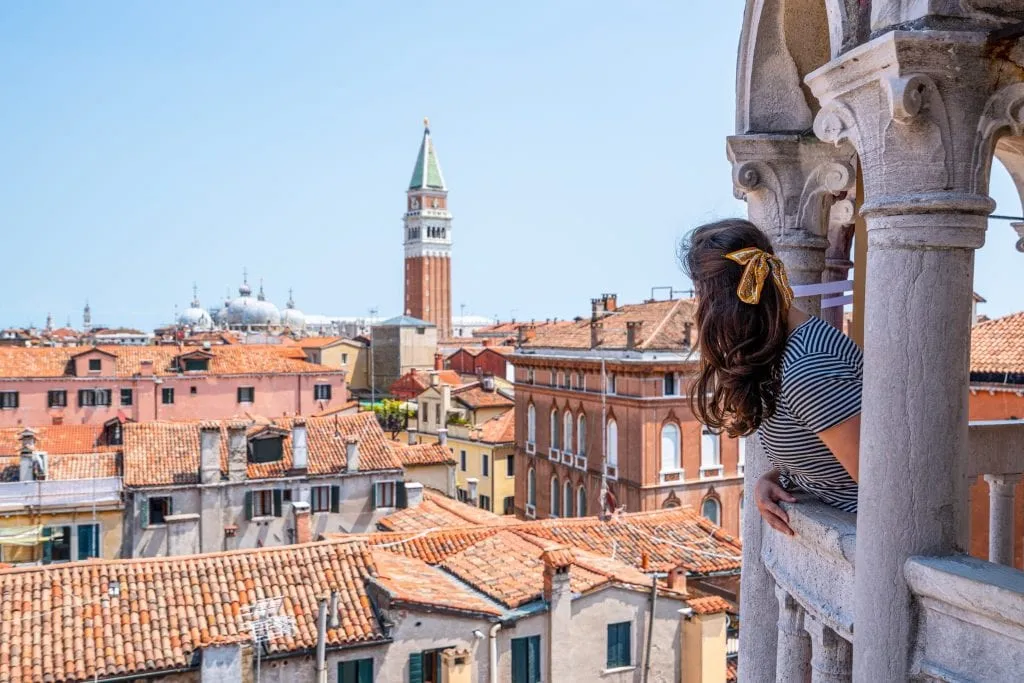
Some links in this post may be affiliate links. If you make a purchase through one of these links, we may earn a small commission at no extra cost to you. Please see our disclosure policy for more detail.
There were many, many lists involved in planning that first trip, and after months of planning, I emerged with an eclectic but incredible itinerary that kicked our love of travel into high gear.
In the summer of 2015, Jeremy and I spent a little over 2 weeks in Europe exploring Krakow , Budapest , Plitvice Lakes National Park , Zadar , Dublin , and the Cliffs of Moher (I told you it was eclectic!).
We’ve now cumulatively spent years of our lives traveling in Europe, falling in love with world-famous cities and less iconic locations alike, and there’s absolutely nothing we like better than helping people plan their own unforgettable adventures.
Over the years, we’ve explored the continent in almost every way possible, from backpacking Europe on a budget for 2 weeks to checking into luxury hotels to playing tour guide for family and friends to finally spending more than a year living in Lisbon, Portugal !
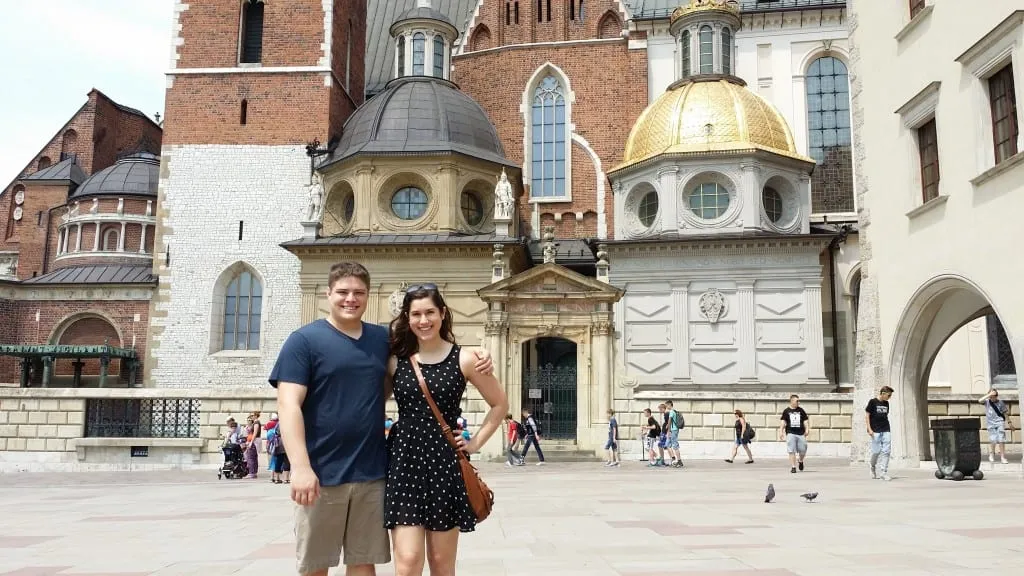
We’ve put together this 2 week Europe itinerary guide to help you plan your trip–here’s what you need to know before you go.
(Also, yes–this is an incredibly long blog post! We recommend using the table of contents right below this paragraph to help you navigate to different sections depending on what you’re hoping to read first.)
Table of Contents
How to Use This 2 Week Europe Trip Guide
Exciting 2 week europe itinerary ideas, how to get around during 2 weeks in europe, important tips for planning a 2 week europe trip, faq for spending 2 weeks in europe, what to pack for 2 weeks in europe, read more about visiting europe.
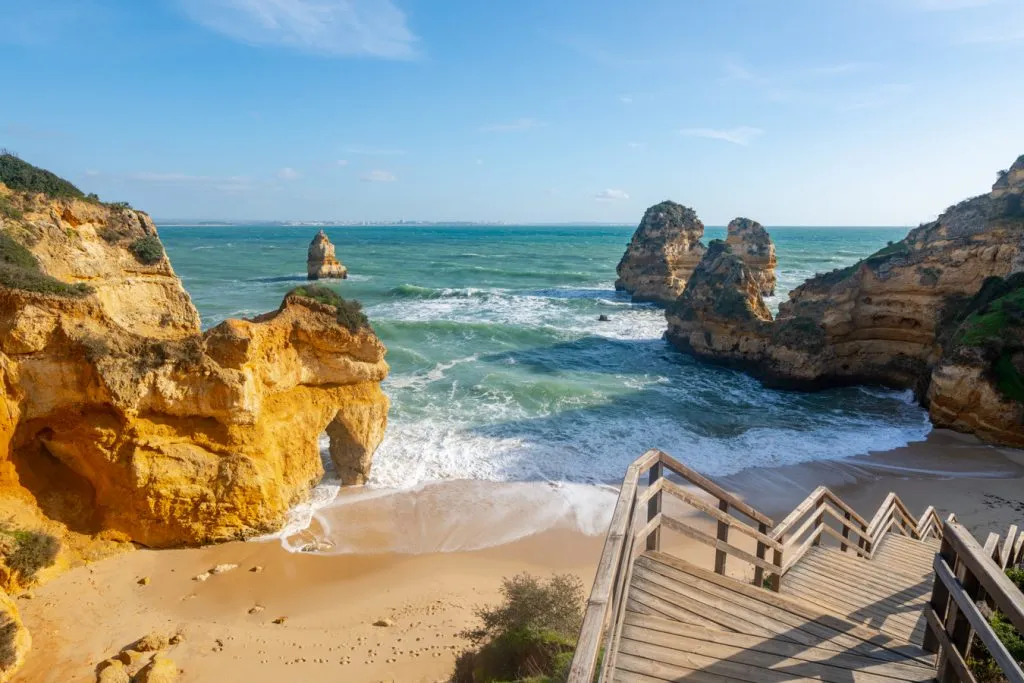
This 2 week Europe trip guide is designed for someone hoping to see the highlights of a few different European destinations, spread across multiple countries, in only a couple of weeks.
We’ve primarily written it for someone planning their first trip to Europe, but if this is your second trip, third trip, or beyond, hopefully, we have some interesting ideas and tips for you, too!
And, of course, given that Europe is home to more than 50 countries and is roughly the same size as the USA, no 2 weeks in Europe could hope to cover the entire continent or all of its numerous and distinct cultures, languages, and histories.
For ease of communication, we’ll talk in general terms about traveling in Europe here, but once you pick your itinerary, of course, you’ll want to follow up with further research on the specific locations you’ll be visiting.

And, once you’re further along in your planning process, we’d love to help you with some of that planning here on Our Escape Clause, too!
We’ll link to relevant blog posts throughout this travel guide, but given the hundreds of posts we have on the site, we won’t be able to link them all.
You can use our destinations page or the search bar on the top right of the page (on desktop) or at the top of the pop-out menu (on mobile) to find our content about various specific destinations across Europe or general travel tips.
For example, a few of our most popular guides that might come in handy next include our guide to traveling Europe by train , our 75 best Europe travel tips , and our (biased) guide to the best cities in Europe .

The number of possible 2 week Europe itinerary ideas is truly infinite–just look at the odd itinerary that I cobbled together for us in 2015 as an example !
However, the sample itineraries for Europe outlined below should give you a good idea of what you can accomplish with around 14 days in Europe .
I truly struggled to narrow down these ideas–I could name 10 more excellent 2 week Europe trips in an instant, and still feel like I was leaving so much on the table.
I aimed to keep these mostly focused on destinations that are popular for first-time visitors to Europe, with just a couple of slight curve balls thrown in.

The Classic: London, Paris, Rome
As three of the world’s most beloved and celebrated cities, you can’t go wrong with splitting your 2 weeks in Europe between London, Paris, and Rome.
As the capital of an English-speaking country and home to an enormous airport hub, London makes logistical sense for a first trip to Europe hailing from North America–and, of course, it’s a truly fascinating city.
Visit Buckingham Palace and Hyde Park, stroll through Notting Hill, snap photos of Big Ben, check out the Tower Bridge and the Tower of London , visit the Wizarding World of Harry Potter, stop by Piccadilly Circus, ride the London Eye , and tour the British Museum.
… And that’s just to get you started !
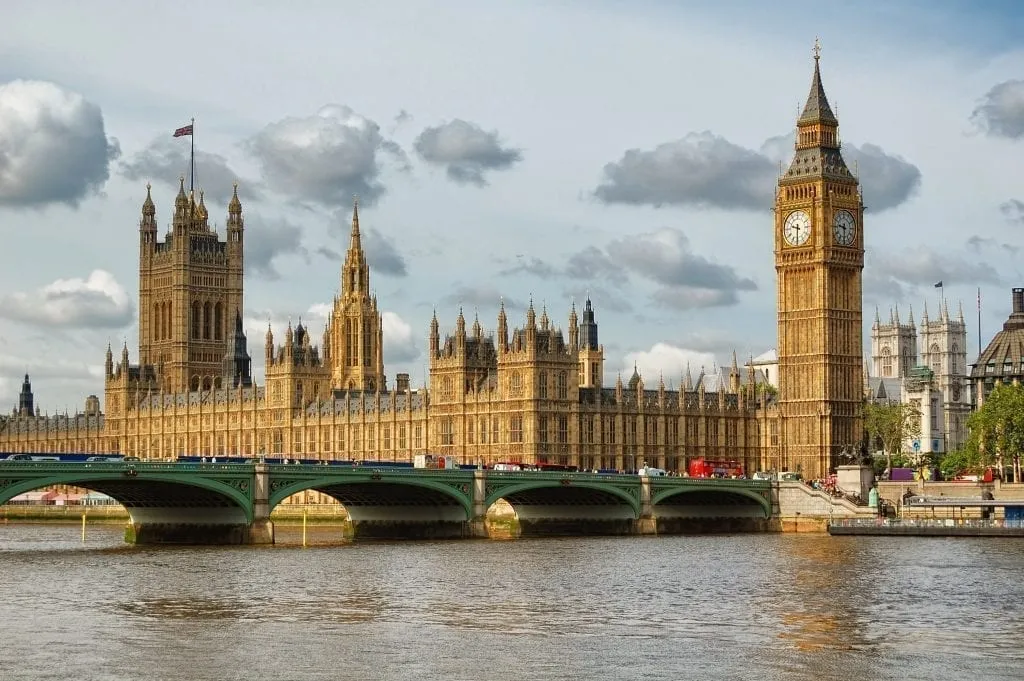
The City of Lights is one of our favorite cities in the world and was also the first place we visited on our very first trip to Europe (we spent a week there and then planned our 2 week Europe trip outlined in the introduction of this blog post the following year).
Since then, we haven’t been able to stop going back, and believe that it’s an excellent addition to any 2 week Europe itinerary!
While you’re in Paris , visit the Eiffel Tower, marvel at the beauty of Sainte-Chapelle, tour the Louvre and the Musee d’Orsay, stroll the picturesque streets of Montmartre and the Latin Quarter, visit the Palais Garnier, discover hidden passages and tiny cafes, and soak up every minute of that Parisian charm.
Our full guide to planning your first trip to Paris can help you get started!

Ah, Rome –if Paris is the first European city we fell in love with, Rome is probably our deepest love on the continent.
From wonders of Ancient Rome like the Colosseum, Roman Forum, and Pantheon to more recent additions like the Vatican Museums , Trevi Fountain, and winding cobblestone streets of Trastevere , exploring Rome is a captivating, engaging experience that we can’t recommend highly enough.
And, of course, you couldn’t ask for a better cuisine to savor during your 2 weeks in Europe: Rome is home to some of the best pasta in all of Italy!

Southern Europe Charm: Madrid, Rome, Amalfi Coast
Want your 2 weeks in Europe to focus on a delightful combination of history, food, and sunshine?
Head directly to Spain and Italy!
While Barcelona gets all the love (and a lot of the crowds), we’re personally smitten with the Spanish capital of Madrid… and excellent flight deals from North America make it almost irresistible on a 2 week Europe itinerary.
With a few days in Madrid , you can admire world-class art in the Prado, soak in Spanish culture with a stroll through Retiro Park, eat all the tapas and churros con chocolate you can get your hands on, tour the Royal Palace , check out an Egyptian temple, and take day trips to fairytale towns like Toledo and Segovia.
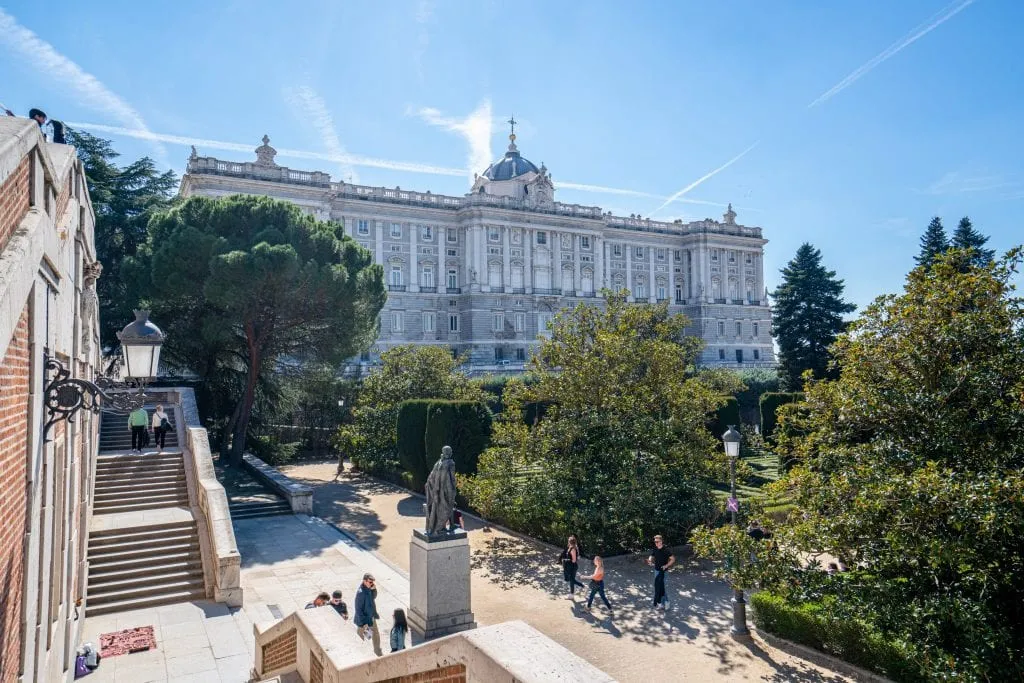
I described Rome in the first Europe itinerary on this list, so I won’t repeat myself here, but as I sit typing this Europe travel blog post out in a Rome apartment while dreaming of the carbonara I’ll eat for dinner tonight, all I can say is: you won’t regret coming to Rome (and scroll up for more details).
And, while I detailed some of Rome’s highlights above, let me also say… don’t forget to get off the beaten path in the Eternal City , either!
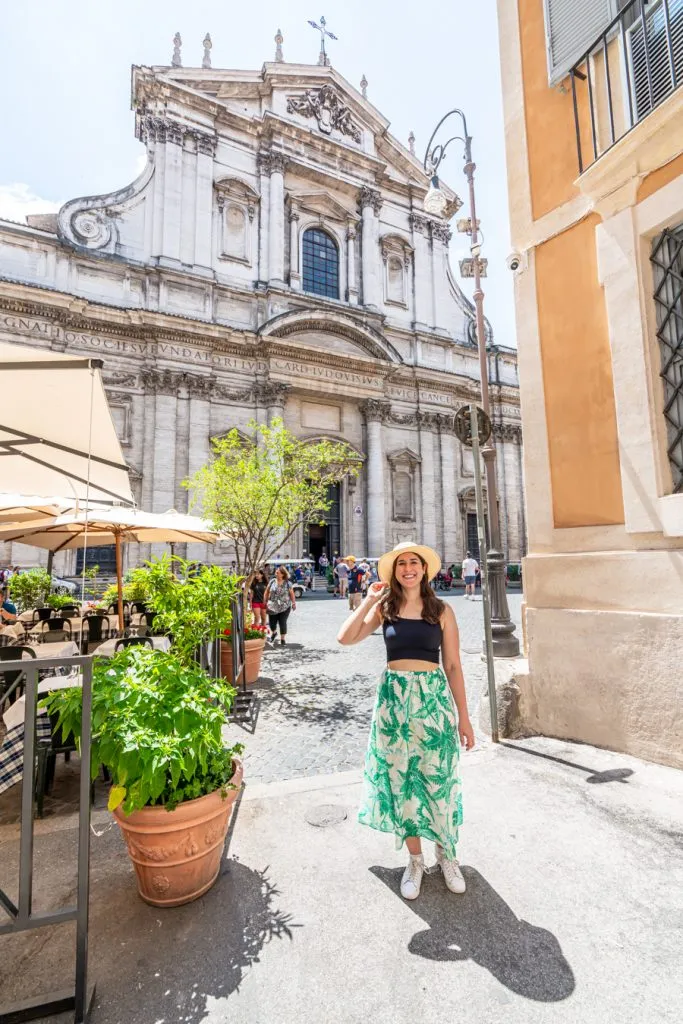
Amalfi Coast
The famed Amalfi Coast , with its dramatic cliffs, chic villages like Positano, delicious lemons, and jaw-droppingly beautiful hikes like the Path of the Gods, is a fabulous conclusion to any 2 week Europe trip–where better to relax than one of the most beautiful coastlines in the world?
While you’re there, be sure to make room for plenty of day trips!
Iconic locations like Capri and Pompeii , as well as less-popular but equally amazing spots like Ischia, Herculaneum , and Procida, are all at your fingertips when staying on the Amalfi Coast.
(Also, if you like page-turning novels about friendship and Italy, I highly recommend reading Elena Ferrante’s My Brilliant Friend series before coming or while visiting Europe).
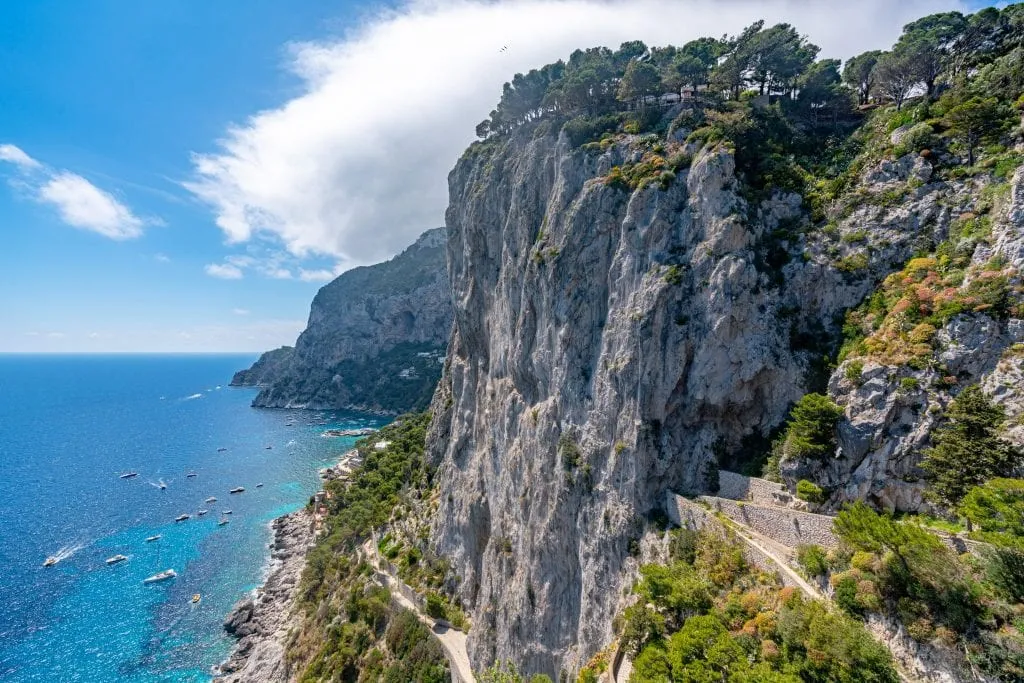
Regal Central Europe: Prague, Vienna, Budapest
Sweeping boulevards, dramatic architecture, beautiful coffeehouses, and tasty comfort food: a trip to Central Europe is an absolute delight.
In my opinion, this region truly shines during the winter months when Christmas markets are in full swing and the hearty cuisine keeps you warm from the inside out.
I’ll try to keep this section quite brief, as I’ve already written a detailed Central Europe itinerary here , but suffice it to say, we love it.
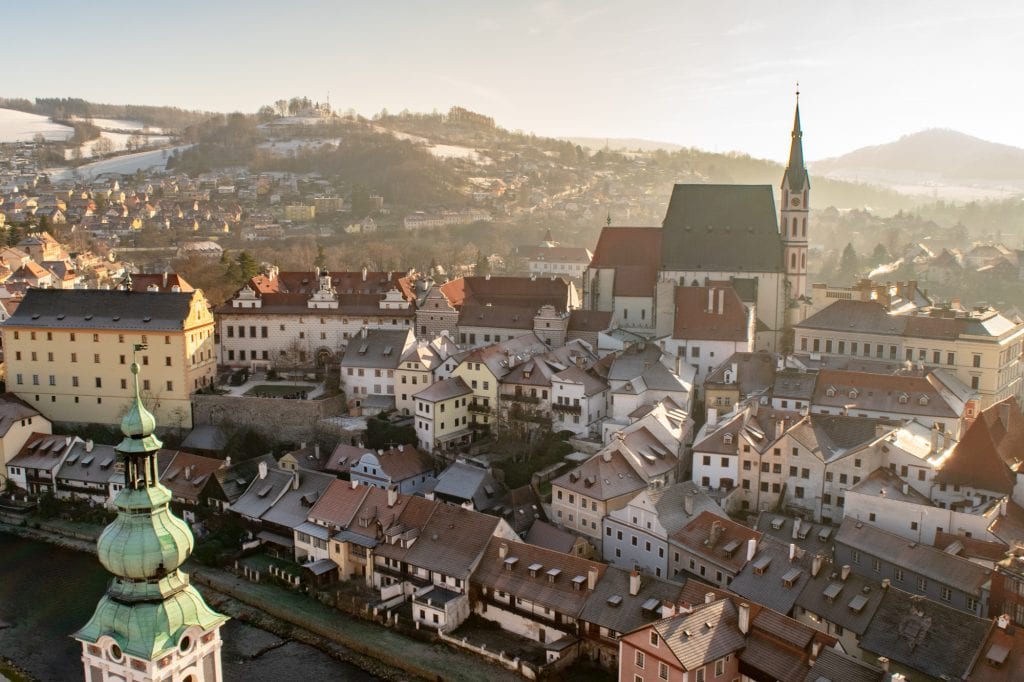
Known as the City of a Hundred Spires (and also for the fact that beer is cheaper than water here–true story, at least when it comes to pricey bottled water at restaurants), Prague is easily in the running for the most beautiful city in Europe.
The beauty of Prague Castle, St. Vitus Cathedral, the famed Charles Bridge, and Prague’s well-known astronomical clock will all draw you in.
If you have enough time, consider adding a day trip to a smaller Czech town like gorgeous Český Krumlov as well!
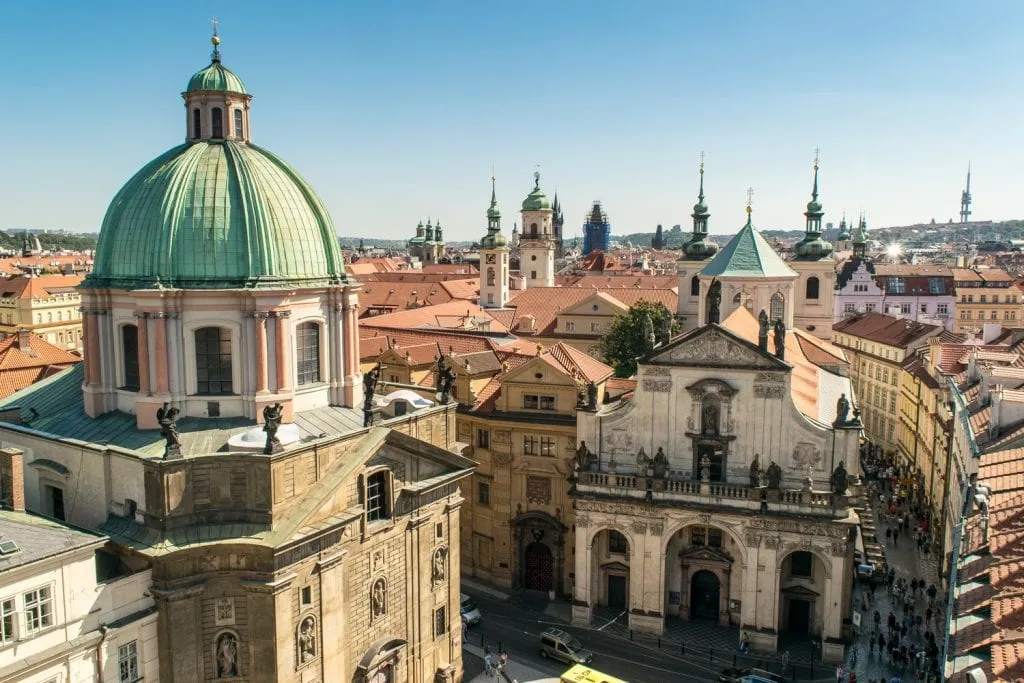
Regal and beautiful, full of spacious, wide avenues and ornate buildings, Austria’s capital city is the perfect place to come to tour grand palaces ( Schonbrunn is one of the most popular), see a show in one of the world’s premier opera houses, and to enjoy European cafe culture at its finest.
We absolutely adore Vienna’s coffee houses–be sure to try a slice (or several) of Esterhazy Cake while there, as well as Viennese hot chocolate.
The city’s famed Spanish riding school and striking St. Stephen’s Cathedral are also worth adding to your list!
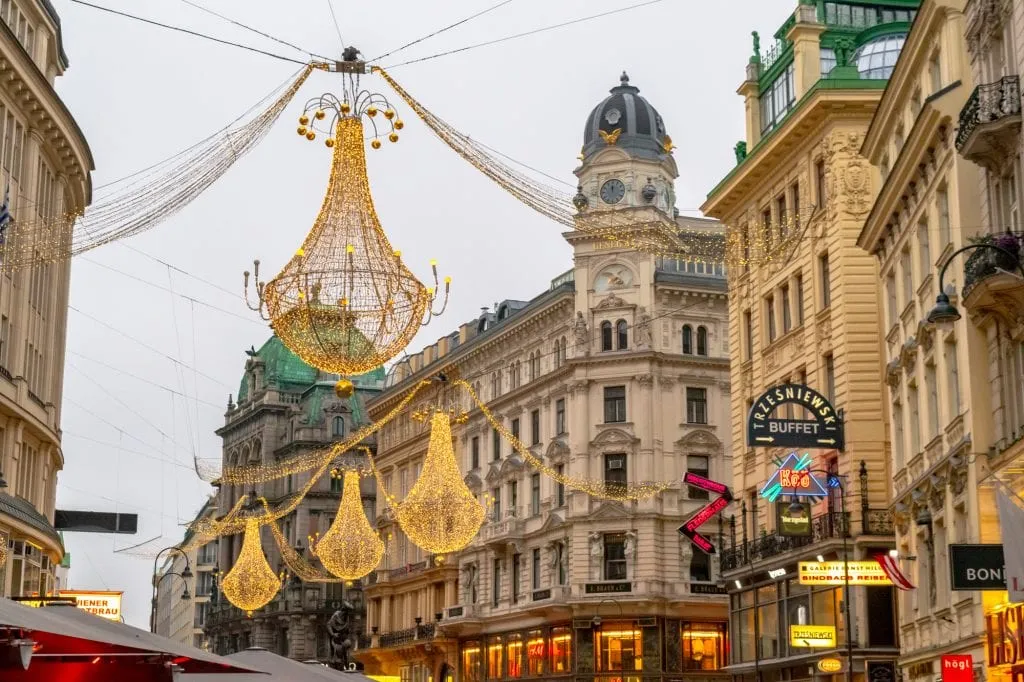
As our favorite city in central Europe and one of our top 10 cities in Europe overall, I really can’t say enough about how beautiful Budapest is!
The city is somehow, simultaneously, both grand and down-to-earth , absolutely gorgeous while also remaining accessible, affordable, and fairly simple to visit and explore.
While in Budapest, go for a soak in the famous thermal baths, tour one of the most beautiful houses of Parliament in Europe, check out a castle, visit grand basilicas, take a boat ride down the Danube, and, if you’re up for a bit of adventure, even go on a cave tour!
Be sure not to miss the great food , either–Budapest’s hearty cuisine is a delight, and one of our all-time favorite wine tastings took place there!
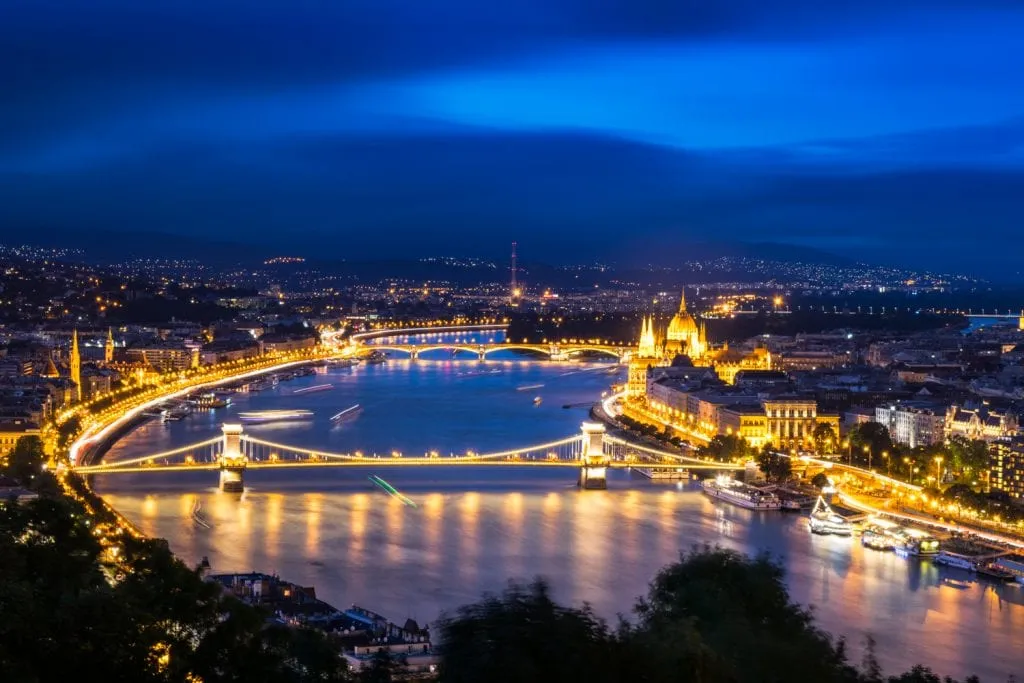
Europe for Art Lovers: Paris, Florence, Venice
If you’re an art buff at heart, you can’t ask for a better sampling of some of the continent’s most beloved artistic cities than the trifecta of Paris, Florence, and Venice (and it certainly helps that each city is practically an art museum in and of itself).
From the Louvre to the Musee d’Orsay to the Orangerie to the Musee Rodin to the Centre Pompidou to the Cluny Museum, it would probably take a lifetime to enjoy all the art museums in Paris alone.
And of course, the city has so much more to offer once you need a break!

Nicknamed the Cradle of the Renaissance, Florence boasts the finest collection of Renaissance art on the planet–and claims many of its most famous artists as locals.
Michelangelo, DaVinci, Botticelli, and more all originally hailed from Florence, and their works are scattered about the city.
Perhaps most famously, Michelangelo’s David is in the Galleria dell’Accademia and Botticelli’s The Birth of Venus is in the Uffizi Gallery .
And of course, no art-focused trip to the Cradle of the Renaissance can overlook Florence’s iconic Duomo , a masterpiece of the era!

Located an easy train ride away from Florence, Venice may be slightly less well-known for its art than the first two cities on this 2 week Europe itinerary, but there’s no doubt that there’s plenty to find!
From the utter masterpiece of St. Mark’s Basilica (don’t miss a chance to go in!) to the incredible Doge’s Palace to the famous Galleria dell’Accademia (not to be confused with the one in Florence!) that focuses mostly on Venetian artists, Venice is an art lover’s dream.
Mix it up by adding a visit to the Peggy Guggenheim Collection, which holds modern art, and a gondola ride .
A fter all, Venice itself is no doubt one of the best artistic masterpieces in the city, and it deserves to be seen from all its best angles.
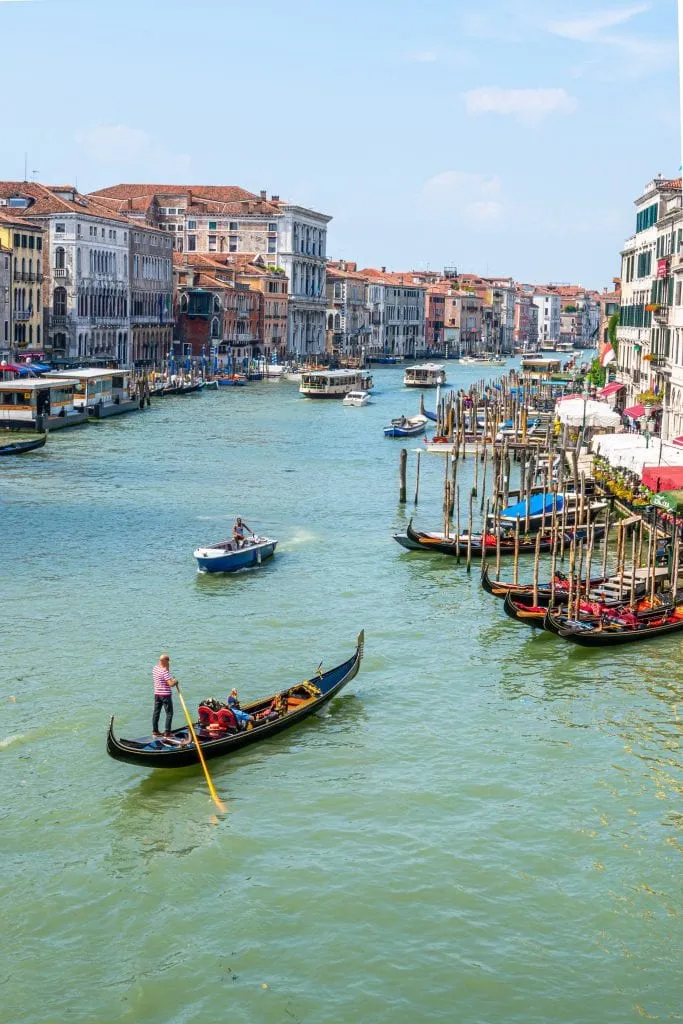
The Incredible Iberian Peninsula: Lisbon, The Algarve, Andalucia
The Iberian Peninsula is dominated by Spain and Portugal , and while I might be biased after spending more than a year living in Lisbon, it makes for an unforgettable Eurotrip!
(The fact that there are often flight deals from the US to Lisbon and Madrid doesn’t hurt, either).
There are infinite ways to craft southern Europe itineraries out of these two countries, but here’s one great option…
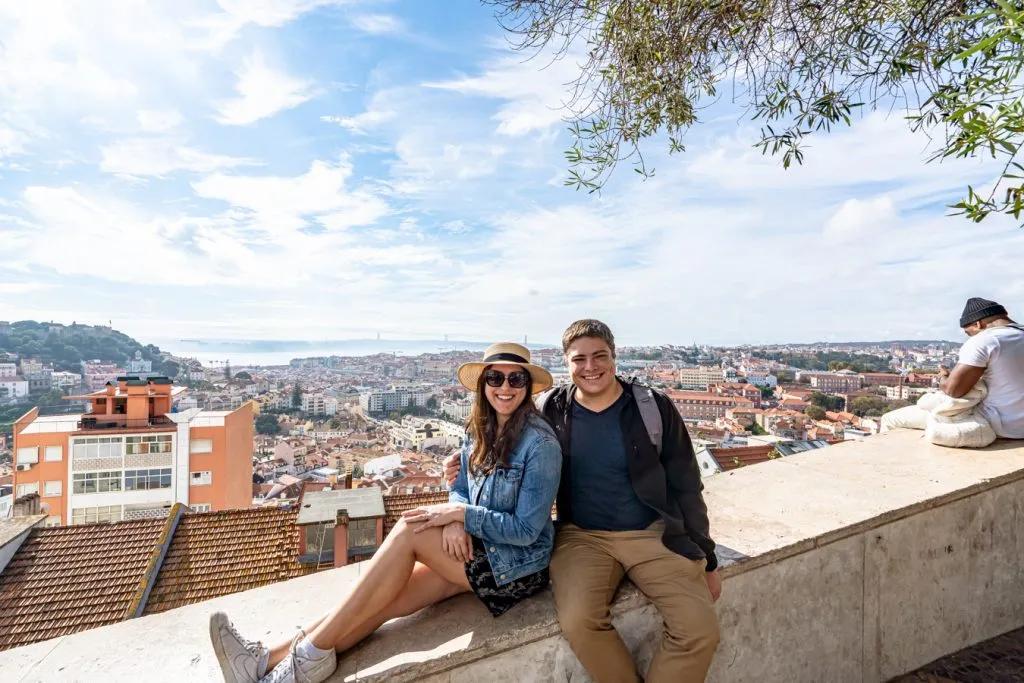
Start your trip with a few days in Lisbon , Portugal’s trendy capital city, soaking up beautiful views from its many miradouros , sampling Portuguese food (starting with pastéis de nata ), touring the incredible Jerónimos Monastery, and taking day trips from Lisbon to nearby gems like the palaces of Sintra and/or the beach resort town of Cascais .
Be prepared to head up and down a lot of hills while you’re there–but Lisbon is worth the climb.
If you’re looking for neighborhoods to wander through, Alfama, Castelo, Chiado, and Bairro Alto are particularly picturesque–keep an eye out for trams, azulejos, and peacocks as you explore!
And, while Lisbon’s top attractions are definitely worth a visit, seeking out some of the many hidden gems in Lisbon will add extra beauty to your trip.
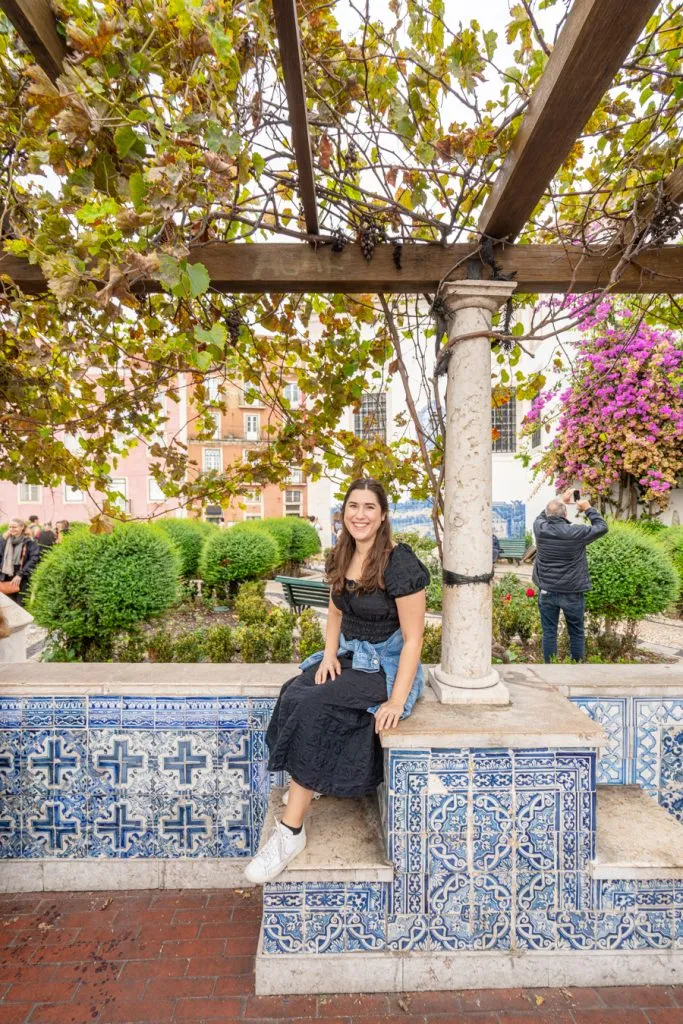
The Algarve
After saying goodbye to Lisbon, head south of Portugal’s Algarve for a dizzying array of whitewashed villages (you’ll find many of the best beach towns in Portugal here) and a picturesque coastline.
Lagos is one of the most popular places to stay, and we can highly recommend it–don’t miss the famous Ponta da Piedade, which photos can’t do justice to.
Nearby attractions (ideally, you’ll want to rent a car in the Algarve) include the famous Benagil Cave and the unmissable Seven Hanging Valleys Trail!

For the second week of your trip in Europe, cross the border into southern Spain (note: there’s no direct train access for this journey, but there are buses).
Split your time between any two of Andalucia’s incredible cities, taking nearby day trips from there.
Seville (with its Alcazar and famous Plaza de Espana), Granada (home of the Alhambra ), and Cordoba (home of the Mosque-Cathedral , one of the most unique houses of worship in the world) are all wonderful inland options.
On the coast, options include Cadiz, Malaga, Marbella, Tarifa, and many more.
With a bit more than 2 weeks in Europe or an ambitious schedule, you may be able to squeeze in a day trip to Gibraltar and/or Tangier, Morocco while here!

Food + History: Athens, Santorini, Istanbul
Feel like heading further east–as far east as you can get during a Europe vacation?
Greece and Turkey pair very well for a 14 day European itinerary–here’s what that might look like.

Start your trip in Athens, marveling at some of the world’s most remarkable ruins, including the famous Acropolis complex and museum.
Be sure to make time to explore non-ancient aspects of Athens as well, including the trendy Plaka neighborhood, Monastiraki Square (and nearby flea market!), and Syntagma Square.
And of course, one of the absolute best things to do after you touch down in Athens is to dive into plate after plate of phenomenal Greek food –that alone is worth traveling to Greece for ( our Athens food tour remains one of my favorites that we’ve taken in Europe).

Truly, any one of Greece’s amazing islands would fit nicely into this 2 week Europe itinerary, but where better to choose than Santorini , with its iconic blue-and-white color scheme, fantastic caldera views, and excellent flight connections?
While Santorini isn’t best known for its beaches–you’re better off heading to Crete for those–you sure can’t beat the charming villages or stunning nature.

The city of two continents, where thousands of years of history blend seamlessly with modern life, and where you can eat one of the best breakfasts you’ll ever experience in your life: Istanbul tops bucket lists around the world, and there is simply nowhere on the planet quite like it.
Marvel at the Blue Mosque, step inside the Hagia Sophia, eat your weight in Turkish breakfast (seriously, I can’t emphasize enough how tasty it is), admire the views of the Bosphorus, climb the Galata Tower, and shop your way through the Grand Bazaar.
Since this Europe travel blog post focuses on, well, Europe, I won’t sketch out any other possibilities further east in Turkey in detail…
But, if you have time, you could easily add a visit to Cappadocia , complete with a sunrise hot air balloon ride, to your trip, or even a visit to the ruins of Ephesus.

Architecture + Culture: Cologne, Amsterdam, Belgium
With this small triangle of destinations, you can easily visit separate countries via train, with very little travel time between them!
And, if you were particularly motivated to add another, you could even squeeze in a day trip to Luxembourg.
If you’re looking for a winter itinerary for Europe that focuses on cities, this is a fantastic option.

Home to a stunning cathedral and what may just be the best Christmas markets on the planet, Cologne is a gorgeous German city that is a delight to explore on foot.
Don’t miss its soaring Gothic Cathedral while you’re there!
… Though honestly, that would be hard to do, considering you can see it right as you step outside the train station.

As one of the most popular cities to visit in Europe, Amsterdam requires no introduction.
The city of canals, biking, and revelry is somehow even more beautiful in person than in the billions of photos of it.
While you’re there, be sure to take a canal cruise, stroll the 9 Streets, and visit at least a couple of the city’s museums (the Anne Frank House is incredibly moving).
If you visit Amsterdam in winter , you’ll no doubt need to bundle up–but the lack of crowds in this often-packed city is also a treat to experience.
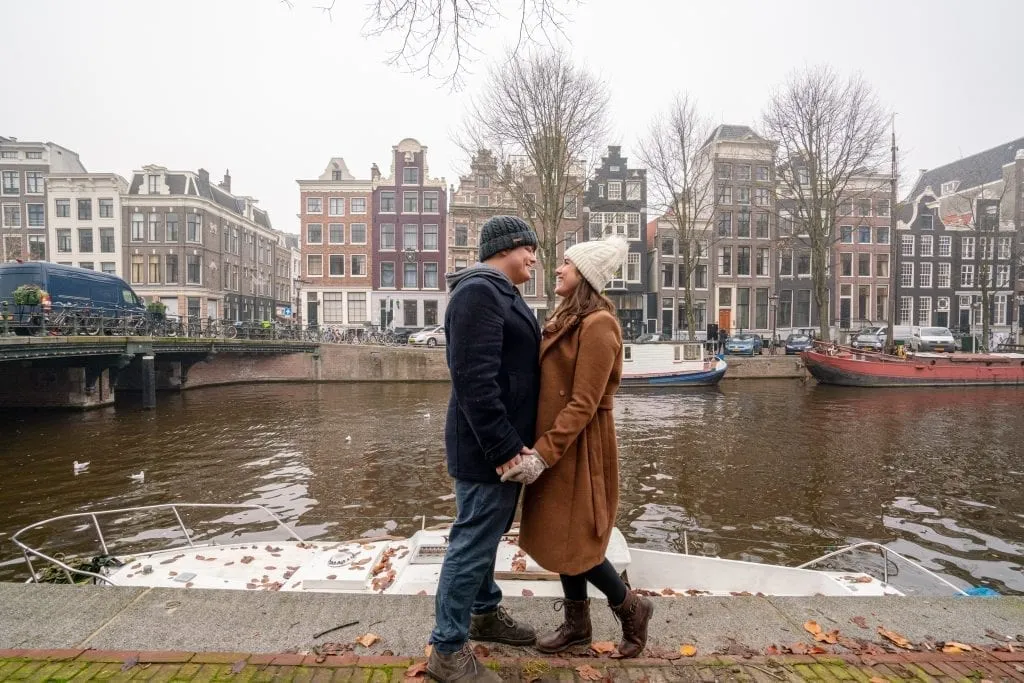
Perhaps it may be slightly unfair to list Belgium entirely while the other destinations are split into cities… but considering Belgium’s two most popular cities, Bruges and Ghent , are located less than an hour apart by train, you can cover quite a bit of the country in a few days !
With stunning architecture, canals, and carbs (bring on the waffles and frites), it’s easy to have a blast in Belgium.
Winter in Belgium brings a lack of crowds and plenty of festivities during the Christmas season!
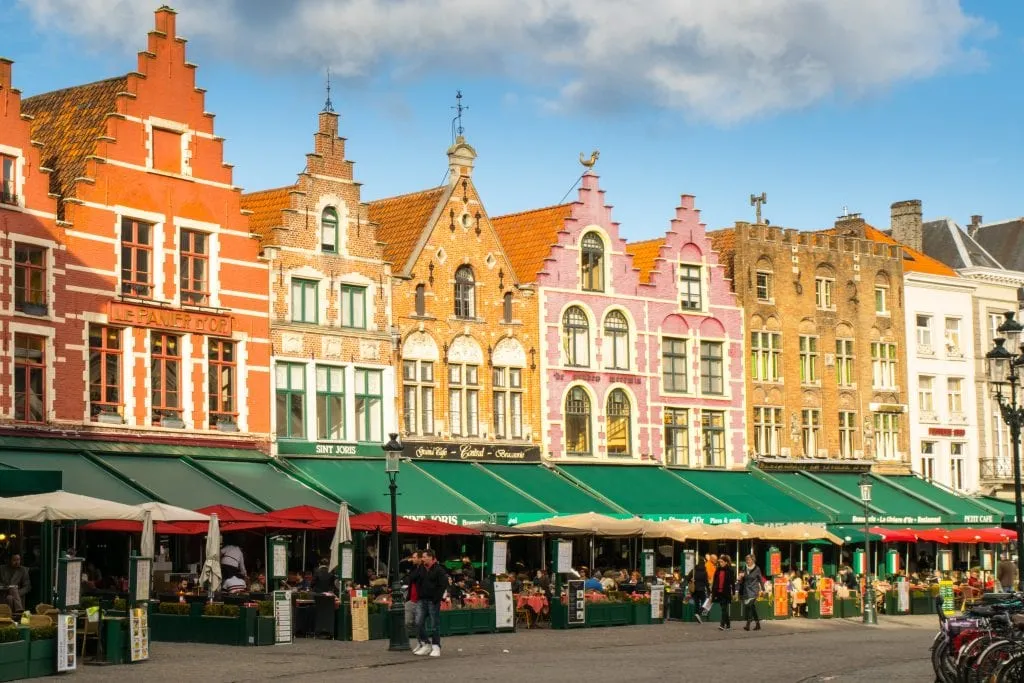
Alpine Escape: Bavaria, Switzerland’s Jungfrau Region, Milan, and Lake Como
If your dream Europe trip involves plenty of Alpine views with a side of cities, this is the itinerary for Europe in 2 weeks for you.
Start your trip in Bavaria, the land of castles, beer, and outdoor delights.
City lovers will enjoy being based in Munich (don’t miss the opulent Munich Residenz or view from St. Peter’s Church and/or the Town Hall Tower while there).
From Munich, you can easily day trip to more mountainous areas, starting with Fussen, home to Germany’s famous Neuschwanstein Castle .
If you get good weather and want to see as many mountains as possible, a day trip to the Zugspite–the highest point in Germany–is also an option.
Really, though, if there’s one thing to prioritize in Munich, it’s to eat and drink all the sausage, pretzels, beer, and beyond you can get your hands on!
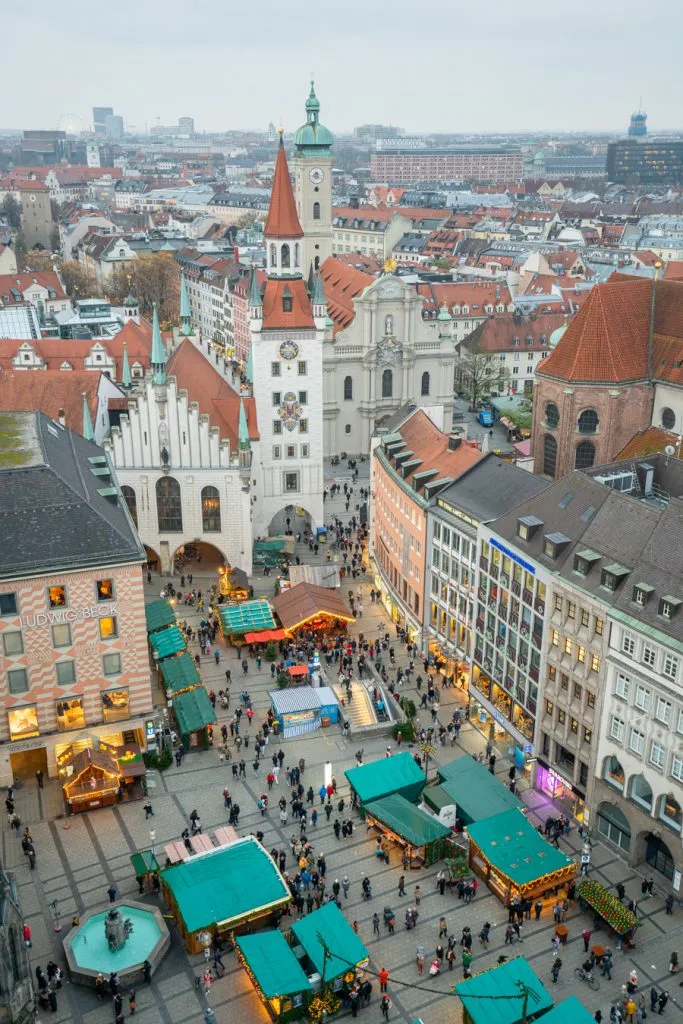
Switzerland’s Jungfrau Region
I am convinced that Switzerland’s Jungfrau region–located around (literally, above) Interlaken–is paradise on earth in the summer.
If you’re dreaming of the Alps, check into a hotel in Wengen, Murren, or Grindelwald (for the best views) or Interlaken (for a bit more selection) or Lauterbrunnen (to be in the literal center of the action) and have the trip of your dreams.
Switzerland’s legendarily efficient trains and gondolas mean that wherever you stay, the region is at your fingertips.
Hiking from Mannlichen to Kleine Scheidigg, riding the highest train in Europe to Jungfraujoch (aka the “Top of Europe”), eating daily fondue, walking from Murren to Gimmelwald , and riding a historic cogwheel train to Schynige Platte are just a few of the unforgettable experiences you’ll find here.

Milan + Lake Como
End your trip to Milan and Lake Como , two of the most popular destinations in northern Italy!
In Milan , be sure to visit its legendary Duomo, stroll through the Galleria Vittorio Emanuele II, visit Sforzesco Castle, and, if you can get tickets (plan ahead!) see Da Vinci’s The Last Supper .
At Lake Como (just an hour north of Milan by train), take a boat tour around the lake and visit delightfully charming towns like Varenna and Bellagio while admiring magnificent Alpine views.

Getting around in each city on your 2 week Europe itinerary is a question better suited to blog posts on that particular city, so this section is designed to address getting in between each destination during your 14 days in Europe.
We recommend checking several solutions for each destination, as you never know what will crop up!
Personally, our first 2 week Europe trip involved an overnight train, a budget plane ride, and a couple of rental cars.

Train travel is our absolute favorite way to travel in Europe!
I t’s much less stressful than traveling by plane, especially once you get the hang of it, far more comfortable, and for those of us hailing from North America, it’s a travel experience in its own right!
We recommend using services like Omio to compare train prices across multiple countries.
It works more or less exactly like a car rental aggregate does, searching multiple companies and generating the best routes and prices for your dates.
Keep in mind that train travel is most useful in western and central Europe–once you head into eastern Europe and especially the Balkans, train travel becomes more limited and bus travel more common (for example, popular Dubrovnik, Croatia doesn’t have a train station).
Shop train routes and tickets prices in Europe today!

For those traveling on a budget or between two smaller destinations where rail travel isn’t an option, buses can be a very affordable choice.
In addition to standard local buses, companies like Flixbus provide an easy-to-use service, and you can check their prices and availability directly or through Omio as well (that way you can compare train tickets at the same time).
Browse bus routes in Europe today!
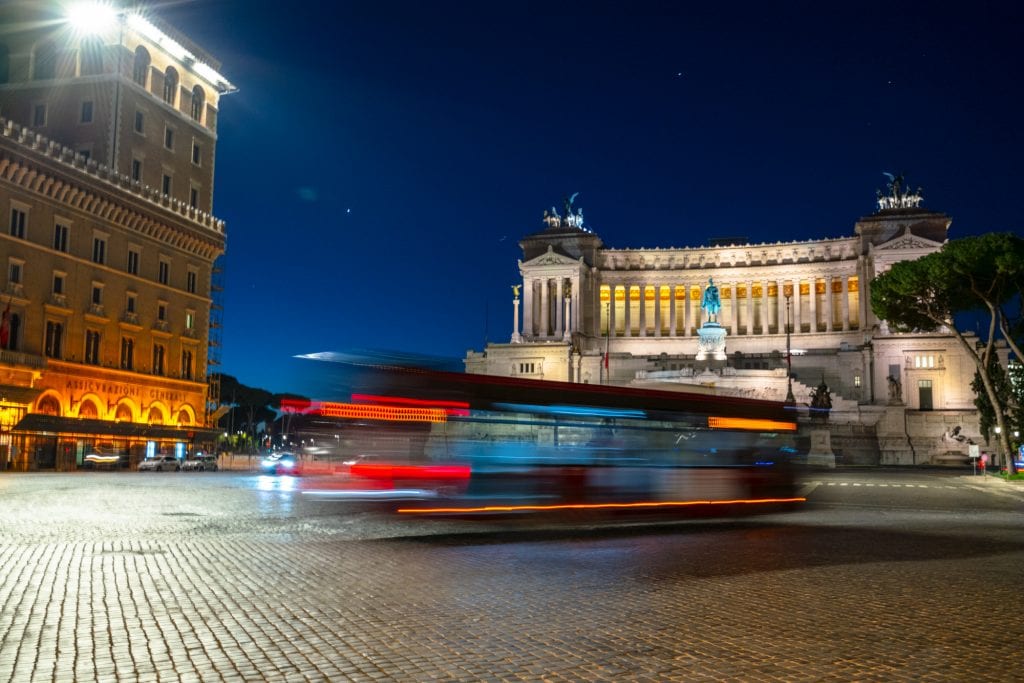
With plenty of budget airlines and plenty of airports to choose from, if you plan wisely, it’s possible to take flights in Europe that are so inexpensive you wonder how the company pays for the fuel.
S eriously: 10 Euro flights are possible, though we’ve never actually managed to pay that since we prefer to check our bags !
When looking for flights within Europe, we recommend using Google Flights in order to search the whole continent at once (you can simply put “Europe” in as the destination, and it’ll pull up a map of prices).
With a little flexibility on destination (for example, maybe flying into nearby Bologna is cheaper than flying into Florence ?) and even on dates if possible, you just might end up with an excellent flight deal or two during your trip to Europe.
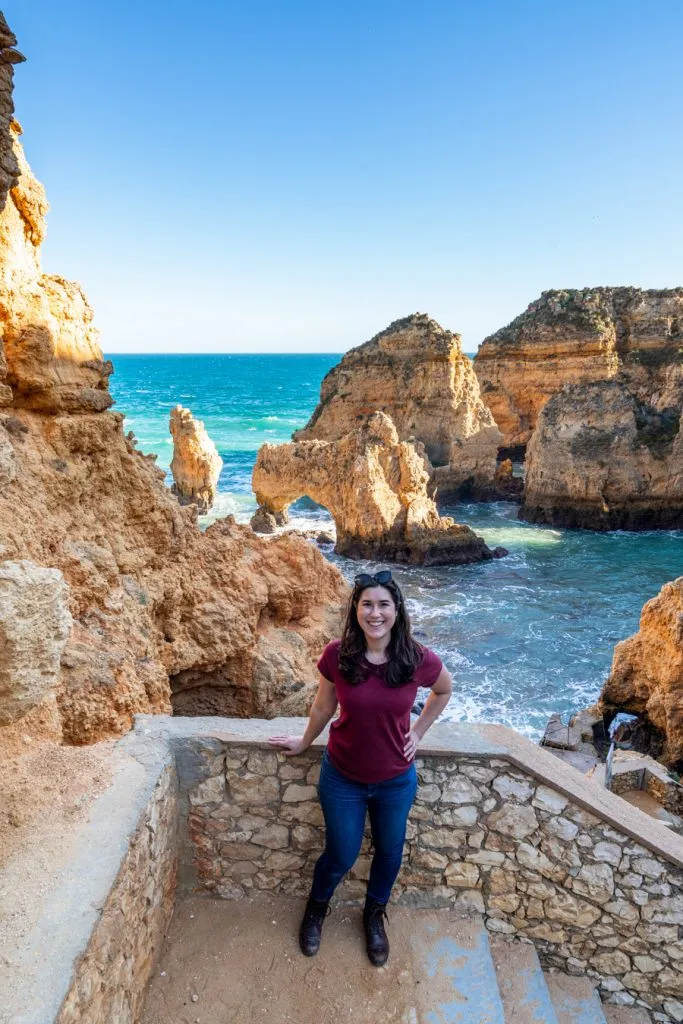
Personally, we recommend avoiding a car rental when possible during your 2 weeks in Europe, especially if you’re following anything resembling a Europe itinerary like the ones I outlined above.
In large cities, rental cars are a hindrance and a liability, not an asset, and they add quite a bit to your bottom line.
That being said, if you’re planning on visiting any rural areas or small towns, road trips in Europe can be a delight!
Y ou could consider renting a car for a couple of days in Tuscany , for example, or to visit the villages of Provence.
If you do choose to rent a car, we recommend searching for the best prices through Discover Cars , which will allow you to search multiple companies at once and come up with a great option.
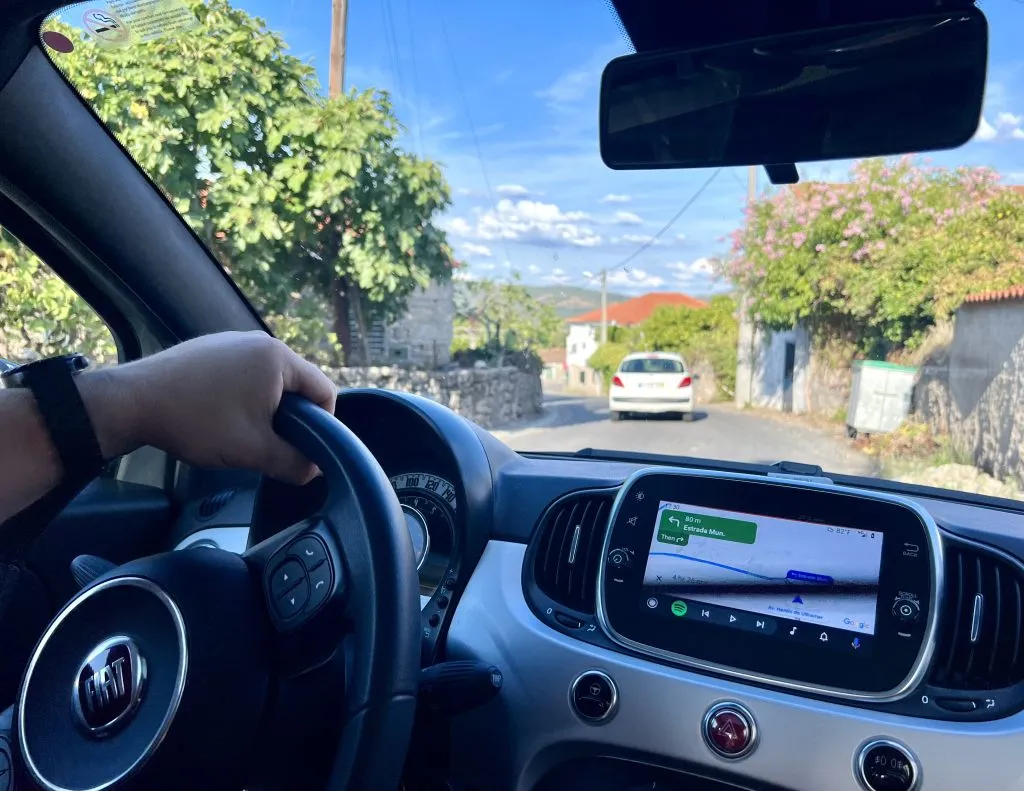
While major international carriers like Hertz and Enterprise are available in Europe, they’re not always the best deal, and searching for a combination of local and international companies is best.
Personally, we have no loyalty to any one rental car company, and book with whoever is most affordable (and we always buy the extra insurance).
As a result, we’ve rented cars through easily more than 15 or 20 agencies over the years (I’d be hard-pressed even to estimate it), and we’ve never had any issues with surprise charges.
Price out rental cars with Discover Cars now!
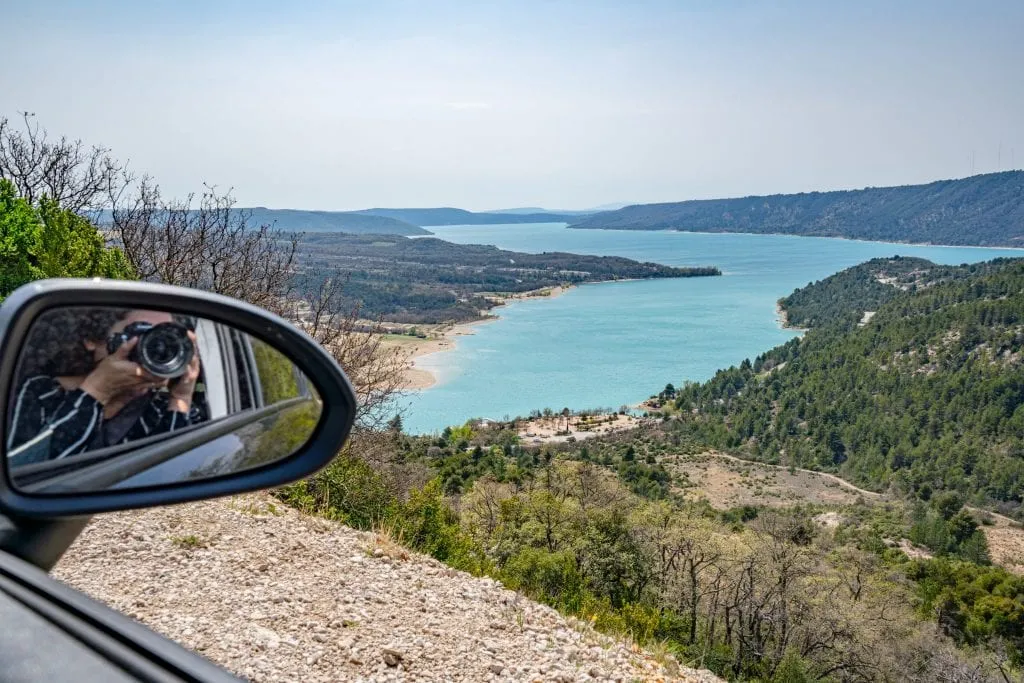
Don’t forget boats when it comes to planning a 2 week Europe itinerary, especially over the summer!
While ferries between or to/from islands are obviously the most popular ( Dubrovnik to Hvar , for example, or Barcelona to Mallorca), there are longer ferry options as well!
Last summer, we took a ferry from Barcelona to Rome and loved the experience of drifting along the Mediterranean Sea for 24 hours!
Many ferry routes are seasonal, but not all.

Don’t plan to visit too many destinations.
With only around 14 days in Europe, I know it can be incredibly tempting to squeeze in as many destinations as possible (and I have many fevered outlines of ridiculously ambitious trips I planned in my college days to prove it), but your trip will go so much more smoothly if you can resist that temptation.
In most cases, we recommend an absolute minimum of two full days per major city.
By full days, I mean with limited exceptions (like a red-eye flight that lands at 8:00 AM), the day you arrive and the day you depart don’t count as a “day” in a given city–just as a travel day.
Three or four days per city is even better and will allow you to potentially squeeze in a day trip from that city to a smaller city or village if you want to mix things up.

Start and end in a major airport hub.
It doesn’t necessarily have to be the same hub–more on that below–but there are definitely airports that are cheaper to fly into and out of for intercontinental flights than others.
Budapest may be affordable once you’re there, for example, but flying from the US directly to Budapest can hurt the wallet!
For those of you coming from the USA, London, Dublin , Madrid , Paris , Lisbon , Frankfurt, Amsterdam , and Milan are a few places to check ticket prices for.
That’s not an exhaustive list by any means, but there are often flight deals to and from these cities.

If you can, use an open-jaw ticket rather than a return ticket.
This will allow you to begin and end your 2 weeks in Europe in entirely different destinations, and let you avoid doubling back!
While one-way tickets can be pricier than round-trip ones, if you’re flexible on your dates and destinations (so deciding which cities to start and end in partially based on price), you can usually find excellent deals
This is exactly how we ended up flying into Krakow and out of Dublin for our first 2 week Europe trip!

You will be exhausted at some point. Plan for it.
Two weeks in Europe may not seem like a ton, but if you’re anything like us or virtually all of the travelers we have talked to, exhaustion will set in during your trip.
Sightseeing in Europe is fabulous, but it’s also tiring.
Add in navigating cultural differences, language barriers, and moving countries every few days, and you’re bound to need a break at some point.
We recommend planning a couple of laid-back days without museum visits, tours, or day trips so that you can catch your breath and avoid burnout.
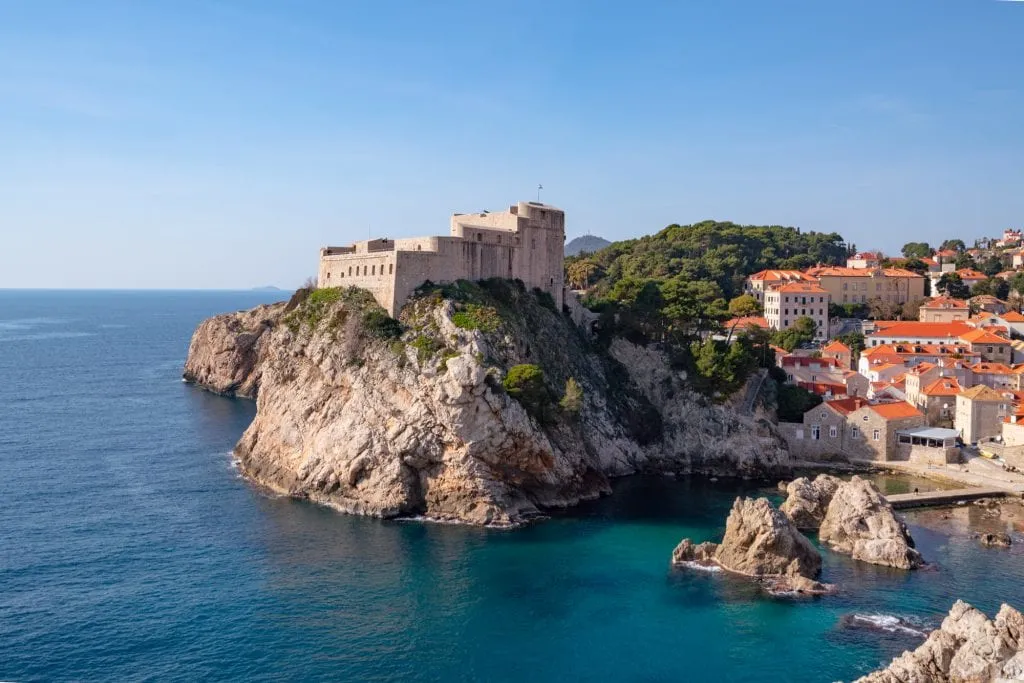
Try to be flexible with where you go.
As you start pricing train, plane, and bus tickets for your trip to Europe, you’ll likely notice dramatic shifts–for example, is it 4x the money to get to London instead of Amsterdam?
Does traveling to Prague require a long flight and 2 layovers but Rome is a quick hop away?
If you can, be flexible when you come upon these challenges: we recommend having 1-2 “must visit” destinations and filling in the rest of your trip based on a combination of logistics and desire.
After all, there’s no way you can see it all on a 2 week Europe trip anyway!

Don’t underestimate the time and energy it takes to change destinations.
“Oh, it’s only a 3-hour train ride away! That’s nothing!”
I think we’ve all said that at some point when planning a multi-country trip, but be cautious.
Three hours on the train doesn’t account for packing and unpacking, getting to and from the train station, checking out of and into a hotel… you get the picture.
If you’re looking at a high-level schedule without picking a specific date or time, you may also come to find that sure, there’s one direct 3-hour train between two cities… but it leaves at 10:00 PM or 6:00 AM, and the rest of the trains require layovers.

Or perhaps the direct train only runs 3 days a week.
Or maybe you’re looking at a plane, in which case, be sure to add at least 4 hours to your transit time: getting to and from the airport and security/check-in beforehand.
Long story short, travel days between countries are virtually always more tiring and time-consuming than they look at first glance, so don’t overcommit on those days when planning your ultimate Europe trip!
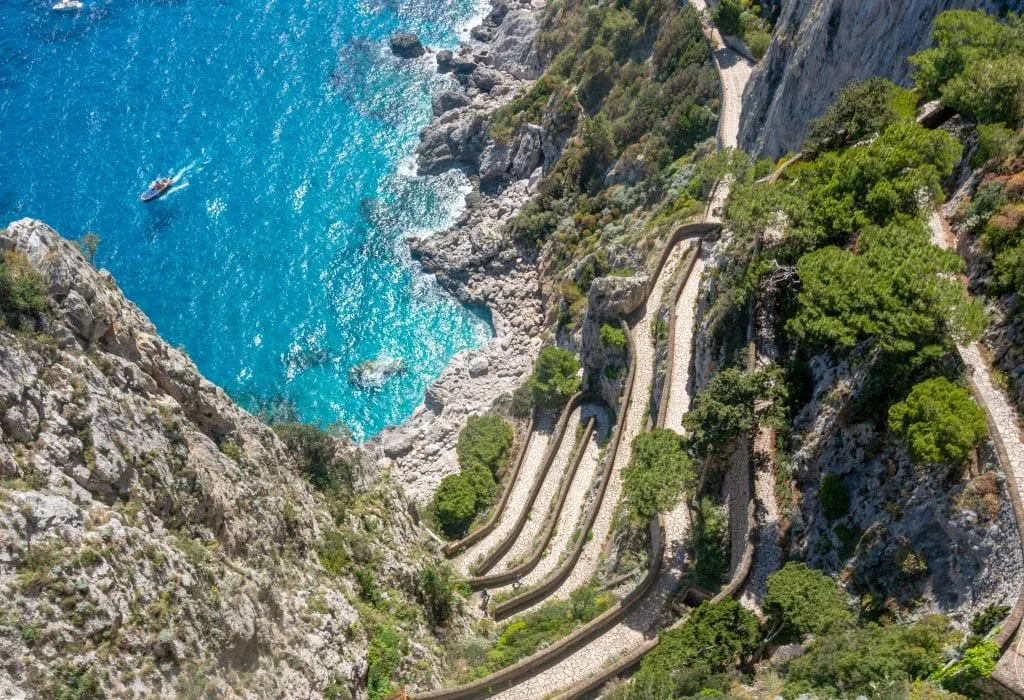
Big cities are more accessible than small towns and nature areas.
For the first trip to Europe especially, big cities are absolutely the easiest to plan your itinerary for Europe around.
They’re generally easier and cheaper to get into and out of, and there’s far more information available about them online to help plan your trips.
That’s no reason not to visit other places too, of course–but keep in mind that the more rural the area, the more logistically challenging your trip will be.
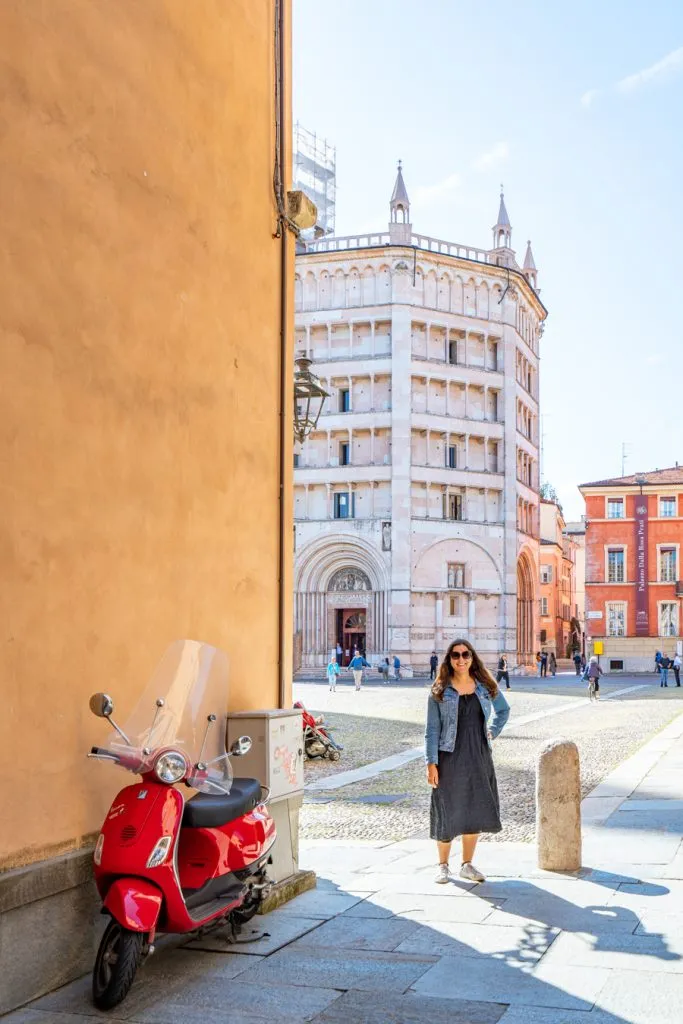
Skip-the-line tickets are incredibly useful.
I’m sure it comes as absolutely no surprise that the world’s most iconic monuments and museums tend to get a bit crowded… and that makes skip-the-line tickets invaluable, especially with only 2 weeks in Europe to squeeze in as much sightseeing as possible.
In some places (like the Arc de Triomphe ) they’re available without any additional fee, and in other places (like the Colosseum) they cost a bit extra.
Either way, though, it’s 1000% worth the price and effort to get tickets online beforehand for popular spots, especially if you’re traveling during the high season.

And, in 2024, it’s worth pointing out that given ever-changing capacity limits, it’s a better idea than ever to book in advance–and for some attractions, it’s even required!
When 2020 shook the travel industry to its core, many of the most popular museums and monuments in Europe found that life was easier with reservations and online bookings, and have continued prioritizing that system over traditional lines and ticket booths even as crowds returned to “normal”.
We use skip-the-line tickets all over the continent and book them through Get Your Guide .

Book your hotels and major transportation in advance.
Before kicking off your 2 week Europe itinerary, we recommend having all of your hotels and major transportation (so travel between destinations) booked and ready to go.
This dramatically cuts down on stress levels, makes it easier to budget and plan out your days, and generally helps your trip run more smoothly.
These days, we book virtually all of our lodging (including apartments, farm stays, houses, and more) through Booking.com .
Smaller things, like metro passes or tickets for getting around cities, can be handled once you arrive.
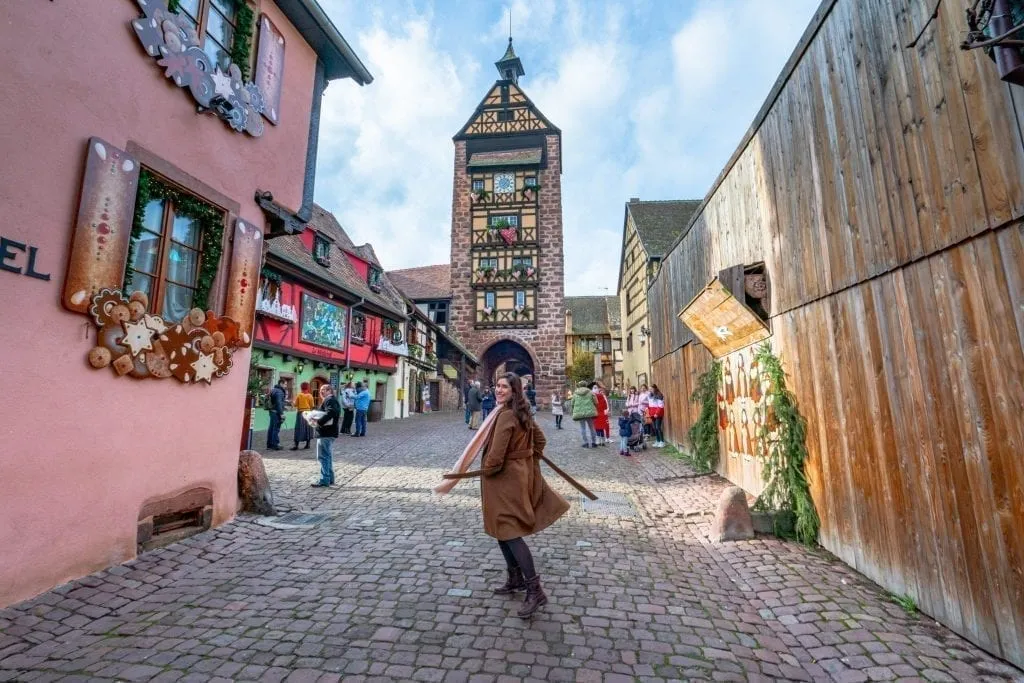
If you can, we recommend taking at least one food tour during your 2 weeks in Europe.
Food tours are one of our favorite ways to get our bearings in a new city while learning about the culture, history, and neighborhood through something we can all appreciate: a tasty meal.
We’ve taken food tours in several countries around the world, including many in Europe, and have never walked away unsatisfied!
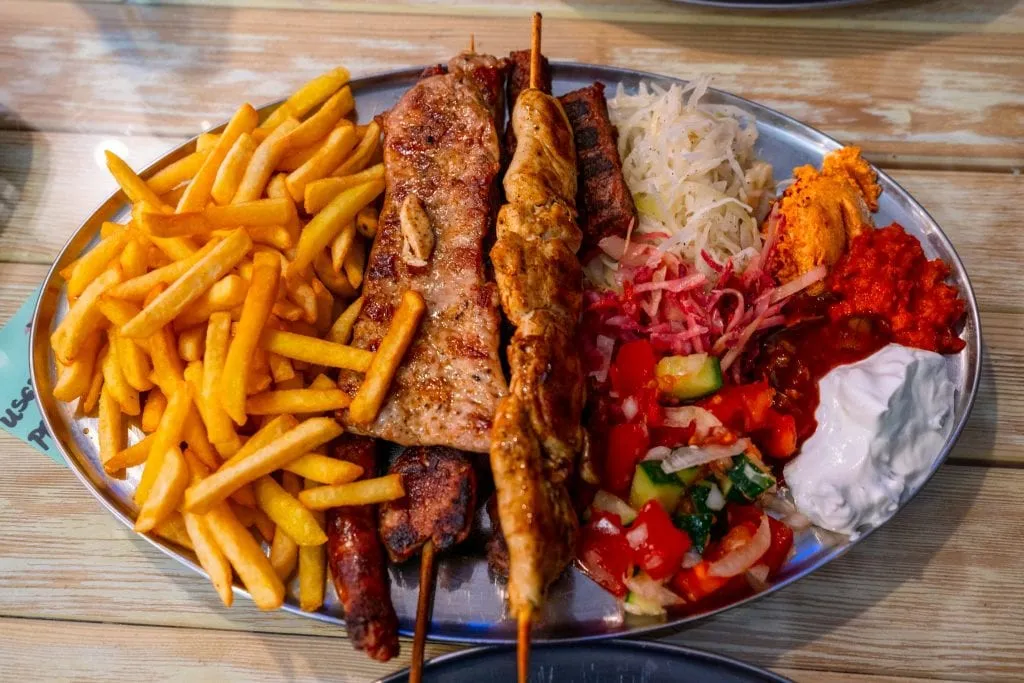
You do need to pay to use the restroom… sometimes.
Throughout Europe, public restrooms are generally available for a fee (typically either half a Euro or a Euro).
If you’d like to avoid those costs, be sure to take advantage of available restrooms in restaurants and museums as you sightsee !
Also, toilet paper is far from guaranteed in public toilets on the street.
We recommend carrying a small pack of tissues with you just in case.
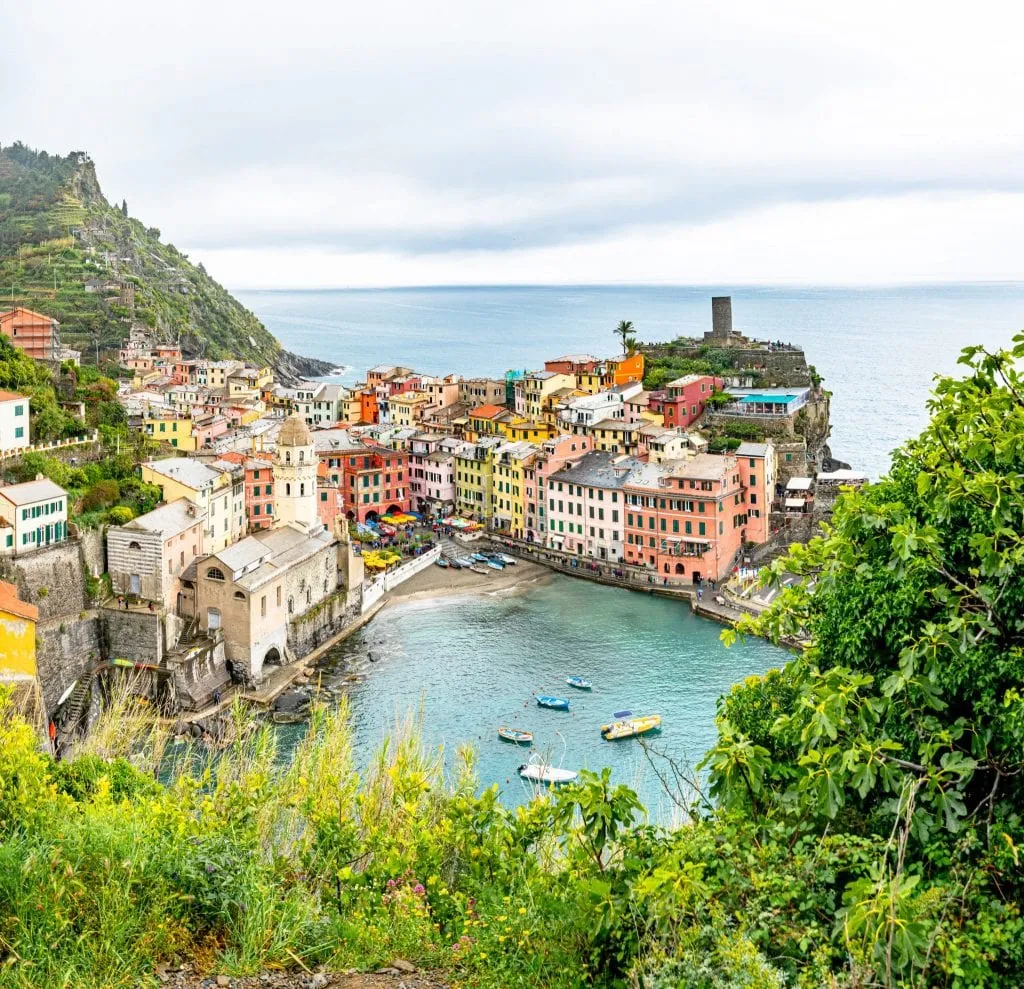
Will I need an adapter?
Most likely, yes!
Luckily, adapters are cheap to buy and easy to carry–we recommend picking these up before you go.
Keep in mind that the UK and a few other countries ( Ireland , Malta ) use a separate plug from the bulk of the continent.
If you’re heading to a place that uses UK plugs, you’ll want these adapters as well.

Is a money belt a good idea?
It depends, honestly.
We used a money belt for our first trip to Europe and for a couple after that.
Back then, we weren’t used to life in bustling big cities, and though we knew that thieves knew about them (because they definitely do), Jeremy found them comfortable enough to wear and it was an easy way to keep our belongings a bit more secure.
If you’re not used to traveling in a big city or watching for pickpockets, I don’t think it’s a terrible idea to use one– this is the one we used and we had no complaints–but I also don’t think it’s necessary, especially if you’re comfortable in large cities.
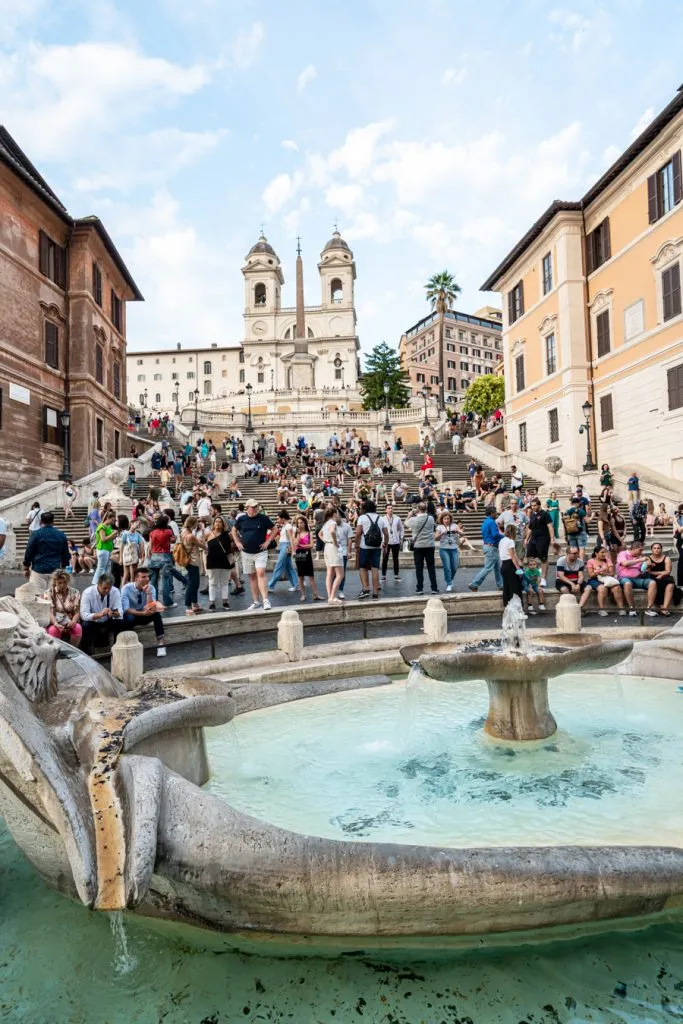
Is the water safe to drink?
Usually, yes.
We drink out of the tap just about anywhere in Europe.
In rare cases where the water is not safe to drink (usually in remote areas of southern and eastern Europe, or in very old buildings with iffy pipes), there will generally be large and obvious signs stating so.
If you’re worried about it, though, you can always ask your hotel concierge or host about it!
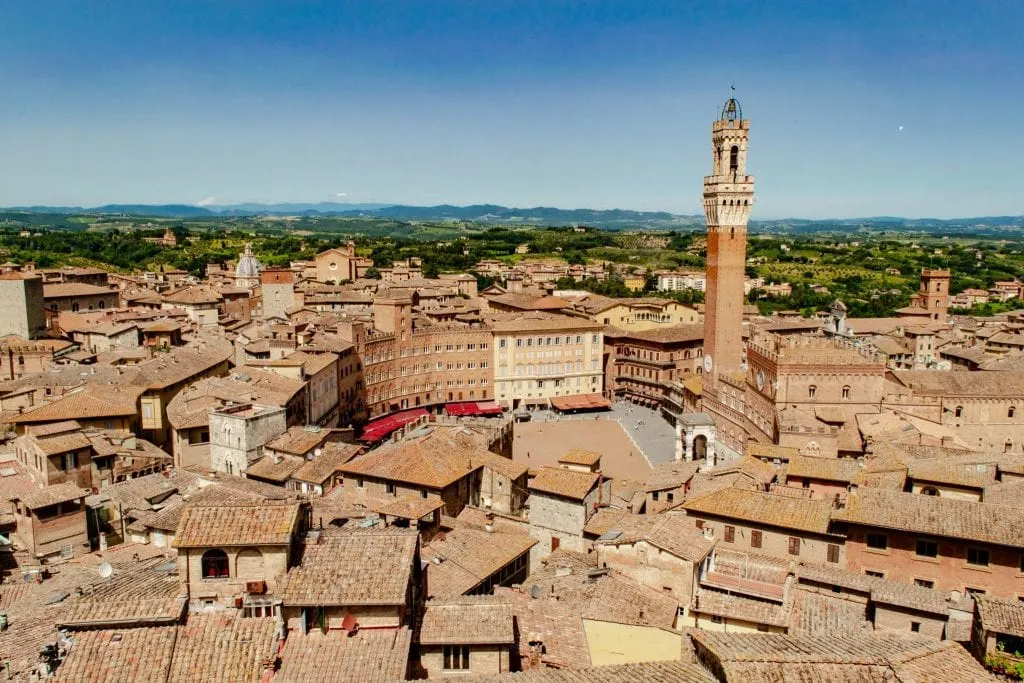
Is it worth going to Europe for 2 weeks?
This is a pretty common question, and honestly, I get it: with long and expensive flights, it’s easy to wonder if flying to Europe for “only” 2 weeks is worth it.
But yes, it absolutely is!
Two weeks in Europe is long enough that you’ll have plenty of time to get past jetlag, visit several destinations, and have a wonderful trip packed with memories.
Now whether or not it’s worth flying to Europe for just one week is a bit more controversial… but we love to travel Europe so much that we still say yes (for some people).

How extreme is the language barrier?
It varies significantly, of course, but generally, it’s not nearly as difficult as first-time visitors to Europe worry before they arrive (ourselves included).
We recommend learning basic phrases in the language of the countries you are visiting during your 2 week Europe itinerary, but this is usually more for good manners than out of necessity.
While you can absolutely find monolingual Europeans in virtually any country, especially in smaller cities and towns, the people employed in customer service roles and in the tourism industry in major cities–in other words, where most or all of your 2 weeks in Europe will likely take place–generally speak some English.

How many European countries should you visit in 2 weeks?
For most travelers, we recommend roughly 3 “base” destinations for a 2 week Europe trip, plus a couple of day trips from there to mix things up.
These can all be in one country (for example, here’s how we recommend spending 2 weeks in Italy ), or they can be in 3 separate countries!
There are plenty of exceptions to this standard layout, of course, but it’s a doable but exciting number of destinations to work with for most 14 day Europe itineraries.

When should I tip?
While this is very country and industry-dependent, generally speaking, tipping is not nearly as prominent in Europe as it is in the USA, and you’ll virtually never need to tip over 10%.
In some countries, you may also tip 5-10% at restaurants, while in others, you might round up the bill or leave nothing at all.
Frequently, a “service charge” will be automatically supplied to the bill which serves the purpose of a tip.
For tour guides, a 10% tip is common.
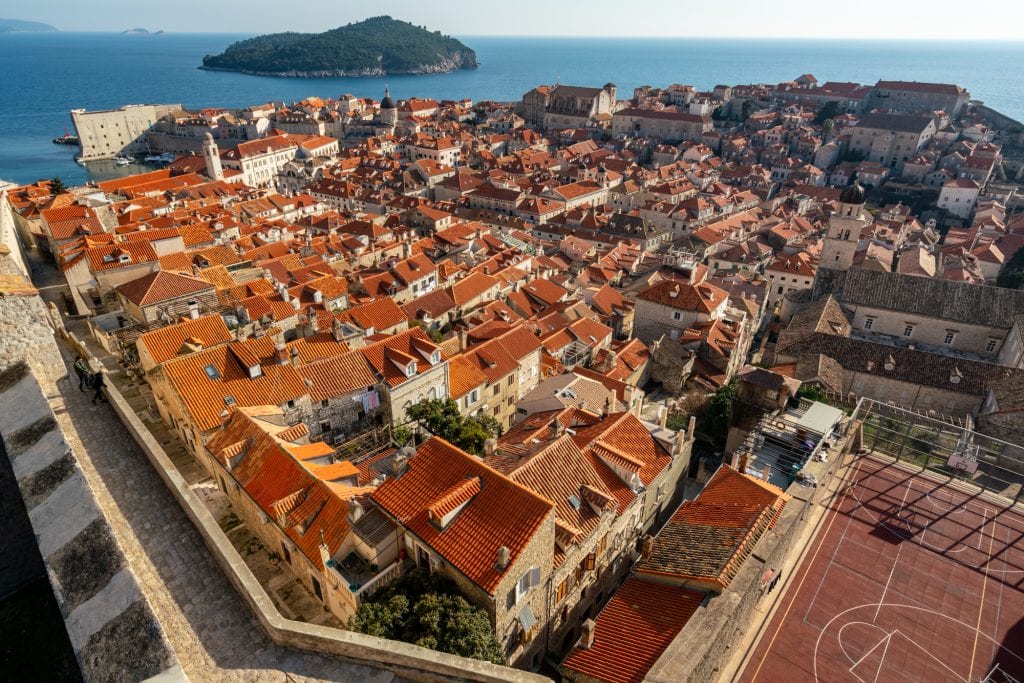
What’s the best month to visit Europe?
All of them, except August.
I kid–somewhat–but honestly, every single month in Europe has its perks!
For a concise answer, the late spring (April-May) and early fall (September-October) are considered ideal by most travelers.
August is specifically difficult because it’s not only very hot in many of Europe’s most popular destinations, but most Europeans take vacations then, so many places (especially in the mountains and on the coast) are at their priciest.
If we absolutely had to visit Europe only during one month for the rest of our lives, we’d pick September, though October is a very close second.

What’s the cheapest month to visit Europe?
It depends–trying to spot the northern lights in Tromso would be one exception to this, for example–but for standard first time Europe itineraries like the ones I outlined in this blog post, January and February are often the cheapest months to visit.
When the Christmas markets are over and the gray weather settles in, you can score great deals on vacations in Europe (and have plenty of room to stretch out at iconic monuments).
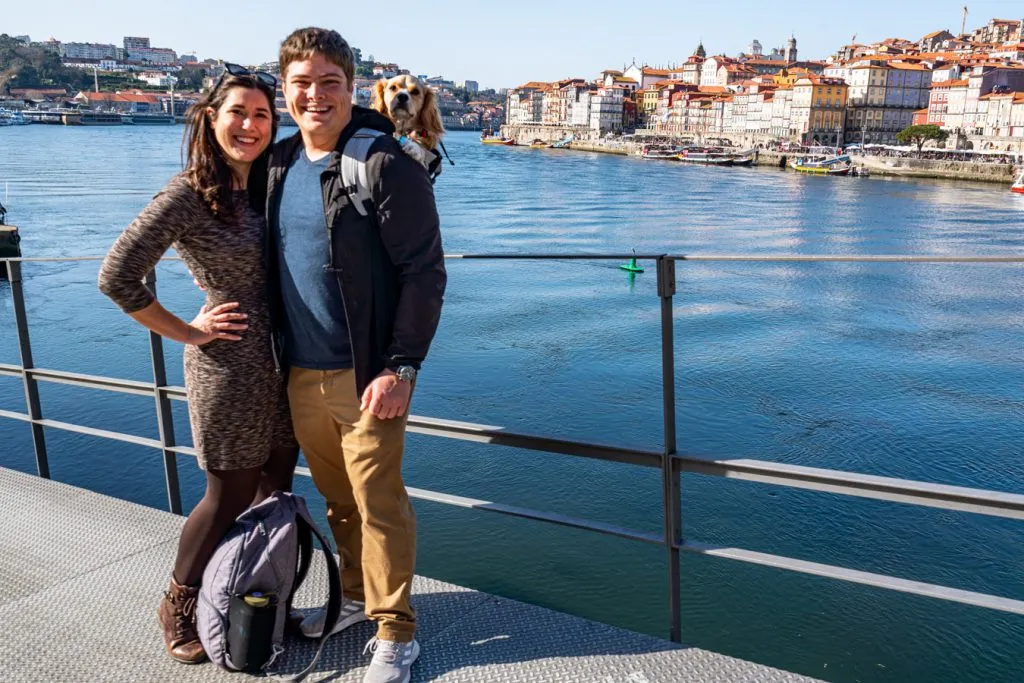
How far in advance should I book my trip?
For plane tickets, as soon as you can commit to dates!
Not only will this allow you to have more time to plan and budget with a bit of structure, but it will also spread out your costs a bit more.
During peak seasons, like coastal locations in the summer or popular destinations during the Christmas season in Europe , you’ll want to book your hotels as far in advance as you can commit to them as well.
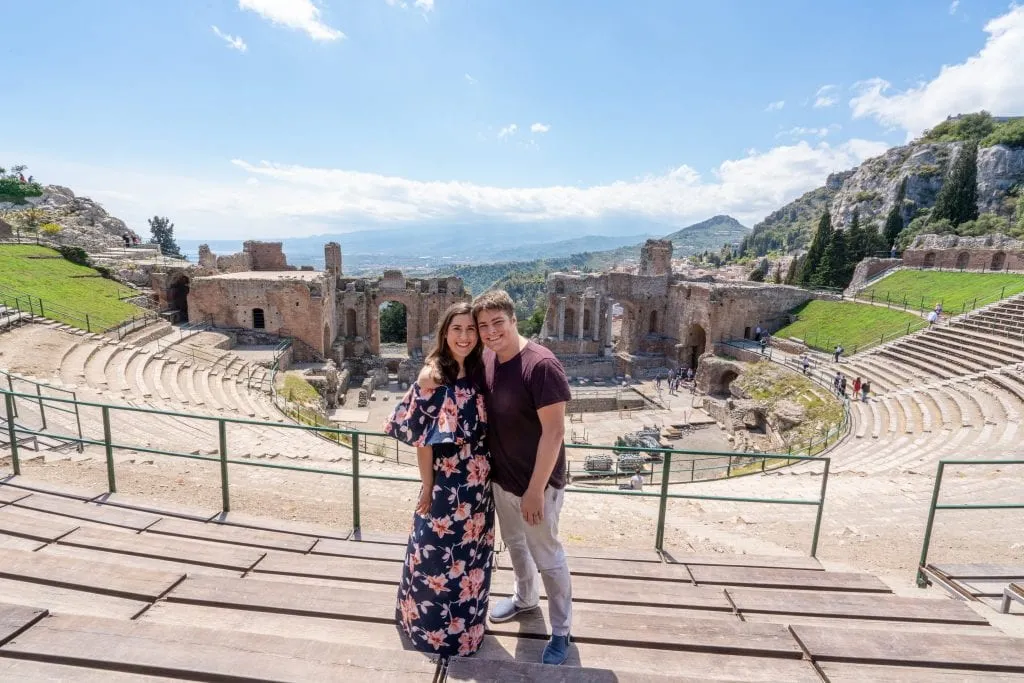
Can you do Europe for $100/day?
This depends a lot on the traveler, group size, etc, but my initial, instinctive answer is:
If you don’t include plane tickets to and from Europe, yes, absolutely, without a doubt–we’ve done it many, many, many times (as a couple).
The key is to shop for deals, visit during the off-season, not shy away from less common destinations (especially in Eastern Europe and the Balkans), and travel slowly.
The fewer destinations you visit, the cheaper a trip generally is!
If you want to stick to Western Europe, southern Spain , southern Portugal, and southern Italy can all be bargains (as compared to places like Paris and London) as well.
Here’s how we manage our travel budget.
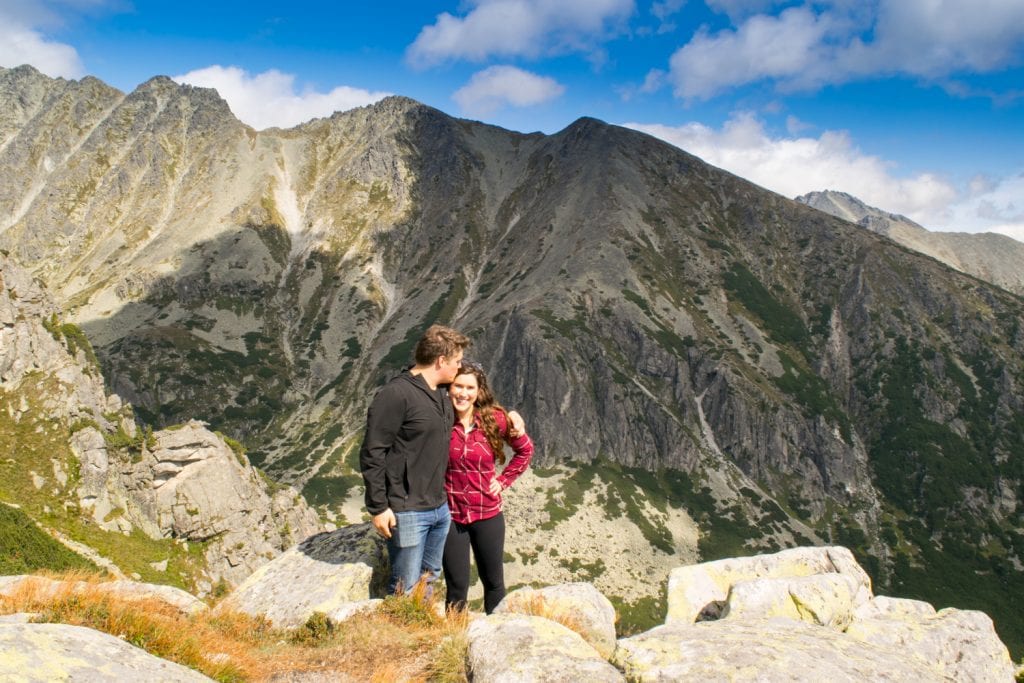
We’ve put together detailed packing lists for various seasons in Europe, so be sure to check out our complete suggestions for spring , summer , fall , and winter before you head off on your 2 weeks in Europe.
We go into far more detail on what to wear in Europe there !
To get you started, though, here are a few essentials that should definitely be at the top of your list .
Travel Insurance — We don’t ever suggest traveling without travel insurance–anything can happen, and it’s better to be safe than sorry during your 2 weeks in Europe.
Check travel insurance policy inclusions and prices for your trip here.
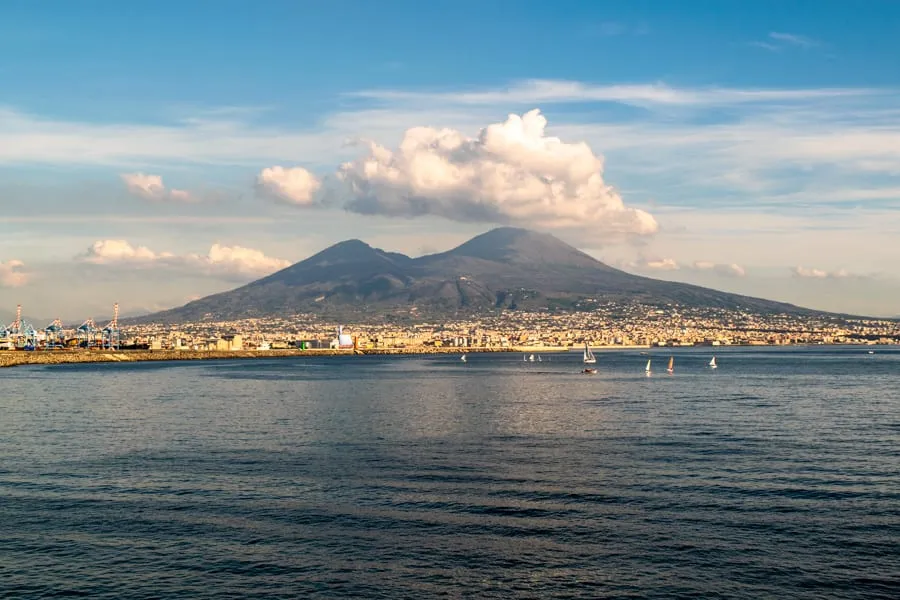
Pacsafe — We can’t recommend our Pacsafe enough!
This travel safe is affordable, sturdy, easy to pack, and will help keep your valuables safe in your hotel room (not that you should need to worry much about theft from your hotel room during your trip to Europe, but it’s better to be safe than sorry!).
Comfortable Day Bag — We currently use Pacsafe’s sleek anti-theft backpack and love it, but if you don’t want to shell out the cash for this trip, that’s totally understandable.
Just aim for something comfortable to wear, not flashy, and medium-sized–we used a Northface Jester backpack for years and loved it as well.

Travel Adapters for Europe — If you’re coming from outside of Europe, you’ll definitely need adapters for your electronics.
Be sure to check the requirements for any particular countries you visit–the United Kingdom, for example, is well-known for using different plugs than most of the continent.
Portable USB Charger — Don’t stress about your phone dying while you’re sightseeing!
Add a portable charger to your 2 weeks in Europe packing list.

Hand Sanitizer — We carry this everywhere, and never been sorry to have it floating around in our day bag.
Travel Journal — If you want to keep a travel journal during your 2 week Europe trip but can’t commit to a huge amount of writing each night, I can’t recommend the One Line a Day Journal enough.
I’ve been using it for more than 5 years now (I’m on my second volume!) and I absolutely love it.

In the process of booking your Europe trip and eager to keep planning?
We’d love to help!
You can browse all of our general Europe blog posts here , find articles about specific places through our destinations page , or check out these guides:
- Your 13-Step Guide to Traveling to Europe for the First Time
- The Perfect 2 Week Spain and Portugal Itinerary (+ Essential Tips!)
- How to Travel Europe By Train: The Ultimate Guide (+ Tips!)
- 11 Quick Tips for Finding + Using Toilets in Europe
- Prague, Vienna, Budapest, Beyond: Epic Central Europe Itinerary
[convertkit form=3127238]
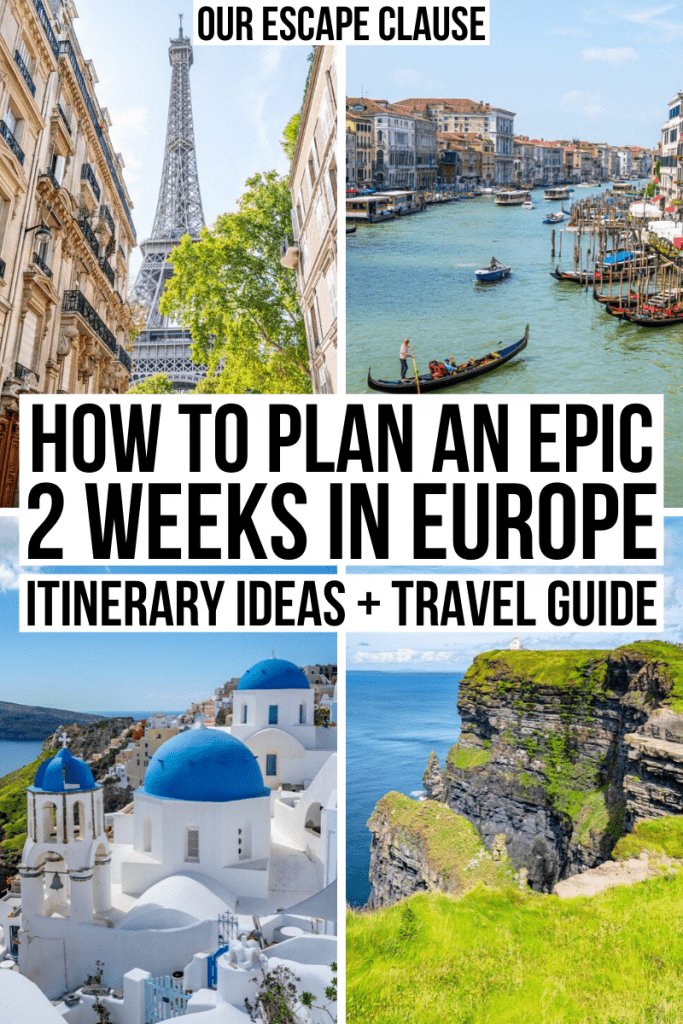
About Kate Storm

In May 2016, I left my suburban life in the USA and became a full-time traveler. Since then, I have visited 50+ countries on 5 continents and lived in Portugal, developing a special love of traveling in Europe (especially Italy) along the way. Today, along with my husband Jeremy and dog Ranger, I’m working toward my eventual goal of splitting my life between Europe and the USA.
58 thoughts on “How to Plan an Epic 2 Week Europe Trip (+ Europe Itinerary Ideas!)”
Great post! I’m actually working on my own 2 week itineraries through Europe post, but I might wait to publish until next year, when I’ve visited a few more spots. I totally agree that the key is to slow down and not switch cities every day or two. Three nights is perfect and sometimes more for the big cities. And yes, multi-city flights are so helpful so you don’t have to backtrack!
Thanks, Riana! We definitely love to slow down whenever we can. 🙂
Hi Kate! This is the BEST post related to Europe Itinerary out of the 1000 other posts that I have checked.
I am from India and I am planning for a trip in February end.
I definitely want to visit FINLAND (so that’s definitely in my list). From there, I am planning for Bupadest,Croatia OR Budapest, Prague OR Budapest/ Vienna.
Do you think this will be good for 2 weeks?
Waiting for your reply. And thanks a ton for such a beautiful detailed post.
Thank you so much, Akshay, that’s wonderful to hear!
That sounds like a wonderful itinerary. Croatia is a bit further out of the way than the other places, but it’s peaceful and beautiful during the winter and fairly simple to get to via a budget flight.
Hope you have an incredible trip to Europe!
Oh my goodness Kate, thank you so much for this post! This is exactly what I needed for my boyfriend and I to plan our trip to Europe in 2020. We want to visit Italy, Spain, France, and England but Greece and Croatia look amazing too! It’s so hard to decide.
Thank you, Jessica! So glad you found our blog helpful.
It is SO hard to decide, and honestly, it never gets any easier in my experience! All of those places are absolutely amazing, so no matter what you decide I’m sure you guys will have an incredible trip.
Italy, France, and Spain are really easy to pair together if you want to keep logistics simple, but really any combination of those would work.
What about panning around the seasons? Isn’t the Amalfi coast and Italy in general super hot during August?
It’s always nice to plan around the seasons when you can, but it depends on your availability!
Italy can be hot in August but it depends very much on where you go. It averages around 85 F / 30 C on the Amalfi Coast in August, which I have to admit isn’t enough to bother us, but it depends on where you’re coming from. It is high season there, though–very, very generally speaking, August is an expensive and crowded time to visit beaches in Europe because it’s when many Europeans tend to take their vacations and head to the coast!
Planning a trip in 2023-24 for my daughter’s graduation present. I was thinking maybe 2-3 weeks. On this trip, how much did you spend in total? I might end up being more because I usually pay for more luxurious than most, but will help with a little expectation of costs plus COLA increases obviously over the years. I figured I should start planning and saving now. lol
Hi Steven! We put this together based on years of traveling in Europe, so unfortunately I don’t have a specific figure to offer. So much varies, and can be impacted by where you go, how fast you travel (ie, how many times you change destinations), of course luxury as you mentioned, etc, etc. Generally speaking, for two people, I would say that $100/person/day is a good lower-midrange figure to calculate (excluding airfare), $200/person/day starts edging toward luxury territory, and of course, the sky is the limit.
That’s INCREDIBLY general, though. You’d be better off narrowing down which countries you plan to visit and calculating based on how long you plan to spend in each of them.
A few things to look at to give you an idea: price of hotels, price of day tours, projected cost of moving between destinations, and average cost of a meal. Those figures should give you a backbone to estimate a budget from.
What brand are the boots you are wearing in the photo “Comfortable Day Bag.” My wife loves them. Gift idea for when we go to Europe 🙂
Those are Ugg Kesey Motorcycle boots, and I love them too! Just got them out again for fall last week. 🙂
Hi kate I am planning to visit europe sometime in 2023(may/june) with my wife and son. Could you please guide me with an itinerary for 15 days Or so?? Swiss, italy, France, spain. After that we will go to a friend in England. If possible, the expenses involved as well. Thanks
Hi Abhijit! I’m not a travel agent, so that’s a bit beyond my scope. 🙂 Generally speaking, though, I’d recommend parring your itinerary down to 2 countries, or 3 at the absolute maximum. 4 countries in 15 days is a lot of travel! Luckily, all of those destinations pair well together, so you can mix and match fairly easily. Also very generally speaking, Italy and Spain will be the most affordable, and Switzerland by far the most expensive–but that depends a lot on where you go and what you do!
Hey Kate, All your pictures are amazing! What kind of cameras do you bring with you? And do you edit your photos? If so what do you use for that, they are all really bright, great pictures.
Hi Stefanie! Thank you so much! We’ve used different cameras over the years, but our main camera these days is a Sony A7 rIII. We love it, and yes, all the photos taken with it are edited in Lightroom. 🙂
Hi Kate, THANK YOU for the great article! I have booked my flights for a 2 week trip next spring, into London and out of Paris. I’ve been to both cities before, but do hope to get a few days in paris again. It’s stolen my heart.
What do you recommend in terms of getting from London to Rome, fairly quickly, and cheaply? I arrive into London mid-day and had hoped to just figure it out at the airport (Gatwick). Do you think that’s possible?
Thank you so much, Sarah! Your trip sounds fantastic.
I’d definitely plan on flying between London and Rome–it’ll be fastest and most likely cheapest, too. Check budget carriers like Ryanair, etc.
If you’re planning on flying out to Rome the same day you arrive in Gatwick, I’d absolutely recommend booking before you arrive. Be sure to double-check and make sure you’re flying out of Gatwick, too, or have time to change airports.
Hope you have an amazing time!
Oh wow I’m doing the same trip with my 3 sons. And unfortunately is the month that she said it’s the worst to go ..in August…oh well🤷🏽♀️ can’t do anything about it how but I am worried about the expense tho..
Love your information. I’m planning a trip to Italy and then we want to go to Salzburg as well in the summer of 2023. Our first time to Europe. We will be 60 in 2023 and we think we can plan this without going through a company. After reading your information, I feel comfortable. Two questions about hotels and transportation. What would you recommend for safe places for hotels in those two countries? We don’t need luxury but just comfort and clean. Would you recommend using rail between cities in Italy and it looks like you can travel from Venice to Salzburg by rail? Thoughts?
That’s great to hear, glad we could help!
Venice to Salzburg by rail is very doable in a day and a scenic journey. You’ll probably have to make a change, but that’s workable. Personally, we’d opt for it over flying in a heartbeat.
For hotels, I have several recommendations in our specific Venice and Salzburg posts (you can use the search bar to pull up everything we have on both cities). The centers of both places are quite safe, I wouldn’t worry much about that in a well-reviewed hotel.
Hope you guys have an unforgettable trip!
AWESOME Post!!!!
Please let me know if you have posted anything similar in 2020 or 2021. My wife and I are bringing our three teenagers and we will likely choose the Food & History trip. We both would like to speak with you if possible as we are planning our trip for December.
Hi guys! We don’t run tours ourselves, just provide information for independent travelers, but we’re always happy to answer a few questions about possible itineraries!
Hi Kate, THANK YOU for the amazing Pic ,for now i’m in South Africa Cape Town I’m planning a trip to Italy , France & Austria next year 2022 for 2weeks , Would you recommend using rail or Via Road way .
Thank you in advance & best Regards En vous remerciant d’avance et cordialement
Sounds like a fabulous trip!
Rail vs car depends entirely on where you’re going. If you’re sticking to cities, I’d recommend going by train. If you want to enjoy the countryside, a car could be helpful.
You can also mix-and-match, and rent a car for only part of your trip if you’re going to be in the countryside only part of the time.
Thank you for this awesome post, Kate! My husband and I are wanting to take our first international trip to Central Europe early spring 2022 and have reviewed your Central Europe post. What type of difficulties have you faced with international travel during COVID-19? Any issues with a country on your itinerary going into lock-down or no longer allowing tourists from the US?
We haven’t personally run into any issues with lockdowns interrupting our plans but of course, it’s always possible and things are changing constantly.
Most, if not all, countries in Europe are accepting vaccinated and/or tested US visitors now and haven’t shut their borders to US citizens again since the initial reopening. All of the countries included on our Central Europe itinerary are currently among them.
In addition to entry, some countries are requiring proof of vaccination in order to do certain things like eat in restaurants or check into hotels. Portugal, where we are now, is among them. It’s a very simple process as long as you have the paperwork in order!
Generally, if you plan to visit Europe from the US in 2022, we recommend arriving with proof of vaccination, a negative COVID test (check regularly for specifications as your flight gets closer), flexibility, and the expectation that you’ll wear a mask indoors and potentially in crowded outdoor areas.
I am not a public health expert, of course, and European countries all set their own restrictions, but in the early stages of planning, that’s what I’d keep in mind!
The reaction that we’ve seen from readers who visited in the second half of 2022 has generally been that it’s easier than they expected, but as we’ve all learned way too much in the last 2 years, none of us can predict the future!
Thanks so much, Kate! It definitely seems like flexibility is key as well as continuously monitoring each country’s individual rules for a multi-country trip. I think right now Hungary isn’t accepting tourists but fingers crossed that will change soon so we can replicate your trip. 🙂 Cheers to more adventures for you in 2022!
Hi Kate, my family is in the beginning phase of planning our first international trip and have decided on Europe! I really liked your recommendation of arriving and departing from different airports and I think departing from London would make sense (we’ll probably want to spend the most time there). All we’ve decided is to vacation for somewhere between 2-3 weeks, and we want to see London and Ireland (oh and I want to stay at least one night in a castle hotel!). Would you have any recommendations on destinations or experiences to share? Thanks!
How exciting–nothing like your first trip abroad. 🙂
We actually still haven’t been to London, which is a huge shame! Fingers crossed that 2022 is the year.
Ireland, on the other hand, is one of our absolute favorites! If you search “Ireland” on the top right corner of the blog (or on the pop out menu on mobile), all of our blog posts will come up, but this is a great one to start with: https://www.ourescapeclause.com/10-day-ireland-itinerary-ireland-road-trip/
We spent a night in this castle (slash manor house) and had a fantastic time: https://www.ourescapeclause.com/belleek-castle-county-mayo-ireland/
Ireland is one of our favorite places for road trips on the planet. You’ll love it!
Great post, thanks!
Need your advice here 🙂 We will be landing in London, staying there 3 days, then train to Paris (staying in Paris for 3 days). We fly back home from Lisbon and have 3 options: night train to Nice (spend some time there and then a few days in Lisbon), fly to Napoli (spend some time there and then fly to Lisbon) or fly to Lisbon and discover a bit more of Portugal… What would you recommend?
Oh and we are travelling with two teens who have never been to Europe… I’m trying to pack as much stuff, but wonder what would be too much :/
That’s a lot of hard choices! Each and every one of those destinations is a delight (and we’re living in Lisbon right now).
I’d opt for Nice if you’re looking for coastal views, picturesque villages, and something logistically simple. Nice is a delightful city and the day trips to nearby villages like Eze as well as Monaco are phenomenal. It is the most formal and pricey of the 3 cities and will have a resort feel near the coast in the summer.
Naples is a much less manicured city, it’s a love-it-or-hate-it place (we love it). I’d argue that it has the best food of the 3 options, but those are fighting words and many would disagree. The day trips are equally stunning but very different. If you or your family has an interest in ancient ruins, Pompeii and Herculaneum are unmatched. Visiting the Amalfi Coast or nearby islands is also doable, but it’s a trek if you’re staying in the city center. Keep in mind that there’s no train service to the Amalfi Coast proper, you will need a bus, car, or ferry to get beyond Sorrento.
Lisbon is delightful but honestly, our favorite parts of Portugal lie outside the city. Porto, in the north, has a much more regal feel while Lisbon is fairly spread out. The Duoro Valley (also in the north) is magnificent for port tastings and views, Sintra’s palaces located just outside of Lisbon are must-sees, and if you want to head to the south, the Algarve is incredibly striking.
Logistically speaking, I’d make sure you have at least 2-3 days in Portugal at the end of your trip before flying out, regardless. With 3 full days, you can spend 2 in Lisbon and take one day trip (probably to Sintra but the coastal town of Cascais is also easy and lovely).
If you have time to do that and add another stop for 3 full days, I would check detailed flight and train schedules and let that guide you–the logistics alone may make the choice for you.
That got a bit long, but I hope it helps! 🙂
Thanks a lot for the precious information!
Hi Kate! I know you said you are not a travel agent but are open to a few itinerary questions! We have recently done a European Cruise which hit almost all of Italy! We are wanting to go back independently. I am highly interested in Ireland, but would also like to see Paris. My husband is interested in Netherlands, Germany, Switzerland. With a 14 day trip wanted, what areas do you think we should do (based on best places to see, with allotted time?)
& Austria! 🙂
That is a lot of very different places, but you’ll definitely be able to pull together a great trip! I’d recommend narrowing it down to around 3 destinations, 4 if you’re comfortable moving quite fast and two of them are close together.
Ireland is definitely the odd one out geographically, but if you use two one-way tickets instead of flying in and out of the same airport, it can work (it’s what we did on our first multi-country Europe trip many years ago).
Since you’ll likely have 1-2 flights in this itinerary regardless, which destinations you pick can come down to a combination of your absolute favorites and what makes logistical sense. Paris is a very popular place to fly in and out of, so it’ll likely be easy to work in.
I’m not sure which parts of Germany your husband is interested in, but parts of western Germany have simple train access to The Netherlands and/or France.
As far as what places I’d personally visit, Ireland and Paris are two of my favorite places on the planet, so I’m biased! Switzerland’s mountain landscapes are truly beyond belief, so if you’re looking for nature (and aren’t concerned about the budget), it’s a winner.
Germany is also gorgeous, both its nature and many of its cities, though it’s quite big and varied–with a big trip like this, you’ll want to choose one small corner of it (Bavaria is a popular first stop, but you can also look at places along the Rhine, which makes more sense if you’re hoping to visit Paris or The Netherlands by train before or after).
The only part of The Netherlands we’ve had a chance to visit so far is Amsterdam, which is visually stunning but will be extremely crowded–probably more so than anywhere else you’ve listed, as there’s less room to spread out there than in, say, Paris.
When it comes to your itinerary, I’d recommend that each of you pick one place that is your absolute first choice, plan on a trip to those, and then fill in the 3rd and possible 4th destination based on what makes logistical sense as far as what planes/trains/buses are available to the spots on your shortlist.
Also, if you do need to book high-speed train tickets, book them ASAP, as prices increase as your trip gets closer.
What a wonderful blog, just when I feel like I’ve read them all I find another really helpful article. Heading to Europe for 1 month in May. Keen on Spain, definitely Italy, and probably 2 days in London and Paris respectively (arrival and departure). Feel like we have space for one more place and can’t figure out which is the better option (Portugal, Croatia or Greece) for potentially 5 days? Any recommendations?
Thank you for sharing all your wonderful insights.
That’s tough, because all 3 are fantastic but very different!
I’d probably recommend (if I had to choose), Greece for beaches/swimming and small towns, Portugal for cities, and Croatia for a combination of all. But we adore each and every one of them, so hard to go wrong!
Portugal fits nicely into your Spain section geographically, so there is that to consider.
Hi, Kate! Super love your blog. I just booked a trip to Europe for August, was thinking of going to France, Spain, and Italy in 2 weeks. Or should I cut it down to 2 countries? Hope to hear from you!
Less relevant than the countries are the destinations within them–I wouldn’t go more than 4 places in 2 weeks, max.
So if you’re hitting up Paris, Barcelona, and Rome, for example, your plan is fine. If you want to go to 2-3 places within each country, it’s time to cut it down. 🙂
HI! Thanks for the fantastic blog! My husband and I are planning our first trip to Europe from Canada and are feeling quite overwhelmed by all the choices! His family is from Holland, so we are spending one week touring with them for the first week of May, and then will stay an additional 2 weeks after that. What would you recommend? We are not keen on France but everything else looks so great, and it was good to read that you don’t recommend trying to fit everything else in, which is what we might otherwise be trying to do. Any suggestions for the 2 weeks after Holland?
Hi Michele,
That’s so exciting! You guys are going to have an amazing time.
Without knowing your tastes or the season you’re traveling, the sky is truly the limit when planning your itinerary! Anywhere that sounds exciting to you is going to be worth it. With 2 weeks, I’d opt for 1-2 countries and no more than 4 base destinations (3 would be even better).
I started trying to make a list of some of our favorite countries in Europe for you, but just backspaced the sentence because I was ending up just listing every country, LOL. But Italy is one of our special favorites that we would recommend to just about anyone!
We will be in Holland for the first week of May so we could do the other two weeks either before or after that (or split one before and one after). The suggestion to cut down to less rather than more is helpful – it’s our first time to Europe and everything looks like something we should see! We are 50 and really like most things – some scenery, some castles, etc. Do you think it would be do-able to do Germany and Italy on top of Holland? Any specifics on what you love in Italy? I am really NOT a crowd person, so we’re really going to try and avoid huge crowds or I’ll lose my mind 😉
A week in Germany followed by a week in Italy is definitely doable!
Personally I’d opt for either southwest Germany (Black Forest, Heidelberg, Burg Eltz) or Bavaria.
We love virtually all of Italy, but if you want something somewhat more offbeat that’s in the top half of the country (for geography reasons), I’d recommend looking into Emilia-Romagna.
It’s the region east of Tuscany, and has similar appeal with far fewer tourists. It’s also gorgeous and a culinary dream–Emilia-Romagna is the origin of many iconic foods like parmigiano-reggiano and traditional balsamic vinegar.
A few destinations in the region to poke into as you research: Bologna, Parma, Ravenna, Ferrara, Modena. The micronationa of San Marino is also accessible from there!
Kate-what a remarkably comprehensive, detailed and resourceful blog! I love the considerations offered from different perspectives. My family of 4 (including 2 kids ages 10 and 6) will be traveling to Paris for the second half of August for 2 weeks to visit family. We have already been to Paris a few times so this time around, I would like us to explore more of Europe for some of the time, ideally via trains. I am thinking of staying in Air B&B’s as we have been enjoying that accommodation when we travel locally within the US but would love your perspective on this (vs hotels) considering the cultural and language differences in certain destinations as well as any recommendations for either you may have. Based on some research, some destinations I came cross purely based on travel distance via train from Paris are Switzerland (3 hrs), Barcelona (6.5 hours! would probably have to be an overnight train for the kids), London (2 hrs, have family we can see), and Greece (2 hours), Belgium (1.5 hrs, also some family we can see). My goal is to show my kids/family different cultures, ways of living and experience foods, interesting architecture, beautiful cafe’s etc. Also curios if any of these can be “day trips”. I do not have specific destinations yet to see at these locations and would love your input. From your article, it sounds like limiting to 2 destinations maybe best (outside of Paris) and your thoughts may help me narrow down where to focus. Thanks so much and look forward to reading your insights on this.
So glad you found it helpful, Tez! Sounds like you guys have an amazing trip planned.
I’m sure you already know this, but August is the height of peak season for European travelers visiting the coast and mountains, so some destinations will be quite crowded and expensive (book your hotels and train tickets ASAP, especially in a group of four).
I’m assuming Greece is a typo, so I’ll pass over that one–pretty sure it’s much further than 2 hours even by plane. 🙂
Luckily Paris is a huge train hub for getting across Europe, so you have plenty of options! Most of them will take longer than it looks on the map once you navigate connections, train times, etc. We highly recommend using Omio to search exact routes and dates, and keep in mind tickets will increase in price as you get closer. With kids, you’ll probably want to search by the fastest available routes.
London, Belgium, and Switzerland all jump out at me from your list–simple to access and incredible. The Jungfrau region in Switzerland is pure paradise, though a bit further away.
You may also want to look into Amsterdam, it’s only 3.5 hours from Paris by train.
With the right schedule, you can get as far as Venice in a day from Paris (we’ve done this), so Italy is an option for you as well, as is Germany.
Essentially, the more you stick to major cities, the easier it will be to navigate solely by train. Smaller towns and cities are often connected, but you’ll virtually always need to pass back through the main city of a region to make your way back to Paris.
You may want to take a look at this post as well, we talk a lot more about train travel here: https://www.ourescapeclause.com/travel-europe-by-train/
Hi Kate Love your blog, lots of useful information. My husband and I are planning a 10 day trip to Europe end of April to early May. At the moment we are looking at flying from the US RT to Paris. We’re thinking of possibly going to Amsterdam and Belgium as well. this will be our second trip to Paris. We are open to other suggestions. Do you have any other recommendations?
Happy to be able to help, Daisy!
Paris + Amsterdam + Belgium is an excellent itinerary and doable in 10 days. It’s actually a route we recommend ourselves. We have posts on all those places, but here are our suggestions on spending 3 days in Belgium to give you an idea of what you can cover in a short time frame: https://www.ourescapeclause.com/3-days-in-belgium-itinerary/
Paris is extremely well-connected by rail (you can be in Venice in 9 hours or Munich in under 6, for example), so as far as ideas for other destinations go, the sky is the limit!
If you choose to extend your original itinerary, a few additional places that you might consider along that route are Strasbourg/Alsace, Heidelberg, and Cologne.
Thank you for your blog.. We are travelling to Europe for 14 days the end of May. Flying Calgary to Dublin, doing a couple days at the Isle of Man races then hopefully, London, Paris, Rome. Your blog shares what to pack for clothing in Summer, Fall and Winter, what would you recommend for spring? We are trying to decide if we take the trains or flights from London, Paris and Rome. We aren’t planning any beach time. Also, what do you recommend for luggage? I’m leaning towards a rolly carryon but have every size hard shell case and multiple back country camping packs.
So happy you find it helpful!
Funny you mention spring packing ideas–I’m actually working on a post for that right now. It will hopefully be up next week. But off the top of my head, you’ll definitely want a travel umbrella and to pack in layers. The end of May is a beautiful time to be in much of Europe but the weather could be unpredictable–you may want sundresses on some days and light jackets on some evenings!
As far as luggage, either is completely fine. There are advantages to both backpacks and suitcases, but as long as you’re comfortable carrying your bag up and down staircases, carrying (or rolling) it down the street for 10+ minutes, and loading it into and out of trains and/or cars, you’re good.
As far as trains vs planes–London to Paris can definitely be a train, but do a time and cost-benefit analysis between that and a plane (depending on the dates, your travel style, etc, you may choose either). Paris to Rome is better done as a flight!
Thank you very much for sharing your wisdom. We are really excited.
Hi Kate, Thank you so very much. You have provided an AMAZING amount of helpful information. Can you pretty please help me with the best location to travel to 1st, 2nd, 3rd & 4th and the best way to get to the locations? (We will NOT be doing any driving).I’m a 55 years old woman. I live in USA. I’m planning the 1st International trip for me and my husband for either the 1st or 2nd week of September 2023. My biggest challenge is knowing where to start and end the trip, based on logistically traveling to the different destinations, as well as, the best way to get to each destination.Here are the the things I have planned. I know you mentioned you’ve never been to London but i’m hoping you can assist based on me providing the area I want to be in. *LONDON-7 NIGHTS I’m a theatre/adrenaline junkie person so Theatreland West End of London near (North of the River Thames. 3-Plays (evening events) 2-Hour Sherlock Holmes museum (near West End) 1-Hour Ghost Bus tour (nearest tube stations are Embankment and Charing Cross) 4-Hours-day walking tasting tour (near London Bridge Station) 1-day Harry Potter Studio Tour (Leavesden London) 2 -Nights Theme park “Alton Towers” located Alton, Staffordshire near Manchester and Birmingham. (stay onsite at the parks resort)*PARIS-3 NIGHTS Moulin Rouge (BD de Clichy area) L’ATELIER DES LUMINERES -DIGITAL ART MUSEUM I would like to visit just one of the haunted castles in Paris (depending on recommendation) Château de Puymartin Château de Brissac Château Lagorce Château de Chambord Château de Versailles* GERMANY 3 NIGHTS-Phantasialand Theme park (located Bruhl Germany) Stay onsite at the parks resortThank you for any advice or suggestions you can provide.
Hi Melvina,
I definitely can’t speak to getting around London in detail, though a combination of the tube and buses will likely be doable! You can add cabs as needed as well.
In Paris, the metro is so dense you should have no issue getting around. Assuming you are planning to do the usual Paris sights (Eiffel Tower, Louvre, etc), our Paris itinerary might be able to help you out (and has hotel recommendations): https://www.ourescapeclause.com/3-days-in-paris-itinerary/
For the chateaus, Versailles is by far the closest to Paris and you can get there by RER train. Château de Chambord in the Loire Valley is doable via an organized day trip like this: https://www.getyourguide.com/paris-l16/loire-valley-castles-wines-day-trip-from-paris-t70389/?partner_id=1OI4D21&utm_medium=online_publisher&placement=content-middle
The others are way too far from Paris for day trips, so I’d focus on Versailles and/or Chambord this time.
Hope you have a wonderful time! 🙂
Thank you so very much.
Hi, thank you for this comprehensive post! We are planning a trip this summer and will be going to Paris, Rome, Florence and Amsterdam. My question is about changing money. We were in Iceland last year and used Apple Pay or credit card everywhere, never needed cash and didn’t get any. Is that possible in either France, Italy or Netherlands? Should I plan on getting cash for taxis, tips, etc?
Happy to help!
I’d definitely recommend having some cash with you as you travel, especially for small purchases like coffee, gelato, etc. Most hotels in Italy will require the city’s tourist tax in cash, too. Some taxis and tips will be best done in cash as well, and occasionally very small, offbeat tourist attractions.
While cash-only restaurants definitely aren’t the norm in any of those cities, they’re not unheard of, either.
Overall, I’d say you’re most likely to avoid cash entirely in Amsterdam and most likely to use some of it in Rome and Florence, but that’s not a hard and fast rule by any means (I used some cash on my trip to the Netherlands last spring, for example).
We find that the easiest way to get cash, by far, is to withdraw Euros from any bank’s ATM once you’re already in Europe (avoid Euronet–use an ATM branded by an actual bank). Luckily, since all the places you’re visiting use the Euro, you won’t need to worry about changing currency beyond that. 🙂
Hi Kate, thank you for this great, and helpful post! We’re are planning a trip to Europe for the first time in September for next year in 2024. My plan is to visit Spain, Italy and I’m still undecided on the third country to visit. What country would you suggest or advised that we can visit that has beautiful scenery, mountains, lakes, etc. We like the city, but we also want something where we can hike out in nature like Iceland maybe, Switzerland. Any tips on that? Also, is it cheaper to stay in hotels, Airbnb’s? Thank you!
Spain and Italy–two of our favorites! You guys are going to have a great time. 🙂
The hardest part about picking a third country with your criteria will be narrowing it down between many excellent choices–you really can’t go wrong.
Switzerland is absolutely spectacular, if the Alps are what you’re looking for, it’s iconic and hard to beat in every category except the price tag.
Germany and Austria also offer beautiful mountains and lakes and are a more budget-friendly than Switzerland.
The French Alps are also wonderful–towns like Chamonix and Annecy offer plenty of mountains, lakes, etc.
And, for a a wild card, you don’t necessarily need a third country at all: the Dolomites in Italy have everything you’re looking for.
Any of those that appeal to you and fit your budget will be a great addition to your trip. They’re well-connected to Italy and each other by train, the travel times aren’t too far, and they’re all phenomenal places to visit.
One small thing to keep in mind if you’re planning to travel by train a bunch is that Spain isn’t very well connected to the rest of the places you’re considering by rail–you may want to consider flying in and out of there.
Iceland is definitely far out of the way, but assuming you’re traveling to and from North America, look into the Icelandair stopover program if you want to add it on! I will say that while it does offer mountains, lakes, and beautiful scenery, it’s a very different vibe than Switzerland or any of the surrounding Alpine countries, so take a close look at the specific destinations and see if it’s what you’re looking for. It’s a stunning place, just very different than the others. Here’s one of our Iceland posts if you want to get a feel for it: https://www.ourescapeclause.com/10-day-iceland-ring-road-itinerary/
Leave a Comment Cancel reply
Live Adventure Travel contains affiliate links and is a member of the Amazon Services LLC Associates Program. If you make a purchase using one of these Amazon links, I may receive compensation at no extra cost to you. See my Disclosure Policy for more information.
2-Week Europe Itinerary by Train + 3 Different Route Options
Europe is by far one of the best continents to travel around. It has the convenience of hopping on a train, bus or plane and arriving in a new country in a matter of hours. Yet, each place differs greatly in culture, landscape and food. It’s really like a giant playground for adults! But deciding on a 2-week Europe Itinerary by train can be a daunting task. Especially when there are multiple routes to choose from.
You have to take into consideration logistics, travel arrangements and budget. And believe me, it can be easy to find yourself pulling your hair out when it becomes clear that travelling from Paris to Budapest will take over 18 hours!

So, let me be your guide. I spent 4 months interrailing around Europe , testing some of the finest destinations on the continent. So, safe to say I see myself as somewhat of an expert when it comes to designing itineraries.
I have carefully put together 4 kickass two-week Europe Itineraries for you to explore. There is something for everyone, from city buffs, to nature lovers and hidden gem seekers!
2 Week Trip Europe: Table of Contents
Best way to travel europe in 2 weeks – getting around.
Now, before we dive into the itineraries we need to discuss the best mode of transport. Europe is quite easy to get around you have the luxury of trains, planes, boats and busses right at your fingertips. But…what is the best transport option to choose?
Let’s lay out the pros and cons of each…
Plane Travel: Being from Ireland plane travel is one of the only convenient options for me to reach most European countries but once I am on the mainland I stay clear of it. It can get expensive QUICK and no one wants to waste an entire day travelling to and from the airport.
Train Travel: This is by far my favourite way of getting around Europe. It’s quick, it’s cheerful and extremely convenient. I like the space I have on a train. The ability to get up and walk down the aisle on long journeys and the incredible views along the way. I am also a big fan of the interrail system which I will explain more about a little later in this post.
Bus Travel: This is definitely the most budget-friendly way of exploring Europe. Bus journeys can be extremely cheap but that is pretty much it. They also tend to be really long, uncomfortable and a very indirect way of getting to a destination. Don’t get me wrong I do use busses while in Europe but not as my main mode of transportation. And I don’t think it should be yours either!
Driving: I am a massive road trip fan. Nothing beats, blaring your favourite road trip tunes and the freedom of having your own set of wheels to take you from A to B. But, I don’t believe a car is the best way to travel Europe over a 2 week period. Trains are much more convenient and cover way more ground at a much faster rate.
2-week Europe itinerary: By train is the best way!
So, there you have it the best way to explore Europe is by train but that leaves us with one other question. Should you book each trip individually or buy a prepaid ticket like Interrail ?
There are pros and cons to both, you can of course put a lot of time and research into each train journey you intend to take. Watch the price and book when they are at their cheapest but personally, I find this method a little restricting.
With Interrail you are free to book your seat on the day (providing no reservation is needed – then it’s 24 hours before). The ticket is prepaid so you can get as many local/regional trains as you please and high-speed trains come at a considerable discount.
2-week Europe trip: 4 Different Itineraries
I have carefully designed 4 different itineraries for you to choose from for your two weeks in Europe. These routes feature some incredible hidden gems, beautiful landscapes and iconic cities. I go into more detail about each destination later on in the post and have provided little skip tags for those who want to read more about the itineraries that suit their needs best.
Salzburg (Austria) ➡ Hallstatt (Austria) ➡ Munich (Germany) ➡ Interlaken (Switzerland)

Paris (France) ➡ Amsterdam (Netherlands) ➡ Munich (Germany) ➡ Prague (Czechia) ➡ Budapest (Hungary)

Split (Croatia) ➡ Zagreb (Croatia) ➡ Lake Bled (Slovenia) ➡ Ljubljana (Slovenia) ➡ Budapest (Hungary) ➡ Krakow (Poland)

Two Week Europe Trip Budget
The Cost of a Two Week Europe Trip can vary greatly from person to person. Especially when it comes down to individual people’s style and spending habits. I have broken down an estimate of how much each category of traveller may spend on a two-week trip. From a budget-conscious person to a mid-range traveller to someone who is looking for luxury experiences.
I also have a detailed guide on how much I spend on my 4-month budget trip across Europe if you have an interest in real-life spending.
2-week trip to Europe Cost: Budget Travellers
Accommodation: Budget travellers can find hostels or budget hotels for around €25 to €60 per night depending on the countries they decide to visit. For a two-week stay, this amounts to €350-840.
Food: If you stick to cafes, takeaway food, and occasional home-cooked meals, you could spend around €15/20 per day, which sums up to €210/280 for two weeks.
Travel Expenses: Transport shouldn’t cost all too much if you intend on walking most places. I’d allow for €50 to be on the safe side.
Activities: Free city tours, hiking, or visiting free museums can keep the activity costs down to about €100.
Total for two weeks: €710-€1270
2 weeks in Europe Cost: Mid-Range Traveller
Accommodation: Mid-range hotels can cost around €100-150 per night. For a two-week stay, this would be €1400-2100
Food: If you intend on eating out for every meal then expect to pay around €10 for breakfast, €15 for lunch and €20+ for dinner. So, €45 a day will equal to €630 for a 2-week trip.
Travel Expenses: Consider spending around €300-500 for comfortable travel options. Or, you could keep costs down by walking most places.
Activities: Entrance fees for premium attractions and activities might add up to around €200-300.
Total for 2 weeks: €2530-3530
2 Weeks in Europe Budget: Luxury Travellers
Accommodation: Luxury hotels or apartments can cost €200-850+ per night, so it is hard to give a total in this category but it would range from €2800-€11900.
Food: Eating out for Breakfast, Lunch and Dinner in more expensive restaurants will set you back anywhere from €100-€150 per day. About €1400-2100 for the 2 weeks.
Travel Expenses: Private transfers or first-class train compartments could cost around €700-1000.
Activities: Private tours and high-end experiences might add up to another €500-1000 provided you are not doing them in every destination.
Total for 2 Weeks: €5400-16000
2 Weeks in Europe Itinerary: Route Option 1
I wanted to kick start this 2 weeks in Europe itinerary with a really unique route. I typically see people planning European trips around the major cities and attractions. Never really leaving time for those amazing hidden gems located in some of the most beautiful places on the continent. So, if you are a nature lover who loves to explore more off-the-beaten-path locations this is the Europe Itinerary for you!
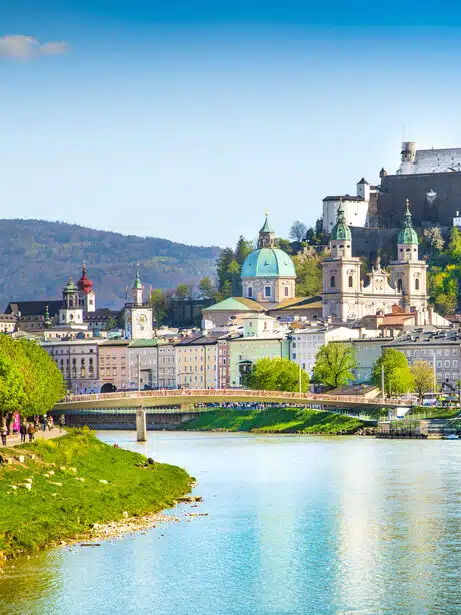
Stop 1: Salzburg
Nestled among rolling hills and overlooking the Salzach River, Salzburg, Austria, is an enchanting city filled with historic charm and modern allure.
It is the birthplace of the world-famous composer Mozart. And this is evident throughout the city.
The city has a vibrant art scene, bustling markets, and sumptuous cuisine.
Salzburg’s charm isn’t only limited to its historic architecture and vibrant streets. The city is also famously known as the filming location for the classic movie, “The Sound of Music.”
Fans of the film can dive into its magic by taking a themed tour that traces the steps of the Von Trapp family, offering a nostalgic journey through the film’s iconic sites.
Things to do in Salzburg
- Visit Mozart’s Birthplace: Discover the roots of the musical genius, one of the world’s most famous composers Mozart, by visiting his birthplace .
- Tour the Hohensalzburg Fortress: This is a must-do when in Salzburg as it has the most incredible 360 views of the city.
- Stroll through Mirabell Gardens: These beautiful gardens are a must-see for any visitor. The immaculately maintained flower beds and sculptures provide a serene place to relax. They get busy fast so make sure to visit early!
- Enjoy a Boat Ride on the Salzach River: Experience Salzburg from a unique perspective by taking a leisurely boat ride on the Salzach River.
- Indulge in Austrian Cuisine: Sample traditional Austrian dishes like Wiener Schnitzel, Sacher Torte, or Apfelstrudel to get a taste of the local culinary culture.
- Take the Sound of Music Tour: For fans of the classic film, this tour is a must. It takes you to various shooting locations of the movie, including the Mirabell Gardens and Leopoldskron Palace. You can relive your favourite scenes and enjoy the beautiful surroundings that make Salzburg so unforgettable.
Where to stay in Salzburg:
For travellers on a budget, the YoHo Youth Hostel is a fantastic option. It’s comfortable, clean and located in city center, offering easy access to Salzburg’s attractions.
For those looking for a balance between cost and comfort, numa I Mozart is a great mid-range choice. It’s conveniently located and offers well-furnished rooms, a hearty breakfast, and friendly service, offering stellar value for your money.
For a truly luxurious stay, consider the Hotel & Villa Auersperg . This family-run boutique hotel exudes charm and elegance, with beautifully designed rooms, a peaceful garden, and a rooftop spa. It’s ideally located within walking distance of the city center, making it a convenient base to explore Salzburg

Day Trip Option 1: The Sound of Music Trail
One of my favourite simple day trips from Salzburg is the beautiful Sound of Music Trail starting from the small town of Werfen. Reachable by a 40-minute train journey from Salzburg.
The trail brings walkers along a stunning hiking path with opens out with an incredible view of the surrounding meadows.
This particular location is famous for the “Do Re Mi” scene from the movie. There are even dedicated photo spots where you can take a picture with July Andrews and the kids.
The walk is not particularly hard and suitable for most fitness levels. It takes about 40/45 minutes to reach the viewpoint. I recommend bringing a picnic for a scenic lunch.

Day Trip Option 2: Berchtesgaden National Park
I fell in LOVE with Berchtesgaden National Park when I first visited. So much so that my day trip quickly turned into two.
Just over an hour’s train journey from Salzburg lies this incredible natural playground with plenty of things to do and see.
I recommend catching the boat from Königssee Lake and hiking out to the Obersee und Röthbachfall. This is a day you will not forget.
If you have another day to spare I recommend exploring the park some more. Stopping at places such as St. Sebastian Church, Hintersee Lake (walk from the church) and Wimbachklamm Gorge. All these are easily accessible by park busses.
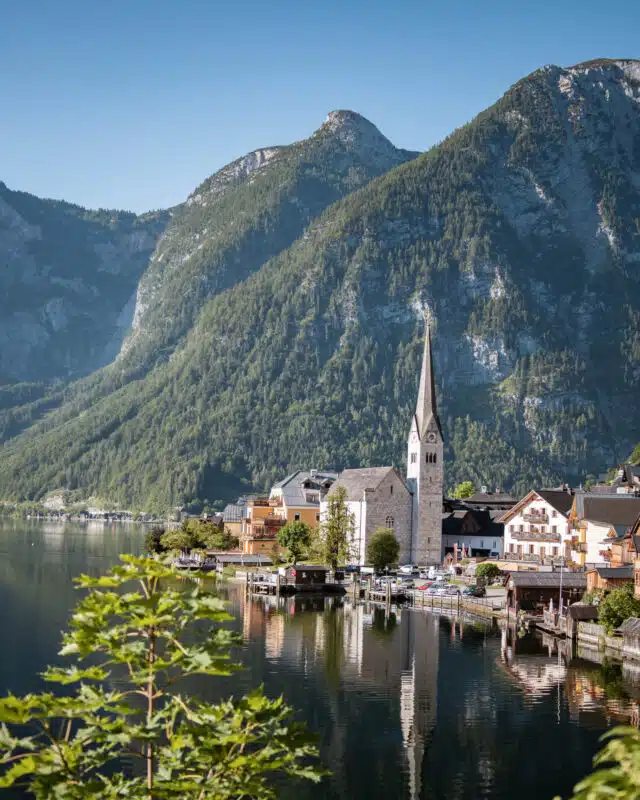
Stop 2: Hallstatt, Austria
Hallstatt is one of those locations that will truly take your breath away. It’s one of the most fairytale-like places I have ever seen.
Home to soaring mountains, a pristine lake and a charming village. This little town can get BUSY, especially in the summer months.
So, I recommend walking up early to catch a glimpse of the famous viewpoint without any crowds. Because come 10am you will be fighting for a spot at the barrier.
Whether you’re looking for outdoor adventures, a peek into history, or simply want to enjoy the serene beauty, Hallstatt has something for everyone.
Things to do in Hallstatt
- Take a peaceful boat ride on Lake Hallstatt and enjoy the stunning views of the surrounding mountains and Alpine houses.
- Ride the funicular railway to the Skywalk Hallstatt viewing platform for a panoramic view of the beautiful village and lake.
- Explore the local market square , lined with charming, traditional shops where you can discover local crafts and delicacies.
- Explore the Dachstein Ice Caves, a fascinating natural spectacle just a short drive/bus ride away from Hallstatt.
- Take a thrilling walk on the Five Fingers viewing platform (joint ticket with the Dachstein Caves), a unique attraction sitting over 400 meters above ground level, extending like a hand over the cliff edge. Offering breathtaking views over the Alps and Hallstatt below.
Where to stay in Hallstatt
- If you prefer a peaceful setting, consider Seehotel Grüner Baum . It’s a charming hotel right on the lake.
- For those looking for a more modern option, Heritage Hotel Hallstatt offers stylish rooms with lake views.
- If you are looking for somewhere that is budget-friendly consider staying in the nearby town of Bad Goisern. Located just a 10-15 minute train ride from Hallstatt station is a beautiful rural town surrounded by mountains. I stayed in the Bad Goisern Hostel and could not recommend it more. It was a lovely stay.

Stop 3: Munich
The next stop on our trip is an amazing German city, Munich. There is more to this city than meets the eye. So, much, so that I have been 3 times and I never want to leave!
World Famous for it’s Autumn time celebrations, Oktoberfest, it’s mighty beer halls and delicious barbarian food!
When you are in Munich you NEED to visit the English gardens. Specifically, the Eisbach River to see the talented surfers glide along the waves.
Yes, that’s right! You can surf…in the city. How cool is that?!
The old town square is also a lovely place to walk around, with the Neo-Gothic-styled architecture you feel as if you are walking around a fairytale.
You also NEED to make your way up the town hall tower. The views are to die for!
Things to do in Munich
- Visit the Old Town Square, The Marienplatz . You can get 360 views of the square from the old town hall tower.
- Stroll around the English Gardens and watch the talented surfers.
- Explore the cities beautiful gardens
- Go on a local food tour to try traditional dishes like pretzels, sausages, and beer in local beer halls.
- Tour the world-famous beer hall, Hofbräuhaus. And treat yourself to a tasty beverage.
Where to stay in Munich:
For those on a budget, the Wombats Werksviertel Hostel is an affordable yet comfortable choice. It’s located near the city center, close to the main attractions, making it a convenient base for your explorations in Munich.
For those willing to spend a bit more, Eden Hotel Wolff is a mid-range option that blends comfort with a touch of luxury. It’s just a stone’s throw away from the central train station, making it an ideal location for those planning day trips to surrounding areas.
If you desire a luxury experience, consider booking a suite at Bayerischer Hof . This five-star hotel, located in the heart of Munich, offers top-notch amenities and services. From the beautiful rooftop pool to the exquisite in-house restaurant, every detail at this hotel is designed to provide guests with a memorable stay.

Day Trip Option: Neuschwanstein Castle
Munich is the perfect hub for those dreaming about visiting Germany’s famous fairytale castle, Neuschwanstein.
Pictures do not do this place justice. It is so beautiful.
Now, I must admit it can get incredibly busy so I’d advise arriving as early as possible.
It’s a 2h30mins train ride to Füssen, and then a short bus journey to the castle.
Once you arrive you can walk up to the famous viewpoint of Marienbrücke Bridge (30/40 minutes) or pay for a shuttle bus.
Not too far of a walk from the castle is Alpsee Lake, a beautiful spot to sit back and enjoy nature. The water is turquoise in colour and really takes your breath away.

Stop 4: Interlaken, Switzerland
Switzerland left me in complete awe. I decided to visit on a speeding last-minute trip and it did not disappoint.
That is why I am advising you to include it in your 2-week Europe Itinerary . It’s a destination that almost feels like a dream.
I based myself in Interlaken and used this elegant town as a base to explore the surrounding areas.
Starting with the fairytale-like village, Lauterbrunnen. Words can not describe how beautiful it is here!
I recommend hiking from the town to Mürren, taking the cable car back down the mountain and then visiting Trümmelbach. One of the most tremendous waterfalls I have ever seen.
On day two I suggest taking a trip up First Mountain for incredible views of the mountains and valleys from above. If you are looking for an easy yet scenic walk then I recommend walking out towards Bachsee Lake.
Where to Stay in Interlaken
Backpackers in Interlaken might find Balmers Hostel a perfect choice. This hostel combines affordability with comfort and offers a warm and friendly atmosphere. I made some incredible friends here!
For those who prefer mid-range hotels, Hotel Interlaken is an excellent option and has a rich history dating back to 1491. It also offers close proximity to the town’s center.
Luxury seekers can consider Victoria-Jungfrau Grand Hotel & Spa for their stay. This five-star hotel provides an unforgettable experience with its luxurious rooms, stunning views, and world-class spa facilities.
Related Post: How big is Texas compared to Europe? (This will SHOCK you)
Paris (France) ➡ Amsterdam (Netherlands) ➡ Munich (Germany) ➡ Prague(Czechia) ➡ Budapest (Hungary)
14 days in Europe Itinerary: Route 2
Get ready to set off on a fascinating journey through five famous European Cities. From the romantic streets of Paris to the enchanting canals of Amsterdam.
Your journey will take you to Munich, home to age-old Bavarian traditions and beer gardens. And one of the best locations for a day trip to the magical Neuschwanstein Castle. One of my favourite spots from my 4 month Europe trip!
Then, it’s time to explore the beauty of Prague with its mesmerizing architecture and picturesque streets.
Lastly, arrive in Budapest, a city known for its thermal baths and magnificent Danube River views.

Stop 1: Paris France
Paris is known as the city of love, and that is relevant for everyone, those who visit with a significant other, friends or solo.
Because you see…one thing is for certain, you will fall in love! This bustling city’s charming streets and famous buildings capture the attention of millions of tourists each year.
With its famous art scene, fashion, and culinary delights. It’s no wonder visitors fall in love with its rich history and iconic landmarks such as the Eiffel Tower, the Louvre, and the Notre Dame Cathedral.
Adding Paris to your 14-day Europe Itinerary will leave you with a lifetime of memories. It is also the perfect starting point with its fantastic train connections to other European destinations.
Things to do in Paris
- Take a snap of the iconic Eiffel Tower .
- Explore the Louvre Museum , home to thousands of works of art, including the Mona Lisa.
- Stroll along the Seine River and enjoy a cruise for spectacular views of the city’s landmarks.
- Take a walk down the Champs-Elysées and visit the Arc de Triomphe .
- Visit Notre-Dame Cathedral and admire its magnificent Gothic architecture.
- Looking for a free 360 view of Paris then make your way up to the rooftop of Lafayette’s Shopping Centre.
Where to stay in Paris
I stayed in the People in Paris Nation and it was perfect for what I needed. I only intended on visiting the city for one day. The rest of my time I spent in Disneyland. That is why The People at Paris Nation was the perfect location for me as it’s just a 40-minute tram ride away from the parks. The only downside to the hostel is there was no kitchen. Although, this is common among all hostels in Paris. The rooms are rather spacious, with a privacy curtain on each bed. The hostel is not located in the centre of Paris and public transport is needed to get in and out of the city. However, this is common for most hostels in Paris. Overall, I’d highly recommend booking a stay in The People Hostel at Paris Nation.
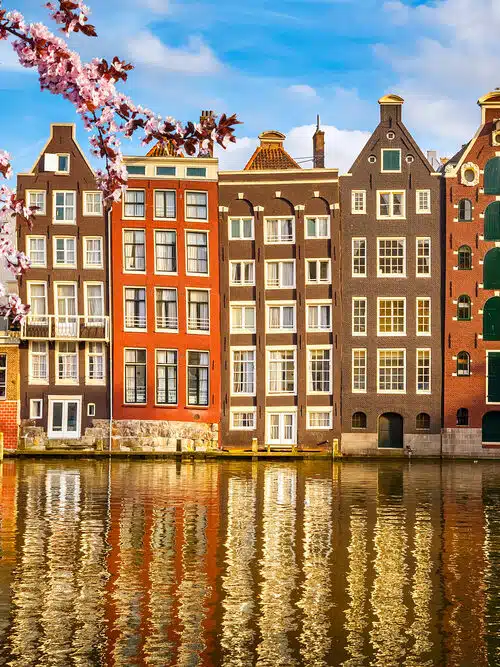
Stop 2: Amsterdam
Amsterdam is a city not to be missed. The charming streets, picture-perfect canals and heartbreaking history. It’s the ideal addition to the 2-week Europe Itinerary.
Amsterdam offers an equal blend of historical charm and a modern atmosphere.
The city’s museums house some of the world’s most famous works of art, including those of Van Gogh and Rembrandt.
A visit to the Anne Frank House provides a sad yet important insight into the city’s history, while a bicycle tour offers a unique perspective and a taste of the local lifestyle.
Whether you’re a history buff, an art enthusiast, or a foodie, Amsterdam has something to offer everyone.
Things to do in Amsterdam
- Visit the Van Gogh Museum: It houses the largest collection of Van Gogh’s paintings in the world.
- Take a Canal Cruise: Amsterdam’s canals are a UNESCO World Heritage site. A boat tour offers a unique way to see the city.
- Explore the Anne Frank House: Visit the house where Anne Frank and her family hid during World War II.
- Walk in the Vondelpark: Take a break in Amsterdam’s largest and most popular park.
- Discover the Bloemenmarkt: This is the world’s only floating flower market. You can buy all types of flowers, bulbs and souvenirs here.
Where to stay in Amsterdam:
- € – The Flying Pig Downtown : This is a lively, budget-friendly hostel located near Amsterdam Centraal railway station. It is well-known for its friendly atmosphere and social events.
- €€ – CitizenM Amsterdam : This contemporary hotel offers compact, functional rooms with all the modern amenities. It’s located in Amsterdam’s business district, a short tram ride away from the city centre.
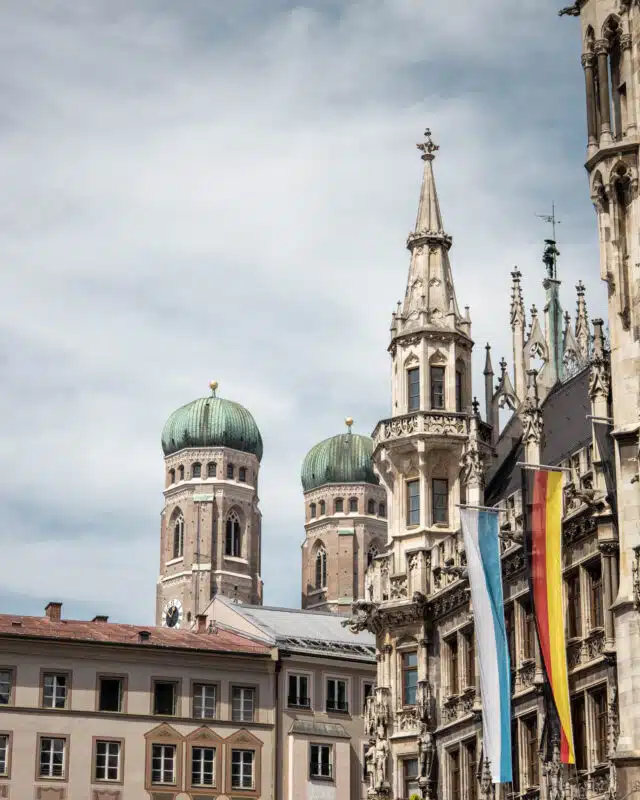
Munich is another amazing city that has so much more to offer than meets the eye. So, much, so that I have been 3 times and I never want to leave!
It’s famous for its Oktoberfest celebrations, beer halls and barbarian food!
One of my favourite things to do in Munich is visit the English gardens and watch the talented surfers do their thing on the Eisbach River.
Yes, that’s right! You can surf…in the city. Now that’s definitely something unique to just Munich.
- The Marienplatz , Munich’s old town square is a must-visit. Especially the views from the old town hall tower.
- Stroll around the English Gardens and watch the talented surfers.
- Walk around the many amazing gardens the city has to offer!
- Savor Bavarian cuisine: Try traditional dishes like pretzels, sausages, and beer in local beer halls.
- Participate in Oktoberfest: If your visit coincides with this annual festival, don’t miss the lively beer tents, traditional music, and festive atmosphere.
- Tour the Hofbräuhaus: Visit this world-famous beer hall for a stein of beer and some hearty German food.
Where to stay in Munich :
I stayed in the Wombats Werksviertel hostel while visiting Munich. This hostel is newly renovated and has a really modern interior. The dorms are extremely spacious with curtains on the beds for extra privacy. There are two ensuites in the room which was a massive convenience.
Munich is the perfect hub for those dreaming about visiting Germany’s famous fairytale castle, Neuschwanstein.
Now, I must admit it can get incredibly busy so I’d advise arriving as early as possible.
It’s a 2h30mins train ride to Füssen, and then a short bus journey to the castle.

Stop 4: Prague
Prague, the capital city of Czechia, it’s a breathtaking destination steeped in rich history and culture.
The old town is extremely charming with its eye-catching architecture, featuring a mix of Romanesque Chapels, Gothic Cathedrals, and Baroque Palaces.
The city is also home to the iconic Charles Bridge, adorned with statues of Catholic saints, and the magnificent Prague Castle, which provides panoramic views of the city.
Prague is a food lovers paradise! Threat yourself to traditional Czech dishes like goulash and Trdelník – one of the tastiest deserts in Europe!
While you are there don’t forget to leave a token on love on the iconic Lennon Wall!
Things to do in Prague
- Visit Prague Castle: Explore the world’s largest ancient castle, which provides stunning views over the city.
- Stroll across the Charles Bridge: This famous historic bridge crosses the Vltava River and is adorned with statues of Catholic saints.
- Explore Old Town Square: Here, you’ll find fascinating buildings like the Old Town Hall with the Astronomical Clock, Týn Church, and St. Nicholas Church. Don’t forget to climb the tower for a 360 view of the Old Town.
- Visit the John Lennon Wall: Once a normal wall, it has been filled with John Lennon-inspired graffiti and lyrics from Beatles’ songs since the 1980s. They often have markers outside it so you can leave a message of love.
- Explore Petřín Hill: Take the funicular up Petřín Hill and enjoy the landscaped gardens and great views over Prague. This is where the Eiffel Tower of Prague lies 😉
Where to stay in In Prague
Budget Option: The Czech Inn , this is a super social hostel, the rooms are clean, the bathrooms are big and they have a shared kitchen onsite. I found it quite easy to make friends here too.
Mid Range Option : Hotel Pod Věží Located right next to the Charles Bridge, this hotel offers comfortable rooms and exceptional service at a reasonable price.
Luxury Option: The Four Seasons Hotel Prague boasts elegant rooms, a high-end restaurant, and a prime location near the Old Town Square.

Stop 5: Budapest, Hungary
Budapest is by far one of Europe’s most picturesque cities that is 100% worth the visit. Walking around makes you feel as if you stepped straight out of a fairytale book.
The city beautifully balances the old and new. Divided in two by the Danube River, we have Buda and Pest.
Buda, the old city, is filled with historical sites like the Buda Castle and Fisherman’s Bastion, offering breathtaking views of the city.
Pest, the modern part, is a lively area with bustling markets, trendy cafes, and thriving nightlife.
Budapest is also well-known for its thermal baths where you can relax after a day of sightseeing.
Things to do in Budapest
- Explore Buda Castle: This historic castle and palace complex of the Hungarian kings offers panoramic views of Budapest.
- Visit the Fisherman’s Bastion: An architectural masterpiece that provides one of the best views of the city.
- Relax in Széchenyi Thermal Bath: Experience the city’s bath culture in this largest public thermal bath of Budapest.
- Stroll along the Danube Promenade: This scenic walkway stretches between the Elizabeth Bridge and the Chain Bridge in Pest, offering stunning views of Buda across the river.
- Visit the Hungarian Parliament Building: Marvel at the architectural beauty of this Gothic Revival-style building, which is one of the largest parliament buildings in the world.
- Take a boat tour down the Danube River to see Budapest from an alternative perspective.
- Go on a thrilling adventure by taking part in one of the city’s wonderful caving tours – one of my favourite things to do in Budapest.
Where to stay in Budapest
- Budget Accommodation: Wombats is a fantastic hostel in Budapest. It is easy to make friends, it is centrally located and in the heart of all the nightlife.
- Mid-range Accommodation: Bo18 Hotel Superior offers excellent value for money, with comfortable rooms and a good breakfast.
- Luxury Accommodation: Aria Hotel Budapest is a luxury boutique hotel with beautiful decor and a rooftop bar that offers panoramic views of the city.
Budapest is a city that has something for everyone. I can confidently say. Budapest is a destination worth putting on your European Bucket list . There is many reasons to visit for the city’s easy way of getting around, whether you choose to walk, use public transport or threat yourself to a taxi . It is incredibly safe , affordable and english is widely spoken throughout.
2 Weeks Europe Trip Itinerary: Route 3
This is one of the most incredible ways to spend two weeks in Europe, from the sticking beauty of the Croatian Coastline to the picture-perfect landscapes of the Julian Alpes. This route has something for everyone, from party nights in Budapest’s famous ruin bars, and romantic strolls down Venice’s winding streets to heartbreaking lessons from Poland’s past.
All of these destinations are well connected by train making them the perfect combination for your 2 weeks in Europe itinerary.

Stop 1: Split Croatia
Split is a beautiful city located on the Croatian Coast. It is known for its stunning beaches, crystal clear waters and historic heart.
It’s safe to say that this destination is a coastal paradise with plenty of nearby islands that could keep you busy for days!
The city’s narrow, winding streets are lined with beautiful old buildings that host an array of shops, cafes, and restaurants.
It’s home to a lively nightlife scene, friendly locals, and a rich history that dates back to the Romans.
It is a must-stop on any 2-week Europe itinerary and the perfect destination to kick-start your trip!
Things to do in Split, Croatia
- Explore the Old Town visiting places like Diocletian’s Palace and the Bell Tower for 360 views of the city.
- Go on a day trip , explore the nearby islands, visit the iconic blue cave or admire the beauty of Krka National Park.
- Take a hike up Marjan Hill for an alternative view of the city.
- Try Local Cuisine at Konoba Nikola. Taste authentic Dalmatian dishes at this well-loved restaurant.
Where to stay in Split
I stayed in the Enroute Hostel while in Split, it’s one I highly recommend. I made a great group of friends while I was there and it is only a 15-minute walk from the main tourist areas. The rooms are quite large in size however this didn’t really bother me as everyone has their own privacy curtain which is great if you where looking to relax for a few hours.
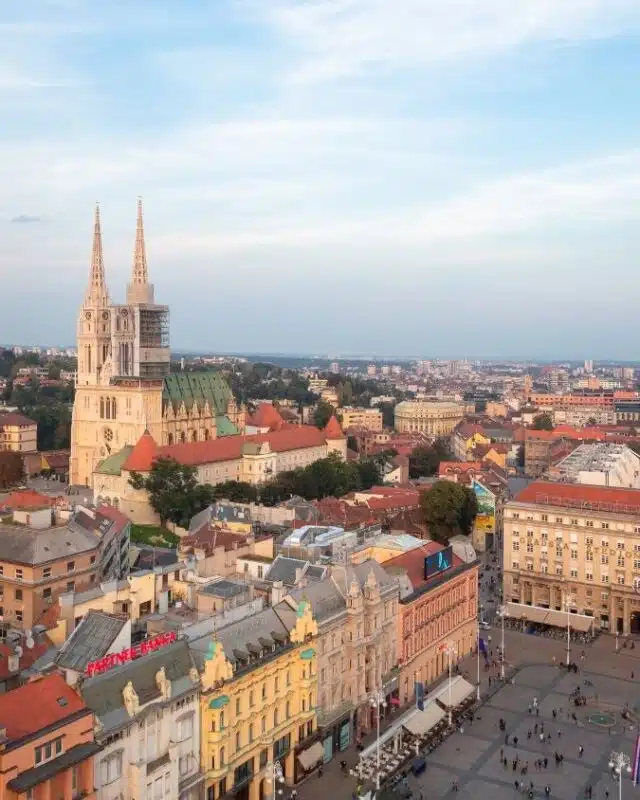
Stop 2: Zagreb Croatia
Zagreb is Croatia’s capital, a vibrant city steeped in history and cultural richness.
There is so much to see and do, from unique museums to quaint streets and stunning parks.
However, it is important to note, that our time in Zagreb is short. So, I recommend looking up things you would like to do while you are there.
There is something for everyone from history buffs to foodies and art enthusiasts.
Zagreb also has a bursting nightlife scene with multiple places to dance the night away.
Things to do in Zagreb
- Visit the historic Zagreb Cathedral on Kaptol, the most monumental sacral building in Gothic style southeast of the Alps.
- Explore the Museum of Broken Relationships, a quirky and unique attraction that offers a cathartic journey through the mementoes of failed relationships.
- Stroll through the vibrant Dolac Market, known as the ‘Belly of Zagreb’, where you can buy local produce and traditional Croatian specialities.
- Take a walk in Zrinjevac Park, a green oasis in the heart of Zagreb, adorned with fountains, busts of notable people, and a music pavilion.
- Enjoy a panoramic view of the city from the Lotrščak Tower, and make sure you are there at noon to witness the daily cannon firing.
Where to stay in Zagreb
I stayed in the Swanky Mint Hostel and it is the perfect spot for those who want to experience Zagreb by both, day and by night. It is very much a party hostel. It is easy to meet people in the Kitchen or by the rooftop pool (yes, they have a pool). The dorms tend to be a little cramped so I would only stay for a day or two, however, all the other hostel facilities are great. Book your stay here .

Stop 3: Lake Bled, Slovenia
Lake Bled is one of my FAVOURITE places in all of Europe. The dreamlike town is nestled in the beauty of the Julian Alps.
It is known for its stunning Castle perched on a cliff and the charming island with a church that sits in the middle of the lake.
There is so much to see and do in Bled from a simple stroll around the lake, experiencing the thrill of water sports, or simply soaking in the tranquil surroundings.
It’s a slice of paradise that promises a memorable experience to every visitor, making Bled a must-visit destination in Slovenia.
Things to do in Lake Bled
- A trip to Bled is not complete without visiting the beautiful castle that overlooks the lake.
- Rent a Plenta Boat and head towards the island in the middle of the lake. These boats are so much harder to row than you may think.
- Try Bled Cream Cake . This delicious local dessert is a must-try. It’s the perfect sweet treat after a day of sightseeing.
- The Vintgar Gorge is a must when visiting Bled. It is possible to get a bus here but honestly, I recommend walking. The views along the way are equally as stunning as the gorge .
- There are plenty of day tours of Triglav National Park . And I suggest you do at least one of them. This is such an underrated part of Europe.
Where to stay in Bled
To be honest I had an awful experience while staying in Castle Hostel in Bled. While I was there I got talking to other backpackers and everyone seemed to have issues with their hostels. If you have the budget I’d recommend checking out some more expensive options in the area.
- Hotel Triglav : Located right by the lake, Hotel Triglav offers stunning views and comfortable rooms. It’s also home to a renowned restaurant where you can sample local cuisine.
- Glamping Ribno : For a unique experience, try Glamping Ribno. Here you can stay in a luxurious tent surrounded by nature, a short distance from Bled.
- Apartments Fine Stay Bled : If you prefer self-catering, these apartments offer comfort and convenience. They come with fully equipped kitchens and are close to local amenities.
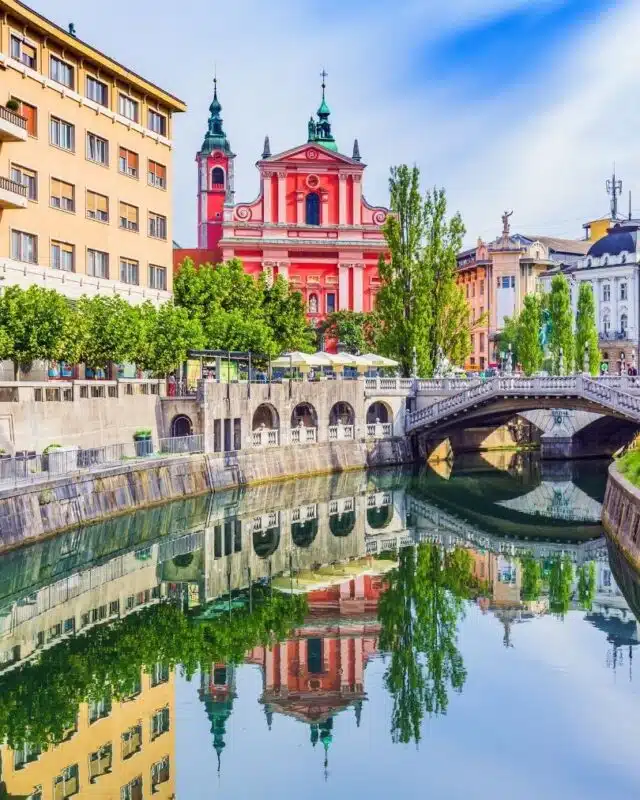
Stop 4: Ljubljana, Slovenia
Ljubljana is a city that very much surprised me. I didn’t know what to expect. It is home to charming streets, enthusiastic locals and plenty of food options.
Affectionately known as the “city of dragons,” Ljubljana is a place where rich history and tradition meet youthful energy and modern living.
The city’s iconic Dragon Bridge serves as a constant reminder of its medieval history, while the bustling open-air market and numerous art galleries give it a contemporary feel.
I know this is a destination that will steal your heart, from the cobblestone streets of the Old Town to the city’s numerous parks and green spaces. It’s a must-stop on any Europe trip.
Things to do in Ljubljana
- Explore Ljubljana Castle, an ancient fortress with a museum and observation tower offering panoramic views of the city.
- Stroll through Tivoli Park, the largest park in Ljubljana, known for its grand trees, flower beds, and beautiful sculptures.
- Visit the Dragon Bridge, an iconic symbol of Ljubljana, adorned with four dragon statues at its corners.
- Discover the Central Market, an open-air market where you can sample local Slovenian produce and traditional dishes.
- Hop on a boat tour along the Ljubljanica River for a different perspective of the city’s beautiful architecture.
Where to stay in Ljubljana
I really enjoyed my stay in Hostel Vrba , I met some of the most amazing people there, some of which I continued to travel with once I had reached bled. The hostel has a well-equipped kitchen, clean bathrooms and nicely sized dorms. The beds are comfortable and there are lockers inside the rooms with a provided lock which is always nice.
Alex the host is super friendly, she even waited for me as my train was majorly delayed and I arrived 1 hour after the last check in time. The hostel itself is located a little outside the main city, but Ljubanna is quite small and walkable so it didn’t make much of a difference.
There is shops and a bakery nearby for some cheap eats. Overall, I would highly recommend a stay in Hostel Vrba when visiting Ljubanna.
Budapest is by far one of Europe’s most picturesque cities. Walking around makes you feel as if you stepped straight out of a fairytale book.
Buda, the old city, is filled with historical sites like the Buda Castle and Fisherman’s Bastion, offering breathtaking views of the city.
- Explore Buda Castle: This historic castle and palace complex of the Hungarian kings offers panoramic views of Budapest.
- Visit the Fisherman’s Bastion: An architectural masterpiece that provides one of the best views of the city.
- Relax in Széchenyi Thermal Bath: Experience the city’s bath culture in this largest public thermal bath of Budapest.
- Stroll along the Danube Promenade: This scenic walkway stretches between the Elizabeth Bridge and the Chain Bridge in Pest, offering stunning views of Buda across the river.
- Visit the Hungarian Parliament Building: Marvel at the architectural beauty of this Gothic Revival-style building, which is one of the largest parliament buildings in the world.
Wombats is a fantastic hostel in Budapest. It is easy to make friends, it is centrally located and in the heart of all the nightlife. It has a shared kitchen, bar and large social area on site. And the hostel is clean, well looked after and the beds are comfortable too. If I plan a trip to Budapest again I wouldn’t hesitate a stay in Wombats. Book your trip here.
DISCLAIMER: I also stayed in Flow Spaces while in Budapest on a separate occasion and honestly I had a really bad experience. I do not recommend staying here. You can read about my experience in my Best Hostels in Europe blog post.

Stop 6: Krakow Poland
Krakow, Poland, is an extremely underrated city in Europe, it blends historical significance with youthful energy.
As one of the oldest cities in Poland, Krakow is rich in history and cultural traditions. The city’s old town, a UNESCO World Heritage site, has an elegant look to it, almost just how you would imagine a fairytale to look.
But, Krakow is steeped in a tragic past, with Auschwitz-Birkenau located just a short distance away, it is a reminder of the horrors of the Holocaust.
Despite its historical significance, Krakow is growing as a youthful city, with nearly a quarter of its population comprising students.
Things to do in Krakow
- Walk to the Wawel Castle for stunning views of the city and river.
- Krakow’s Main Market Square is the largest medieval town square in Europe, filled with historic landmarks and bustling cafes.
- Kazimierz District: Explore the vibrant Kazimierz District, once a Jewish quarter, now a hub of contemporary culture filled with galleries and music venues.
- Take a day trip to Auschwitz-Birkenau to witness a moving testament to the Holocaust.
- Admire 360 views of the city from St. Mary’s Basilica .
- Take a day tour to the famous Wieliczka Salt Mine one of the oldest mines still in operation.
Where to stay in Krakow
- Greg&Tom Party Hostel : This is a perfect spot for backpackers looking for an affordable place to stay. The hostel offers dormitory-style rooms and is located near the Main Market Square.
- Queen Boutique Hotel: Located near the Kazimierz District, this hotel offers comfortable rooms and a restaurant serving Polish and international cuisine.

2 Weeks Europe Trip Itinerary: Tips & Advice
Plan your transport.
This may seem like an obvious one but know how you are going to get from A to B in advance. When I started my trip I was very lacked about pre-booking transport/accommodation. I wanted freedom but I quickly got caught out and was left with a booked out mode of transport.
Pre-Plan Your Route
Hopefully, this guide has given you a better idea of where you want to visit while in Europe. If there are places not mentioned here on your bucket list then I recommend double checking if it is a feasible route.
Take advantage of FREE walking Tours
Most cities and large towns have a free walking tour. These are great ways of getting a feel for a city when you first arrive. At the end of the tour you will typically tip the guide €5/10 euro as a way of saying thank you. This is a much more affordable way of seeing a destination.
Look for discounts
I was surprised to see how many attractions offered discounts, some being age-related, time-related or status-related. For example, it was common to see discounts for teachers, students or rail pass holders.
Travel in the off-season
Visiting Europe in the shoulder months is far better than in summer. The temperatures are much more enjoyable, the crowds are far less and things tend to be cheaper. May-June or September-October is a great time for a European adventure.
Be budget-conscious
Don’t presume you will naturally stay within your budget. Spending can get out of hand pretty quickly when you are not paying attention. I used my Revolut card to stay on top of what I was spending while in Europe. And it was a lifesaver.
Travel Light
You are going to be moving from place to place. So, only pack what you need to avoid sore arms and legs.
Use Local SIM cards
All EU countries allow free roaming throughout Europe (most countries). So, don’t fall for the ‘tourist SIM prices’. You should be able to pick up a sim-only plan in a local network store for about €30 with decent services.
Avoid Tourist Traps
Do some research ahead of visiting some major attractions. Some are simply not worth the time and price.
Be prepared for unexpected expenses
No matter how carefully you plan your trip, there will always be unexpected expenses that can pop up. Be prepared for these by setting aside some extra money in your budget for contingencies, and be flexible enough to adjust your plans if necessary.
Watch out for ATM Fees
Not all ATM’s charge the same withdrawal fees. I have seen some charge as much as €7 to take money out. I recommend only using machines attached to banks. They are normally the cheapest.
Research local events and festivals
You never know what is going on locally while visiting a town or city. You may be pleasantly surprised to find a free concert or event in a local park.
Prepare for tiredness
Tiredness hits you like a wave when travelling Europe. You have no clue when it will happen but I promise it will arrive at least once while on your trip.

2 Week Trip to Europe Itinerary: FAQ
Is europe safe to visit.
Yes, Europe is generally safe to visit. Like any travel destination, it’s important to stay aware of your surroundings and take basic security precautions. You should keep your belongings secure, be mindful of pickpockets in crowded places, and avoid walking alone at night in unfamiliar areas. Be sure to check out travel advisories for specific countries before you go. Travel insurance is also a good idea. This helps you take care of any unexpected issues like illness, injury, or theft. Happy travelling!
How expensive is Europe?
This really depends on where you intend to visit. If you spend most of your time in Eastern Europe you will spend considerably less money than you would in Northern Europe. The same goes for spending time in small villages/towns versus major cities and hubs.
My advice is to set a realistic budget and stick too it. One day you may spend a large chunk of money and then spend the next relaxing by the beach.
How much does 2 weeks in Europe cost?
This all comes down to your personal spending habits. And determined how much it costs to travel Europe for each individual person can be difficult. Below is a ballpark for 3 different types of travellers.
For those looking to explore Europe on a budget expect to pay anywhere from €710-€1270 for two weeks.
For travellers on more of a mid range budget you should budget for €2530-3530 for the two weeks.
And luxury travellers the range is quite big, expect to pay anywhere from €5400 to €16000 for two weeks of travel.
Is two weeks enough time to spend in Europe?
Two weeks can be enough to enjoy a taste of Europe, but you won’t be able to explore everything. The best approach is to focus on a few key destinations that you’re most interested in.
Plan your itinerary in a way that allows you to spend a few days in each place so you can soak up the local culture, visit main attractions, and also have some downtime.
Remember, the goal of travel is not just to see as many places as possible, but to enjoy and experience each place you visit.
How many European Countries can I visit in 2 weeks?
I would suggest visiting 4 or less countries over a 2 week period. Remember that you actually want to experience each place. The idea is not to see somewhere and then leave again a few hours later.
Is €10,000 enough for 2 weeks in Europe?
Yes, €10,000 is more than enough money for two weeks in Europe. Is it possible to spend €10,000 in this time frame. Yes, of course. But that all comes down to how well you budget. I would predict that the average person would spend between €2000-4000 on a two-week trip in Europe.
When is the Best time to spend two weeks in Europe?
The best time to spend two weeks in Europe largely depends on your personal preferences and the countries you plan to visit.
However, many agree that spring (May to June) and fall (September to October) are generally the best times.
During these periods, you can enjoy mild weather and fewer crowds. In spring, you’ll witness Europe in bloom, while autumn offers a palette of fall colours.
Summer (July and August) tends to be quite crowded, especially in popular tourist destinations, but it’s also when most festivals and events take place.
Winter (November to March) is less crowded, except during the Christmas market season, and offers the opportunity for winter sports in countries like Switzerland, France, and Austria. Remember, each season has its unique charm in Europe!
What’s the best way of getting around Europe?
Trains are a fantastic way to travel around Europe. They are fast, efficient, and often scenic, offering a comfortable journey and easy access to city centres.
Europe’s extensive rail network connects all major cities, making it convenient for inter-country travel. Plus, with a variety of rail passes available, it can also be an economical choice for those planning to visit multiple destinations.
Remember that train schedules and ticket prices can vary, so it’s a good idea to plan your journey and book tickets in advance if you don’t with a pass.
What currency do they use in Europe?
The currency used in Europe varies. The Euro is the most common currency, used by 19 of the 27 European Union member countries. These include popular destinations like France, Germany, Italy, Spain, and Greece.
However, some countries, including the UK and Switzerland, have retained their own currencies – the British Pound and the Swiss Franc, respectively.
Eastern European countries, such as Hungary and Czech Republic, also have their own currencies – the Hungarian Forint and the Czech Koruna.
It’s always a good idea to check the currency of the country you’re visiting before you go, and remember, credit cards are widely accepted across Europe.
Do most people speak English in Europe?
Yes, English is widely spoken across Europe, especially in major cities and tourist areas. However, the level of English proficiency can vary.
In countries like the Netherlands, Sweden, and Denmark, a large majority of people speak English very well.
In others, such as France, Italy, and Spain, you may encounter more people who do not speak English, especially in rural areas.
It’s always polite for you to learn a few basic phrases in the local language of the country you’re visiting.
Do I need a visa to travel Europe?
Whether you need a visa to travel in Europe depends on your nationality and the countries you plan to visit. For example, citizens of the United States, Canada, Australia, and New Zealand can visit the Schengen Area (which includes most European countries) without a visa for up to 90 days within a 180-day period.
But, if you’re from a country outside of this list, you may need to apply for a Schengen visa. Always check with the embassy or consulate of the country you’re visiting to get the most accurate and up-to-date information.
Planning a trip to Europe? Here’s some post to help with your planning!
- Fairytale Places in Europe
- 2 Week Europe Itinerary
- 3 Week Europe Itinerary
- How much my 4 Month Europe Trip Cost
- Best Hostels in Europe (My Personal Reviews)
- How big Texas is compared to Europe (I’m Shocked)
Similar Posts

Ireland & UK Map Pin Board – Trip Map World Review
Like most people my travel plans for the year 2020 took a drastic turn. I went from dreaming of exploring the white sand beaches of Bali to exploring the emerald green fields of my home country, Ireland. But…Hey…I’m not really complaining. I’m having an unbeilable time exploring every single nut and cranny of the Emerald…

LOOKING FOR THE BEST FOOD TOURS IN MUNICH? – I’ve Got You Covered
LOOKING FOR THE BEST FOOD TOURS IN MUNICH? Well, then you have come to the right place. Munich is an incredible city, full of wonderful things to do. One of my personal favourites is trying all the delicious Bavarian Cuisine. Now, you can, of course, sample all the tasty bites Munich has to offer alone…
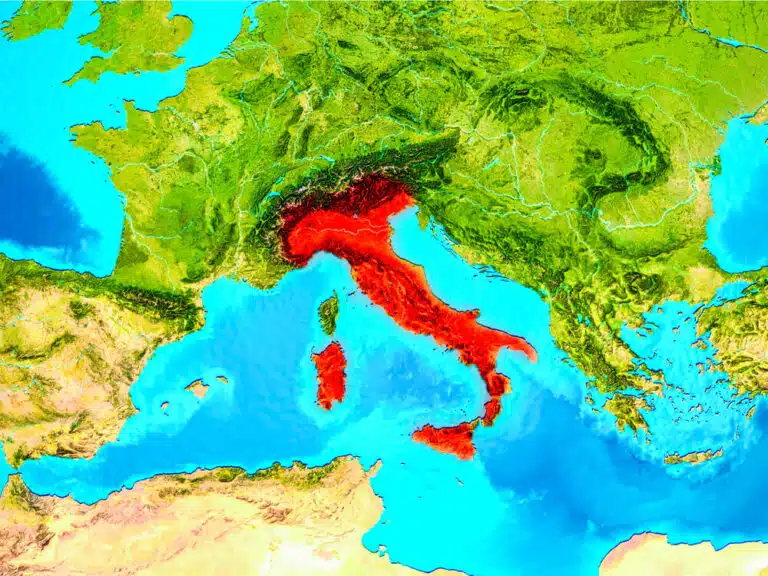
Is Italy in Europe? The EU? OR The Schengen Area?
The more we dive into the world of travel. The more curious we become about places with different cultures, landmarks and cuisines to that of our own. Perhaps, our interest sparked from a TV show or an online video. Either way, knowing where each destination you plan to visit is located is an extremely important…
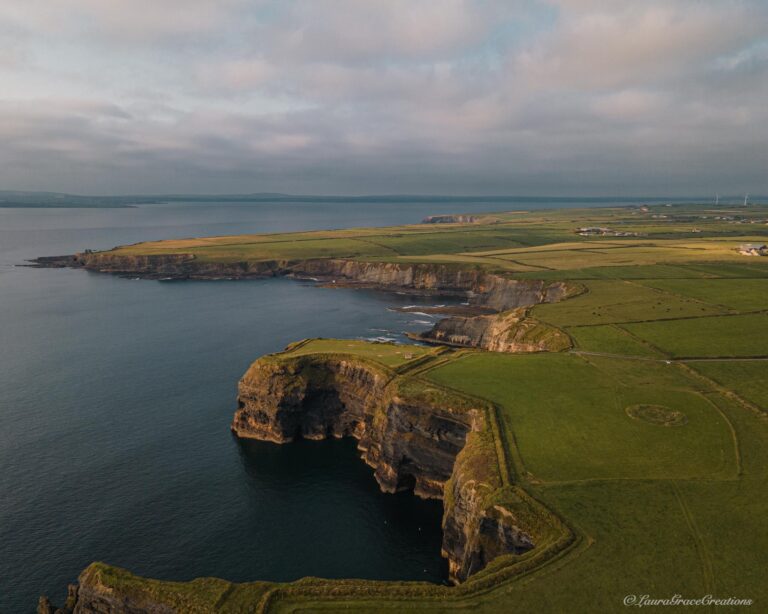
29+ of the Best Cliffs in Ireland: That are NOT the Cliffs of Moher
Most of those planning a trip to Ireland will have the mighty Cliffs of Moher high up on their bucket list. And, all for a good reason. The famous cliffs are visited by over 5 million people each year and they are the backdrop for many iconic movies such as Harry Potter and Leap Year….
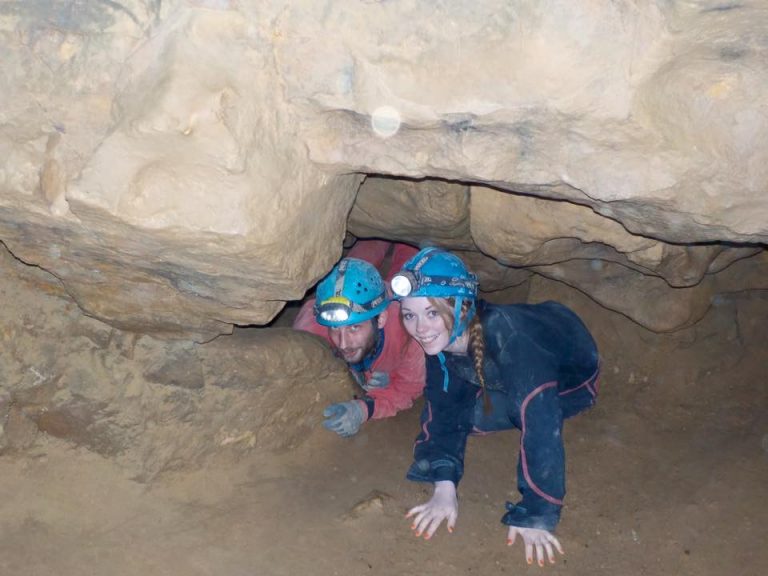
Budapest Caving Tours You NEED to Try in 2024!
Did you know that beneath Budapest lies a whole other world? A labyrinth-style cave system, carved into the limestone rock underneath the city. The perfect experience for thrill seekers visiting the Hungarian capital. These Budapest Caving Tours offer a unique and adventurous way to experience the hidden depths of this beautiful European city. And, don’t…
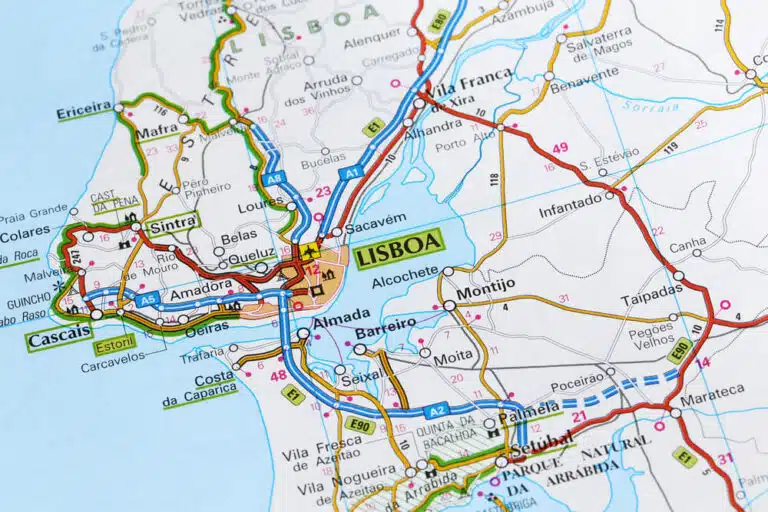
Where is Lisbon? (A 2024 location travel guide)
Lisbon is without a doubt one of the best places in Europe to visit. This city, which is the capital of Portugal, has become a popular tourist spot because of its beautiful architecture, delicious food, and lively culture. Yet, you may be wondering before you plan your trip… Where is Lisbon? We see this fantastic city on…
Leave a Reply Cancel reply
Your email address will not be published. Required fields are marked *
Save my name, email, and website in this browser for the next time I comment.

Wondering How Much a Trip to Europe Costs? Find Out What to Expect in 2024
W hen I first starting taking my family to Europe, I got a lot of side eye from other parents. You could almost see the thought bubble that says, “you must be rich.” There were also a lot of off-hand comments about how they couldn’t afford to go to Europe (from families that frequently dropped a few thousand dollars on trips to Disney.) TL;DR, we aren’t rich, but we do prioritize spending money on travel. The fact is, there are some misconceptions around how much a trip to Europe costs.
There were actually times when we decided to go to Europe because the flight was cheaper than getting to Florida! Of course, when, where, and how you travel can greatly impact your European trip budget. But after visiting 14 European countries, many multiple times, I’ve learned a lot about how much a trip to Europe costs.
Now I won’t lie, it can get REALLY expensive, especially if you are traveling with a family and need two or more rooms (this is why we have used Airbnb ), prefer private tours (worth it with kids!), or if you can only travel during the expensive summer months.
But, I have some tips to help you lower those costs and choose more affordable destinations. I’ll also walk you through average costs for a European vacation , including airfare, accommodations, activities, food, and transportation .
First, if you are interested in a specific country, I have very detailed cost breakdowns for:
- Iceland trip cost
- Ireland trip cost
- Scotland trip cost
- London trip cost
- Amsterdam trip cost
- Paris trip cost
- Portugal trip cost
- Italy trip cost
- Greece trip cost
Ways to Save on Your European Trip Cost
f you are looking for ways to save some money on your trip to Europe cost, here are some ideas;
Visit Less Expensive Countries
If you want to go to Iceland or Scandinavia, you are going to need a healthy budget. Even places that used to be considered budget-friendly, such as Portugal, have gotten pricier in the last few years as tourism has increased (although it is still cheaper than other Western European countries.).
However, if you go the bit off-the-beaten path, you can find great deals, it may just be a bit trickier to find direct flights. Look at destinations like Scotland , Wales , and Eastern European countries like Hungary or Slovenia.
Avoid Big Cities
Everyone wants to visit Paris , London , and Rome , but the less time you spend in these large European capitals, the better it is for your budget. Sevilla is going to be cheaper than Barcelona, and so on.
You can also stay in less-popular countryside destinations, like Piedmont or Umbria instead of Tuscany in Italy or Languedoc instead of Provence in France. We have stayed in gorgeous chateaus in the Languedoc region of France for half the cost of our hotel in Paris.
Stay in Rentals
If you are visiting Europe with kids , one way to save money is to find an apartment or villa rental through Airbnb, vrbo, or other vacation rental alternatives . Since it is hard to find family rooms in Europe that sleep four or more, often the cost of a two or three-bedroom apartment is cheaper than renting two hotel rooms or an expensive hotel suite.
Even couples will benefit from staying in agriturismos, which are farms that offer accommodations on-site in Italy, or something similar.
Travel Outside of Peak Season
I know it is hard to travel during shoulder season or low season if you have kids, but remember that Europe has different holidays and school schedules. You can find great deals around our U.S. Thanksgiving. And, if your kids get out of school early, you can still find better deals and availability in June than July or August, when European schools have summer break.
If you have more flexibility, traveling in late October through May (outside of holiday weeks) will save you some money. Just do some research about half-term or school break weeks.
Use Points and Miles or Low-Cost Carriers
There are a lot of ways to hack your way to free flights to Europe using sign up bonuses and flexible points transfers if you can easily meet the minimum spend amounts with your current spending. However, even if that isn’t an option, you can often find great deals on flights to Europe.
We have flown to London and Vienna for under $500 each. I highly recommend signing up for a flight deal subscription service such as Going . With the premium level you can set up your preferred airports and dream destinations and receive alerts on airfare sales and even points deals.
There are also a number of low cost carriers that offer flights from the United States including Norse Atlantic Airways, Condor, and French Bee. You can also use Play Airlines, which connects through Iceland.
Fly to a Hub and Then Use a Low Cost Carrier
If you find a great flight deal to a major European city, you can then use a low-cost carrier such as Ryan Air, EasyJet, Vueling, or others to connect to your final destination. These flights are typically under $100 per person, but make sure you are aware of the luggage restrictions on weight and size, which are different from U.S. carriers.
Trains are also another option, but don’t assume they will be cheap, especially if you book first class with assigned seats and luggage storage. Be sure to research your options before you book.
How Much Does a Trip to Europe Cost
Note: This post contains affiliate links. If you click a link and make a purchase, I may receive a small commission at no cost to you.
Now let’s look at some average costs for a trip to Europe. I’ve based these on two people traveling to Europe from the United States for a one week (7 night) trip.
Airfare to Europe Cost
Airfare from the United States to Europe can range from $500 per person (if you find a great deal) to over $2,000 (if you book late and travel during high season on a standard carrier.) As I mentioned above, you can save money by looking for flight deals, traveling off-season, or using low-cost carriers or connecting flights.
However, you can assume an average cost of $1,000 per person.
Total Airfare Cost = $2,000 ($1,000 x 2 people)
European Accommodations Cost
Accommodation costs can vary greatly depending on if you are staying in a big city or elsewhere, or if you are in a luxury hotel or a rustic rental. You will usually want to split your trip between a city and somewhere in the countryside. If you only have a week, I’d suggest three nights in the city and four nights elsewhere. Think Rome or Florence + Tuscany, Milan + Piedmont, Paris + Burgundy, Edinburgh + Highlands, London + Wales, etc.
In the city, expect to spend $250-500 per night and $150-350 per night in another location. Remember, you can refer to each of my detailed cost breakdowns for specific hotel and itinerary recommendations for those various destinations.
Total Accommodations Cost = $2,050 ($350 x 3 nights + $250 x 4 nights)
European Transportation Cost
Even if you plan to stay in one city for your entire trip to Europe, you will still need to spend some money on transportation. For example, when we went to Amsterdam for three days, we walked all over the city but we still took a transfer to and from the airport. So whether it is Uber, taxis, public transportation, or private transfers, you will need to budget for transportation expenses.
More likely, you will need to also either rent a car or take a train between destinations. If you are renting a car, be sure to book it early as the prices go up the closer you get to your arrival. Automatic transmission cars are also more expensive than manual transmission. Try to pack in carry on suitcases if possible so that you can rent a small to mid-size car. Driving in some countries (especially Ireland, the UK, and parts of Italy) can be challenging on small roads so you will appreciate it for more than the price point! Also keep in mind that gas is more expensive in Europe than the United States.
Total transportation cost = $800 (estimated)
European Activities Cost
Your activity costs vary greatly depending on where you go in Europe. For example, if you are visiting Scotland or Wales and you just want to spend a lot of time in the outdoors and maybe visit a few castles, your expenses will be minimal. But if you are going to Paris or Rome and you want to explore historic sites and museums and get the most of the experience, you will want to take a tour.
When in Greece, you can spend your days by the pool or the beach, but you will probably want to at least take a sunset sail and maybe a food or wine tour. I know it can get expensive, but don’t skimp on your activities. This is what you will remember most about your trip. More than your hotel. More than your airplane ride. It is also what matters the most when visiting a foreign country. After all, you want to experience the local culture. You want to learn more about the destination’s history. And you will want to see what makes a place unique.
Total Activities Cost = $1000
European Food Costs
It used to be that food in Europe was more expensive than in the United States but in the last couple of years, I have not found that to be the case. You can still spend a bundle on food if you elect for hotel breakfasts or fancy chef’s tasting menus. But in general, you can find affordable meals especially in destinations like Scotland, Wales, Portugal, and Italy.
You can also save money by preparing some of your own meals if you rent an apartment or stay in an aparthotel with a kitchenette. Remember, you don’t need to tip as much in Europe (or sometimes at all) and the alcohol is usually a lot cheaper because it isn’t marked up as much. These factors can make a big difference in your bottom line.
As a rule of thumb, plan to spend:
- $10 per person for breakfast (stop at a bakery for pastry and coffee or juice)
- $15-20 per person for lunch (think pizza, sandwiches, or street food)
- $25-50 per person for dinner (maybe plan for one splurge dinner too of up to $100 pp)
Total Food Cost = $1150
You may also want to budget some money for souvenirs and travel insurance.
Total Trip to Europe Cost
A seven-night trip to Europe for two people will cost an average of $7,900, or $564 per person, per day.
Save this to Pinterest
The post Wondering How Much a Trip to Europe Costs? Find Out What to Expect in 2024 appeared first on We3Travel .
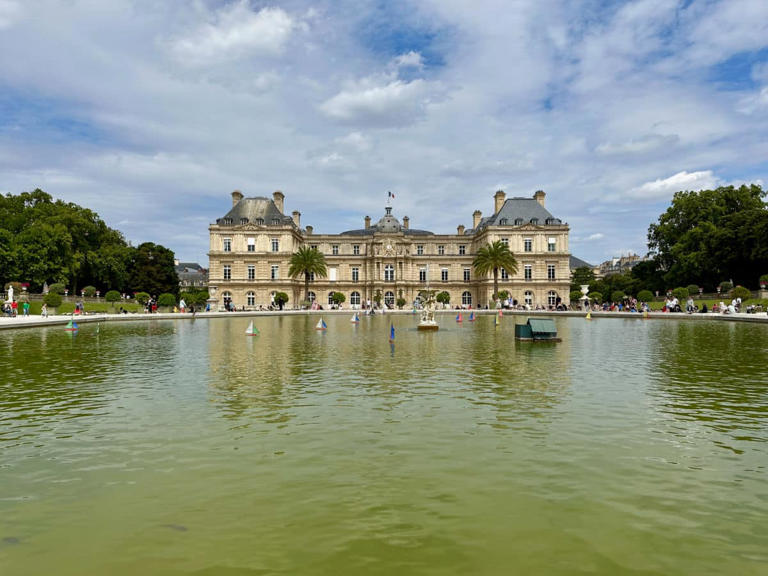
We've detected unusual activity from your computer network
To continue, please click the box below to let us know you're not a robot.
Why did this happen?
Please make sure your browser supports JavaScript and cookies and that you are not blocking them from loading. For more information you can review our Terms of Service and Cookie Policy .
For inquiries related to this message please contact our support team and provide the reference ID below.
- Today's news
- Reviews and deals
- Climate change
- 2024 election
- Fall allergies
- Health news
- Mental health
- Sexual health
- Family health
- So mini ways
- Unapologetically
- Buying guides
Entertainment
- How to Watch
- My Portfolio
- Latest News
- Stock Market
- Premium News
- Biden Economy
- EV Deep Dive
- Stocks: Most Actives
- Stocks: Gainers
- Stocks: Losers
- Trending Tickers
- World Indices
- US Treasury Bonds
- Top Mutual Funds
- Highest Open Interest
- Highest Implied Volatility
- Stock Comparison
- Advanced Charts
- Currency Converter
- Basic Materials
- Communication Services
- Consumer Cyclical
- Consumer Defensive
- Financial Services
- Industrials
- Real Estate
- Mutual Funds
- Credit cards
- Balance Transfer Cards
- Cash-back Cards
- Rewards Cards
- Travel Cards
- Personal Loans
- Student Loans
- Car Insurance
- Morning Brief
- Market Domination
- Market Domination Overtime
- Opening Bid
- Stocks in Translation
- Lead This Way
- Good Buy or Goodbye?
- Fantasy football
- Pro Pick 'Em
- College Pick 'Em
- Fantasy baseball
- Fantasy hockey
- Fantasy basketball
- Download the app
- Daily fantasy
- Scores and schedules
- GameChannel
- World Baseball Classic
- Premier League
- CONCACAF League
- Champions League
- Motorsports
- Horse racing
- Newsletters
New on Yahoo
- Privacy Dashboard
Yahoo Finance
15 cheapest european countries to visit in 2024.
This article looks at the 15 cheapest European countries to visit in 2024. If you wish to skip our detailed analysis of Tourism in Europe and ways to budget your vacation, you may skip ahead to 5 Cheapest European Countries to Visit in 2024 .
Tourism in Europe
Europe is by far the most popular tourist destination among all continents. According to UNWTO , in 2023, 54% of the world's international tourist arrivals were in Europe, with the southern/Mediterranean region being the most visited destination. Europe is extremely appealing for tourists due to its friendly visa policies, a diverse range of destinations, and the fact that it is considered safer than other global destinations.
Like most of the world, tourism in Europe has still not managed to recover to pre-pandemic volumes. In 2023, Europe had 700 million tourist arrivals across the continent, which was 94% of the arrivals witnessed in 2019. This is despite the fact that many southern European and Mediterranean destinations have surpassed pre-COVID levels of tourism. The European Travel Commission reports that countries such as Serbia, Portugal, and Montenegro all hosted 10% more tourists in 2023 than they had in 2019. In comparison, 65% of destinations in Europe are still falling short of pre-pandemic volumes. The most sluggish recovery has been witnessed in the Baltic States of Estonia, Latvia, and Lithuania, each of which has failed to attain even 75% of pre-COVID tourist arrivals. This stark disparity in the recovery of tourism across the continent poses a challenge. Despite the enormous volume of tourists that fly over to Europe each year, many of its most exquisite locations continue to be dejected in favor of hotspots such as the beaches of Ibiza, the bustling streets of Paris, or the canals of Venice. Owing to such a rapid inflow of tourists into only a handful of destinations, the sustainability of tourism in Europe falls under threat. Recently, more and more vacationers are becoming critical of tourist hotspots, criticizing them for being “tourist traps” and are instead looking to venture towards less crowded destinations. Another factor that unsettles tourists is the rate of inflation witnessed in post-pandemic tourism. According to Allianz Research , the daily rate for a hotel room (global median) jumped to $212 in the first quarter of 2023, up from $156 in Q1 2022 and $129 in Q1 2021. Moreover, a recent survey by Travel Weekly showed that 87% of European travelers are taking measures to reduce costs in their vacations. This includes opting for cheaper accommodations, reducing the budget used on excursions, and switching towards more affordable destinations.
As more and more tourists become irked by the overcrowded and inflated vacation experiences in particular hotspots, it is possible that tourists in 2024 will set their sights on destinations offering budget-friendly vacations with similar itineraries. With websites such as Airbnb, Inc. (NASDAQ: ABNB ), Booking Holdings Inc. (NASDAQ: BKNG ), and Sun Life Financial, Inc. (NYSE: SLF ), tourists have the opportunity to map out their entire vacations at the most affordable prices, exploring new and exciting destinations in the process.
Budgeting your trip
Some would argue that the true beauty of Europe lies in destinations that have been spared from the tirade of excessive tourist inflows. In the past, there were either no avenues for the common tourist to arrange a vacation to such areas, or they would be considered as being unreliable, unsafe, and unfit for tourists. However, over the last decade, this perception has shifted as people have access to more and more avenues to plan trips to some of the most remote recesses of the world.
Websites like Booking, property of Booking Holdings Inc. (NASDAQ: BKNG), and Budget Your Trip provide data for locations, resorts, and excursions. This enables previously unknown tourist spots all over Europe to market themselves without investing the same level of resources as world-renowned hoteling brands. Tourists can use Booking Holdings Inc. (NASDAQ: BKNG) and similar services to break down each leg of their trips into exact monetary terms, without being beguiled by the fame of prominent destinations.
Similarly, Airbnb, Inc. (NASDAQ: ABNB) is the world's largest platform for alternative accommodation. Alternative accommodation is a relatively new manner of lodging that involves living in rented apartments, hostels, or even a spare guestroom. In comparison to hotels, such accommodation is cheaper and can be found in rural travel destinations as well. In providing this service, Airbnb, Inc. (NASDAQ: ABNB) has diverted a large number of tourists away from saturated hot-spots towards less crowded communities.
If you’re looking to visit a cheap European country in 2024, you may also consider obtaining travel insurance such as the packages offered by Sun Life Financial, Inc. (NYSE: SLF). These cover medical treatment and hospitalization bills in the unfortunate circumstance that you or a family member fall ill. Obtaining insurance from companies such as Sun Life Financial, Inc. (NYSE: SLF) allows you to venture into the wild and vivaciously enjoy your vacation.
Methodology
To develop our list of 15 cheapest European countries to visit in 2024, we traversed through similarly recommended lists on the web to develop a shortlist of budget-friendly countries. For these countries, we used Google Flights to obtain data on the cheapest available flight from the US (using JFK as the reference point for departures). Moreover, we used Budgetyourtrip to obtain the average amount required to spend a week-long couple’s vacation in each country. Accumulating these data points allowed us to calculate the total expected amount required on a trip to each country. Each country was ranked in ascending order with respect to this metric, and the top 15 countries were selected as the cheapest European countries to visit in 2024.
By the way, Insider Monkey is an investing website that tracks the movements of corporate insiders and hedge funds. By using a similar consensus approach, we identify the best stock picks of more than 900 hedge funds investing in US stocks. The top 10 consensus stock picks of hedge funds outperformed the S&P 500 Index by more than 140 percentage points over the last 10 years ( see the details here ). Whether you are a beginner investor or a professional one looking for the best stocks to buy, you can benefit from the wisdom of hedge funds and corporate insiders.
Here are 15 Cheapest European Countries to Visit in 2024.
Cheapest Return Ticket: $1011
Average expense during stay: $1722
Total cost: $2733
Latvia has a number of beautiful beaches along the Baltic sea, while the capital city of Riga features prominent Art Nouveau architecture. There are many historical castles present in towns across the country. Thus, there is plenty to enjoy in a week-long trip, all for the low price of $2,733.
14. Estonia
Cheapest Return Ticket: $941
Average expense during stay: $1544
Total cost: $2485
Another Baltic state, Estonia is one of the cheapest European countries to visit . It offers a blend of scenic landscapes, diverse wildlife, and Soviet era landmarks. The Lennusadam Museum in the capital city of Tallinn is an excellent starting point if you wish to be accustomed to the rich Estonian culture.
13. North Macedonia
Cheapest Return Ticket: $1083
Average expense during stay: $1388
Total cost: $2471
If you’re looking for a location that offers picturesque scenery whilst not requiring you to take on a second mortgage on your house, forget the shores of Madeira and journey east to the country of North Macedonia. You’ll get the chance to explore one of Europe’s deepest lakes and some of its most stunning peaks, along with the historically rich city of Ohrid.
12. Croatia
Cheapest Return Ticket: $868
Average expense during stay: $1436
Total cost: $2304
Croatia makes for a very cheap vacation that also offers the chance to explore roman heritage, mesmerizing coasts, and modern attractions. Zagreb is becoming an increasingly popular tourist spot; however, it is still a very affordable destination where you can enjoy museums, festivals, and vibrant street life. The city of Split offers a chance to visit the iconic Diocletian Palace and venture off to one of the country’s various islands within the Adriatic Sea.
11. Czech Republic
Cheapest Return Ticket: $741
Average expense during stay: $1548
Total cost: $2289
Whilst the capital city of Prague is famous for its State Opera theater and other orchestras, the rest of the country sees far and few tourists. Czech Republic is an amazing destination for adventure travel, with places like the Bohemian Switzerland National Park and the caverns of Moravian Karst. Moreover, if you steer clear of certain excursions in the capital, there are plenty of ways to immerse yourself in the local culture at an affordable cost.
10. Lithuania
Cheapest Return Ticket: $872
Average expense during stay: $1393
Total cost: $2265
Lithuania is the cheapest European country to visit in the Baltics. In just $2,265, you and your partner can entertain yourself to a comprehensive getaway. Your itinerary can include museums, Baroque monuments, serene national parks, and pristine beaches.
Cheapest Return Ticket: $1765
Average expense during stay: $461
Total cost: $2226
If you have managed to rack up some airline miles, Georgia is one of the cheapest European countries to visit in 2024 . With an average expense on transport, accommodation, and food of just $461 a week for 2 people, the foothills of the Caucasus mountains are the perfect place to enjoy a budget friendly European vacation.
Cheapest Return Ticket: $1018
Average expense during stay: $1170
Total cost: $2188
Budapest is regarded as being one of the most beautiful capital cities in the world. Sprawling on either side of the Danube River, it features a sea of Gothic, Romanesque, and Art Nouveau architecture. One of the country’s unique features is that it contains over 1,300 thermal springs, many of which are now used to operate year-round spas and baths all over the nation.
Cheapest Return Ticket: $1727
Average expense during stay: $398
Total cost: $2125
Until mid-2023, the US Travel Advisory had classified a visit to Armenia under the Level 4 category. However, barring a few locations bordering Azerbaijan, the country has been deescalated to Level 2. Since tourists are still acclimatizing to this change, Armenia happens to be one of the cheapest European countries to visit in 2024.
6. Bosnia & Herzegovina
Cheapest Return Ticket: $1079
Average expense during stay: $1040
Total cost: $2119
If you’re looking for a destination with historical significance, Bosnia & Herzegovina happens to be the most underrated destinations in the world. Featuring monuments and shrines from the second world war, the cold war, and the Bosnian war, it is one of the most insightful vacation spots in the world. In terms of scenery, a day trip to the Kravice Falls is a common part of any traveler’s itinerary.
Click to continue reading and see the 5 Cheapest European Countries to Visit in 2024 .
Suggested Articles:
20 Most Underrated Travel Destinations in Asia
15 Best Places To Retire In Arkansas
15 Worst Places in Texas for a Couple to Live on Only a Social Security
Disclosure: none. 15 Cheapest European Countries to Visit in 2024 is originally published on Insider Monkey.

IMAGES
VIDEO
COMMENTS
2-Month Budget Europe Itinerary: Backpack Around 10 Countries Under S$5K with the Eurail Pass. By. Michelle Neo - April 4, 2019. Facebook. Twitter. Telegram. ... Read also: 18 Budget Tips to Travel Europe For a Month Under S$2,500. Check Flights to London. If you can't see the widget above, check flights from Singapore to London here instead ...
1.4 Money, costs and communication. 2 Where to Go With 2 Months in Europe. 2.1 Italy. 2.2 Spain and Portugal. 2.3 France and the Benelux countries. 2.4 Switzerland, Austria and Germany. 2.5 Scandinavia. 2.6 The Baltic States. 2.7 Greece and the Balkans.
This itinerary is currently 49-61 days long based on the recommended minimum stays so you've got a bit of leeway to add on a day in a few extra spots, or to add a new stop altogether. London (4 days) Paris (4 days) Barcelona (3 days) Lyon (2 days) Zermatt (2-3 days) St Moritz (1-2 days)
Backpacking Europe Suggested Budgets. Prices for travel in Europe vary greatly depending on how far north, east, south, or west you travel. If you stick to the budget accommodations, food, and tours listed here and use all my tips on saving money, you need about 65-110 EUR per day in Western Europe, 40-50 EUR in Eastern Europe, and about 85-130 EUR in Scandinavia.
2 Months in Eastern Europe 60 Days from Prague to Budapest. If you want a mix of backpacker-friendly destinations with some splurges along the way, consider a two month trip from Prague down to Budapest, with lots of fun stops along the way. Spend a week and a half in Prague, known for its fairytale Old Town.
If you love the idea of living like a local on your trip to Europe, then an apartment rental is a great accommodation option to cut trip expenses. ... While sticking to a budget, a two-month Europe trip will cost between $2,480 and $6,200 USD. The exact amount will depend on where you go, the activities you do, and how luxuriously you travel. ...
It is made up of 44 countries, all connected with a system of trains making it one of the easiest places to travel. Whether you are backpacking through Europe on a budget or no budget at all, you will get to see the same stunning landmarks. We spent two months backpacking through Europe in the Fall of 2021.
0.0.1 What to know about this European itinerary. 0.1 Start your Europe trip with three days in Berlin. 0.2 Three days in Prague. 0.3 Two days in Vienna. 0.4 One day in Bratislava. 0.5 Optional: Three days in Budapest. 0.6 Optional stop: Two days in Villach, Austria to enjoy the Austrian Alps.
This two month in Europe itinerary covers 22 cities across Europe and includes travel, accommodation, costs, highlights and a packing list. ... a wheeled suitcase for two months in Europe and we completely understand why. However, if you are trying to keep this trip as budget-friendly as possible (like we did) you may well find yourself walking ...
Traveling by bus is another cheap option for traveling Europe. FlixBus, MegaBus, and OuiBus are three reliable and affordable bus companies that travel to various destinations. For example, you can take MegaBus from London to Amsterdam or Brussels for only $20 USD, and OuiBus from London to Paris for a similar price.
13 Affordable Places to Visit in Europe — From Country Escapes to Stunning Cities. You can visit Europe on a budget — here's how.
But, a good estimate is about $4,280. One time I spent just $2,300 because I focused on doing it for as cheap as possible. Another time I spent closer to $8,000 (for two people) when visiting just three cities. The cost of a Europe trip depends on you, but it's not hard to stretch your travel budget.
Firebird Tours Address: LLC: 401 E. Las Olas Blvd, Suite 1400 Fort Lauderdale, FL, 33301, US
A few months ago, I did the math on the 30+ real Europe travel budgets linked below (scroll down for links) and the monthly average came in at $1,637. Soca Valley, Slovenia. For those who'd like a more detailed look at my monthly budgets around the world, here they all are categorized by price range (click on the links for in-depth details on ...
The first thing to know about how to travel Europe cheaply is this: the slower you go, the cheaper it is. Spend two days in a place, and that $500 plane ticket is budgeted across just two days ($250 per day). Spend two weeks and the transit cost per day drops drastically (about $36 per day).
Nov 6, 2023. One-Month Europe Trip on a Budget: A Full Itinerary and Cost breakdown. This guide includes my full itinerary and cost breakdown for accommodations and transportation between cities. It also contains things to do and where to stay in London, Paris, Ghent, Bruges, Barcelona, Seville, Granada, Cordoba, and Madrid.
If you choose to stay in only one city, bus or train rides are very cheap, ranging from 1 to 3 euros. You can also buy 24 to 72 hour passes. If you choose intercity travel, average prices are: From Lisbon to Madrid: 16 euros; From Madrid to Rome: 26 euros; From Rome to Paris: 23 euros; From Paris to London: 38 euros.
Utilise budget airlines and rail passes to travel between European cities affordably. Companies like Ryanair, EasyJet, and Eurail offer cost-effective options for exploring multiple destinations. Additionally, consider overnight trains or buses to save on accommodation costs. Europe on a budget/Representational 42spacetime / Shutterstock.
From AU$1,680^ per person. 7 nights in Paris, 7 nights in Barcelona, 7 nights in Rome and 7 nights in Athens (in budget accommodation) Public Transport. AU$450. For a youth, 2nd class ticket that allows travel on 5 days within 1 month, for 5 European countries of more. Total.
1 month (consecutive) - £465 | £620. 2 months (consecutive) - £506 | £676. 3 months (consecutive) - £626 | £833. Please note that the above prices are based on second-class Interrail Global Pass tickets. A youth ticket is for people aged 12-27, and an adult ticket is for people aged 28-60.
Riga, Latvia. DAILY BUDGET: $45 Eating out: $10-$15Accommodation: $15-$30. When it comes to budget travel, it's tough to beat Riga if you want plenty of bang for your buck. Riga is one of the cheapest cities in Europe by a mile. It's a cultural hotspot offering theater, art, opera, and everything in between.
Alpine Escape: Bavaria, Switzerland's Jungfrau Region, Milan, and Lake Como. If your dream Europe trip involves plenty of Alpine views with a side of cities, this is the itinerary for Europe in 2 weeks for you. Bavaria. Start your trip in Bavaria, the land of castles, beer, and outdoor delights.
I also have a detailed guide on how much I spend on my 4-month budget trip across Europe if you have an interest in real-life spending. 2-week trip to Europe Cost: Budget Travellers. Accommodation: Budget travellers can find hostels or budget hotels for around €25 to €60 per night depending on the countries they decide to visit. For a two ...
You may also want to budget some money for souvenirs and travel insurance. Total Trip to Europe Cost. A seven-night trip to Europe for two people will cost an average of $7,900, or $564 per person ...
Europe for Less Our 2024 special report is filled with 27 trip ideas to make your vacation budget go further—without sacrificing luxury. May 3, 2024, 10:00 AM UTC
This article looks at the 15 cheapest European countries to visit in 2024. If you wish to skip our detailed analysis of Tourism in Europe and ways to budget your vacation, you may skip ahead to 5 ...
The cheapest time to travel to any international destination is during shoulder seasons—the study found that on average, a traveler can save $28 per night on hotels and $122 on return flights.